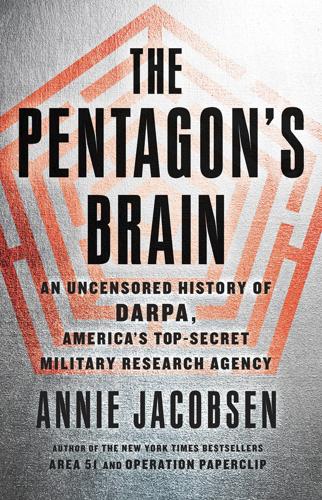
The Pentagon's Brain: An Uncensored History of DARPA, America's Top-Secret Military Research Agency
by
Annie Jacobsen
Published 14 Sep 2015
“Quarterly Report on Viet Cong Motivation and Morale Project, October–December 1966.” RAND Corporation, Santa Monica, CA, January 1967. ______. “Some Findings of the Viet Cong Motivation and Morale Study, January–June 1966: A Briefing to the Joint Chiefs of Staff.” RAND Corporation, Santa Monica, CA, August 1, 1966. ______. Some Preliminary Observations on NVA Behavior During Infiltration. D-16339-PR. RAND Corporation, Santa Monica, CA, November 3, 1967. ______. “Southeast Asia Trip Report. Part 1. The Impact of Air Power in South Vietnam.” RM-4400/1-PR. RAND Corporation, Santa Monica, CA, December 1964. Gouré, Leon, Douglas Scott, and Anthony J.
…
Field Manual no. 3-24.2. Washington, DC, April 2009. Hickey, Gerald C. The Highland People of South Vietnam: Social and Economic Development. RM-5281/1-ARPA. RAND Corporation, Santa Monica, CA, September 1967. ______. The Major Ethnic Groups of the South Vietnamese Highlands. RM-4041-ARPA. RAND Corporation, Santa Monica, CA, April 1964. ______. “The Military Advisor and His Foreign Counterpart: The Case in Vietnam.” RM-4882-ARPA. RAND Corporation, Santa Monica, CA, March 1965. Historical Division Joint Secretariat, Joint Chiefs of Staff. The History of the Joint Chiefs of Staff: The Joint Chiefs of Staff and the War in Vietnam, 1960–1968.
…
Institute for Defense Analyses, Alexandria, VA, May 1996. Zasloff, Joseph J. Origins of the Insurgency in South Vietnam: The Role of the Southern Vietminh Cadres. RM-5163/2-ISA/ARPA. RAND Corporation, Santa Monica, CA, March 1967. ______. Political Motivation of the Viet Cong: The Vietminh Regroupees. RM-4703/2-ISA/ARPA. RAND Corporation, Santa Monica, CA, August 1966. ______. The Role of North Vietnam in the Southern Insurgency. RM-4140-PR. RAND Corporation, Santa Monica, CA, July 1964. Statements to Congress Abizaid, General John P. Commander, U.S. Central Command, “Testimony Before Congress, Senate Armed Services Committee,” September 25, 2003.
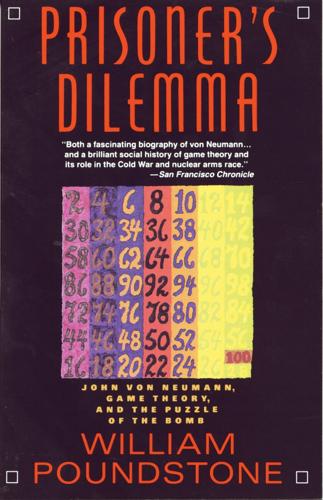
Prisoner's Dilemma: John Von Neumann, Game Theory, and the Puzzle of the Bomb
by
William Poundstone
Published 2 Jan 1993
In the years after the publication of Theory of Games and Economic Behavior, game theory and its terms became popular buzzwords with economists, social scientists, and military strategists. One of the places where game theory found immediate acceptance was the RAND Corporation. RAND, the prototypic “think tank” was founded at the Air Force’s behest shortly after World War II. The RAND Corporation’s original purpose was to perform strategic studies on intercontinental nuclear war. RAND hired many of the scientists leaving wartime defense work, and took on as consultants an even larger orbit of stellar thinkers. RAND thought highly enough of game theory to hire von Neumann as a consultant and to devote a great deal of effort not only to military applications of game theory but also to basic research in the field.
…
Richards) John von Neumann, confined to wheelchair, receives the Medal of Freedom from President Eisenhower. This was von Neumann’s last public appearance. (Photo © UPI/Bettmann Newsphotos) Robert Axelrod. Bertrand Russell. (Photo © UPI/Bettmann Newsphotos) 5 THE RAND CORPORATION The RAND Corporation is housed in a unspectacular low-and mid-rise complex a block from the beach at 1700 Main Street, Santa Monica. Blocky, in colors of pinkish terra-cotta and putty white, RAND’s buildings resemble those that might occupy a California state college campus. Discrete signs identify the complex and warn that it is private property.
…
Herman Kahn, one of RAND’s best-known analysts, interrupted his thinking about the unthinkable to take a midday swim in the Pacific. When John von Neumann visited, he usually stayed in the nearby Georgian Hotel, still in business, now as an oceanfront home for senior citizens. To many, the RAND Corporation epitomizes modern Machiavellianism. Both hawks and doves are apt to perceive it as a secret lair where amoral geniuses conspire darkly. RAND was well known enough to rate as a target for a Pete Seeger satirical folk song in the 1960s (“The RAND Corporation’s the boon of the world/They think all day long for a fee./They sit and play games about going up in flames/For counters they use you and me …”1. Business Week reported, “The military professionals dub these civilian interlopers into the national security arena ‘defense intellectuals,’ ‘RANDsters,’ ‘technocrats,’ and worse.
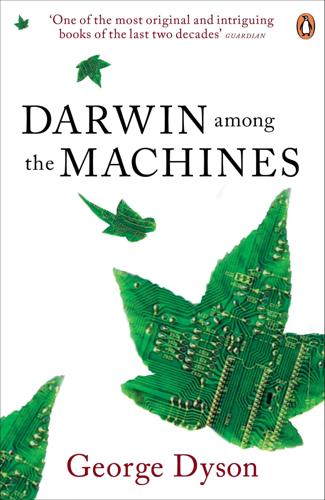
Darwin Among the Machines
by
George Dyson
Published 28 Mar 2012
(Author’s translation.) 35.John von Neumann, lecture given at University of Illinois, December 1949, in Arthur Burks, ed., Theory of Self-Reproducing Automata (Urbana: Universsity of Illinois Press, 1966), 75. 36.John von Neumann, “Defense in Atomic War,” Journal of the American Ordnance Association (1955): 22; reprinted in John von Neumann, Theory of Games, Astrophysics, Hydrodynamics and Meteorology, vol. 6 of Collected Works (Oxford: Pergamon Press, 1963), 524. 37.von Neumann, “Defense in Atomic War” (1955), 23; (1963), 525. 38.RAND Articles of Incorporation, 1948, in The RAND Corporation: The First Fifteen Years (Santa Monica, Calif.: RAND Corporation, 1963). 39.Contract of 2 March 1946 establishing project RAND; in Bruce Smith, The RAND Corporation (Cambridge: Harvard University Press, 1966), 30. 40.A Million Random Digits with 100,000 Normal Deviates (Santa Monica, Calif.: RAND Corporation, 1955; reprint. New York: Free Press, 1966), xii (page citation is to the reprint edition). 41.Louis Ridenour and Francis Clauser, Preliminary Design of an Experimental Earth-Circling Spaceship, U.S.
…
New York: Free Press, 1966), xii (page citation is to the reprint edition). 41.Louis Ridenour and Francis Clauser, Preliminary Design of an Experimental Earth-Circling Spaceship, U.S. Air Force Project RAND Report SM-11827, 2 May 1946, 2, 16. 42.RAND, The RAND Corporation, 23. 43.Paul Baran, interview by Judy O’Neill, 5 March 1990, OH 182, Charles Babbage Institute, University of Minnesota, Minneapolis. 44.J. M. Chester, Cost of a Hardened, Nationwide Buried Cable Network, RAND Corporation Memorandum RM-2627-PR, 1 October 1960. 45.Baran, interview. 46.Ibid. 47.Paul Baran, Summary Overview, vol. 11 of On Distributed Communications, RAND Corporation Memorandum RM-3767-PR, August 1964, 1. 48.Paul Baran, “Packet Switching,” in John C. McDonald, ed., Fundamentals of Digital Switching, 2d ed.
…
McDonald, ed., Fundamentals of Digital Switching, 2d ed. (New York: Plenum Publishing, 1990), 204. 49.Baran, interview. 50.Paul Baran, Reliable Digital Communications Systems Utilizing Unreliable Network Repeater Nodes, RAND Corporation Memorandum P-1995, 27 May 1960, 1–2. 51.Baran, Digital Communications Systems, 7. 52.Paul Baran, History, Alternative Approaches, and Comparisons, vol. 5 of On Distributed Communications, RAND Corporation Memorandum RM-3097-PR, August 1964, 8. 53.Warren S. McCulloch, in Claude Shannon, “Presentation of a Maze-Solving Machine,” in Heinz von Foerster, Margaret Mead, and H. L. Teuber, eds., Cybernetics: Circular, Causal and Feedback Mechanisms in Biological and Social Systems, Transactions of the Eighth Cybernetics Conference, March 15–16, 1951 (New York: Josiah Macy, Jr., Foundation, 1952); reprinted in N.
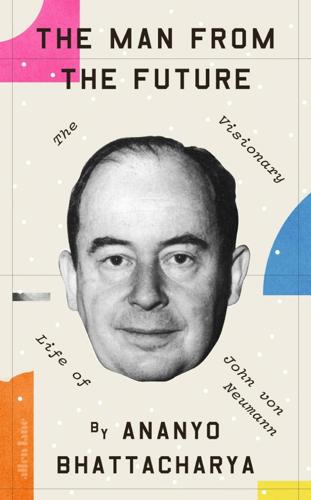
The Man From the Future: The Visionary Life of John Von Neumann
by
Ananyo Bhattacharya
Published 6 Oct 2021
Despite moving to more modern headquarters in 2003, RAND remains synonymous with the Cold War and the icy logic of nuclear deterrence.1 At the peak of RAND’s notoriety in the 1960s, a folk song recorded by Pete Seeger summed up the organization’s reputation for cold-blooded strategizing: Oh, the Rand Corporation’s the boon of the world, They think all day long for a fee. They sit and play games about going up in flames; For counters they use you and me, honey bee, For counters they use you and me … 2 If any one man can be regarded as the founding father of the RAND Corporation, then that man would be Henry ‘Hap’ Arnold, the commanding general of the US Air Force during the Second World War. Arnold was an early believer in the importance of a powerful and independent air force and never stinted from hitting his enemy with everything at his disposal during the war.
…
Elinor Ostrom, 2012, ‘Coevolving Relationships between Political Science and Economics’, Rationality, Markets and Morals, 3 (2012), pp. 51–65. CHAPTER 7: THE THINK TANK BY THE SEA 1. Details of the history of the RAND Corporation are mainly from Fred Kaplan, 1983, The Wizards of Armageddon, Stanford University Press, Stanford, and David Jardini, 2013, Thinking Through the Cold War: RAND, National Security and Domestic Policy, 1945–1975, Smashwords, as well as Poundstone, Prisoner’s Dilemma and Alex Abella, 2008, Soldiers of Reason: The RAND Corporation and the Rise of the American Empire, Harcourt, San Diego, Calif. Daniel Bessner, 2018, Democracy in Exile: Hans Speier and the Rise of the Defense Intellectual, Cornell University Press, Ithaca, offers another perspective on RAND.
…
Interview with Robert Leonard, 27 February 1990, quoted in Leonard, Von Neumann, Morgenstern, and the Creation of Game Theory. 24. Willis H. Ware, 2008, RAND and the Information Evolution: A History in Essays and Vignettes, RAND Corporation. 25. Clay Blair Jr, ‘Passing of a Great Mind’, Fortune, 25 February 1957, p. 89. 26. Quoted in Leonard, Von Neumann, Morgenstern, and the Creation of Game Theory. 27. Much of this work is collected and summarized in Melvin Dresher, 1961, Games of Strategy: Theory and Applications, available as RAND Corporation document number CB-149-1 (2007). 28. This episode is related in Leonard, Von Neumann, Morgenstern, and the Creation of Game Theory. 29.
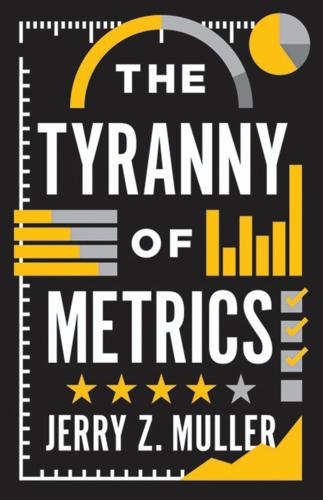
The Tyranny of Metrics
by
Jerry Z. Muller
Published 23 Jan 2018
Joynt et al., “Public Reporting of Mortality Rates for Hospitalized Medicare Patients and Trends in Mortality for Reported Conditions,” Annals of Internal Medicine, published online May 31, 2016. 21. M. W. Friedberg et al., “A Methodological Critique of the ProPublica Surgeon Scorecard” (Rand Corporation, Santa Monica, Calif., 2015), http://www.rand.org/pubs/perspectives/PE170.html, and David M. Shahian et al., “Rating the Raters: The Inconsistent Quality of Health Care Performance Measurement,” Annals of Surgery 264, no. 1 (July 2016), pp. 36–38. 22. Cheryl L. Damberg et al., Measuring Success in Health Care Value-Based Purchasing Programs: Summary and Recommendations (Rand Corporation, 2014), p. 18. Rachel M. Werner et al., “The Effect of Pay-for-Performance in Hospitals: Lessons for Quality Improvement,” Health Affairs 30, no. 4 (April 2011), pp. 690–98.
…
In fact, if you were going to be faithful to the data, you would conclude that public reporting slowed down the rate of improvement in patient outcomes.”20 As if that were not enough of a problem, many of these public rankings, such as ProPublica’s surgical report card, are based on what experts regard as dubious criteria, as likely to be misleading as genuinely illuminating.21 Another recent report, this time from the Rand Corporation, came to similar conclusions. Most studies of pay-for-performance, it noted, examined process and intermediate outcomes rather than final outcomes, that is, whether the patient recovered. “Overall,” it reports, “studies with stronger methodological designs were less likely to identify significant improvements associated with pay-for-performance programs.
…
Though a small part of the U.S. military’s use of metrics, COIN is a particularly instructive case, with larger ramifications for our topic. For not only has the military made extensive use of metrics in the interests of accountability and transparency, its efforts have also been scrutinized by academic researchers working at American military academies and at the Rand Corporation, which conducts research for the Department of Defense. Some of these researchers are both soldiers and scholars, while others have a more conventional academic background. What characterizes their work is close contact with actual experience, either in the form of direct participation in counterinsurgency or of access to recently deployed officers.

Turing's Cathedral
by
George Dyson
Published 6 Mar 2012
Air Force’s Project RAND (progenitor of the RAND Corporation), for whom von Neumann was consulting in Santa Monica, took it upon themselves, in April 1947, to build an electronic roulette wheel and compile a list of one million random numbers, available first as punched cards and later expanded and published as a book. “Because of the very nature of the tables, it did not seem necessary to proofread every page of the final manuscript in order to catch random errors,” the editors explained.72 Between June 29 and July 1, 1949, a conference on the Monte Carlo method—sponsored by the RAND Corporation, Oak Ridge National Laboratory, and the National Bureau of Standards’ Institute for Numerical Analysis—was held at UCLA.
…
Householder, ed., Monte Carlo Method, Proceedings of a Symposium held June 29, 30 and July 1, 1949, in Los Angeles, California, under the sponsorship of the RAND Corporation, and the National Bureau of Standards, with the cooperation of the Oak Ridge National Laboratory, National Bureau of Standards Applied Mathematics Series 12, issued June 11, 1951, p. 36. 72. A Million Random Digits with 100,000 Normal Deviates (Santa Monica, Calif.: RAND Corporation, 1955), p. xii. 73. Klára von Neumann to Stan Ulam, May 15, 1949, SUAPS. 74. Klára von Neumann to Carson Mark, June 28, 1949, KVN. 75. Herman Kahn, “Use of Different Monte Carlo Sampling Techniques,” in Meyer, ed., Symposium on Monte Carlo Methods, p. 147.
…
Edward Teller, Testimony, United States District Court, District of Minnesota, Fourth Division, 4-67 Civil 138: Honeywell, Inc., Plaintiff, v. Sperry Rand Corporation and Illinois Scientific Developments, Inc., Defendants, Transcript of Proceedings, vol. 47, Minneapolis, Minn., Monday, August 30, 1971, p. 6702. 34. Hans A. Bethe, “Comments on the History of the H-Bomb,” written in 1954, declassified in 1980, with a new introduction by Hans Bethe, in Los Alamos Science (Fall 1982): 47. 35. Teller, Testimony, Honeywell, Inc., Plaintiff, v. Sperry Rand Corporation and Illinois Scientific Developments, Inc., Defendants, p. 6771. 36. E. Bretscher, S. P. Frankel, D.
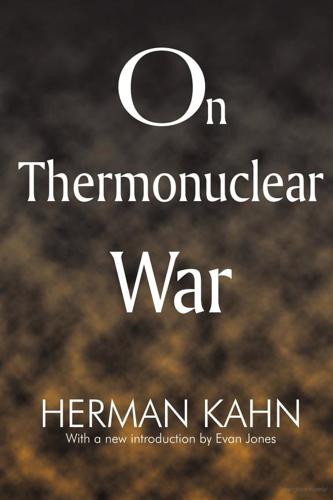
On Thermonuclear War
by
Herman Kahn
Published 16 Jul 2007
The Army's contracts are with the Operations Research Office (Johns Hopkins), Stanford Research Institute, and others. The Air Force contracts are with The RAND Corporation, Anser, Institute of Air Weapons Research, Mitre Corporation, and others. The RAND Corporation, with which I have been for some years, is the largest and possibly the most prestigious of these organizations. It has over 900 employees, approximately two-thirds of whom have technical backgrounds. Its Air Force budget runs to some $13,000,000 annually. In spite of its size and expense the RAND Corporation has no formal staff responsibilities. Only a small percentage of the studies undertaken at the organization are created "to order" and must meet deadlines imposed from outside.
…
It is with the hope of decreasing the probability of catastrophe and alleviating the consequences of thermonuclear war if it comes that I offer these pages to all with the interest—and the courage—to read them. Herman Kahn Princeton, New Jersey June 10, 1960 ACKNOWLEDGMENTS The Concepts on which these three lectures are based originated in work done under the auspices of The RAND Corporation and continued at The Center of International Studies at Princeton University while I was on leave of absence from RAND. While many of the things that I discuss grew out of studies done by The RAND Corporation, the presentation and synthesis are my own. I accept full responsibility for them. However, I owe a tremendous debt to many friends and colleagues—so many that it would be impossible for me to identify them all.
…
Rowen on survival of strategic forces. Much of Lecture I, parts of Lecture II, and the Appendix derive from joint effort devoted to a RAND Corporation civil defense study which I led. This study is reported in RAND Report R-322-RC, A Report on a Study of Non-Military Defense, July 1,1958. Because so much of the book is based on the findings of this study, I would like to repeat here some remarks that prefaced the report on that study: The study . . . [was] supported by The RAND Corporation as part of its program of RAND-sponsored research. In addition to its work for the United States Air Force and other government agencies, the Corporation regularly sponsors, with its own funds, research projects in areas of importance to national security and public welfare.
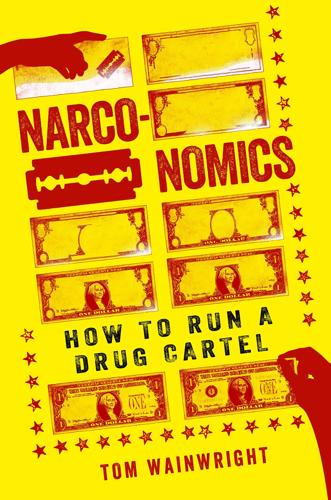
Narconomics: How to Run a Drug Cartel
by
Tom Wainwright
Published 23 Feb 2016
To make that much cocaine, one needs somewhere in the neighborhood of 350 kilograms of dried coca leaves. Based on price data from Colombia obtained by Gallego and Rico, that would cost about $385. Once this is converted into a kilo of cocaine, it can sell in Colombia for $800. According to figures pulled together by Beau Kilmer and Peter Reuter at the RAND Corporation, an American think tank, that same kilo is worth $2,200 by the time it is exported from Colombia, and it has climbed to $14,500 by the time it is imported to the United States. After being transferred to a midlevel dealer, its price climbs to $19,500. Finally, it is sold by street-level dealers for $78,000.10 Even these soaring figures do not quite get across the scale of the markups involved in the cocaine business.
…
The evidence is that they charge quite reasonable prices for doing so: witnesses say that the New York mafia’s fee for fixing prices in the concrete industry was only 2 percent of the contract price; in Sicily, the construction industry reportedly paid 5 percent to the mafia (of which it kept 3 percent and used the remaining 2 percent to pay bribes to politicians). If the price-fixing agreement means that a firm can jack up its rates substantially, these fees are well worth it. (And it seems they can: a study in the 1980s by the RAND Corporation found that residential customers on Long Island were paying 15 percent more for their garbage collection than they would in a competitive market, and commercial customers were paying 50 percent more.)12 The agreements were so robust that garbage-collection firms were even able to buy and sell “contracts” to serve particular customers or neighborhoods, with the exclusive rights guaranteed by the mafia.
…
Occupying the very middle of the network, these middlemen are the best-connected people in the business. Furthermore, acting as the link between the wholesalers and the retailers, they have a high degree of “betweenness centrality.” The findings of the Home Office report seem to agree with other studies on pricing in the drugs business. The RAND Corporation found that the single-biggest leap in the price of cocaine in the United States occurs during the transfer from middle dealers to retailers, when the price of a kilo shoots up from $19,500 to $78,000.10 If the police are to focus their energies in one place, it may be that they cause the most disruption not by targeting the small fry on the streets, or even the big fish doing the importation, but instead by aiming squarely at the middle, where the dealers are the best connected and, it seems, making the most money.
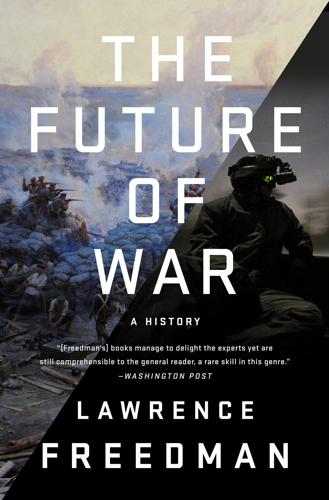
The Future of War
by
Lawrence Freedman
Published 9 Oct 2017
Both Groeteschele and Strangelove were modelled on Herman Kahn, who had written the bestselling account of nuclear strategy, On Thermonuclear War, published in 1960, and had become something of a celebrity as a result of his provocative analyses and an apparent tendency to playfulness when talking about mass death. Kahn was a favourite target of critics, and his humanity had been questioned—‘no one could write like this; no one could think like this.’22 He had written his book at the RAND Corporation, the most famous of the ‘think-tanks’ where the mysteries of nuclear strategy were explored, although he left soon after its publication to set up his own Hudson Institute, in part because his colleagues at RAND objected to his showmanship and because he felt they were becoming too bureaucratic.23 In both movies the Kahn character allows nuclear war to be discussed in terms of a cold rationality, detached from any human emotion.
…
This should encourage both sides to be more cautious and concentrate on diplomacy in a crisis. This was the aspect of the nuclear relationship that Schelling had identified as the key to avoiding war through miscalculation. Whether or not a first strike option could be developed was the pressing issue of the moment. In 1954 a team at the RAND Corporation, led by Albert Wohlstetter, was asked to consider the optimum basing configurations for the US strategic bomber force. They introduced as a key criterion vulnerability to a surprise attack and in so doing demonstrated how the United States might be caught out by a calculating Soviet Union with a pre-emptive strike.12 This was the modern-day version of war fiction, except that there was no character development or narrative tension.
…
If others followed the same path there was a possibility of a transcendent community of shared values that would produce peace if only because there would be nothing to fight about. But the spread of democracy was bound to be contentious and would be resisted by autocrats. As European communism imploded Francis Fukuyama of the RAND Corporation announced that this was not just ‘the end of the Cold War, or the passing of a particular period of post-war history’, but ‘the end of history as such’. By this he meant ‘the end point of mankind’s ideological evolution and the universalization of Western liberal democracy as the final form of human government.’2 Talking of the ‘end of history’ invited misinterpretation.
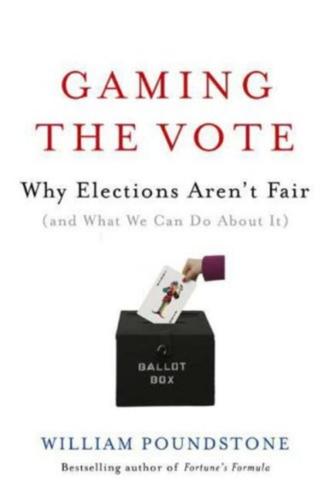
Gaming the Vote: Why Elections Aren't Fair (And What We Can Do About It)
by
William Poundstone
Published 5 Feb 2008
Black himself must have written the jacket copy: "Whatever the merits or demerits of the book, it can safely be said that there is no other which has at+ tempted to deal with this subject." Black was not entirely out of the loop. In December 1948 the RAND Corporation's Joseph Goldsen wrote Black that "a group of 52 The Big Bang American mathematicians and political scientists" were interested in his work and would appreciate receiving offprints. Black had never heard of the RAND Corporation. He checked it out with the British Consul in San Francisco, An official informed him that "the activities of the Rand Corporation are highly classified" and the "United States Air Force would much prefer that, if you decided to respond to Mr.
…
Constitution· Joseph Goebbels • God· Kaiser Wilhelm II • John von Neumann" Kenneth Arrow" J\'larxism • Alfred Tarski • intransitivity· Harold Hotelling· ice cream· John Hicks· "Scissors, Paper. Stone" • Duncan Black· the "forty-seven-year-old wife of a machinist liVing in Dayton. Ohio" • the RAND Corporation· Condoleezzrl Rice· Olaf Helmer· Harry Truman· Joseph Stalin· Abram Bergson 2. The Big Bang Michelle Kwan • the Great Flip.Flop • 45 Repuhlicans • Democrats • Communists· Sidney Morgenbesser • irrelevant alternatives" /\.'tichelangelo • Joe McCarthy • Winston Churchill • Wooclrow Wilson· Boss Tweed· Amartya Sen Contents 3.
…
The median voter, like everyone else, favors the candidate whose views are closest to her own. This means that the candidate who captures the center will win a two-way race. Six years Into his peripatetic career as grad student, Arrow accepted an unusual job. He agreed to go to California to think about nuclear doomsday. The RAND Corporation was the greatest monument to von Neumann's-and Morgenstern's-game theory. RAND began as the air force's Project RAND (for Research ANd Development), a scientific consultancy initially contracted to Douglas Aircraft. Conceived as a peacetime Manhattan Project, RAND was recruiting many of the nation's best minds to ponder the challenges of the nuclear age. 41 GAMING THE VOTE Arrow heard about RAND from his wife's former employer, Abe Girschick.
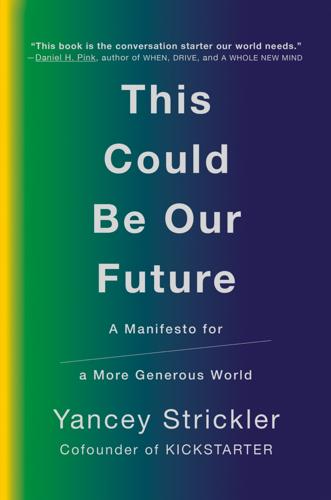
This Could Be Our Future: A Manifesto for a More Generous World
by
Yancey Strickler
Published 29 Oct 2019
They unleashed unprecedented power that became even scarier after the Soviet Union got the bomb, too. As the two nations faced off, the newly invented Doomsday Clock—created to reflect mankind’s proximity to self-annihilation—read just two minutes from the apocalypse. The Defense Department asked a group of scientists and mathematicians at an elite think tank called the RAND Corporation to come up with a strategy for what the United States should do in this new nuclear age. To study the situation, the researchers turned to a then-new field called game theory. Game theory uses mathematical models to determine the optimal, rational strategies in games and other strategic conflicts.
…
Their relationships were what mattered to them. The secretaries achieved the ideal outcome of the game. According to the model of rationality set by game theory, the secretaries weren’t playing correctly. Pursuing your immediate self-interest was the rational thing to do. * * * ■ ■ ■ ■ The RAND Corporation published The Compleat Strategyst with the goal of expanding the application of game theory in day-to-day life. “We believe it possible that Game Theory, as it develops—or something like it—may become an important concept and force in many phases of life,” author J. D. Williams wrote. They were right.
…
Why don’t we do a test? And we’d do a test, and it would show that maybe people would unsubscribe at a slightly higher rate, but the increase in purchasing would more than make up for it. You’d get in a situation where it doesn’t feel right, but it does seem like a rational decision. The RAND Corporation’s book on game theory defined what’s rational as “to gain as much from the game as a player can, safely, in the face of a skillful opponent who is pursuing an antithetical goal.” In the real world, getting as much as you can right now often comes at a long-term cost. And once growth expectations are set, that mitigating word “safely” becomes increasingly optional when it comes to gaining “as much from the game as a player can.”

Dark Territory: The Secret History of Cyber War
by
Fred Kaplan
Published 1 Mar 2016
a man named Donald Latham: Warner, “Cybersecurity: A Pre-history”; and interviews. In April 1967: Willis H. Ware, Security and Privacy in Computer Systems (Santa Monica: RAND Corporation, P-3544, 1967). This led to a 1970 report by a Defense Science Board task force, known as “the Ware Panel,” Security Controls for Computer Systems (declassified by RAND Corporation as R-609-1, 1979); and interviews. He well understood: Willis H. Ware, RAND and the Information Evolution: A History in Essays and Vignettes (Santa Monica: RAND Corporation, 2008). Ware was particularly concerned: Ibid., 152ff. In 1980, Lawrence Lasker and Walter Parkes: Extra features, WarGames: The 25th Anniversary Edition, Blu-ray disc; and interviews.
…
“It took decades”: Department of Defense, Defense Science Board, Task Force Report, Resilient Military Systems and the Advanced Cyber Threat, 51. Actually, in the mid-1990s, the RAND Corporation did conduct a series of war games that simulated threats and responses in cyber warfare; several included upper-midlevel Pentagon officials and White House aides as players, but no insiders took them seriously; the games came just a little bit too early to have impact. The games were summarized in Roger C. Molander, Andrew S. Riddile, Peter A. Wilson, Strategic Information Warfare: A New Face of War (Washington, D.C.: RAND Corporation, 1996). The dearth of impact comes from interviews.The presented a ninety-page paper, explaining how they did the hack (and spelling out disturbing implications), at the August 2015 Black Hat conference in Las Vegas (Remote Exploitation of an Unaltered Passenger Vehicle,” illmatics.com//remote7.20Car7.20Hacking.pdf).
…
Ware was a pioneer in the field of computers, dating back to the late 1940s, when there barely was such a field. At Princeton’s Institute for Advanced Studies, he’d been a protégé of John von Neumann, helping design one of the first electrical computers. For years now, he headed the computer science department at the RAND Corporation, an Air Force–funded think tank in Santa Monica, California. He well understood the point of ARPANET, lauded its goals, admired its ambition; but he was worried about some implications that its managers had overlooked. In his paper, Ware laid out the risks of what he called “resource-sharing” and “on-line” computer networks.
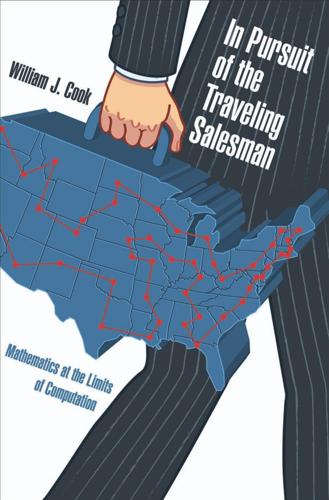
In Pursuit of the Traveling Salesman: Mathematics at the Limits of Computation
by
William J. Cook
Published 1 Jan 2011
In the words of Alan Hoffman and Philip Wolfe, Whitney served “possibly as a messenger from Menger” in bringing the salesman to the mathematics community.23 And on to the RAND Corporation There is not a record of the study of the salesman problem, under the TSP name, in the late 1930s and into the 1940s, but by the end of the 1940s it had become a known challenge. At this point the center of TSP action had moved from Princeton to RAND, coinciding with Flood’s relocation to California. Princeton University’s Harold Kuhn writes the following in a December 2008 e-mail letter. The traveling salesman problem was known by name around Fine Hall by 1949. For instance, it was one of a number of problems for which the RAND corporation offered a money prize.
…
—Geoff Mack, Lyrics to “I’ve Been Everywhere.” Contents Preface xi 1 Challenges 1 Tour of the United States 2 An Impossible Task? 6 One Problem at a Time 10 Road Map of the Book 16 2 Origins of the Problem 19 Before the Mathematicians 19 Euler and Hamilton 27 Vienna to Harvard to Princeton 35 And on to the RAND Corporation 38 A Statistical View 39 3 The Salesman in Action 44 Road Trips 44 Mapping Genomes 49 Aiming Telescopes, X-rays, and Lasers Guiding Industrial Machines 53 Organizing Data 56 Tests for Microprocessors 59 Scheduling Jobs 60 And More 60 4 Searching for a Tour 62 The 48-States Problem 62 Growing Trees and Tours 65 Alterations While You Wait 75 Borrowing from Physics and Biology The DIMACS Challenge 91 Tour Champions 92 51 84 viii Contents 5 Linear Programming 94 General-Purpose Model 94 The Simplex Algorithm 99 Two for the Price of One: LP Duality 105 The Degree LP Relaxation of the TSP 108 Eliminating Subtours 113 A Perfect Relaxation 118 Integer Programming 122 Operations Research 125 6 Cutting Planes 127 The Cutting-Plane Method 127 A Catalog of TSP Inequalities 131 The Separation Problem 137 Edmonds’s Glimpse of Heaven 142 Cutting Planes for Integer Programming 144 7 Branching 146 Breaking Up 146 The Search Party 148 Branch-and-bound for Integer Programming 8 Big Computing 153 World Records 153 The TSP on a Grand Scale 163 9 Complexity 168 A Model of Computation 169 The Campaign of Jack Edmonds 171 Cook’s Theorem and Karp’s List 174 State of the TSP 178 Do We Need Computers?
…
By an ingenious application of linear programming—a mathematical tool recently used to solve production-scheduling problems—it took only a few weeks for the California experts to calculate “by hand” the shortest route to cover the 49 cities: 12,345 miles. The California experts were George Dantzig, Ray Fulkerson, and Selmer Johnson, part of an exceptionally strong and influential center for the new field of mathematical programming, housed at the RAND Corporation in Santa Monica. The RAND team’s guarantee involves some pretty mathematics that we take up later in the book. For now it is best to think of the guarantee as a proof, like those we learned in geometry class. The Dantzig et al. proof establishes that no tour through the 49 cities can have length less than 12,345 miles.
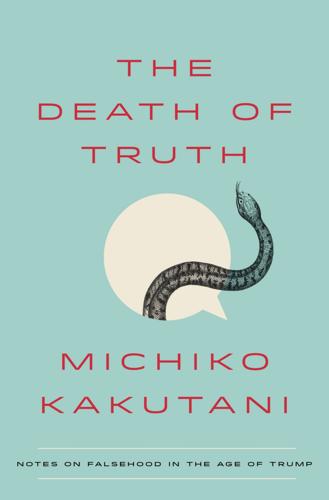
The Death of Truth: Notes on Falsehood in the Age of Trump
by
Michiko Kakutani
Published 17 Jul 2018
“The historian knows how vulnerable is the whole texture of facts in which we spend our daily life,” Arendt wrote in a 1971 essay, “Lying in Politics”; “it is always in danger of being perforated by single lies or torn to shreds by the organized lying of groups, nations, or classes, or denied and distorted, often carefully covered up by reams of falsehoods or simply allowed to fall into oblivion. Facts need testimony to be remembered and trustworthy witnesses to be established in order to find a secure dwelling place in the domain of human affairs.” The term “truth decay” (used by the Rand Corporation to describe the “diminishing role of facts and analysis” in American public life) has joined the post-truth lexicon that includes such now familiar phrases as “fake news” and “alternative facts.” And it’s not just fake news either: it’s also fake science (manufactured by climate change deniers and anti-vaxxers), fake history (promoted by Holocaust revisionists and white supremacists), fake Americans on Facebook (created by Russian trolls), and fake followers and “likes” on social media (generated by bots).
…
Meanwhile, planning for the war on the ground ignored sober warnings from experts, like the army chief of staff, Eric K. Shinseki, who testified that postwar Iraq would require “something on the order of several hundred thousand soldiers.” His recommendation was quickly shot down, as were reports from the Rand Corporation and the Army War College, both of which also warned that postwar security and reconstruction in Iraq would require a large number of troops for an extended period of time. These assessments went unheeded—with fateful consequences—because they did not mesh with the administration’s willfully optimistic promises that the Iraqi people would welcome American troops as liberators and that resistance on the ground would be limited.
…
The totalitarian mass leaders based their propaganda on the correct psychological assumption that, under such conditions, one could make people believe the most fantastic statements one day, and trust that if the next day they were given irrefutable proof of their falsehood, they would take refuge in cynicism; instead of deserting the leaders who had lied to them, they would protest that they had known all along that the statement was a lie and would admire the leaders for their superior tactical cleverness.” Russia still uses propaganda to achieve these very same ends: to distract and exhaust its own people (and increasingly, citizens of foreign countries), to wear them down through such a profusion of lies that they cease to resist and retreat back into their private lives. A Rand Corporation report called this Putin model of propaganda “the firehose of falsehood”—an unremitting, high-intensity stream of lies, partial truths, and complete fictions spewed forth with tireless aggression to obfuscate the truth and overwhelm and confuse anyone trying to pay attention. “Russian propaganda makes no commitment to objective reality,” the report observes: manufactured sources are sometimes used, and so is manufactured evidence (faked photographs, faked on-scene news reporting, staged footage with actors playing victims of manufactured atrocities or crimes).

Surveillance Valley: The Rise of the Military-Digital Complex
by
Yasha Levine
Published 6 Feb 2018
Swarms of ARPA contractors—anthropologists, political scientists, linguists, and sociologists—passed through poor villages, putting people under a microscope, measuring, gathering data, interviewing, studying, assessing, and reporting.58 The idea was to understand the enemy, to know their hopes, their fears, their dreams, their social networks, and their relationships to power.59 The RAND Corporation, under an ARPA contract, did most of this work. Based out of a building overlooking the wide, tan beaches of Santa Monica, RAND was a powerful military and intelligence contractor that had been created by the US Air Force several decades earlier as a private-public research agency.60 In the 1950s, RAND was central to formulating America’s belligerent nuclear policy.
…
Anthony Russo, a RAND contractor who worked on ARPA projects and who would later help Daniel Ellsberg leak the Pentagon Papers, discovered that when results of ARPA studies contradicted military wishes, his bosses simply suppressed and discarded them.77 “The more I grew to admire Asian culture—especially Vietnamese,” Russo wrote in 1972, “the more I was outraged at the Orwellian horror of the U.S. military machine grinding through Vietnam and destroying everything in its path. Tens of thousands of Vietnamese girls were turned into prostitutes; streets that had been lined with beautiful trees were denuded to make room for the big military trucks. I was fed up with the horror and disgusted by the petulance and pettiness with which the RAND Corporation conducted its business.”78 He believed that ARPA’s entire Project Agile apparatus was a giant racket used by military planners to give scientific cover to whichever existing war policies they were intent on pursuing. This wasn’t cutting-edge military science, but a boondoggle and a fraud. The only people benefiting from Project Agile were the private military contracting firms hired to do the work.
…
Lick spread that cash through his personal and professional networks in the military-academic-contractor world. He bankrolled projects on interactive computing and time sharing, graphical interface design, networking, and artificial intelligence at MIT, UC Berkeley, UCLA, Harvard, Carnegie Mellon University, Stanford, and the RAND Corporation. At MIT, Lick set up one of his biggest and most important initiatives: Project MAC, short for Machine-Aided Cognition, which evolved into a sophisticated interactive computer environment complete with email, bulletin boards, and multiplayer video games. MIT’s Project MAC spawned the first crop of “hackers,” ARPA contractors who tinkered with these giant computers in their free time.
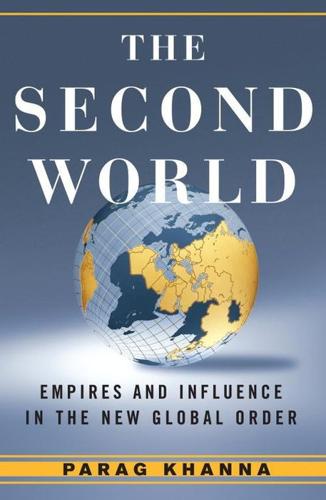
Second World: Empires and Influence in the New Global Order
by
Parag Khanna
Published 4 Mar 2008
Kazakhstan: Unfulfilled Promise. Washington, D.C.: Carnegie Endowment for International Peace, 2002. Oliker, Olga, and David A. Shlapak. U.S. Interests in Central Asia: Policy Priorities and Military Roles. Santa Monica, Calif.: RAND Corporation, 2005. Oliker, Olga, and Tanya Charlick-Paley. Assessing Russia’s Decline: Trends and Implications for the United States and the U.S. Air Force. Santa Monica, Calif.: RAND Corporation, 2002. Organski, A.F.K. World Politics. New York: Alfred A. Knopf, 1968. Pape, Robert A. Dying to Win: The Strategic Logic of Suicide Terrorism. New York: Random House, 2005. Pastor, Robert A. A Century’s Journey: How the Great Powers Shape the World.
…
.: Princeton University Press, 2000. Bergsten, C. Fred, Bates Gill, Nicholas Lardy, and Derek Mitchell. China: The Balance Sheet—What the World Needs to Know Now About the Emerging Superpower. New York: Public Affairs, 2006. Bernard, Cheryl. Civil, Democratic Islam: Partners, Resources, and Strategies. Santa Monica, Calif.: RAND Corporation, 2003. Birdsall, Nancy, and Augusto de la Torre. Washington Contentious: Economic Policies for Social Equity in Latin America. Washington, D.C.: Carnegie Endowment for International Peace and Inter-American Dialogue, 2001. Blank, Stephen. After Two Wars: Reflections on the American Strategic Revolution in Central Asia.
…
The Mystery of Capital: Why Capitalism Triumphs in the West and Fails Everywhere Else. New York: Basic Books, 2003. Diamond, Jared. Collapse: How Societies Choose to Fail or Succeed. New York: Penguin, 2004. Dobbins, James. The UN’s Role in Nation-Building: From the Congo to Iraq. Santa Monica, Calif.: RAND Corporation, 2005. Dominguez, Jorge I., and Byung Cook Kim, eds. Between Compliance and Conflict: Between East Asia, Latin America, and the “New” Pax Americana. New York: Routlege, 2005. Doyle, Michael. Empires. Ithaca, N.Y.: Cornell University Press, 1986. Drakuli, Slavenka. Café Europa: Life After Communism.

From Airline Reservations to Sonic the Hedgehog: A History of the Software Industry
by
Martin Campbell-Kelly
Published 15 Jan 2003
Thus, the very strengths that The Software Industry 5 enabled a firm to succeed in one market segment became institutional rigidities in another. This is the main reason why few firms have successfully escaped the confines of their particular sector.12 Software Contractors The defining event for the software contracting industry came in 1956, when the US-government-owned RAND Corporation created the Systems Development Corporation (SDC) to develop the computer programs for the huge SAGE air defense project. This was the first of several multi-billion-dollar defense projects in the 1950s and the 1960s, known as the L-Systems, that provided an important market for early software contractors.
…
A set of binary-to-decimal and decimalto-binary conversion programs were needed at every installation, and most people wrote their own.”9 According to a joke of the day, “there were 17 customers with 701s and 18 different assembly programs.”10 This duplication of effort, unavoidable during the early learning period, clearly was untenable in the long run. Some form of cooperative association, it was felt, might alleviate the problem. The idea of a cooperative association was first proposed by R. Blair Smith, a 701 sales manager in IBM’s Santa Monica sales office.11 Smith had sold 701s to the RAND Corporation and to the Douglas Aircraft Company, and their early experiences had left him “afraid that the cost of programming would rise to the point where users would have difficulty in justifying the total cost of computing.”12 Before joining IBM, Smith had been an accounting machine manager and a founder of the Los Angeles chapter of the National Machine Accountants Association, which seemed to him an appropriate model for a computer user group.
…
The Digital Computer Origins of the Software Contractor 33 Association was now replaced by a more formal structure, ownership of a 704 being “the single qualification for membership.”14 The new group’s name, SHARE, though usually capitalized, was not an acronym; rather, it represented the objective of sharing information and programs. Another objective was to serve as a conduit between users and IBM’s future developments in hardware and programming. In August 1955, SHARE’s “secretary pro tem,” Fletcher Jones of the RAND Corporation, sent out invitations to all seventeen organizations that owned 704s to the inaugural meeting of SHARE. At a time when the cost of programming ran as high as $10 an instruction, dramatic savings could be achieved through cooperation. It was estimated that each of the 704’s early users spent the equivalent of the first year’s rental (at least $150,000) establishing a basic programming regime.
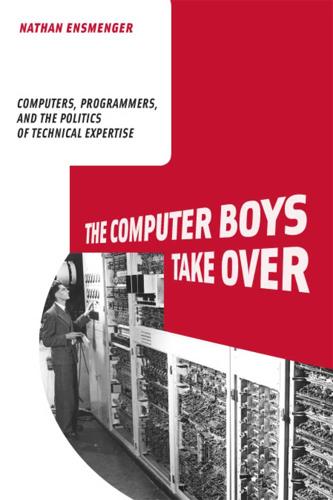
The Computer Boys Take Over: Computers, Programmers, and the Politics of Technical Expertise
by
Nathan L. Ensmenger
Published 31 Jul 2010
The goal was to discuss what Elbert Little, of the Wayne State Computational Laboratory, suggested was a “universal feeling” among industry leaders that there was “a definite shortage” of technically trained people in the computer field.12 This shortage, variously described by an all-star cast of scientists and executives from General Motors, IBM, the RAND Corporation, Bell Telephone, Harvard University, MIT, the Census Bureau, and the Office of Naval Research, as “acute,” “unprecedented,” “multiplying dramatically,” and “astounding compared to the [available] facilities,” represented a grave threat to the future of electronic computing. Already it was serious enough to demand a “cooperative effort” on the part of industry, government, and educational institutions to resolve.13 The proceedings of the Conference on Training Personnel for the Computing Machine Field provide the best data available on the state of the labor market in the electronic computer industry during its first decade.
…
How did they reconcile contemporary beliefs about the idiosyncratic nature of individual programming ability with the rigid demands of corporate management and control? Aptitude Tests and Psychological Profiles So how did companies deal with the need to train and recruit programmers on a large scale? Here the case of the System Development Corporation (SDC) is particularly instructive. SDC was the RAND Corporation spin-off responsible for developing the software for the U.S. Air Force’s Semi-Automated Ground Environment (SAGE) air-defense system. SAGE was perhaps the most ambitious and expensive of early cold war technological boondoggles. Comprised of a series of computerized tracking and communications centers, SAGE cost approximately $8 billion to develop and operate, and required the services of over two hundred thousand private contractors and military operators.
…
Comprised of a series of computerized tracking and communications centers, SAGE cost approximately $8 billion to develop and operate, and required the services of over two hundred thousand private contractors and military operators. A major component of the SAGE project was the real-time computers required to coordinate its vast, geographically dispersed network of observation and response centers. IBM was hired to develop the computers themselves but considered programming them to be too difficult. In 1955 the RAND Corporation took over software development. It was estimated that the software for the SAGE system would require more than one million lines of code to be written. At a time when the largest programming projects had involved at most fifty thousand lines of code, this was a singularly ambitious undertaking.27 Within a year, there were more programmers at RAND than all other employees combined.
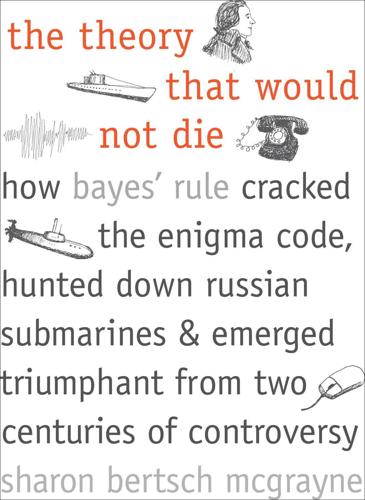
The Theory That Would Not Die: How Bayes' Rule Cracked the Enigma Code, Hunted Down Russian Submarines, and Emerged Triumphant From Two Centuries of Controversy
by
Sharon Bertsch McGrayne
Published 16 May 2011
(spring 2006) Cracking Bert’s shell and loving the bomb. Chemical Heritage (24:1) 22. Smith, Bruce LR. (1966) The RAND Corporation: Case Study of a Nonprofit Advisory Corporation. Harvard University Press. U.S. Department of Defense. (April 1981) Narrative Summaries of Accidents Involving U.S. Nuclear Weapons 1950–1980. http://www.dod.mil/pubs/foi/reading_room/635.pdf.Acc.Jan.29, 2007. I am indebted to the Center for Defense Information for this reference. Wohlstetter SJ et al. (April 1954) Selection and Use of Strategic Air Bases. RAND Corporation Publication R266. Wohlstetter, Albert. (1958) The delicate balance of terror.
…
Yet at the same time, it solved practical questions that were unanswerable by any other means: the defenders of Captain Dreyfus used it to demonstrate his innocence; insurance actuaries used it to set rates; Alan Turing used it to decode the German Enigma cipher and arguably save the Allies from losing the Second World War; the U.S. Navy used it to search for a missing H-bomb and to locate Soviet subs; RAND Corporation used it to assess the likelihood of a nuclear accident; and Harvard and Chicago researchers used it to verify the authorship of the Federalist Papers. In discovering its value for science, many supporters underwent a near-religious conversion yet had to conceal their use of Bayes’ rule and pretend they employed something else.
…
Smiling, Cornfield replied, “That’s nothing compared to how happy I am to be able to see you.”13 As he was dying he said to his two daughters, “You spend your whole life practicing your humor for the times when you really need it.”14 9. there’s always a first time Bayes’ military successes were still Cold War secrets when Jimmie Savage visited the glamorous new RAND Corporation in the summer of 1957 and encouraged two young men to calculate a life-and-death problem: the probability that a thermonuclear bomb might explode by mistake. RAND was the quintessential Cold War think tank. Gen. Curtis E. LeMay, the commander of the Strategic Air Command (SAC), had helped start it in Santa Monica, California, 10 years earlier as “a gimmick” to cajole top scientists into applying operations research to long-range air warfare.1 But RAND, an acronym for Research ANd Development, considered itself a “university without students” and its 1,000-odd employees “defense intellectuals.”

More Everything Forever: AI Overlords, Space Empires, and Silicon Valley's Crusade to Control the Fate of Humanity
by
Adam Becker
Published 14 Jun 2025
type=3. 37 Doug Irving, “‘The Future Could Be Brilliant’: RAND’s CEO Is an ‘Apocaloptimist,’” RAND, August 4, 2022, www.rand.org/pubs/articles/2022/the-future-could-be-brilliant-rands-ceo-is-an-apocaloptimist.html. 38 Bredan Bordelon, “Think Tank Tied to Tech Billionaires Played Key Role in Biden’s AI Order,” Politico, January 16, 2023, www.politico.com/news/2023/12/15/billionaire-backed-think-tank-played-key-role-in-bidens-ai-order-00132128. 39 “RAND Corporation—Emerging Technology Initiatives,” Open Philanthropy, October 2023, www.openphilanthropy.org/grants/rand-corporation-emerging-technology-initiatives/; “RAND Corporation—Emerging Technology Fellowships and Research,” Open Philanthropy, April 2023, www.openphilanthropy.org/grants/rand-corporation-emerging-technology-fellowships-and-research/; “RAND Corporation—Biosecurity Policy,” Open Philanthropy, May 2023, www.openphilanthropy.org/grants/rand-corporation-biosecurity-policy/. 40 Brendan Bordelon, “How a Billionaire-Backed Network of AI Advisers Took Over Washington,” Politico, October 13, 2023, www.politico.com/news/2023/10/13/open-philanthropy-funding-ai-policy-00121362. 41 “Carrick Flynn,” Future of Humanity Institute, archived February 3, 2024, at the Wayback Machine, https://web.archive.org/web/20240203043647/https://www.fhi.ox.ac.uk/team/carrick-flynn/; “Carrick Flynn,” CSET, accessed June 16, 2024, https://cset.georgetown.edu/staff/carrick-flynn/; Carrick Flynn, LinkedIn profile, accessed June 16, 2024, www.linkedin.com/in/carrickflynn; “Team,” Centre for the Governance of AI, accessed June 16, 2024, www.governance.ai/people; “Carrick Flynn,” Centre for the Governance of AI, accessed June 16, 2024, www.governance.ai/team/carrick-flynn; “Carrick Flynn,” Brookings, accessed June 16, 2024, www.brookings.edu/people/carrick-flynn/; “Oregon’s 6th Congressional District Election, 2022,” Ballotpedia, accessed June 16, 2024, https://ballotpedia.org/Oregon%27s_6th_Congressional_District_election,_2022. 42 Dirk VanderHart, “What Does a Crypto Tycoon Want with Oregon’s New Congressional District?
…
In 2022, he became the president and CEO of the RAND Corporation, among the biggest and most influential think tanks in the world, especially regarding technology and military policy.37 Under Matheny’s leadership, RAND’s influence on US AI policy has grown. “Many key personnel at top AI companies are advocates of effective altruism,” wrote Brendan Bordelon in Politico in late 2023. “Now RAND, an influential, decades-old think tank, is serving as a powerful vehicle through which those ideas are entering American policy.”38 Meanwhile, Open Philanthropy has started giving out hefty grants to the RAND Corporation under Matheny’s leadership, to the tune of $26 million in 2023 alone, including $10.5 million for “potential risks from advanced artificial intelligence.”39 Open Philanthropy has also been funding a fleet of policy fellows across the federal government through another nonprofit, the Horizon Institute for Public Service.
…
See also Adam Frank, Light of the Stars: Alien Worlds and the Fate of the Earth (New York: W. W. Norton, 2018), 221, 250; David Ronfeldt and John Arquilla, “Origins and Attributes of the Noosphere Concept,” in Whose Story Wins: Rise of the Noosphere, Noopolitik, and Information-Age Statecraft (Santa Monica, CA: RAND Corporation, 2020), 7–12, www.jstor.org/stable/resrep26549.9. 21 O’Gieblyn, God, Human, Animal, Machine, 71. 22 Ibid. 23 Ibid., 53, says this is the first appearance of “transhuman” in English. For the claim that this is one of the first translations of the Divine Comedy into English—specifically, the second complete translation, only a few years after the first—see this surprisingly specific Wikipedia page: Wikipedia, s.v.
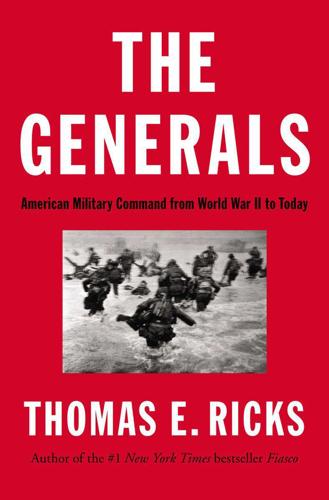
The Generals: American Military Command From World War II to Today
by
Thomas E. Ricks
Published 14 Oct 2012
“basic grand strategy”: Franks, American Soldier, 340–41. “The October 2002 Centcom war plan”: “Final Report of the Independent Panel to Review DoD Detention Operations,” August 24, 2004, 11. “post conflict stabilization”: RAND Corporation, “Iraq: Translating Lessons into Future DoD Policies,” attachment to letter from James Thompson, president and chief executive officer, RAND Corporation, to Defense Secretary Donald Rumsfeld, February 7, 2005, 6. “There’s never been a combat operation”: Franks, American Soldier, 524. “I just think it’s interesting”: Franks teleconference, August 2, 2004, 16. “The guys who did well”: Telephone interview with American civilian official in Kabul who requested anonymity, December 2007.
…
In 2004, an official Pentagon review led by two former defense secretaries, James Schlesinger and Harold Brown, unambiguously concluded, “The October 2002 Centcom war plan presupposed that relatively benign stability and security operations would precede a handover to Iraq’s authorities.” The following year, the head of the RAND Corporation, hardly a hostile observer, would send a memorandum to Defense Secretary Rumsfeld stating that after extensive review of internal documents, his researchers had found that “post conflict stabilization and reconstruction were addressed only very generally, largely because of the prevailing view that the task would not be difficult.”
…
Imagine a U.S. military at the other extreme—tactically mediocre and manned with draftees. In such a circumstance, it is hard to imagine the wars in Iraq and Afghanistan being allowed to meander for years without serious strategic direction. A few reliefs might have broken the strategic logjam, but the vocabulary of accountability had been lost. In 2005, a RAND Corporation study of Army generalship referred not to “firings” or “relief for cause” but, vaguely, to “performance departures”—which could mean leaving voluntarily or not. Similarly, a fine essay by Col. George Reed on “toxic leadership” in the military analyzed the problem bravely but tiptoed around the obvious solution, saying only, rather tentatively, “If the behavior does not change, there are many administrative remedies available.”
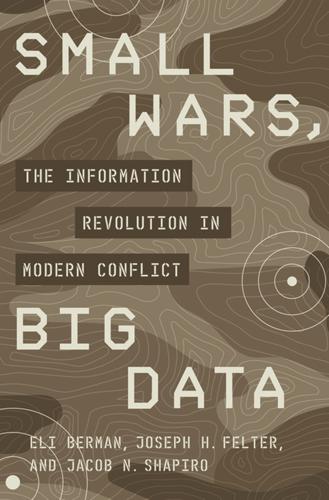
Small Wars, Big Data: The Information Revolution in Modern Conflict
by
Eli Berman
,
Joseph H. Felter
,
Jacob N. Shapiro
and
Vestal Mcintyre
Published 12 May 2018
Jung, Patrick K. Ryan, and Jonathan Wallace, Foundations of the Islamic State: Management, Money, and Terror in Iraq (Arlington, VA: RAND Corporation, 2016). 35. Craig Davis, “Reinserting Labor into the Iraqi Ministry of Labor and Social Affairs,” Monthly Labor Review 128, no. 6 (2005): 53–61. 36. Benjamin W. Bahney, Howard J. Shatz, Carroll Ganier, Renny McPherson, and Barbara Sude, An Economic Analysis of the Financial Records of al-Qa’ida in Iraq (Santa Monica, CA: RAND Corporation, 2010). 37. Johnston et al., Foundations of the Islamic State. 38. Ibid., 93. 39. Ibid., 85. 40. Philip Verwimp, “An Economic Profile of Peasant Perpetrators of Genocide: Micro-level Evidence from Rwanda,” Journal of Development Economics 77, no. 2 (2005): 297–323; Macartan Humphreys and Jeremy M.
…
EVIDENCE FROM THE PHILIPPINES Proposition 2 (modest, secure aid programs reduce violence) seems to be borne out for the conflict it was designed to explain, the insurgency in Iraq. Does our model work in other asymmetric conflicts? For evidence let’s return to the Philippines, and a study by Joe and two of his coauthors, Ben Crost (University of Illinois at Urbana-Champaign) and ESOC alumnus Patrick Johnston (RAND Corporation), on the effects of conditional cash transfers (CCTs) using the remarkable data on individual conflict incidents introduced in chapter 2 and village-level measures of insurgent influence.64 CCT programs distribute cash payments directly to poor households that meet a number of prerequisites (hence “conditional”), such as vaccinating their children or keeping them in school.
…
Though, as we’ll discuss in the conclusion, it did not remain so and was once again the scene of intense fighting by mid-2015. 16. The broad need to exercise caution when using administrative data from conflict zones is amply demonstrated by the many examples in Ben Connable’s excellent Embracing the Fog of War: Assessment and Metrics in Counterinsurgency (Santa Monica, CA: RAND Corporation, 2012). 17. Pakistan data from the BFRS Dataset of Political Violence in Pakistan. For details, see Ethan Bueno de Mesquita, Christine Fair, Jenna Jordan, and Rasul Bakhsh Rais, “Measuring Political Violence in Pakistan: Insights from the BFRS Dataset,” Conflict Management and Peace Science 32, no. 5 (2015): 536–58.
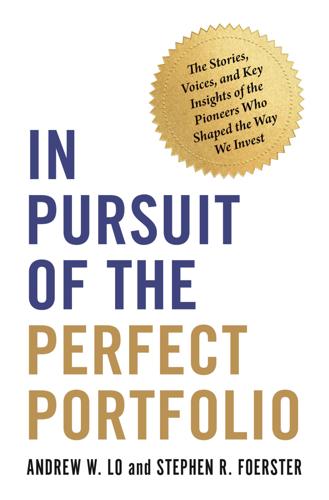
In Pursuit of the Perfect Portfolio: The Stories, Voices, and Key Insights of the Pioneers Who Shaped the Way We Invest
by
Andrew W. Lo
and
Stephen R. Foerster
Published 16 Aug 2021
In contrast, American Economic Review, the main publication of the American Economic Association, had begun its publication in 1911.40 Almost seventy years later, Markowitz’s article is visibly different from recent Journal of Finance publications. The title of the article, “Portfolio Selection,” is short and simple. The article had a single author, compared to today’s much more common practice of multiple authorship. Markowitz’s affiliation was with the RAND Corporation in Santa Monica, California, a nonprofit policy think tank, unlike the typical author of today with a university affiliation. The article was succinct, at eleven pages of text plus four pages of graphs, and referred to only three previous studies, all books, compared with today’s standard of referencing upwards of fifty articles and books.
…
Markowitz surmised that his model of E-V efficiency would be most appropriate for investors who were not gamblers. Harry Had Another Problem After writing his article, Markowitz continued at the University of Chicago to finish his PhD, a process that wasn’t without some white-knuckle moments.48 Having already started working at the RAND Corporation in California, he stopped off in Chicago to defend his dissertation after a business trip to Washington, D.C. “I remember landing at Midway Airport and thinking to myself, I know this field cold, not even Milton Friedman will give me a hard time.” In retrospect, this was probably not a wise thought.
…
And yes in the sense that Marschak paved the way to a theory of markets whereby its participants act in a world of uncertainty and risk. Portfolio Selection: The Book In 1951 after the coursework for his doctorate was complete but while he was still working on his dissertation, Markowitz left the University of Chicago to work at the RAND Corporation, where his work had nothing to do with portfolio theory.74 During the 1955–1956 academic year Markowitz took a leave of absence from RAND to be at the Cowles Foundation, which had moved to Yale, at the invitation of the economist and future Nobel laureate James Tobin. Markowitz’s 1959 book Portfolio Selection: Efficient Diversification of Investments was primarily written at this time.

Command and Control: Nuclear Weapons, the Damascus Accident, and the Illusion ofSafety
by
Eric Schlosser
Published 16 Sep 2013
It was called QUICK COUNT: For information about the computer model, see N. D. Cohen, “The Quick Count System: A User’s Manual,” RAND Corporation, RM-4006-PR, April 1964. I learned about Quick Count from another report, one that was “designed to be of use to those who have only a rudimentary knowledge of targeting and the effects of nuclear weapons but who need a quick means of computing civil damage to Western Europe.” See “Aggregate Nuclear Damage Assessment Techniques Applied to Western Europe,” H. Avrech and D. C. McGarvey, RAND Corporation, Memorandum RM-4466-ISA, Prepared for the Office of the Assistant Secretary of Defense/International Security Affairs, June 1965 (FOR OFFICIAL USE ONLY/declassified).
…
“Assessing the Capabilities of Strategic Nuclear Forces: The Limits of Current Methods,” Bruce W. Bennett, N-1441-NA, RAND Corporation, June 1980. “Assessment Report: Titan II LGM 25 C, Weapon Condition and Safety,” Prepared for the Senate Armed Services Committee and House Armed Services Committee, May 1980. “Attack Warning: Better Management Required to Resolve NORAD Integration Deficiencies,” Report to the Chairman, Subcommittee on Defense, Committee on Appropriations, House of Representatives, United States General Accounting Office, July 1989. “The Ballistic Missile Decisions,” Robert L. Perry, RAND Corporation, October 1967. “Ballistic Missile Staff Course Study Guide,” 4315th Combat Crew Training Squadron, Strategic Air Command, Vandenberg Air Force Base, July 1, 1980.
…
If P1 = the population of a city before destruction, P2 = the population of a city after destruction, H1 = the number of housing units before destruction, H2 = the number of housing units after destruction, and F = the number of fatalities, then “the fully compensating increase in housing density,” could be expressed as a mathematical equation: Iklé was impressed by the amount of urban hardship and overcrowding that people could endure. But there were limits. The tipping point seemed to be reached when about 70 percent of a city’s homes were destroyed. That’s when people began to leave en masse and seek shelter in the countryside. Iklé’s dissertation attracted the attention of the RAND Corporation, and he was soon invited to join its social sciences division. Created in 1946 as a joint venture of the Army Air Forces and the Douglas Aircraft Company, Project RAND became one of America’s first think tanks, a university without students where scholars and Nobel laureates from a wide variety of disciplines could spend their days contemplating the future of airpower.
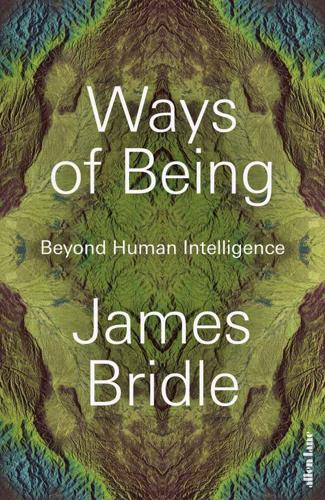
Ways of Being: Beyond Human Intelligence
by
James Bridle
Published 6 Apr 2022
John von Neumann, ‘Various Techniques Used in Connection with Random Digits’ in Proceedings of a Symposium held 29, 30 June and 1 July 1949, in Los Angeles, California, under the sponsorship of the RAND Corporation and the National Bureau of Standards, with the cooperation of the Oak Ridge National Laboratory; also published in A. S. Householder, G. E. Forsythe and H. H. Germond (eds), Monte Carlo Method (Washington DC: US Government Printing Office, 1951), National Bureau of Standards Applied Mathematics Series 12. 9. RAND Corporation, A Million Random Digits with 100,000 Normal Deviates (Glencoe, IL: Free Press, 1955; revised pbk edn Santa Monica, CA: RAND Corporation, 2001); https://www.rand.org/pubs/monograph_reports/MR1418.html.
…
Image: James Bridle. 34. ERNIE 1, 1957. Reproduced with permission of National Savings and Investments (NS&I). 35. ERNIE 3, 1988. Reproduced with permission of National Savings and Investments (NS&I). 36. The first page of the RAND Corporation’s book A Million Random Digits with 100,000 Normal Deviates, 1955. A Million Random Digits with 100,000 Normal Deviates (Santa Monica, CA: RAND Corporation, 2001). 37. Hexagram 52 of the I Ching: 艮 (gèn): ‘keeping still, mountain’. Wikimedia Commons / Ben Finney. 38. John Cage’s score for A Dip in the Lake: Ten Quicksteps, Sixty-Two Waltzes, and Fifty-Six Marches for Chicago and Vicinity, 1978.
…
In order to fully implement the Monte Carlo method, there was one further, crucial requirement: a source of random numbers, which could not be generated by the computer itself. John von Neumann was all too aware of the failure of machines in this regard. In a paper written on the subject in 1949, he warned that ‘anyone who considers arithmetical methods of producing random digits is, of course, in a state of sin’.8 In response to this need, the RAND Corporation – an offshoot of the US armed forces, which employed von Neumann as a consultant – built an ‘electronic roulette wheel’, which consisted of a pulse generator and a noise source, most likely a small gas-filled transistor valve similar to the kind used in ERNIE. The result was published in 1955 as A Million Random Digits with 100,000 Normal Deviates – an extraordinary book of numbers which consists of exactly what its title describes: 400 closely set pages, each containing 50 lines of 50 digits, with the lines numbered 00000 through 19999.
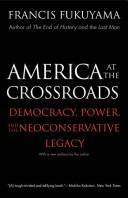
America at the Crossroads: Democracy, Power, and the Neoconservative Legacy
by
Francis Fukuyama
Published 20 Mar 2007
Arms Control and Disarmament Agency and later at the State Department; he was also responsible for recruiting me to come to the Johns Hopkins School of Advanced International Studies while he was dean there. I worked with his mentor Albert Wohlstetter at the latter's consulting firm, Pan Heuristics, and like him was an analyst for several years at the Rand Corporation. I was a student of Allan Bloom, himself a stu- Preface dent of Leo Strauss and the author of The Closing of the American Mind. I was a classmate of William Kristol in graduate school and wrote frequently for the two magazines founded by his father, Irving Kristol, The National Interest and The Public Interest, as well as for Commentary magazine.
…
ALBERT WOHLSTETTER Leo Strauss said virtually nothing about foreign policy, however much students or students of students may have sought to translate his philosophical ideas into policies. The same cannot be said for Albert Wohlstetter, on the other hand, who was the teacher of Paul Wolfowitz, Richard Perle, Zalmay Khalilzad, and other people in or close to the Bush administration. Wohlstetter was a mathematical logician who worked at the Rand Corporation in its glory days in the 1950s and later taught The Neoconservative Legacy at the University of Chicago. His career was marked by a longstanding concern with two central issues. The first was the problem of extended deterrence. Wohlstetter argued against the belief, promoted in early Cold War days by strategists like the French general Pierre Galois, that a minimum nuclear deterrent would be a cheap and effective form of national defense.
…
It is perhaps not an accident that MacArthur lived in East Asia almost continuously from the time he helped establish the Philippine Army in the 1930s until his recall by President Truman during the Korean War. 16. See Francis Fukuyama, "The March of Equality," Journal of Democracy 11, no. 1 (2000): 11-17. 17. Albert Wohlstetter, Henry S. Rowen, et al., Selection and Use of Strategic Air Bases (Santa Monica, Calif.: Rand Corporation, R-266, 1954). A shorter version was published as "The Delicate Balance of Terror" in Foreign Affairs 2 7, no. 2 (Jan. 1959). 18. Henry A. Kissinger,/4 World Restored: Europe After Napoleon (Gloucester, Mass.: Peter Smith, 1973); Kissinger, Diplomacy (New York: Simon and Schuster, 1994). 19.
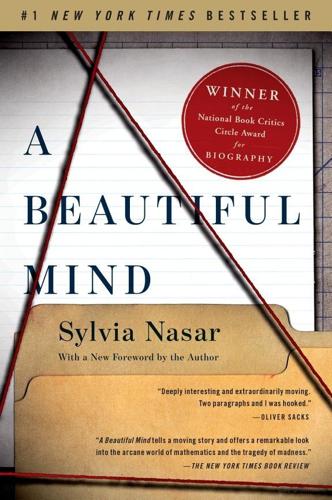
A Beautiful Mind
by
Sylvia Nasar
Published 11 Jun 1998
Shapley, interview, 10.94. 12: The War of Wits 1. John McDonald, “The War of Wits,” Fortune (March 1951). 2. William Poundstone, Prisoner’s Dilemma, op. cit.; Fred Kaplan, The Wizards of Armageddon, op. cit.; The RAND Corporation: The First Fifteen Years (Santa Monica, Calif.: RAND, November 1963) and 40th Year Anniversary (Santa Monica: RAND, 1963); John D. Williams, An Address, 6.21.50; Bruce L. R. Smith, The RAND Corporation (Cambridge: Harvard University Press, 1966); Bruno W. Augenstein, A Brief History of RANDs Mathematics Department and Some of Its Accomplishments (Santa Monica, Calif.: RAND, March 1993); Alexander M.
…
The descriptions of Arrow’s contributions are taken from Mark Blaug, Great Economists Since Keynes (Totowa, N.J.: Barnes & Noble, 1985), pp. 6–9. 18. Kenneth Arrow, professor of economics, Stanford University, interview, 6.26.95. 19. McDonald, interview. 20. Richard Best, former manager of security, RAND Corporation, interview, 5.22.96. 21. Interviews with Alexander M. Mood, professor of mathematics, Universih of California at Irvine, former deputy director, mathematics department, RAND Corporation, 5.23.96, and Mario L. Juncosa, mathematician, RAND, 5.21.96 and 5.24.96. 22. Kaplan, op. cit., p. 51. 23. Bernice Brown, retired statistician, RAND, interview, 5.22.96. 24. Augenstein, interview. 25.
…
Milnor also dazzled the department — and Nash — by winning the Putnam competition in his second semester at Princeton (in fact, he went on to win it two more times and was offered a Harvard scholarship).51 Nash was choosy about whom he would talk mathematics with. Melvin Peisakoff, another student who would later overlap with Nash at the RAND Corporation, recalled: “You couldn’t engage him in a long conversation. He’d just walk off in the middle. Or he wouldn’t respond at all. I don’t remember Nash having a conversation that came to a nice soft landing. I also don’t remember him ever having a conversation about mathematics. Even the full professors would discuss problems they were working on with other people.”52 On one occasion in the common room, however, Nash was sketching an idea when another graduate student got very interested in what he was saying and started to elaborate on the idea.53 Nash said, “Well, maybe I ought to write a Note for the Proceedings of the National Academy on this.”
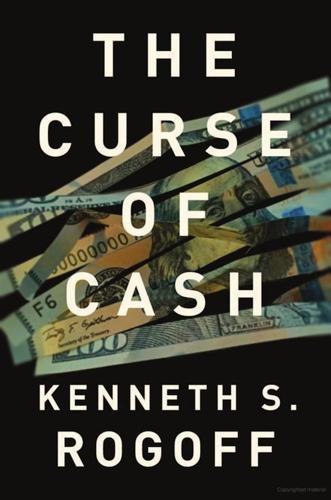
The Curse of Cash
by
Kenneth S Rogoff
Published 29 Aug 2016
Available at http://www.riksbank.se/Documents/Tal/Jochnick/2015/tal_af_jochnick_150123_eng.pdf. Johnson, Boris. 2013. 2020 Vision: The Greatest City on Earth: Ambitions for London (June). City Hall, London: London Greater Authority. Johnson, Patrick B. 2014. “Countering ISIL’s Financing.” The RAND Corporation Testimony Series. Testimony presented before the House Financial Services Committee on November 13. Santa Monica, CA: RAND Corporation. Jost, Patrick M., and Harjit Singh Sandbu. 2000. “Hawala: The Hawala Alternative Remittance System and Its Role in Money Laundering.” Prepared by the Financial Crimes Enforcement Network of the United States Department of Treasury in cooperation with INTERPOL/FOPAC.
…
The basic takeaway from these studies is that the cash consumers admit to holding can account for perhaps 5–10% of the total currency supply.5 We begin with the United States and then look at Europe and Canada. The United States The two important sources of data on US consumer cash holdings are the “Survey of Consumer Payment Choice” and the “Diary of Consumer Payment Choice.”6 The first is an annual survey conducted by the Federal Reserve that makes use of the RAND Corporation’s “American Life Panel” survey respondents. The second is a consumer diary project (where consumers are asked to keep diaries, something akin to the Nielsen diaries for rating TV shows). It gives a more detailed snapshot of consumer holdings of cash, but so far only for the month of October 2012.7 Nevertheless, the diary snapshot is especially valuable, because, in addition to answering questions on total currency held on person (e.g., wallet, pocket, and purse) and on property (e.g., home and car), respondents were also asked the denominations of the notes they held.
…
Although there do not seem to be any aggregate statistics on cash seizures for the United States, I invite the reader to try online searching on the words “bust,” “cash,” “drugs,” or the like, to get an idea of the extent of the activity. Admittedly, the oft-quoted fact that some 90% of all US currency has traces of cocaine overstates the connection between drugs and cash. The contamination occurs in modern high-speed counting machines, including ATMs, where one bill can pollute a batch.32 The RAND Corporation has estimated the combined size of the market for four major illegal drugs in the United States to be more than $100 billion in 2010, with cocaine (including crack) $28 billion, heroin $27 billion, marijuana $41 billion, and methamphetamine (meth) $13 billion. This is only the footprint in the United States.33 The last attempt to do a comprehensive measure of the global drug market, by the United Nations Office on Drugs and Crime for the year 2003, came up with an estimate of $322 billion.

Where Wizards Stay Up Late: The Origins of the Internet
by
Katie Hafner
and
Matthew Lyon
Published 1 Jan 1996
Baran soon married, and he and his wife moved to Los Angeles, where he took a job at Hughes Aircraft working on radar data processing systems. He took night classes at UCLA on computers and transistors, and in 1959 he received a master’s degree in engineering. Baran left Hughes in late 1959 to join the computer science department in the mathematics division at the RAND Corporation while continuing to take classes at UCLA. Baran was ambivalent, but his advisor at UCLA, Jerry Estrin, urged him to continue his studies toward a doctorate. Soon a heavy travel schedule was forcing him to miss classes. But it was finally divine intervention, he said, that sparked his decision to abandon the doctoral work.
…
NSF, which had raised the academic network issue five years earlier, sent Kent Curtis, the head of its computer research division. After the meeting, Landweber spent the summer working with Peter Denning from Purdue, Dave Farber from the University of Delaware, and Tony Hearn who had recently left the University of Utah for the RAND Corporation, to flesh out a detailed proposal for the new network. Their proposal called for a network open to computer science researchers in academia, government, and industry. The underlying medium would be a commercial service provider like TELENET. Because CSNET would be using slower links than those used by the ARPANET, and did not insist on redundant linkages, the system would be far less expensive.
…
IEEE Transactions on Information Theory, January 1985. Anderson, Christopher. “The Accidental Superhighway.” The Economist, 1 July 1995. Baran, Paul. “On Distributed Communications Networks.” IEEE Transactions on Communications Systems, 1 March 1964. ———.“Reliable Digital Communications Systems Using Unreliable Network Repeater Nodes.” RAND Corporation Mathematics Division Report No. P-1995, 27 May 1960. Boggs, David R., John F. Shoch, Edward A. Taft, and Robert M. Metcalfe. “PUP: An Internetwork Architecture.” IEEE Transactions on Communications, April 1980. “Bolt Beranek Accused by Government of Contract Overcharges.” Dow Jones News Service–Wall Street Journal combined stories, 27 October 1980.
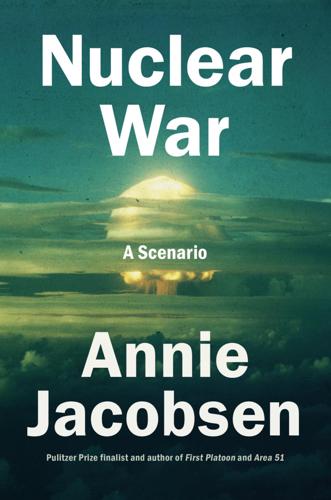
Nuclear War: A Scenario
by
Annie Jacobsen
Published 25 Mar 2024
“[It’s] a rare case of a twenty-first-century tool about a controversial technology that has allowed people of differing opinions to at least agree on the basic technical dimensions of the problem,” he says. For further reading on nuclear effects, see: Harold L. Brode, “Fireball Phenomenology,” RAND Corporation, 1964; Office of Technology Assessment, The Effects of Nuclear War, May 1979; Theodore Postol, “Striving for Armageddon: The U.S. Nuclear Forces Modernization Program, Rising Tensions with Russia, and the Increasing Danger of a World Nuclear Catastrophe Symposium: The Dynamics of Possible Nuclear Extinction,” New York Academy of Medicine, February 28–March 1, 2015, author copy; Lynn Eden, Whole World on Fire: Organizations, Knowledge, and Nuclear Weapons Devastation (Ithaca, NY: Cornell University Press, 2004), ch. 1: “Complete Ruin”; Steven Starr, Lynn Eden, Theodore A.
…
GO TO NOTE REFERENCE IN TEXT “shatter into a zillion pieces”: Interview with Glen McDuff. GO TO NOTE REFERENCE IN TEXT senior commanders of the General Staff: Alexis A. Blanc et al., “The Russian General Staff: Understanding the Military’s Decision Making Role in a ‘Besieged Fortress,’ ” RAND Corporation, 2023; Andrei Kartapolov, “The Higher the Combat Capabilities of Russian Troops, the Stronger the CSTO,” Parliamentary Assembly of the Collective Security Treaty Organization (RU), December 22, 2022. GO TO NOTE REFERENCE IN TEXT “I honestly don’t think”: Interview with Leon Panetta.
…
GO TO NOTE REFERENCE IN TEXT known as Tundra: Bart Hendrickx, “EKS: Russia’s Space-Based Missile Early Warning System,” The Space Review, February 8, 2021; “Tundra, Kupol, or EKS (Edinaya Kosmicheskaya Sistema),” Gunter’s Space Page (space.skyrocket.de). GO TO NOTE REFERENCE IN TEXT deeply flawed: Anthony M. Barrett, “False Alarms, True Dangers: Current and Future Risks of Inadvertent U.S.-Russian Nuclear War,” RAND Corporation, 2016. GO TO NOTE REFERENCE IN TEXT “Tundra is not great”: Interview with Pavel Podvig. “But Russia has an early-warning system that works differently than in the United States.” GO TO NOTE REFERENCE IN TEXT “don’t work accurately”: Interview with Ted Postol.
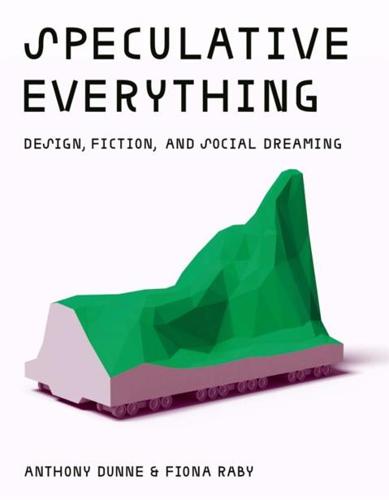
Speculative Everything: Design, Fiction, and Social Dreaming
by
Anthony Dunne
and
Fiona Raby
Published 22 Nov 2013
Bel Geddes intended it to be built and flown between Chicago and London, but sadly, was unable to raise the necessary funding. Norman Bel Geddes, Airliner No. 4, 1929. Image courtesy of the Edith Lutyens and Norman Bel Geddes Foundation. In the shadowlands of big thinking is the RAND Corporation and Herman Kahn. The RAND Corporation developed many of the techniques used today for scenario building." Kahn, who coined the phrase "thinking the unthinkable," more than many, really did think the unthinkable. At one point he reconceptualized the practicalities of nuclear war by thinking through the aftermath in a rational way: what the costs would be and how America could rebuild itself after a nuclear war.
…
THE UNITED MICRO-KINGDOMS: A THOUGHT EXPERIMENT20 Inspired by all this big thinking we decided to try a design experiment to take the literary imagination behind the Sternberg Solution series, or The World, Who Wants It, and combine it with more concrete design speculations. After finding the wonderfully titled The Beginner's Guide to NationBuilding published by the RAND Corporation in 2007,21 we began to wonder how nations were built and if states could be designed. Architects have long developed master plans for cities and regions. Could we talk about big ideas through small things? The Design Museum in London invited us to try. It is common in the design of technology products and services to start with personas, then develop scenarios, all within existing reality.
…
Available at http://www.walkerart.org/ magazine/2011/metahavens-facestate. Accessed December 23, 2012. 20. The project was commissioned by the Design Museum in London and exhibited there as "The United Micro Kingdoms: A Design Fiction" between May 1 and August 25, 2012. 21. James Dobbins et al., The Beginner's Guide to Nation - Building (Santa Monica: RAND Corporation, 2007). Available at http://www.rand.org/pubs/ monographs/MG557.html. Accessed December 24, 2012. 22. Torie Bosch, "Sci-Fi Writer Bruce Sterling Explains the Intriguing New Concept of Design Fiction," Slate blog, March 2, 2012. Available at http:// www.slate.com/blogs/future_tense/2012/03/02/bruce_sterling_on_design_ fictions_.html.

Four Battlegrounds
by
Paul Scharre
Published 18 Jan 2023
“First Day on the Somme,” updated September 12, 2021, https://en.wikipedia.org/wiki/First_day_on_the_Somme. 277military tactics had finally adapted: Biddle, Military Power, 33–35. 277swarming: John Arquilla and David Ronfeldt, Swarming and the Future of Conflict (RAND Corporation, 2000), https://www.rand.org/pubs/documented_briefings/DB311.html; Sean J. A. Edwards, Swarming on the Battlefield: Past, Present, and Future (RAND Corporation, 2000), https://www.rand.org/pubs/monograph_reports/MR1100.html; Sean J. A. Edwards, Swarming and the Future of Warfare (RAND Corporation, 2005), https://www.rand.org/pubs/rgs_dissertations/RGSD189.html; Paul Scharre, Robotics on the Battlefield Part II: The Coming Swarm (Center for a New American Security, October 15, 2014), https://www.cnas.org/publications/reports/robotics-on-the-battlefield-part-ii-the-coming-swarm. 277maneuver warfare: The term “maneuver warfare” sometimes is used differently to describe a philosophy of combat, rather than the more narrow meaning in which it is used here pertaining to the physical movements of units in spatial relation to each other.
…
Morgan et al., Military Applications of Artificial Intelligence: Ethical Concerns in an Uncertain World (RAND Corporation, 2020), https://www.rand.org/pubs/research_reports/RR3139-1.html; Michael C. Horowitz, Paul Scharre, and Alexander Velez-Green, A Stable Nuclear Future? The Impact of Autonomous Systems and Artificial Intelligence (arXiv.org, 2019), https://arxiv.org/abs/1912.05291; Edward Geist and Andrew J. Lohn, How Might Artificial Intelligence Affect the Risk of Nuclear War? (RAND Corporation, 2018), https://www.rand.org/pubs/perspectives/PE296.html. 286Lethal autonomous weapons: Paul Scharre, Army of None: Autonomous Weapons and the Future of War (New York: W.W.
…
Similar to the approach that the MAVLab team used for their drone, it relied on “redundancy, . . . self-checking, self-testing components, and isolation,” Howell said. But to do that “takes intention from the start,” he said. “It takes top cover to say this is worth spending money on.” Multiple independent reports have said DoD needs to improve its processes for AI assurance. A 2019 congressionally mandated independent assessment by the RAND Corporation found that DoD’s processes were “nowhere close to ensuring the performance and safety of AI applications, particularly where safety-critical systems are concerned.” The National Security Commission on AI also concluded that “TEVV of traditional legacy systems is not sufficient” at providing adequate assurance for AI systems, and that “an entirely new type of TEVV will be needed.”

Stealth
by
Peter Westwick
Published 22 Nov 2019
In 1946 he joined a group of prominent American aeronautical engineers who went to Brazil, teaching aeronautics and advising Brazil’s Air Ministry on how to build its aviation business. It was the first of several moves that revealed a contrarian streak in Jones. After a few years in Brazil he returned to California to take a job at the RAND Corporation, the Air Force think tank. At RAND he did cost-benefit analyses of transport aircraft, showing the trade-offs between various designs in terms of cost, range, speed, and payload—and in the process showing that an airlift could be used not just in emergencies (the recent Berlin Airlift being the prime example) but as a primary strategy, by allowing the US to keep a smaller garrison army in Western Europe and reinforce it quickly with stateside troops in case of war.
…
In the 1980s, noting the alarm raised by Soviet theorists, some American strategists pushed for a fundamental reappraisal of America’s Cold War strategy. The push was led by Albert Wohlstetter, whom one scholar has called “the alpha male of strategic studies” in the Cold War. An influential architect of nuclear strategy at the RAND Corporation, Wohlstetter had then taught at the University of Chicago, from where his intellectual progeny propagated the neoconservative movement, and he now ran his own consulting firm, called Pan Heuristics.29 Wohlstetter had chaired the LRRD seminars of the early 1970s, and now, a decade later, he developed the ideas they had introduced.
…
Siegel, “A Theoretical Method for the Calculation of the Radar Cross Sections of Aircraft and Missiles,” July 1959 (available at www.dtic.mil/dtic/tr/fulltext/u2/227695.pdf). 21 Leon Peters Jr., “A Brief History of the ElectroScience Laboratory” (available at https://electroscience.osu.edu/sites/electroscience.osu.edu/files/uploads/about/history.pdf). 22 Kuehl, “The Radar Eye Blinded,” 252. On the Quail, see Glenn A. Kent, Thinking about America’s Defense: An Analytical Memoir (Santa Monica, CA: Rand Corporation, 2008), 149–53. 23 Bernard C. Nalty, Tactics and Techniques of Electronic Warfare: Electronic Countermeasures in the Air War against North Vietnam, 1965–1973 (Newtown, CT: Defense Lion Publications, 2013); Richard P. Hallion, Storm over Iraq: Air Power and the Gulf War (Washington, DC: Smithsonian Books, 1992), 57–61.
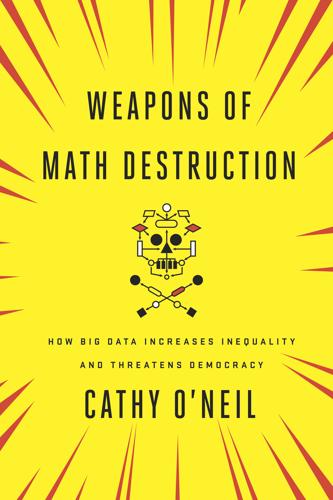
Weapons of Math Destruction: How Big Data Increases Inequality and Threatens Democracy
by
Cathy O'Neil
Published 5 Sep 2016
Lambert Adolphe Jacques Quetelet: Lily Dayton, “BMI May Not Be the Last Word on Health Risks, Some Experts Say,” Los Angeles Times, December 19, 2014, www.latimes.com/health/la-he-bmi-20141220-story.html. Keith Devlin, the mathematician: Keith Devlin, “Top 10 Reasons Why The BMI Is Bogus,” NPR, July 4, 2009, www.npr.org/templates/story/story.php?storyId=106268439. the $6 billion wellness industry: Rand Corporation, “Do Workplace Wellness Programs Save Employers Money?,” Rand Corporation Research Brief, 2013, www.rand.org/content/dam/rand/pubs/research_briefs/RB9700/RB9744/RAND_RB9744.pdf. “Here are the facts”: Joshua Love, “4 Steps to Implement a Successful Employee Wellness Program,” Forbes, November 28, 2012, www.forbes.com/sites/theyec/2012/11/28/4-steps-to-implement-a-successful-employee-wellness-program/.
…
In fact, it is encouraged by the government. The Affordable Care Act, or Obamacare, invites companies to engage workers in wellness programs, and even to “incentivize” health. By law, employers can now offer rewards and assess penalties reaching as high as 50 percent of the cost of coverage. Now, according to a study by the Rand Corporation, more than half of all organizations employing fifty people or more have wellness programs up and running, and more are joining the trend every week. There’s plenty of justification for wellness programs. If they work—and, as we’ll see, that’s a big “if”—the biggest beneficiary is the worker and his or her family.
…
+com/+2015/+06/+09/+education/+us-+to-+forgive-+federal-+loans-+of-+corinthian-+college-+students.+html. investigators at CALDER/American Institutes: Rajeev Darolia, Cory Koedel, Paco Martorell, Katie Wilson, and Francisco Perez-Arce, “Do Employers Prefer Workers Who Attend For-Profit Colleges? Evidence from a Field Experiment,” RAND Corporation, Santa Monica, CA, 2014, accessed January 9, 2016, www.rand.+org/+pubs/+working_+papers/+WR1054.+html. The top 20 percent of the population: William Domhoff, “Wealth, Income, and Power,” Who Rules America?, first posted September 2005, updated February 2013, accessed January 9, 2016, http://whorulesamerica.
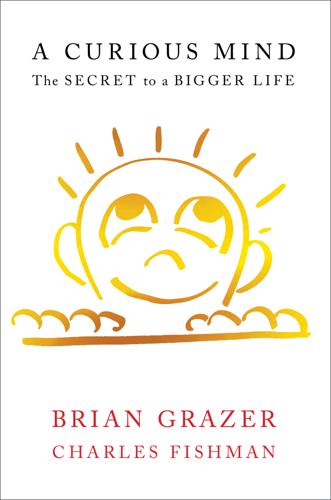
A Curious Mind: The Secret to a Bigger Life
by
Brian Grazer
and
Charles Fishman
Published 6 Apr 2014
Cox: chief lobbyist for the National Rifle Association Steve Coz: former editor of National Enquirer Donald Cram: professor of chemistry at UCLA, Nobel laureate in chemistry Jim Cramer: investor, author, TV personality, host of CNBC’s Mad Money Clyde Cronkhite: criminal justice expert, former police chief of Santa Ana, former deputy police chief of Los Angeles Mark Cuban: investor, owner of the NBA’s Dallas Mavericks Heidi Siegmund Cuda: journalist, former music critic for the Los Angeles Times Thomas Cummings: leading expert in designing high-performing organizations and strategic change at USC Marshall School of Business Fred Cuny: disaster relief specialist Mario Cuomo: governor of New York, 1983–1994 Alan Dershowitz: attorney, constitutional scholar, professor emeritus at Harvard Law School Donny Deutsch: advertising executive, TV personality Jared Diamond: evolutionary biologist, author, professor at UCLA, winner of the Pulitzer Prize Alfred “Fred” DiSipio: record promoter investigated during payola scandal DMX: musician, actor Thomas R. Donovan: former CEO of the Chicago Board of Trade Jack Dorsey: cofounder of Twitter, founder and CEO of Square Inc. Steve Drezner: specialist in systems analysis and military projects for RAND Corporation Ann Druyan: author and producer specializing in cosmology and popular science Marian Wright Edelman: founder and president of the Children’s Defense Fund Betty Edwards: author of Drawing on the Right Side of the Brain Peter Eisenhardt: astronomer, physicist at NASA’s Jet Propulsion Laboratory Paul Ekman: psychologist, pioneer in the study of emotions and their relation to facial expressions Anita Elberse: professor of business administration at Harvard Business School Eminem: musician, music producer, actor Selwyn Enzer: futurist, former director of USC Center for Futures Research Susan Estrich: lawyer, author, first female campaign manager of a major presidential campaign (for Michael Dukakis) Harold Evans: journalist, author, former editor of the Sunday Times, founded Condé Nast Traveler Ron W.
…
Beyoncé Knowles: musician, actress Christof Koch: neuroscientist and professor at California Institute of Technology, specializing in human consciousness Clea Koff: forensic anthropologist who worked with United Nations to reveal genocide in Rwanda Stephen Kolodny: attorney; practices family law Rem Koolhaas: architect, architectural theorist, professor at Harvard Graduate School of Design Jeff Koons: artist Jesse Kornbluth: journalist, editor of a cultural concierge service Richard Koshalek: former director of the Museum of Contemporary Art, Los Angeles Mark Kostabi: artist, composer Anna Kournikova: former professional tennis player Lawrence Krauss: theoretical physicist, cosmologist, professor at Arizona State University Steve Kroft: journalist, correspondent for CBS’s 60 Minutes William LaFleur: author, professor at the University of Pennsylvania, specializing in Japanese culture Steven Lamy: professor of international relations at the University of Southern California Lawrence Lawler: former special agent in charge of the Los Angeles field office of the FBI Nigella Lawson: journalist, author, food writer, TV host Sugar Ray Leonard: professional boxer who won world titles in five weight divisions Maria Lepowsky: anthropologist, professor at University of Wisconsin–Madison, lived with the indigenous people of a Papua New Guinea island Lawrence Lessig: activist for Internet freedom and Net neutrality, professor at Harvard Law School Cliff Lett: professional race car driver, designer of radio-controlled cars Robert A. Levine: former economist at RAND Corporation Ariel Levy: journalist, staff writer at New York magazine Dany Levy: founder of DailyCandy email newsletter Roy Lichtenstein: Pop artist John Liebeskind: former professor at UCLA, leading researcher in the study of pain and its relation to health Alan Lipkin: former special agent for the criminal investigation division of the IRS Margaret Livingstone: neurobiologist specializing in vision, professor at Harvard Medical School Tone Loc: musician, actor Elizabeth Loftus: cognitive psychologist and expert on human memory, professor at the University of California, Irvine Lisa Love: West Coast director for Vogue and Teen Vogue Jim Lovell: Apollo-era astronaut, commander of the crippled Apollo 13 mission Thomas Lovejoy: ecologist, professor at George Mason University, former assistant secretary for environmental and external affairs at the Smithsonian Institution, expert in tropical deforestation Malcolm Lucas: chief justice of the California Supreme Court, 1987–1996 Oliver Luckett: founder and CEO of social media content company the Audience Frank Luntz: political consultant and pollster Peter Maass: author and journalist who covers international affairs, war, and conflict Norman Mailer: author, playwright, filmmaker, journalist, cofounder of the Village Voice Sir John Major: prime minister of the United Kingdom, 1990–1997 Michael Malin: astronomer, designer, developer of cameras used to explore Mars P.
…
Army general Ned Preble: former executive, Synectics creative problem-solving methodology Ilya Prigogine: chemist, professor at the University of Texas at Austin, Nobel laureate in chemistry, author of The End of Certainty: Time, Chaos, and the New Laws of Nature Prince: musician, music producer, actor Wolfgang Puck: chef, restaurateur, entrepreneur Pussy Riot: Maria Alyokhina and Nadezhda Tolokonnikova, the two members of the Russian feminist punk rock group who served time in prison Steven Quartz: philosopher, professor at California Institute of Technology, specializing in the brain’s value systems and how they interact with culture James Quinlivan: analyst at the RAND Corporation, specializing in introducing change and technology into large organizations William C. Rader: psychiatrist, administers stem cell injections for a variety of illnesses Jason Randal: magician, mentalist Ronald Reagan: president of the United States, 1981–1989 Sumner Redstone: media magnate, businessman, chairman of CBS, chairman of Viacom Judith Regan: editor, book publisher Eddie Rehfeldt: executive creative director for the communications firm Waggener Edstrom David Remnick: journalist, author, editor of the New Yorker, winner of the Pulitzer Prize David Rhodes: president of CBS News, former vice president of news for Fox News Matthieu Ricard: Buddhist monk, photographer, author of Happiness: A Guide to Developing Life’s Most Important Skill Condoleezza Rice: U.S. secretary of state, 2005–2009, former U.S. national security advisor, former provost at Stanford University, professor of political economy at the Stanford Graduate School of Business Frank Rich: journalist, author, former columnist for the New York Times, editor at large for New York magazine Michael Rinder: activist and former senior executive for the Church of Scientology International Richard Riordan: mayor of Los Angeles, 1993–2001, businessman Tony Robbins: life coach, author, motivational speaker Robert Wilson and Richard Hutton: criminal defense attorneys Brian L.
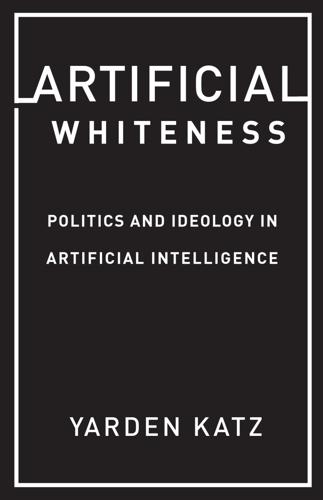
Artificial Whiteness
by
Yarden Katz
The field’s early systems demonstrate this slippage between AI as tool for solving military, managerial, and scientific problems and as an attempt to understand the human self. Perhaps the most celebrated early AI systems were developed by Allen Newell and Herbert Simon in the 1950s, who began working together at the RAND Corporation, a military think tank. The frameworks the pair would become famous for had the imprint of Newell’s earlier work at RAND, which was in fact about people, not machines. Newell and colleagues worked on “simulations” of an air defense control center responding to aerial attack. These were experiments with people who had to manage the control center under different scenarios staged by the experimenters.
…
Much of our research effort has gone into the design of programming languages (information-processing languages) that make the writing of such programs practicable.” Allen Newell, John C. Shaw, and Herbert A. Simon, Report on a General Problem-Solving Program, Memo P-1584 (Santa Monica, Calif: RAND Corporation, 1958). 27. The pair wrote that their work should be seen as “nonstatistical” and “makes very little use of the standard statistical apparatus.” For Newell and Simon, mental “content,” made of “diverse meaningful symbolic structures,” nearly defied reduction to numbers. Newell and Simon, Human Problem Solving, 13.
…
The long reign of alchemy has shown that any research which has had an early success can always be justified and continued by those who prefer adventure to patience.” Dreyfus, What Computers Still Can’t Do, 304. 14. Hubert L. Dreyfus, Alchemy and Artificial Intelligence, Report No. P-3244 (Santa Monica, Calif.: RAND Corporation, 1965). 15. Stuart E. Dreyfus and Hubert L. Dreyfus, The Scope, Limits, and Training Implications of Three Models of Aircraft Pilot Emergency Response Behavior, Report No. ORC-79-2 (Berkeley: Operations Research Center, University of California, February 1979), 32. 16. For acrimonious exchanges between prominent AI practitioners and Dreyfus, especially after Dreyfus was beaten in chess by a computer program, see Pamela McCorduck, Machines Who Think: A Personal Inquiry Into the History and Prospects of Artificial Intelligence, University of Pittsburgh Publication (New York: Freeman, 1979), chap. 9. 17.

What We Say Goes: Conversations on U.S. Power in a Changing World
by
Noam Chomsky
and
David Barsamian
Published 1 Oct 2007
There is a new study just done by a couple of major terrorism specialists, Peter Bergen and others, and their estimate is that what they call “the Iraq effect”—the effect of the Iraq war on terrorism—has been a “sevenfold increase in the yearly rate of fatal jihadist attacks,” focused particularly on regions and populations that have been involved in the invasion, “amounting to literally hundreds of additional terrorist attacks and thousands of civilian lives lost.”12 That’s quite an increase. It’s a long, careful, important study, using the Rand Corporation database.13 I haven’t seen anything about the report in the mainstream press. You can also see this short-term thinking right now in the case of Iran. I don’t know if the Bush administration is planning to invade, but in order to achieve a short-term gain in domestic political power and shifting attention away from their catastrophe in Iraq, war planners may trap themselves into invading, with consequences that are unimaginable.
…
In a demonstration of their military capacity, the Chinese recently shot down one of their own anti-satellite systems.19 Afterward, there was a big hubbub: China is starting the Cold War, they’re a major threat, and so on. All this is totally predictable. I wrote about the possibility of this happening years ago—not because I have any insight, I was just quoting the major strategic analysts. You can read about it in Hegemony or Survival.20 I quoted the Rand Corporation, leading military figures, and so on, all of whom pointed out the obvious, that other countries regard what we call “missile defense” as a first-strike weapon. A missile shield could never impede a first strike, but it could conceivably impede a retaliatory strike. So if you have a functioning missile defense system, and the adversary has no way around it, they’re going to understand it as a first-strike weapon.
…
Foreign Policy and Human Rights Violations in Latin America: A Comparative Analysis of Foreign Aid Distributions,” Comparative Politics 13, no. 2 (January 1981), pp. 155, 157. 10 For discussion, see Chomsky, Hegemony or Survival, pp. 52–53. 11 Alfredo Molano, Dispossessed: Chronicles of the Desterrados of Colombia, trans. Daniel Bland (Chicago: Haymarket Books, 2005), see foreword by Aviva Chomsky. 12 See C. Peter Rydell and Susan S. Everingham, Controlling Cocaine: Supply Versus Demand Programs, Rand Corporation (2004), online at http://www.rand.org/pubs/monograph_reports/MR331/index2.html. 13 Hugh O’Shaughnessy and Sue Branford, Chemical Warfare in Colombia: The Costs of Coca Fumigation (London: Latin America Bureau, 2005), p. 120, citing Martin Jelsma and Pien Metaal, “Cracks in the Vienna Consensus: The UN Drug Control Debate,” Drug War Monitor, Washington, D.C., Washington Office on Latin America, January 2004. 14 Ewen MacAskill and Suzanne Goldenberg, “Bush’s Last Stand,” Guardian (London), 11 January 2007; Michael Gordon, “Deadliest Bomb in Iraq Is Made in Iran, U.S.
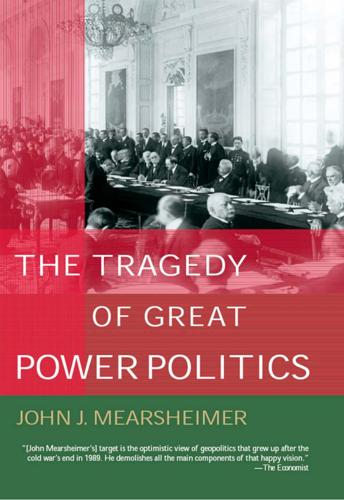
The Tragedy of Great Power Politics
by
John J. Mearsheimer
Published 1 Jan 2001
Lambeth, “Uncertainties for the Soviet War Planner,” International Security 7, No. 3 (Winter 1982–83), pp. 139–66. 174. Benjamin S. Lambeth, Selective Nuclear Options in American and Soviet Strategic Policy, R-2034-DDRE (Santa Monica, CA: RAND Corporation, December 1976); and Jack L. Snyder, The Soviet Strategic Culture: Implications for Limited Nuclear Options, R-2154-AF (Santa Monica, CA: RAND Corporation, September 1977). 175. Robert Jervis, for example, has written a book titled The Illogic of American Nuclear Strategy (Ithaca, NY: Cornell University Press, 1984). 176. See note 159 in this chapter. 177. One author estimates that the ratio of conventional to nuclear spending in the U.S. defense budget was roughly 1.45:1 in 1961, 4:1 in 1971, and 6.7:1 in 1981.
…
Russia and the Outside World, CSIA Studies in International Security (Washington, DC: Brassey’s, 1994), pp. 77–106; and Sergey Rogov, Security Concerns of the New Russia, vol. 1, The Challenges of Defending Russia, Occasional Paper (Alexandria, VA: Center for Naval Analyses, July 1995). 90. See Zalmay Khalilzad et al., The United States and a Rising China: Strategic and Military Implications (Santa Monica, CA: RAND Corporation, 1999); and Michael D. Swaine and Ashley J. Tellis, Interpreting China’s Grand Strategy: Past, Present, and Future (Santa Monica, CA: RAND Corporation, 2000). 91. For a generally optimistic assessment of the future of China’s economy, see World Bank, China 2020: Development Challenges in the New Century (Washington, DC: World Bank, 1997). For more pessimistic assessments, see the articles in “The FPRI Conference on China’s Economy,” Orbis 43, No. 2 (Spring 1999), pp. 173–294; and Nicholas R.
…
See Posen, “War for Kosovo,” p. 81. 66. Pape, Bombing to Win, p. 68. For a discussion of why punishment from the air usually fails, see ibid., pp. 21–27; Stephen T. Hosmer, Psychological Effects of U.S. Air Operations in Four Wars, 1941–1991: Lessons for U.S. Commanders, RAND Report MR-576-AF (Santa Monica, CA: RAND Corporation, 1996); and Irving L. Janis, Air War and Emotional Stress: Psychological Studies of Bombing and Civilian Defense (New York: McGraw-Hill, 1951). 67. There is also some evidence in the public domain that a decapitation strategy was employed against Yugoslavia in 1999. Specifically, it appears from some of the targets that NATO struck (TV stations, Milosevic’s house, important government buildings, party headquarters, high-level military headquarters, and the businesses of Milosevic’s close friends) that it aimed either to kill him or to precipitate a coup.

Tribe: On Homecoming and Belonging
by
Sebastian Junger
Published 23 May 2016
Hanwella, R., and V. de Silva. “Mental Health of Special Forces Personnel Deployed in Battle.” Social Psychiatry and Psychiatric Epidemiology 47 (2012): 1343–51. Helmus, Todd C., and Russell W. Glenn. Steeling the Mind: Combat Stress Reactions and Their Implications for Urban Warfare. Santa Monica, CA: RAND Corporation, 2005. Hirshon, J. M., et al. “Psychological and Readjustment Problems Associated with Emergency Evacuations of Peace Corps Volunteers.” Journal of Travel Medicine 4, no. 3 (September 1997): 128–31. Institute of Medicine of the National Academies. Treatment for Posttraumatic Stress Disorder in Military and Veteran Populations: Initial Assessment.
…
Cohesion, Anticipated Breakdown, and Endurance in Battle: Considerations for Severe and High Intensity Combat. Unpublished manuscript, Washington, DC: Walter Reed Army Institute of Research, 1979. ———. The Psychological and Psychosocial Consequences of Combat and Deployment with Special Emphasis on the Gulf War. Santa Monica, CA: RAND Corporation, 2001. Medical Surveillance Monthly Report 20, no. 3 (March 2013). https://www.afhsc.mil/documents/pubs/msmrs/2013/v20_n03.pdf. Morley, Christopher A., and Brandon A. Kohrt. “Impact of Peer Support on PTSD, Hope, and Functional Impairment.” Journal of Aggression, Maltreatment and Trauma 22 (2013): 714–34.
…
Global Research News, February 12, 2014. http://www.globalresearch.ca/us-wars-in-afghanistan-iraq-to-cost-6-trillion/5350789. Tanielian, Terri, and Lisa H. Jaycox, eds. Invisible Wounds of War: Psychological and Cognitive Injuries, Their Consequences, and Services to Assist Recovery. Santa Monica, CA: RAND Corporation, 2008. http://www.rand.org/content/dam/rand/pubs/monographs/2008/RAND_MG720.sum.pdf. Thompson, Mark. “They Don’t Seem to Get Better…” Time, February 23, 2012. http://nation.time.com/2012/02/23/they-dont-seem-to-get-better/. Toll, W. A., et al. “Promoting Mental Health and Psychosocial Well-Being in Children Affected by Political Violence.”
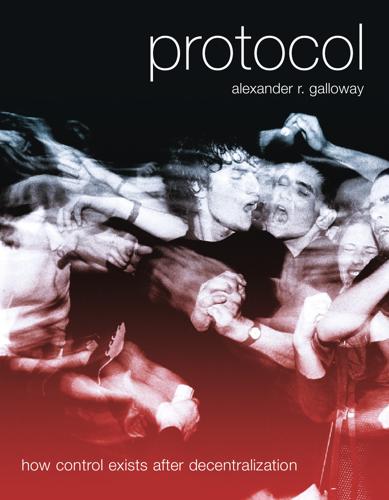
Protocol: how control exists after decentralization
by
Alexander R. Galloway
Published 1 Apr 2004
“The launching of the sputniks told us,” wrote John Dunning for The New York Times Introduction 4 ration decided to create a computer network that was independent of centralized command and control, and would thus be able to withstand a nuclear attack that targets such centralized hubs. In August 1964, he published an eleven-volume memorandum for the Rand Corporation outlining his research.6 Baran’s network was based on a technology called packet-switching7 that allows messages to break themselves apart into small fragments. Each fragment, or packet, is able to find its own way to its destination. Once there, the packets reassemble to create the original message.
…
The highway system was first approved by Congress immediately following World War II, but was not officially begun until June 29, 1956, when President Eisenhower signed it into law. (This is exactly the same period during which Internet pioneer Paul Baran began experimenting with distributed, packet-switching computer technologies at the Rand Corporation.11) The highway system is a distributed network because it lacks any centralized hubs and offers direct linkages from city to city through a variety of highway combinations. For example, someone traveling from Los Angeles to Denver may begin by traveling on Interstate 5 north toward San Francisco turning northwest on Interstate 80, or head out on Interstate 15 toward Las Vegas, or even Interstate 40 toward Albuquerque.
…
These include standards for Ethernet18 (the most common local area networking protocol in use today), Bluetooth, Wi-Fi, and others. “The IEEE,” Paul Baran observed, “has been a major factor in the development of communications technology.”19 Indeed Baran’s own theories, which eventually would spawn the Internet, were published within the IEEE community even as they were published by his own employer, the Rand Corporation. Active within the United States are the National Institute for Standardization and Technology (NIST) and ANSI. The century-old NIST, formerly known as the National Bureau of Standards, is a federal agency that develops and promotes technological standards. Because it is a federal agency and not a professional society, it has no membership per se.
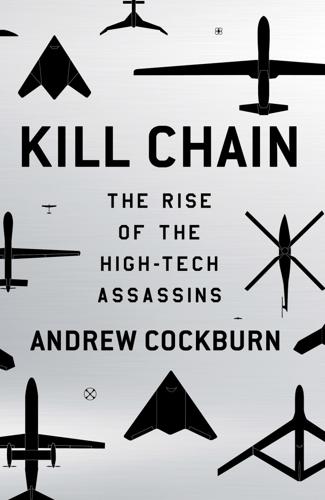
Kill Chain: The Rise of the High-Tech Assassins
by
Andrew Cockburn
Published 10 Mar 2015
This inherent problem was apparently lost on Cebrowski: Vice-Admiral Arthur K. Cebrowski and John A. Garstka, “Net-Centric Warfare, Its Origin and Future,” Proceedings Magazine, U.S. Naval Institute, January 1998. Two Rand Corporation researchers: John Arquilla and David Ronfeldt, eds., In Athena’s Camp: Preparing for Conflict in the Information Age (Santa Monica, CA: Rand Corporation, 1997). Their report, “Transforming Defense: National Security in the 21st Century”: Report of the National Defense Panel, “Power Projection,” December 1997. http://www.dod.gov/pubs/foi/administration_and_Management/other/902.pdf.
…
The Soviets even coined a helpful catchphrase to describe this claimed ability to see everything, strike anything—the “military technical revolution”—and proclaimed their intention of producing their own versions. In no time, talk of this revolution was gathering momentum in U.S. military commentaries, largely thanks to assiduous promotion by an already legendary Pentagon official, Andrew Marshall. Trained as an economist, Marshall had spent his early career at the Rand Corporation, the famed Santa Monica–based think tank staffed with brilliant minds devising nuclear war strategies for the U.S. Air Force, which financed the undertaking. In retrospect it is clear that Rand’s core mission was to devise strategies justifying and whenever possible enhancing the air force budget.
…
This inherent problem was apparently lost on Cebrowski, who suggested that if every soldier and warplane was connected up like the Wal-Mart cash registers, an entire force could operate as a coordinated mechanism, identifying and destroying targets with maximum efficiency and discrimination. Jasons pondering how to block the Ho Chi Minh Trail back in the summer of 1966 would have caught on to the idea immediately. Unsurprisingly, the defense intelligentsia was quick to fall into line. Two Rand Corporation researchers, David Ronfeldt and John Arquilla, academic foot soldiers in the revolution in military affairs, popularized the notions of “cyberwar” and “netwar” as well as the catchy slogan “It takes a network to defeat a network.” Meanwhile, politicians were getting in on the act. In 1996 Senators Joseph Lieberman and Dan Coats sponsored a National Defense Panel as a forum to advance “the revolution in military affairs.”
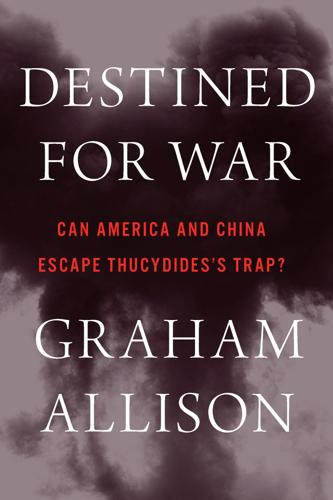
Destined for War: America, China, and Thucydides's Trap
by
Graham Allison
Published 29 May 2017
New technologies allow for asymmetric responses, like missiles that can be launched from the Chinese mainland to destroy aircraft carriers, or antisatellite weapons that for a million dollars can destroy a multibillion-dollar US satellite.62 Although it has devoted on average just 2 percent of its GDP to defense since the late 1980s (the US has spent closer to 4 percent),63 three decades of double-digit economic growth have allowed Chinese military capabilities to expand eightfold.64 Today its defense budget of $146 billion in market exchange rates (or $314 billion in PPP) ranks second only to that of the US, and is twice Russia’s.65 China’s growing military might will be discussed in greater detail in chapter 6. For now, suffice it to say that China has already secured a number of advantages on the battlefield. The most authoritative assessment of the changing balance of military power in the region is a 2015 RAND Corporation study called “The U.S.-China Military Scorecard.” The report finds that, by 2017, China will have an “advantage” or “approximate parity” in six of the nine areas of conventional capability: for instance, in launching attacks on air bases or surface targets, achieving air superiority, and preventing an opponent from using space-based weapons.
…
But in the 1970s, China also claimed sovereignty over the islands. Chinese ships regularly pass through these waters, raising tensions between Beijing and Tokyo and risking a collision that could set off a chain reaction. Consider a scenario that provided the story line for a recent war game designed by the RAND Corporation.30 A group of Japanese ultranationalists sets sail for the Senkakus in small civilian watercraft. On social media, they explain they are headed for Kuba Jima, one of the smaller islands, which they intend to claim and occupy on behalf of Japan. They land and begin building unidentified structures.
…
Recall the Rule of 72: divide 72 by the annual growth rate to determine how long it will take to double. [back] 65. International Institute for Strategic Studies, The Military Balance 2016 (New York: Routledge, 2016), 19. [back] 66. Eric Heginbotham et al., The U.S.-China Military Scorecard: Forces, Geography, and the Evolving Balance of Power, 1996–2017 (Santa Monica, CA: RAND Corporation, 2015), xxxi, xxix. [back] 67. In remarks to reporters at the May 2012 Strategic and Economic Dialogue in Beijing, Clinton said of the US and China: “We look at the future with great optimism. And we believe that neither of us can afford to keep looking at the world through old lenses, whether it’s the legacy of imperialism, the Cold War, or balance-of-power politics.

I, Warbot: The Dawn of Artificially Intelligent Conflict
by
Kenneth Payne
Published 16 Jun 2021
That’s what drove previous technical changes, like the adoption of steam engines and steel hulls in the Royal Navy, despite centuries of tradition and vested interest in wood and sail. It drove the creation of independent air forces, when conceptual thinking called for ‘strategic bombing’ of key targets far behind enemy lines. Those air forces stimulated new intellectual thinking about war, as happened in the RAND Corporation of the 1950s and 60s, where much thought went into theorising nuclear war and designing forces accordingly. And now, there is nascent change in western armed forces in response to advances in AI. The US Defense Department has worked to deepen its existing ties with Silicon Valley, to accelerate the development and adoption of new technologies.
…
Pioneered by the brilliant John von Neumann, co-inventor of the modern computer, game theory looked like a good way of modelling the sorts of adversarial behaviours that took place in international relations. It was enthusiastically embraced by a group of quantitative theorists then growing in prominence, some of whom worked for the US Air Force’s inhouse thinktank, the RAND Corporation.22 Schelling himself was a mathematically trained economist, and so was well placed to take advantage of the new technique. But what makes Schelling’s work of enduring importance is his use of metaphor, not maths. His strategists were emphatically men, not machines. To pare away the complexity of the real world, game theoreticians make some bold simplifications about human minds.
…
In International Conference on Intelligent Human Systems Integration, pp. 999–1006. 11. Wong, Yuna Huh, John Yurchak, Robert W. Button, Aaron Frank, Burgess Laird, Osonde A. Osoba, Randall Steeb, Benjamin N. Harris, and Sebastian Joon Bae, Deterrence in the Age of Thinking Machines. Santa Monica, CA: RAND Corporation, 2020. https://www.rand.org/pubs/research_reports/RR2797.html. 12. Russon, Mary-Ann. ‘The robot that watches as you cross the road’, BBC News, 28 August 2018, https://www.bbc.co.uk/news/business-45330451. 13. Schelling, Thomas. Arms and Influence New Haven: Yale University Press, 1966, p. 116. 14.
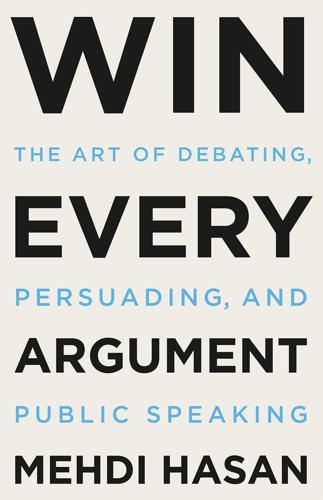
Win Every Argument: The Art of Debating, Persuading, and Public Speaking
by
Mehdi Hasan
Published 27 Feb 2023
Remember former Trump adviser Kellyanne Conway’s now-notorious reference to “alternative facts”? Or former Trump lawyer Rudy Giuliani’s ridiculous claim that “truth isn’t truth”? In recent years, we have witnessed a full-scale and very global assault on truth, on reason, on reality itself. Back in 2018, the RAND Corporation coined the term Truth Decay to refer to what it called the “diminishing role of facts and analysis in American public life.” Two years earlier, the phrase post-truth was the Oxford English Dictionary’s word of the year, defined as “relating to or denoting circumstances in which objective facts are less influential in shaping public opinion than appeals to emotion and personal belief.”
…
In recent years, the former KGB agent and his acolytes in state-run media have perfected what has been dubbed “the fire hose of falsehood.” Whether it is justifying the illegal invasion of Ukraine or interfering in U.S. elections, the Russian government’s model of propaganda, to quote from a study by the RAND Corporation, uses “high numbers of channels and messages and a shameless willingness to disseminate partial truths or outright fictions.” But the RAND study also suggests this piece of handy advice for fighting disinformation: “Don’t expect to counter Russia’s fire hose of falsehood with the squirt gun of truth.
…
How did I prepare for my clash with him? Research, research, research! My team and I pored over not only his 2006 memoir, My Year in Iraq, but the memoirs of other former diplomats and reporters who served in Iraq at the same time as Bremer, not to mention documentaries, reports, and studies from PBS, the RAND Corporation, Human Rights Watch, the Special Inspector General for Iraq Reconstruction, and many more. My list of questions and follow-ups for Bremer ran ten pages in length, brimming with quotes, stats, and footnotes. I doubt he had been expecting to be challenged in such detail—or that he had ever been challenged in such a way before!

Computer: A History of the Information Machine
by
Martin Campbell-Kelly
and
Nathan Ensmenger
Published 29 Jul 2013
And in policy circles, the systems theorist Herman Kahn would pioneer the application of game theory and computer simulation to the geopolitics of thermonuclear war. Against the backdrop of late 1950s Cold War tensions, Kahn and his colleagues at the RAND Corporation developed computerized war games to “simulate the unthinkable.” The use of computer games to model complex social phenomena, having soon transcended the walls of the RAND Corporation and the Pentagon, was eventually applied to political analysis, policy formation, and city planning. THE COMPUTER BECOMES A COMMODITY Today, with the hindsight of historical perspective, IBM’s early domination of the computer market can be seen as largely a fortuitous inheritance.
…
The first major firm in the large-systems sector of software contracting was the RAND Corporation, a government-owned defense contractor. It developed the software for the SAGE air-defense project. When the SAGE project was begun in the early 1950s, although IBM was awarded the contract to develop and manufacture the mainframe computers, writing the programs for the system—estimated at a million lines of code—was way beyond IBM’s or anyone else’s experience. The contract for the SAGE software was therefore given to the RAND Corporation in 1955. Although lacking any actual large-scale software writing capability, the corporation was judged to have the best potential for developing it.
…
Martin Greenberger, a professor at the MIT Management School who was probably the first to describe the utility concept in print, argued in an Atlantic Monthly article that the drive for computer utilities was unstoppable and that “[b]arring unforeseen obstacles, an on-line interactive computer service, provided commercially by an information utility, may be as commonplace by A.D. 2000 as the telephone service is today.” The computer utility vision was widely shared by computer pundits at the end of the 1960s. Paul Baran, a computer-communications specialist at the RAND Corporation, waxed eloquent about the computer utility in the home: And while it may seem odd to think of piping computing power into homes, it may not be as far-fetched as it sounds. We will speak to the computers of the future in a language simple to learn and easy to use. Our home computer console will be used to send and receive messages—like telegrams.
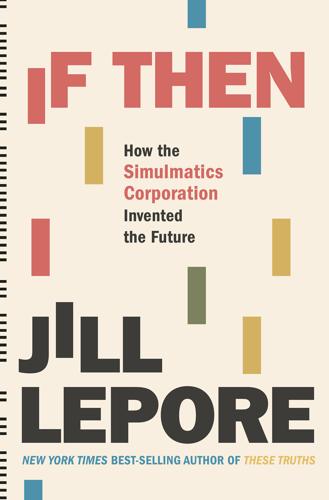
If Then: How Simulmatics Corporation Invented the Future
by
Jill Lepore
Published 14 Sep 2020
— antiwar movement and, 234–35 — arrest in Atlanta, 120 — assassination, 102, 268–69, 270, 276, 322 — Montgomery bus boycott, 73–74 — speech at Lincoln Memorial, 199 — Wofford and, 14, 112 Kissinger, Henry, 290 Kochen, Manfred, 76–77, 347n Komer, Robert, 228, 241, 247, 248, 250, 267 Kristol, Irving, 192, 308, 367n Kubrick, Stanley, 148, 173–75, 276–77, 364n Lang, Kurt, 265 Lanier, Jaron, 322 Lansdale, Edward, 61, 219 Lasky, Victor, 132–33 Lasswell, Harold — Burdick and, 31–33 — Center for Advanced Study in the Behavioral Sciences, 34, 37, 44 — content analysis, 55, 262 — education and early career, 33 — Experimental Division for the Study of Wartime Communications, 53–54 — Greenfield and, 13, 31, 33–34, 61 — on Morgan’s article in Harper’s, 126 — Pool and, 52, 53–55, 343nn — RAND Corporation and, 50 — Simulmatics Corporation founder, 32, 142 — at Stanford, 54–55 — Stevenson and 1960 election, 103 Lazarsfeld, Paul — Bureau of Applied Social Research at Columbia, 34, 81–82, 84, 87 — Center for Advanced Study in the Behavioral Sciences, 34, 37, 44 — McPhee and, 81–82, 83–84, 87, 348n — RAND Corporation and, 50 — Stevenson and 1960 election, 103 Le, Kim, 238–39, 303 Lederer, William, 157–58, 182, 247–48, 361n Lehrer, Tom, 171 Leibovitz, Annie, 312 Lerner, Daniel, 54–55, 58, 344n Levandowski, Anthony, 328 Lewis, Anthony, 309 Leyland, George, 293–94, 384n “Liberty in Shackles” (Wicker), 309 Libraries of the Future (Licklider), 284 Library of Congress, 33, 53, 280 Licklider, J.C.R
…
He recommended turning the study of human behavior into a science, like physics, to be based on “experiment, the accumulation of data, the framing of general theories, attempts to verify the theories, and prediction.”25 After all, if a body of knowledge couldn’t be used to make predictions, what use was it? Before working for Ford, Gaither had helped found the RAND Corporation, in Santa Monica. RAND—short for “Research and Development”—had begun as an arm of the U.S. Air Force, part of the Douglas Aircraft Company, but in 1948, newly independent, and with funding from both the Department of Defense and the Ford Foundation, RAND had hired a pioneer in psychological warfare to head its new Social Science Division.26 Its projects included charting, mathematically, “a general theory of the future.”27 Prophecy is ancient, a species of mysticism.
…
Describing the social sciences as “the new humanities of the Twentieth Century,” Pool argued that while statesmen in times past had consulted philosophy, literature, and history, statesmen of the Cold War era were instead obligated to consult the behavioral sciences. The “McNamara revolution,” he argued, had “remade American defense policy in accordance with a series of ideas that germinated in the late 1950’s in the RAND corporation.” Given a choice “between policy based on moralisms and policy based on social science,” he was glad to report that the secretary of defense had rejected the humanities and morality in favor of behavioral science and rationality.30 The more unpopular the war in Vietnam, the deeper Pool’s commitment, and the closer he grew not only to the Pentagon but to the White House.
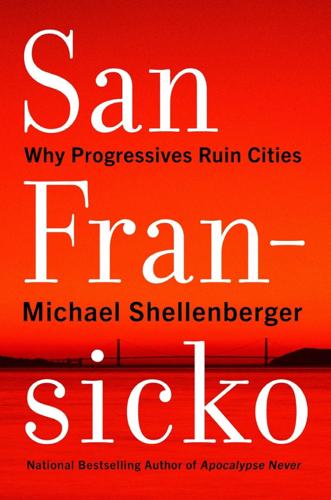
San Fransicko: Why Progressives Ruin Cities
by
Michael Shellenberger
Published 11 Oct 2021
Martins et al., “Changes in US Lifetime Heroin Use and Heroin Use Disorder: Prevalence from the 2001–2002 to 2012–2013 National Epidemiologic Survey on Alcohol and Related Conditions,” JAMA Psychiatry 74, no. 5 (2017): 445–55, doi:10.1001/jamapsychiatry.2017.0113. 77. Gregory Midgette et al., What America’s Users Spend on Illegal Drugs, 2006–2016 (Santa Monica, CA: RAND Corporation, 2019), www.rand.org. 78. Beau Kilmer, interview by the author, February 19, 2021. 79. Gregory Midgette et al., What America’s Users Spend on Illegal Drugs, 2006–2016 (Santa Monica, CA: RAND Corporation, 2019), www.rand.org. 80. Silvia S. Martins et al., “Prescription Opioid Use Disorder and Heroin Use Among 12–34 year-olds in the United States from 2002 to 2014,” Addictive Behaviors 65 (2017): 236–41, doi:10.1016/j.addbeh.2016.08.033. 81.
…
Goodman and Barbara Baker, eds., “State of Washington: Members of the Legislature, 1889–2014,” Legislative Information Center, State of Washington, June 2014, www.leg.wa.gov. 40. Michael Dardia et al., Military Base Closures: The Impact on California Communities (Santa Monica, CA: RAND Corporation, 1996), available at RAND Corporation, www.rand.org; Dan Walters, “The Decline and Fall of California’s Republican Party,” Orange County Register, December 2, 2019, www.ocregister.com. 41. E. J. Dionne, “Washington Talk; Greening of Democrats: An 80’s Mix of Idealism and Shrewd Politics,” New York Times, June 14, 1989, www.nytimes.com. 42.
…
The number of adults who had ever used heroin rose fivefold from 2001–02 to 2012–13, to 3.8 million, found a study of nearly 80,000 people published in the Journal of the American Medical Association. The share suffering addiction rose threefold to 1.1 million.76 Other studies find the same results. RAND Corporation found the number of heroin users nationally rose from 1.6 to 2.3 million, their spending on heroin rose from $31 to $43 billion, and heroin consumption rose from 27 to 47 million metric tons, between 2006 and 2016.77 “Heavy users drive this market,” a senior RAND analyst told me. “Eighty percent of consumption comes from twenty percent of the users, which is similar to alcohol.”78 RAND calculates the total US illegal drug market at around $146 billion per year, which is about the same size as the total US market for alcohol.79 Experts are unsure how many heroin users there are in the United States and estimates vary significantly, but studies find that there has been a significant increase in usage of heroin and other opiates over the last two decades.

The Rise of the Network Society
by
Manuel Castells
Published 31 Aug 1996
For a discussion of Internet’s prospects, see a study by the Rand Corporation available only on-line at the time of writing: Rand Corporation (1995). 72 Cerf (1999). 73 Kahn (1999). 74 Zook (2000c). 75 UNDP (1999); UNESCO (1999); US Department of Commerce (1999b); Castells and Kiselyova (2000); Zook (2000a). 76 See, for instance, Comision de nuevas tecnologias (1999). 77 Dutton (1999); UNESCO (1999). 78 Zook (2000b). 79 Markoff (1995). 80 De Kerckhove (1997). 81 Harmon (1999); Linus Torvalds (personal communication, 1999). 82 Himannen (2001). 83 Gitlin (1987); Rand Corporation (1995). 84 To follow Rheingold’s (1993) biological image. 85 Rheingold (1993). 86 Rheingold (1993); Turkle (1995); Jones (1995, 1997, 1998); Kiesler (1997). 87 Barlow (1995: 40). 88 Mitchell (1995, 1999). 89 Turkle (1995: 267). 90 Slouka (1995). 91 Wolton (1998). 92 Kraut et al. (1998). 93 Wellman et al. (1996); Wellman (1997); Wellman and Gulia (1999). 94 Castells (1972); Wellman (1979); Fischer (1982). 95 Wellman and Gulia (1999: 355). 96 Putnam (1995). 97 Wellman and Gulia (1999: 350). 98 Sproull and Kiesler (1991); Rand Corporation (1995). 99 Hiltz and Turoff (1993); Sato et al. (1995), US Department of Commerce (1999). 100 Gurstein (1990). 101 Montgomery (1999: 15). 102 Baym (1998: 55). 103 Dyson (1998). 104 US Library of Congress (1999). 105 Lanham (1993); Rand Corporation (1995). 106 Specter (1994). 107 Armstrong (1994). 108 Abramson et al. (1988); Epstein (1995). 109 Castells et al. (1996). 110 Ganley (1991); Varley (1991). 111 Patrice Riemens (personal communication – face to face, handwritten mail, electronic mail – 1997/99). 112 Schuler (1996). 113 Keck and Sikkink (1998). 114 December (1993), cited and summarized by Benson (1994). 115 De Kerckhove (1997: 51). 116 Dutton (1999). 117 Fischer (1992). 118 Rheingold (1993). 119 Castells and Kiselyova (2000). 120 Sullivan-Trainor (1994). 121 Telecommunications Council (1994). 122 Thery (1994). 123 Banegas (1993). 124 See, among a myriad of business sources on the matter, Bird (1994); Bunker (1994); Dalloz and Portnoff (1994); Herther (1994). 125 The Economist (1994a). 126 Schiller (1999). 127 Business Week (1994h). 128 Elmer-Dewwit (1993); Poirier (1993); Business Week (1994d). 129 New Media Markets (1993). 130 Owen (1999: ch.17). 131 Ministry of Posts and Telecommunications (1994); New Media Markets (1994). 132 Kaplan (1992); Sellers (1993); Booker (1994); Business Week (1994e); Lizzio (1994); Wexler (1994). 133 Owen (1999: 313). 134 Business Week (1994f). 135 Dentsu Institute for Human Studies (1994: 117). 136 Martin (1994). 137 Owen (1999: 4). 138 Bunker (1994); Business Week (1994f); Cuneo (1994); The Economist (1994a). 139 Piller (1994). 140 Tobenkin (1993); Martin (1994). 141 Van der Haak (1999). 142 Moran (1993). 143 Dentsu Institute for Human Studies (1994: 140–3). 144 Negroponte (1995). 145 Baudrillard (1972); Barthes (1978). 146 Oxford Dictionary of Current English (1992). 6 The Space of Flows Space and time are the fundamental, material dimensions of human life.
…
For a discussion of Internet’s prospects, see a study by the Rand Corporation available only on-line at the time of writing: Rand Corporation (1995). 72 Cerf (1999). 73 Kahn (1999). 74 Zook (2000c). 75 UNDP (1999); UNESCO (1999); US Department of Commerce (1999b); Castells and Kiselyova (2000); Zook (2000a). 76 See, for instance, Comision de nuevas tecnologias (1999). 77 Dutton (1999); UNESCO (1999). 78 Zook (2000b). 79 Markoff (1995). 80 De Kerckhove (1997). 81 Harmon (1999); Linus Torvalds (personal communication, 1999). 82 Himannen (2001). 83 Gitlin (1987); Rand Corporation (1995). 84 To follow Rheingold’s (1993) biological image. 85 Rheingold (1993). 86 Rheingold (1993); Turkle (1995); Jones (1995, 1997, 1998); Kiesler (1997). 87 Barlow (1995: 40). 88 Mitchell (1995, 1999). 89 Turkle (1995: 267). 90 Slouka (1995). 91 Wolton (1998). 92 Kraut et al. (1998). 93 Wellman et al. (1996); Wellman (1997); Wellman and Gulia (1999). 94 Castells (1972); Wellman (1979); Fischer (1982). 95 Wellman and Gulia (1999: 355). 96 Putnam (1995). 97 Wellman and Gulia (1999: 350). 98 Sproull and Kiesler (1991); Rand Corporation (1995). 99 Hiltz and Turoff (1993); Sato et al. (1995), US Department of Commerce (1999). 100 Gurstein (1990). 101 Montgomery (1999: 15). 102 Baym (1998: 55). 103 Dyson (1998). 104 US Library of Congress (1999). 105 Lanham (1993); Rand Corporation (1995). 106 Specter (1994). 107 Armstrong (1994). 108 Abramson et al. (1988); Epstein (1995). 109 Castells et al. (1996). 110 Ganley (1991); Varley (1991). 111 Patrice Riemens (personal communication – face to face, handwritten mail, electronic mail – 1997/99). 112 Schuler (1996). 113 Keck and Sikkink (1998). 114 December (1993), cited and summarized by Benson (1994). 115 De Kerckhove (1997: 51). 116 Dutton (1999). 117 Fischer (1992). 118 Rheingold (1993). 119 Castells and Kiselyova (2000). 120 Sullivan-Trainor (1994). 121 Telecommunications Council (1994). 122 Thery (1994). 123 Banegas (1993). 124 See, among a myriad of business sources on the matter, Bird (1994); Bunker (1994); Dalloz and Portnoff (1994); Herther (1994). 125 The Economist (1994a). 126 Schiller (1999). 127 Business Week (1994h). 128 Elmer-Dewwit (1993); Poirier (1993); Business Week (1994d). 129 New Media Markets (1993). 130 Owen (1999: ch.17). 131 Ministry of Posts and Telecommunications (1994); New Media Markets (1994). 132 Kaplan (1992); Sellers (1993); Booker (1994); Business Week (1994e); Lizzio (1994); Wexler (1994). 133 Owen (1999: 313). 134 Business Week (1994f). 135 Dentsu Institute for Human Studies (1994: 117). 136 Martin (1994). 137 Owen (1999: 4). 138 Bunker (1994); Business Week (1994f); Cuneo (1994); The Economist (1994a). 139 Piller (1994). 140 Tobenkin (1993); Martin (1994). 141 Van der Haak (1999). 142 Moran (1993). 143 Dentsu Institute for Human Studies (1994: 140–3). 144 Negroponte (1995). 145 Baudrillard (1972); Barthes (1978). 146 Oxford Dictionary of Current English (1992). 6 The Space of Flows Space and time are the fundamental, material dimensions of human life.
…
When in the late 1950s the launching of the first Sputnik alarmed the American high-tech military establishment, ARPA undertook a number of bold initiatives, some of which changed the history of technology and ushered in the Information Age on a grand scale. One of these strategies, developing an idea conceived by Paul Baran at Rand Corporation in 1960–4, was to design a communications system invulnerable to nuclear attack. Based on packet-switching communication technology, the system made the network independent of command and control centers, so that message units would find their own routes along the network, being reassembled in coherent meaning at any point in the network.
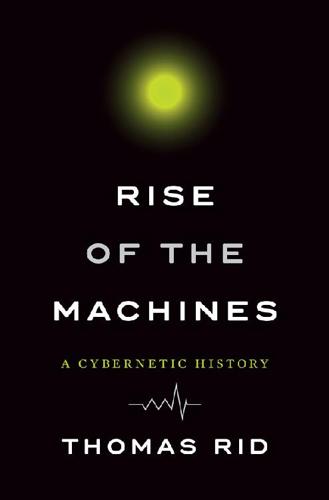
Rise of the Machines: A Cybernetic History
by
Thomas Rid
Published 27 Jun 2016
Nineteen sixty-seven was one year before Intel was founded and two years before ARPANET was launched, the famous predecessor to the internet initially funded by the Pentagon’s Advanced Research Projects Agency Network, later called DARPA (the Defense Advanced Research Projects Agency). Yet Kahn saw the writing on the wall: the computer revolution—as this man, the Rand Corporation’s foremost nuclear thinker saw it—was the most important, most salient, and most exciting aspect of modern technology.80 Remarkably, Kahn even suspected that “each user” might have a private file space in a central computer, for such uses as consulting the Library of Congress. Computer access would be used to reduce crime, as police can check immediately the record “of any person stopped for questioning.”
…
Then Licklider articulated in more detail what this computer network was supposed to be all about: the advancement of the art of information processing, and “the advancement of intellectual capability (man, man-machine, or machine),” Licklider wrote. The memo went out to ARPA-contracted researchers at Stanford University, UC Berkeley, UCLA, MIT, the Rand Corporation, and several contractors in industry. To make progress in these endeavors, he reckoned, each researcher needed hardware facilities, as well as a software base more complex and more extensive than one person alone could build. The only solution was a network of computers, a network of individual “thinking centers,” as he called it.
…
An example was the navy’s Tomahawk cruise missile. Cyberwar meant crewless tanks, cruise missiles that behave like kamikaze robots, head-to-toe battle gear with microclimate control and hazard protection for the infantry, as well as “anti-missile satellites.”20 Some thought this characterization was too simple. The following year, two Rand Corporation analysts—John Arquilla and David Ronfeldt—published an influential paper, “Cyberwar Is Coming!” Autonomous weapons weren’t enough, they argued. The respected think-tank veterans injected a fresh and controversial idea into the Washington defense establishment. Arquilla and Ronfeldt also disagreed with the prevailing view within the Joint Staff, then still headed by Colin Powell: that overwhelming force was necessary to win the next war.
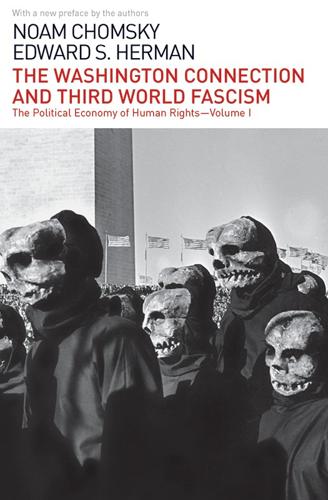
The Washington Connection and Third World Fascism
by
Noam Chomsky
Published 24 Oct 2014
To cite only one of innumerable examples, the Wall Street Journal published a forecast by former CIA analyst, Samuel Adams, that 100,000 people would be murdered in the event of a Communist victory in Vietnam, which relied heavily on a hysterical propaganda tract by Craig Hosmer put out by the Rand Corporation.110 The Journal refused at the time to publish any criticism of the Adams piece and has subsequently never gotten around to discussing where the Adams forecast went wrong. For readers of the Journal, the Vietnamese Communists might be said to have killed 100,000 people in a postwar bloodbath, an “Asian Auschwitz”(see note 109, chapter 2). It is one of the public functions of both right-wing and official think tanks like the Rand Corporation, the Hoover Institution, the Hudson Institute, and academic social science scholarship more broadly, to show that they are evil and we are good—though we occasionally err.
…
“I Have Heard the Cry of my People,” a statement signed by 18 Catholic religious leaders of Northeast Brazil, 6 May 1973, IDOC translation and reprint, p. 43. 40. E. Bradford Burns, “Brazil: The Imitative Society,” The Nation, 10 July 1972, quoted in Black, op. cit., p. 261. 41. Konrad Kellen, “1971 and Beyond: The View From Hanoi,” Rand Corporation (June 1971), pp. 14-15. 42. The flavor of “our” South Vietnam may be captured, however, in the finding by one former AID employee: “I have personally witnessed poor urban people literally quaking with fear when I questioned them about the activity of the secret police in a post election campaign.
…
As Buttinger remarks, “It required a tidal wave of falsehood to persuade Americans into accepting the myth that not French, but Communist, aggression was responsible for the first Indochina war” (ibid., p. 22), as was constantly trumpeted by Dean Acheson and a host of sycophants. 15. Jeffrey Race, War Comes to Long An, University of California, 1971, p. 197; to date, the best account of the origins of the insurgency under the U.S.-Diem regime. There is also important material on this subject in the massive “Vietcong Motivation and Morale Study” undertaken by the Rand Corporation. For an interesting study based on this generally ignored material, see David Hunt, “Organizing for Revolution in Vietnam,” Radical America, vol. 8, nos. 1-2, 1974. See also Georges Chaffard, Les deux guerres du Vietnam, La Table Ronde, Paris, 1969. U.S. government sources, in addition to the Pentagon Papers, also contain much useful information: see Robert L.
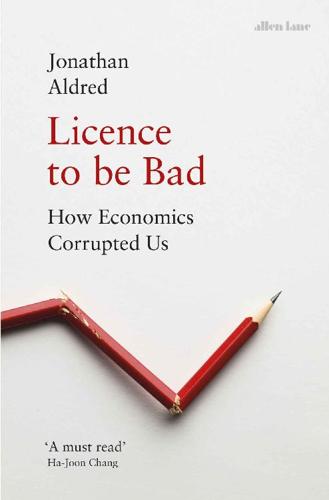
Licence to be Bad
by
Jonathan Aldred
Published 5 Jun 2019
In all this messy diversity we see the interplay of politics, culture and chance in shaping the spread of ideas. And the paradoxical quality of appealing, seductive ideas which turn out to do great damage. The stories of these high priests are varied, but together they show how economics has come to dominate our lives. 2 Trust No One Oh, the RAND Corporation is the boon of the world; They think all day for a fee. They sit and play games about going up in flames, For counters they use you and me, Honey Bee, For counters they use you and me.1 In the fall of 1948 most of the newly arrived postgraduate maths students at Princeton University in New Jersey were cocky, but one was even cockier.
…
The time and place was early 1950s Santa Monica, at the end of the Malibu Beach Crescent, just west of Los Angeles. The seaside promenade was lined with hotels and retirement homes, shades of cream and pink punctuated by bursts of vivid bougainvillea. The scent of oleander hung in the air. Santa Monica was an improbable setting for the offices of the RAND Corporation, a secretive think tank employing mathematicians and scientists to develop military strategy for potential nuclear war with the USSR. The Korean War had just begun and the Cold War was getting hot. The atmosphere at RAND combined paranoia, megalomania and a worship of abstract logic. Nuclear military technology was still in its infancy, and during the Second World War US generals had realized that they needed advice on the best way to deploy the latest weapons, from radar to long-range missiles, as well as the atom bomb.
…
It is the world of modern economic theory, one which I was hoping to persuade economists to leave.’23 The usual spelling is ‘Coasean’, not Coase’s choice of ‘Coasian’. Poor Ronald Coase – he didn’t even get to control the spelling of ‘Coasean world’, let alone what it means. 4 The Government Enemy In the early 1950s John von Neumann and John Nash were not the only geniuses associated with the RAND Corporation. RAND was the incubator for another intellectual revolution, as significant as game theory but completely independent of it. And this time the genius behind it was a lowly intern. The earliest and most enthusiastic adopters of game theory had been the military analysts at RAND, who wanted to use its powerful mathematical tools to outwit the Soviets in Cold War nuclear strategizing.
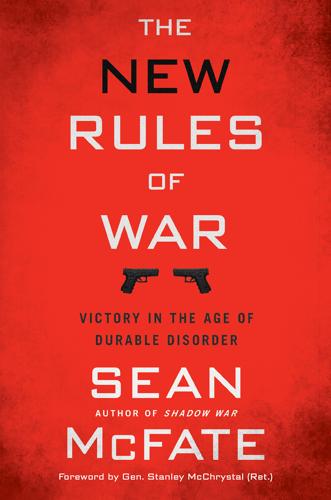
The New Rules of War: Victory in the Age of Durable Disorder
by
Sean McFate
Published 22 Jan 2019
Grand Strategy The problem is that the United States has tied its end state to maintaining global peace and prosperity but has failed to conjure a meaningful grand strategy to achieve this. There is also another problem. “Grand strategy is the biggest crock of shit.” “Say again?” I ask, nearly dropping my sandwich. “Grand strategy is a myth. It doesn’t exist,” says Dan, a colleague at the RAND Corporation, a Department of Defense–sponsored think tank. “Those are fighting words,” I say, half-seriously. “Bring it on,” he replies, slurping his sweet tea with a smirk. We are sitting on a park bench in the middle of the Pentagon courtyard eating lunch. It’s the only park in America that has no squirrels.
…
Wars no longer end but smolder in perpetuity: Matthew Hoddie and Caroline Hartzell, “Civil War Settlements and the Implementation of Military Power-Sharing Arrangements,” Journal of Peace Research 40, no. 3 (2003): 303–20; Monica Duffy Toft, Securing the Peace: The Durable Settlement of Civil Wars (Princeton: Princeton University Press, 2009); Ben Connable and Martin C. Libicki, How Insurgencies End, vol. 965 (Santa Monica: RAND Corporation, 2010); Roger Mac Ginty, “No War, No Peace: Why So Many Peace Processes Fail to Deliver Peace,” International Politics 47 no. 2 (2010): 145–62; Jasmine-Kim Westendorf, Why Peace Processes Fail: Negotiating Insecurity after Civil War (Boulder: Lynne Rienner Publishers, 2015). Why Do We Get War Wrong?
…
Schooner and Collin Swan, “Contractors and the Ultimate Sacrifice,” The George Washington University Law School, working paper no. 512 (September 2010); Christian Miller, “Civilian Contractor Toll in Iraq and Afghanistan Ignored By Defense Dept,” ProPublica, 9 October 2009. 11. Contractor PTSD and casualties: Molly Dunigan et al., Out of the Shadows: The Health and Well-Being of Private Contractors Working in Conflict Environments (Santa Monica, CA: RAND Corporation, 2013); Contingency Contracting: DOD, State, and U.S.AID Continue to Face Challenges in Tracking Contractor Personnel and Contracts in Iraq and Afghanistan, GAO-10-1 (Washington: US Government Accountability Office, 2009), www.gao.gov/new.items/d101.pdf; Justin Elliott, “Hundreds of Afghanistan Contractor Deaths Go Unreported,” Salon, 15 July 2010.
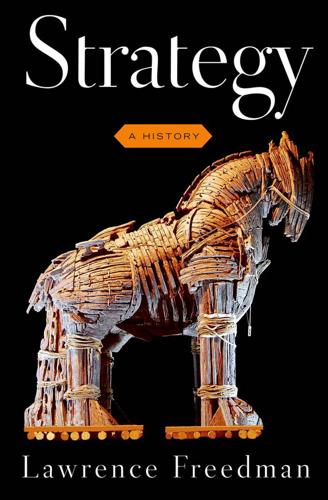
Strategy: A History
by
Lawrence Freedman
Published 31 Oct 2013
This was not because it was uniquely fitted for this intellectual purpose but because of deliberate decisions to adopt it as the foundation of a new science of decision-making and the active promotion of this new science by bodies such as the RAND Corporation and the Ford Foundation, both of which encouraged its embrace by business schools. As with Plato’s philosophy, a new discipline that offered eternal truths was created in part by disparaging and caricaturing what had gone before for its lack of rigor. The best place to start this story is with the RAND Corporation, which we identified in the last section as the home of game theory and the belief that a formal science of decision could be developed.
…
See also crowd psychology Cornford on, 618 of the deed (Bakunin), 275–276 First World War and, 337, 339 Lippmann on, 339 Nazis and, 336, 342–343, 414 Propaganda (Bernays), 341 Protagoras, 36 Protestant Ethic and the Spirit of Capitalism, The (Weber), 302 Proudhon, Joseph, 251, 270, 274, 668n27 Prussia Austro-Prussian War and, 105 Franco-Prussian War and, 105–107, 112, 274–275 Napoleonic Wars and, 78–79, 82 Public Opinion (Lippman), 337, 340 Pullman strike, 313–315 Quakerism, 346 quantitative analysis. See also game theory limitations of, 150, 203 McNamara and, 149–150, 199, 202, 501–502, 546 RAND Corporation and, 147–148, 152–153, 513–514 Quayle, Dan, 452–453, 690n51 Quiet American, The (Greene), 187 “Quiz Kids.” See “Whiz Kids” radical Islamists, 222, 235–236. See also al-Qaeda Raff, Daniel, 616 Raiffa, Howard, 161–162, 514 Ramsey, Douglas, 506 RAND Corporation game theory and, 161–162, 513 nuclear strategy and, 161–162, 168 quantitative emphasis of, 147–148, 150, 152–153, 513–514 rational choice theory and, 575–577 Randolph, A.
…
As one of the key figures in the British program noted, the methodology used was closer to classical economics than physics, although economists were not directly engaged.8 During the course of the war, operations research—as the new field came to be known—made major strides in support of actual operations, including working out the safest arrangement for convoys in the face of submarine attack or choosing targets for air raids.9 Mathematicians and physicists made more of an impact in the United States, notably those who became involved in the Manhattan Project, the organization which had led to the production of the first atomic bomb. The center for the postwar application of such methods to practical, and particularly military, problems was the RAND Corporation, which became the prototypical “think tank.” The organization was set up under an air force grant to develop operational research. It soon became an independent nonprofit corporation addressing defense issues and other aspects of public policy using advanced analytical techniques. RAND began by recruiting natural scientists and engineers who expected to deal with hardware.
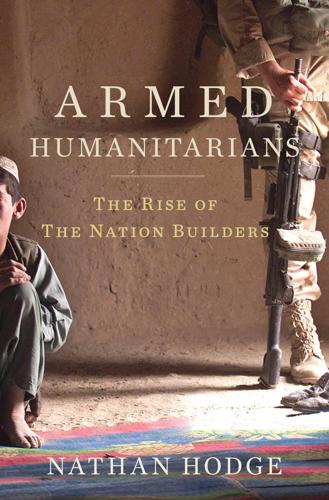
Armed Humanitarians
by
Nathan Hodge
Published 1 Sep 2011
Army, Deputy Under Secretary of Defense for Intelligence,” report prepared by the Directorate for Investigations of Senior Officials, August 5, 2004, www.dodig.mil/fo/Foia/ERR/h0/3189967206.pdf. 3 William Colby with James McCargar, Lost Victory (Chicago: Contemporary Books, 1989), pp. 330–33. 4 Ibid., p. 16. 5 John Nagl, Learning to Eat Soup with a Knife: Counterinsurgency Lessons from Malaya and Vietnam (Chicago: University of Chicago Press, 2005), p. ix. 6 Ibid. 7 Ibid., p. xiii. 8 David Petraeus, “The American Military and the Lessons of Vietnam: A Study of Military Influence and the Use of Force in the Post-Vietnam Era,” Ph.D. diss., Princeton University, 1987. 9 See Robert Komer, The Malayan Emergency in Retrospect: Organization of a Successful Counterinsurgency Effort (Santa Monica, Calif.: RAND Corporation, 1972). 10 Sylvia Ellis, Britain, America and the Vietnam War (Westport, Conn.: Praeger, 2004), p. 2. 11 Sir Robert Thompson, “Squaring the Error,” Foreign Policy, April 1968. 12 Robert Thompson, Peace Is Not at Hand (New York: David McKay, 1974), p. 71. 13 Colby and McCargar, Lost Victory, p. 263. 14 Robert Komer, Bureaucracy Does Its Thing: Institutional Constraints on U.S-GVN Performance in Vietnam (Santa Monica, Calif.: RAND Corporation, 1972), pp. v–ix. 15 Thompson, Peace Is Not at Hand, p. 59. 16 Ibid., p. 35. 17 Colby and McCargar, Lost Victory, p. 91. 18 Komer, Bureaucracy Does Its Thing, p. 113. 19 Ibid., p. 115. 20 Ibid., p. xi. 21 Nguyen Van Thieu, letter to President Richard Nixon, March 20, 1973, The American Presidency Project, www.presidency.ucsb.edu/ws/index.php?
…
The Accidental Guerrilla: Fighting Small Wars in the Midst of a Big One. New York: Oxford University Press, 2009. Komer, Robert. Bureaucracy Does Its Thing: Institutional Constraints on U.S-GVN Performance in Vietnam. Santa Monica, Calif.: RAND Corporation, 1972. Komer, Robert. The Malayan Emergency in Retrospect: Organization of a Successful Counterinsurgency Effort. Santa Monica, Calif.: RAND Corporation, 1972. Krepinevich, Andrew. The Army and Vietnam. Baltimore: Johns Hopkins University Press, 1986. LeMoine, Ray, and Jeff Neumann, with Donovan Webster. Babylon by Bus. New York: Penguin Press, 2006. Loeffler, Jane.
…
.: Washington Institute for Near East Policy), January 27, 2005. 10 Sergeant First Class Doug Sample, “Task Force Commander Says Insurgents ‘Desperate, Isolated,’ ” American Forces Press Service, March 9, 2004. 11 Daniel Gonzales, John Hollywood, et al., Networked Forces in Stability Operations: 101st Airborne Division, 3/2 and 1/25 Stryker Brigades in Northern Iraq (Santa Monica, Calif.: RAND Corporation, 2007). 12 Colonel Lloyd Sammons, interview by Plotkin. 13 Gonzales, Hollywood, et al., Networked Forces in Stability Operations. 14 U.S. General Accounting Office, “Defense Transformation: Army’s Evaluation of Stryker and M113A3 Infantry Carrier Vehicles Provided Sufficient Data for Statutorily Mandated Comparison,” publication GAO-03-671, May 2003, www.gao.gov/new.items/d03671.pdf. 15 “Coalition Provisional Authority Order Number 45: Non-Governmental Organizations.” 16 Integrated Regional Information Network, Iraq: “NGO registration causes controversy,” January 13, 2004, www.irinnews.org/Report.aspx?
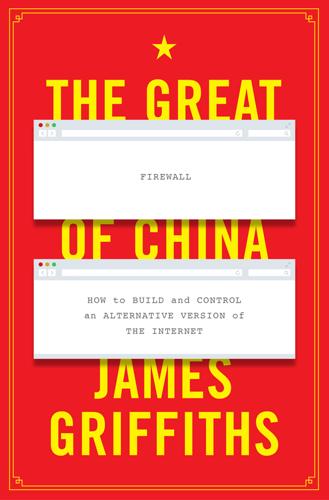
The Great Firewall of China
by
James Griffiths;
Published 15 Jan 2018
Law enforcement officials said the purpose may have been to build up a giant database of federal employees who could be targeted at a later time for blackmail or identity theft, potentially compromising dozens of government agencies.16 China, just like in previous cases, strenuously denied the allegations, but in mid-2017 the FBI arrested a Chinese national in connection with the case as he entered the US for a security conference.17 In the wake of the Unit 61398 indictments and the OPM hack, President Barack Obama hosted Chinese leader Xi Jinping at the White House, where the two men signed a major bilateral agreement promising “that neither country’s government will conduct or knowingly support cyber-enabled theft of intellectual property, including trade secrets or other confidential information”.18 The deal was a big diplomatic win for Obama as he neared the end of his second term, one of the few concessions he scored from an increasingly assertive China despite his much vaunted ‘pivot to Asia’ and attempts to contain Chinese ambitions in the South China Sea. The Rand Corporation, a US think tank closely linked to the government and defence industry, described the agreement as a “good first step”, but many were sceptical about how closely China would stick to the letter of the deal.19 Initial signs were good. Security agency FireEye said in a 2016 report that there had been a “notable decline” in the number of Chinese intrusions against companies in the US and twenty-five other countries.
…
Epstein, ‘Cat and mouse’, The Economist, 6 April 2013, https://www.economist.com/news/special-report/21574629-how-china-makes-sure-its-internet-abides-rules-cat-and-mouse 9M. Chase and J. Mulvenon, You’ve Got Dissent! Chinese dissident use of the internet and Beijing’s counter-strategies, Santa Monica CA: Rand Corporation, 2002, p. 54, https://www.rand.org/pubs/monograph_reports/MR1543.html 10K. Platt, ‘China hits at e-mail to curb dissent’, The Christian Science Monitor, 31 December 1998, https://www.csmonitor.com/1998/1231/123198.intl.intl.1.html 11C. Smith, ‘China sentences internet entrepreneur for trading e-mail list with dissidents’, The Wall Street Journal, 21 January 1999, https://www.wsj.com/articles/SB916818019827637500 12Smith, ‘China sentences internet entrepreneur’. 13Barme and Ye, ‘The Great Firewall of China’. 14S.
…
Perez, ‘FBI arrests Chinese national connected to malware used in OPM data breach’, CNN, 24 August 2017, http://edition.cnn.com/2017/08/24/politics/fbi-arrests-chinese-national-in-opm-data-breach/index.html 18‘President Xi Jinping’s state visit to the United States’, Office of the Press Secretary, White House, 25 September 2015, https://obamawhitehouse.archives.gov/the-press-office/2015/09/25/fact-sheet-president-xi-jinpings-state-visit-united-states 19S. Harold, ‘The US–China cyber agreement: a good first step’, Rand Corporation, 1 August 2016, https://www.rand.org/blog/2016/08/the-us-china-cyber-agreement-a-good-first-step.html 20FireEye, Red Line Drawn: Chinese recalculates its use of cyberespionage, Milpitas CA: FireEye, 2016, https://www.fireeye.com/content/dam/fireeye-www/current-threats/pdfs/rpt-china-espionage.pdf 21S.

Tripping on Utopia: Margaret Mead, the Cold War, and the Troubled Birth of Psychedelic Science
by
Benjamin Breen
Published 16 Jan 2024
The pharmacologist Joel Elkes: Interview with Joel Elkes by David Healy, 1998, from The Psychopharmacologists II (London: Altman, 1998), 183–214. Even at the RAND: See William H. McGlothlin, “Hallucinogenic Drugs: A Perspective with Special Reference to Peyote and Cannabis” (RAND Corporation white paper, July 1964), 10 and 19; and William H. McGlothlin, “Long-Lasting Effects of LSD on Certain Attitudes in Normals: An Experimental Proposal” (RAND Corporation report, May 1962), available at https://apps.dtic.mil/sti/citations/AD0604802. “Dave McClelland has told me”: Leary to Mead, March 22, 1961, Box 45, Leary papers, NYPL. A version of Mead’s advice appears in her interview in “For God’s Sake, Margaret: Conversation with Gregory Bateson and Margaret Mead,” CoEvolution Quarterly, no. 10 (June 1976): 32–44.
…
One example was Mead’s ties to Irving Janis, a policy analyst who had a small but important role to play in the early Cold War. During World War II, Janis had worked closely with Mead and Bateson. Afterward, Janis joined Project RAND—a new military-funded think tank that was later renamed the RAND Corporation—as an analyst of Soviet psychology. In April 1949, Janis issued a RAND study that helped trigger an entirely new concept, one intimately bound up with the concept of a weaponized science of consciousness: the idea of “brainwashing.” The show trial of the Hungarian dissident Cardinal József Mindszenty, which took place in Hungary early in 1949, seemed to Janis decisive proof of the use of drugs in Soviet interrogations.
…
In the 1957 article in which he coined the term “psychedelic,” Humphry Osmond credited what he thought of as fellow experimenters from Mesoamerica, Amazonia, South Asia, and sub-Saharan Africa. “We inherit their secrets,” Osmond wrote. “Let us honor them.” The pharmacologist Joel Elkes, likewise, was voicing a widely held belief when he wrote that substances like LSD must be used with “the care and reverence that the Mexicans gave” to peyote and psilocybin. Even at the RAND Corporation in Santa Monica—that citadel of Cold War militarism—researchers studying the effects of psychedelics on creativity supplemented their clinical trials by carefully reading, and citing, Margaret Mead’s description of the Omaha peyote users. Leary and his circle were part of a complex history of cross-cultural knowledge exchanges involving psychedelics.
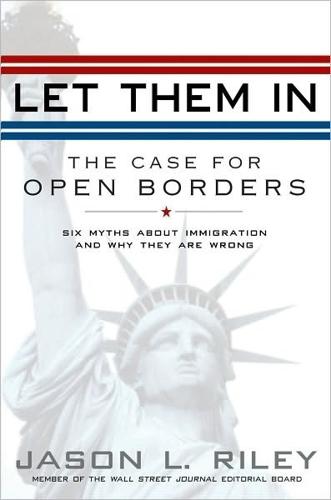
Let Them In: The Case for Open Borders
by
Jason L. Riley
Published 14 May 2008
The experience of these two states is instructive, or should be, for anyone interested in facts about public benefits and immigrants, rather than emotion or populist rhetoric. In what its authors describe as “the most detailed analysis to date of immigrants and their use of health services,” a 2006 Rand Corporation study estimates that each year the United States spends “about $1.1 billion in federal, state, and local government funds on heath care for illegal immigrants aged 18-64.” That works out to $11 per household. Lou Dobbs informs his viewers that thousands of illegal alien lepers are scurrying across the Mexican border, infecting Americans and spiking health-care costs.
…
In a definitive longitudinal study in the 1990s, sociologists Alejandro Portes and Ruben Rumbaut found substantial second-generation progress among Latinos in Miami and Fort Lauderdale as well. Nationwide cross-generational studies show the same results. In 2006, economist James Smith of the RAND Corporation found that successive generations of Latinos have experienced significant improvements in wages relative both to their fathers and grandfathers and to the native whites with whom they compete for jobs. And Roger Waldinger and Renee Reichl, two UCLA social scientists, found that while first-generation Mexican men earned just half as much as white natives in 2000, the second generation had upped their earnings to three-quarters of their Anglo counterparts.
…
See overpopulation argument Population Bomb, The (Ehrlich) population growth Portes, Alejandro Poverty Powell, Benjamin Prager, Dennis Prescott, Edward productivity professionals, immigrant ProjectUSA Proposition protectionism public school system Puerto Rican immigrants Race Betterment Foundation Racism RAND Corporation Randolph, A. Philip Reagan, Ronald, ix Rector, Robert Reichl, Renee Republican restrictionist argument alienation of Hispanic voters and Bracero Program and Bush, George W. vs. - concession of Hispanic vote and gamble on immigration issue in congressional elections of and House immigration “field hearings” and Immigration Control and Reform Act of (ICRA) and Kennedy-McCain bill of and losses in congressional elections of and Proposition in California and talk radio and welfare and Resource reduction-population increase argument restaurant industry Ricardo, David Richardson, Bill Ridge, Tom Rios, Xavier Rockefeller Foundation Rodgers, T.
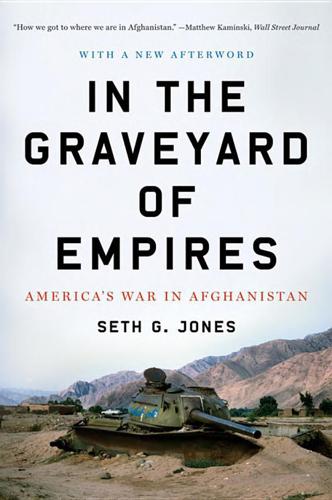
In the Graveyard of Empires: America's War in Afghanistan
by
Seth G. Jones
Published 12 Apr 2009
Wohlstetter influenced the design and deployment of U.S. strategic forces through his research, developed the “second-strike” theory for deterring nuclear war, and originated “fail safe” and other methods for reducing the probability of accidental nuclear war.2 Wohlstetter served as a senior policy analyst at the RAND Corporation, as an adviser to President John F. Kennedy during the Cuban missile crisis, and, beginning in 1964, as a professor at the University of Chicago. He had a significant influence on Khalilzad and helped him make contacts in Washington. After leaving Chicago in 1979, Khalilzad moved to New York to become a professor at Columbia University’s School of International and Public Affairs.3 The Brutal-Hearted Mountain Tribes During his studies with Wohlstetter, Khalilzad continued to monitor events in Afghanistan and, with his academic training completed, he began writing articles on the invasion using a pseudonym to protect members of his family who were still there.
…
The charms of the climate and scenery of Caubul have been celebrated by many Persian and Indian writers. The beauty and abundance of its flowers are proverbial, and its fruits are transported to the remotest parts of India.32 As Kabul crumbled during the fighting, Zalmay Khalilzad, a senior analyst at the RAND Corporation, became perturbed at the waning U.S. interest in the region. “America has not helped Afghans and our friends in the region make the right decisions,” Khalilzad wrote in a scathing 1996 opinion piece in the Washington Post. “After the fall of the Soviet Union we stopped paying attention. This was a bad decision.
…
Tribal elders, known as maliks, were given special favors by the British in return for maintaining peace, keeping open important roads such as the Khyber Pass, and apprehending criminals. After partition in 1947, Pakistan continued this system of local autonomy and special favors. FIGURE 6.2 Pakistan’s Tribal Agencies Courtesy of RAND Corporation Pakistan’s founder, Muhammad Ali Jinnah, laid the foundation for this independence in remarks to a tribal jirga in Peshawar in 1948: “Keeping in view your loyalty, help, assurance and declarations we ordered, as you know, the withdrawal of troops from Waziristan as a concrete and definite gesture on our part….

From Counterculture to Cyberculture: Stewart Brand, the Whole Earth Network, and the Rise of Digital Utopianism
by
Fred Turner
Published 31 Aug 2006
Paul Edwards has pointed out that in addition to researchers at MIT and government officials, SAGE involved heavy contributions from IBM (which built some fifty-six SAGE computers for approximately $30 million each) and the RAND Corporation (which wrote much of the computers’ software). Edwards, Closed World, 101–2. Hughes, Rescuing Prometheus, 16, 4. 54. Air Defense Systems Engineering Committee, “Air Defense System: ADSEC Final Report,” October 24, 1950, MITRE Corporation Archives, Bedford, MA, 2 –3, quoted in Hughes, Rescuing Prometheus, 21. 55. Hughes, Rescuing Prometheus, 66. 56. As Sharon Ghamari-Tabrizi has noted, there were important exceptions to this trend. On May 11, 1959, for instance, Life magazine published a photo essay on the RAND Corporation. Although most of the images depicted “people doing something iconically scientific,” the final image showed a group of analysts in suits, reclining together on the floor, surrounded by “the mise en scene for the modern intellectual,” including “futuristic chairs and a Japanese paper kite dangling from the ceiling.”
…
GBN’s particular blending of countercultural and techno-cultural organizational styles depended on its roots in two organizations, the Stanford Research Institute and Royal Dutch/Shell. In the 1950s and 1960s, SRI and Shell represented the apogee of the military and the industrial worlds. SRI had been founded in 1947 to offer business consulting for the oil industry, but, along with the RAND Corporation, it very quickly became one of the two leading American think tanks for the U.S. military. Royal Dutch/Shell was a multinational behemoth devoted to extracting and refining oil. Yet, elements of both organizations had embraced countercultural practices. GBN cofounders Jay Ogilvy and Peter Schwartz, for instance, both worked at SRI just as the military-industrial consulting firm found itself coming to grips Networking the New Economy [ 185 ] with the counterculture around it.
…
They swallowed up the personal wisdom of senior officers rooted in combat experience in favor of intuitions arising from repeated trials of laboratory-staged simulations of future war.”18 Under conditions of nuclear uncertainty, analysts had to imagine the data to which they might apply the mathematical formulas, game theories, and computer technologies they had developed for earlier forms of combat. In short, they had to simulate the future. At the RAND Corporation and later, at his own Hudson Institute, Herman Kahn, perhaps the most well-known analyst of this period, began to present his simulations in the form of scenarios—narrative scripts of possible futures. These included his infamous scenarios for nuclear Armageddon, in which he tried to convince policymakers that nuclear warfare was a real possibility and one for which they should prepare, and his equally wellknown visions for America in the year 2000.19 On the one hand, Kahn’s work on nuclear war seemed to many to be the epitome of American technocratic hubris.
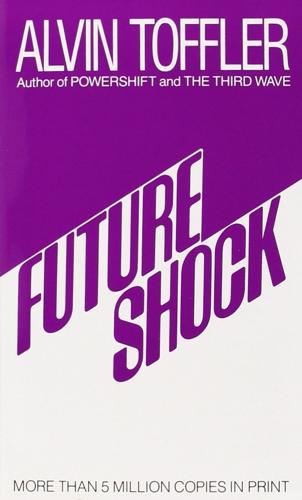
Future Shock
by
Alvin Toffler
Published 1 Jun 1984
The converse, however, is not true." Intelligence and creativity, it would appear, are not a human monopoly. Despite setbacks and difficulties, the roboteers are moving forward. Recently they enjoyed a collective laugh at the expense of one of the leading critics of the robot-builders, a former RAND Corporation computer specialist named Hubert L. Dreyfus. Arguing that computers would never be able to match human intelligence, Dreyfus wrote a lengthy paper heaping vitriolic scorn on those who disagreed with him. Among other things, he declared, "No chess program can play even amateur chess." In context, he appeared to be saying that none ever would.
…
The possibility of enhancing human (and machine) intelligence by linking them together organically opens enormous and exciting probabilities, so exciting that Dr. R. M. Page, director of the Naval Research Laboratory in Washington, has publicly discussed the feasibility of a system in which human thoughts are fed automatically into the storage unit of a computer to form the basis for machine decisionmaking. Participants in a RAND Corporation study conducted several years ago were asked when this development might occur. Answers ranged from as soon as 1990 to "never." But the median date given was 2020—well within the lifetime of today's teen-agers. In the meantime, research from countless sources contributes toward the eventual symbiosis.
…
For generations, we have simply assumed that the proper place for education to occur is in a school. Yet if the new education is to simulate the society of tomorrow, should it take place in school at all? As levels of education rise, more and more parents are intellectually equipped to assume some responsibilities now delegated to the schools. Near Santa Monica, California, where the RAND Corporation has its headquarters, in the research belt around Cambridge, Massachusetts, or in such science cities as Oak Ridge, Los Alamos or Huntsville, many parents are clearly more capable of teaching certain subjects to their children than are the teachers in the local schools. With the move toward knowledge-based industry and the increase of leisure, we can anticipate a small but significant tendency for highly educated parents to pull their children at least partway out of the public education system, offering them home instruction instead.

Algorithms to Live By: The Computer Science of Human Decisions
by
Brian Christian
and
Tom Griffiths
Published 4 Apr 2016
“the prisoner’s dilemma”: The prisoner’s dilemma was first conceived by Merrill Flood (of secretary problem and traveling salesman problem fame) and Melvin Drescher at RAND Corporation. In January 1950, they staged a game between UCLA’s Armen Alchian and RAND’s John D. Williams that had prisoner’s dilemma–like payoffs (Flood, “Some Experimental Games”). Princeton’s Albert Tucker was intrigued by this experiment, and in preparing to discuss it that May in a lecture at Stanford, he gave the problem its now famous prison formulation and its name. A detailed history of the origins of game theory and its development in the work of the RAND Corporation can be found in Poundstone, Prisoner’s Dilemma. a price of anarchy that’s a mere 4/3: Roughgarden and Tardos, “How Bad Is Selfish Routing?”
…
If your favorite restaurant disappointed you the last time you ate there, that algorithm always says you should go to another place—even if it’s your last night in town. Still, Robbins’s initial work on the multi-armed bandit problem kicked off a substantial literature, and researchers made significant progress over the next few years. Richard Bellman, a mathematician at the RAND Corporation, found an exact solution to the problem for cases where we know in advance exactly how many options and opportunities we’ll have in total. As with the full-information secretary problem, Bellman’s trick was essentially to work backward, starting by imagining the final pull and considering which slot machine to choose given all the possible outcomes of the previous decisions.
…
Taylor and Gantt made scheduling an object of study, and they gave it visual and conceptual form. But they didn’t solve the fundamental problem of determining which schedules were best. The first hint that this problem even could be solved wouldn’t appear until several decades later, in a 1954 paper published by RAND Corporation mathematician Selmer Johnson. The scenario Johnson examined was bookbinding, where each book needs to be printed on one machine and then bound on another. But the most common instance of this two-machine setup is much closer to home: the laundry. When you wash your clothes, they have to pass through the washer and the dryer in sequence, and different loads will take different amounts of time in each.

Adaptive Markets: Financial Evolution at the Speed of Thought
by
Andrew W. Lo
Published 3 Apr 2017
In the case of irrational investor behavior, the errors can compound across individuals, replacing the wisdom of crowds with the madness of mobs. One manifestation of this madness is the violation of the Random Walk Hypothesis that Craig and I discovered. But there are many others. One of the first cracks in the orthodox view of market rationality comes from the high-stakes world of the Cold War. The RAND Corporation is a legendary—some would say notorious—think tank based in Santa Monica, California. RAND was founded in 1948 to maintain the close relationship between scientific research and military planning that had developed during the Second World War.7 As the nation’s leading technological research institute, RAND attracted “the best and the brightest” academics across a wide assortment of scientific fields (although the nearby California beaches didn’t hurt), and put them to work on the most pressing problems of the Cold War.
…
RAND was founded in 1948 to maintain the close relationship between scientific research and military planning that had developed during the Second World War.7 As the nation’s leading technological research institute, RAND attracted “the best and the brightest” academics across a wide assortment of scientific fields (although the nearby California beaches didn’t hurt), and put them to work on the most pressing problems of the Cold War. RAND went out of its way to include economists in its scientific mix: in fact, twenty-two Nobel Prize winners in economics have worked at the RAND Corporation over the years. One of the bright young economists at RAND was an unusual man named Daniel Ellsberg. A former company commander in the U.S. Marine Corps, Ellsberg volunteered for the Marines after graduating summa cum laude from Harvard, returning there for graduate work after his tour of duty.
…
As a Harvard fellow, Ellsberg gave a series of popular lectures at the Boston Public Library on political decision making in the uncertain conditions of the Cold War. Dramatically titled “The Art of Coercion,” and broadcast by WGBH radio, Ellsberg’s lectures cemented his reputation as a theorist and public intellectual in the making.8 Ellsberg’s mixture of the scholar and the soldier proved irresistible to the RAND Corporation, even though his publication history was thin and his doctorate unfinished. Ellsberg was hired by RAND in 1959, where he was soon immersed in the fine details of strategic nuclear war planning. In that hothouse environment, Ellsberg was a deft conversationalist who loved to kibitz in a seminar or over someone’s shoulder, but Ellsberg’s frustrated colleagues urged him to write up his results in academic style.
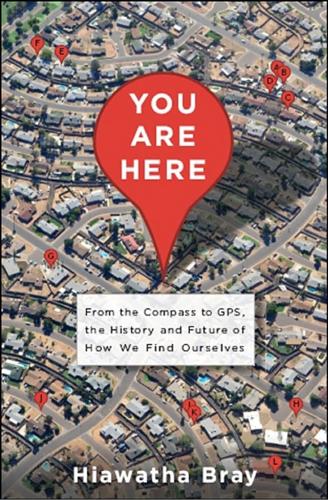
You Are Here: From the Compass to GPS, the History and Future of How We Find Ourselves
by
Hiawatha Bray
Published 31 Mar 2014
“The achievement of a satellite craft by the United States would inflame the imagination of mankind and would probably produce repercussions in the world comparable to the explosion of the atomic bomb.”25 Although the study focused on the scientific and technological challenges of creating such a satellite rather than its military applications, it briefly mentioned the use of satellites as surveillance platforms for measuring the accuracy of bombing raids and tracking weather conditions over enemy targets. In 1951 the now-independent think tank RAND Corporation went further, in a report arguing that it should be possible to build a satellite with a television camera that could soar over the Soviet Union, broadcasting images back to the United States. The quality of the images would not be terribly impressive. At best the TV technology of the time would be able to detect only objects two hundred feet or larger in size.
…
The Soviets’ launch of Sputnik in October 1957 cured Eisenhower of his complacency. It also eased his concerns about international law. The Soviets had gone first; the way was clear. Within days of Sputnik’s launch, Eisenhower and Assistant Secretary of Defense Donald Quarles were talking about how to get some spy satellites aloft.28 By this time the RAND Corporation had soured on its plan to broadcast the images via television. They had concluded that the best equipment that could be squeezed onto a satellite would produce images too poor to be of any use. Yet there was another way—complex and technically demanding, but possible. The satellite could use a specialized type of film, capable of handling the temperature extremes and radiation found in space.
…
For example, in 1967 a Corona satellite caught images of Soviet troops massing on the border of Czechoslovakia. By the time the film had been returned to earth, developed, analyzed, and provided to the Johnson administration, the Russians had already invaded.31 What the United States needed was something like the RAND Corporation’s original vision—a satellite that captured images electronically and broadcast them directly to earth. It was not until 1976 that such a satellite could be created, thanks to a technical breakthrough that was destined to capture a Nobel Prize and to restructure an entire global industry. In 1969 a pair of scientists at Bell Labs, William Boyle and George Smith, were working on electronic memory devices for computers.

The 9/11 Wars
by
Jason Burke
Published 1 Sep 2011
Hoffman also perceptively argued that in Iraq one saw ‘the closest manifestation yet of netwar, the concept of warfare involving flatter, more linear networks rather than the pyramidal hierarchies and command and control systems (no matter how primitive) that have governed traditional insurgent organizations … [It] involves small groups who communicate, coordinate, and conduct their campaigns in an internetted manner, without a precise central command.’ RAND Corporation (Bruce Hoffman), Insurgency and Counterinsurgency in Iraq, June 2004. For more on Netwar see John Arquilla, David Ronfeldt and Michele Zanini, ‘Networks, Netwar and the Information-Age Terrorism’, in RAND Corporation (Ian Lesser et al.) Countering the New Terrorism, 1999, p. 47. 14. See the very useful discussion in Scott Atran, Talking to the Enemy, HarperCollins, 2010, pp. 267–8. 15. Jessica Stern, Terror in the Name of God, Harper Perennial, 2004, p. 271: resilience is the ‘ability of a network to withstand the loss of a node or nodes.
…
Successive studies showed that in fact the growth of the Muslim-majority countries of the Middle East and north Africa was slowing rapidly, with the average number of children born per woman dropping from seven in 1960 to three in 2006 or even drifting down to the replacement level of about 2.1 children per woman.37 The American Rand Corporation concluded that by 2025 the youth bulge problem in the Middle East would begin to ease.38 A flood of Muslim immigrants thus looked unlikely. As for the Muslim population within Europe, no one doubted that it had grown rapidly in recent decades and, particularly given its relative youth, would continue to expand in years to come.
…
Pew Global Opinions Survey, 2007: A Rising Tide Lifts Mood in the Developing World, July 24, 2007. Where Terrorism Finds Support in the Muslim World, May 2006. Project on Defense Alternatives (Carl Conetta), Operation Enduring Freedom: Why a Higher Rate of Civilian Bombing Casualties, January 18, 2002. RAND Corporation (Benjamin S. Lambeth), Air Power against Terror: America’s Conduct of Operation Enduring Freedom, 2005. (Ian Lesser et al.), Countering the New Terrorism, 1999. (Bruce Hoffman), Insurgency and Counterinsurgency in Iraq, June 2004. (Brian Michael Jenkins), Would-be Warriors, 2010. Quillam Foundation, The Coming Struggle within Al-Qaeda, London, May 2011 (Camille Tawil), The Other Face of al-Qaeda, London, November 2010.

Fiasco: The American Military Adventure in Iraq
by
Thomas E. Ricks
Published 30 Jul 2007
Wolfowitz's alleged "fantasy" Perhaps the low point for the Wolfowitz view was a biting article in Foreign Affairs magazine that appeared during winter 1998-99. Siding with Zinni, it mocked 24 FIASCO the idea of having Iraqi exiles seize territory, supported by U.S. airpower. Essentially, the three authors, each from a mainstream national security institution— the Rand Corporation, the National Defense University, and the Council on Foreign Relations—argued that only people who know nothing about military affairs could think that a small force of Iraqi rebels could topple Saddam easily. The article cited a few proponents of what it disparaged as the "Rollback Fantasy," but singled out Wolfowitz, quoting him disapprovingly, and then stated that he was wrong, and that, in fact, "for the United States to try moving from containment to rollback in Iraq would be a terrible mistake that could easily lead to thousands of unnecessary deaths."
…
"We said, 'Oh, shit,' did a mission analysis, and focused on humanitarian issues," such as minimizing the displacement of people, stockpiling food to stave off famine, and protecting the infrastructure of the oilfields,he said. The decision to place the Defense Department—whether at the Pentagon or at the Central Command headquarters—in charge of postwar Iraq may have doomed the American effort from the start. As a subsequent Rand Corporation study put it, "Overall, this approach worked poorly, because the Defense Depart- THE RUN-UP 79 ment lacked the experience, expertise, funding authority, local knowledge, and established contacts with other potential organizations needed to establish, staff, support and oversee a large multiagency civilian mission."
…
THE SURPRISE 335 Popaditch also was on his way to a new life: He would receive the Silver Star for his actions, be medically retired from the Corps, and then enroll in college with the ambition of becoming a high school teacher. A two-front war As Fallujah ground on in early April 2004, and the fighting spread to nearby Ramadi, the broad middle of Iraq, from Mosul in the north to Baghdad to Najaf in the south-central area, began to spin out of control. On April 9, 2004, Bruce Hoffman, a Rand Corporation terrorism expert who had been consulting at the CPA, was leaving the country at the end of a four-week visit. "We had three incidents on the way to Baghdad's airport, and then heard a huge explosion while we were there—it was the attack on the convoy that got Thomas Hammill." Hammill was a truck driver taken captive in one of the worst incidents involving contractors of the entire war.

Red Plenty
by
Francis Spufford
Published 1 Jan 2007
Stuart, Russian and Soviet Economic Performance and Structure, 6th edn. (Reading MA: Addison-Wesley, 1998). For Western calculations during the Cold War, see Abram Bergson and Simon Kuznets, eds, Economic Trends in the Soviet Union (Cambridge MA: Harvard University Press, 1963); Janet G. Chapman, Real Wages in Soviet Russia Since 1928, RAND Corporation report R-371-PR (Santa Monica CA, October 1963); Franklyn D. Holzman, ed., Readings on the Soviet Economy (Chicago: Rand-McNally, 1962). As a useful retrospective, see Angus Maddison, ‘Measuring the Performance of a Communist Command Economy: An Assessment of the CIA Estimates for the USSR’, Review of Income and Wealth vol. 44 no. 3 (September 1998), pp. 307–23.
…
: see Graham, ‘A Cultural Analysis of the Russo-Soviet Anekdot’. 5 New cybernetics institutes and departments had sprung up: see Gerovitch, From Newspeak to Cyberspeak. 6 But Nemchinov himself was no longer in charge: for a sharp-tongued account of his sudden loss of standing, and the appointment of Academician Fedorenko to TSEMI instead, see Katsenelinboigen, Soviet Economic Thought and Political Power in the USSR. Trying to read the situation from California eight years later, Simon Kassel, Soviet Cybernetics Research: A Preliminary Study of Organisations and Personalities, RAND Corporation report R-909-ARPA (Santa Monica CA, December 1971), pp. 86–7, remarked that Fedorenko seemed to be ‘without observable experience in computer technology or automation’, and wondered whether this was why TSEMI ‘appears to have gradually changed from an economics laboratory, engaged in the realization of a preconceived theoretical system of ideas, into an operational support agency for the Gosplan’.
…
Stuart, Russian and Soviet Economic Performance and Structure, 6th edn. (Reading MA: Addison-Wesley, 1998). For Western calculations during the Cold War, see Abram Bergson and Simon Kuznets, eds, Economic Trends in the Soviet Union (Cambridge MA: Harvard University Press, 1963); Janet G. Chapman, Real Wages in Soviet Russia Since 1928, RAND Corporation report R-371-PR (Santa Monica CA, October 1963); Franklyn D. Holzman, ed., Readings on the Soviet Economy (Chicago: Rand-McNally, 1962). As a useful retrospective, see Angus Maddison, ‘Measuring the Performance of a Communist Command Economy: An Assessment of the CIA Estimates for the USSR’, Review of Income and Wealth vol. 44 no. 3 (September 1998), pp. 307–23.
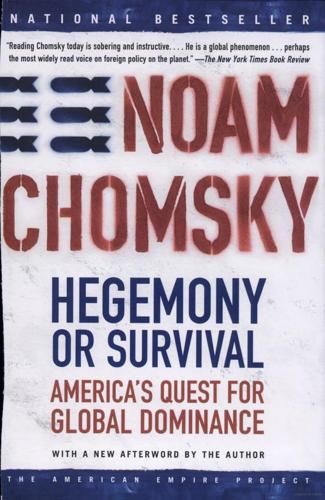
Hegemony or Survival: America's Quest for Global Dominance
by
Noam Chomsky
Published 1 Jan 2003
China was particularly alarmed, Steinbruner and Lewis write, by a 1998 long-range planning document of the US Space Command outlining a new concept of “global engagement,” including “space-based strike capabilities” that would allow the US to attack any country and to “deny similar capability to any other countries,” another Clinton-era precursor to the National Security Strategy of September 2002. The UN Conference on Disarmament has been deadlocked since 1998 by China’s insistence on maintaining the use of space for peaceful means and Washington’s refusal to agree, alienating many allies and creating conditions for confrontation.8 A May 2003 Rand Corporation study concludes that “the potential for an accidental or unauthorized nuclear missile launch in Russia or the United States has grown over the past decade despite warmer U.S.-Russian relations.” Neglecting these risks “could produce possibly the greatest disaster in modern history, and possibly in world history,” said former senator Sam Nunn, cochairman of the Nuclear Threat Initiative, which funded the report.
…
EP-3 planes near China,” such as the one shot down in early 2001, engendering a mini-crisis, “are not just for passive surveillance; the aircraft also collect information used to develop nuclear war plans.”25 China’s interpretation of BMD is shared by US strategic analysts, in virtually the same words: BMD “is not simply a shield but an enabler of U.S. action,” a Rand Corporation study observed. Others agree. BMD “will facilitate the more effective application of U.S. military power abroad,” Andrew Bacevich writes in the conservative National Interest: “by insulating the homeland from reprisal—albeit in a limited way—missile defense will underwrite the capacity and willingness of the United States to ‘shape’ the environment elsewhere.”
…
David Sanger, New York Times, 2 September 2001. Sanger, New York Times, 5 September 2001. Jane Perlez, New York Times, 2 September 2001. Clinton, see William Broad, New York Times, 1 May 2000. 8. John Steinbruner and Jeffrey Lewis, Daedalus, fall 2002. 9. David Ruppe, Global Security Newswire, 22 May 2003. Rand Corporation, Beyond the Nuclear Shadow, May 2003. Paul Webster, Bulletin of the Atomic Scientists, July–August 2003. 10. Judith Miller, New York Times, 20 January 2003. Nunn-Lugar initiative, see note 5. 11. Krepon, Bulletin of the Atomic Scientists, January–February 2003. 12. Michael Gordon, Eric Schmitt, New York Times, 11 March 2002.
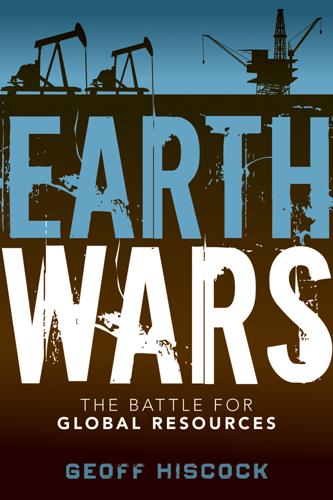
Earth Wars: The Battle for Global Resources
by
Geoff Hiscock
Published 23 Apr 2012
India: An Investor’s Guide to the Next Economic Superpower. Singapore: John Wiley & Sons (Asia), 2006, 321 pp. China and India, 2025: A Comparative Assessment. Santa Monica, RAND Corporation, 22 August 2011. Circum-Arctic Resource Appraisal: Estimates of Undiscovered Oil and Gas North of the Arctic Circle. Menlo Park, CA: U.S. Geological Service, 2008. Conflict with China: Prospects, Consequences and Strategies for Deterrence. Santa Monica, RAND Corporation, October 2011. Corruption Perceptions Index 2011. Berlin: Transparency International, 26 October 2011. Cunningham, Fiona, and Rory Medcalf. The Dangers of Denial: Nuclear Weapons in China-India Relations.
…
China has dismissed the Japanese position, in much the same way as it refuses to acknowledge various territorial claims further south in the oil-rich South China Sea by Vietnam, Malaysia, the Philippines, Brunei, and Taiwan. These waters, it constantly reminds its neighbours, always have been and always will be Chinese. A recent study prepared for the U.S. Army by the RAND Corporation on possible regional conflicts involving China found that “an ongoing territorial dispute over the Senkaku/Diaoyu islands and overlapping claims to exclusive economic zones in the East China Sea are persistent irritants to the (China-Japan) relationship. Conflict could arise from an at-sea incident in the East China Sea, or from the escalation of a war of words amplified by some sort of maritime encounter.”3 Just such an incident happened in September 2010, when Japanese authorities arrested the captain of a Chinese fishing trawler after his vessel rammed a Japanese coastguard ship near the Senkaku/Diaoyu islands.
…
Japanese Ministry of Defense, 2011 White Paper, Tokyo, 2 August 2011. 2. Chinese Foreign Ministry spokesperson Ma Zhaoxu, Beijing, 3 August 2011, reacting to Japan’s Defense White Paper. 3. James Dobbins, David Gompert, David Shlapak, Andrew Scobell, Occasional Paper, Conflict with China: Prospects, Consequences, and Strategies for Deterrence, (Santa Monica: RAND Corporation), October 2011. 4. Ross Garnaut, Australia and the Northeast Asian Ascendancy (Canberra: Australian Government Publishing Service, 1989), p. 36. 5. Ibid., p. 13. 6. Ibid., p. 36. 7. HSBC, “The World in 2050,” Hong Kong, January 2011. 8. Goldman Sachs, “BRICs and Beyond,” 23 November 2007. 9.

The Big Nine: How the Tech Titans and Their Thinking Machines Could Warp Humanity
by
Amy Webb
Published 5 Mar 2019
Department of Mathematics MIT Cambridge, MA Rosenblith, Walter R.L.E., MIT Cambridge, MA Rothstein, Jerome 21 East Bergen Place Red Bank, NJ Sayre, David IBM Corporation 590 Madison Avenue New York, NY Schorr-Kon, J. J. C-380 Lincoln Laboratory, MIT Lexington, MA Shapley, L. Rand Corporation 1700 Main Street Santa Monica, CA Schutzenberger, M. P. R.L.E., MIT Cambridge, MA Selfridge, O. G. Lincoln Laboratory, MIT Lexington, MA Shannon, C. E. R.L.E., MIT Cambridge, MA Shapiro, Norman Rand Corporation 1700 Main Street Santa Monica, CA Simon, Herbert A. Department of Industrial Administration Carnegie Institute of Technology Pittsburgh, PA Solomonoff, Raymond J. Technical Research Group 17 Union Square West New York, NY Steele, J.
…
That second half, more formally, is called “scenario planning” and develops scenarios about the future using a wide variety of data across numerous sources: statistics, patent filings, academic and archival research, policy briefings, conference papers, structured interviews with lots of people, and even critical design and speculative fiction. Scenario planning originated at the start of the Cold War, in the 1950s. Herman Kahn, a futurist at the RAND Corporation, was given the job of researching nuclear warfare, and he knew that raw data alone wouldn’t provide enough context for military leaders. So instead, he created something new, which he called “scenarios.” They would fill in the descriptive detail and narration needed to help those in charge of creating military strategy understand the plausible outcomes—that is, what could happen if a certain set of actions were taken.
…
In Proceedings of the 2016 ACM SIGSAC Conference on Computer and Communications Security (CCS 2016), 308–318. New York: ACM Press, 2016. Abstract, last revised October 24, 2016. https://arxiv.org/abs/1607.00133. Ablon, L., and A. Bogart. Zero Days, Thousands of Nights: The Life and Times of Zero-Day Vulnerabilities and Their Exploits. Santa Monica, CA: RAND Corporation, 2017. https://www.rand.org/pubs/research_reports/RR1751.html. Adams, S. S., et al. “Mapping the Landscape of Human-Level Artificial General Intelligence.” AI Magazine 33, no. 1 (2012). Agar, N. “Ray Kurzweil and Uploading: Just Say No!” Journal of Evolution and Technology 22 no. 1 (November 2011): 23–26. https://jetpress.org/v22/agar.htm.
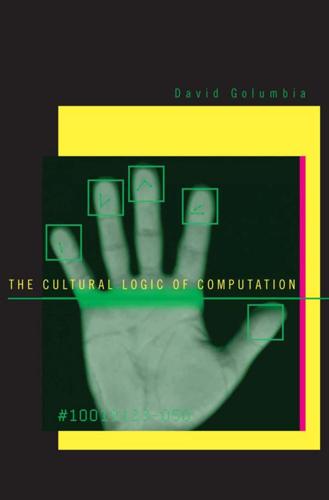
The Cultural Logic of Computation
by
David Golumbia
Published 31 Mar 2009
In a deliberate and also largely covert effort to resist the possibility of communist/Marxist encroachment on the U.S. conceptual establishment (which points at something far broader than institutional philosophy), individuals, government entities including the military and intelligence bodies (De Landa 1991), and private foundations like the RAND Corporation, promoted values like objectivity and rationalism over against subjectivity, collectivity, and shared social responsibility. Dovetailing precisely with the emerging availability of computing machinery in universities and with the waning productivity of the first wave of computing theorists (Turing, von Neumann, Shannon, et. al.), Chomsky offered the academy at least two attractive sets of theses that, while framed in terms of a profoundly new way of understanding the world, in fact harkened back to some of the most deeply entrenched views in the Western intellectual apparatus.
…
This doctrine, as Strauss’s approving invocation of Hobbes shows, has played a curious and in some ways determinative role in 20th-century political and intellectual practice. In several recent books (esp. Amadae 2003, Edwards 1996, and McCumber 2001) researchers have shown the deliberate creation of rationalist doctrines in the mid-20th century by U.S. think tanks, particularly the RAND corporation, such that this thought appears to be the spontaneous work of university academics but actually forms part of a coordinated plan to shape U.S. democratic practice. Of course, using rationalism as a basis for democracy makes a great deal of sense on the surface; but the deeper connections between the concept of natural right and the need for an absolute sovereign must be played down to make the theory palatable.
…
It is thus no accident that proponents of rationalism are often proponents of technological progressivism, perhaps most classically in computer history in the figure of Leibniz himself, who continually worked to build machines that would in some way or another perform the actions of thought for human beings. Amadae (2003) points to the concomitant emphasis on rationality and technology in the rational choice theorists, not least as expressed in the writings of the RAND corporation, historically a major proponent of both in contemporary U.S. thought. As Amadae puts it, “the mathematical formalism structuring rational choice theory is impelled by the same academy-wide momentum propelling an increased emphasis on formal models as an indication of scientific standing” (158), also pointing to the influence of one of the founders of modern computing, John von Neumann, on rational choice doctrine (via his writings on game theory, von Neumann and Morgenstern 1944).
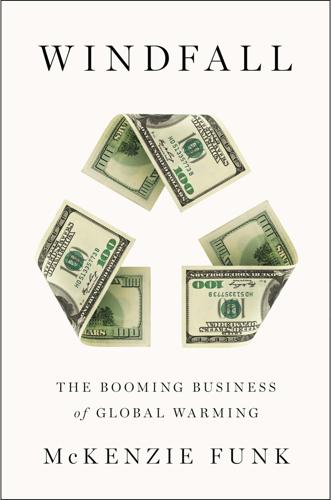
Windfall: The Booming Business of Global Warming
by
Mckenzie Funk
Published 22 Jan 2014
A scenario is not a forecast: Forecasts tend to assume that the future will be a continuation of the present, said Wack, and they are useless just when they are most crucial—when companies need to anticipate “major shifts in the business environment that make whole strategies obsolete.” Wack’s goal was to develop multiple versions of the future—an improvement on the scenario-planning technique he first learned from Herman Kahn, the pear-shaped contemplator of nuclear apocalypse at the Rand Corporation and Hudson Institute and perhaps the first person to call himself a futurist. “Herman Kahn was trying to get the future right—trying to get the one that was close to reality,” Schwartz told me. “Pierre was trying to influence the decisions we make today.” Rather than bet everything on a certain outcome, Wack had his oil company preparing to thrive no matter which version of the future came to pass.
…
“Everywhere in the world,” explained one Icelander who had run the numbers on shipping costs, “it is cheaper to do desalination.” The water industry’s biggest dreamers are the “bag and drag” men: those who would fill enormous polyester bags with freshwater and tow them through the oceans. Best known is Terry Spragg, the obsessed inventor of the Spragg Bag (www.waterbag.com). In the early 1970s, the Rand Corporation was studying how to tow icebergs to perennially water-stressed Southern California, and Spragg, who was ski bumming through the Rockies at the time, got in touch with the authors. Soon he was representing Prince Mohamed Al-Faisal of Saudi Arabia, the founder of Iceberg Transport International Ltd. and sponsor, in 1977, of the First International Conference and Workshops on Iceberg Utilization for Fresh Water Production, Weather Modification, and Other Applications.
…
House of Representatives, closed-door sessions led by DARPA (the Defense Advanced Projects Research Agency), studies by the Government Accountability Office and Congressional Research Service, policy statements by the American Meteorological Society and Britain’s Met Office, a design competition by Britain’s Institution of Mechanical Engineers, an ethics conference at Asilomar, a report by the Rand Corporation, a side event at the 2009 climate conference in Copenhagen, funding from the U.K. government for limited field research, a neologism-spawning endorsement (“climate remediation”) from the Bipartisan Policy Center in Washington, and a place in the 2014 IPCC report. Across the papers and panels and symposia, the majority opinion was not that geoengineering should be deployed—just cautiously studied.
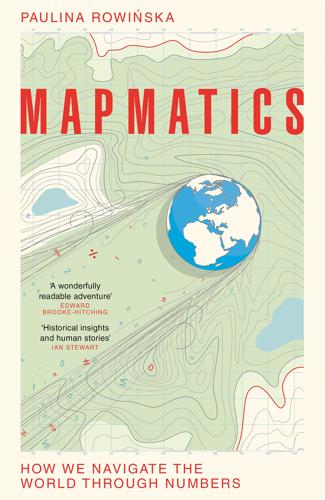
Mapmatics: How We Navigate the World Through Numbers
by
Paulina Rowinska
Published 5 Jun 2024
At some point, someone called it the ‘travelling salesman problem’ (TSP) and the name stuck.* Its first recorded use comes from a 1949 research paper by an exceptional mathematician, Julia Robinson,* although the mathematical community must have already been familiar with the term. Robinson spent about a year at the RAND Corporation, an American research and development institution founded soon after the Second World War to support the United States Armed Forces.* When faced with particularly challenging problems, the organization would offer prizes for solutions. Nobody ever received the prize for solving the TSP, but the bounty surely encouraged researchers to have a go at tackling the problem.
…
Cook, In Pursuit of the Traveling Salesman: Mathematics at the Limits of Computation (Princeton, NJ: Princeton University Press, 2011), 19–24. without having to touch the same place twice: Schrijver, ‘On the History of Combinatorial Optimization’, 49. find the shortest path connecting the points: Cook, In Pursuit, 36. support the United States Armed Forces: ‘A Brief History of RAND’, RAND Corporation, Santa Monica, CA, n.d., accessed 30 May 2023, https://www.rand.org/about/history.html. 4.5 times the shortest one: Cook, In Pursuit, 65–8. researchers developed another clever heuristic: John J. Bartholdi III et al., ‘A Minimal Technology Routing System for Meals on Wheels’, Interfaces 13, no. 3 (1983): 1–8, https://doi.org/10.1287/inte.13.3.1.
…
Gennadi ref1 ‘P’’ (Lehmann) ref1 Papahānaumokuākea Marine National Monument, USA ref1 parallels see latitudes (parallels) Patterson, Simon ref1n Perelman, Grigori ref1 Perez, Juan ref1 Peru ref1 Petchenik, Barbara Bartz ref1 Peters, Arno ref1 Peutinger Map ref1 Philosophiæ Naturalis Principia Mathematica (Newton) ref1 physiographic maps ref1 Pixar ref1, ref2 place cells ref1 plate tectonics ref1, ref2, ref3 Poincaré conjecture ref1 Poland, gerrymandering in ref1 politics see geopolitics; gerrymandering Polo, Marco ref1, ref2 Polsby–Popper test ref1 Porter, Irwin S. ref1 Prime Meridian ref1, ref2n Principia Philosophiae (Descartes) ref1n probabilities, subjective ref1 probability theory ref1n Proceedings of the Royal Geographical Society ref1 projections azimuthal ref1, ref2, ref3, ref4, ref5, ref6, ref7 education about ref1 Gall–Peters ref1, ref2 main types ref1, ref2 Mercator’s see Mercator projection orthographic ref1 political uses ref1 and qibla ref1, ref2 retroazimuthal ref1, ref2 Robinson’s ref1 and worldviews ref1, ref2 proof by contradiction ref1 Pythagoras ref1n qibla ref1, ref2, ref3 quadrants ref1 quaternions ref1n Rahim, Mohammed Kamil Abdul ref1, ref2 RAND Corporation ref1 Rand McNally ref1, ref2 Randel, John ref1 random seed and grow algorithm ref1 Rasmussen, Lars and Jens Eilstrup ref1 ReCom algorithm ref1 RenderMan software ref1 retroazimuthal projections ref1, ref2 rhumb lines ref1, ref2, ref3 Richardson, Lewis Fry ref1, ref2, ref3, ref4, ref5, ref6, ref7 Rickey, V.
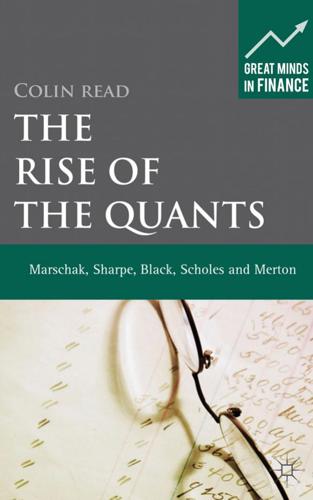
The Rise of the Quants: Marschak, Sharpe, Black, Scholes and Merton
by
Colin Read
Published 16 Jul 2012
Sharpe began to ponder the broader implications of Markowitz’s big idea regarding the optimal risk–reward trade-off in the new Modern Portfolio Theory. With a Master’s degree in economics in hand, Sharpe took a job with the RAND Corporation in Santa Monica, California, just a few minutes’ drive from UCLA. This job opportunity permitted him to become immersed in an intellectually stimulating environment while he also pursued a PhD at UCLA under the continued mentorship of Professor Alchian. It also allowed him to cross paths with Harry Markowitz himself. The RAND Corporation While at RAND, Sharpe had the opportunity to rub shoulders with some of the greatest minds ever assembled to address the sciences, mathematics, and social sciences demanded in the Cold War-immersed USA.
…
Markowitz’s model is most profound if we accept the assumptions that a security can be priced based on its mean historic return and its Expected return Capital allocation line Efficient portfolio frontier Risk-free return Risk Figure 10.1 The capital allocation line 64 The Rise of the Quants Expected return High risk tolerance Capital allocation line Efficient portfolio frontier Low risk tolerance Risk-free return Risk Figure 10.2 Various choices of risk and return along the capital allocation line variance or standard deviation. However, it also acted as a springboard to an equally elegant interpretation from one of Markowitz’s associates, William Forsyth Sharpe. The Sharpe insight By the time William Forsyth Sharpe introduced himself to Markowitz in 1960 at the RAND Corporation, at the behest of a mentor, Fred Weston at UCLA, Modern Portfolio Theory was still a relatively theoretical insight. Computational challenges prevented a powerful theoretical tool from making the leap from academia into practice. Serendipity was repeated when, following a chance meeting in the waiting room of Jacob Marschak a decade earlier that gave rise to Modern Portfolio Theory, the speculative knock on the office door of Markowitz changed Sharpe’s academic fortunes and would establish a new theory as the foundational tool of securities pricing.
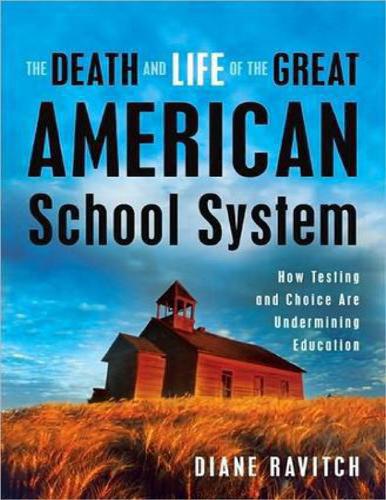
The death and life of the great American school system: how testing and choice are undermining education
by
Diane Ravitch
Published 2 Mar 2010
Ten years later, there were 127 charter schools, nearly half in Philadelphia. The city adopted what is known as the “diverse provider model,” in which district schools compete with charter schools and privately managed schools (operating under contract to the district and not entirely free of districtwide mandates). Researchers from the RAND Corporation noted that achievement had improved in Philadelphia, but “with so many different interventions under way simultaneously in Philadelphia, there is no way to determine exactly which components of the reform plan are responsible for the improvement.” The RAND team concluded in 2008 that students in charter schools made gains that were statistically indistinguishable from the gains they experienced while attending traditional public schools.
…
Department of Education, 2007), 50, 58. 29 Sam Dillon, “Collapse of 60 Charter Schools Leaves Californians Scrambling,” New York Times, September 17, 2004. 30 Kristen A. Graham, “SRC Told Firms Need New Role,” Philadelphia Inquirer, June 11, 2009; Brian Gill et al., State Takeover, School Restructuring, Private Management, and Student Achievement in Philadelphia (Santa Monica, CA: RAND Corporation, 2007), 39-41; Ron Zimmer et al., “Evaluating the Performance of Philadelphia’s Charter Schools,” Working Paper, RAND Education, Mathematica Policy Research, and Research for Action, 2008, iii. See also Kristen A. Graham, “Study: District-Run Phila. Schools Top Manager-Run Ones,” Philadelphia Inquirer, April 9, 2009. 31 Martha Woodall, “Charter Schools’ Problems Surfacing,” Philadelphia Inquirer, December 29, 2008; Dan Hardy, “Charter School Appeals to Block Release of Records,” Philadelphia Inquirer, June 11, 2009. 32 Buckley and Schneider, Charter Schools: Hope or Hype?
…
Department of Education, National Center for Education Statistics, 2006), iii-v. 42 Christopher Lubienski and Sarah Theule Lubienski, Charter, Private, Public Schools and Academic Achievement: New Evidence from NAEP Mathematics Data (New York: National Center for the Study of Privatization in Education, Teachers College, Columbia University, 2006), 2-5, 40. See also Ron Zimmer et al., Charter Schools in Eight States: Effects on Achievement, Attainment, Integration, and Competition (Santa Monica, CA: RAND Corporation, 2009). 43 Erik W. Robelen, “NAEP Gap Continuing for Charters: Sector’s Scores Lag in Three Out of Four Main Categories,” Education Week, May 21, 2008, 1, 14. 44 Atila Abdulkadiroglu, Thomas Kane, et al., Informing the Debate: Comparing Boston’s Charter, Pilot and Traditional Schools (Boston: The Boston Foundation, 2009), 39; Boston Globe, “Top-Scoring Schools on the 10th Grade MCAS,” 2008, www.boston.com/news/special/education/mcas/scores08/10th_top_schools.htm; Jennifer Jennings, “The Boston Pilot/Charter School Study: Some Good News, and Some Cautions,” Eduwonkette blog, January 7, 2009, http://blogs.edweek.org/edweek/eduwonkette/2009/01/the_boston_pilotcharter_school.html. 45 Vaznis, “Charter Schools Lag in Serving the Neediest.” 46 Center for Research on Education Outcomes (CREDO), Multiple Choice: Charter School Performance in 16 States (Stanford, CA: Stanford University, 2009); Lesli A.
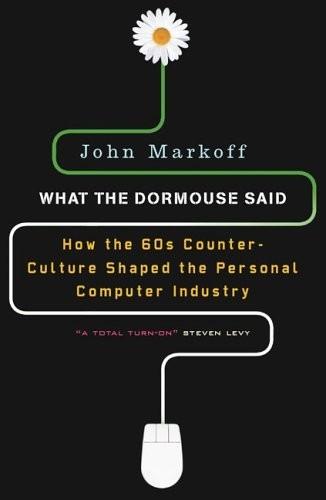
What the Dormouse Said: How the Sixties Counterculture Shaped the Personal Computer Industry
by
John Markoff
Published 1 Jan 2005
The goal of the study was to discover which device would allow a user to get to a given point on the screen most quickly as well as repeatedly with the fewest errors. English was anxiously looking for a project to get into, and so Engelbart told him to begin organizing pointer experiments. Other kinds of pointing devices were already in use, including light pens, trackballs, and tablets with styli. The RAND Corporation had invented the latter, and though Engelbart hoped for a while that he could persuade them to lend him one for their research, the company told him it didn’t have any available. The actual idea of a rolling, handheld pointing device came to Engelbart one day when he was at a computer-graphics conference.
…
Since computers did things at lightning speed, and since in the days before graphical displays most user interaction with the machine consisted of merely entering text and data at a keyboard, the vast majority of the computer’s time was being wasted while it waited for user input. To be sure, there had been an earlier time-sharing machine invented at the RAND Corporation known as JOSS, but it consisted of lights on top of terminals—the computer’s time was allocated to the terminal whose light was switched on at the moment! In the late 1950s, however, McCarthy’s notion was prescient and similar to Doug Engelbart’s vision for the Augmentation machine. However, they remained fundamentally different concepts.
…
During his travels, Kay also visited the nation’s best computer-science research centers. He spent time in Menlo Park with the Augment Group, where Bill English took him under his wing and introduced him to many of Engelbart’s best young researchers. He traveled to MIT, where he visited with Papert. He traveled to the RAND Corporation and learned about a system called GRAIL that made it possible for a computer to respond directly to human gestures. He was already familiar with the ARPAnet ideas that would ultimately lead to today’s Internet. Moreover, in Hawaii, ARPA-funded experimenters were playing with the idea of creating wireless networks, and so it made sense that his notebook-sized Flex machine would have a wireless connection to the outside world as well.

Smart Mobs: The Next Social Revolution
by
Howard Rheingold
Published 24 Dec 2011
These are the kind of rules that don’t fit real life with predictive precision, but that do attract economists, because they map onto the behavior of observable phenomena like markets, arms races, cartels, and traffic. After World War II, von Neumann joined other mathematicians and economists to brainstorm game theory at a mundane building that still houses the same institution near the Santa Monica beach. The RAND Corporation was the first think tank, where intellectuals with security clearances thought about the unthinkable, as RANDite Herman Kahn referred to the craft of thermonuclear war strategy.31 Because the arms race seemed to be closely related to the kind of bluff and counter-bluff described by game theory, the new field became popular among the first nuclear war strategists.
…
In addition to the organizers’ all-points network, protest communications were leavened with individual protesters using cell phones, direct transmissions from roving independent media feeding directly onto the Internet, personal computers with wireless modems broadcasting live video, and a variety of other networked communications. Floating above the tear gas was a pulsing infosphere of enormous bandwidth, reaching around the planet via the Internet.18 From Seattle to Manila, the first “netwars” have already broken out. The term “netwar” was coined by John Arquilla and David Ronfeldt, two analysts for the RAND corporation (birthplace of game theory and experimental economics), who noticed that the same combination of social networks, sophisticated communication technologies, and decentralized organizational structure was surfacing as an effective force in very different kinds of political conflict: Netwar is an emerging mode of conflict in which the protagonists—ranging from terrorist and criminal organizations on the dark side, to militant social activists on the bright side—use network forms of organization, doctrine, strategy, and technology attuned to the information age.
…
Bronowski, The Ascent of Man (Toronto: Little, Brown, 1973). 31. Herman Kahn, On Thermonuclear War (Princeton: Princeton University Press, 1960). 32. Jean-Jacques Rousseau, ADiscourse on Inequality (London: Penguin, 1984). 33. Merrill M. Flood, “Some Experimental Games,” Research Memorandum RM789 (Santa Monica, Calif.: RAND Corporation, 1952). 34. A. W. Tucker, “On Jargon: The Prisoner’s Dilemma,” UMAP Journal 1 (1950): 101. 35. Robert Axelrod, The Evolution of Cooperation (New York: Basic Books, 1985). 36. Ibid., 12. 37. Ibid., 31. 38. Ibid., viiiix. 39. Ibid., 21. 40. R. L. Trivers, “The Evolution of Reciprocal Altruism,” Quarterly Review of Biology 46 (1971): 3537. 41.
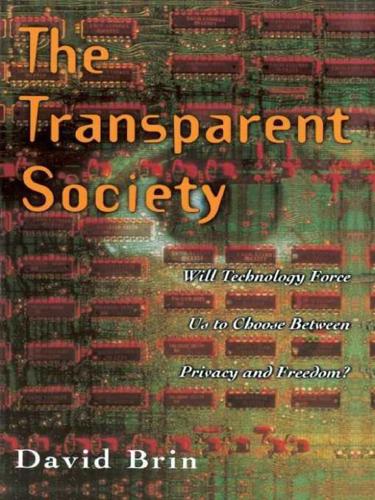
The Transparent Society: Will Technology Force Us to Choose Between Privacy and Freedom?
by
David Brin
Published 1 Jan 1998
A motive that would fundamentally affect all the networks that followed, and perhaps alter society forever. Ironically, this fantastic device for peaceful rambunctiousness arose out of bloody-minded contemplations, then called “thinking about the unthinkable.” Pondering what to do during and after a nuclear war. Back in 1964, Pentagon officials asked the Rand Corporation to imagine a transcontinental communication system that might stand a chance of surviving even an atomic cataclysm. Since every major telephone, telegraph, and radio junction would surely be targeted, generals were desperate for some way to coordinate with government, industry, and troops in the field, even after a first strike against U.S. territory.
…
In the 1960s and 1970s there was passionate interest in “Delphi polling,” which involved asking a large number of knowledgable people about the likelihood of certain future events. The average of their opinions was thought for a while to have some unbiased validity, when in fact it simply reflected the notions that were most fashionable at the time. In one infamous example, the renowned Rand Corporation released a set of predictions that included reliable long-range weather forecasting and mind control by 1975; manipulation of weather, controlled fusion, and electronic organs for humans by 1985; and sea floor mines, gene correction, and intelligent robots by 1990. Modern institutions of government and private capital are deeply concerned over the murkiness of their projections.
…
Recognize that doing all these things properly will involve letting go of hierarchical power, without necessarily giving up the advantages of a clearly defined modern state. This is hard to do, but the neo-West already has a myriad precedents, as well as an educated population that is more than willing to turn the devolution of skill and authority into a national resource. This final theme arises in a recent book about netwar and cyberwar, edited by Rand Corporation researchers John Arquilla and David Ronfeldt: In Athenaʼs Camp: Preparing for Conflict in the Information Age, a collection of papers that explores many of the new and perilous types of confrontation that we touched upon briefly here. Most of the contributing authors appear to agree on one conclusion: the information revolution favors and strengthens networked forms of organization, while making life difficult for hierarchical forms.
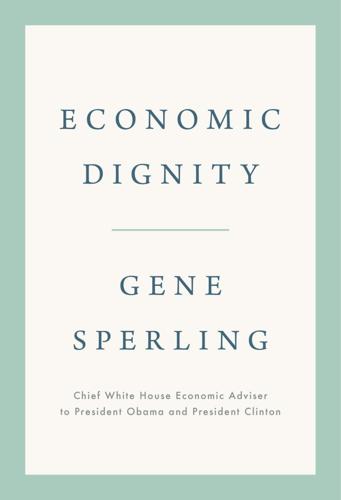
Economic Dignity
by
Gene Sperling
Published 14 Sep 2020
“About half (51 percent) of employed Americans say they get a sense of identity from their job, while the other half (47 percent) say their job is just what they do for a living.”12 Education mattered in this study: 77 percent of workers with a postgraduate degree and 60 percent of those with a college degree say their job gives them a sense of identity, while only 38 percent of those who have a high school diploma or less say the same.13 The type of employment also matters. Over 60 percent of those in government jobs, self-employment, or nonprofit work report deriving identity from work, compared with 42 percent in the private sector.14 The RAND Corporation found somewhat more positive outcomes than other studies. It asked Americans ages twenty-one to seventy-five if their work provides them with the “satisfaction of work well done,” a “feeling of doing useful work,” a “sense of personal accomplishment,” the ability to “make positive impact on community/society,” “opportunities to fully use talents,” and “goals to aspire to.”
…
The “summer slide” or summer “enrichment gap” or “Harry Potter divide”84 shows that much of the gap between poor and wealthier students gets even worse in the summer, when students of more means are much more likely to participate in enriching activities including camps, learning programs, and even reading Harry Potter books. Trials by the Wallace Foundation and RAND Corporation found that low-income students who consistently attended free, voluntary five- or six-week summer programs received significant reading and math gains compared with students who applied for the programs but were not accepted.85 PAVING THE ROAD TO COLLEGE Many, like me, realize only later in life the gift we inherited at birth of a high—almost assumed—expectation of going to college, and a tremendous support system that served as a magnet to keep us on track.
…
“How Americans View Their Jobs,” Pew Research Center, October 6, 2016, https://www.pewsocialtrends.org/2016/10/06/3-how-americans-view-their-jobs/. 13. “How Americans View Their Jobs.” 14. “How Americans View Their Jobs.” 15. Nicole Maestas, Kathleen J. Mullen, David Powell, Till von Wachter, and Jeffrey B. Wenger, Working Conditions in the United States: Results of the 2015 American Working Conditions Survey (Santa Monica, CA: RAND Corporation, 2017), 46. 16. Michaelson et al., “Meaningful Work,” 80. 17. Catherine Bailey and Adrian Madden, “What Makes Work Meaningful—or Meaningless,” MIT Sloane Management Review (2016), accessed November 8, 2019, https://sloanreview.mit.edu/article/what-makes-work-meaningful-or-meaningless/. 18.
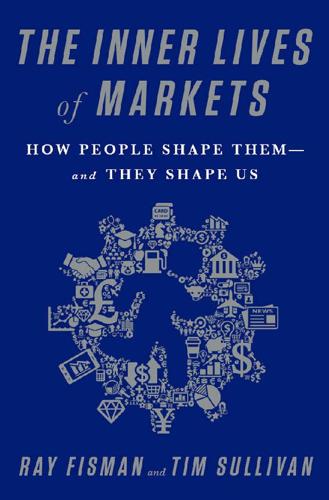
The Inner Lives of Markets: How People Shape Them—And They Shape Us
by
Tim Sullivan
Published 6 Jun 2016
One, the Cowles Commission for Research in Economics, founded in Colorado Springs in 1932 by businessman and economist Alfred Cowles, aimed to link economic theory more closely to math and statistics in an effort to model the economy. Cowles was inspired by the Great Depression and driven by the desire to bring scientific rigor to the study of the economy. The foundation’s founding motto was “Science is Measurement.”11 The second, the RAND Corporation, first established as a joint project by the Douglas Aircraft Company and the US Department of War in 1945, used game theory to analyze the United States’s geopolitical position relative to the Soviet Union. Game theory—a mathematical approach to analyzing strategic choices—emerged from the work of Princeton mathematician John von Neumann in the 1930s, who collaborated with his economist colleague Oskar Morgenstern to write Theory of Games and Economic Behavior (published in 1944), which launched the field.
…
To grasp the basic idea behind the way students in Boston, Paris, and Shanghai are matched to schools, doctors get their residencies, and graduates of the Air Force Academy are assigned to postings, it’s easiest to go back to the middle-school gym to figure out a better way of assigning girls and boys to their first dance.2 Lloyd Shapley, Matchmaker In 1962, the mathematician Lloyd Shapley was working at the RAND Corporation (which, you may recall from Chapter 2, along with the Cowles Foundation, helped spur the post–World War II mathematization of economics). Shapley preferred to spend his time thinking about problems like matching girls and boys at the dance rather than the strategic intricacies of the Cold War.
…
Woods store, 1–2 person’s life, value of, 166–167 philanthropic commitments, 72–75 Pillow Pets, 128–129 platforms babysitting, 121 Champagne fairs as, 126–128 competition, 124–126 credit card, 113–116 economics of, 107–112 greed in, 128–129 mobile market, 116 multisided, 14 rules for, 112–117 video game system, 116 See also economics Podolny, Joel, 39, 43 poker, bluffing in, 26 See also chess; Cold War Pontiff, Jeffrey, 11–12 posting system, 79–81, 100–101 POW camps, 7–13, 175–177 power law distributions, 22 practice, market, 14–15 Prendergast, Canice, 154–160 “Price and Advertising Signals of Product Quality” (Milgrom and Roberts), 70–71 price discovery, 83 priceless, when something is, 132–133 prisoners’ dilemma game, 178–179 property, expected value of, 56 Radford, R. A., 7–10, 22–23 Ranau Japanese POW camp, 10–11 RAND Corporation, 25, 27, 134–136 reality-based economic modeling, 35–37, 49–51, 141 See also lemon markets theory recessions, 36, 48, 75 Roberts, John, 66, 70–71 Ross, Lee, 177–179 Roth, Al, 140, 141, 163–165 rush, fraternity/sorority, 140 Rutland, VT, 1 Rysman, Marc, 109 Samuelson, Paul, 28–29, 44 Samuelson, William, 55–57 San Fernando Valley gangs, 61–62 San Fers gang, 61–62 Sandakan camp, Borneo, 10–11 Sauget, IL, 168–169 scams internet, 52–55 money-back, 69–70 Scarf, Herbert, 163–164 school choice, in Sweden, 151–152 school to student matching, 138–139, 141–142, 143–149 Schultz, Theodore, 35 Schumpeter, Joseph, 24, 49–50 Scottish auctions, 82 Sears, 115–116 second-bid auction, 81–82 second-price sealed-bid auctions, 87–89 “Selection process starts with choices, ends with luck” (article), 146 self-destructive behaviors, signaling theory and, 67–68 selfish, markets making us, 177–179 seller misrepresentation, 52–55 sellers, knowing more than buyers, 41, 44–55 Seven Minute Abs, 172 Shakin’ Cat Midgets gang, 61 Shapley, Lloyd, 134–136, 137–138, 163–164 Shapley-Gale algorithm, 137–140 Shi, Peng, 148 Shleifer, Andrei, 180–181 shopping malls, as two-sided markets, 122–123 Shoup, Carl, 85 sick organizations, 142–143 signaling model applications of, 66–68 commitment signs, 62–66 competitive signaling, 69–71 integrity, 71–75 Silicon Valley, market friction and, 169–173 Skoll, Jeff, 39–40, 43, 51 Smith, Adam, 21 Snider, James, 42 social efficiency, auctions, 89 social well-being, assessing, 22 Solow, Robert, 35 Solow model, 35 Sönmez, Tayfun, 144 Sony’s Blu-ray format war, 125–126 sorority rush, 140 spectrum auction theory, 102–103 Spence, Michael, 62–66 Stack, Charles, 42–43 Stalag VII-A POW camp market, 5–6, 7–10, 13 stamp collecting, 82–84 Stiglitz, Joseph, 35–36, 76, 182 strategy proofness mechanism, 145 student to school matching, 138–139, 141–142, 143–149 Summers, Larry, 166–167 Super Bowl advertising, 70–71 supply and demand, 96 survival rates, of Japanese vs.
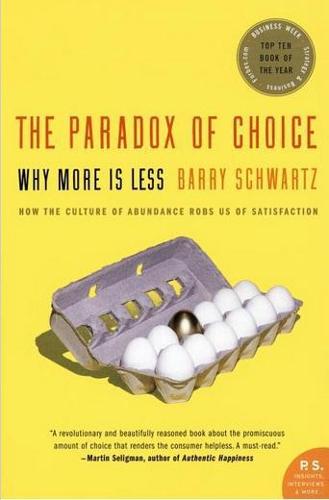
The Paradox of Choice: Why More Is Less
by
Barry Schwartz
Published 1 Jan 2004
If you want to experience this problem for yourself, pick some prescription drug that is now being marketed directly to you, then do a web search to find out what you can about the drug that goes beyond what the ads tell you. I just tried it for Prilosec, one of the largest-selling prescription medications in existence, which is heavily advertised by its manufacturer. I got more than 20,000 hits! And there is good evidence that the absence of filters on the Internet can lead people astray. The RAND Corporation recently conducted an assessment of the quality of web sites providing medical information and found that “with rare exceptions, they’re all doing an equally poor job.” Important information was omitted, and sometimes the information presented was misleading or inaccurate. Moreover, surveys indicate that these web sites actually influence the health-related decisions of 70 percent of the people who consult them.
…
Twitchell, Lead Us into Temptation: The Triumph of American Materialism (New York: Columbia University Press, 1999). The quote is on p. 53. Yet several studies R.B. Zajonc, “Attitudinal Effects of Mere Exposure,” Journal of Personality and Social Psychology, 1968, 9 (part 2), 1–27. The Internet can On rating the raters one finds on the Internet, see the Nadel article. The RAND Corporation On the accuracy of medical web sites, see T. Pugh, “Low Marks for Medical Web Sites,” Philadelphia Inquirer, May 23, 2001, p. A3. For a thorough discussion of strategies for information seeking and decision making in the modern, information-laden world, see J.W. Payne, J.R. Bettman, and E.J.
…
See surveys Porter, Roy positional competition positional goods positive liberty postdecision regret posters PPOs prescription drugs presumptions Prilosec Princeton University prison population product placement, in movies prospect theory comparisons and description of endowment effect and neutral point and sunk costs and psychological accounting public television, ads on Putnam, Robert Q Quarterlife Crisis R racial identification RAND Corporation Real Simple, reasoning, satisfaction and reference prices regret anticipated aversion of counterfactuals and effects of maximizing and mitigation of near misses and omission bias and postdecision Regret Scale responsibility and satisfaction and sunk costs and upside to see also trade-offs Regret (Landman) religion remembered utility responsibility, regret and restaurants retirement plans reversible decisions risk, risk assessment: loss and gain preferences and and most frequent causes of death prospect theory and see also decision-making risk aversion risk seeking romantic relationships, reasoning and routines rules, as means of eliminating choice “rules of the game,” S salience definition of omission bias and perception and satisfaction: misprediction of reasoning and regret and “three gap” assessment and see also happiness satisfaction treadmill Satisfaction with Life Scale satisficers definition of as maximizers maximizers compared with social comparison and trade-offs and scarcity Scitovsky, Tibor Seabrook, John second-order decisions security, primary importance of self-blame self-determination self-esteem, in comparison with others self-respect, freedom and Seligman, Martin Sen, Amartya shopping: comparison framing and reference prices and by maximizers by satisficers time vs. pleasure and Silent World of Doctor and Patient, The (Katz) Simon, Herbert simplicity Sipress, David sitcoms, decreasing length of Smaller, Barbara Smeloff, Edward A.
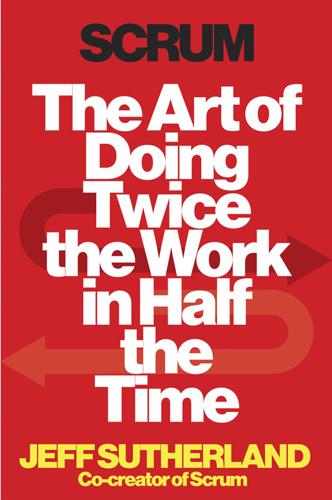
Scrum: The Art of Doing Twice the Work in Half the Time
by
Jeff Sutherland
and
Jj Sutherland
Published 29 Sep 2014
As with the bandwagon effect, people who are focused on the “halo” don’t look at actual data—rather, they gravitate toward something that has a positive sheen to it. Again, this isn’t a failure of will; this is the nature of people. Fighting it head-on is silly—it’s like fighting gravity. But you can be clever about it. In the 1950s, the Rand Corporation was asked to answer some questions—the terrifying kind that got bandied about during the Cold War. Invoking in their terminology the Oracle of Delphi, the priestess who could predict the future, Norman Dalkey and Olaf Helmer published in 1963 a blandly titled paper, “An Experimental Application of the Delphi Method to the Use of Experts,” with the helpful reference “Memorandum RM-727/1-Abridged.”
…
And estimates on small pieces of the project. If people are more than three cards apart, then the high and the low cards talk about why they think what they do. Then everyone does another round of Planning Poker. Otherwise they just average the estimates, which will approximate the numbers that the statisticians at the Rand Corporation came up with. Here’s an example: Let’s say you’re painting the interior of a house, and you need to estimate how long it will take to paint the living room, the kitchen, and two bedrooms. And you’re doing this with a team that you’ve painted rooms with before. So first the two bedrooms: everyone estimates those at a three.
…
Olympic Basketball team, 2004 U.S., 7.1 Omaha Beach OODA loop, 2.1, 2.2, 2.3, 8.1, 185, 8.2, 8.3 OpenView Venture Partners, 1.1, 3.1, 5.1, 8.1 Org Chart Orient, 2.1, 2.2, 2.3, 8.1, 185 output, as measurable standard Overburden Palm paper airplanes, PDCA cycle in making Pashler, Harold passivity, elimination of PatientKeeper, 7.1, 7.2 patterns: negative in Scrum PDCA cycle (Plan, Do, Check, Act), 2.1, 2.2, 5.1, 7.1 peer review “Perils of Obedience, The” (Milgram) Personal Digital Assistants (PDAs) personal growth Petraeus, David Pets.com, 8.1 planning, 1.1, 6.1 Waterfall, see Waterfall method weddings, 6.1, 6.2, 6.3 Planning Poker, 6.1, 6.2, 9.1 Porath, Christine Portal poverty, 9.1, 9.2, 9.3 prioritization, 1.1, 7.1, 7.2, 8.1 process, happiness in product attributes, 172 Product Backlog, see Backlog product development: incremental value in productivity happiness and hours worked and, 5.1, 103, 8.1 Scrum and Product Marketing Product Owner, 2.1, 8.1, 8.2, app.1, app.2 essential characteristics of feedback and, 8.1, 8.2, 8.3, 8.4 incremental value and as internal customer product vision, 8.1, 172, 8.2 Backlog and profit margins Progress Out of Poverty Index projects, prioritizing between, 93 ProPublica, purpose, 2.1, 7.1 Putnam, Lawrence Quattro Pro for Windows Rand Corporation, 6.1, 6.2 rat race Reasonableness, 5.1, 5.2, 5.3 relative size, 6.1, 6.2, 6.3 releases, incremental, see incremental development and delivery renovations, time frame for Rethink Robotics retrospective revenue, 8.1, 8.2, 8.3 in venture capital review rituals re-work RF-4C Phantom reconnaisance jet rhythm, 5.1, 5.2 risk robots, 2.1, 4.1, 9.1 rockets Rodner, Don Rogers Commission Roomba Roosevelt, Theodore rugby as analogy New Zealand All Blacks team in Rustenburg, Eelco Said, Khaled Salesforce.com, 1.1, 3.1 Agile practices at sales teams Sanbonmatsu, David Schwaber, Ken Scrum Backlog as power of freedom and rules in and Heathcare.gov, 1.1 implementing in Japan, 2.1 managers’ difficulty with and Medco, 6.1, 6.2, 6.3, 6.4 at NPR at OpenView origins at Easel, 2.1, 4.1, 4.2, 4.3 origins in software development of positive behavior rewarded in productivity increases with reaching greatness with at Salesforce.com, 3.1 system examined and fixed in team size in time conceptualized in transparency in at Valve workweek and, 103 Scrum board, 7.1, 7.2, 8.1, 9.1, app.1 in education “SCRUM Development Process” (Sutherland and Schwaber) Scrum Master, 3.1, 4.1, 7.1, 8.1, 8.2, app.1, app.2, app.3 “Secret Weapon: High-value Target Teams as Organizational Innovation” (Lamb and Munsing) self-control, decision making and Senate Judiciary Committee set-based concurrent engineering Shook, John short cycles short term memory, retention in Shu Ha Ri, 2.1, 9.1 single-tasking sizing, relative, 6.1, 6.2 skills small teams, superiority of, 3.1, 3.2 SMART government Smithsonian Institution soccer social motivation software, fixing bugs in software development, 2.1, 3.1 Sony Soviet Union space travel, private specialization, communication damaged by, 4.1, 4.2 Special Operations Forces (SOF), U.S.

The Great Wave: The Era of Radical Disruption and the Rise of the Outsider
by
Michiko Kakutani
Published 20 Feb 2024
Modern binoculars allow people to see some 217,000 stars, and a small telescope an astonishing 5.3 million: multiplying points of light that can be connected into countless patterns, representing countless objects, personages, and myths—basically, whatever one wants to imagine. Today’s proliferation of data has also made us vulnerable to a new brand of propaganda, pioneered by Putin’s Russia (and adopted by Donald Trump) that exploits information overload and people’s adrenal fatigue. This is propaganda less reliant on old-fashioned censorship than what RAND Corporation analysts call the “firehose of falsehood,” that is, pelting the public with such high volumes of lies, contradictory facts, disinformation, half-truths, news, gossip, and just plain noise that people grow numb and their weariness coagulates into cynicism and resignation. To compound the problem, we have become dependent on search engines, media companies, social media, and bots to navigate this vast ocean of data, and those filters determine what information (or disinformation) we see online and how it shapes—or distorts—our perception of the world.
…
It was a quality built into the foundations of what would become the internet when the U.S. government was grappling, in the early 1960s, with Cold War fears of a conflict with the Soviet Union, and needed a communications network that could withstand a nuclear attack. Paul Baran, a Polish-born engineer at the RAND Corporation, proposed a solution: Whereas centralized systems (shaped like a star) were susceptible to being taken out by one strategically placed hit, he argued, a “distributed” system (shaped like a grid with many nodes that created redundancy) had much better chances of surviving—even if several nodes were knocked out, at least a portion of the network would continue to function.
…
&text=Astronomers%20use%20the%20magnitude%20scale%20to%20measure%20star%20and%20planet%20brightne. GO TO NOTE REFERENCE IN TEXT “firehose of falsehood”: Christopher Paul and Miriam Matthews, “The Russian ‘Firehose of Falsehood’ Propaganda Model: Why It Might Work and Options to Counter It,” RAND Corporation, 2016, rand.org/pubs/perspectives/PE198.html. GO TO NOTE REFERENCE IN TEXT One particularly fateful decision: Jaron Lanier, “How We Need to Remake the Internet,” TED2018, ted.com/talks/jaron_lanier_how_we_need_to_remake_the_internet?language=en. GO TO NOTE REFERENCE IN TEXT “What might once have been called”: Ten Arguments for Deleting Your Social Media Accounts Right Now (New York: Picador/Henry Holt and Co., 2018), 6.
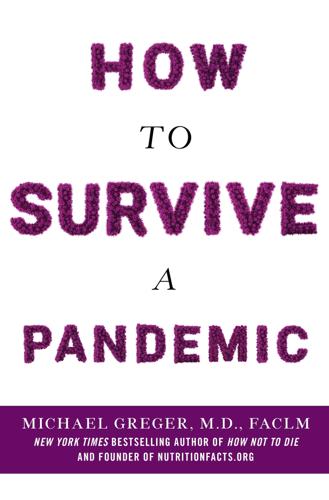
How to Survive a Pandemic
by
Michael Greger, M.D., FACLM
Prepared for the Office of the Secretary of Defense. National Defense Research Institute, RAND Corporation. www.rand.org/pubs/monographs/2004/RAND_MG135.pdf. 1026. Ishmael W. 2003. A soft underbelly. Beef, July 1, p. 11. beef-mag.com/mag/beef_soft_underbelly/index.html. 1027. Chalk P. 2004. Hitting America’s soft underbelly: the potential threat of deliberate biological attacks against the U.S. agricultural and food industry. Prepared for the Office of the Secretary of Defense. National Defense Research Institute, RAND Corporation. www.rand.org/pubs/monographs/2004/RAND_MG135.pdf. 1028. National Agricultural Statistics Service, USDA. 2017.
…
Hitting America’s soft underbelly: the potential threat of deliberate biological attacks against the U.S. agricultural and food industry. Prepared for the Office of the Secretary of Defense. National Defense Research Institute, RAND Corporation. www.rand.org/pubs/monographs/2004/RAND_MG135.pdf. 1031. Chalk P. 2004. Hitting America’s soft underbelly: the potential threat of deliberate biological attacks against the U.S. agricultural and food industry. Prepared for the Office of the Secretary of Defense. National Defense Research Institute, RAND Corporation. www.rand.org/pubs/monographs/2004/RAND_MG135.pdf. 1032. Chalk P. 2004. Hitting America’s soft underbelly: the potential threat of deliberate biological attacks against the U.S. agricultural and food industry.
…
America’s Soft Underbelly According to the Government Accountability Office, long-distance live animal transport not only places countries at risk for catastrophic disease outbreaks,1023 but it makes them vulnerable to bioterrorism as well.1024 U.S. animal agriculture has been described as a particularly easy target,1025 not only as “one of the probable threats for an economic attack on this country,”1026 according to former U.S. Deputy Secretary of Agriculture, but also as a direct attack on our citizenry. In 2004, the RAND Corporation prepared a report on agroterrorism for the Office of the Secretary of Defense titled Hitting America’s Soft Underbelly. They blamed America’s vulnerability in part on the “concentrated and intensive nature of contemporary U.S. farming practices.”1027 According to the last USDA census, the top 1 percent of the nation’s feedlots produced about half of the cattle1028 and 1 percent of U.S. egg farms confine more than 90 percent of the nation’s egg-laying hens.1029 Given that “highly crowded” animals are reared in “extreme proximity” in the United States, one infected animal could quickly expose thousands of others.1030 The RAND corporation points out that individual animals raised by U.S. agriculture have become progressively more prone to disease as a result of increasingly routine invasive procedures: Herds that have been subjected to such modifications—which have included everything from sterilization programs to dehorning, branding, and hormone injections—have typically suffered higher stress levels that have lowered the animals’ natural tolerance to disease from contagious organisms and increased the viral and bacterial “volumes” that they normally shed in the event of an infection.1031 Long-distance live transport could then ferry the spreading infection, according to USDA models, to as many as twenty-five states within five days.1032 Curtailing the long-distance live transport of animals, as well as the concentration and intensification of the food animal industry, could thus potentially be a matter of national security.
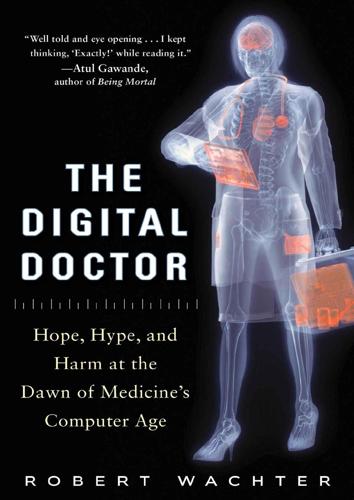
The Digital Doctor: Hope, Hype, and Harm at the Dawn of Medicine’s Computer Age
by
Robert Wachter
Published 7 Apr 2015
Hirschtick, “A Piece of My Mind: Copy-and-Paste,” Journal of the American Medical Association 295:2335–2336 (2006). 72 Ross Koppel, a University of Pennsylvania sociologist Interview of Koppel by the author, July 18, 2014. 73 In 2013, Steve Stack, board chair of the American Medical Association Quoted in F. Quinn, “Why Are Doctors Frustrated in Using EHR?,” MedCity News, November 7, 2013, available at http://medcitynews.com/2013/11/doctors-frustratedusing-ehr/. 73 investigators at the RAND Corporation M. W. Friedberg, P. G. Chen, K. R. Van Busum, et al., “Factors Affecting Physician Professional Satisfaction and Their Implications for Patient Care, Health Systems, and Health Policy” (Santa Monica, CA: RAND Corporation, 2013). 73 “We had one question in the interview guide” Interview of Mark Friedberg by the author, July 25, 2014. 74 “Our study does not suggest that physicians are Luddites” M. Friedberg, F.
…
In 2013, Steve Stack, board chair of the American Medical Association and a true believer in healthcare technology, explained the reasons: “EHRs have been and largely remain clunky, confusing, and complex. Though an 18-month-old child can operate an iPhone, physicians with seven to ten years of postcollegiate education are brought to their knees by their electronic health records.” That same year, investigators at the RAND Corporation reported the results of an indepth study of 30 physician practices designed to assess the effects of healthcare reform on doctors’ professional satisfaction. The researchers did not set out to examine physicians’ reactions to their EHRs; in fact, their initial plans called for a survey containing not a single question about computers.
…
See Problem-Oriented Medical Record privacy, 13–14 See also Health Insurance Portability and Accountability Act (HIPAA) Problem-Oriented Medical Record, 46, 79 productivity, 244 productivity paradox, 244–253 Quantified Self movement, 117, 122 radiologists alienation of, 56–58 busyness of, 58–59 economic pressures, 59–60 nighthawks, 60–61 replacement by computers, 61–62 resisting isolation, 62 radiology, 50 impact of PACS on, 53–56 teleradiology, 60–61 transition from film to computerized radiology, 51 RAND Corporation study of healthcare reform’s effects on doctor’s professional satisfaction, 73, 74 study on healthcare costs, 81, 247 rationing, 15 Reason, James, 131 regional health information exchanges (RHIOs), 187 Reider, Jacob, 211–212, 229–230 Reiser, Stanley, 30, 33, 41 relational coordination, 57 relationships, 77–78 demise of, 268 See also doctor-patient relationships Relman, Arnold “Bud”, 23–25 RHIOs.

American Foundations: An Investigative History
by
Mark Dowie
Published 3 Oct 2009
Or should foundations also be funding community organizations that demand more of public schools, while providing for carefully targeted research to support their arguments? Unfortunately, as we shall see in the following chapters, foundations are generally reluctant to support such forms of public advocacy. So What Works? The problem is old, the solution unfound. -Roger Benjamin, The Rand Corporation Understandably, there is strong competition and disagreement among practitioners in the vast and varied world of education about reform, and about the role that foundations should play in the process. What works? What doesn't work? Who's doing the right thing, and who is wasting time? Did Walter Annenberg get good or bad advice from Vartan Gregorian?
…
Just as the FDA has created an impressive body of medical knowledge, the Education Department can lead the way to a greater understanding of what works and what doesn't by requiring experimental evaluations before federal dollars are thrown to the philosophical and political winds."24 Foundations could heed the same advice, as they too are major funders of unproven reforms. Roger Benjamin, a political economist at the Rand Corporation, concurs. "There is virtually no field evaluation or assessment being done of vast nationwide projects like the Annenberg initiatives," he asserts. "There needs to be beta test sites created in San Francisco and Los Angeles to assess the impact of LAMP and BASRC on their large at-risk populations."
…
The "behavioral revolution," an attempt to make social science research hard and exact enough to be considered true science, was, Lowen believes, "the intellectual fallout of McCarthyism. 1121 Ford-funded social scientists pursued the study of behavior, quite deliberately avoiding political philosophy, ideology, psychoanalysis, organizational analysis, and studies related to class and race. In fact, two scientists hired to advise Ford trustees on how best to "improve scientific knowledge of individual behavior and human relations" were recruited directly from the Rand Corporation, where they had worked on Project Troy, a top secret study of psychological warfare.'' At Ford, the two social scientists proposed and conducted studies on the stability of totalitarian governments." Once again, scientism had prevailed, although this time it was motivated not by the perceived expediencies of corporate capitalism but out of fear of political red-baiting.
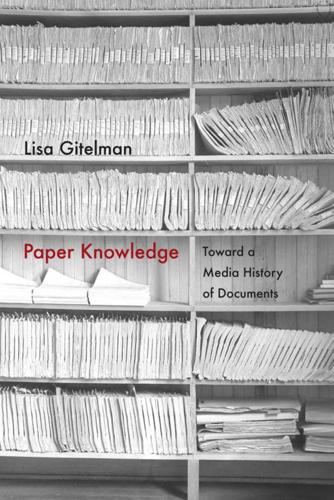
Paper Knowledge: Toward a Media History of Documents
by
Lisa Gitelman
Published 26 Mar 2014
The whole affair started in October 1969, when Ellsberg began to copy in installments a multivolume work with the ungainly title “History of U.S. Decision-Making Process on Vietnam Policy,” also known as the “Report of the Office of the Secretary of Defense Vietnam Task Force.” He took sections of the history home from his office at the rand Corporation, returning each section after secretly photocopying it at night on a machine in the office of a sympathetic friend. The history was bound in cardboard covers with metal tapes, which could be removed for copying. There were forty-seven volumes in all, and Ellsberg started in the middle. He was Xeroxing one of fifteen extant duplicates, produced in house at the Pentagon at the behest of Robert McNamara.
…
Map 2, a photocopy of a photocopy (notice the multiply reproduced loose-leaf holes), reproduced as part of the Pentagon Papers Part IV-B-2 (1969) to document the beginning of the U.S.-backed “Strategic Hamlet Program” in South Vietnam (1962), digitized by the National Archives and Records Administration in 2011. as an author for the history while he was an employee of the rand Corporation. He worked for several months during 1967 compiling material and drafting a section on the policy of President John F. Kennedy’s administration—although, according to Gelb, little of Ellsberg’s draft survived in the final version.20 Ellsberg was now effectively reediting the edit to which he and his subject had been subject.
…
See xerographics photography, 112–13, 149 Piper, Andrew, 19, 153n21 Planet pdf, 123 Poe, Edgar Alan, 28, 29, 50, 51; “The Purloined Letter,” 28–29 portable document format (pdf), 7, 18, 100, 114–19, 121–34 PostScript, 121, 123, 125, 132 Power, Eugene, 73–74, 79–80, 119, 130, 132 Preston, Cathy Lynn, 105 Price, Leah, 252n8 “print culture,” 7–9, 11, 20, 25 Printers’ Circular, 37, 42, 45 printers’ monopoly, 51–52, 82, 137, 146 Privacy Act of 1974, 97 ProQuest, 54, 79–80 Public Company Accountability Reform and Investor Protection Act of 2002, 97 Putnam, Herbert, 107 rand Corporation, 86, 91 Raney, M. Llewellyn, 73 receipts, 3, 21–22, 24, 30, 34, 36, 46 Reign of Terror, 16 Ritchie, Dennis, 97–100 Roosevelt, Franklin D., 59 Rostow, Walter, 94 Rotsler, Bill, 147 R. R. Donnelley & Sons, 66 Rumble, Walker, 162n60 Rumsfeld, Donald, 97 Russo, Anthony, 88–89, 91 samizdat, 95, 100, 174n41 Sánchez-Eppler, Karen, 140, 141 Scalia, Antonin, 97 scholarly communication, 13–15, 52, 56, 60, 70–72, 133 Schwartz, Hillel, 172n3, 173n17 scientific management, 37, 56 Selden, Charles, 33–35; Selden’s Condensed Ledger, 33–34 Selden, Elizabeth, 34 Sellen, Abigail, 4, 111, 128, 130, 152n9 Sheehan, Neil, 92, 94–95 Shirky, Clay, 20, 136 Short Title Catalogue (Pollard and Redgrave), 73, 119 Sieyès, Emmanuel Joseph, 158n4 Sketchpad, 120–21 Smithsonian Institution, 52 Social Science Research Council, 14, 54, 57, 60, 63.
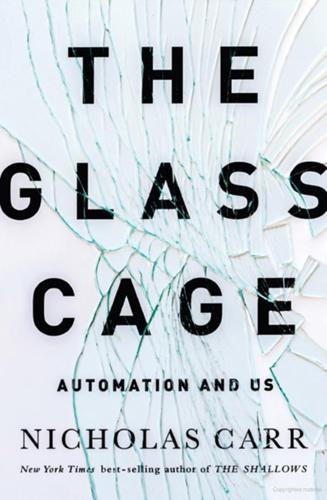
The Glass Cage: Automation and Us
by
Nicholas Carr
Published 28 Sep 2014
What we’ve learned is that automation has a sometimes-tragic tendency to increase the complexity of a job at the worst possible moment—when workers already have too much to handle. The computer, introduced as an aid to reduce the chances of human error, ends up making it more likely that people, like shocked mice, will make the wrong move. CHAPTER FIVE WHITE-COLLAR COMPUTER LATE IN THE SUMMER OF 2005, researchers at the venerable RAND Corporation in California made a stirring prediction about the future of American medicine. Having completed what they called “the most detailed analysis ever conducted of the potential benefits of electronic medical records,” they declared that the U.S. health-care system “could save more than $81 billion annually and improve the quality of care” if hospitals and physicians automated their record keeping.
…
Scerbo, “Adaptive Automation,” in Raja Parasuraman and Matthew Rizzo, eds., Neuroergonomics: The Brain at Work (New York: Oxford University Press, 2007), 239–252. Chapter Five: WHITE-COLLAR COMPUTER 1.“RAND Study Says Computerizing Medical Records Could Save $81 Billion Annually and Improve the Quality of Medical Care,” RAND Corporation press release, September 14, 2005. 2.Richard Hillestad et al., “Can Electronic Medical Record Systems Transform Health Care? Potential Health Benefits, Savings, and Costs,” Health Affairs 24, no. 5 (2005): 1103–1117. 3.Reed Abelson and Julie Creswell, “In Second Look, Few Savings from Digital Health Records,” New York Times, January 10, 2013. 4.Jeanne Lambrew, “More than Half of Doctors Now Use Electronic Health Records Thanks to Administration Policies,” The White House Blog, May 24, 2013, whitehouse.gov/blog/2013/05/24/more-half-doctors-use-electronic-health-records-thanks-administration-policies. 5.Arthur L.
…
J., 146–47, 229–30 meaning, 123, 220 medical diagnosis, 10, 12, 70–71, 105, 113–15, 120, 123, 154, 155 Medicare, 97 Mehta, Mayank, 219–20 Meinz, Elizabeth, 83 Meister, David, 159 memory, 72–75, 77–80, 84, 151 drawing and, 143 navigation and, 129–30, 133–37 Men and Machines, 26 mental models, 57 Mercedes-Benz, 8, 136–37, 183 Mercury astronauts, 58 Merholz, Peter, 180 Merleau-Ponty, Maurice, 216, 217–18, 220 metalworkers, 111 mice, dancing, 87–92 microchips, 8, 114 microlocation tracking, 136 Microsoft, 195 military, 35–37, 47, 49, 158, 159, 166, 174 robots and, 187–93 mind, 63, 121–24, 201, 213–14, 216 body vs., 48–51, 215, 216 computer as metaphor and model for, 119 drawing and, 143, 144 imaginative work of, 25 unconscious, 83–84 Mindell, David, 60, 61 Missionaries and Cannibals, 75, 180 miswanting, 15, 228 MIT, 174, 175 Mitchell, William J., 138 mobile phones, 132–33 Moore’s Law, 40 Morozov, Evgeny, 205, 225 Moser, Edvard, 134–35 Moser, May-Britt, 134 motivation, 14, 17, 124 “Mowing” (Frost), 211–16, 218, 221–22 Murnane, Richard, 9, 10 Musk, Elon, 8 Nadin, Mihai, 80 NASA, 50, 55, 58 National Safety Council, 208 National Transportation Safety Board (NTSB), 44 natural language processing, 113 nature, 217, 220 Nature, 155 Nature Neuroscience, 134–35 navigation systems, 59, 68–71, 217 see also GPS Navy, U.S., 189 Nazi Germany, 35, 157 nervous system, 9–10, 36, 220–21 Networks of Power (Hughes), 196 neural networks, 113–14 neural processing, 119n neuroergonomic systems, 165 neurological studies, 9 neuromorphic microchips, 114, 119n neurons, 57, 133–34, 150, 219 neuroscience, neuroscientists, 74, 133–37, 140, 149 New Division of Labor, The (Levy and Murnane), 9 Nimwegen, Christof van, 75–76, 180 Noble, David, 173–74 Norman, Donald, 161 Noyes, Jan, 54–55 NSA, 120, 198 numerical control, 174–75 Oakeshott, Michael, 124 Obama, Barack, 94 Observer, 78–79 Oculus Rift, 201 Office of the Inspector General, 99 offices, 28, 108–9, 112, 222 automation complacency and, 69 Ofri, Danielle, 102 O’Keefe, John, 133–34 Old Dominion University, 91 “On Things Relating to the Surgery” (Hippocrates), 158 oracle machine, 119–20 “Outsourced Brain, The” (Brooks), 128 Pallasmaa, Juhani, 145 Parameswaran, Ashwin, 115 Parameters, 191 parametric design, 140–41 parametricism, 140–41 “Parametricism Manifesto” (Schumacher), 141 Parasuraman, Raja, 54, 67, 71, 166, 176 Parry, William Edward, 125 pattern recognition, 57, 58, 81, 83, 113 Pavlov, Ivan, 88 Pebble, 201 Pediatrics, 97 perception, 8, 121, 130, 131, 132, 133, 144, 148–51, 201, 214–18, 220, 226, 230 performance, Yerkes-Dodson law and, 96 Phenomenology of Perception (Merleau-Ponty), 216 philosophers, 119, 143, 144, 148–51, 186, 224 photography, film vs. digital, 230 Piano, Renzo, 138, 141–42 pilots, 1, 2, 32, 43–63, 91, 153 attentional tunneling and, 200–201 capability of the plane vs., 60–61, 154 death of, 53 erosion of expertise of, 54–58, 62–63 human- vs. technology-centered automation and, 168–70, 172–73 income of, 59–60 see also autopilot place, 131–34, 137, 251n place cells, 133–34, 136, 219 Plato, 148 Player Piano (Vonnegut), 39 poetry, 211–16, 218, 221–22 Poirier, Richard, 214, 215 Politics (Aristotle), 224 Popular Science, 48 Post, Wiley, 48, 50, 53, 57, 62, 82, 169 power, 21, 37, 65, 151, 175, 204, 217 practice, 82–83 Predator drone, 188 premature fixation, 145 presence, power of, 200 Priestley, Joseph, 160 Prius, 6, 13, 154–55 privacy, 206 probability, 113–24 procedural (tacit) knowledge, 9–11, 83, 105, 113, 144 productivity, 18, 22, 29, 30, 37, 106, 160, 173, 175, 181, 218 professional work, incursion of computers into, 115 profit motive, 17 profits, 18, 22, 28, 30, 33, 95, 159, 171, 172–73, 175 progress, 21, 26, 29, 37, 40, 65, 196, 214 acceleration of, 26 scientific, 31, 123 social, 159–60, 228 progress (continued) technological, 29, 31, 34, 35, 48–49, 108–9, 159, 160, 161, 173, 174, 222, 223–24, 226, 228, 230 utopian vision of, 25, 26 prosperity, 20, 21, 107 proximal cues, 219–20 psychologists, psychology, 9, 11, 15, 54, 103, 119, 149, 158–59 animal studies, 87–92 cognitive, 72–76, 81, 129–30 psychomotor skills, 56, 57–58, 81, 120 quality of experience, 14–15 Race against the Machine (Brynjolfsson and McAfee), 28–29 RAND Corporation, 93–98 “Rationalism in Politics” (Oakeshott), 124 Rattner, Justin, 203 reading, learning of, 82 Reaper drone, 188 reasoning, reason, 120, 121, 124, 151 recession, 27, 28, 30, 32 Red Dead Redemption, 177–78 “Relation of Strength of Stimulus to Rapidity of Habit-Formation, The” (Yerkes and Dodson), 89 Renslow, Marvin, 43–44 Revit, 146, 147 Rifkin, Jeremy, 28 Robert, David, 45, 169–70 Robert Frost (Poirier), 214 Roberts, J.
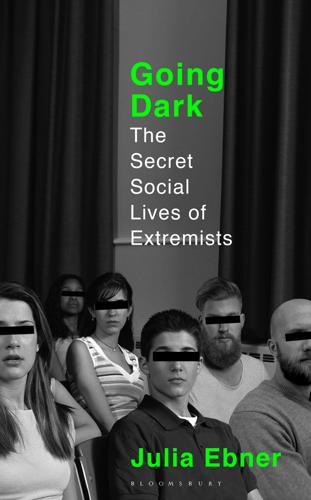
Going Dark: The Secret Social Lives of Extremists
by
Julia Ebner
Published 20 Feb 2020
Most campaigns involved the circulation of misinformation in the run-up to critical junctions such as elections, referendums and crises.36 The disappearance of trust in independent information sources is a slow poison that threatens to undermine the fundamental pillars of our democracies. The erosion of civil discourse, political paralysis, alienation and uncertainty are among the most severe consequences of the ‘Truth Decay’, as researchers of the RAND Corporation have called it.37 Trust doesn’t vanish overnight, but over the past few years we have watched its gradual erosion on different levels. First came the distrust in the political and financial establishment. The 2008 global financial crisis and its various connected scandals fuelled fears that national and international political and economic bodies were not acting in the public’s interest and had secret agendas that might at any point afflict the average man’s bank account.
…
Howard, ‘Challenging Truth and Trust: A Global Inventory of Organized Social Media Manipulation’, Working Paper 2018.1, Oxford, UK, Project on Computational Propaganda. Available at comprop.oii.ox.ac.uk. 37Jennifer Kavanagh and Michael D. Rich, ‘Truth Decay: An Initial Exploration of the Diminishing Role of Facts and Analysis in American Public Life’, RAND Corporation. Available at https://www.rand.org/pubs/research_reports/RR2314.html. 38Public Policy Polling, April 2013. The press release and summary are available at https://www.publicpolicypolling.com/wp-content/uploads/2017/09/PPP_Release_National_ConspiracyTheories_040213.pdf. 39Kavanagh and Rich, ‘Truth Decay: An Initial Exploration of the Diminishing Role of Facts and Analysis in American Public Life’. 40Fabian Klask, ‘Die Stille nach der lauten Nacht’, Die Zeit, 29 December 2017.
…
M. here, here b4bo here bin Laden, Osama here, here, here birthrates here, here Bissonnette, Alexandre here, here BitChute here bitcoin here, here, here Blissett, Luther here Bloc Identitaire here blockchain technology here bloggers here Blood & Honour here Bloom, Mia here Bloomberg, Michael here Böhmermann, Jan here Bowers, Robert here Breed Them Out here Breitbart here, here, here Breivik, Anders Behring here, here ‘Brentonettes’ here Brewer, Emmett here Brexit here, here Britain First here British National Party (BNP) here, here, here Broken Heart operation here Brown, Dan here Bubba Media here Bumble here, here Bundestag hack here, here BuzzFeed here C Star here, here ‘Call of Duty’ here, here Cambridge Analytica here, here Camus, Renaud here Carroll, Lewis here CBS here Channel programme here Charleston church shooting here Charlie Hebdo here Charlottesville rally here, here, here, here, here, here, here, here, here Chemnitz protests here, here Choudary, Anjem here Christchurch terror attacks here, here, here, here Christian identity here Chua, Amy here CIA here, here, here Clinton, Bill and Hillary here, here, here, here, here, here, here Cohn, Norman here Collett, Mark here Cologne rape crisis here Combat here, here Comey, James here Comvo here concentration camps here Conrad, Klaus here Conservative Political Action Conference here Constitution for the Ethno-State here Corem, Yochai here counter-extremism legislation here counter-trolling here Covington, Harold here Crash Override Network here Crusius, Patrick here cryptocurrencies here, here, here, here Cuevas, Joshua here Cyberbit here Cyborgology blog here ‘Daily Shoah’ podcast here Daily Stormer here, here, here, here, here, here, here, here, here Weev and here Damore, James here Dark Net here Data and Society Research Institute here Davey, Jacob here Dawkins, Richard here, here De La Rosa, Veronique here de Turris, Gianfranco here Dearden, Lizzie here deep fakes here, here DefCon here, here Der Spiegel here Deutsche Bahn here Diana, Princess of Wales here, here Die Linke here Die Rechte here ‘digital dualism’ here digital education here disinformation here, here, here Disney here Domestic Discipline here, here Donovan, Joan here Doomsday preppers here doubling here Dox Squad here, here doxxing here, here, here, here, here Doyle, Laura here, here Draugiem here DTube here Dugin, Alexander here Dunning–Kruger Effect here Dutch Leaks here Dylan, Bob here Earnest, John here 8chan here, here, here, here, here, here, here, here EKRE (Estonian fascist party) here El Paso shooting here Element AI here Emanuel, Rahm here encryption and steganography here Encyclopedia Dramatica here English Defence League here, here, here, here Enoch, Mike here environmentalism here, here ethno-pluralism here, here ‘Eurabia’ here, here ‘European Israel’ here European National here European Parliament elections here European Spring here Evola, Julius here executions here Facebook friends here fashions and lifestyles here, here Fawcett, Farah here Faye, Guillaume here FBI here, here, here, here, here Fearless Democracy here, here FedEx here Feldman, Matthew here Ferdinand II, King of Aragon here Fiamengo, Janice here Fields, James Alex here Fight Club here Finkelstein, Robert here Finsbury Mosque attack here, here, here Fisher, Robert here Foley, James here Follin, Marcus here football hooligans here, here Football Lads Alliance (FLA) here For Britain party here Fortnite here 4chan here, here, here, here, here, here, here, here, here FPÖ (Austrian Freedom Party) here, here, here, here, here Frankfurt School here Fransen, Jayda here Fraternal Order of Alt-Knights here Freedom Fighters, The here freedom of speech here, here, here, here F-Secure here FSN TV here Gab here, here, here, here, here, here Gamergate controversy here GamerGate Veterans here gamification here, here, here, here, here, here, here, here Ganser, Daniele here Gates of Vienna here Gateway Pundit here Gawker here GCHQ here GE here GellerReport here Generation Identity (GI) here, here, here, here, here, here, here, here Generation Islam here genetic testing here, here German elections here, here German Institute on Radicalization and De-Radicalization Studies here German National Cyber Defence Centre here Gervais, Ricky here Ghost Security here Giesea, Jeff here Gigih Rahmat Dewa here Gionet, Tim here gladiators here Global Cabal of the New World Order here global financial crisis here, here global warming here GNAA here Goatse Security here GOBBLES here Goebbels, Joseph here GoFundMe here Goldy, Faith here Goodhart, David here ‘Google’s Ideological Echo Chamber’ here Gorbachev, Mikhail here Graham, Senator Lindsey here Gratipay here Great Awakening here, here Great Replacement theory here, here, here, here, here ‘Grievance Studies’ here grooming gangs here, here Guardian here, here H., Daniel here Habeck, Robert here HackerOne here hackers and hacking here ‘capture the flag’ operations here, here denial of service operations here ethical hacking here memory-corruption operations here political hacking here ‘qwning’ here SQL injections here techniques here Halle shooting here Hamas here, here Hanks, Tom here Happn here Harris, DeAndre here ‘hashtag stuffing’ here Hate Library here HateAid here, here Hatreon here, here, here Heidegger, Martin here Heise, Thorsten here, here Hensel, Gerald here, here Herzliya International Institute for Counter-Terrorism here Heyer, Heather here, here, here Himmler, Heinrich here Hintsteiner, Edwin here Histiaeus here Hitler, Adolf here, here, here, here, here Mein Kampf here, here Hitler salutes here, here, here, here Hitler Youth here HIV here Hizb ut-Tahrir here, here, here Höcker, Karl-Friedrich here Hofstadter, Richard here Hollywood here Holocaust here Holocaust denial here, here, here, here, here Holy War Hackers Team here Home Office here homophobia here, here, here Hooton Plan here Hoover Dam here Hope Not Hate here, here, here Horgan, John here Horowitz Foundation here Hot or Not here House of Saud here Huda, Noor here human trafficking here, here Hussein, Saddam here, here Hutchins, Marcus here Hyppönen, Mikko here Identity Evropa here, here iFrames here Illuminati here Incels (Involuntary Celibacy) here, here Independent here Inkster, Nigel here Institute for Strategic Dialogue (ISD) here, here, here, here, here, here, here, here Intelius here International Business Times here International Centre for the Study of Radicalisation (ICSR) here International Federation of Journalists here International Holocaust Memorial Day here International Institute for Strategic Studies here Internet Research Agency (IRA) here iPads here iPhones here iProphet here Iranian revolution here Isabella I, Queen of Castile here ISIS here, here, here, here, here, here, here, here, here, here, here, here hackers and here, here, here, here, here Islamophobia here, here, here, here, here, here, here Tommy Robinson and here, here see also Finsbury Mosque attack Israel here, here, here, here, here Israel Defense Forces here, here Jackson, Michael here jahiliyya here Jakarta attacks here Jamaah Ansharud Daulah (JAD) here Japanese anime here Jemaah Islamiyah here Jesus Christ here Jewish numerology here Jews here, here, here, here, here, here, here, here, here see also anti-Semitism; ZOG JFG World here jihadi brides here, here JihadWatch here Jobs, Steve here Johnson, Boris here Jones, Alex here Jones, Ron here Junge Freiheit here Jurgenson, Nathan here JustPasteIt here Kafka, Franz here Kampf der Niebelungen here, here Kapustin, Denis ‘Nikitin’ here Kassam, Raheem here Kellogg’s here Kennedy, John F. here, here Kennedy family here Kessler, Jason here, here Khomeini, Ayataollah here Kim Jong-un here Kohl, Helmut here Köhler, Daniel here Kronen Zeitung here Kronos banking Trojan here Ku Klux Klan here, here Küssel, Gottfried here Lane, David here Le Loop here Le Pen, Marine here LeBretton, Matthew here Lebron, Michael here Lee, Robert E. here Li, Sean here Li family here Libyan Fighting Group here LifeOfWat here Lifton, Robert here Littman, Gisele here live action role play (LARP) here, here, here, here, here, here lobbying here Lokteff, Lana here loneliness here, here, here, here, here, here, here Lorraine, DeAnna here Lügenpresse here McDonald’s here McInnes, Gavin here McMahon, Ed here Macron, Emmanuel here, here, here, here MAGA (Make America Great Again) here ‘mainstream media’ here, here, here ‘Millennium Dawn’ here Manosphere here, here, here March for Life here Maria Theresa statue here, here Marighella, Carlos here Marina Bay Sands Hotel (Singapore) here Marx, Karl here Das Kapital here Masculine Development here Mason, James here MAtR (Men Among the Ruins) here, here Matrix, The here, here, here, here May, Theresa here, here, here Meechan, Mark here Meme Warfare here memes here, here, here, here and terrorist attacks here Men’s Rights Activists (MRA) here Menlo Park here Mercer Family Foundation here Merkel, Angela here, here, here, here MGTOW (Men Going Their Own Way) here, here, here MI6, 158, 164 migration here, here, here, here, here, here, here, here, here see also refugees millenarianism here Millennial Woes here millennials here Minassian, Alek here Mindanao here Minds here, here misogyny here, here, here, here, here see also Incels mixed martial arts (MMA) here, here, here, here Morgan, Nicky here Mounk, Yascha here Movement, The here Mueller, Robert here, here Muhammad, Prophet here, here, here mujahidat here Mulhall, Joe here MuslimCrypt here MuslimTec here, here Mussolini, Benito here Naim, Bahrun here, here Nance, Malcolm here Nasher App here National Action here National Bolshevism here National Democratic Party (NPD) here, here, here, here National Health Service (NHS) here National Policy Institute here, here National Socialism group here National Socialist Movement here National Socialist Underground here NATO DFR Lab here Naturalnews here Nawaz, Maajid here Nazi symbols here, here, here, here, here, here, here see also Hitler salutes; swastikas Nazi women here N-count here Neiwert, David here Nero, Emperor here Netflix here Network Contagion Research Institute here NetzDG legislation here, here Neumann, Peter here New Balance shoes here New York Times here News Corp here Newsnight here Nietzsche, Friedrich here, here Nikolai Alexander, Supreme Commander here, here, here, here, here, here 9/11 attacks here, here ‘nipsters’ here, here No Agenda here Northwest Front (NWF) here, here Nouvelle Droite here, here NPC meme here NSDAP here, here, here Obama, Barack and Michelle here, here, here, here, here Omas gegen Rechts here online harassment, gender and here OpenAI here open-source intelligence (OSINT) here, here Operation Name and Shame here Orbán, Viktor here, here organised crime here Orwell, George here, here Osborne, Darren here, here Oxford Internet Institute here Page, Larry here Panofsky, Aaron here Panorama here Parkland high-school shooting here Patreon here, here, here, here Patriot Peer here, here PayPal here PeopleLookup here Periscope here Peterson, Jordan here Pettibone, Brittany here, here, here Pew Research Center here, here PewDiePie here PewTube here Phillips, Whitney here Photofeeler here Phrack High Council here Pink Floyd here Pipl here Pittsburgh synagogue shooting here Pizzagate here Podesta, John here, here political propaganda here Popper, Karl here populist politicians here pornography here, here Poway synagogue shooting here, here Pozner, Lenny here Presley, Elvis here Prideaux, Sue here Prince Albert Police here Pro Chemnitz here ‘pseudo-conservatives’ here Putin, Vladimir here Q Britannia here QAnon here, here, here, here Quebec mosque shooting here Quilliam Foundation here, here, here Quinn, Zoë here Quran here racist slurs (n-word) here Radio 3Fourteen here Radix Journal here Rafiq, Haras here Ramakrishna, Kumar here RAND Corporation here Rasmussen, Tore here, here, here, here Raymond, Jolynn here Rebel Media here, here, here Reconquista Germanica here, here, here, here, here, here, here Reconquista Internet here Red Pill Women here, here, here, here, here Reddit here, here, here, here, here, here, here, here, here, here redpilling here, here, here, here refugees here, here, here, here, here Relotius, Claas here ‘Remove Kebab’ here Renault here Revolution Chemnitz here Rigby, Lee here Right Wing Terror Center here Right Wing United (RWU) here RMV (Relationship Market Value) here Robertson, Caolan here Robinson, Tommy here, here, here, here, here, here, here, here Rockefeller family here Rodger, Elliot here Roof, Dylann here, here Rosenberg, Alfred here Rothschilds here, here Rowley, Mark here Roy, Donald F. here Royal Family here Russia Today here, here S., Johannes here St Kilda Beach meeting here Salafi Media here Saltman, Erin here Salvini, Matteo here Sampson, Chris here, here Sandy Hook school shooting here Sargon of Akkad, see Benjamin, Carl Schild & Schwert rock festival (Ostritz) here, here, here Schilling, Curt here Schlessinger, Laura C. here Scholz & Friends here SchoolDesk here Schröder, Patrick here Sellner, Martin here, here, here, here, here, here, here, here, here, here Serrano, Francisco here ‘sexual economics’ here SGT Report here Shodan here, here Siege-posting here Sleeping Giants here SMV (Sexual Market Value) here, here, here Social Justice Warriors (SJW) here, here Solahütte here Soros, George here, here Sotloff, Steven here Southern, Lauren here Southfront here Spencer, Richard here, here, here, here, here, here Spiegel TV here spoofing technology here Sputnik here, here SS here, here Stadtwerke Borken here Star Wars here Steinmeier, Frank-Walter here Stewart, Ayla here STFU (Shut the Fuck Up) here Stormfront here, here, here Strache, H.
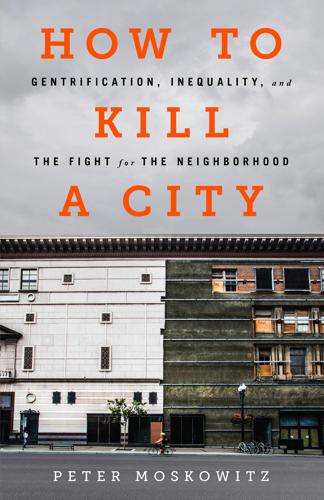
How to Kill a City: The Real Story of Gentrification
by
Peter Moskowitz
Published 7 Mar 2017
The country’s collective ignoring of black New Orleanians’ lives also explains why there was no federal effort undertaken to figure out where exactly all the evacuees from Katrina had ended up. Ten years later, not one federal agency is studying the diaspora caused by Katrina. The biggest study of their whereabouts was performed by the nonprofit RAND Corporation, and that tracking program ended five years ago. A decade after the man-made failures that preceded and followed Katrina tore New Orleans apart, the “other America” narrative has been completely forgotten. The chasm has closed. And a new narrative—one of rebirth and growth—has overtaken the country’s popular media.
…
The psychiatric interpretation of fire-setting is complex, but it relates to the types of personalities which slums produce.… The time may have come when the issue of race could benefit from a period of benign neglect.” In 1976, the city cut thirty-four fire companies, relying on a study from the RAND Corporation that said the effects of shutting down those stations would be minimal, though letters from RAND employees from the time showed that at least some people knew the study was incorrect. Nearly all of the shut fire stations were in the Bronx and poor areas of Manhattan and Brooklyn. The effects were immediate and devastating.
…
“I don’t know. That doesn’t make sense to me”: Charles Babington, “Hastert Tries Damage Control After Remarks Hit a Nerve,” Washington Post, September 3, 2005. The biggest study of their whereabouts: Narayan Sastry and Christine Peterson, “The Displaced New Orleans Residents Survey Questionnaire,” RAND Corporation, 2010, www.rand.org/labor/projects/dnors.html. The city has been “resurrected”: Jason Berry, “Eight Years After Hurricane Katrina, New Orleans Has Been Resurrected,” Daily Beast, August 29, 2013. Its growth is an “economic miracle”: Adam Kushner, “How New Orleans Pulled Off an Economic Miracle,” National Journal, April 7, 2013.
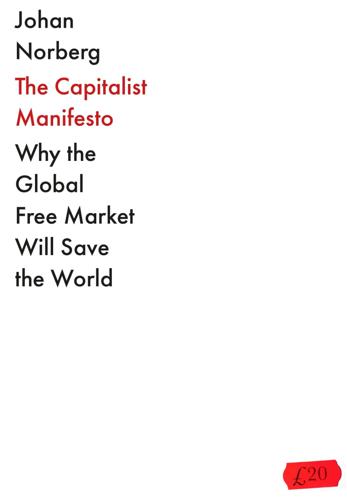
The Capitalist Manifesto
by
Johan Norberg
Published 14 Jun 2023
Ideas for networks between computers began to be conjured up in many places in the 1960s because universities and private companies had started developing various forms of information technology. In 1963, J.C.R. Licklider at the company Bolt, Beranek and Newman was able to propose an ‘intergalactic computer network’ that described many of the solutions that would become the internet’s infrastructure. At the same time, Paul Baran at the private think-tank RAND Corporation came up with a proposal for a distributed communication network. When Licklider started working at ARPA, he was involved in creating a network between its mainframe computers – the project that in 1969 would become ARPANET, the forerunner of the internet. But that project had nothing to do with the military’s needs.
…
We didn’t do it by planning.’8 It was not that the military or politicians picked a winner, as Mazzucato claims; they did not have the faintest idea what Licklider, Taylor and the others were doing. In fact, the US Department of Defense had had a similar idea served to them on a silver platter a few years earlier. Paul Baran of RAND Corporation tried to sell his idea to the US Air Force in 1965, arguing that such a network could withstand a military attack. So it was not the government that dreamed up the idea – it was the state that neglected it. Baran’s contacts appreciated the concept, but as a result of a power struggle with the Ministry of Defense, the project went to the Defense Communication Agency, which had no technical expertise in the field and left it at that.
…
J., 141 Obama, Barack, 147, 152, 165 Oculus, 177 OECD (Organisation for Economic Co-operation and Development), 147, 249–50 Open (Norberg), 297 Our World in Data, 18, 250, 268, 270 Oxfam, 4, 43, 133–4 ozone layer, 236 Pakistan, 219 Palm, 174 Paraguay, 239 Paris, France, 66–7 Paris Climate Agreement, 233 Parks, Rosa, 62–3 Paulsen, Roland, 98 PayPal, 178 Peru, 29–30 Pfizer, 177 Philippines, 248 Piketty, Thomas, 127–31 Pinochet, Augusto, 29, 46 ‘planned obsolescence’, 156–60 Poland, 26 populism, 47–8 pornography, 188–9 Portugal, 26–7, 254 poverty, 12, 17–25, 20, 29–33, 53–4, 110, 291–2 in China, 213, 214 climate change and, 235–6, 245 inequality and, 133–7 Prasad, Chandra Bhan, 64 prices, 67–9 price regulation, 68 profit, 74, 122–4 profit-hunger, 273–5 property rights, 70–72 protectionism, 3, 5, 11–12, 78–9, 115, 117–18 Putin, Vladimir, 5, 39 Quaero, 191–2 Quarterly Journal of Economics, 117 Quartz, Steven, 287 Questioning the Entrepreneurial State, 198 racial segregation, 62–3 racism, 62–3, 111 Radelet, Steven, 24 RAND Corporation, 184, 186 Rao, Madhusudan, 63 Reagan, Ronald, 8–10 Rehbinder, Caspian, 269–70 religion, 26–7 Republican Party (US), 8–9 Ridley, Matt, 188 Ritchie, Hannah, 250, 270 Romer, Paul, 241 Romney, Mitt, 165 Roser, Max, 18 Rosling, Hans, 18 Rossi-Hansberg, Esteban, 148–9 Rousseau, Jean-Jacques, 279, 284 Rubio, Marco, 181 Rü ck, Christian, 272 Russia, 39, 138 see also Soviet Union Rwanda, 35 Samuelson, Paul, 5 Sanders, Bernie, 43, 122 Sandström, Christian, 183, 240 Scandinavia, 22, 36, 281 Schröer, Gerhard, 191 Schumpeter, Joseph, 89 Segerfeldt, Fredrik, 137 Shah, Parth, 25 Shambaugh, David, 215 Shanghai, China, 209 Shelby, Richard, 202–3 Shopify, 178 Silicon Valley, 141 Singapore, 23, 84 Singh, Manmohan, 25 Sixdegrees, 170 slavery, 31, 73, 75 Smith, Adam, 213, 264 smoking, 137 Snapchat, 178 Soave, Robby, 171 social class, 137 middle class erosion, 93–5, 95 working class, 7 social media, 155, 163, 165–9 social mobility, 90–91 social networks, 169–71 socialism, 11, 44, 75, 120–21, 145 three steps of socialism, 44–5 Swiss bank socialism, 33 Socrates, 65 Son of a Servant, The (Strindberg), 120–21 Sony, 151 South Africa, 45–6, 72, 267 South Korea, 23–5, 84, 225 Soviet Union, 26, 215, 219, 241–2 see also Russia Sowell, Thomas, 62 space programme, 181–3, 191, 201–2 moon landing, 181–3, 191, 201–2 Space Launch System (SLS), 202 SpaceX, 202 Spain, 26, 27, 97 Spanish flu pandemic, 1918, 77 Starbucks, 75–6, 148 Stephens-Davidowitz, Seth, 155 Strain, Michael, 94 Strindberg, August, 120 subsidies, 139–40 suicide, 271 sulphur dioxide, 236 supply and demand, 67–9 supply chains see global supply chains Svensson, Mattias, 256 Sweden, 49–51, 54–5, 66, 75–8, 91, 240, 244–5, 251, 266, 268–9, 271, 285 Swedish Energy Agency, 194 Swiss bank socialism, 33 Switzerland, 285 Taiwan, 23–5, 205, 207, 225, 267 Taliban, 160–61 Tanzania, 239 Target, 178 taxation, 56, 259 tax deductions, 141, 148 Taylor, Robert, 184–6 tech companies, 162–79 competition, 178–80 data, 175–6 GAFAM (Google, Amazon, Facebook, Apple, Microsoft), 169–80 regulations, 164, 174–5 Tech Panic (Soave), 171 Technology Pork Barrel, The (Cohen and Noll), 190 technology, 40–41 Thanks a Thousand (Jacobs), 60 Thatcher, Margaret, 8–11, 116 Theranos, 153 Thoreau, Henry David, 82 Thunberg, Greta, 230, 232 TikTok, 178 Times, The, 116 traditions, 26–7 Trotsky, Leon, 73 Trump, Donald, 6, 8, 48, 83, 107, 140, 165, 217 Truss, Liz, 9, 11, 56, 117 trust, 153–6 Turkmenistan, 225 Twitter, 166–7 Uber, 102 Uganda, 35 Ukraine, 5, 215 United Kingdom, 10, 22–3, 38, 49, 97, 101, 268–9, 283 Brexit, 116–17 United Nations Food and Agriculture Organization (FAO), 233, 239 United States, 22, 55, 62–3, 80, 85, 97, 110–11, 239, 267–8, 282 China and, 205, 211, 221 crony capitalism, 139–40 ‘deaths of despair’, 7, 108–10, 136, 271, 293 Defense Communication Agency, 187 Jim Crow laws, 63 labour market, 85, 87–93, 101, 104–11 political polarization, 167 productivity growth, 148–9, 152–3 welfare state, 111–14 US–China Business Council, 210 Vance, J.
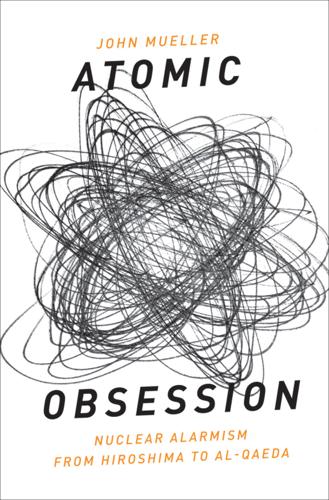
Atomic Obsession: Nuclear Alarmism From Hiroshima to Al-Qaeda
by
John Mueller
Published 1 Nov 2009
The precise calculations and the cool, comfortable vocabulary were coming all too commonly to be grasped not merely as tools of desperation but as genuine reflections of the nature of nuclear war.22 The central concept explored and developed in that living dreamworld was deterrence. The thinking process is nicely summarized in the recent recollections of Brian Jenkins, who, as an analyst at the RAND Corporation, has been at the center of this intellectual development for decades. The italics are mine: Each [side in the cold war] possessed an arsenal capable of ending modern civilization. Avoiding nuclear war became the major preoccupation of leaders of both sides. This required military planners to persuade their opponents that neither side could gain sufficient advantage to make starting a nuclear war even thinkable—neither could escape annihilation by launching a preemptive attack.
…
San Francisco, CA, 26–29 March. Jenkins, Brian Michael. 1975. “International Terrorism: A New Mode of Conflict.” In International Terrorism and World Security, ed. David Carlton and Carolo Schaerf. New York: Wiley, 13–49. ______. 2006. Unconquerable Nation: Knowing Our Enemy and Strengthening Ourselves. Santa Monica, CA: RAND Corporation. ______. 2008. Will Terrorists Go Nuclear? Amherst, NY: Prometheus. Jentleson, Bruce W., and Christopher A. Whytock. 2005/06. “Who ‘Won’ Libya? The Force-Diplomacy Debate and Its Implications for Theory and Policy.” International Security 30(3) Winter: 47–86. Jervis, Robert. 1979. “Deterrence Theory Revisited.”
…
The Pursuit of Power: Technology, Armed Force, and Society since A.D. 1000. Chicago: University of Chicago Press. McPhee, John. 1974. The Curve of Binding Energy. New York: Farrar, Straus & Giroux. Meade, Charles, and Roger C. Molander. 2006. Considering the Effects of a Catastrophic Terrorist Attack. Santa Monica, CA: RAND Corporation. Mearsheimer, John J. 1983. Conventional Deterrence. Ithaca, NY: Cornell University Press. ______. 1984/85. “Nuclear Weapons and Deterrence in Europe.” International Security 9(3) Winter: 19–47. ______. 1988. Liddell Hart and the Weight of History. Ithaca, NY: Cornell University Press. ______. 1990.

Machines of Loving Grace: The Quest for Common Ground Between Humans and Robots
by
John Markoff
Published 24 Aug 2015
Watson Jr. of IBM, and Edwin Land of Polaroid, to Robert Solow, the MIT economist, and Daniel Bell, the Columbia sociologist. When the 115-page report appeared at the end of 1966 it was accompanied by 1,787 pages of appendices including special reports by outside experts. The 232-page analysis of the impact of computing by Paul Armer of the RAND Corporation did a remarkable job of predicting the impact of information technology. Indeed, the headings in the report have proven true over the years: “Computers Are Becoming Faster, Smaller, and Less Expensive”; “Computing Power Will Become Available Much the Same as Electricity and Telephone Service Are Today”; “Information Itself Will Become Inexpensive and Readily Available”; “Computers Will Become Easier to Use”; “Computers Will Be Used to Process Pictorial Images and Graphic Information”; and “Computers Will Be Used to Process Language,” among others.
…
Seymour Papert, Winograd’s thesis advisor, had become engaged in a bitter debate with Hubert Dreyfus, a philosopher and Heidegger acolyte, who, just one decade after McCarthy had coined the term, would ridicule the field in a scathing paper entitled “Alchemy and Artificial Intelligence,” published in 1965 by the RAND Corporation.11 (Years later, in the 2014 movie remake of RoboCop, the fictional U.S. senator who sponsors legislation banning police robots is named Hubert Dreyfus in homage.) Dreyfus ran afoul of AI researchers in the early sixties when they showed up in his Heidegger course and belittled philosophers for failing to understand human intelligence after studying it for centuries.12 It was a slight he would not forget.
…
Dunlap, “Looking Back: 1978—‘Farewell, Etaoin Shrdlu,’” Times Insider, New York Times, November 13, 2014. 10.Terry Winograd, “Procedures as a Representation for Data in a Computer Program for Understanding Natural Language,” MIT AI Technical Report 235, February 1971, 38–39, http://hci.stanford.edu/winograd/shrdlu/AITR-235.pdf. 11.Hubert Dreyfus, “Alchemy and Artificial Intelligence,” RAND Corporation, 1965, http://www.rand.org/pubs/papers/P3244.html. 12.Hubert Dreyfus, “Why Heideggerian AI Failed and How Fixing It Would Require Making It More Heideggerian,” http://leidl mair.at/doc/WhyHeideggerianAIFailed.pdf. 13.Dreyfus, “Alchemy and Artificial Intelligence.” 14.Seymour Papert, “The Artificial Intelligence of Hubert L.
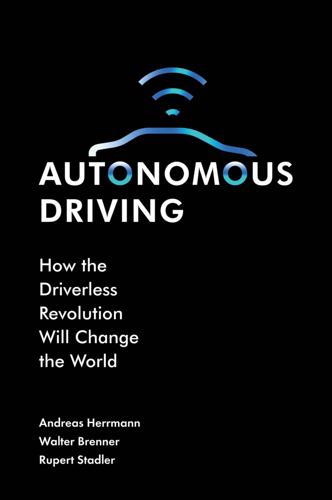
Autonomous Driving: How the Driverless Revolution Will Change the World
by
Andreas Herrmann
,
Walter Brenner
and
Rupert Stadler
Published 25 Mar 2018
That’s why the vehicles have to be tested in as many traffic situations as possible so that experience is gained on their reactions. A similar argument is presented by Jen-Hsun Huang, CEO of Nvidia, who demands accuracy of 99.999999 per cent in the development of autonomous cars, whereby the last percentage point can only be achieved at very great expense. Toyota and Rand Corporation have published calculations of the number of miles self-driving cars have to be tested before they can be assessed as roadworthy because the algorithms required for driverless cars undergo self-learning in multiple road traffic situations. The more traffic situations these algorithms are exposed to, the better prepared they are to master a new situation.
…
According to the latest research of the World Health Organisation, 90 per cent of the world’s population lives in places with poor air quality. One of the main causes is traffic, along with heating, garbage incineration and coal power plants [8]. In numerous places, there are ongoing discussions about banning cars from inner cities altogether so as to meet the air-quality standards. Research by the Rand Corporation also attempted to determine the social costs of a driven mile [3]. In conjunction with the National Highway Traffic Safety Administration, six important externalities were defined for the United States: oil-security costs, air pollution, climate change, traffic congestion, accidents and noise. All in all, they amount to some 13 cents per driven mile.
…
and we intend to work on that with commit- This page intentionally left blank BIBLIOGRAPHY [1] ACEA Scientific Advisory Group Report, 2014: Carsharing: Evolution, Challenges, and Opportunities, Centre for Transport Studies, Imperial College London. [2] Alessandrini, A., Campagna, A., Delle Site, P., Filippi, F., Persia, L., 2015: Automated Vehicles and the Rethinking of Mobility and Cities, in: Transportation Research Procedia, 145 160. [3] Anderson, J. M., Kalra, N., Stanley, K. D., Sorensen, P., Samaras, C., Oluwatola, O. A., 2014: Autonomous Vehicle Technology: A Guide for Policymakers, Rand Corporation, Santa Monica. [4] Arbib, J., Seba, T., 2017: Rethinking Transportation 2020 2030, Rethink Disruption Report. [5] Arup Foresight, 2014: Future of Rail 2050, London. [6] Bainbridge, L., 1983: Ironies of Automation, in: Automatica, 775 779. [7] Barclays, 2015: Disruptive Mobility. [8] Barth, M., Boriboonsomsin, K., Wu, G., 2014: Vehicle Automation and its Potential Impacts on Energy and Emissions, in: Meyer, G., Beiker, S., Road Vehicles Automation, Berlin, 103 112. [9] Bécsi, T., Aradi, S., Gáspár, P., 2015: Security Issues and Vulnerabilities in Connected Car Systems, in: IEEE Models and Technologies for Intelligent Transportation Systems, 477 482. [10] Beiker, S., 2012: Legal Aspects of Autonomous Driving, in: Santa Clara Law Review, Article 1. 413 Bibliography 414 [11] Beiker, S., 2016: Deployment Scenarios for Vehicles with Higherorder Automation, in: Maurer, M., Gerdes, C.

The Wires of War: Technology and the Global Struggle for Power
by
Jacob Helberg
Published 11 Oct 2021
The spoils of this war are power over every meaningful aspect of our society: our economy, our infrastructure, our ability to compete and innovate, our personal privacy, our culture, and subtle daily decisions we make based on information we interact with online. And in recent years, unfortunately, the world’s democracies have been losing ground. It has become fashionable in academic circles to favor the term “competition” to describe this great geopolitical contest—this is a mistake. As Raphael Cohen, senior political scientist at the RAND Corporation, correctly observes, “competition conjures up images of sports matches or economic markets.17 Those competitions, however, are bound by rules, policed by referees and ultimately produce winners and losers,” he adds. The geopolitical contest between the U.S. and China is not confined to the realm of economic competition nor is it leveled by mutually observed rules.
…
Japan, India, and Australia have begun discussing a “supply chain partnership” to guard against China’s back-end dominance.37 In a conversation with his Japanese counterpart, Indian prime minister Modi called for a “free, open and inclusive Indo-Pacific region”38—echoing Quad language—while in New Delhi, then U.S. deputy secretary of state Steve Biegun invited “any country that seeks a free and open Indo-Pacific… to work with us.”39 This Quad could promote mutual defense and information sharing in the Indo-Pacific, with an emphasis on repelling front- and back-end threats. Strengthening the Quad “should enhance the deterrence value of the group toward China,” notes RAND Corporation senior defense analyst Derek Grossman.40 Similarly, the Western techno-bloc should reassert itself in international forums where technological standards are being hammered out. When China pushes its New IP or its China Standards 2035, the United States should vigorously advocate for rules of the road that keep the Internet free from authoritarian control.
…
Grynbaum, “Right-Wing Media Uses Parkland Shooting as Conspiracy Fodder,” New York Times, February 20, 2018, https://www.nytimes.com/2018/02/20/business/media/parkland-shooting-media-conspiracy.html. 22 Jennifer Kavanagh and Michael D. Rich, “Truth Decay: An Initial Exploration of the Diminishing Role of Facts and Analysis in American Public Life,” RAND Corporation, 2018, https://www.rand.org/pubs/research_reports/RR2314.html. 23 Indictment, U.S. Department of Justice, 18 U.S.C. §§ 2,371, 1349, 1028A, https://www.justice.gov/opa/press-release/file/1035562/download. 24 Chen, “The Agency.” 25 Renee DiResta, Kris Shaffer, Becky Ruppel, “The Tactics & Tropes of the Internet Research Agency,” Disinformation Report, https://disinformationreport.blob.core.windows.net/disinformation-report/NewKnowledge-Disinformation-Report-Whitepaper.pdf. 26 Sanger, The Perfect Weapon, 182. 27 Indictment, U.S.

The Long History of the Future: Why Tomorrow's Technology Still Isn't Here
by
Nicole Kobie
Published 3 Jul 2024
Robert Goddard described his ‘vactrain’ via an article in Scientific American, and after his death, his wife Esther was awarded a patent for the design. In 1965, an engineer for Lockheed Missiles laid out his plans for a pneumatic tube linking Boston to Washington, DC in just 90 minutes, with the tubes themselves floated in water for a smoother ride. Robert Salter, of the military-affiliated RAND Corporation, published designs for high-speed transit using ‘evacuated tubes’. Pneumatic, atmospheric trains just won’t go away, despite the many historical failures. But you don’t necessarily need a big tube to make a railway that runs on air – just look at hovercrafts. * * * In a boggy bit of rural Cambridgeshire in 1973, Research Test Vehicle 31 is whooshing across the misty landscape at 160km/h (100mph), powered by magnets and riding on a cushion of air.
…
Flood reports that O’Hagan was systematic and methodical: his fire safety efforts and innovations slashed fire fatalities nationwide by 40 per cent.7 Under his watch, the FDNY was the first to use computers to track fires to spot trends, and as a man who believed in methodology and systems, O’Hagan listened to RAND – and that proved to be a well-intentioned mistake. Consultants at RAND made a model to decide which fire stations to close, and that model was wrong, causing fire deaths to skyrocket and a failure to maintain key infrastructure such as hydrants. RAND Corporation was founded in 1948 by the US Air Force and Douglas Aircraft Company, a defence contractor. The aim was to maintain hold of research and development after demobilisation following the Second World War, given that all the scientists and experts the war effort had drawn together were going to disperse.8 By the 1970s, RAND was looking to bring systems analysis approaches to cities, ‘the kind of streamlined modern management’ used by the US Secretary of Defense in the Vietnam War (because that went so well for the US).
…
New York Times, January 2, 1896. https://nyti.ms/3rQncrp ‘Underground Tube Is Urged for High-Speed Trains in Northeast: Pneumatic Pressure and Gravity Would Propel the Cars’, New York Times, August 1, 1965. ‘HyperloopTT signs deal for first test track in China.’ Reuters, July 19, 2018. https://biturl.top/Vn2Eri Salter, Robert M. The Very High Speed Transit System. Santa Monica, CA: RAND Corporation, 1972. https://biturl.top/zqe6ry ‘The pneumatic tunnel under Broadway, New York.’ Scientific American, February 19, 1870. https://biturl.top/AVVJny ‘An atmospheric railway.’ St. Pancras Guardian and Camden and Kentish Towns Reporter, January 28, 1910. Temperton, James. ‘The strange tale of the hovertrain, the British hyperloop of the 1970s.’
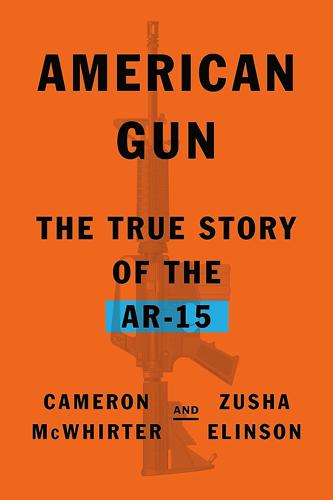
American Gun: The True Story of the AR-15
by
Cameron McWhirter
and
Zusha Elinson
Published 25 Sep 2023
At a National Security Council meeting: Richard Barber Associates Inc. for ARPA, “The Advanced Research Projects Agency, 1958–1974,” December 1975, V-39. The ARPA effort in Saigon: The RAND Corporation had a close relationship with AGILE, working to develop weapons systems and counterinsurgency strategies in Vietnam. See Mai Elliott, RAND in Southeast Asia: A History of the Vietnam War Era (Santa Monica, CA: RAND Corporation, 2010), document number CP-564-RC, https://www.rand.org/pubs/corporate_pubs/CP564.html. He showed up in South Vietnam: Peter S. Diggins, “Godel Tells of Taking $18,000 to Asia and Starting Anti-Guerilla Center,” The Washington Post, May 15, 1965.
…
An internal Pentagon history of the M16 later declared, “By May 1962, the AR-15 rifle was a common item of discussion at high-level meetings throughout the Department of Defense.” The ground shifted: the AR-15’s fortunes were resurrected. McNamara asked his comptroller, Charles Hitch, to review the M14 purchase program in September 1962. Hitch, a slight man who had difficulty filling out a suit, had been the chief economist of the RAND Corporation. There, he coauthored a book on modern defense spending, The Economics of Defense in the Nuclear Age. Hitch’s office in the Pentagon was just down the hall from McNamara’s. Hitch’s assessment was a blistering rebuke of the M14. “The AR-15 is decidedly superior,” the report said. It was less expensive, fired more bullets, and was more accurate.
…
“The Will to Arm: The National Rifle Association in American Society, 1871–1970.” PhD thesis for the University of Colorado, August 11, 1970. Ling, Wang. “On the Invention and Use of Gunpowder and Firearms in China.” Isis 37, no. 3/4 (July 1947): 160–78. McNaugher, Thomas L. “Marksmanship, McNamara and the M16 Rifle: Organizations, Analysis and Weapons Acquisition.” RAND Corporation, March 1979. Miner, Zachary W. “A Kind of Peace: The Real World of Firearms Owners.” Dissertation for University at Albany, Department of Sociology, 2016. Moulton, MaryLee G. “Power Play: The Rhetoric of the NRA After Newtown.” Thesis presented to the School of Communication, University of Nebraska at Omaha, August 2017.
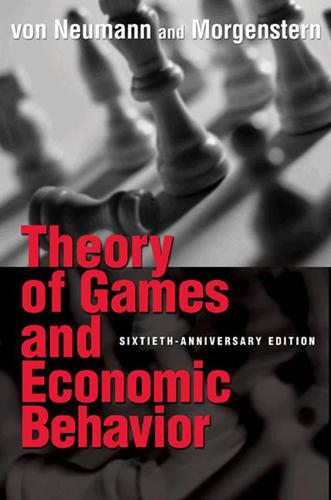
Theory of Games and Economic Behavior: 60th Anniversary Commemorative Edition (Princeton Classic Editions)
by
John von Neumann
and
Oskar Morgenstern
Published 19 Mar 2007
Samuel Karlin (who received his Ph.D. at Princeton in mathematics in the spring of 1947 then took a faculty position at Cal Tech, and almost immediately started to consult at the RAND Corporation under the tutelage of Frederic Bohnenblust) has written that he never heard game theory mentioned during his graduate studies. Nevertheless, many observers agree that in the following decade Princeton was one of the two centers in which game theory flourished, the other being the RAND Corporation in Santa Monica. The story of the RAND Corporation and its research sponsored by the Air Force has been told on several occasions (see [11], [12]). We shall concentrate on the activity in the mathematics department at Princeton, a story that illustrates the strong element of chance in human affairs.
…
Through the efforts at RAND and at Princeton University, many new directions of research had been opened and the way had been paved for the applications to come. The TGEB was published with unparalleled accolades from the cream of the mathematical economists of the era, then ignored by the economists while mathematicians at the RAND Corporation and at Princeton quietly pushed the boundaries of the subject into new territory. It took nearly a quarter century before reality overcame the stereotypical view that it was merely a theory of zero-sum two-person games and that its usefulness was restricted to military problems. Once these myths were countered, applications came tumbling out and, by the time the Nobel Memorial Prize in Economics was awarded in 1994 to Nash, John Harsanyi, and Reinhard Selten, the theory of games had assumed a central position in academic economic theory.
…
Wald, Statistical Decision Functions, New York (1950). (6) J. Williams, The Compleat Strategyst, Being a Primer on the Theory of Games of Strategy, New York (1953). Bibliographies on the subject are found in all of the above books except (6). Extensive work in this field has been done during the last years by the staff of the RAND Corporation, Santa Monica, California. A bibliography of this work can be found in the RAND publication RM-950. In the theory of n-person games, there have been some further developments in the direction of “non-cooperative” games. In this respect, particularly the work of J. F. Nash, “Non-cooperative Games,” Annals of Mathematics, Vol. 54, (1951), pp. 286–295, must be mentioned.

Accessory to War: The Unspoken Alliance Between Astrophysics and the Military
by
Neil Degrasse Tyson
and
Avis Lang
Published 10 Sep 2018
For that, you’ll need an optical apparatus capable of high resolution, so that the target area can be clearly seen. Does that sound like a telescope? It should, because it is. Today, the largest optics (mirrors rather than lenses) are the ones developed for telescopes. Early in the twenty-first century, a comprehensive report from the RAND Corporation, a think tank devoted mainly to US military policy, proposed that the optics required for a space-based laser weapon designed to destroy terrestrial targets could become available and affordable once the optics required for the “next-generation space telescope” had been mastered. Today’s real-life next-generation space telescope, the seven-ton James Webb Space Telescope, has a 6.5-meter gold-coated mirror made up of eighteen separate hexagonal segments constructed from pure beryllium, a metal that’s both strong and light.
…
The scientists “might even welcome the laser if its large optics could also be used to increase observing time when not needed for weapon operations, maintenance, or training,” said RAND.25 Given that astro-folk tend to be a peaceable crew, “accept” might be a more suitable word than “welcome.” Since its founding in 1948, by the way, the RAND Corporation has supported a fair bit of “thinking about the unthinkable.”26 To this and other ends, it has consistently hired impressive individuals, ranging from Daniel Ellsberg, who made public the Pentagon Papers, to Donald Rumsfeld, who served as a RAND trustee for a quarter century before becoming George W.
…
The phrase, rather, has been interpreted to require that activities in space be non-aggressive . . . to refrain from the threat or use of force except in accordance with the law, such as in self-defense.158 At the heart of US military objectives is an expansive definition of self-defense—active, not passive. To embrace that definition means the potential use of weapons, and potential use opens the door to an actual program of weaponization. In 2002 the RAND Corporation’s Project Air Force division published Space Weapons Earth Wars. Intended as a tutorial for anyone concerned with national security, it focuses on facts, options, feasibilities, tactics, costs, positives, negatives, and possible scenarios.159 Everything you need to know about warmaking from space.

Governing the Commons: The Evolution of Institutions for Collective Action
by
Elinor Ostrom
Published 29 Nov 1990
Vancouver: Uni versity of British Columbia Press. Carruthers, I., and R. Stoner. 1981. Economic Aspects and Policy Issues in Groundwater Development. World Bank staff working paper No. 496, Wash ington, D.C. Cave, J. A. K. 1984. The Cold Fish War: Long-Term Competition in a Dynamic . Game. Santa Monica, Calif.: Rand Corporation. Central and West Basin Water Replenishment District. 1987. Annual Survey Re port on Ground Water Replenishment. Glendale, Calif.: Bookman, Edmmonston Engineering. Chamberlin, J. 1974. Provision of Collective Goods as a Function of Group Size. American Political Science Review 68:707-16. Chambers, J.
…
New York: Prentice-HalL Roberts, M. 1980. Traditional Customs and Irrigation Development in Sri Lanka. In Irrigation and Agricultural Development in Asia, ed. E. W. Coward, Jr., pp. 186-202. Ithaca, N.Y.: Cornell University Press. Rolph, E. S. 1982. Government Allocation of Property Rights: Why and How. Technical report, Rand Corporation, Santa Monica, California. Rolph, E. S. 1983. Government Allocation of Property Rights: Who Gets What? Journal of Policy Analysis and Management 3:45-61. Rose-Ackerman, S. 1977. Market Models for Water Pollution Control: Their Strengths and Weaknesses. Public Policy 25:383--406. Rosenberg, N. 1982.
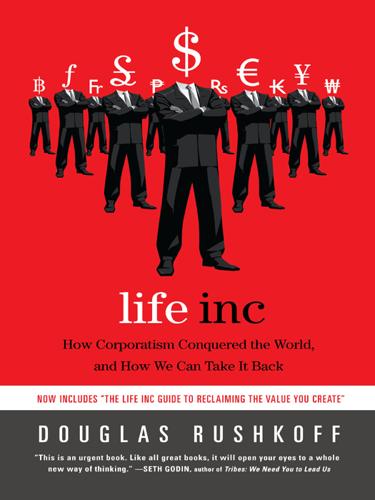
Life Inc.: How the World Became a Corporation and How to Take It Back
by
Douglas Rushkoff
Published 1 Jun 2009
By the 1950s, most of the best mathematicians and social scientists had been hired either directly or through grants to work out America’s nuclear-war-game scenarios against the Soviet Union. In a situation where the enemy might be signing a nonproliferation treaty while actually stockpiling an arsenal, paranoia made good sense. The think-tank logicians at the Rand Corporation called it “the prisoner’s dilemma.” The scenario went something like this: Two suspects are arrested by the police, who have insufficient evidence to convict either one. If one betrays the other, who remains silent, the betrayer goes free and the silent accomplice receives a ten-year sentence.
…
In Reagan’s persona as well as his politics, the independent, shoot-from-the-hip individualism of the Marlboro Man became compatible—even synergistic—with the economics and culture of self-interest. No-blink brinksmanship with the “evil” Soviet empire, the dismantling of domestic government institutions, the decertification of labor unions, and the promotion of unfettered corporate capitalism all came out of the same combination of Rand Corporation game theory and the 1960s antipsychiatry movement. Regulations designed to protect the environment, worker safety, and consumer rights were summarily decried as unnecessary government meddling in the marketplace. As if channeling Friedrich Hayek by way of R. D. Laing, Reagan shrank the social-welfare system by closing the public-psychiatric-hospital system.
…
If anything, it’s the other way around: a landscape defined by the competitive market will promote self-interested behavior. It’s the surest path to a corporatist society. Maybe that was the objective all along. Central Currency The economy in which we all participate is no more natural than the game scenarios John Nash set up to test the Rand Corporation’s secretaries. It is a model for human interaction, based on a set of false assumptions about human behavior. Even if we buy the proposition that people act as self-interestedly as they possibly can, we must accept the reality that people’s actual choices don’t correspond with their own financial well-being.
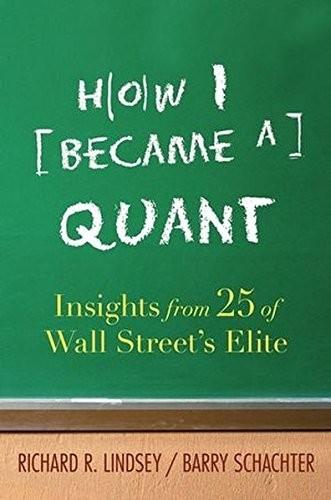
How I Became a Quant: Insights From 25 of Wall Street's Elite
by
Richard R. Lindsey
and
Barry Schachter
Published 30 Jun 2007
They were more of a diversion than an avocation, but the accident of the brackets had more influence subsequently than I could have imagined at the time. Harry also enlisted me as the department’s representative on the Committee on Graduate Education, which gave me a reason to hang out in the dean’s office. He was on the board of the RAND Corporation in Santa Monica, and suggested it might be a nice place to work, right on the beach with no blizzards. I put it on my list. Grey Silver Shadow When the time came to find a real job, I was going out to UCLA to interview for a faculty position, and I added RAND to the schedule. UCLA JWPR007-Lindsey 14 May 7, 2007 16:12 h ow i b e cam e a quant told me to stay in the Holiday Inn on Wilshire Boulevard, rent a car, and come out in February of 1977.
…
Formerly he was first vice president of the Prudential Insurance Company of America, where he served as senior managing director of a quantitative equity management affiliate of the Prudential Asset Management Company and managing director of the discretionary asset allocation unit. Prior to that, he was on the finance faculty of the University of Pennsylvania’s Wharton School and consulted to the Rand Corporation. Dr. Jacobs has a BA from Columbia College, an MS in Operations Research and Computer Science from Columbia University’s School of Engineering and Applied Science, an MSIA from Carnegie Mellon University’s Graduate School of Industrial Administration, and an MA in Applied Economics and a PhD in Finance from the University of Pennsylvania’s Wharton School.
…
Clients at his consulting and software development business include some of the world’s largest investment managers and hedge funds. These tasks involve trading systems and automated analysis of textual and Internet information sources. All build on his history of innovation in financial technology. At the RAND Corporation, he directed research on real-time applications of artificial intelligence that led to the founding of Integrated Analytics Corporation. IAC was acquired by the Investment Technology Group, (NYSE:ITG) and, with the addition of electronic order execution, its product became QuantEx, an electronic execution system still in use for millions of institutional equity transactions daily.
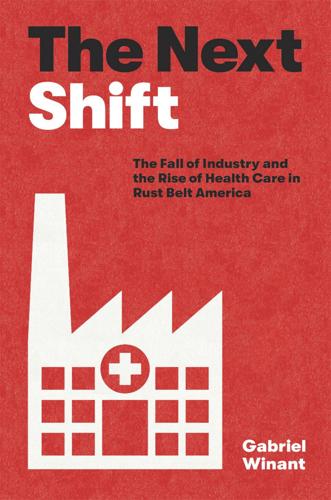
The Next Shift: The Fall of Industry and the Rise of Health Care in Rust Belt America
by
Gabriel Winant
Published 23 Mar 2021
While it was common for observers to note the numerical replacement of high-wage industrial jobs with low-wage service jobs, few perceived any connection between these processes. “The decline of manufacturing employment was accompanied by a steady increase of employment in service industries,” observed a RAND Corporation study. “For many, the loss of manufacturing jobs meant unemployment or lower-paying jobs in new occupations.” In this typical analysis, the relationship between the two processes appeared to be coincidental.3 The rapid growth in the late 1970s of the largest “new economy” sector, health care, resulted from the interaction between the existing institutions of the welfare state and the broad effects of industrial decline.
…
The result was not so much the conservation of old family structures as it was aggravation of the difficulty of transition to two-earner households. Working-class women had to deal with increasingly contradictory demands on their time and energy and had to do so using scarcer resources.48 Young people—especially African Americans—raised in this environment entered a brutal labor market. The RAND Corporation study of Pittsburgh’s education system and labor market, for example, had expected to find rising wages for entry-level jobs, since a diminishing pool of young potential hires should have driven up the price of labor in that age cohort. But downward pressure on the higher tiers of the labor market instead cascaded into and swamped the entry-level labor market.
…
For the classic study of industrial job loss, see William Julius Wilson, When Work Disappears: The World of the New Urban Poor (New York: Knopf, 1996). 3. Thomas K. Glennan Jr. et al., Education, Employment, and the Economy: An Examination of Work-Related Education in Greater Pittsburgh (Santa Monica: RAND Corporation, 1989). 4. Dennis C. Dickerson, Out of the Crucible: Black Steelworkers in Western Pennsylvania (Albany, NY: SUNY Press, 1980); John H. Hinshaw, Steel and Steelworkers: Race and Class Struggle in Twentieth-Century Pittsburgh (Albany, NY: SUNY Press, 2002); “Strike Threat Effects,” August 30, 1967, box 1, Coordinating Committee Meetings, vol. 2, RCCP.
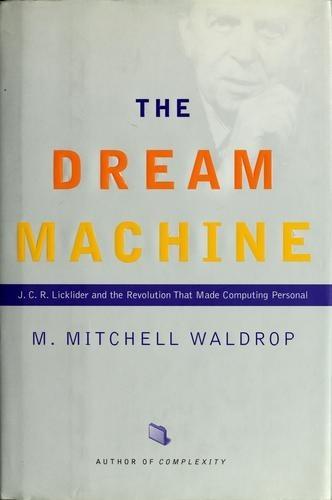
The Dream Machine: J.C.R. Licklider and the Revolution That Made Computing Personal
by
M. Mitchell Waldrop
Published 14 Apr 2001
Because it was the first true stored-program computer-and because the Pentagon wanted replicas of its own for nuclear-weapons calculations- the Institute for Advanced Study's machine would serve as the model for first- generation computers constructed during the 1950s at the University of Illinois, the RAND Corporation, IBM, and the national laboratories at Los Alamos, Oak Ridge, and Argonne. Software. By 1947, von Neumann and Goldstine had laid the foundations for software engineering with the first installment of "Planning and Coding Prob- lems for an Electronic Computing Instrument," a report that they would pub- lish in three parts over the next year and that by default would become the standard textbook for the whole first generation of programmers.
…
Not only did he see it as the kind of adolescent saber-rattling that was going to get us all incinerated, but he felt that his old friend had come to personify a dangerously seductive brand of intellectual hubris. Through the use of innovative analytical tools such NEW KINDS OF PEOPLE 91 as von Neumann's game theory, went the argument-an argument that was al- ready being embraced by strategic thinkers in the government and in newly formed think tanks such as the RAND Corporation-the nuclear-arms race could be rationalized, mathematized, reasoned about, and managed. Wiener begged to differ. He certainly didn't favor ilTationality in human af- fairs; the world, he felt, had already heard entirely too much about the "triumph of the will" from Hitler and his ilk. But he did want to see this rising generation of mathematical Cold Warriors be a little less naive about the uncertainties of the world.
…
One day the air-defense programming would be finished, and then what would they do? IBM had much the same reaction, as did Bell Labs, another subcontractor. The upshot was that the programming respon- THE FREEDOM TO MAKE MISTAKES 119 sibility, along with many of the original Lincoln Lab programmers, were eventu- ally transferred to Santa Monica and the RAND Corporation's system develop- ment division, which in December 1956 would break away and become the independent Systems Development Corporation. Second, in the early 1950s there probably were no more than a few thousand programmers in the whole country. So the SAGE project soon found itself in the business of mass education.
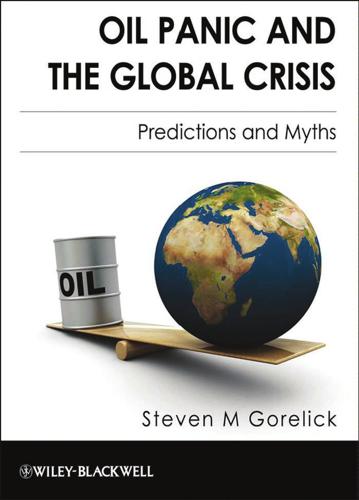
Oil Panic and the Global Crisis: Predictions and Myths
by
Steven M. Gorelick
Published 9 Dec 2009
It contains about one-eighth the energy of conventional oil on an energy-per-ton basis (5 million British thermal units (BTU) per ton versus almost 40 million BTU per ton in crude oil). It is not economic to exploit oil shales that would generate less than about 15 gallons of oil per ton. A 2005 study by the Rand Corporation concluded that oil prices would have to remain above $70 to $95 (2005$) per barrel for the firstgeneration mining and surface retorting plants to be profitable using existing technology. Such an oil price was surpassed in 2008, but it remains uncertain that such a price would be sustained in the future to justify commercial investment in large-scale recovery.
…
“Alberta oil sands frenzy fizzling,” Petroleum News, 13(51), December 21, 2008: 8; “Study sees pause in oil sands output growth,” Oil and Gas Journal, February 16, 2009: 5. 159. Rand Report (2005). Bartis, J. T., T. LaTourrette, L. Dixon, D. J. Peterson, and G. Cecchine (2005). Oil Shale Development in the United States: Prospects and Policy Issues, Rand Corporation, Monograph series. 160. Ibid. 161. Ibid. 162. Biglarbigi, K., H. Mohan, M. Carolus, and J. Killen (2009). “Analytic approach estimates oil shale development economics,” Oil and Gas Journal, February 2, 2009: 48–53. 163. “Israel presses for oil from shale,” Business Week, July 5, 2006. 164. Dyni, J.
…
King approach, 4–9, 61, 68–9 backdating system, 136 extensions to, 80–1 career, 4 global oil endowment estimates, 124 natural gas endowment estimate, 180 predictions global oil production, 8–9, 95–8 natural gas production, 95 US oil production, 6–8, 88–91 on soothsaying, 98 revised endowment estimates, 124 success, 11–12 Hubbert’s curve, 5–6, 73, 80, 90–2, 110–12 appeal, 10–11 contradiction to application, 120 Hughes, Howard, Senior, 223 Hurricane Katrina, 49, 218 hybrid electric vehicles, 215 hydraulic mining, 157 hydrocarbons, 17 IEA, 72, 163–4 impurities, 40 in-situ recovery, 170 India carbon dioxide emissions, 217 coal, 180–1, 217 industrial development, 74–5 oil consumption, 74–6, 147, 150–2 oil production, 75–6 oil-use intensity, 150–1 vehicle ownership, 204–6 Indonesia oil production, 66 OPEC membership, 23 palm oil, 212–13 political stability, 217 industrial development, oil consumption and, 74–6 Index inflation, 77–8 innovation, rate of, 222–3 International Energy Agency (IEA), 72, 163–4 International Monetary Fund World Economic Outlook, 154 Iran discoveries, 138 oil exports, 64 OPEC membership, 23 political stability, 217 revolution, 115 Iran, Shah of, 64 Iran–Iraq war, 115 Iraq OPEC membership, 23 political stability, 217 wells, 96 iron, 101–2 Israel, 63, 113 oil shale, 172 Japan oil imports, 36 vehicle ownership, 205 jet fuel, 176 need for, 109–10 Jevons, William Stanley, 199 Jevons’ Paradox, 199 Jubilee field, 139 Jupiter field, 189 Kara Sea, 145 Kashagan field, 138 Kazakhstan, 126, 138 Kern River oil field, 166 kerogen, 170 kerosene, 19 Khusaniyan oil field, 25 Kirkuk oil field, 71 Kuwait, 23, 67 lag effect, 48 lead, 101–2, 106 235 leapfrogging, 108–9, 213–15 lease condensate, 27, 39 Leiby, Paul, 208 Libya OPEC membership, 23 political stability, 217 lifting (production) costs, 23, 42–3, 133–4, 142 light trucks, 200 “Limits to Growth” model, 59–61 liquefied petroleum gas (LPG), 27 lode deposits, 156 logistic curve, 5–6, 14–15, 90–1, 93–4 LPG, 27 lubricants, 17, 38, 40, 173, 174 lubrication oils, 19 Malthus, Thomas, 58–9, 82 Malthusian doctrine, 58–9 Manning, Van H., 62 mass balance, 10, 124, 221–2 Massachusetts Institute of Technology (MIT), 59, 215 McCabe, Peter, 118–21 mercury, 108–9 metals price trends, 103–7 production, 100–2 methane, 18 Mexico, oil reserves, 65, 144 Michigan Basin gas field, 140 Middle East conflicts, 63, 112–13, 115 Minerals Management Service, 26, 28 Montana, 176 myths, 87–181 National Energy Program, 64 national oil bank, 218–19 natural gas conversion to liquid fuels, 173–4 description, 18 discarded, 177 discoveries, 70–1, 128–9, 138, 140, 145–6 236 Index natural gas (cont’d ) initial in-place, 164–5 liquids see NGLs peak estimation, 96 powering motor vehicles by, 210 synthetic fuel from, 175–7 USGS Assessment, 177–9 natural gas condensate, 138, 165, 189 natural gas consumption, 177, 196 natural gas endowment, 177–9 natural gas field growth, 135 natural gas liquids see NGLs natural gas plant liquids, 39 natural gas production, US, 95 natural gas reserves, 177 growth, 135–6 replacement, 138 natural gas resources, 177–80 natural gas, US offshore, 128–9 Nature, 215 neo-Malthusian, 59–62, 66, 98, 103 New York City, horses, 206 NGLs, 27, 28 Nigeria bonus payments, 125 corruption index, 217 OPEC membership, 23 political stability, 217 non-renewable resource model, 195–6 non-renewable resources, 100–3 normal distribution, 93–4 North Sea, oil reserves, 65 Norway, oil production, 66 OAPEC, 23 embargo in 1970s, 63, 115 members, 23 production, 24 offshore oil, 139 oil conventional, 27 definition, 17 era, 1, 3 initial in-place, 164–5 Oil and Gas Journal, 29, 31, 136 oil availability, 220 oil business, 20–3 return on investment (ROI), 21 oil consumption by country, 33–4, 148 per capita, 33, 35, 74–5, 147–9 industrial development and, 74–6 production vs., 38–40 see also oil-use intensity oil crises 1916, 62–3 1918, 63 1970s, 63–5 oil demand, 220 oil dependence, 26, 35–6, 61, 195, 199, 208–9, 213, 215 oil dependence, cost, 12–13 oil depletion models, 8–9 predictions, 61–2 see also oil crises oil discoveries deficit, 66–7 global, 138–44 number peak, 73 peak production and, 73–4 production and, 66 volume peak, 73–4 oil endowment definition, 17 global estimates, 8–9, 119–21, 124 as inflated, 68–9 USGS, 9, 28–9, 68–9, 119–20 historical assessments, 119–20 Hubbert curve and, 7–9 peak oil timing and, 68–9 regional breakdown, 32 status in 2009, 29–31 total, 28 see also US, oil endowment oil expenditures, 79, 153–6 oil extraction price ranges for profitable, 163–4 stages, 162 oil fields, 97 Index oil finding costs, 42–3, 53, 56, 133–4 oil imports, 35–7 from OPEC, 36–7, 208 oil lifting costs, 43, 54, 56 oil panics see oil crises oil price, 24–5 annual average, 77–8, 116 inflation-adjusted, 78–9, 114–15, 116 relative to wages, 114–15 by quality, 40–1 demand and supply relation, 24 gasoline price and, 44–5, 206, 217 reserves and, 132 spikes in, 78–9, 114–15, 219 stability, 26, 217–19, 224 oil production by country, 32–3 by region, 94 consumption vs., 38–40 costs, 23, 42–3, 133–4, 142 curve fitting, 6–9 declining, 65–6, 71–2, 80–1 global Hubbert predictions, 8–9, 95–8 population vs., 111 replacement by reserve additions, 136–8 trend, 110–11, 203–4 OPEC, 33 peak see peak oil see also US, oil production oil quality, 40 pricing by, 40–1 oil recovery technology, 121, 222–3 oil reserves booking, 125–6 by country, 32, 34 global, 123, 132–8 estimates as inflated, 67–8, 124–5 prices and, 132 industry exaggeration, 69, 125 possible and probable, 72 proven, 72 resources vs., 126 237 SEC rules, 69, 125–6 status in 2008, 31–2 oil resource pyramids, 160–5 global, 163–5 US, 161–2 oil sands Canada, 27, 29, 122, 132, 136, 168–70 US, 162, 168 oil shale global, 172–3 US, 162, 170–2 oil shocks, 155–6 oil, unconventional, 27, 165–75 oil-use efficiency see efficiency oil-use intensity, 148–52 oil wells, 96–7 oil window, 170 Oklahoma, 62 OPEC, 21, 23–6 dependence on, 36–7, 208 members, 23 price control, 24–6, 218 price rises in 1970s, 63–4 production, 24–5, 118, 218 quotas, 24, 67 reserves, 23 estimates, 67–8, 124–5 OPEC Basket, 24, 41, 56 Organization of Arab Petroleum Exporting Countries, see OAPEC Organization of Petroleum Exporting Countries, see OPEC Orimulsion, 167 Orinoco heavy-oil belt, 167 overshoot and collapse, 60 palm oil, 212–13 panic, see oil crises patent activity, 222 PDVSA, 168 peak oil, 3–4 effects, 62 Hubbert predictions, 7–9, 11–12 238 Index peak oil (cont’d ) modern proponents, 124 oil company views, 16 oil discovery volume and, 73–4 oil endowment and, 68–9 US Department of Energy predictions, 81 peanut oil, 212 Pennsylvania, 1, 20, 160, 176 Peru, oil reserves, 144 petroleum composition, 18–19 definition, 17 refinement, 18–19 unconventional, 27 see also gasoline and oil petroleum endowment, 178–9 Petroleum Producers Association, 20 petroleum products, from barrel of oil, 37–8 Petroleum Week, 88 placer deposits, 156 plankton, 17 platinum, 106 political stability, 217, 221 population growth, 5, 58–61, 111 Porter, Edward, 114 predictions, 2, 4–13, 60–3, 87–93, 95–99, 123–4, 128, 130, 134–5, 223 price elasticity of demand, 45, 56 price gouging, 48–9 PricewaterhouseCoopers, 217 primary recovery, 162 private investment, 144 processing gain, 38, 39 producer rebound, 200 production costs, 23, 42–3, 133–4, 142 production decline, scarcity and, 98–103 profitable oil extraction prices, 113–4 Prudhoe Bay oil field, 128 Qatar, 23, 74, 176 Rand Corporation, 172 reasonable certainty, 125–6 rebound, 199–200 recession, 25, 154–5 recovery factor, definition, 18 remaining reserves, 28 renewable energy resources, 216 renewable resources, 98–100, 102 Requa, Mark L., 63 research and development spending, 222 reserve additions, 127, 130, 136–7 reserve base, 184 reserve growth, 28, 127, 134–6 reserves booking, 125–6 definition, 17, 122 private investment and, 144 revisions based on backdating, 136 see also gold reserves; natural gas reserves; oil reserves resource endowment, 6 resource pyramid, 156–73 resource substitution, 107–8, 207 resources definition, 17, 122 non-renewable, 100–3 renewable, 98–100, 102 reserves vs., 126 rock bit, 223 Royal Dutch Shell in-situ recovery method, 170 oil discoveries, 144 oil reserves, 23, 69, 125–6 Russia heavy oil, 166–7 natural gas, 145 oil production, 32, 144–5 oil reserves, 144 Sasol, 176 Saudi Arabia oil consumption, 74 oil production, 32, 71–2 Index incremental cost, 114 spare capacity, 118 oil reserves, 72 OPEC membership, 23 scarcity, 61, 77–9, 98–116, 186, 196, 219, 222 scarcity rent, 116–18 Science, 2, 5, 65, 90 Scientific American, 106 SEC, 69, 125, 126 SEC Rule (4–10), 125 secondary recovery, 162 security, 12–3, 64, 195, 217–9, 221 Shell see Royal Dutch Shell Shell Canada, 169 Shenhua China Coal Liquefaction Corporation, 177 silver, 106, 108 Simmons, Mathew, 104 Simon-Ehrlich bet, 103–5 Simon, Julian, 103–4 Six Day War (1967), 112–13, 115 Smithsonian Institute, 63 social disintegration, 217 solar power generation, 214 “sour” oil, 40 South Africa, transportation fuels from coal, 176 South America, heavy oil, 167 South Korea, vehicle ownership, 205 South Pars field, 138 soybean oil, 212–13 Spindletop, 160 spot price, 48 St.
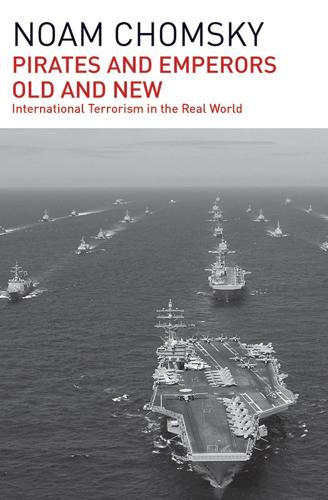
Pirates and Emperors, Old and New
by
Noam Chomsky
Published 7 Apr 2015
Considerably more significant for U.S. policy is Colombia, where the terrible crimes of earlier years mounted sharply in the 1990s, and Colombia became the leading recipient of U.S. arms and training in the hemisphere, in conformity to a consistent pattern. By the decade’s end political murders were running at about ten a day (since perhaps doubled according to Colombian human rights organizations), and the number of displaced people had risen to two million, with some 300,000 more each year, regularly increasing. The State Department and Rand Corporation concur with human rights organizations that some 75–80 percent of the atrocities are attributable to the military and paramilitaries. The latter are so closely linked to the military that Human Rights Watch refers to them as the army’s “sixth division,” alongside the five official divisions.
…
For the record, “there have been some 18 anti-American terrorist incidents in Western Europe and the Middle East in the three months since the Libyan raid, compared with about 15 during the 31/2 months before it” while “In the world as a whole, the rate of anti-American terrorism looks like being little different from last year,” the Economist observed (while lauding Reagan’s act of courage); and the Rand Corporation’s leading specialist on terrorism noted that terrorist attacks after the raid persisted at about the same level as before.55 Completing the record, on July 3 the FBI released a 41-page report reviewing terrorist incidents within the United States in 1985. Seven were listed, with two people killed.
…
Included are the plans to extend the “arms race” into space—a “race” with one competitor only—undermining the Outer Space Treaty of 1967 and other international obligations. Ballistic Missile Defense (BMD) is only a small component, and even that is understood to be an offensive weapon: “not simply a shield but an enabler of action,” the RAND corporation explained, echoing not only the thoughts but even the words of Chinese authorities, who, realistically, regard it as a weapon directed against them. Strategic analysts realistically describe the program as a means to establish U.S. global “hegemony,” which is what the world needs, they explain, echoing many distinguished predecessors.

This Is How They Tell Me the World Ends: The Cyberweapons Arms Race
by
Nicole Perlroth
Published 9 Feb 2021
And once the intel agencies started allocating more of their budgets for zero-day exploits and attack tools off the private market, there was even less incentive to turn over the underlying zero-day flaws to vendors for patching. Instead, they started upping the classification levels and secrecy around these programs. The irony is that such secrecy did little to make Americans more secure. Zero-days do not stay secret indefinitely. One study by RAND Corporation, the research corporation that concentrates on U.S. defense planning, found that while the average zero-day exploit can stay secret for nearly seven years, roughly a quarter of zero-day exploits will be discovered within a year and a half. Earlier studies determined that the average life-span of a zero-day is ten months.
…
And yet, the “move fast and break things” mantra Mark Zuckerberg pushed in Facebook’s earliest days has failed us time and time again. The annual cost from cyber losses now eclipses those from terrorism. In 2018, terrorist attacks cost the global economy $33 billion, a decrease of thirty-eight percent from the previous year. That same year, a study by RAND Corporation from more than 550 sources—the most comprehensive data analysis of its kind—concluded global losses from cyberattacks were likely on the order of hundreds of billions of dollars. And that was the conservative estimate. Individual data sets predicted annual cyber losses of more than two trillion dollars.
…
The references to the number of lines of code in Linux, the Pentagon’s Joint Strike Fighter Aircraft, and Microsoft Vista were sourced from Richard Danzig’s 2014 article, “Surviving on a Diet of Poisoned Fruit: Reducing the National Security Risks of America’s Cyber Dependencies,” published by the Center for a New American Security. Willis H. Ware’s prescient 1967 RAND report was officially titled, “Security and Privacy in Compute Systems,” but came to be called the “Ware Report.” It is available in George Washington University’s National Security Archive: nsarchive.gwu.edu/dc.html?doc=2828418-Document-01-Willis-H-Ware-RAND-Corporation-P. The 1970 Anderson Report for the Defense Science Board Task Force is available here: csrc.nist.gov/csrc/media/publications/conference-paper/1998/10/08/proceedings-of-the-21st-nissc-1998/documents/early-cs-papers/ware70.pdf. Two comprehensive accounts of NSA’s budget and management challenges in the pre-9/11 era are George Cahlink’s September 1, 2001 piece, “Breaking the Code,” for Government Executive magazine, and Roger Z.

WikiLeaks and the Age of Transparency
by
Micah L. Sifry
Published 19 Feb 2011
New funding model for journalism: try doing it for a change.”10 WikiLeaks new level of visibility prompted New York Times reporter Noam Cohen to pose a fascinating question: “What Would Daniel Ellsberg do with the Pentagon Papers today?” Would he have given them to The New York Times and waited for them to be analyzed and published? Or would he just post them online? Back in 1970–71, it had taken Ellsberg, then a high-level analyst with the Rand Corporation, several months to photocopy the ten-thousand-page secret history of America’s war, and months more of efforts to get them published. Ellsberg told Cohen, “As of today, I wouldn’t have waited that long. I would have gotten a scanner and put them on the Internet.” Ellsberg admitted that the government’s effort to stop their publication was useful in garnering public attention; when Nixon’s Justice Department got a court injunction stopping the Times from continuing to publish the papers, Ellsberg passed copies to The Washington Post.
…
Ellsberg was a defense analyst with top security clearances for many years before he decided to leak the Pentagon Papers. He had worked on nuclear war planning policy for the National Security Council before studying Vietnam policy for the Pentagon and State Department. In the fall of 1968, he was working for the Rand Corporation, still with his clearances, and was part of a group tasked by Henry Kissinger—the incoming national security adviser to Presidentelect Richard Nixon—to prepare a study of options for the new president on Vietnam. While presenting that report to Kissinger, he tried to warn of the dangers of relying too much on top secret information.
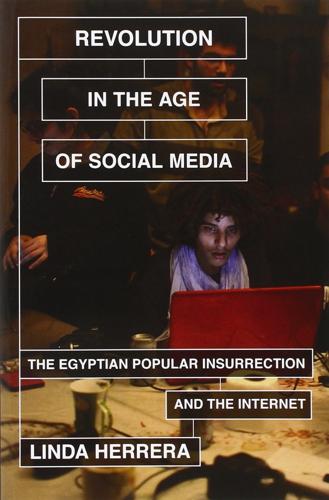
Revolution in the Age of Social Media: The Egyptian Popular Insurrection and the Internet
by
Linda Herrera
Published 14 Apr 2014
Consecrate them with a lofty mission; inflame them with emulation and praise; spread through their ranks the word of fire, the word of inspiration; speak to them of country, of glory, of power, of great memories. The above quote from Italian nationalist Guiseppe Mazzini opens the 2003 report “The Youth Factor: The New Demographics of the Middle East and the Implications for U.S. Policy.” The report, authored by Graham Fuller, formerly of the CIA, US Foreign Service, and RAND Corporation, joined a chorus of voices from the Washington, DC establishment in the post-9/11 and post-Cold War era trumpeting the need to contain and capture the hearts and minds of Arab and Muslim youth through “soft power.” With up to 75 percent of the population of the Middle East and North Africa (MENA) region under thirty-five years old, the young were well placed to act as what Mazzini calls the “apostles for a new religion.”
…
Jr., 26 Obama, Barack, 2, 42, 83, 106, 148 2008 Presidential Campaign, 36, 40, 119 One Million Voices Against FARC, 35 See also FARC Open Door, 14 Open Source Center, 40 Organization for Economic Cooperation and Development (OECD), 7 Othman, Ahmed, 47, 59 Otpor, 33–5 Pedagogy of the Oppressed (Freire), 154 PlayStation, 8, 74 Police Day, 89–90, 96 Policy Planning, 2, 23, 29, 33, 41–2 See also State Department pornography, 4, 9 Port Said, 75 Powell, Colin, 26 al-Qadaseen. See Church of the Two Saints Rabaa al-Adawaya, 137, 140 Radio Sawa, 32 Ramadan, Tariq, 146–7 RAND Corporation, 25 Rebel. See Tamarud Reporters Without Borders, 103–4 Revolution 2.0, 1, 42, 64, 79, 121, 149 See also Ghonim, Wael Ross, Alec, 42–3 Sabahi, Hamdeen, 124 Said, Khaled, 46, 47–101, 107, 108, 110–11, 150–5 January 25th event and, 5, 19 See also “We Are All Khaled Said” saint, 151–5 Saint Avatatas, 11 Sakhr, 7 Sakr, Rehab, 121 Salafi Front, 91–2 satellite dishes, 7, 8–10, 12 Satellite Thief (Harami al-Dish), 9 Saweris, Nagib, 10 Schmidt, Eric, 44 See also Google Serbia, 18, 33–4 Shafik, Ahmed, 120, 122 Sharp, Gene, 35, 88 Sidi Bouzid, 99, 101 silent stand, 65–68, 87–89, 97 el-Sisi, Abdel Fattah, 136–41, 155–6 6th of April Youth Movement, 22–3, 34, 59, 86–7, 107 AYM and, 35, 38, 46 members of, 37, 75, 107, 110, 119 Skype, 35 soft power, 25–7, 156 Spacenet Internet cafe, 47, 49 State Department, 2, 23–4, 28–44, 106, 146–8 Stepka, Matthew, 1 Stone, Biz, 22 See also Twitter Suez, 114 canal, 14 Supreme Constitutional Court, 136 Supreme Council of Armed Forces (SCAF), 3, 74, 120 taboos, 12–14, 158 Al Taghrir.

Top Secret America: The Rise of the New American Security State
by
Dana Priest
and
William M. Arkin
Published 5 Sep 2011
For this reason, contractors are specifically prohibited from carrying out what the federal regulations call “inherently government functions.” One reason for this is obvious: “Their interest is just not the interest of the government. It’s the interest of their company,” said Bernard Rostker, the Pentagon’s former policy adviser on recruitment matters. Rostker studies government workforce issues at the Rand Corporation. Despite these rules, in Top Secret America, contractors carry out inherently governmental work all the time in every intelligence and counterterrorism agency. What started as a clever temporary fix has turned into a dependency that calls into question whether the federal government is still even able to stand on its own.
…
Longoria killed two enemy snipers, helped recapture the escapees, moved wounded Pakistani casualties, and tended to seventeen dead Pakistani soldiers in what the Pentagon called “the bloodiest escape and firefight in Pakistan during Operation Enduring Freedom.” For his efforts, he was awarded the Bronze Star in a private ceremony. In contrast to its successes, which usually went unpublicized, JSOC’s mistakes reverberated around the world. In what the Rand Corporation labeled “the single most serious errant attack of the entire war,” on July 1, 2002, a JSOC-operated AC-130 gunship fired upon and killed at least forty-eight civilians in the small village of Kakarak in the Deh Rawod area of Uruzgan province. The incident took many inside the Pentagon by surprise, a senior air force officer said at the time, as most people had already shifted their attention to preparing for war with Iraq.
…
By His Own Rules: The Ambitions, Successes, and Ultimate Failures of Donald Rumsfeld (New York: Public Affairs, 2009). Rebecca Grant. The First 600 Days of Combat: The U.S. Air Force in the Global War on Terrorism (Washington, DC: IRIS Press, 2004). Benjamin S. Lambeth. Air Power Against Terror: America’s Conduct of Operation Enduring Freedom (Santa Monica, CA: Rand Corporation, 2005). Matt J. Martin (with Charles W. Sasser). Predator: The Remote-Control Air War over Iraq and Afghanistan: A Pilot’s Story (Minneapolis, MN: Zenith Press, 2010). General Richard B. Myers, USAF, Ret. (with Malcolm McConnell). Eyes on the Horizon: Serving on the Front Lines of National Security (New York: Threshold Editions [A Division of Simon & Schuster, Inc.], 2009).
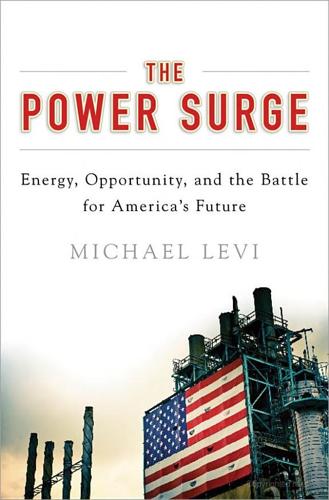
The Power Surge: Energy, Opportunity, and the Battle for America's Future
by
Michael Levi
Published 28 Apr 2013
James T. Bartis, Tom LaTourrette, Lloyd Dixon, D. J. Peterson, and Gary Cecchine, Oil Shale Development in the United States: Prospects and Policy Issues (Santa Monica, Calif.: RAND Corporation, 2005). Figures were converted from 2005 dollars to 2012 dollars by using CPI. 32. James T. Bartis, Frank Camm, and David S. Ortiz, Producing Liquid Fuels from Coal: Prospects and Policy Issues (Santa Monica, Calif.: RAND Corporation, 2008). Figures were converted from 2007 dollars to 2012 dollars by using CPI. 33. Bartis et al., Oil Shale Development in the United States. 34. Ibid. 35. Quoted in David Ignatius, “An Economic Boom Ahead?”
…
“I know that when something has a bad name,” Jonas says, “people are very hesitant to go back there, even if things have totally changed.” That change is what a few investors are betting on. Modern oil prices and new technology could eventually make oil shale economically viable. In 2005, Jim Bartis at the RAND Corporation led a team to study the ENERGY INDEPENDENCE ON THE HORIZON • 63 issue. They estimated oil shale could become profitable at an oil price between $80 and $110 a barrel, with costs eventually falling over time as the industry gained experience.31 (Three years later, Bartis brought together another group of researchers to look at the prospect of turning coal into liquid fuel; they concluded it could work with prices around sixty to seventy dollars per barrel.)32 But oil shale would take a lot of time to develop at a commercial scale; the RAND teams estimated it would be at least twenty years before production might be brought up to a million barrels a day.

Beyond: Our Future in Space
by
Chris Impey
Published 12 Apr 2015
These numbers double because the spacecraft will need fuel to decelerate when it reaches its destination. Gathering this much antimatter will be impossible for the foreseeable future. At the moment, it would cost $100 billon just to create one milligram of antimatter.11 For those wanting to try this at home—the calculation, not actually building an interstellar rocket—the RAND Corporation used to sell the nifty (and very retro) Rocket Performance Calculator, dating from 1958.12 This circular slide rule incorporates the rocket equation and it can still be found occasionally on eBay, making for a great conversation piece. Figure 50. NASA’s version of the Project Orion concept, where pulsed nuclear fusion projects the power.
…
For more recent technical design work, see “Physics of Rocket Systems with Separated Rockets and Propellant” by A. Zuppero 2010, online at http://neofuel.com/optimum/. 11. “Reaching for the Stars: Scientists Examine Using Antimatter and Fusion to Propel Future Spacecraft,” April 1999, NASA, online at http://science1.nasa.gov/science-news/science-at-nasa/1999/prop12apr99_1/. 12. The Rand Corporation, online at http://www.rand.org/pubs/research_memoranda/RM2300.html. 13. “Galactic Matter and Interstellar Flight” by R. W. Bussard 1960. Astronautica Acta, vol. 6, pp. 179–94. 14. “Roundtrip Interstellar Travel Using Laser-Pushed Lightsails” by R. L. Forward 1984. Journal of Spacecraft, vol. 21, no. 2, pp. 187–95. 15.
…
Mex., 239 Los Angeles Times, 71 Losing My Virginity (Branson), 86, 87 Louis IX, king of France, 23 Louis XVI, king of France, 68 Lovelock, James, 286 Lowell, Percival, 163–64 Lucian of Samosata, 20 Lucretius, 18–19 Luna program, 50–51 Lunar and Planetary Laboratory, 156 Lunokhod rover, 143 Lynx rocket plane, 101 M5 fiber, 161 McAuliffe, Christa, 55, 74 Mack 3 Blackbird, 69 McKay, Chris, 173 McLellan, William, 283 magnetic implants, 207 magnetic resonance imaging (MRI), 190 magnetic sails, 186, 223 magnitude of time, 248–50, 249 Manhattan Project, 36, 221 Manifest Destiny, applied to space, 146–47, 199 Manned Habitat Unit, 169 many worlds concept, 17–20, 17, 49, 267 Mao Zedong, 141 Marconi, Guglielmo, 237 Mariner 2, 51 Mariner 4, 164 Marino, Lori, 190 Marriott hotels, 145 Mars, 28, 237, 270 challenges of travel to, 166–70 distance from Earth to, 50, 148, 166 Earth compared to, 171–72, 216 establishing a colony on, 166–71, 169, 192, 195, 200–201, 203, 214, 248 evidence of water on, 124–25, 163–66, 165, 173 fly-bys of, 51, 170 imaginative perceptions of, 163–65 latency on, 178 map of, 163 obstacles to exploration of, 66–67, 148 one-way journey to, 166, 170–71, 200 as potentially habitable, 124–25, 163, 165–66, 171, 172–74, 234, 278 privately funded missions to, 170–71 probes to, 40, 51, 52, 164–65, 176, 246 projected exploration of, 94–98, 101, 104, 115, 119, 157, 161, 163–74, 178, 181, 182 property rights on, 145, 198–99 sex and reproduction on, 200 simulated journey to, 169–70 soil of, 170 staging points for, 161 terraforming of, 172–74, 182, 216, 227 tests for life on, 52 Mars Direct, 169 Mars500 mission, 169 Mars One, 170–71, 198–201 Mars Society, 166 Mars 3 lander, 51 Masai people, 120 Massachusetts General Hospital, 250 Masson-Zwaan, Tanja, 199 mathematics, 19 as universal language, 236–37 Matrix, The, 260 matter, manipulation of, 258 matter-antimatter annihilation, 220, 220, 221–22 Mavroidis, Constantinos, 182 Max-Q (maximum aerodynamic stress), 46 Maxwell, James Clerk, 183 Mayor, Michel, 126–28, 133 medicine: challenges and innovation in, 92–93, 263 cyborgs in, 205 medicine (continued) as lacking in space, 200 in life extension, 259 nanotechnology in, 225, 259 robots in, 180, 181, 182, 205 mediocrity, principle of, 261 Mendez, Abel, 278 mental models, 13–17, 18–19 Mercury: orbit of, 126, 215 property rights on, 145 as uninhabitable, 124 mercury poisoning, 118 Mercury program, 41, 42, 71, 74, 272 meta-intelligence, 94 meteorites, 152, 160, 160, 164, 195 methane, 52–53, 125, 132, 278 as biomarker, 217–18 methanogens, 217 “Method of Reaching Extreme Altitudes, A” (Goddard), 30, 31 Methuselah, 131 mice, in scientific research, 48–49, 250–51 microbes, microbial life, 97–98, 173, 174, 217, 241, 246, 286 habitable environments for, 122–25, 165–66, 186 microcephaly, 203 microgravity, 115 microsatellites, 90 Microsoft, 84, 188 microwaves: beaming of, 223–24 signals, 187 Microwave Sciences, 223 Middle East, population dispersion into, 8, 118 migration: early human population dispersion through, 5–9, 9, 15, 19 motivation for, 9–12, 11 military: covert projects of, 69–72 Eisenhower’s caveat about, 79 in Internet development, 77, 78–79 nanotechnology in, 180–81, 225 in rocket development, 30, 32–39, 55–56, 71 in space programs, 73, 76, 79, 144, 153 Milky Way galaxy, 227, 240, 253, 263, 270 ancient Greek concept of, 18 Drake equation for detectable life in, 188, 233–35 Earth-like exoplanets in, 129–33, 233, 291 formation and age of, 235 size of, 242 Millis, Marc, 290 mind control, 245 mind uploading, 259 miniaturization, see nanotechnology minimum viable population, 201, 251 mining: of asteroids, 155–56, 182, 214 of Enceladus, 227 on Moon, 214 by robots, 178, 182 Minsky, Marvin, 177, 179 MirCorp, 75 mirrors, 173 Mir Space Station, 75, 115, 167–68 Miss Baker (monkey), 47–48, 48 Mission Control, 43, 100, 158, 269 MIT, 38, 77, 90, 141, 226, 257 mitochondrial DNA, 6, 9 Mittelwerk factory, 33, 35 Mojave Desert, 71, 82, 83 population adaptation to heat in, 118–19 molecules, in nanotechnology, 151 Mongols, 23, 24 monkeys, in space research, 47–48, 48 Montgolfier brothers, 68 Moon: age of, 50 ancient Greek concept of, 18 in asteroid capture, 156 distance from Earth to, 49–50, 150, 166, 267 first animals on, 49 first man on, 71, 158 latency on, 178 lunar base proposed for, 157–63, 158, 160, 195, 214, 248 manned landings on, 44–45, 49–50, 54, 56, 63, 71, 84, 99, 104, 108, 143, 157, 158, 176, 219, 270, 272 obstacles to exploration of, 66 orbit of, 25 probes to, 40, 51, 129, 140, 143 projected missions to, 92, 143, 157–63, 166, 214, 275 property rights on, 145–47, 198–99 proposed commercial flights to, 102 in science fiction, 20, 26 soil of, 159, 160, 162 as staging point for Mars, 161 staging points for, 148 telescopic views of, 31, 49–50 as uninhabitable, 124, 166 US commitment to reach, 41–45 Moon Treaty (1979), 146 Moon Treaty, UN (1984), 279 Moore, John, 203 Moravec, 259–60 Morgan, Barbara, 74 Morrison, Philip, 187, 239 Mosaic web browser, 79 Moses, 148 motion, Newton’s laws of, 25, 67–68 multistage rockets, 29 multiverse, 252–57, 255 Musk, Elon, 94–98, 97, 100–101, 112–13, 148, 205 mutation, 6–7 cosmic rays and, 204 7R, 10–12, 11, 15 mutually assured destruction, 42 Mylar, 184, 225 N1/L3 rocket, 44, 54 nanobots, 179–82, 181, 224–28 NanoSail-D, 184, 185 nanosponges, 180 nanotechnology, 151–52, 179–82, 208, 214, 245, 280, 283 projected future of, 257–59 see also nanobots National Aeronautics and Space Administration (NASA), 83, 90, 96, 97–98, 114, 116–17, 128, 144, 153, 156, 176, 178, 182, 184–85, 185, 195, 200, 205, 206, 216, 224, 226, 271, 275, 280, 290 and Air Force, 71 artistic depiction of space colonies by, 196, 196 budget of, 39, 42, 43, 49, 54, 64, 75, 99, 104, 140, 144, 158, 166, 188, 238, 270, 272, 284 cut back of, 45, 49, 54, 188 formation of, 38–39, 145, 269 private and commercial collaboration with, 99–102, 104 revival of, 103–5 space program of, 51, 55–56, 71–76, 92, 157–58, 285–86 stagnation of, 63–67, 141, 147, 166 National Geographic Society, 7, 265 National Radio Astronomy Observatory, 187–88 National Science Foundation (NSF), 78–79 Native Americans, 118 naturalness, 256 natural selection, 6, 16, 123, 164, 251, 291 Nature, 187 Naval Research lab, 37 Navy, US: Bureau of Aeronautics, 30 in rocket development, 36–37 Nayr, Ernst, 238 Nazis, 48 Propaganda Ministry of, 32 von Braun and, 32–34, 141, 269 NBC, 75 Nedelin, Mitrofan, 43 “needle in a haystack” problem, 188–89, 242–43 “Nell” (rocket), 29 Neptune, 127, 131, 225 as uninhabitable, 125 Nergal, 163 Netscape, 80 New Mexico, 88, 88, 105 Newton, Isaac, 24–25, 25, 30, 67–68, 110, 262, 267 New York Times, 30, 94 Nicholas, Henry, 214 Niven, Larry, 198, 253 Nixon, Richard, 108, 167 Nobel Prize, 126, 180, 214 nomad planets, 128 Noonan, James, 266 nuclear fission, 220, 220, 221 nuclear fusion, 110, 161–62, 220, 221, 221, 222 nuclear reactors, 224 nuclear weapons, 36, 42, 78, 129, 146, 197–98, 222, 234–35, 244, 245, 246, 286 Nuremberg Chronicles, 17 Nyberg, Karen, 200 Obama, Barack, 104 Oberth, Hermann, 28, 31–32, 36, 268 oceans: acidification of, 195 sealed ecosystem proposed for, 197 Oculus Rift, 176 Ohio, astronauts from, 74 Okuda, Michael, 228 Olsen, Ken, 213 100 Year Starship project, 224 100 Year Starship Symposium, 229 101955 Bennu (asteroid), 156 O’Neill, Gerard, 196, 251–52 Opportunity rover, 165 optical SETI, 190, 243 Orbital Sciences Corporation, 100–101, 275 orbits: concept of, 25 geostationary, 149–50, 150 legislation on, 146 low Earth, 49, 54, 63, 70–71, 70, 74–75, 97, 100, 110, 113–14, 151, 155, 184 manned, 40–41, 141–42 staging points from, 148 orcas, 190 Orion spacecraft, 104 Orteig, Raymond, 90 Orteig Prize, 90–91 Orwell, George, 35 OSIRIS-REx, 156 Outer Space Treaty (1967), 145–47, 198–99 “Out of the Cradle, Endlessly Rocking” (Clarke), 201 oxygen, 156, 159, 161, 170, 172, 173–74, 182, 193–95, 214 Oymyakon, Siberia, population adaptation to cold in, 119–20 ozone, as biomarker, 217 Pacific Ocean, 9, 224 Pac-Man, 175 Page, Larry, 92 Paine, Thomas, 167 Pale Blue Dot (Sagan), 121 “Pale Blue Dot,” Earth as, 53, 118–22, 121, 130 Paperclip, Operation, 141 parabolic flight, 93 paradox, as term, 241 Paratrechina longicornis (crazy ant), 193 Parkinson’s disease, 202–3 particle physics, standard model of, 256 Pascal, Blaise, 120 Pauley, Phil, 196–97 PayPal, 95, 97 Pensées (Pascal), 120 People’s Daily, 162 People’s Liberation Army, 144 Pericles, 18 Pettit, Don, 100, 273 phenotype, 6 philanthropy, 95 PhoneSat, 185 photons, 183, 186 in teleportation, 229, 230, 231 photosynthesis, as biomarker, 217 pigs, 250 Pinker, Steven, 16 Pioneer probes, 50, 51–52 piracy, 24 Pitcairn Island, 202 planetary engineering, 172 Planetary Resources, 156 planetary science, 51–52, 176 Planetary Society, 184 planets: exploration of, 49–53 formation of, 156 plate techtonics, 132, 241 play, imagination in, 10, 14 pluralism, 17–20, 17, 49 plutonium, 66 poetry, space, 272–73 politics, space exploration and, 63–64, 104, 141, 214, 238 Polyakov, Valeri, 115, 167–68 population bottleneck, 201–2, 287 Poynter, Jane, 193 Princess of Mars, A (Burroughs), 164 Principia (Newton), 25 Project Orion, 221, 221 Project Ozma, 187–88, 237, 253 prokaryotes, 172 property rights, in space, 145–47, 198 Proton rockets, 65, 113 proton scoop, 222–23 Proxmire, William, 238 Puerto Rico, 239, 243 pulsar, 131 Pythagorean Theorem, 238 Qian Xuesen, 141 Qi Jiguang, 24 Qualcomm Tricorder X Prize, 92 quantum entanglement, 230–32, 230 quantum genesis, 255 quantum mechanics, 258 quantum teleportation, 230–32, 230 quantum theory, 189 qubits, 230 Queloz, Didier, 126–28, 133 R-7 rocket, 37 R-16 rocket, 43 radiation, infrared, 109, 253–54, 254 radioactivity, as energy source, 124, 181 radio waves, 66, 187, 189, 242 ramjets, 222–23 RAND Corporation, 222 Rare Earth hypothesis, 241 RCS Energia, 106 RD-180 engine, 72 Reagan, Ronald, administration of, 167, 271 reality TV, 75, 171, 214, 282 “Realm of Fear,” 229 reasoning, human capacity for, 13–17, 18–19 red dwarfs, 131 Red Mars (Stanley), 174 Red Scare, 141 Redstone rocket, 36–37, 71 reindeer, 119–20 remote sensing, 175–91, 224 RepRap Project, 227 reproduction, sexual, 6, 172 Ride, Sally, 74 “Right Stuff,” as term, 71, 114 Right Stuff, The (Wolfe), 272 Ringworld series (Niven), 253 risk: as basic to human nature, 9, 262 genetic factor in, 10–12 of living on Mars, 167–70 in pushing human limits, 120 of space tourism, 102, 105–9, 155 of space travel, 42–43, 55–56, 56, 106–9, 152–53 Robinson, Kim Stanley, 174 robonaut project, 179 robots, robotics: as aids to humans, 249, 250 in asteroid redirection, 104 commercial, 178 ethical issues of, 179 nanotechnology in, 179–82, 181 remote control of, 177–78 remote sensing through, 176 self-assembly and self-replication by, 226–28, 258, 259 in spacecraft, 50, 100, 100 space exploration by, 53–57, 66, 98, 133, 161, 177–79, 179, 208, 224–28 see also cyborgs; nanobots Rocketdyne, 112 rocket equation, 27, 53, 72–73, 110–11, 111, 148, 220, 268 rocket fuel, 110–13, 148, 156, 159, 161 comparison of efficiency of, 219–24 Rocket Performance Calculator, 222 rockets: alternatives to, 148–53 “bible” of, 267 challenges in launching of, 43–44, 46–49, 106, 107, 111–12, 148 comparison of US and Soviet, 44 cost of, 112–13, 113 developing technology of, 21–39, 43, 101, 103, 112–13, 183, 262 fuel for, 110–13, 148, 156, 159, 161, 220–21 launched from planes, 84 liquid-fueled, 28–29, 29 physics and function of, 110–14 proposed energy technologies for, 220–24 reusable, 101, 103, 111, 112, 113 solar sails compared to, 183 as term, 23 visionaries in development of, 26–30, 94 in warfare, 22–24, 30, 32–34 see also specific rockets “Rockets to the Planets in Space, The” (Oberth), 28 Rogers Commission, 271 Rohrabacher, Dana, 284 Rome, ancient, 18, 67, 163 Rovekamp, Roger, 207 rovers, 66–67, 92, 125, 140, 143, 158, 165, 167 nanotechnology in, 181–82 remote sensing through, 176 Rozier, Jean-François de, 68 RP-1 kerosine, 110 RS-25 rocket, 112 Russia, 23, 26–27, 149, 178 space program of, 37, 65–66, 72, 75, 84, 91, 104, 106, 107–8, 113, 114, 140, 143, 168, 184, 195, 200, 271 space tourism by, 75, 102 tensions between US and, 72 see also Soviet Union Russian Revolution, 27, 47 Russian Space Agency, 102 Rutan, Burt, 72, 82–86, 85, 88, 88, 89, 91, 97–98, 105–6, 214 Rutan, Dick, 83–84 Rutan Aircraft Factory, 83 Saberhagen, Fred, 177, 259 Sagan, Carl, 53, 121–22, 121, 176–77, 184, 198, 234–35, 238, 240 Sahakian, Barbara, 98 Sahara Desert, 238 sails: solar, 183–86, 185 wind-driven, 67–68, 183, 262 Salyut space station, 54, 108 satellites: artificial Earth, 36–39, 37, 40, 65, 71, 106 commercial, 96, 105 communications, 101, 142, 153 in energy capture, 253 geostationary, 149 GPS, 144 launching of, 154, 154 miniature, 90, 184–85 Saturn: moon of, 125, 227 probes to, 52–53 as uninhabitable, 125 Saturn V rocket, 43, 44, 46, 54, 83, 104, 111, 113, 113, 166 Scaled Composites, 83, 89 science fiction, 192, 196, 222, 223, 239, 250, 253 aliens in, 186–87 in film, 28, 204 Mars in, 164, 174 roots of, 20 technologies of, 228–32, 259 see also specific authors and works scientific method, 213 Search for Extraterrestrial Intelligence (SETI), 187–90, 234, 239, 254 evolution and technology of, 237–39, 242–43, 242 lack of signals detected by, 236–37, 240–44 new paradigms for, 258 “Searching for Interstellar Communications” (Cocconi and Morrison), 187 sea travel: early human migration through, 8, 9 exploration by, 109, 262 propulsion in, 67–68 self-replication, 226–28, 258, 259 Senate, US, Armed Services Preparedness Committee of, 39 SETI Institute, 188 78–6 (pig), 250 sex: promiscuous, 12 in reproduction, 6, 172 in space, 200, 214 Shackleton Energy Company, 161 Shane, Scott, 98 Shatner, William, 88–89 Shelley, Mary, 206 Shenlong (“Divine Dragon”), 145 Shenzhou 10, 142–43 Shepard, Alan, 41, 84 Shostak, Seth, 243 Siberia, 65, 119–20, 238 population dispersion into, 8, 118, 218 Sidereal Messenger, The (Galileo), 270 Siemienowicz, Kazimierz, 267 Simonyi, Charles, 75 Sims, 175 simulation: infinite regression in, 261 living in, 257–62 simulation hypothesis, 261 Sinatra, Frank, 45 singularity, 207 in origin of cosmos, 255 and simulation, 257–62 technological, 258–59 Singularity University, 94, 259 Skylab space station, 54, 116 Skype video, 176 smart motes, 181, 225 smartphones, 92, 185 Smithsonian Institution, 30, 81 Smithsonian National Air and Space Museum, 85, 91, 271 Snow Crash (Stephenson), 103 Snowden, Edward, 178 social media, 195 Sojourner rover, 165 SolarCity, 96–97 solar flares, 167 solar power, 96, 181, 183–86 solar sails, solar sailing, 183–86, 185, 223, 225, 227 Solar System: discovery of first planet beyond, 126–27 edge of, 50, 53, 121 formation of, 156 habitability potential in, 122, 124–26 latency variations in, 178 probes into, 51–52, 66, 177, 185–86, 208, 270 projected travel within, 248–49, 263 property rights in, 145–47, 198 worlds beyond, 126–29, 156, 208, 215, 250, 263 solar wind, 162, 223 sound barrier, breaking of, 69, 71 South America, 11, 202, 218 Soviet Union, 30, 34, 37, 141 fall of, 47, 65, 75, 197, 271–72 rocket development in, 35–39 space program failures and losses of, 43, 47, 50–51, 54, 269 space program of, 37–39, 40–43, 141, 149, 237, 271 Soyuz spacecraft, 43, 55, 75, 84, 91, 102, 106, 113, 143 crash of, 107–8 space: civilians in, 55, 74 civilian vs. military control of, 37–39, 69–71, 79, 153 commercialization of, 55, 63, 73–76, 79–80, 88–89, 92, 97, 99–109, 100, 110, 147, 153–56, 154, 199, 214, 249, 275 debris in, 144, 152 first American in, 41 first man in, 40–41, 41 first women in, 40, 74 as infinite, 18, 19, 22 as inhospitable to human beings, 53–54, 114–17, 121 legislation on, 39, 78, 90, 144, 145–47, 198–200 living in, 192–208 “living off the land” in, 166, 200 peaceful exploration of, 39 potential for human habitabilty in, 123 prototype for sealed ecosystem in, 192–97 Space Act (1958), 39, 90 Space Adventures, 102, 275 space colonization: challenges of, 197–201 cyborgs in, 204–8 evolutionary diversion in, 201–4 legal issues in, 198–200 of Mars, 166–71, 169, 192, 195, 203 off-Earth human beings in, 215, 250–51 prototype experiments for, 192–97 space elevators, 27, 148–53, 150, 160–61, 185, 280 “Space Exploration via Telepresence,” 178 Spaceflight Society, 28 space hotels, 102–3 Space Launch System (SLS), 104 space mining, 155–56, 161–62 “Space Oddity,” 142 spaceplanes, 71–72, 85, 144 Spaceport America, 1–6, 105 Space Race, 35–39, 37, 40–43, 50, 55, 139 SpaceShipOne, 72, 85, 85, 88–89, 88, 91 SpaceShipTwo, 88, 101, 105 Space Shuttle, 45, 46, 49, 64, 72, 84, 85, 111–13, 112, 159, 167, 194, 219–20, 222, 275 disasters of, 55–56, 56, 74–75, 107, 111–13 final flight of, 271 limitations of, 55–56, 64–65 as reusable vehicle, 54–55 space sickness, 114 spacesuits, 89, 182, 195–96 space-time, 255, 255 manipulation of, 258 space tourism, 63, 73, 75–76, 79–80, 88–89, 91, 101–3, 154, 170, 214 celebrities in, 88, 101–2 revenue from, 154–55, 155 risks of, 102, 105–9, 155 rules for, 105 space travel: beyond Solar System, see interstellar travel bureaucracy of, 105–10, 271 cost of, 39, 42, 45, 49, 54, 55, 66, 75, 81–82, 91, 112–14, 113, 139–49, 153, 155–56, 158–59, 161, 166, 179, 183, 198, 214, 217, 222, 224–26, 252, 270, 275, 284 early attempts at, 21–22, 22 effect of rocket equation in, see rocket equation entrepreneurs of, 81–98 erroneous predictions about, 214 failures and disasters in, 21–22, 22, 38, 43, 47, 50–51, 54–56, 56, 63–64, 68, 72, 74–75, 101, 102, 107, 142, 184, 269, 271, 275 fatality rate of, 107–9 fictional vignettes of, 1–4, 59–62, 135–38, 209–12 Internet compared to, 76–80, 77, 80 life extension for, 250–51 lifetimes lived in, 251 living conditions in, 114–17 new business model for, 99–105 Newton’s theories as basis of, 25 obstacles to, 21, 63, 66–67, 105–109 space travel (continued) as part of simulation, 261–62 public engagement in, 45, 73, 85, 93, 162, 177, 217 remote sensing vs., 175–91 risks of, 43–44, 83, 89, 93, 105–9 speculation on future of, 76–80, 133, 213–32, 248–52 suborbital, 84 telescopic observation vs., 49–50 visionaries of, 26–39, 80, 94, 109 SpaceX, 96, 97, 100–103, 113–14, 275 SpaceX Dragon spacecraft, 96, 100, 100, 102, 170 special theory of relativity, 228, 231 specific impulse, 220 spectroscopy, 127, 165, 176 spectrum analyzer, 237 Speer, Albert, 34 Spielberg, Steven, 238 Spirit of St.
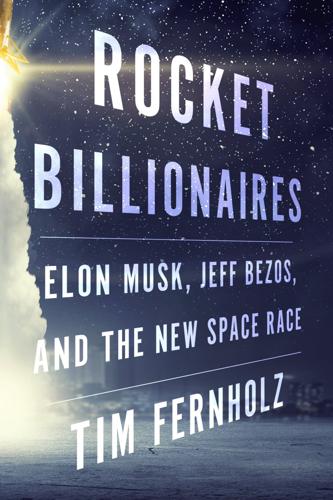
Rocket Billionaires: Elon Musk, Jeff Bezos, and the New Space Race
by
Tim Fernholz
Published 20 Mar 2018
Indeed, it had largely written off SpaceX, as the company was popularly known, and anyone else trying to build new rockets in the United States. “Successful new entry into the relevant markets is unlikely to occur in the foreseeable future,” the FTC concluded. A government-mandated study of the launch market published by the RAND Corporation a year later was similarly skeptical: “The evaluation of Falcon 9 at this time presents an unclear picture . . . The lack of launch experience raises questions about the validity of the available launch prices . . . [and] makes an objective evaluation of the actual costs of this new vehicle extremely difficult.”
…
Decker, General Accounting Office, letter to Senate Subcommittee on Strategic Forces (“Defense Space Activities: Continuation of Evolved Expendable Launch Vehicle Program’s Progress to Date Subject to Some Uncertainty”), GAO-04-778R, June 4, 2004. “statements or projections”: Decker, “Defense Space Activities.” “or face extinction”: Decker, “Defense Space Activities.” “supplier readiness, and transportation”: Forrest McCartney et al., National Security Space Launch Report (Santa Monica, CA: Rand Corporation, 2006), 30. whole fracas to rest: David Bowermaster, “Boeing Probe Intensifies over Secret Lockheed Papers,” Seattle Times, January 9, 2005. “support the loss of competition”: Kenneth Krieg, Letter to Federal Trade Commission Chairman Deborah Majoras, August 15, 2006. surpass $1 billion in 2018: Department of Defense Fiscal Year (FY) 2018 Budget Estimates, Space Procurement, Air Force, May 2017
…
See also McDonnell Douglas NASA space taxi program bids, 112–13 reusable (X-15), 16, 215–16 SpaceX challenges, 78, 107 Orbital Sciences Corporation, 59, 206–7, 228 Antares, 121, 206–7, 228 Antares explosion, 206–8 Cygnus, 121, 206, 208 NASA space taxi program, 121, 137 Orlando Sentinel, 142 P; PayPal, 2, 18, 45, 66 Pegasus, 235 Peregrine vehicle, 242 Pettit, Donald, 149, 157–58, 164 PICA-X, 156 Planetary Resources, 56 Planetary Society, 124 Powell, Colin, 75 Pratt & Whitney Rocketdyne, 140 Putin, Vladimir, 10, 181, 183, 185 Q; Qualcomm, 51, 234 R; Ramon, Ilan, 73 RAND Corporation, 38 Raptor engine, 243–44 Rasky, Dan, 156 RD-180 (Russian engine), 59, 182, 190 injunction on imports, 187–88 McCain bill banning imports, 190 Reaction Research Society, 51, 63 Reagan, Ronald, 19, 53 Red Mars (Robinson), 46 Ressi, Adeo, 59 reusable rockets, 195–96, 241, 250. See also Falcon 9; New Shepard Richards, Bob, 242 Robert J.

The Road to Conscious Machines
by
Michael Wooldridge
Published 2 Nov 2018
Happily, he recovered sufficiently that he was able to receive his Nobel Prize in 1994; his life was made the subject of the award-winning book and film A Beautiful Mind.3 The Dartmouth delegate list is also intriguing for another reason. Apart from the obvious presence of academics, the school hosted representatives from industry, government and the military (and even the RAND Corporation – the California-based thinktank made notorious in the 1960s for dispassionately debating how to ‘win’ a nuclear war). Only a decade earlier, the Manhattan Project had combined the capabilities of US academia, industry, government and military to develop the first atomic bomb – an unequivocal demonstration of US scientific and technological power.
…
AI as Alchemy By the early 1970s, the wider scientific community was beginning to be more and more frustrated by the very visible lack of progress made on core AI problems, and by the continuing extravagant claims of some researchers. By the mid-1970s, the criticisms reached fever pitch. Of all the critics (and there were many), the most outspoken, and most publicly vitriolic was surely the American philosopher Hubert Dreyfus. Dreyfus was commissioned by the RAND Corporation in the mid-1960s to write a report on the state of progress in AI. The title he chose for his report, Alchemy and AI, made very clear his disdain for the field and those who worked in it. Publicly equating the work of a serious scientist to alchemy is extraordinarily insulting. Re-reading Alchemy and AI now, I have to say I’ve never seen any other scientific report like it: the contempt is palpable and still rather shocking, more than half a century later.
…
A A* 77 À la recherche du temps perdu (Proust) 205–8 accountability 257 Advanced Research Projects Agency (ARPA) 87–8 adversarial machine learning 190 AF (Artificial Flight) parable 127–9, 243 agent-based AI 136–49 agent-based interfaces 147, 149 ‘Agents That Reduce Work and Information Overload’ (Maes) 147–8 AGI (Artificial General Intelligence) 41 AI – difficulty of 24–8 – ethical 246–62, 284, 285 – future of 7–8 – General 42, 53, 116, 119–20 – Golden Age of 47–88 – history of 5–7 – meaning of 2–4 – narrow 42 – origin of name 51–2 – strong 36–8, 41, 309–14 – symbolic 42–3, 44 – varieties of 36–8 – weak 36–8 AI winter 87–8 AI-complete problems 84 ‘Alchemy and AI’ (Dreyfus) 85 AlexNet 187 algorithmic bias 287–9, 292–3 alienation 274–7 allocative harm 287–8 AlphaFold 214 AlphaGo 196–9 AlphaGo Zero 199 AlphaZero 199–200 Alvey programme 100 Amazon 275–6 Apple Watch 218 Argo AI 232 arithmetic 24–6 Arkin, Ron 284 ARPA (Advanced Research Projects Agency) 87–8 Artificial Flight (AF) parable 127–9, 243 Artificial General Intelligence (AGI) 41 artificial intelligence see AI artificial languages 56 Asilomar principles 254–6 Asimov, Isaac 244–6 Atari 2600 games console 192–6, 327–8 augmented reality 296–7 automated diagnosis 220–1 automated translation 204–8 automation 265, 267–72 autonomous drones 282–4 Autonomous Vehicle Disengagement Reports 231 autonomous vehicles see driverless cars autonomous weapons 281–7 autonomy levels 227–8 Autopilot 228–9 B backprop/backpropagation 182–3 backward chaining 94 Bayes nets 158 Bayes’ Theorem 155–8, 365–7 Bayesian networks 158 behavioural AI 132–7 beliefs 108–10 bias 172 black holes 213–14 Blade Runner 38 Blocks World 57–63, 126–7 blood diseases 94–8 board games 26, 75–6 Boole, George 107 brains 43, 306, 330–1 see also electronic brains branching factors 73 Breakout (video game) 193–5 Brooks, Rodney 125–9, 132, 134, 243 bugs 258 C Campaign to Stop Killer Robots 286 CaptionBot 201–4 Cardiogram 215 cars 27–8, 155, 223–35 certainty factors 97 ceteris paribus preferences 262 chain reactions 242–3 chatbots 36 checkers 75–7 chess 163–4, 199 Chinese room 311–14 choice under uncertainty 152–3 combinatorial explosion 74, 80–1 common values and norms 260 common-sense reasoning 121–3 see also reasoning COMPAS 280 complexity barrier 77–85 comprehension 38–41 computational complexity 77–85 computational effort 129 computers – decision making 23–4 – early developments 20 – as electronic brains 20–4 – intelligence 21–2 – programming 21–2 – reliability 23 – speed of 23 – tasks for 24–8 – unsolved problems 28 ‘Computing Machinery and Intelligence’ (Turing) 32 confirmation bias 295 conscious machines 327–30 consciousness 305–10, 314–17, 331–4 consensus reality 296–8 consequentialist theories 249 contradictions 122–3 conventional warfare 286 credit assignment problem 173, 196 Criado Perez, Caroline 291–2 crime 277–81 Cruise Automation 232 curse of dimensionality 172 cutlery 261 Cybernetics (Wiener) 29 Cyc 114–21, 208 D DARPA (Defense Advanced Research Projects Agency) 87–8, 225–6 Dartmouth summer school 1955 50–2 decidable problems 78–9 decision problems 15–19 deduction 106 deep learning 168, 184–90, 208 DeepBlue 163–4 DeepFakes 297–8 DeepMind 167–8, 190–200, 220–1, 327–8 Defense Advanced Research Projects Agency (DARPA) 87–8, 225–6 dementia 219 DENDRAL 98 Dennett, Daniel 319–25 depth-first search 74–5 design stance 320–1 desktop computers 145 diagnosis 220–1 disengagements 231 diversity 290–3 ‘divide and conquer’ assumption 53–6, 128 Do-Much-More 35–6 dot-com bubble 148–9 Dreyfus, Hubert 85–6, 311 driverless cars 27–8, 155, 223–35 drones 282–4 Dunbar, Robin 317–19 Dunbar’s number 318 E ECAI (European Conference on AI) 209–10 electronic brains 20–4 see also computers ELIZA 32–4, 36, 63 employment 264–77 ENIAC 20 Entscheidungsproblem 15–19 epiphenomenalism 316 error correction procedures 180 ethical AI 246–62, 284, 285 European Conference on AI (ECAI) 209–10 evolutionary development 331–3 evolutionary theory 316 exclusive OR (XOR) 180 expected utility 153 expert systems 89–94, 123 see also Cyc; DENDRAL; MYCIN; R1/XCON eye scans 220–1 F Facebook 237 facial recognition 27 fake AI 298–301 fake news 293–8 fake pictures of people 214 Fantasia 261 feature extraction 171–2 feedback 172–3 Ferranti Mark 1 20 Fifth Generation Computer Systems Project 113–14 first-order logic 107 Ford 232 forward chaining 94 Frey, Carl 268–70 ‘The Future of Employment’ (Frey & Osborne) 268–70 G game theory 161–2 game-playing 26 Gangs Matrix 280 gender stereotypes 292–3 General AI 41, 53, 116, 119–20 General Motors 232 Genghis robot 134–6 gig economy 275 globalization 267 Go 73–4, 196–9 Golden Age of AI 47–88 Google 167, 231, 256–7 Google Glass 296–7 Google Translate 205–8, 292–3 GPUs (Graphics Processing Units) 187–8 gradient descent 183 Grand Challenges 2004/5 225–6 graphical user interfaces (GUI) 144–5 Graphics Processing Units (GPUs) 187–8 GUI (graphical user interfaces) 144–5 H hard problem of consciousness 314–17 hard problems 84, 86–7 Harm Assessment Risk Tool (HART) 277–80 Hawking, Stephen 238 healthcare 215–23 Herschel, John 304–6 Herzberg, Elaine 230 heuristic search 75–7, 164 heuristics 91 higher-order intentional reasoning 323–4, 328 high-level programming languages 144 Hilbert, David 15–16 Hinton, Geoff 185–6, 221 HOMER 141–3, 146 homunculus problem 315 human brain 43, 306, 330–1 human intuition 311 human judgement 222 human rights 277–81 human-level intelligence 28–36, 241–3 ‘humans are special’ argument 310–11 I image classification 186–7 image-captioning 200–4 ImageNet 186–7 Imitation Game 30 In Search of Lost Time (Proust) 205–8 incentives 261 indistinguishability 30–1, 37, 38 Industrial Revolutions 265–7 inference engines 92–4 insurance 219–20 intelligence 21–2, 127–8, 200 – human-level 28–36, 241–3 ‘Intelligence Without Representation’ (Brooks) 129 Intelligent Knowledge-Based Systems 100 intentional reasoning 323–4, 328 intentional stance 321–7 intentional systems 321–2 internal mental phenomena 306–7 Internet chatbots 36 intuition 311 inverse reinforcement learning 262 Invisible Women (Criado Perez) 291–2 J Japan 113–14 judgement 222 K Kasparov, Garry 163 knowledge bases 92–4 knowledge elicitation problem 123 knowledge graph 120–1 Knowledge Navigator 146–7 knowledge representation 91, 104, 129–30, 208 knowledge-based AI 89–123, 208 Kurzweil, Ray 239–40 L Lee Sedol 197–8 leisure 272 Lenat, Doug 114–21 lethal autonomous weapons 281–7 Lighthill Report 87–8 LISP 49, 99 Loebner Prize Competition 34–6 logic 104–7, 121–2 logic programming 111–14 logic-based AI 107–11, 130–2 M Mac computers 144–6 McCarthy, John 49–52, 107–8, 326–7 machine learning (ML) 27, 54–5, 168–74, 209–10, 287–9 machines with mental states 326–7 Macintosh computers 144–6 magnetic resonance imaging (MRI) 306 male-orientation 290–3 Manchester Baby computer 20, 24–6, 143–4 Manhattan Project 51 Marx, Karl 274–6 maximizing expected utility 154 Mercedes 231 Mickey Mouse 261 microprocessors 267–8, 271–2 military drones 282–4 mind modelling 42 mind-body problem 314–17 see also consciousness minimax search 76 mining industry 234 Minsky, Marvin 34, 52, 180 ML (machine learning) 27, 54–5, 168–74, 209–10, 287–9 Montezuma’s Revenge (video game) 195–6 Moore’s law 240 Moorfields Eye Hospital 220–1 moral agency 257–8 Moral Machines 251–3 MRI (magnetic resonance imaging) 306 multi-agent systems 160–2 multi-layer perceptrons 177, 180, 182 Musk, Elon 238 MYCIN 94–8, 217 N Nagel, Thomas 307–10 narrow AI 42 Nash, John Forbes Jr 50–1, 161 Nash equilibrium 161–2 natural languages 56 negative feedback 173 neural nets/neural networks 44, 168, 173–90, 369–72 neurons 174 Newell, Alan 52–3 norms 260 NP-complete problems 81–5, 164–5 nuclear energy 242–3 nuclear fusion 305 O ontological engineering 117 Osborne, Michael 268–70 P P vs NP problem 83 paperclips 261 Papert, Seymour 180 Parallel Distributed Processing (PDP) 182–4 Pepper 299 perception 54 perceptron models 174–81, 183 Perceptrons (Minsky & Papert) 180–1, 210 personal healthcare management 217–20 perverse instantiation 260–1 Phaedrus 315 physical stance 319–20 Plato 315 police 277–80 Pratt, Vaughan 117–19 preference relations 151 preferences 150–2, 154 privacy 219 problem solving and planning 55–6, 66–77, 128 programming 21–2 programming languages 144 PROLOG 112–14, 363–4 PROMETHEUS 224–5 protein folding 214 Proust, Marcel 205–8 Q qualia 306–7 QuickSort 26 R R1/XCON 98–9 radiology 215, 221 railway networks 259 RAND Corporation 51 rational decision making 150–5 reasoning 55–6, 121–3, 128–30, 137, 315–16, 323–4, 328 regulation of AI 243 reinforcement learning 172–3, 193, 195, 262 representation harm 288 responsibility 257–8 rewards 172–3, 196 robots – as autonomous weapons 284–5 – Baye’s theorem 157 – beliefs 108–10 – fake 299–300 – indistinguishability 38 – intentional stance 326–7 – SHAKEY 63–6 – Sophia 299–300 – Three Laws of Robotics 244–6 – trivial tasks 61 – vacuum cleaning 132–6 Rosenblatt, Frank 174–81 rules 91–2, 104, 359–62 Russia 261 Rutherford, Ernest (1st Baron Rutherford of Nelson) 242 S Sally-Anne tests 328–9, 330 Samuel, Arthur 75–7 SAT solvers 164–5 Saudi Arabia 299–300 scripts 100–2 search 26, 68–77, 164, 199 search trees 70–1 Searle, John 311–14 self-awareness 41, 305 see also consciousness semantic nets 102 sensors 54 SHAKEY the robot 63–6 SHRDLU 56–63 Simon, Herb 52–3, 86 the Singularity 239–43 The Singularity is Near (Kurzweil) 239 Siri 149, 298 Smith, Matt 201–4 smoking 173 social brain 317–19 see also brains social media 293–6 social reasoning 323, 324–5 social welfare 249 software agents 143–9 software bugs 258 Sophia 299–300 sorting 26 spoken word translation 27 STANLEY 226 STRIPS 65 strong AI 36–8, 41, 309–14 subsumption architecture 132–6 subsumption hierarchy 134 sun 304 supervised learning 169 syllogisms 105, 106 symbolic AI 42–3, 44, 181 synapses 174 Szilard, Leo 242 T tablet computers 146 team-building problem 78–81, 83 Terminator narrative of AI 237–9 Tesla 228–9 text recognition 169–71 Theory of Mind (ToM) 330 Three Laws of Robotics 244–6 TIMIT 292 ToM (Theory of Mind) 330 ToMnet 330 TouringMachines 139–41 Towers of Hanoi 67–72 training data 169–72, 288–9, 292 translation 204–8 transparency 258 travelling salesman problem 82–3 Trolley Problem 246–53 Trump, Donald 294 Turing, Alan 14–15, 17–19, 20, 24–6, 77–8 Turing Machines 18–19, 21 Turing test 29–38 U Uber 168, 230 uncertainty 97–8, 155–8 undecidable problems 19, 78 understanding 201–4, 312–14 unemployment 264–77 unintended consequences 263 universal basic income 272–3 Universal Turing Machines 18, 19 Upanishads 315 Urban Challenge 2007 226–7 utilitarianism 249 utilities 151–4 utopians 271 V vacuum cleaning robots 132–6 values and norms 260 video games 192–6, 327–8 virtue ethics 250 Von Neumann and Morgenstern model 150–5 Von Neumann architecture 20 W warfare 285–6 WARPLAN 113 Waymo 231, 232–3 weak AI 36–8 weapons 281–7 wearable technology 217–20 web search 148–9 Weizenbaum, Joseph 32–4 Winograd schemas 39–40 working memory 92 X XOR (exclusive OR) 180 Z Z3 computer 19–20 PELICAN BOOKS Economics: The User’s Guide Ha-Joon Chang Human Evolution Robin Dunbar Revolutionary Russia: 1891–1991 Orlando Figes The Domesticated Brain Bruce Hood Greek and Roman Political Ideas Melissa Lane Classical Literature Richard Jenkyns Who Governs Britain?
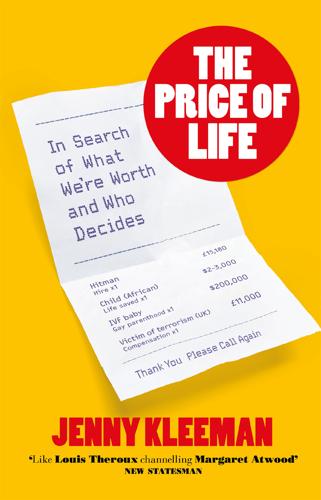
The Price of Life: In Search of What We're Worth and Who Decides
by
Jenny Kleeman
Published 13 Mar 2024
And while the UK has been a bit of a pioneer at this, it’s certainly not a British thing: around the world, public servants, charities and campaigners all do it as a way of getting the right people to pay attention to a given cause. Estimates of the cost of pretty much any violent crime, anywhere in the world, can be found with only a few mouse clicks. In an effort to encourage investment in policing, the RAND Corporation has calculated that the average murder costs America $8,649,216. The European Institute for Gender Equality concluded that gender-based violence cost EU member states €366 billion a year in 2019. The Institute for Economics and Peace concluded that, in 2021, homicide cost the Mexican public purse US$105.5 billion, with violent crime in general costing US$243 billion, equivalent to 20.8 percent of Mexico’s GDP.
…
Home Office Research Study 217 Brand, Sam and Price, Richard, Home Office Research Study 217, ‘The Economic and Social Costs of Crime’, Home Office (December 2000). https://www.researchgate.net/publication/247849478_The_Economic_and_Social_Costs_of_Crime_-_Home_Office_Research_Study_217 costs America $8,649,216 Heaton, Paul, ‘Hidden in Plain Sight: What Cost-of-Crime Research Can Tell Us About Investing in Police’, RAND Corporation (2010). https://www.rand.org/pubs/occasional_papers/OP279.html The European Institute for Gender Equality ‘Gender-based violence costs the EU €366 billion a year’, EIGE (7 July 2021). https://eige.europa.eu/news/gender-based-violence-costs-eu-eu366-billion-year 20.8 percent of Mexico’s GDP ‘Mexico Peace Index 2022: Identifying and Measuring the Factors that Drive Peace’, Institute for Economics and Peace (2022). https://www.economicsandpeace.org/wp-content/uploads/2022/05/ENG-MPI-2022-web.pdf what was said in court De La Mare, Tess, ‘Man who stabbed teenager to death after he gatecrashed house party faces life in jail’, Mirror (25 April 2016). https://www.mirror.co.uk/news/uk-news/man-who-stabbed-teenager-death-7831123 At 9.33 p.m.
…
See murder homosexuality ref1, ref2, ref3, ref4 Hosomi, Major Akinori ref1 Human Tissue Authority ref1 human trafficking ref1, ref2, ref3, ref4, ref5, ref6, ref7, ref8, ref9, ref10 Idris, Aliyu Na ref1, ref2 Immigration and Border Control, UK ref1 In the Footsteps of Killers (Channel 4 true crime series) ref1 Innes, Bob (Guido Fanelli) ref1, ref2, ref3 Institute for Clinical and Economic Review, US ref1, ref2 Institute for Economics and Peace ref1 insurance ref1, ref2, ref3, ref4 body parts ref1 health ref1, ref2, ref3 IVF ref1, ref2, ref3 kidnap and ransom (K&R) ref1, ref2, ref3, ref4, ref5 life see life insurance origins of ref1 QALY and ref1 terrorism and ref1, ref2, ref3 integrated care boards (ICBs) ref1 International Labour Organization (ILO) ref1, ref2 Interpol ref1 IRA ref1 Iran ref1, ref2, ref3, ref4 Iraq ref1, ref2, ref3, ref4, ref5 ISIS ref1, ref2, ref3 Israel ref1, ref2, ref3, ref4 ITN ref1 IVF (in-vitro fertilisation) ref1, ref2, ref3, ref4, ref5, ref6, ref7, ref8, ref9, ref10 Jalamasco, Mimi ref1 job creation ref1, ref2, ref3 Johnson, Boris ref1, ref2 Jones, Holly ref1 JP-5/JP-8 military jet fuel ref1 JustGiving ref1, ref2, ref3 Kadiye, Dahir Abdullahi ref1 Karonovski, Holden ref1 Kensal Green Boys ref1 kidnap and ransom (K&R) insurance ref1, ref2, ref3, ref4 kidneys ref1, ref2, ref3 Klis, Alex ref1 Klis, Angelika ref1 Klis, Marcin ref1 Klis, Patrycia ref1 Klum, Heidi ref1, ref2 Knight, Helen ref1, ref2, ref3 Koch, Shirley ref1 Konig, Tom ref1, ref2 Krummaker, Dr Simone ref1 LaMarca, Joe ref1, ref2, ref3, ref4 Larner, Roy (‘Lion of London Bridge’) ref1, ref2, ref3, ref4 Lause, Tara ref1, ref2, ref3 lawsuits biological parenthood and ref1, ref2 terrorism and ref1 lesbian parenthood ref1, ref2, ref3 Levine, Mike ref1 Libmeldy ref1, ref2 life insurance ref1, ref2, ref3 average value of an insured life ref1, ref2, ref3 fake death, type of person prepared to ref1 faking death overseas ref1 financial checks and ref1, ref2 human life valuation process ref1 John Darwin, aka Canoe Man and ref1 investigating claims ref1 murder for ref1 risk of death calculated ref1 subsidizing criminal activity with premiums ref1 suicides as accidental deaths ref1 UK, average claim paid in ref1 Vorotinov family claim ref1 Lloyds of London ref1, ref2 Lockheed Martin ref1, ref1, ref2 Aeronautics facility, Fort Worth (Air Force Plant Number Four) ref1, ref1 F-16 ref1 F-35 Lightning II and see F-35 Lightning II Skunk Works ref1 London Air Ambulance service ref1, ref2 London Ambulance Service ref1 London Anatomy Office ref1 London Bridge terror attack (2017) ref1, ref1, ref1, ref2 London Women’s Clinic ref1, ref2 Lopez, Jennifer (J-Lo) ref1 Luong, Nguyen Dinh ref1 Lynn Rival ref1, ref2 MacAskill, Will ref1, ref2, ref3, ref4, ref5 Mafia ref1, ref2, ref3 Maggipinto, Nicholas ref1, ref2 Maguire, Patrick ref1 Manchester Arena terror attack (2017) ref1, ref2, ref3, ref4 Mandalay Bay hotel, Las Vegas ref1 Mankey, Matthew ref1 Marine Corps, US ref1, ref2, ref3, ref4 Marmot, Sir Michael ref1, ref2 Marques, Wayne ref1, ref2 McCormick, Kevin ref1 McErlean, Anthony ref1 McMullan, James ref1, ref2 Medicare programme, US ref1 Medicines and Healthcare products Regulatory Agency (MHRA) ref1 Melbourne, Covid-19 lockdown in ref1 Men Having Babies ref1, ref2, ref3, ref4, ref5 metachromatic leukodystrophy ref1, ref2 Metropolitan Police ref1, ref2, ref3 Mexico homicide cost in ref1 kidnapping in ref1, ref2 Mexico Peace Index ref1 MGM Resorts International ref1 Ministry of Defence ref1, ref2 Ministry of Justice ref1, ref2 Mitchell Institute ref1, ref2 Mondelez ref1, ref2 Morariu, Florin ref1 Mordel, Aleksander ref1, ref2 Mordel, Edyta ref1, ref2 moremarrowdonors.org ref1 Moskowitz, Dustin ref1, ref2, ref3, ref4 Muir-Wood, Robert ref1, ref2, ref3 murder, average ref1 America, average murder costs in ref1 Category A murders ref1 Category B murders ref1 Category C murders ref1 cost in England and Wales ref1, ref2, ref3, ref4 criminal justice system, costs incurred by average murder to ref1 Mexico, average murder costs in ref1 police, cost to ref1 prison, price of life in ref1 race and cost of ref1 Shaquan Sammy-Plummer and see Sammy-Plummer, Shaquan UK Home Office calculate cost of ref1, ref2, ref3, ref4, ref5, ref6, ref7, ref8 victim support/grief counselling and ref1, ref2 Mutual of Omaha ref1, ref2, ref3, ref4, ref5 My, Pham Thi Tra ref1, ref2 nail bars ref1, ref1, ref2 Narasimhan, Vas ref1 National Domestic Abuse Helpline ref1 National Funeral Directors Association ref1, ref2 National Health Service (NHS) ref1, ref2, ref3, ref4, ref5 Covid-19 and ref1, ref2, ref3, ref4 gene therapies and ref1, ref2, ref3, ref4, ref5 see also individual drug name IVF treatment and ref1, ref2, ref3, ref4, ref5 Medicines and Healthcare Regulatory Agency (MHRA) ref1 National Institute for Health and Clinical Excellence (NICE) ref1, ref2, ref3, ref4, ref5, ref6, ref7, ref8, ref9, ref10, ref11 see also National Institute for Health and Clinical Excellence (NICE) NHS England ref1, ref2, ref3, ref4, ref5 QALY (quality-adjusted life year) and ref1, ref2, ref3, ref4 Spinal Muscular Atrophy (SMA) and ref1, ref2, ref3, ref4 National Institute for Health and Clinical Excellence (NICE) ref1, ref2, ref3, ref4, ref5, ref6, ref7, ref8, ref9, ref10, ref11 appraisal process ref1 origin of ref1 QALY (quality-adjusted life year) and ref1, ref2, ref3, ref4 Spinal Muscular Atrophy (SMA) and ref1, ref2, ref3, ref4 Spinraza and ref1, ref2, ref3, ref4, ref5, ref6, ref7, ref8 Zolgensma and ref1, ref2, ref3, ref4, ref5, ref6 National Offender Management Service ref1 National Referral Mechanism ref1, ref2, ref3, ref4 NATO ref1 naturally replenishable tissue, trade in ref1 New Labour ref1 New York City ref1, ref1, ref2, ref3, ref4, ref5, ref6, ref7 9/11 ref1 Norkin, Major General Amikam ref1 Northern Ireland ref1 Nottingham Repository ref1 Novartis ref1, ref2, ref3 Nzeh, Christopher ‘CK’ ref1, ref2 Obama, Barack ref1, ref2 Office for National Statistics ref1, ref2, ref3, ref4, ref5 Onasemnogene abeparvovec ref1 OnlineHairAffair ref1 onlythebreast.com ref1, ref2 Open Philanthropy Project ref1, ref2, ref3 Operation Inherent Resolve (OIR) coalition ref1, ref2 Ord, Toby ref1 organ trade ref1, ref2, ref3, ref4 Orlando nightclub shooting (2016) ref1 Orsini, Giancarlo ref1, ref2 Oxford University ref1, ref2 Nuffield Department of Clinical Neurosciences ref1 Paddock, Stephen ref1 parenthood, biological ref1, ref2, ref3, ref4 adoption and ref1, ref2 birth rates and ref1 blastocyst and ref1 City of New York and ref1 Corey Briskin/Nicholas Maggipinto and ref1 creating a life without fertility treatment, cost of ref1 egg donor agencies ref1 egg donor compensation ref1, ref2 fertility clinics ref1, ref2, ref3, ref4 fertility, Criminal Injuries Compensation Scheme compensation for loss of ref1 fertility equality ref1, ref2 fertility tourism ref1, ref2 financial infertility ref1 IVF ref1, ref2, ref3, ref4 gay couples and ref1 genetic testing and ref1 HFEA and ref1 integrated care boards (ICBs) ref1 intra-partner egg donation ref1 lesbian couples ref1 NHS and ref1, ref2, ref3, ref4, ref5 pension time bomb and ref1 psychiatric evaluations ref1 right to reproduce ref1 shared motherhood ref1, ref2 sperm counts and ref1, ref2, ref3 sperm donors ref1, ref2, ref3 surrogacy and ref1, ref2, ref3, ref4, ref5 turkey baster technique ref1 UK, cost to have a child through IVF and surrogacy in ref1 US, cost to have a child through IVF and surrogacy in ref1 US Equal Employment Opportunity Commission and ref1 wrongful birth ref1, ref2 Patel, Priti ref1, ref2 Pelliccia, Gennaro ref1, ref2 pensions ref1 Pentagon ref1, ref2, ref3, ref4 philanthropy ref1, ref2, ref3, ref4, ref5, ref6 Africa and ref1, ref2, ref3, ref4, ref5, ref6 age to save a person’s life, optimum ref1, ref2, ref3 America’s top philanthropists, power of ref1 Centre for Effective Altruism and ref1, ref2 ‘earning to give’ ref1 effective altruism (EA) and ref1, ref2, ref3, ref4, ref5, ref6 GiveWell and ref1, ref2, ref3, ref4, ref5, ref6, ref7, ref8 Giving What We Can and ref1 Open Philanthropy Project and ref1, ref2, ref3, ref4 price of life, GiveWell estimates ref1 San Francisco and ref1, ref1, ref2 San Francisco homelessness crisis and ref1, ref1, ref2, ref3 Philippines ref1, ref2, ref3, ref4, ref5, ref6, ref7 Phong, Nguyen Thi ref1 Pigeard, Alexandre ref1, ref2 Piscopo, Jamie ref1, ref2 Pittsburgh synagogue shooting (2018) ref1, ref2 Plummer, Jessica ref1, ref2, ref3, ref4 Plymouth mass shooting (2021) ref1 Pratt & Whitney ref1 Price, Richard ref1 prison, cost of ref1, ref2, ref3 Probus ref1 psychiatric evaluations in fertility treatment ref1 PTSD ref1, ref2 Pugliese, Cinzia ref1 Pulse nightclub shooting, Orlando (2016) ref1 QALY (quality-adjusted life year) ref1, ref2, ref3, ref4 Qanus Island, Iraq ref1 quantification ref1 quantitative data, overconfidence in ref1 racism ref1, ref2 Rahman, Dr Mohammed ref1 RAND Corporation ref1, ref2 ransom demand, average ref1, ref2 average global demand (2021) ($368,901) ref1 Chandler kidnapping ref1, ref2, ref3 Chandler hostage negotiation ref1, ref2, ref3, ref4 Chandler release ref1 Foreign Office and ref1, ref2, ref3 highest recorded single demand (2021) ref1 hotspots, kidnapping ref1, ref2 John Paul Getty III kidnapping ref1 kidnap and ransom (K&R) insurance ref1, ref2, ref3, ref4, ref5 kidnap rates ref1 lasting impact of kidnapping ref1 negotiations, average length of ref1 negotiators, ‘expert’ ref1, ref2, ref3, ref4, ref5 prosecution of kidnappers ref1, ref2 rape ref1 Rathburn, Arthur ref1, ref2 Rawlins, Sir Michael D. ref1, ref2 Redouane, Rachid ref1, ref2, ref3, ref4 rentahitman.com ref1, ref2 Research For Life ref1, ref2, ref3, ref4, ref5.

Attack of the 50 Foot Blockchain: Bitcoin, Blockchain, Ethereum & Smart Contracts
by
David Gerard
Published 23 Jul 2017
” [187] Peter Todd (@petertoddbtc). “If that scammer tries to sue me I’m going to lol so hard…” Twitter, 30 June 2017. [188] Kristy Kruithof, Judith Aldridge, David Décary Hétu, Megan Sim, Elma Dujso, Stijn Hoorens. “Internet-facilitated drugs trade: An analysis of the size, scope and the role of the Netherlands”. Rand Corporation, 2016. [189] Herb Weisbaum. “Ransomware: Now a Billion Dollar a Year Crime and Growing”. NBC News, 9 January 2017. [190] “Frequently Asked Questions: Find answers to recurring questions and myths about Bitcoin”. bitcoin.org. (Archive of 29 July 2015; archive of 4 August 2015; archive of 7 August 2015
…
“Is Bitcoin Under Attack?” Motherboard, 1 March 2016. [197] Izabella Kaminska. “The currency of the future has a settlement problem”. FT Alphaville (blog), Financial Times, 17 May 2017. [198] Nathaniel Popper. “A Bitcoin Believer’s Crisis of Faith”. New York Times, 14 January 2016. [199] Rand Corporation’s estimate of the darknet drug market as $14.2m in January 2016 would make it $170m/year; the UN Office on Drugs and Crime estimated the whole global illegal drug market at $321.6 billion in 2003, and presumably more now. All these figures are extremely rubbery (which may be why the latest global figure is from 2003), but “less than 0.1%” seems a safe statement.
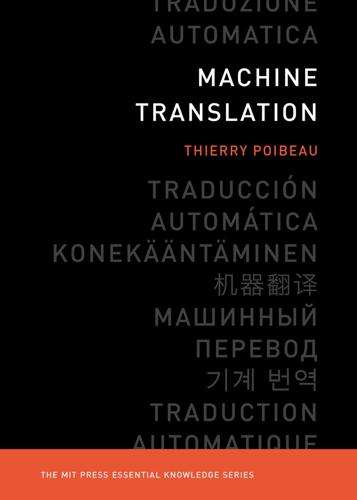
Machine Translation
by
Thierry Poibeau
Published 14 Sep 2017
In both cases, the approach consisted in encoding all the necessary information needed for translation in a specific representation model. The interlingua is thus an artificial language that has nothing to do with any existing language, whereas a pivot language uses an existing language (generally English) for this representation. Several research groups (in Washington and at Harvard and the Rand Corporation, for example) made every effort to develop large bilingual dictionaries (Russian-English), either manually or with the help of a statistical analysis of specific corpora, which helped ensure that the most frequent or the most important words would be processed first. Polysemy—the fact that a single word can have several meanings, such as “bank,” which can refer to a financial institution or the side of a river5—was seen from the beginning as one of the major problems to solve.
…
See Testing phase Professional translator, 10–13, 22, 47, 72, 78–79, 81, 89, 91–92, 109, 121, 199–204, 222, 224, 226–227, 243–246 Programming language, 15, 58, 65, 84 Prolog, 84 Promt, 228, 229, 231, 232, 234 Pronoun resolution, 175 Proper noun, 107, 115, 160, 192 Propositional semantics, 179 Proust, Marcel, 199 Pseudo-root (of a word), 51 Psychology, 8, 76 Public administration. See Governmental administration Punch cards, 46, 73 Quality of machine translation. See Evaluation Query, 238–239, 241 Rand Corporation, 63 Reordering rule, 27, 62, 173 Richens, Richard H., 51, 66, 270 Rule-based machine translation, 25–32, 49–74, 109, 170–174, 176, 190, 194, 217 Russia, 45–46, 232 Russian, 47, 53, 56, 60–61, 63, 79, 81–82, 85, 167, 210, 233, 250 Sabatakakis, Dimitris, 233 Samsung, 236, 249, 250 Schleyer, Johann Martin, 42 Search engine, 51, 92 Segment-based machine translation, 147–155 Semantic primitive, 47, 66–67 Semantic resources, 67, 159, 160, 172, 207, 228.
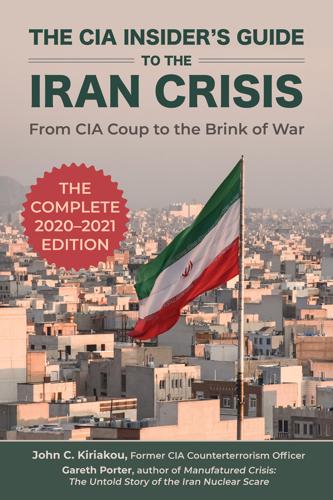
The CIA Insider's Guide to the Iran Crisis
by
Gareth Porter
Published 21 Jan 2020
Seymour Hersh, “Military to Military,” London Review of Books, January 7, 2016. https://www.lrb.co.uk/v38/n01/seymour-m-hersh/military-to-military. 146. Alireza Nader, Iran’s Role in Iraq: Room for U.S.-Iran Cooperation? Rand Corporation, 2005. https://www.rand.org/content/dam/rand/pubs/perspectives/PE100/PE151/RAND_PE151.pdf. 147. Frederick Wehrey et al, Dangerous but Not Omnipotent: Exploring the Reach and Limitations of Iranian Power in the Middle East (Santa Monica: RAND Corporation, 2009), 59. https://www.rand.org/content/dam/rand/pubs/monographs/2009/RAND_MG781.pdf; Porter, Manufactured Crisis, 42-45. 148. NTI, “Syria/Missiles”. https://www.nti.org/learn/countries/syria/delivery-systems/; “Iran Supplies improved rockets to Syria and Hezbollah, Jane’s Missiles and Rockets, September 22, 2004. https://archive.is/20120707043131/http://articles.janes.com/articles/Janes-Missiles-And-Rockets-2004/Iran-supplies-improved-rockets-to-Syria-and-Hizbullah.html. 149.

Data and Goliath: The Hidden Battles to Collect Your Data and Control Your World
by
Bruce Schneier
Published 2 Mar 2015
Slate, http://www.slate.com/articles/news_and_politics/crime/2014/07/the_cannibal_cop_gilberto_valle_goes_free_what_about_michael_van_hise_and.html. Already law enforcement agencies: Walter L. Perry et al. (2013), “Predictive policing: The role of crime forecasting in law enforcement operations,” RAND Corporation, https://www.ncjrs.gov/pdffiles1/nij/grants/243830.pdf. US National Institute of Justice (13 Jan 2014), “Predictive policing research,” http://www.nij.gov/topics/law-enforcement/strategies/predictive-policing/Pages/research.aspx. This notion of making certain crimes: Michael L. Rich (Mar 2013), “Should we make crime impossible?”
…
IBM Corporation (2011), “New York State Tax: How predictive modeling improves tax revenues and citizen equity,” https://www.ibm.com/smarterplanet/us/en/leadership/nystax/assets/pdf/0623-NYS-Tax_Paper.pdf. the police use it: Walter L. Perry et al. (2013), “Predictive policing: The role of crime forecasting in law enforcement operations,” RAND Corporation, https://www.ncjrs.gov/pdffiles1/nij/grants/243830.pdf. Terrorist plots are different: John Mueller and Mark G. Stewart (2011), Terror, Security, and Money: Balancing the Risks, Benefits, and Costs of Homeland Security, Oxford University Press, chap. 2, http://books.google.com/books?id=jyYGL2jZBC4C.
…
These tend to be totalitarian: Here’s a proposal to institute a sort of “cyber draft” to conscript networks in the event of a cyberwar. Susan W. Brenner and Leo L. Clarke (Oct 2010), “Civilians in cyberwarfare: Conscripts,” Vanderbilt Journal of Trans-national Law 43, http://www.vanderbilt.edu/jotl/manage/wp-content/uploads/Brenner-_Final_1.pdf. The 1878 Posse Comitatus Act: RAND Corporation (20 Mar 2001), “Overview of the Posse Comitatus Act,” in Preparing the U.S. Army for Homeland Security, http://www.rand.org/content/dam/rand/pubs/monograph_reports/MR1251/MR1251.AppD.pdf. Charles Doyle and Jennifer K. Elsea (16 Aug 2012), “The Posse Comitatus Act and related matters: The use of the military to execute civilian law,” Congressional Research Service, http://www.fas.org/sgp/crs/natsec/R42659.pdf.
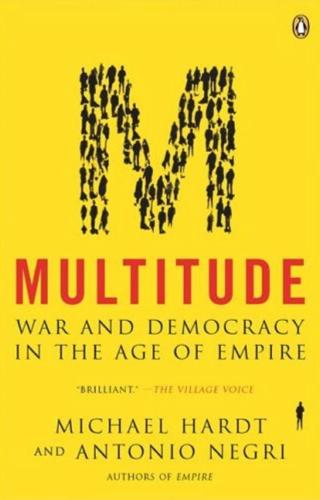
Multitude: War and Democracy in the Age of Empire
by
Michael Hardt
and
Antonio Negri
Published 1 Jan 2004
For some varied examples, see Max Horkheimer and Theodor Adorno, The Dialectic of Enlightenment (New York: Continuum, 1972); Guy Debord, The Society of the Spectacle (New York: Zone, 1994); Paul Virilio, Desert Screen: War at the Speed of Light (New York: Continuum, 2002). 73 See John Arquilla and David Ronfeldt, eds., Networks and Netwars: The Future of Terror, Crime, and Militancy (Santa Monica: Rand Corporation, 2001). 74 For an excellent history of U.S. counterinsurgency strategy, which focuses on the behaviorist paradigm at military think tanks like the Rand Corporation, see Ron Robin, The Making of the Cold War Enemy (Princeton, NJ: Princeton University Press, 2001). The major part of the book deals with the Korean War, but there is a fascinating chapter on the shift in counterinsurgency strategy during the Vietnam War away from attempting “constructively” to change the psychology of the enemy—winning hearts and minds—toward simply and coercively trying to change the enemy’s behavior. 75 Arquilla and Ronfeldt consider swarming the primary military strategy of netwar.
…
The major part of the book deals with the Korean War, but there is a fascinating chapter on the shift in counterinsurgency strategy during the Vietnam War away from attempting “constructively” to change the psychology of the enemy—winning hearts and minds—toward simply and coercively trying to change the enemy’s behavior. 75 Arquilla and Ronfeldt consider swarming the primary military strategy of netwar. See John Arquilla and David Ronfeldt, Swarming and the Future of Conflict (Santa Monica: Rand Corporation, 2000). 76 Much of the U.S. writing on unilateralism is tinged with the hypocritical pathos that Rudyard Kipling’s notion of the “white man’s burden” carried in a previous era. For laments on the solitude and reluctance of the United States in a unilaterialist role, see Samuel Huntington, “The Lonely Superpower,” Foreign Affairs 78, no. 2 (March-April 1999): 35-49; and Richard Haass, The Reluctant Sheriff: The United States After the Cold War (New York: Council on Foreign Relations, 1997). 77 We should note that human rights has become fundamental—a European legal philosopher from the last century would say “dogmatic”—in the field of international law.
…
We will return to discuss these electronic movements when we consider questions of immaterial property in chapter 2. 110 See, for example, Arquilla and Ronfeldt, Networks and Netwar. 111 Pierre Clastres, Society Against the State: Essays in Political Anthropology, trans. Robert Hurley in collaboration with Abe Stein (New York: Zone, 1987), especially chapter 11. 112 See Arquilla and Ronfeldt, Swarming and the Future of Conflict (Santa Monica: Rand Corporation, 2000). 113 See, for example, James Kennedy and Russell Eberhart with Yuhai Shi, Swarm Intelligence (San Francisco: Morgan Kaufmann Publishers, 2001). 114 Kennedy and Russell, with Shi, 103-104. For a more colorful account of insect communication, see Karl von Frisch, The Dancing Bees, trans.

The Innovators: How a Group of Inventors, Hackers, Geniuses and Geeks Created the Digital Revolution
by
Walter Isaacson
Published 6 Oct 2014
The Defense Department and National Science Foundation soon became the prime funders of much of America’s basic research, spending as much as private industry during the 1950s through the 1980s.24 The return on that investment was huge, leading not only to the Internet but to many of the pillars of America’s postwar innovation and economic boom.11 A few corporate research centers, most notably Bell Labs, existed before the war. But after Bush’s clarion call produced government encouragement and contracts, hybrid research centers began to proliferate. Among the most notable were the RAND Corporation, originally formed to provide research and development (hence the name) to the Air Force; Stanford Research Institute and its offshoot, the Augmentation Research Center; and Xerox PARC. All would play a role in the development of the Internet. Two of the most important of these institutes sprang up around Cambridge, Massachusetts, just after the war: Lincoln Laboratory, a military-funded research center affiliated with MIT, and Bolt, Beranek and Newman, a research and development company founded and populated by MIT (and a few Harvard) engineers.
…
His family had immigrated from Poland when he was two and settled in Philadelphia, where his father opened a small grocery store. After graduating from Drexel in 1949, Baran joined Presper Eckert and John Mauchly in their new computer company, where he tested components for UNIVAC. He moved to Los Angeles, took night classes at UCLA, and eventually got a job at the RAND Corporation. When the Russians tested a hydrogen bomb in 1955, Baran found his life mission: to help prevent a nuclear holocaust. One day at RAND he was looking at the weekly list sent by the Air Force of topics it needed researched, and he seized on one that related to building a military communications system that would survive an enemy attack.
…
“It’s just this one little case that seems to be an aberration,” he added, referring disparagingly to Kleinrock.72 Interestingly, until the mid-1990s Kleinrock had credited others with coming up with the idea of packet switching. In a paper published in November 1978, he cited Baran and Davies as pioneers of the concept: “In the early 1960’s, Paul Baran had described some of the properties of data networks in a series of RAND Corporation papers. . . . In 1968 Donald Davies at the National Physical Laboratories in England was beginning to write about packet-switched networks.”73 Likewise, in a 1979 paper describing the development of distributed networks, Kleinrock neither mentioned nor cited his own work from the early 1960s.
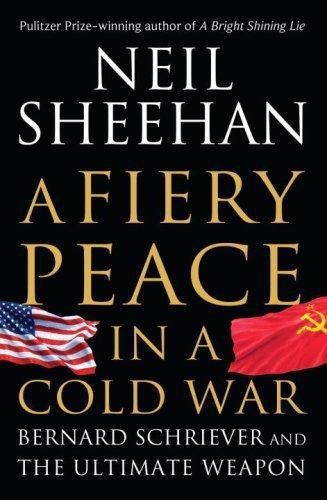
A Fiery Peace in a Cold War: Bernard Schriever and the Ultimate Weapon
by
Neil Sheehan
Published 21 Sep 2009
The first study, completed in May 1946, was on the feasibility of launching a satellite into space for a variety of military uses from photoreconnaissance to weather reporting and communications. The Douglas enterprise, called Project RAND, for “research and development,” was separated from the aircraft firm within a couple of years and metamorphosed into the RAND Corporation, located in Santa Monica, California, the think tank that provided the soon to be independent U.S. Air Force with strategic and tactical analyses throughout the Cold War. Then, in January 1946, with less than a month to go before his retirement to his ranch in Northern California, Arnold had taken his final step.
…
The aircraft, for example, while next-generation, had to be achievable within what could reasonably be foreseen in the advance of technology. Schriever, of course, lacked the knowledge to complete such projections by himself. To formulate them he had to organize teams of scientists and engineers and other specialists in each area, drawing on the talent pool available to him from the Scientific Advisory Board, the RAND Corporation, and consultants recruited from the universities and industry. The Development Planning job turned out to be excellent preparation for the work that lay ahead of him in overseeing the building of the intercontinental ballistic missile. Because he was always dealing with what was to be accomplished tomorrow and not today, he was learning how to differentiate between what was future-feasible and future-fantasy and to do so in a variety of disciplines, not just in aeronautical engineering, where he had specific competence.
…
The first American astronauts to venture into space were, in fact, to ride up on military missiles and to return in capsules that were modified versions of the initial hydrogen bomb warhead. Bennie imparted some of the exhilaration of this adventure in a secret briefing he gave to the staff of the Air Force’s think tank, the RAND Corporation, in nearby Santa Monica on January 31, 1955. He spoke of a warhead flashing through space at the previously unimaginable speed of 20,000 feet per second, of the “invulnerability” of this nuclear spear point to Soviet defenses. And yet, he said, the real objective of the adventure was to contribute to the preservation of peace.

How Not to Network a Nation: The Uneasy History of the Soviet Internet (Information Policy)
by
Benjamin Peters
Published 2 Jun 2016
Take, for example, Paul Baran (1926–2011), a Polish-born engineer who was raised in Philadelphia and Boston. Baran is widely remembered today for innovating packet-switching and distributed-network designs, which now are central to modern-day networking, but his struggles are less well remembered. In 1960 at the RAND Corporation, a research think tank under contract with the U.S. Air Force, Baran articulated the “hot-potato heuristic” behind modern-day data traffic on the Internet: break down a message into packets (or envelopes) of information, release each packet to travel on its own traffic-reducing pathway to its final destination, and resequence and receive all packets in their original order.
…
In the early 1960s, Baran also designed the celebrated idea of a distributed network in which every node in a network connects to its neighboring nodes and not to any decentralized or centralized node arrangement (figure 3.2). Figure 3.2 Three network types: (a) Centralized, (b) decentralized, and (c) distributed. Source: From Paul Baran, “Introduction to Distributed Communication Networks.” On Distributed Communications, RAND Corporation Memorandum RM-3420-PR, August 1964, 2. Reproduced with permission of The Rand Corp. Widely celebrated as a prototype to “end-to-end” intelligence and a liberal democratic mode of communication, Baran’s network innovations were colored and shaped by the cold war military complex as well as cybernetic sources.
…
“The Scientific Conceptualization of Information.” Annals of the History of Computing 7 (2) (1985): 117–140. Aspray, William, and Paul E. Ceruzzi. The Internet and American Business. Cambridge: MIT Press, 2008. Baran, Paul. “Introduction to Distributed Communication Networks.” On Distributed Communications. RAND Corporation Memorandum RM-3420-PR, August 1964. Bartol, Kathryn M. “Soviet Computer Centres: Network or Tangle?” Soviet Studies 23 (4) (1972): 608–618. Becker, Abraham S. “Input-Output and Soviet Planning: A Survey of Recent Developments.” Memorandum prepared for the United States Air Force, RAND Memorandum RM 3523-PR, March 1963.
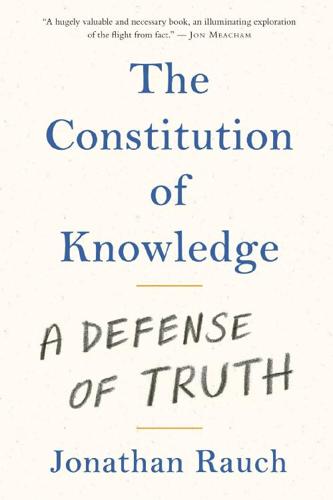
The Constitution of Knowledge: A Defense of Truth
by
Jonathan Rauch
Published 21 Jun 2021
One is confirmation bias, which operates primarily at the personal level, biasing the way we think—as does its close kin, motivated reasoning. Another is conformity bias, which operates more at the social level, biasing the way we interact—as does its close cousin, epistemic tribalism. “Confirmation bias and motivated reasoning have been widely researched and explored in both political and nonpolitical contexts,” write the RAND Corporation’s Jennifer Kavanagh and Michael D. Rich in their 2018 report, Truth Decay: An Initial Exploration of the Diminishing Role of Facts and Analysis in American Public Life. The research would not please Socrates, who teaches us to be humble about our beliefs, to assume we are often wrong, and to seek out challenging information and opinions.
…
“This was a form of dissembling that was so brazen and comprehensive, so far from standard political fibbing and selective spin, that it left a population essentially impotent.”24 As Arendt famously wrote in The Origins of Totalitarianism, “The ideal subject of totalitarian rule is not the convinced Nazi or the convinced Communist, but people for whom the distinction between fact and fiction (i.e., the reality of experience) and the distinction between true and false (i.e., the standards of thought) no longer exist.” Russian propaganda became particularly adept at deploying what RAND Corporation researchers dubbed a “firehose of falsehoods.”25 After Russian agents poisoned Sergei Skripal and his daughter in Britain in 2018, Russian media blamed Britain. And/or Ukraine. And/or it was an accident. And/or it was suicide. And/or it was a revenge killing by relatives. And/or Russia did not produce the nerve agent which was used.
…
See also disinformation; information warfare; trolls and trolling propositions for reality, 86–90, 95–98, 124 Protestantism and creed war, 39, 49–50 public choice, 229–30, 243 Publick Occurrences, mission statement of, 5–6 Pulliam, Eugene, 136 punitiveness of canceling, 219 Purdue University, 235, 250 Putin, Vladimir, 157, 166, 167, 173, 181, 184 QAnon, 183 race and racism: cancel culture and, 13, 126–27, 211, 213, 215, 220, 242, 250–51; emotional safetyism and, 203; empiricism and, 90; free speech and, 229, 252, 253; partisan identification and, 31 RAND Corporation, 164 RAR (Reedies Against Racism), 250–51 Rauch, Jonathan: Kindly Inquisitors, 15–16, 88, 98–99, 199, 203, 249, 253 reality: conformity bias and, 38–39; conservative media defining, 176; digital media splintering, 131–33, 169; emotional safetyism and, 208; identity-protective cognition and, 31; network epistemology and, 71–73, 86–87; objectivity of, 9, 86–87; rules for, 88–92; troll epistemology and, 167–68, 184–85 reality-based communities, 4; beliefs accommodated by, 114–17; boundaries of, 17, 96–97; common cores of, 103–08; defined, 16; digital media and, 119, 132, 154; error correction in, 73–75; filtering function of, 124–26; free speech and, 96; globalization of knowledge in, 68–70; marginalizing bad ideas in, 258–60; organization of knowledge in, 96–100; Peirce and, 61; persuasion in, 92–94, 134; public goods of, 75–78; reality in, 86–87; rules for, 88–92, 100; safety-based communities vs., 204; scientific development in, 62–68, 70–73; self-correction in, 110; social funnel of, 95–96; triumphs of, 41–42; troll epistemology vs., 164, 186–88, 263; viewpoint diversity in, 198–99; Wikipedia and, 140–43 reason: biases and, 29–30, 33–34; Lincoln on, 233; Montaigne on, 52–53; state of nature and evolution of, 22–24 Reddit, 135, 158 reductionism in cancel culture, 219 Reed College, 250–51 Reedies Against Racism (RAR), 250–51 Reformation, 52 Reid, Harry, 180 Reifler, Jason, 177 religion and religious difference, 49–51, 56, 80, 114–15, 233 repetition bias, 28 republican virtues, 48, 112, 113 research universities, 68–69 Resnick, Brian, 31, 257 retractions, 6, 73–75, 179.
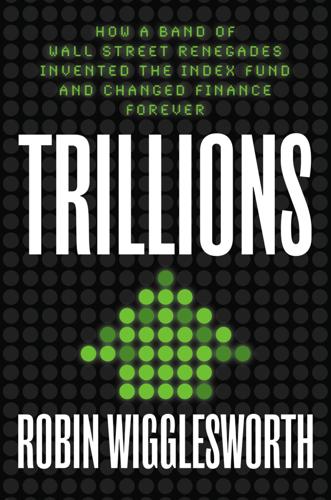
Trillions: How a Band of Wall Street Renegades Invented the Index Fund and Changed Finance Forever
by
Robin Wigglesworth
Published 11 Oct 2021
“People ask me if I knew I’d get a Nobel prize. I always say no, but I knew I’d get a PhD.”5 However, despite Markowitz’s confidence—and the huge legacy it would leave—whether it would actually qualify for a PhD in economics was oddly uncertain. Markowitz had in 1952 left Chicago for the RAND Corporation, a prestigious think tank in sunny California, and had to return to defend his thesis to the faculty. He was unconcerned, thinking as he landed in Chicago, “I know this subject cold. Not even Dr. Milton Friedman [the University of Chicago’s legendary economics professor] can give me a hard time.”6 Unfortunately, Friedman was unconvinced.
…
After that, he had to serve two years in the Army, stationed at Fort Lee in Virginia. Sharpe luckily avoided combat duty in the Korean War, and although he enjoyed service, he discovered that he could shorten the two years of active duty to just six months if he went to work for a government contractor. One of his UCLA professors had recommended that he join the RAND Corporation after he was finished in the Army anyway, and since RAND was an Air Force–backed research institute, Sharpe was able to join it as an economist in 1956 while pursuing a doctorate at UCLA. RAND proved formative. Some of its employees joked that it stood for “Research And No Development,” and its intellectualism was inspiring to the young economist.
…
See indexes; and specific indexes Markowitz, Harry, x, 28, 37, 38–42, 70 background of, 39 modern portfolio theory, 39–42, 43–45, 73, 107, 152 Maroon 5, 234 Marschak, Jacob, 28, 39, 41 Massachusetts Institute of Technology (MIT), 21, 36, 60, 61, 71, 187 Massachusetts Investors Trust, 91 Mastercard, 256 Matisse, Henri, 22 Mauboussin, Michael, 280–81, 282 Mehta, Manish, 227–28, 229 Mellon Capital Management, 184 Mellon National Bank and Trust, 53, 72–73, 184 Meredith Corporation, 263–64 Merrill Lynch (Merrill Lynch, Pierce, Fenner & Smith Inc.), 30–33, 220 BlackRock IPO, 214 Butler at, 136, 137 Grauer at, 187–88 Lorie study, 31–33 “thundering herd,” 30 WFNIA and, 191 Wheeler at, 161 Merrill Lynch Investment Managers (MLIM), BlackRock acquisition of, 215, 217–19, 223 Merton, Robert, 71 Metcalf, Jeff, 47 MetLife, Inc., 216 modern portfolio theory, 39–42, 43–45, 73, 107 Modigliani, Franco, 28 Mondale, Walter, 211 Morgan, John Pierpont, 97 Morgan, Maritza, 126 Morgan, Walter, 92–93, 95, 96, 130 Morgan Stanley BlackRock and, 214, 216–17 Dean Witter merger, 111 Mack at, 216–17 OPALS, 195–96 Moriarty, Kathleen, 177, 180 Morningstar, 17, 248 mortgage bonds, 207–8 Mossin, Jan, 45 Most, May Rose Lazarus, 169 Most, Nathan “Nate,” xii, 276 at Amex, 166–77 ETFs, 166–68, 174–77, 178, 197, 245, 272 background of, 169–70 death of, 182 MSCI, 111n, 196, 197, 242, 252, 257–59 inclusion of Chinese stocks, 253–54, 258–59 Munger, Charlie, 12, 13, 14 municipal bonds, 117–18, 145, 217 Munsey’s Magazine, 170 Musk, Elon, 251 “mutual fund marketplace,” 162n mutual funds, use of term, 91n Napoleonic Wars, 92, 103–4 Nash, John, 43 nationalism, 19 NBA strike of 1987, 136–37 Neff, John, 93, 99, 107–8, 117 Nelson, Horatio, 103 Netzly, Robert, 236–39, 249 Newsweek, 85, 112 New York Bank for Savings, 128 New York City Teachers’ Retirement System, 78 New York Stock Exchange (NYSE), 29, 148, 170, 172 Amex acquisition, 182–83 BlackRock IPO, 215 first index fund, 76 Lorie and Fisher study, 32–33 New York Times, 30, 150, 178 New York Yankees, 203, 204 “Nifty Fifty,” 5–6, 34, 96 Nikkei (newspaper), 252 Nikkei 225, 7 Nikko Securities, 190 Nixon, Richard, 211 Nobel Prize, 21, 28, 29, 31, 37, 41, 42, 45, 71, 106 Nolan, Hamilton, 133–34 no-load funds, 116–17, 117n Norris, Jim, 125, 126–28, 133 Northern Trust, 81 North Korea, 38, 42–43 Novick, Barbara, 209–10, 212, 292, 295 Nvidia, 238 O’Brien, John, 178 O’Neal, Stan, 215, 217 “open-ended” mutual funds, 91, 110 Oppenheimer & Co., 51 Optimized Portfolios As Listed Securities (OPALS), 195–96, 247 Orrick, Herrington & Sutcliffe, 177 Pacific Commodities Exchange, 170 Pacific Vegetable Oil, 169 Paine Webber Jackson & Curtis, 111 Parsons, James, 199–200, 201 passive investing brief overview of, 7–8 Buffett-Seides wager, 1–2, 3–4, 6, 9–11, 15–17 index inclusion effect, 254–62 origin story of, 69–77, 164–65 problems with, 266–84, 287–90, 294–99 Samuelson on, 106–7 Singer on, 18–19, 287–88, 290 Wallace’s tale, 265–66 Peanuts (comic), 38 Pedersen, Lasse Heje, 276–77 Penn Central Transportation Company, 172–73 pension funds, 79–80, 83–85, 274, 292 AG Becker and, 142–43 Buffett on, 4–5, 7, 8, 83 DFA and, 144–45, 151, 159, 162, 164 Wells Fargo and, 75–78, 80, 185, 186, 188, 190–91 Pensions & Investments, 68 Peru, 257 Peter Cooper Village, 220 Peterson, Pete, 210, 211, 213–14 Petry, Johannes, 256–57 Petty, Tom, 248n Philadelphia National Bank, 92 Philadelphia Stock Exchange (PSE), 172–73 Phillips, Noah, 295–96 Pilcher, Simon, 274–75 Pimco, 261 Pimco Total Return Fund, 124 PNC Bank, 214, 217, 219 Poincaré, Henri, 22–23 political donations, 66 “portfolio,” 40 portfolio insurance, 171–72, 178–79, 189 “Portfolio Selection” (Markowitz), 41 Pratchett, Terry, 95 PRIMECAP Management, 123 Princeton University, 53–54, 87, 90–93, 108 “probability law,” 24 “Problem of Twelve, The” (Coates), 297–98 “program trading,” 78n Project Amethyst, 201 ProShares, 248 Protégé House, 16 Protégé Partners, 2, 3, 9 Buffett-Seides wager, 1–2, 3–4, 6, 9–11, 15–17 proxy advisors, 288–90 Purcell, Philip, 216 Purdey shotgun, 239 Qatar Investment Authority, 223–24 Qontigo, 242n “Quantifiers,” 53, 55–68 Quotron, 149–50 RAND Corporation, 41–42, 43–44 Random Character of Stock Prices, The (Cootner), 36–37 Random Walk Down Wall Street, A (Malkiel), 54, 115 random walk hypothesis, 25, 36–37, 49, 50, 51, 82–83 “Random Walks in Stock Market Prices” (Fama), 50 Ranieri, Lewis S., 207 Renshaw, Edward, 34, 45, 86 Reserve Officers’ Training Corps (ROTC), 42, 59–60 “retail money,” 162 Revenue Act of 1978, 119 Reynolds Securities, 111 Riefenstahl, Leni, 163 Riepe, Jim, xi Bogle-Brennan schism, 133 Bogle dinners, 127 founding of Vanguard, 88, 104–5, 104n, 109, 110 setting up first FIIT (“Bogle’s Folly”), 110–11, 112, 114 at T.
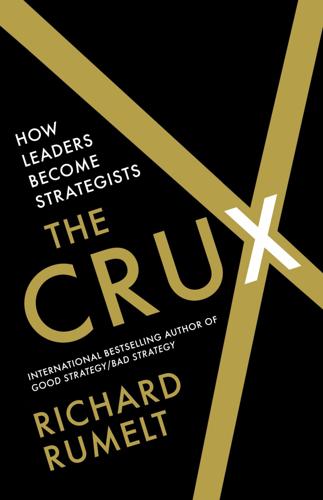
The Crux
by
Richard Rumelt
Published 27 Apr 2022
They note that the large documents often prepared for strategy making “provide detail, but no reference data with predictive power. Interestingly, the more detailed the information you have, the more you lead yourself to believe that you know; and the more your confidence grows, the higher the risk of arriving at the wrong conclusions.” 5 An interesting example of this bias at work appears in the Rand Corporation’s study of forty new-process chemical plants. The early cost estimates, the ones used to justify the projects, averaged 49 percent of the ultimate cost. The early estimates ranged (one standard deviation) from 27 to 72 percent of the ultimate cost. One of Rand’s summary observations was this: We can detect no trend of improvement in cost estimating over the 12 years or so covered by plants in our data base, nor can we discern any change in expectations about plant performance.
…
Chris Bradley, Martin Hirt, and Sven Smit, Strategy Beyond the Hockey Stick: People, Probabilities, and Big Moves to Beat the Odds (Hoboken, NJ: John Wiley & Sons, 2018), 6. 6. Edward W. Merrow, Kenneth Phillips, and Christopher W. Myers, Understanding Cost Growth and Performance Shortfalls in Pioneer Process Plants (Santa Monica, CA: Rand Corporation, 1981), 88. INDEX account smoothing, 105–106 action plan, 143, 309, 315–316, 324–325 Active Defense concept, 154–155 addressability of challenges addressable strategic challenges, 73–75, 323 chunking the challenge, 76 filtering process, 41–42 finding the crux of Intel’s challenges, 81–82 finding where you can win, 63–64 obstacles to dealing with hard challenges, 321–322 Sustainable Development Goals, 128–131 addressable strategic challenges (ASCs), 73–75, 323 AdWords, 52–53 aerobics studio, 183–185 Afghanistan, war in, 132–136, 153, 292–293 agency problems, 173 agency theory: incentive pay, 262–263 Airbnb, 199–200, 202 Airbus, 195 aircraft production Boeing’s financial structure, 258 Curtiss-Wright, 236–237 effect of Boeing’s cost-cutting, 264 the importance of experience, 196–198 AirLand Battle, 151–156, 161 airline industry container shipping comparisons, 165–166 Ryanair, 59–62 Akers, John, 242 Allen, James, 281 Alphabet.
…
incentive pay, 263–264 measuring efficiency, 250 Petzl America, 121–123 phenakistoscope, 50–51 Pixel Buds (Google), 270–271 Plan Dog, 64–66, 73–74, 130 platforms, 199–201 Porter, Michael, 33, 167 powdered metals, 191–192 power and leverage building a power base, 115–118 creation through coherence, 123–124 the crux as a constraint, 32 discomfort with power, 111–114 lack of executive power for creating a strategy, 115–116 marketing and sales, 118–120 repairing GM’s organizational dysfunction, 220 sources of, 11 strategy statements as substitutes for, 110–114 The Practice of Management (Drucker), 251 price cuts, market response to, 185–186 priorities, strategic, 303–307, 328–329 problem solving bouldering, 1–4 changing corporate points of view, 143–144 defining strategy, 13 the ongoing strategy process, 54–55 research on, 296 Procter & Gamble, 124–125, 190–191 profits and profitability analyzing production and shipping costs, 163–164 competitive advantage, 184–185 current earnings, 257–258 industry-analysis framework, 167 profit before tax, 161–162 proximate objectives, 324 psychology: perceived reality, 50–51 public face, constructing, 327–329 publicly traded stock, 268–269 Qualcomm, 78 quarterly earnings estimates, 257–260 question-answer dialogue (Strategy Foundry), 316–317 Quicken, 191 railway construction, 157–160 Rand Corporation, 325–326 rational choice: boundedness, 35 R/C devices, 255–256 RCA, 215–216 real estate market, 124 Redfin brokerage, 124 red-team exercises, 322–323 reference classes, 325–326 reference-group neglect, 103 reflective thinking, 318–319 refractory metals, 191–192 reframing the situation, 140–142, 148–149, 151–156 regime change, 292–293 renewal, organizational, 225–227 Research in Motion (RIM), 176 resource allocation, 171–172 restaurant industry: close coupling of activities, 190 revenue generation arbitrary unsupported goals, 242–244 identifying challenges in the Strategy Foundry, 306 mechanics of growth, 88 Netflix cash costs, 17–19 rewards of problem solving, 3–4 robotics, 208–209 rock climbing, 1–5, 54, 121–123, 275 The Roof of the Dog’s Ass boulder problem, 1–5, 27 Roosevelt, Franklin, 65, 131–133 Rosenthal, Brian, 157–158 Rude Awakening (Keller), 219 Rumsfeld, Donald, 292–294, 296 Ryanair, 48, 59–62 Sales Force Automation (SFA), 57–58 Salesforce.com, 48, 55–59 Samsung, 195 Sankarlingam, Velchamy, 210 scaling, 195–198 GM’s reform, 221 identifying challenges in the Strategy Foundry, 306 semiconductor industry, 76–77 Schultz, Howard, 48 scientific equipment, 118–120 Scozzafava, Ralph, 247 search engines, 52–53 seedlings, 104 semiconductor production, 76–79, 81–82, 95, 103, 189–190, 197 See also Nvidia share price growth, 88–89 Shell International, 186–187 shipping, 164–166, 195 short-term valuation, 260–261 Silicon Graphics, 103 Simon, Herbert, 35–36 simplification, organizational, 226–227 Singapore: unemployment, 43–44 skin-care products, 124–125 Skou, Soren, 166 Slaoui, Moncef, 276 Smelser, Paul, 190–191 smooth earnings, 105–106 social fabric, business as, 110–111 social media downside of, 206 Facebook and Twitter, 214 network effects, 199 platform strategies, 199–201 smartphone use, 147 social networking, 59 SoftBank, 107–108 software, 224, 227–228 software-as-a-service (SaaS) market, 59, 230 Southwest Airlines, 48, 60, 124 space shuttle, 4–6, 125–128 space travel, 4–7, 37 SpaceX, 5–7 specialization identifying challenges in the Strategy Foundry, 306 organization dysfunction, 217 speculators, 266–267 Stark, Harold, 65–66 Starry, Donn, 155 Steiner, George A., 272–273 stock options, 263–264 stock value effect of mergers and acquisitions, 97–101 McGraw-Hill, 93 paying for mergers and acquisitions, 102 Stonecipher, Harry, 258 strategic commitment, 282–284 strategic effectiveness, 89–91 strategic extension, 89–91 strategic navigation, 326 strategic planning accentuating the positive and avoiding the negative, 140–142 for arbitrary financial outcomes, 282–284 battling for corporate resources, 171–172 in businesses, 281–284 climate-control systems, 287–289 convergence on action, 290–294 defining goals and objectives, 249–250 finding the best process, 294–297 goals versus strategy, 241–242 groupthink, 290–292 mission statements, 278–281 owning the challenge, 289–290 for pandemics, 273–276 the Second Iraq War, 292–294 strategy versus management, 248–256 water resource management, 276–278 See also Strategy Foundry strategy, defining, 13, 110 strategy, the art of, 5, 8–9 Strategy Foundry, 285 causes of failure, 315 challenge-based planning, 298–299 creating an action plan, 310–312 identifying the challenges of the business, 302–307 information gathering, 299–302 internal and management issues, 307–310 key tools, 315–329 participant questions, 301–302 preconditions for success, 313–314 preparations, 299 time viewer, 319–320 strategy statements, 112–114 streaming services, 17–19, 21–22, 25–27 Strunk, William, 91 subscription strategies, 19, 26, 57–58, 84, 178, 199 Success Score Card, 282–284 supply-chain issues, 254–255 surgical robotics, 208–209 Sustainable Development Goals (SDGs), 128–130 Swan, Robert, 79–80, 83 swearing in (Strategy Foundry), 311, 326–327 Swedish view of business, 109–111 Symbian OS (Nokia), 223–225 synergies, 102–103, 123–124 tactics versus strategy, 75 Taliban, 132–134 telecommunications, 102, 179.
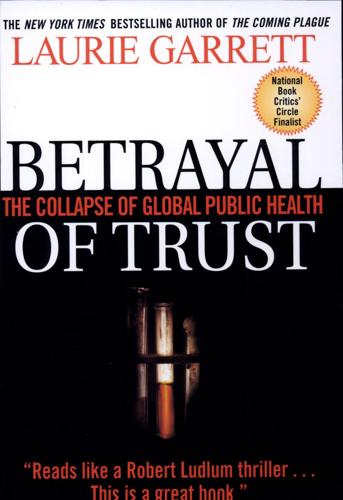
Betrayal of Trust: The Collapse of Global Public Health
by
Laurie Garrett
Published 15 Feb 2000
Sponsored by the Office of Civil Defense (SRI 7979–007), November, 1967; Mitchell, H. H., The Rand Corporation. Guidelines for the Control of Communicable Disease in the Postattack Environment. Sponsored by the Atomic Energy Commission (RM-5090-TAB), August, 1966; Mitchell, H. H., The Rand Corporation. Plague in the United States: An Assessment of Its Significance as a Problem Following a Thermonuclear War. Sponsored by the Atomic Energy Commission (RM-4868-TAB), June, 1966; Mitchell, H. H., The Rand Corporation. The Problem of Tuberculosis in the Postattack Environment. Sponsored by the U.S. Air Force (RM-5362-PRB), June 1967; Pogrund R. S., The Rand Corporation. Nutrition in the Postattack Environment.
…
Most vodka was sold for less than eight dollars a liter, and some was available in street kiosks for a dollar. “Between December 1990 and December 1994, consumer prices [in Russia] increased by 2,020 times for all goods and services, by 2,154 times for food products, but only 653 times for alcoholic beverages,” stated a report issued jointly by the California-based Rand Corporation and Moscow’s Center for Demography and Human Ecology.35 “This means that over this period, in relative terms, alcohol became over three times cheaper than these other products.”36 Adult alcohol consumption in 1996 was 18 liters a year of pure alcohol, or the rough equivalent of 38 liters of 100-proof vodka, according to the Russian Ministry of Health.
…
More probable was a cycle in which greater numbers of uninsured Americans spiraled into debt trying to pay their share of premiums and deductibles, possibly returning to work prematurely following illness, and, as a result, becoming less healthy. Few tears were shed among Washington insiders. The GOP leadership washed its hands of health care—block grants shifted funds to the states, so if Rhode Island’s populace wanted universal health care, well, fine, they could have it. But could they? A 1997 Rand Corporation survey found that few, if any, of the fifty states could sustain the sort of tax increase that would be necessary to supply health coverage to all their citizens. Without substantial federal assistance, expanded access to medicine seemed unlikely—indeed, more probable was rising noninsurance in every state in the United States.615 What was public health to do?

On Power and Ideology
by
Noam Chomsky
Published 7 Jul 2015
One was the reconstitution of the National Guard, from 1979 according to Nicaraguan exiles and Salvadoran officers who participated, with aid and training from agents of the neo-Nazi Argentine generals acting “as a proxy for the United States in Central America” (terrorism specialist Brian Jenkins of the Rand Corporation) from 1980, and direct U.S. control from 1981. The second track was an early offer of aid to the new government, but designed so as to strengthen the private business sector. U.S. aid was also supported by international banks, which feared that Nicaragua would not be able to service the vast debt resulting from their collaboration with Somoza, particularly now that he had fled with a large part of the country’s remaining assets.
…
Durham, Scarcity and Survival in Central America (Stanford U., 1979); Dr. Thorn Kerstiens and Drs Piet Nelissen, Report on the Elections in Nicaragua, 4 November 1984, on behalf of [Dutch] Government Observers; David Felix, “How to Resolve Latin America’s Debt Crisis,” Challenge, Nov./Dec. 1985; Brian Jenkins, New Modes of Conflict (Rand Corporation, June 1983); Inter-American Development Bank Report No. DES-13, Nicaragua, Jan. 1983, cited in Penrose, op. cit.; Jim Morrell, “Nicaragua’s War Economy,” International Policy Report, Nov. 1985; Morrell, “Redlining Nicaragua,” ibid., Dec. 1985; Jim Morrell and William Goodfellow, “Contadora: Under the Gun,” International Policy Report, May 1986; David MacMichael, testimony, International Court of Justice, Sept. 16, 1985, UN A/40/907, S/17639, 19 Nov. 1985, 26; Thomas W .

Baghdad at Sunrise: A Brigade Commander's War in Iraq
by
Peter R. Mansoor
,
Donald Kagan
and
Frederick Kagan
Published 31 Aug 2009
This was largely a function of the failure to plan effectively for “Phase IV” operations, or those that would take place once regime change occurred. The inadequacy of planning for stabilization and reconstruction activities following the cessation of major combat operations is now well understood. A study by the RAND Corporation concludes, No planning was undertaken to provide for the security of the Iraqi people in the post conflict environment, given the expectations that the Iraqi government would remain largely intact; the Iraqi people would welcome the American presence; and local militia, police, and the regular army would be capable of providing law and order.
…
At least I’m drawing combat pay. I have a spare cot for you if you make it to Baghdad. My HQ is in the Martyr’s Monument east of the Tigris River. Alcohol not allowed, but bring cigars. Otherwise, enjoy the summer and drink a cold one for me. Ready First! Pete This page intentionally left blank Notes 1. Baghdad 1. RAND Corporation, “Iraq: Translating Lessons into Future DoD Policies,” Washington, D.C., February 7, 2005. 2. Rajiv Chandrasekaran, Imperial Life in the Emerald City: Inside Iraq’s Green Zone (New York: Knopf, 2006). 3. George Packer, The Assassin’s Gate (New York: Farrar, Straus and Giroux, 2005), 181. 4. Samuel R.
…
Stout, Williamson Murray, and James G. Lacey, Iraqi Perspectives Project: A View of Operation Iraqi Freedom from Saddam’s Senior Leadership (Washington, D.C.: Institute for Defense Analysis, 2006), 91–95. 2. Rusafa 1. Bruce Hoffman, “Insurgency and Counterinsurgency in Iraq,” Washington, D.C., RAND Corporation, June 2004; Kalev I. Sepp, “Best Practices in Counterinsurgency,” Military Review, May–June 2005, 8–12; Huba Wass de Czege, “On Policing the Frontiers of Freedom,” Army 56, no. 7 (2006), 14–22. 2. The first two were killed before my arrival. Private Shawn Pahnke was killed on June 16, 2003, and Private First Class Robert Frantz was killed on June 17, 2003. 3.
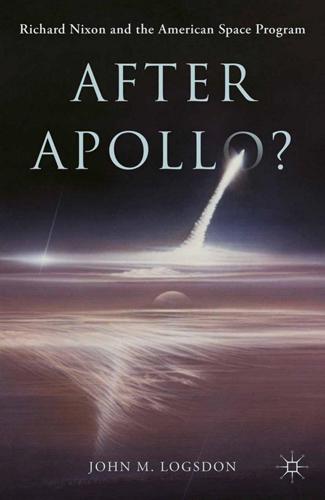
After Apollo?: Richard Nixon and the American Space Program
by
John M. Logsdon
Published 5 Mar 2015
As he assumed his White House position in April, Flanigan inherited from Ellsworth’s staff the previously mentioned Tom Whitehead as one of his staff; Whitehead was Flanigan’s primary assistant for NASA issues. Whitehead held a doctorate in management from MIT, where he had first majored in engineering. He during the 1960s had spent time at the Rand Corporation, a think-tank steeped in a systems analysis approach to assessing policy issues. Flanigan and Whitehead were to play key policy roles 46 A f t e r A p o l l o? Nixon assistants Peter Flanigan (left) and Clay Thomas Whitehead (right). (Photographs WHPO 1092–21 and MUG-W-322, courtesy of the Richard Nixon Presidential Library & Museum) in shaping the approach that the Nixon administration would take to the post-Apollo space program.
…
This skeptical perspective would lead Rice in the following weeks to seek the least costly shuttle program possible, putting him in direct opposition to NASA’s insistence that only a large space shuttle made sense. Rice’s background was in the type of systems analysis that had been developed at the Rand Corporation (which he would later head) and applied during the 1960s under Robert McNamara at the DOD; both Rice and Niskanen had worked at DOD then. Rice had pushed NASA to take a “whole systems” approach to evaluating the shuttle and possible alternatives for space transportation in terms of their cost-effectiveness.
…
Keith Glennan, first NASA administrator; Peter Goldmark, CBS Laboratories; Najeeb Halaby, Pan American Airlines; Frederich Kappel, former head of AT&T; Foy Kohler, former ambassador to the Soviet Union; William Deming Lewis, Lehigh University; John Love, governor of Colorado; Richard Olgilvie, Governor of Illinois; Henry Rowen, Rand Corporation; Leon Schacter, Amalgamated Meat Cutter and Butchers Workman Union; Dan Seymour, J. Walter Thompson Company; and Frank Stanton, CBS. (Stanton had also been one of the nongovernment people consulted by Lyndon Johnson in 1961 as he prepared the recommendations to President Kennedy that led to Project Apollo.) 15.
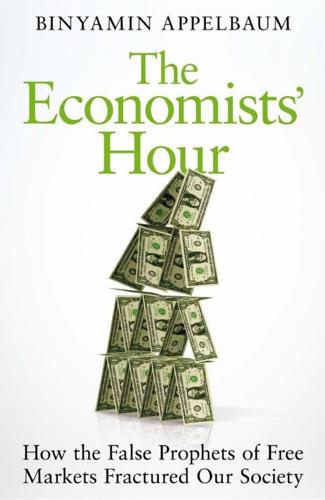
The Economists' Hour: How the False Prophets of Free Markets Fractured Our Society
by
Binyamin Appelbaum
Published 4 Sep 2019
“You cannot make decisions simply by asking yourself whether something might be nice to have,” the new secretary of defense said. “You have to make a judgment on how much is enough.”4 And McNamara knew what kind of person he needed to make those judgments: he needed an economist. He hired Charles Hitch, the head of the economics department at the Rand Corporation, a think tank created by the air force after World War II to keep some of the nation’s best minds working on military problems. Though academics no longer could be compelled to take orders, they could be induced to work on interesting questions in beachfront offices in Santa Monica, California.
…
Lee Iacocca, then a Ford vice president, warned that enforcing the rules “could prevent continued production of automobiles.”31 Instead, General Motors created a filter called a catalytic converter to neutralize the pollution.* The Value of Life One of the first assignments the air force gave the Rand Corporation in the late 1940s was to figure out the best way to blow up the Soviet Union. Rand’s experts carefully considered the problem and advised the air force to send wave after wave of cheap, slow bombers into the teeth of the Soviet defenses. They had put a price on the bombs and the airplanes, but not on the pilots.
…
Arnold Harberger, “Sense and Economics: An Oral History with Arnold Harberger,” conducted by Paul Burnett in 2015 and 2016, Oral History Center, Bancroft Library, University of California, Berkeley. 123. Neil Irwin, “Finland Shows Why Many Europeans Think Americans Are Wrong About the Euro,” New York Times, July 20, 2015. Chapter 9. Made in Chile 1. Charles J. Hitch, “The Uses of Economics,” November 17, 1960, Rand Corporation. 2. The provision of technical assistance to Latin America, primarily in the areas of agriculture, geology, aviation, and child welfare, was initiated by President Franklin Roosevelt and expanded by Truman and Eisenhower. “We must embark on a bold new program for making the benefits of our scientific advances and industrial progress available for the improvement and growth of underdeveloped areas,” Truman declared in his 1949 inaugural address.

Nerds on Wall Street: Math, Machines and Wired Markets
by
David J. Leinweber
Published 31 Dec 2008
In more or less chronological order, Karen Goldberg, of the MacArthur High School math department for letting me play with what passed for a computer there, Henry Kendall of MIT, for letting me play with a real one, Harry Lewis at Harvard, for suggesting that my empty course brackets be filled at the Business School; Bruno Augenstein and Willis Ware, at RAND Corporation, for getting me interested in real-time artificial intelligence; Steve Wyle at LISP Machines and Don Putnam and Lew Roth at Inference Corporation for encouragement and assistance to hammer the square peg of early artificial intelligence into the round hole of finance; Dale Prouty, Yossi Beinart, and Mark Wright of Integrated Analytics for rounding off the peg into MarketMind and later QuantEx; Ray Killian and Frank Baxter of Jefferies and ITG, for noticing that the rounded peg now did fit the finance hole.
…
They were more of a diversion than an avocation, but the accident of the brackets had more influence subsequently than I could have imagined at the time. Harry also enlisted me as the computer science department’s representative on the Committee on Graduate Education, which gave me a reason to hang out in the dean’s office. Grad students wait for deans, and while perusing the reading material near his couch I found he was on the board of the RAND Corporation in Santa Monica. He suggested it Intr oduction xxi might be a nice place to work, right on the beach with no blizzards. I put it on my list. Gray Silver Shadow When the time came to find a real job, I was going out to the University of California at Los Angeles to interview for a faculty position, and I added RAND to the schedule.
…
In Imaginary Weapons: A Journey Through the Pentagon’s Scientific Underworld, Defense Technology International editor Sharon Weinberger tells the remarkable story of how tens of millions of dollars were spent on a crackpot idea for what amounted to a nuclear hand grenade, despite the efforts of the most senior Pentagon scientists to scuttle the project, and the dubious utility of such a weapon. Who would want to throw it? Does the world need a nuke that fits in a lunch bag?10 My personal favorite for a bad technology idea, now in second place after the models that helped create the financial meltdown (but only because it was never built), was described at a RAND Corporation seminar in the early 1980s by then Undersecretary of 288 Nerds on Wall Str eet Defense Bill Perry (later Secretary of Defense in the Clinton years, and not to be confused with the Fridge of the Chicago Bears). I asked him what the worst idea ever to cross his desk at the Pentagon was. Without hesitation, he said that, to his consternation, a proposal had gotten as far as his office to place a huge array of nuclear-powered rocket engines on the far side of the moon, and in the event of hostilities, fire the rockets to plunge the moon into the Soviet Union.

The Evolution of Everything: How New Ideas Emerge
by
Matt Ridley
Eisenhower did not buy this, and nor did his Catholic successor John F. Kennedy. But Draper did not give up. His Population Crisis Committee gradually won over many of the most influential people in American public life to the thesis that coercive population control was essential to defeating communism. Eventually, with the help of a RAND Corporation study which argued (using an absurd 15 per cent discount rate) that children had negative economic value, Draper and his allies won Lyndon Johnson’s endorsement in 1966, and population control became an official part of American foreign aid. Under its ruthless director Reimert Ravenholt, the Office of Population grew its budget till it was larger than that of the rest of the entire US aid budget.
…
Barack Obama is in no doubt that, as he put it in a speech in 2012, ‘The Internet didn’t get invented on its own. Government research created the Internet.’ He was referring to the fact that the decentralised network we know today began life as the Arpanet, a project funded by the Pentagon, and that relied on an idea called packet switching, dreamt up by Paul Baran at the RAND Corporation, whose motive was chiefly to make something that could survive a Soviet first strike and still transmit messages to missile bases to retaliate. Hence the decentralised nature of the network. That’s nonsense, say others. The internet is more than package-switching. It requires computers, communications, all sorts of software and other protocols, many of which the government-funded research projects would have bought from private enterprise.
…
(with Paul Paddock) 207 Page, Larry 188 Pagel, Mark 80, 81–2 Pakistan 32, 206 Paley, William 38–9, 41–2, 51 Panama 286 Paris 102, 121, 254 Park, Walter 139 Parris, Matthew 303 Parys Mine Company, Anglesey 278 Pascal, Blaise 273 Paul, Senator Rand 241 Paul, Ron 114, 285, 292, 295 Paul, St (Saul of Tarsus) 8, 258, 264 Pauling, Linus 121 Pax Romana 239 Peace High School, Hyderabad (India) 181 Peel, Robert 246, 283–4 Peer-to-Peer Foundation 308 Peninsular War 280 People’s Printing Press 288 personality: and the blank slate 156–7, 158–9; and genes 159, 160–2; and homicide 169–71; innateness of behaviour 157–8; intelligence from within 165–7; non-genetic differences 162–5; and parenting 159–60, 161–2; and sexual attraction 172–3; and sexuality 167–9 Peterloo massacre (1819) 245 Pfister, Christian 276 Philippe, duc d’Orléans 286 Philippines 190 Philips, Emo 140 Philostratus 258 Phoenicia 101 Pinker, Steven 28, 30, 31–3, 172–3; The Better Angels of Our Nature 28–9 Pinnacle Technologies 136 Pitt-Rivers, Augustus 127 Pixar 124 Planned Parenthood Foundation 204 Plath, Robert 126 Plato 7, 11 Plomin, Robert 165, 167 Poincaré, Henri 18, 121 Polanyi, Karl 133 Polanyi, Michael 253 politics 314–16 Poor Law (1834) 195 Pope, Alexander 15 Popper, Karl 253; ‘Conjectures and Refutations’ 269 Population: American eugenics 200–3; control and sterilisation 205–8; and eugenics 197–9; impact of Green Revolution 208–10; Irish application of Malthusian doctrines 195–7; Malthusian theory 193, 194–5; and one-child policy 210–14; post-war eugenics 203–5 Population Crisis Committee 206 Portugal, Portuguese 134 Pottinger, Sir Harry 233 ‘Primer for Development’ (UN, 1951) 232 Prince, Thomas 242 Pritchett, Lant 179–80; The Rebirth of Education 176 Procter & Gamble 130 Proudhon, Pierre-Joseph 194–5 Prussia 176 Psychological Review 159 Putin, Vladimir 305 ‘The Puzzle of Monogamous Marriage’ (Henrich, Boyd & Richerson) 89 Pythagoras 85 Pythagorism 259 Qian XingZhong 213 Quesnay, François 98 Raines, Franklin 292 Ramsay, John 25 RAND Corporation 206, 300 Ravenholt, Reimert 206 Ray Smith, Alvy 124 Reagan, Ronald 254, 290 Red Sea 82 Reed, Leonard 43 Reformation 216, 220 religion: and climate change/global warming 271–6; and cult of cereology (crop circles) 264–6; existence of God 14–15; heretics and heresies 141–2; as human impulse 256–8; predictability of gods 259–60; and the prophet 260–3; temptations of superstition 266–8; variety of beliefs 257–8; vital delusions 268–71 Renaissance 220 Ricardo, David 104–5, 106, 246 Richardson, Samuel 88 Richerson, Pete 78, 89 Ridley, Matt, The Rational Optimist: How Prosperity Evolves 110–11, 126–7 Rio de Janeiro 92 Roberts, Russ 4 Robinson, James 97–8 Rockefeller Foundation 229, 230–1 Rodriguez, Joã 47–8 Rodrik, Dani 228 Rome 257, 259, 260 Romer, Paul 109 Roosevelt, Franklin Delano 251 Roosevelt, Theodore 197 Rothbard, Murray 243 Rousseau, Jean-Jacques 165, 216 Rowling, J.K. 122 Royal Bank 281 Royal Mint 278, 279 Royal Navy 297 Royal United Services Institution 198 Rudin, Ernst 202 Rufer, Chris 226 Runciman, Garry, Very Different, But Much the Same 94 Rusk, Dean 206–7 Russell, Lord John 195 Russia 119, 204, 227–8, 250, 303 Russian Revolution 318 Sadow, Bernard 126 Safaricom 296 St Louis (ship) 202–3 St Maaz School, Hyderabad (India) 181 Salk Institute, California 67 San Marco, Venice 53 Sandia National Laboratory 136 Sanger, Margaret 201, 204 Santa Fe Institute 93, 126 Santayana, George 10 Sapienza, Carmen 67 Satoshi Nakamoto 307–8, 309–10, 312 Schiller, Friedrich 248 Schmidt, Albrecht 222 Schumpeter, Joseph 106, 128, 251; Capitalism, Socialism and Democracy 106–7; Theory of Economic Development 106 science: as driver of innovation 133–7; as private good 137–9; pseudo-science 269 Science (journal) 70 Scientology 263 Scopes, John 49 Scotland 17, 280–2, 286 Scott, Sir Peter 211 Scott, Sir Walter (‘Malachi Malagrowther’) 283 Second International Congress of Eugenics 200 Second World War 105, 138, 203, 231, 252, 254, 318 Self-Management Institute 226 Selgin, George 297; Good Money 279, 280 Shade, John 188 Shakespeare, William 15, 131, 216, 224 Shanker, Albert 180 Shaw, George Bernard 197 Shaw, Marilyn 155–6 Shelley, Mary, Frankenstein 16 Shelley, Percy 16 Shockley, William 119 Shogun Japanese 130 Sierra Club 204 Silk Road 311–12 Silvester, David 274 Simon, Julian 209 Singapore 190 Sistine Chapel, Rome 256 Skarbek, David, The Social Order of the Underworld 237–8 Skinner, B.F. 156, 267–8 Skirving, William 244 skyhooks 7, 13, 14, 18, 65, 67, 71, 150, 267 Slumdog Millionaire (film, 2008) 185 Smith, Adam 3, 20, 21, 22–7, 28, 33, 110, 112, 117, 234, 243, 244, 246, 249; The Theory of Moral Sentiments 23–4, 27, 28, 37–8, 98; The Wealth of Nations 24, 38, 98–100, 103–4, 137 Smith, John Maynard 53 Smith, Joseph 263, 264, 266 Smithism 110 Snowden, Edward 303 SOLE (self-organised learning environment) 186 Solow, Robert 108, 137 Somalia 32 Song, Chinese dynasty 101 Song Jian 210–11, 212–13 South America 247 South Korea 125, 190, 229 South Sea Bubble (1720) 285, 294 South Sudan 32 Soviet-Harvard illusion 3 Soviet Union 114, 122 Spain 101, 247 Sparkes, Matthew 313 Sparta 101 Spencer, Herbert 216–17, 249, 253 Spenser, Edmund 15 Spinoza, Baruch 20, 141–2, 148, 268; Ethics 142; l’Esprit des lois 142–3 Sputnik 138 Stalin, Joseph 250, 252, 253 Stalling, A.E. 10 Stanford University 184, 185 Stealth bomber 130 Steiner, George, Nostalgia for the Absolute 266 Steiner, Rudolf 271 Steinsberger, Nick 136 Stephenson, George 119 Stewart, Dugald 38, 244 Stiglitz, Joseph 292 Stockman, David 288, 289–90; The Great Deformation 294 stoicism 259 Stop Online Piracy Act (US, 2011) 304 Strawson, Galen 140 Stuart, Charles Edward ‘The Young Pretender’ 282 Stuart, James Edward ‘The Old Pretender’ 281 Sudan 32 Summers, Larry 110 Sunnis 262 Suomi, Stephen 161 Sveikauskas, Leo 139 Swan, Joseph 119 Sweden 101, 284 Switzerland 32, 190, 247, 254 Sybaris 93 Syria 32 Szabo, Nick 307, 310; ‘Shelling Out: The Origins of Money’ 307 Tabarrok, Alex 132; Launching the Innovation Renaissance 132 Taiwan 190 Tajikistan 305 Taleb, Nassim 3, 92, 107, 135, 285, 312 Tamerlane the Great 87 Taoism 259, 260 Taylor, Winslow 250 Taylorism 250, 251 Tea Act (UK, 1773) 282n Tea Party 246 technology: biological similarities 126–31; boat analogy 128; computers 123–5, 126; copying 132–3; electric light 1–2; and fracking 136; inexorable progress 122–6, 130–1; innovation as emergent phenomenon 139; and the internet 299–316; light bulbs 118–19, 120; many-to-many 300; mass-communication 200; open innovation 130; patents/copyright laws 131–2; and printing 220; and science 133–9; simultaneous discovery 120–2; skunk works 130; software 131 TED (Technology, Entertainment, Design) lecture 177 Thatcher, Margaret 217 Third International Congress of Eugenics 201–2, 204 Third World 231–2 Thrun, Sebastian 185 Time (magazine) 241 The Times 308 Togo 94 Tokyo 92 Tolstoy, Leo 217 Tooby, John 43 Tooley, James 181–4 Toy Story (film, 1995) 124 Trevelyan, Charles 195 Tuchman, Barbara, A Distant Mirror 29 Tucker, William 90; Marriage and Civilization 89 Tullock, Gordon 35 Turner, Ted 213 Twister (messaging system) 313 Twitter 310, 313 U-2 reconnaissance plane 130 Uber 109 UK Meteorological Office 275 UN Codex Alimentarius 254 UN Family Planning Agency 213 UN Framework Convention on Climate Change 254–5 UN General Assembly 305 UNESCO 205 Union Bank of Scotland 281 United Nations 131, 213, 232, 305 United States 34, 122, 125, 138, 139, 176, 200–2, 232, 235–8, 245, 247, 250, 254, 284–5, 286, 302 United States Supreme Court 50 universe: anthropic principle 18–20; designed and planned 7–10; deterministic view 17–18; Lucretian heresy 10–12; Newton’s nudge 12–13; swerve 14–15 University of Czernowitz 106 University of Houston 71 University of Pennsylvania 133 UNIX 302 Urbain Le Verrier 120–1 US Bureau of Land Management 240 US Department of Education 240 US Department of Homeland Security 240, 241 US Federal Reserve 285, 286, 288, 293, 297, 309 US Financial Crisis Inquiry Commission 294 US Internal Revenue Service (IRS) 240 US National Oceanographic and Atmospheric Administration 240 US Office of Management and Budget 290 Utah 89 Uzbekistan 305 Vancouver 92 Vanuatu 81 Vardanes, King 258 Veblen, Thorstein 249 Verdi, Giuseppe: Aida 248; Rigoletto 248 Veronica (search engine) 120 Versailles Treaty (1919) 318 Victoria, Queen 89 Virgil (Publius Vergilius Maro) 10, 23 vitalism 270–1 Vodafone 296 Vogt, William 205, 209; Road to Survival 204 Voltaire, François-Marie Arouet 14, 15, 20, 22, 25, 41, 143, 243, 268; Candide 15 Volvo 101 Wagner, Andreas 47 Wall Street Journal 125, 132 Wallace, Alfred Russell 20, 54–5, 196 Wallison, Peter 294 Walras, Léon 106 Waltham, David, Lucky Planet 19 Walwyn, Thomas 242 Wang Mang, Emperor 267 Wang Zhen 212 Wannsee conference 198 Wapinski, Norm 136 Washington, George 220, 222, 240 Washington Post 241 Watson, James 121, 145 Webb, Beatrice 197 Webb, Richard 5, 319 Webb, Sidney 197 Webcrawler 120 Wedgwood family 38 Wedgwood, Josiah 199 Weismann, August 55 Wells, H.G. 197, 251 West, Edwin 178; Education and the State 177 West, Geoffrey 93 West Indies 134, 286 Whitney, Eli 128 Whittle, Frank 119 Whole Foods 227 Wikipedia 188, 304–5 Wilby, Peter 315 Wilhelm II, Kaiser 198, 247 Wilkins, Maurice 121 Wilkinson, John 278–9 Willeys 278–9, 280 Williams, Thomas 278 Williamson, Kevin 33; The End is Near and it’s Going to be Awesome 238–9 Wilson, Catherine 12 Wilson, Margo 171 Wolf, Alison, Does Education Matter?

The Future Is Faster Than You Think: How Converging Technologies Are Transforming Business, Industries, and Our Lives
by
Peter H. Diamandis
and
Steven Kotler
Published 28 Jan 2020
MIT professor of urban planning: Eran Ben-Joseph, ReThinking a Lot (MIT Press, 2012), pp. xi–xix. Hyperloop is the brainchild: For the original whitepaper: https://www.spacex.com/sites/spacex/files/hyperloop_alpha.pdf. Robert Goddard: Malcolm Browne, “New Funds Fuel Magnet Power for Trains,” New York Times, March 3, 1992. RAND corporation: Robert Salter, “The Very High Speed Transit,” Rand Corporation, 1972. See: https://www.rand.org/pubs/papers/P4874.html. In January 2013: For the full story of Hyperloop One development, see: https://hyperloop-one.com/our-story#partner-program. (Author note: Peter’s VC firm is an investor.) Josh Giegel: Author interview, 2019.
…
If successful, it would zip you across California in thirty-five minutes—or faster than commercial jets. Musk’s idea wasn’t entirely new. Sci-fi dreamers have long envisioned high-speed travel through low-pressure tubes. In 1909, rocketry pioneer Robert Goddard proposed a vacuum train concept similar to the Hyperloop. In 1972, the RAND Corporation extended this into a supersonic underground railway. But just like flying cars, turning sci-fi into sci-fact required a series of convergences. The first of these convergences wasn’t technological. Rather, it was about the people involved. In January 2013, Musk and venture capitalist Shervin Pishevar were on a humanitarian mission to Cuba when they fell into a discussion about the Hyperloop.
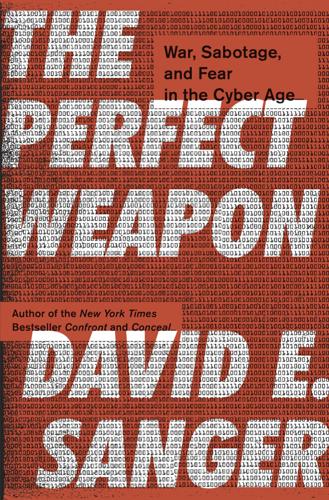
The Perfect Weapon: War, Sabotage, and Fear in the Cyber Age
by
David E. Sanger
Published 18 Jun 2018
That explains why about one-third: Philip Bump, “America’s Outsourced Spy Force, by the Numbers,” The Atlantic, June 10, 2013, www.theatlantic.com/national/archive/2013/06/contract-security-clearance-charts/314442/. In 2005 the air force hired the RAND Corporation: Evan S. Medeiros et al., A New Direction for China’s Defense Industry, Rand Corporation, 2005, www.rand.org/content/dam/rand/pubs/monographs/2005/RAND_MG334.pdf. blocked the purchase: Steven R. Weisman, “Sale of 3Com to Huawei Is Derailed by U.S. Security Concerns,” New York Times, February 21, 2008, www.nytimes.com/2008/02/21/business/worldbusiness/21iht-3com.html.
…
It feared that Huawei’s equipment and products—everything from cell phones to giant switches that run telephone networks to corporate computer systems—were riddled with secret “back doors.” Classified intelligence reports and unclassified congressional studies all warned that one day the People’s Liberation Army and China’s Ministry of State Security would exploit those back doors to get inside American networks. In 2005 the air force hired the RAND Corporation to examine the threat from Chinese networking firms. Huawei was high on the list of threats: RAND concluded that a “digital triangle” of Chinese firms, the military, and state-run research groups were working together to bore deeply into the networks that keep the United States and its allies running.
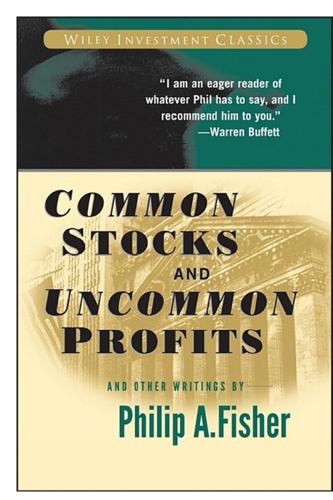
Common Stocks and Uncommon Profits and Other Writings
by
Philip A. Fisher
Published 13 Apr 2015
This would tend to justify the price-earnings ratio of around 20 at which this stock has frequently sold in the past five years. “Indicating that this growth may continue for many years to come, the Rand Corporation, brilliant research arm of the Air Force owned by the government, has been quoted in the press as predicting an important future in the 1960's for the as yet almost non-existent field of beryllium metal as a structural material. The Rand Corporation, among other things correctly foretold, shortly after the war, the development in titanium. “More immediate than any eventual market that may develop for beryllium as a structural material, 1958 should see this company bring into volume production another brand-new product.
…
See also Products Production, low-cost Products Professional advisor. See Financial advisors Profitability Profit margins Profits short-range vs. long-range Promotional companies. See also Young companies Promotion from within Q Quality, of people Quibbling over eighths and quarters R Rand Corporation Raychem Corporation RCA Recessions and bonds Reporting Research, consulting Research and development. See also Market research; Scuttlebutt and size Research scientists, as advisors Risk Rogers Corporation Rohm & Haas Roosevelt, Franklin D. S Safety of investment Sales potential increases in and profit margins research and development and Sales organization Saving, and stock prices Scale School of Random Walkers Scuttlebutt Sears Second dimension, of a conservative investment Securities and Exchange Commission (SEC) Securities dealers.
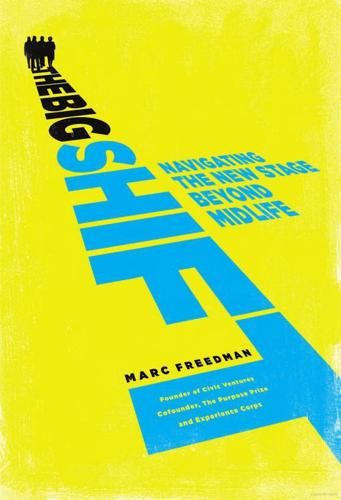
The Big Shift: Navigating the New Stage Beyond Midlife
by
Marc Freedman
Published 15 Dec 2011
The semicolon suggests continuity, a genuine break, and more to come. For a life course in desperate need of punctuation, the grown-up gap year is the perfect way to rectify the run-on sentence. Many people are already taking time off, in one form or another. Some even call it retirement. A 2010 study from the RAND Corporation shows that a sizable portion of the U.S. population first retires and then “unretires,” an act researchers find is primarily by design and not the result of unexpected circumstances. In other words, many may be using the cover of retirement, followed by unretirement, as a kind of de facto gap period.
…
CHAPTER 7: TEN STEPS TOWARD A NEW STAGE 131 Carl Jung argued that: Carl Jung, “The Stages of Life,” in The Structure and Dynamics of the Psyche, by Carl Jung (Princeton: Princeton University Press, 1969). 131 In her groundbreaking “Grandmother Hypothesis”: Kristen Hawkes, “Grandmothers and the Evolution of Human Longevity,” American Journal of Human Biology 15 (2003). 132 Historian Jill Lepore: Jill Lepore, “Baby Talk: The Fuss About Parenthood,” New Yorker, June 29, 2009. 135 the “optimal design for a new stage of life”: “On the Brink of a Brand-New Old Age,” New York Times, January 2, 2001. 135 it’s almost as if the GPS program: I’m indebted to my former colleague John Gomperts for this image. 139 A 2010 study from the RAND Corporation: Nicole Maestas, “Back to Work: Expectations and Realizations of Work After Retirement,” Journal of Human Resources 45, no. 3 (2010): 718–748. 139 In Britain, for example, there are an estimated 200,000: Geraldine Bedell and Rowena Young, eds., The New Old Age: Perspectives on Innovating Our Way to the Good Life for All (London: National Endowment for Science, Technology, and the Arts, 2009), http://www.nesta.org.uk/library/documents/the-new-old-age.pdf. 139 Daniel Pink suggests: Daniel H.
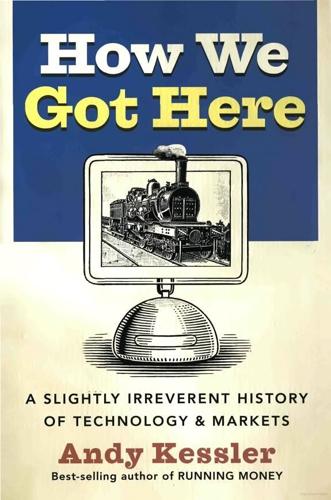
How We Got Here: A Slightly Irreverent History of Technology and Markets
by
Andy Kessler
Published 13 Jun 2005
The British Empire had died and now was officially cremated. Work on computers and their acronymic names took off everywhere, with added urgency when the Soviets tested their atomic bomb in 1949: Turing’s MADAM; Maurice Vincent Wilkes’s EDSAC Electronic Delay Storage Automatic Calculator at Cambridge; Rand Corporation’s UNIVAC - Universal Automatic Computer; and topping them all acronymically, Nick Metropolis’ MANIAC - Mathematical and Numerical Integrator and Computer. Each contained more vacuum tubes, more memory and more sophisticated programming. Most were funded directly or indirectly by the Army or Navy, to research guided missiles, hydrogen bombs and aircraft design.
…
NORAD was nervous about being out of touch, especially with its command center dug into the mountains near Cheyenne. So the Air Force sprinkled money around for research on ways to resolve the vulnerability of communications networks, which were dependant on centralized phone switches. Some of it went to the RAND Corporation, a Santa Monica, California think-tank spun out of Douglas Aircraft in 1948 to worry about such things. One researcher there, Paul Baran, was an electrical engineer who had worked at nearby Hughes Aircraft. In August 1964, he laid out his theory in a paper titled “On Distributed Computing.” You can read it at RAND’s website.
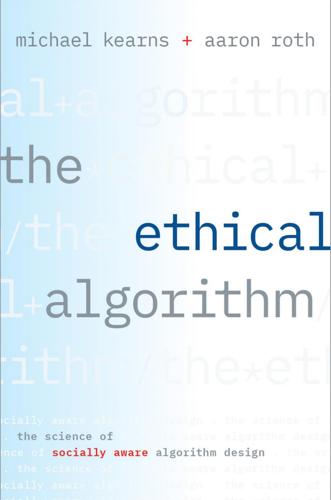
The Ethical Algorithm: The Science of Socially Aware Algorithm Design
by
Michael Kearns
and
Aaron Roth
Published 3 Oct 2019
But since mutual cooperation is not unilaterally stable, we drag each other into the sabotaging abyss of equilibrium, hence the “dilemma”. Despite the simplicity of such games, they have occasionally been applied to rather serious and high-stakes problems. During the Cold War, researchers at the RAND Corporation (a long-standing think tank for political and strategic consulting) and elsewhere used game-theoretic models to try to understand the possible outcomes of US-Soviet nuclear war and détente—efforts that were memorably if darkly lampooned in the 1964 Stanley Kubrick film Dr. Strangelove, which ends with the Prisoner’s Dilemma–like nuclear annihilation of the world.
…
See also precise specification goal racial data and bias and algorithmic violations of fairness and privacy, 96 and college admissions models, 77 and dating preferences, 94–97 and “fairness gerrymandering,” 86–89 and fairness issues in machine learning, 65–66 and forbidden inputs, 66–67 and Google search, 14–15 and lending decisions, 191 and scope of topics covered, 19 and unique challenges of algorithms, 7 RAND Corporation, 100 randomization and differential privacy, 36–37, 40–44, 47 random lending, 69–71 random sampling, 18–19, 40 and self-play in machine learning, 131–32 and trust in data administrators, 45–47 rare events, 144 regulation of data and algorithms. See laws and regulations reidentification of anonymous data, 22–31, 33–34, 38 relationship status data, 51–52 religious affiliation data, 51–52 reproducibility (replication) crisis, 19–20, 156–60 residency hiring, 126–30 resume evaluation, 60–61 Rock-Paper-Scissors, 99–100, 102–3 Roth, Alvin, 130 RuleFit algorithms, 173 runs on banks, 95–96 sabotage, 99–100 Sandel, Michael, 177–78 SAT tests and fairness vs. accuracy of models, 65, 74–80 and predictive modeling, 8 and word analogy problems, 57 and word embedding models, 59–60 scale issues, 139, 143–45, 192.
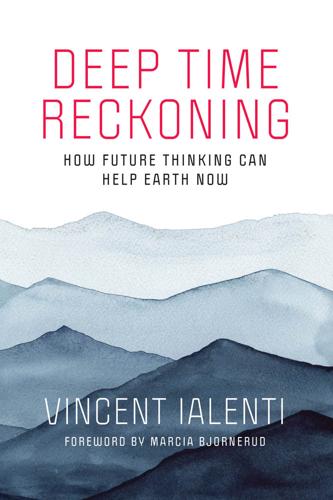
Deep Time Reckoning: How Future Thinking Can Help Earth Now
by
Vincent Ialenti
Published 22 Sep 2020
Members envision future worlds from several different scales, levels, and frames of analysis, as they socialize and tinker with long-term ideas in its Perspective-Exchanging Parlors. They discuss how ancient bacteria has reawakened because of rising global temperatures, after being frozen in Siberian soil for hundreds of thousands of years; they debate the merits of the RAND Corporation’s long-term probability forecasts and strategic planning methods, which the US military has used since the 1950s. Arguing over whether postmodern cynicism has fostered widespread distrust in human hearts’ and minds’ capacities for achieving a more perfect long-termism, they ask whether left-leaning activists and critical scholars have grown too pessimistic about technology, melancholic about environmental futures, or shy about answering grand theoretical questions.
…
See also Safety Case archaeological analogue studes, 47 Complementary Considerations (report), 56, 67, 158 Construction License Application Safety Case, 73, 74 copper nuclear waste canisters, 49 Databank, 58, 65–66, 139 Models and Data report, 72, 94–95, 105, 132 project management hierarchy, 19, 20 Synthesis report, 72, 76, 105 POTTI, 72 Pöyry Oyj, 19 Predecessor preservation, 123–128, 161 Principles of Geology (Lyell), 17 Psychozoic era, 167n20 Quantitative modeling and modelers, 72, 75–76 input/output patterns, 77–78 networks, 77–78 Radionuclide Transport, 161 RAND Corporation, 152 Rasmus (modeling expert), 126, 140 Reasoning analogous reasoning and research, 53–54 and multiple lines of reasoning, 54–57 Reckoning of Time, The (Bede), 151 Reckonings, 18, 161–162 and futility, 87–89 reimagining landscapes and urban areas, 60–64 Ressentiment, 131, 162 Reuters Institute (Oxford), 31 Rigor Mortis (Harris), 29 Risto (computer modeling expert), 18–22, 58, 64, 88 Rock Suitability Criteria, 72 Roma minority in Finland, 9 Rose, Nikolas, 16 Rosetta Disks, 153 Royal Dutch Shell, 113 Rudwick, Martin J.
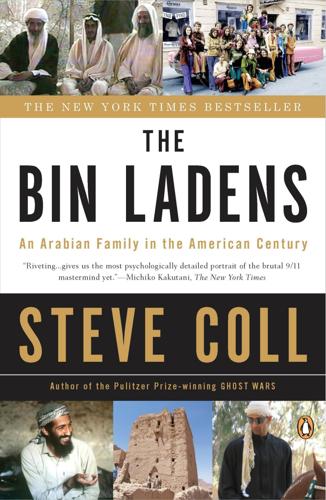
The Bin Ladens: An Arabian Family in the American Century
by
Steve Coll
Published 29 Mar 2009
Thanks also to Sunlen Miller, Sami Sockol, Emily Eckland, Alexandra Coll, Emma Coll, Cynthia Zeiss, and Victoria Green for their research and organizing skills Bruce Hoffman, Kim Cragin, Daniel Byman, Martha Crenshaw, Rohan Gunaratna, Nadia Oweidat, Sara Daly, Heather Gregg, and Anna Kasupski of the Rand Corporation’s Early Al Qaeda History Working Group, where I was an ad hoc participant, provided generous support and inspiring scholarship. Anna Kasupski’s work on financial issues proved particularly valuable. In other research forums, Dan Benjamin and Steven Simon made serious discourse unusually enjoyable.
…
The brief analysis of U.S. and Saudi governmental attitudes toward the war here and elsewhere in this chapter is drawn from the research for Ghost Wars, chapters 1–5. 4. Al-Rasheed, A History of Saudi Arabia, p. 155. 5. The company had a zakat fund: Interview with Carmen Bin Laden, September 29, 2004. Also, Rand Corporation researcher Anna Kasupski, reviewing materials about the early history of the Services Office in Peshawar, located a 1985 document describing donations from a Bin Laden family foundation. “Rand: Early History of Al Qaeda Working Group, 2006.” 6. Pakistani air force veterans, Mohammed Daoud: Interview with David Grey, February 21, 2006.
…
The Iran-Contra Affair: The Making of a Scandal, 1983–1988, National Security Archive document set, George Washington University. “The 9/11 COMMISSION REPORT: Final Report of the National Commission on Terrorist Attacks Upon the United States,” July 2004. Washington, D.C.: Government Printing Office. PROCEEDINGS OF THE EARLY HISTORY OF AL QAEDA WORKING GROUP, 2006–2007, Rand Corporation; Bruce Hoffman and Kim Cragin, co-directors; Daniel Byman, Martha Crenshaw, Peter Bergen, Lawrence Wright, Rohan Gunaratna, Nadia Oweidat, Sara Daly, Heather Gregg, Ann Kasupski, researchers and presenters. RECORDS OF THE DEPARTMENT OF STATE, U.S. National Archives and Records Administration, College Park, Maryland.
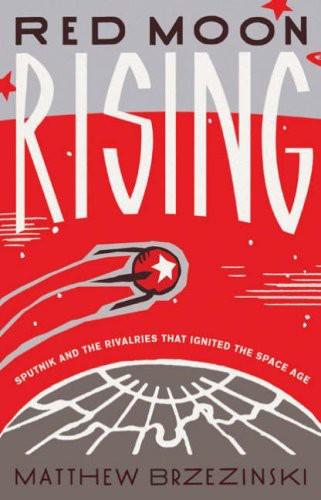
Red Moon Rising
by
Matthew Brzezinski
Published 2 Jan 2007
The idea, at the time, had been met with skepticism by the National Security Council, owing to its technological complexity, though it was hardly revolutionary. The notion of using the cosmos as a surveillance platform had long stirred the imagination of rocket scientists and spies on both sides of the cold war divide. As early as 1946, a West Coast military think tank, the RAND Corporation, had envisioned successors of von Braun’s V-2 rockets one day carrying cameras beyond the stratosphere. Von Braun himself had made a similar pitch to the army brass in 1954. “Gone was the folksy fellow with rolled-up sleeves and Disneyesque props,” wrote the historian William Burrows of the meeting.
…
The message from Moscow was loud and clear: a Soviet satellite would soon be orbiting the earth, and ordinary citizens would be able to see and hear it. The warning signals did not fall completely on deaf ears in America. The New York Times started researching a story about an impending Soviet launch. The RAND Corporation also carefully clipped all the Soviet press briefs and forwarded them to the Pentagon with an appended note concluding that the Soviets must be serious. But in Washington, no one had time for talk of satellites. The country was in the throes of a looming crisis that had begun with the opening of the school year and was quickly escalating into a major challenge to President Eisenhower’s authority
…
a Ford repair shop at Fifth and K streets: Bissell, Reflections of a Cold Warrior, p. 104. “I don’t ‘believe’ that the Soviets are ahead”: New York Times, February 6, 1957. 132 “Every day we don’t reverse our policy is a bad day for the Free World”: Ibid., August 18, 1957. a West Coast military think tank, the RAND Corporation: Dickson, Sputnik, p. 46. “Gone was the folksy fellow”: Burrows, This New Ocean, p. 145. 133 SR-71 Blackbird: http://www.sr-71.org/blackbird/sr-71/html. Bissell was alarmed that it was not even at the blueprint stage: Bissell, Reflections of a Cold Warrior, p. 134. 134 to personally inspect every Jupiter C launch: Bergaust, Wernher von Braun, p. 243.

Radical Technologies: The Design of Everyday Life
by
Adam Greenfield
Published 29 May 2017
It’s present in the Corbusian doctrine that the ideal and correct ratio of spatial provisioning in a city can be calculated from nothing more than an enumeration of the population, it underpins the complex composite indices Jay Forrester devised in his groundbreaking 1969 Urban Dynamics, and it lay at the heart of the RAND Corporation’s (eventually disastrous) intervention in the management of 1970s New York City.40 No doubt part of the idea’s appeal to smart-city advocates, too, is the familial resemblance such an algorithm would bear to the formulae by which commercial real-estate developers calculate air rights, the land area that must be reserved for parking in a community of a given size, and so on.
…
Dave Grossman, On Killing: The Psychological Cost of Learning to Kill In War and Society, London: Little, Brown, 1995. 12.The reality of the US remote assassination program is comprehensively detailed in the Intercept, “The Drone Papers,” October 15, 2015, theintercept.com. 13.Daniel Gonzales and Sarah Harting, “Designing Unmanned Systems With Greater Autonomy,” Santa Monica: RAND Corporation, 2014. For a poignant, if chilling, depiction of an autonomous combat system nearing the threshold of self-awareness, see Peter Watts, “Malak,” rifters.com, 2010. 14.American Civil Liberties Union, “War Comes Home: The Excessive Militarization of American Policing,” June 2014, aclu.org; see also Daniel H.
…
P., 269 Machii, Isao, 266–7 machine learning, 8, 16, 60, 185, 192, 194, 209–57, 308 maker spaces, 93 MakerBot, 85, 88, 101, 104–5, 107 mapping, 22–5, 275, 278 Mann, Steve, 77–8 Marx, Karl, 70, 305 MasterCard, 120 Mason, Paul, 88 Mauthausen, 61 McDonald’s restaurant chain, 194–5 McDonough, William, 96 McNamara, Robert, 57 Merkle roots, 123 Metropolitan Police Service, London, 231 Microsoft, 38–9, 262, 275 minimal techno (music genre), 221 Minority Report (movie), 227, 230 MIT Technology Review (journal), 243 Mitte, Berlin neighborhood, 71–2 Monobloc chair, 106 Monroe, Rodney, 230 Moore’s Law, 88, 93 Morris, David, 256–7 Mountain View, California, 284 M–Pesa digital currency, 117 Music Genome Project, 220 Musk, Elon, 222 National Institute of Justice, 233 National Public Radio, 41, 192 National September 11th Memorial, 65 National Technical University of Athens, 173 NAVSTAR Global Positioning System, 21 NBC Universal, 220 neural networks, 214–16, 219, 264, 266 Nevada, 192 New York City, 51, 56–8, 136, 238 New York Times (newspaper), 177 Next Rembrandt project, 262–3, 265 near-field communication standard (NFC), 17, 117 Niantic Labs, 65 Niemeyer, Oscar, 261 Nieuwenhuys, Constant, 190 Niigata, Japan, 301–2 niqab, 295 Nixon Administration, 204 nonvolatile memory, 15 North Dakota, 192 Norwegian black metal (music genre), 221 Nuit Debout protests, 3 Occupy movement, 167, 169 Oculus Rift virtual reality headset, 82 O’Neil, Cathy, 249 open source hardware, 102 OpenTable, 39–40, 46 Osborne, Michael A., 195 Ostrom, Elinor, 171 output neuron, 215 overtransparency, 240–1, 243 Pai, Sidhant, 98 Pandora music service, 220 Panmunjom Truce Village, 65 Pareto optimality, 55, 59 Paris, 1–6, 292 Pasquale, Frank, 244, 253 path dependence, 232, 299 PayPal, 120, 136, 220 PCWorld, 45 People Analytics, 198, 226, 232 perceptron, 214 Père Lachaise cemetery, 2, 5, 26 persoonskaart, Dutch identity card, 60 Pew Research Center, 41, 193 Pinellas County, Florida, 256 Placemeter, 51 polylactic acid plastic filament (PLA), 94, 98, 101 Pokémon Go, 63–5, 76, 79 Polari, 311 policy network, 264 Pollock, Jackson, 261 Pony Express, 256 porosity, 28, 173 POSIWID, 155, 302 Postcapitalism (Paul Mason), 88 power/knowledge, 62 predictive policing, 227, 230, 232, 235 PredPol, 229, 231, 236, 244, 254 proof-of-work, 128–30, 140–1, 143, 290 prosopagnosia. See faceblindness Protoprint, 99–100, 102 provisioning of mobile phone service, 17, 56 Průša, Josef, 105 psychogeography, 40, 51 Quantified Self movement, 33–6, 40 Radical Networks conference, 314 radio frequency identification (RFID), 200, 296 Radiohead, 35 RAND Corporation, 56–8 RATP, 5 recall, 217, 234–5 redboxing, 229–30 regtech, 157 Reich, Robert, 196 Relentless (AN and Omerod), 265 Rensi, Ed, 195 RepRap 3D printer, 86–7, 93, 104–5, 306 RER, 2, 5 Richelieu, Cardinal, 62 Rifkin, Jeremy, 88, 205, 312 RiteAid, 197 Riverton, Wyoming, 63 Royal Dutch Shell Long-Term Studies Group, 287 Samsung, 285–6 Sandvig, Christian, 252 “Satoshi Nakamoto,” 115, 118, 147, 303 scenario planning, 287 Schneier, Bruce, 45, 243 Scott, James C., 311 SCUM Manifesto (Valerie Solanas), 191 Seoul, 6, 18, 54, 264–5, 284 Metro, 54 Sennett, Richard, 111 sentiment analysis, 198 Serra, Richard, 70 SHA–256 hashing algorithm, 123 Shenzhen Special Economic Zone, 18–19, 43 Shodan search engine, 43 Shoreditch, London neighborhood, 136 Shteyngart, Gary, 246 Sidewalk Labs.

Click Here to Kill Everybody: Security and Survival in a Hyper-Connected World
by
Bruce Schneier
Published 3 Sep 2018
Murdoch and Ross Anderson (9 Nov 2014), “Security protocols and evidence: Where many payment systems fail,” FC 2014: International Conference on Financial Cryptography and Data Security, https://link.springer.com/chapter/10.1007/978-3-662-45472-5_2. 100Amazingly, the UK may make this: Patrick Jenkins and Sam Jones (25 May 2016), “Bank customers may cover cost of fraud under new UK proposals,” Financial Times, https://www.ft.com/content/e335211c-2105-11e6-aa98-db1e01fabc0c. 100And similarly, in the US: Federal Trade Commission (Aug 2012), “Lost or stolen credit, ATM, and debit cards,” https://www.consumer.ftc.gov/articles/0213-lost-or-stolen-credit-atm-and-debit-cards. 101“security is a tax on the honest”: Bruce Schneier (2012), Liars and Outliers: Enabling the Trust That Society Needs to Thrive, Wiley, http://www.wiley.com/WileyCDA/Wiley Title/productCd-1118143302.html. 101“guard labor”: Arjun Jayadev and Samuel Bowles (Apr 2006), “Guard labor,” Journal of Development Economics 79, no. 2, http://www.sciencedirect.com/science/article/pii/S0304387806000125. 101The tech analyst firm Gartner estimates: Gartner (16 Aug 2017), “Gartner says worldwide information security spending will grow 7 percent to reach $86.4 billion in 2017,” https://www.gartner.com/newsroom/id/3784965. 101If we want more security: Allison Gatlin (8 Feb 2016), “Cisco, IBM, Dell M&A brawl may whack Symantec, Palo Alto, Fortinet,” Investor’s Business Daily, https://www.investors.com/news/technology/cisco-ibm-dell-ma-brawl-whacks-symantec-palo-alto-fortinet. 102A 2017 Ponemon Institute report concluded: Ponemon Institute (20 Jun 2017) “2017 cost of data breach study,” http://info.resilientsystems.com/hubfs/IBM_Resilient_Branded_Content/White_Papers/2017_Global_CODB_Report_Final.pdf. 102A Symantec report estimated: Symantec Corporation (23 Jan 2018), “2017 Norton cyber security insights report: Global results,” https://www.symantec.com/content/dam/symantec/docs/about/2017-ncsir-global-results-en.pdf. 103“We found that resulting values are”: I was a member of the steering committee for this research project. Paul Dreyer et al. (14 Jan 2018), “Estimating the global cost of cyber risk,” RAND Corporation, https://www.rand.org/pubs/research_reports/RR2299.html. 6. WHAT A SECURE INTERNET+ LOOKS LIKE 105“disconcerting lack of regard”: Finn Lützow-Holm Myrstad (1 Dec 2016), “#Toyfail: An analysis of consumer and privacy issues in three internet-connected toys,” Forbrukerrådet, https://consumermediallc.files.wordpress.com/2016/12/toyfail_report_desember2016.pdf. 106Germany banned My Friend Cayla: Philip Oltermann (17 Feb 2017), “German parents told to destroy doll that can spy on children,” Guardian, https://www.theguardian.com/world/2017/feb/17/german-parents-told-to-destroy-my-friend-cayla-doll-spy-on-children. 106Mattel’s Hello Barbie had: Samuel Gibbs (26 Nov 2015), “Hackers can hijack Wi-Fi Hello Barbie to spy on your children,” Guardian, https://www.theguardian.com/technology/2015/nov/26/hackers-can-hijack-wi-fi-hello-barbie-to-spy-on-your-children. 106In 2017, the consumer credit-reporting agency Equifax: Tara Siegel Bernard et al. (7 Sep 2017), “Equifax says cyberattack may have affected 143 million in the U.S.,” New York Times, https://www.nytimes.com/2017/09/07/business/equifax-cyberattack.html.
…
Dan Goodin (17 May 2017), “Fearing Shadow Brokers leak, NSA reported critical flaw to Microsoft,” Ars Technica, https://arstechnica.com/information-technology/2017/05/fearing-shadow-brokers-leak-nsa-reported-critical-flaw-to-microsoft. 165Vulnerabilities are independently discovered: Andy Greenberg (7 Jan 2018), “Triple Meltdown: How so many researchers found a 20-year-old chip flaw at the same time,” Wired, https://www.wired.com/story/meltdown-spectre-bug-collision-intel-chip-flaw-discovery. 165This implies that if the US government: In 2017, I tried to estimate the annual rate of rediscovery, using available data sets, and found it to be between 11% and 22%. Independently, a group of researchers from the RAND Corporation tried to estimate it as well, using different assumptions and a different data set; they found the rate to be less than 6%. We’re all blind folks touching different parts of the elephant. We each extrapolate from our own tiny pieces of data. Clearly we’re not going to learn much about the NSA’s capabilities this way.
…
Trey Herr, Bruce Schneier, and Christopher Morris (7 Mar 2017), “Taking stock: Estimating vulnerability recovery,” Belfer Cyber Security Project White Paper Series, Harvard Kennedy School Belfer Center for Science and International Affairs, https://papers.ssrn.com/sol3/papers.cfm?abstract_id=2928758. Lillian Ablon and Timothy Bogart (9 Mar 2017), “Zero days, thousands of nights: The life and times of zero-day vulnerabilities and their exploits,” RAND Corporation, https://www.rand.org/pubs/research_reports/RR1751.html. 165Plus, NOBUS doesn’t take into account: Scott Shane, Matthew Rosenberg, and Andrew W. Lehren (7 Mar 2017), “WikiLeaks releases trove of alleged C.I.A. hacking documents,” New York Times, https://www.nytimes.com/2017/03/07/world/europe/wikileaks-cia-hacking.html.https://www.nytimes.com/2017/11/12/us/nsa-shadow-brokers.html.

The Optimist: Sam Altman, OpenAI, and the Race to Invent the Future
by
Keach Hagey
Published 19 May 2025
In the fall of 2018, Jason Matheny, a onetime researcher on existential risk at the Future of Humanity Institute who had gone on to lead the US government’s Intelligence Advanced Research Projects Activity (IARPA), reached out to Toner to recruit her for a new think tank he was setting up at Georgetown. By early 2019, she had helped launch the Center for Security and Emerging Technology (CSET). (Matheny would lead it for two years before joining the Biden White House as an advisor on technology national security. He would go on to lead the RAND Corporation, where both he and CSET helped shape the Biden administration’s landmark executive order on AI, the first real piece of US policy responding to the AI revolution.) On Karnofsky’s recommendation, Toner had a brief call with Altman about joining the board, followed by more formal interviews with every other board member, and by 2021 she replaced Karnofsky.
…
When Altman finally broke his silence, he offered tepid approval, saying there were “some great parts” of the order, but warning that the government needed to be careful “not to slow down innovation by smaller companies/research teams.”9 The order arguably bore the imprint not so much of OpenAI as of the EA billionaires who had funded a vast web of interlocking think tanks, institutes, and fellowships that a cynic might think of as the AI Doomer Industrial Complex. The order was deeply influenced by the RAND Corporation, the original government think tank, which in recent years has received tens of millions of dollars from Open Philanthropy and has been led by self-described EA Jason Matheny. In addition to sitting on Anthropic’s Long-Term Benefit Trust before joining RAND, Matheny recruited both Toner and McCauley to their current jobs—Toner at CSET and McCauley at RAND.
…
Louis, 27 Puck (magazine), 297–98 Puerto Rico conference on AI safety (2015), 167–70, 207, 211 Qualcomm subsidiary, 120 Quora, 220, 234, 278 race and racism antisemitism in chatbots, 270 first Black mayor of Chicago, 21–22, 33, 37 Latino people and communities, 21, 35 racism among tech bros, 164–65 redlining, racially restrictive covenants, and slum clearance, 22, 26–27, 29, 40 white flight, 22, 26, 32 see also affordable housing; Black people and communities Radford, Alec, 218–21, 241–43 Radiate (formerly Viendo), 76, 77–82, 85, 88–90, 93–94, 96–101 Raimondo, Gina, 273 Rain Neuromorphics AI chip startup, 232 Rainert, Alex, 118 Ralston, Geoff, 170, 235–36 Ramsay, Mike, 121–22 RAND Corporation, 267, 299, 300, 301 Rap Genius (later Genius), 133 Rashid Al Maktoum, Maktoum bin Mohammed bin, 274 “rationalism,” 143, 176, 210, 212, 225, 264 reality distortion field (RDF), 61 Rechter, Joe, 27 Reconstruction, 26 recurrent neural networks (RNNs), 219 Recurse Center, 176 Reddit, 70, 76, 81, 160–63, 171, 203, 218, 241, 251–52 Reed Hastings, 204 Reform Judaism, 15–16, 24, 44, 31, 43, 227 reinforcement learning, 147, 185, 191–93, 264, 265, 284 Renewing Cities (Gittell), 35 rent strikes, 27 Republican Party, 21, 203, 207, 266, 278 RescueTime time-tracking app, 245 Resident Evil (video game), 97 Retro Biosciences, 257, 259 Reynolds, Malvina, 162 Rhodes, Elizabeth, 195 “RIP Good Times” deck, 117, 123 Rippling (startup), 250 Rizzo, Frank, 28 Roberts, Steve, 42–43, 53–54, 59 Roble, Jim, 202 Roedinger, Kurt, 46–47, 51–53 Rolling Stone article alleged gang rape at the University of Virginia, 204 Roosevelt, Theodore, 46 Rosewood resort, Menlo Park, CA, 177, 183 Ross, Blake, 56, 63 Rostenkowski, Dan, 34–35 Rowghani, Ali, 3, 158–59 RSS-feed format, 63 Rubik’s cube–solving robot hand, 218 Rusenko, David, 157 Russell, Stewart, 305–6 Russia, 23, 27n Russian Hill neighborhood of San Francisco, 86, 260, 293, 315 Rutkowski, Greg, 263 Ryan, Jim, 104 Sacks, David, 139–40 Safari web browser, 111 SAFE (Simple Agreement for Future Equity) convertible notes, 94–95 Safe Superintelligence Inc.

The Bill Gates Problem: Reckoning With the Myth of the Good Billionaire
by
Tim Schwab
Published 13 Nov 2023
Their experts have misled them, and I did my best to try to correct them, and they weren’t interested.” In 2018, the Gates Foundation funded the RAND Corporation to study its teacher evaluation project. Its findings put a period (or an exclamation point) on a story that had already been widely written: Gates’s teacher evaluation effort had failed. Even Gates-funded outlets like EdSurge reported this news. We might give credit to the Gates Foundation for not doubling down on teacher evaluations and not strong-arming the RAND Corporation to produce a more favorable study. But if the foundation were really the organization it claims to be, working in partnership with teachers and communities, it would publicly apologize for its failures and offer compensation and reparations for all the harm it has caused, from the teacher-shaming culture it engendered to the tens of millions of taxpayer dollars that were spent, or wasted, on its failed pilot project in Hillsborough County
…
” $575 million: Tony Wan, “The Gates Foundation Spent $200M+ Trying to Improve Teacher Performance, and All It Got Was This Report,” EdSurge, June 29, 2018, https://www.edsurge.com/news/2018-06-29-the-gates-foundation-spent-200m-trying-to-improve-teacher-performance-and-all-it-got-was-this-report; Brian M. Stecher et al., Improving Teaching Effectiveness: Final Report: The Intensive Partnerships for Effective Teaching Through 2015–2016, RAND Corporation, June 21, 2018, 333, https://www.rand.org/pubs/research_reports/RR2242.html. “most decisive factor”: Gates, speech at the National Conference of State Legislatures. $100 million: Marlene Sokol, “Sticker Shock: How Hillsborough County’s Gates Grant Became a Budget Buster,” Tampa Bay Times, December 15, 2015, https://www.tampabay.com/news/education/k12/sticker-shock-how-hillsborough-countys-gates-grant-became-a-budget-buster/2250988/.
…
See also specific companies; and products pharmaceutical prices Philanthropy Roundtable Philippines Pierce, Todd Piketty, Thomas Piller, Charles Piper, Kelsey Pivotal Ventures Planet Money (radio show) Planned Parenthood Playboy pneumococcal vaccines pneumonia PnuVax polio polio eradication efforts Politico PolitiFact Poonawalla, Adar Poonawalla, Cyrus Population Council Populations Communications International Porter, Katie Portman, Rob Postsecondary National Policy Institute Postsecondary Value Commission Poynter Institute for Media Studies Prabhala, Achal Premium Times Centre for Investigative Journalism Preventing the Next Pandemic (Hotez) Prevnar vaccines Project syndicate Project Zero ProPublica prostate cancer drugs Pryor, Richard Public Citizen Public Health England Public Health Foundation of India (PHFI) public-private partnerships Putin, Vladimir Queens College Quigley, Mike Ragland, Alice Raikes, Jeff RAND Corporation Rasheed, Muneera Raveendran, Yadurshini Ravitch, Diane Razum, Oliver Reckhow, Sarah Reddy, Srinath Reich, Robert Reproductive Health Uganda Republicans Reserve Bank of India Resnik, David Reuters Reveal (radio show) Revelle, Natalie Road Ahead, The (Gates) Roberts, Dorothy Roche Rock, Joeva RockCreek Group Rockefeller, John D.
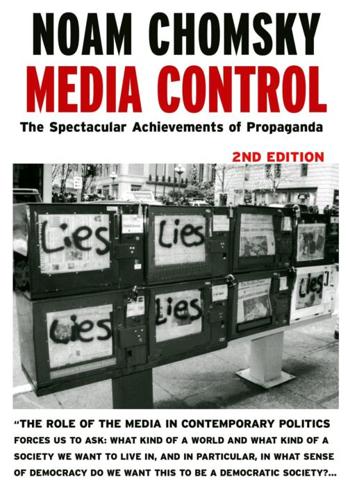
Media Control: The Spectacular Achievements of Propaganda
by
Noam Chomsky
Published 1 Jan 1974
First of all, it's a very close paraphrase of official government policy-very close, in fact. When it's government policy, it's called low-intensity conflict or counterterror. Incidentally, it's not just the United States. As far as I'm aware, this practice is universal. Just as an example, back in the mid 1960s the Rand Corporation, the research agency connected with the Pentagon mostly, published a collection of interesting Japanese counterinsurgency manuals having to do with the Japanese attack on Manchuria and North China in the 1930s. I was kind of interested-I wrote an article on it at the time comparing the Japanese counterinsurgency manuals with U.S. counterinsurgency manuals for South Vietnam, which are virtually identical.s That article didn't fly too well, I should say.
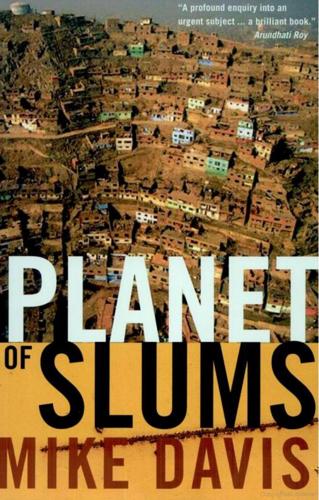
Planet of Slums
by
Mike Davis
Published 1 Mar 2006
Our recent military history is punctuated with city names — Tuzla, Mogadishu, Los Angeles [!], Beirut, Panama City, Hue, Saigon, Santo Domingo — but these encounters have been but a prologue, with the real drama still to come."8 To help develop a larger conceptual framework for MOUT, military planners turned in the 1990s to Dr. Strangelove's old alma mater, the Santa Monica-based RAND Corporation. RAND, a nonprofit think tank established by the Air Force in 1948, was notorious for wargaming nuclear Armageddon in the 1950s and for helping to strategize the Vietnam War in the 1960s. These days RAND does cities: its researchers ponder urban crime statistics, inner-city public health, and the privatization of public education.
…
tenure 80 slum-dwellers 32 Konadu-Agyemang, Kwadwo 84—5, 96 structural adjustment programs Korff, Riidiger 65, 83, 183 155-6 Korogocho 44 Khulna City 128 Krasheninnokov, Alexey 166 Kibaki, Mwai 101 Krishnakumar, Asha 140-1 Kibera 92, 94, 95, 101, 139, 143, 145 Krung Thep see Bangkok kidney trade 190 Kuala Lumpur 47, 111, 188 Kingston 32 Kumasi 35, 141-2 Kinshasa 191-8 inequalities 97 Lagos military planning 204 anti-IMF protests 162 population 4 "architecture of fear" 116 public services 155 beautification campaign 104 sewage 139 economic recession 14 slum-dwellers 23, 25 environmental disasters 129 urbanization 2, 16 evictions 101, 102 water 146 fires 128 Kipling, Rudyard 22, 138 land speculation 87 Kirkby, Richard 62 military planning 204 Klak, Thomas 67 overcrowding 93—4 Kohl, Helmut 153 population 4, 5 - 6 Kolkata (Calcutta) relocations 98 Dhapa dump 47 renting 35 evictions 101—2 road networks 119 housing 66 sewage 138 informal sector 181—2 slum-dwellers 23 inner city poverty 32 street-dwellers 36—7 Kipling on 22 structural adjustment programs NGOs 77 152 overcrowding 92 traffic accidents 132, 133 population 4 urbanization 1, 2, 8 poverty line 25n20 Victoria Island 115 privies 143 land speculation 82, 84-9, 91 refugees 55-6 land-titling 80-2, 90 rickshaws 189-90 landlordism 42-3, 44, 82-4, 86-7, 89 slum dwellers 26, 27 see also renting landslides 122-3 Lisbon 42 Laquian, Aprodicio 177 Lobito 49 Larkin, Emmet 16 London 82-3, 94, 175 Latin America conservative reform 81 Los Angeles 12, 16, 36, 124, 203 Luanda inequality 157—8 evictions 102-3 informal sector 176-7, 180, 182 growth of 16 inner-city poverty 32 poverty 25 labor 46-7 refugees 49 loss of manufacturing segregation 97 employment 164 modernization 15 unemployment 164 water sales 145—6 NGOs 77 Lubove, Roy 92 renting 43 Luce, Edward 171 rural migrants 46 Lusaka sanitation problems 137, 139, 148 demolitions 111 semi-proletarianization 174 disease 143 slow urban growth 54—5 poverty 31 squatting 38, 39, 83 segregation 96 structural adjustment programs shantytowns 37 155, 156 urbanization 5, 8, 10, 59-60 sites-and-services scheme 74 urban migration 51 women 158—9 Layachi, Azzedine 125-6 McNamara, Robert 71, 72, 75 Lee-Smith, Diana 44 magic 194, 195, 196-8 Lesbet, Djaffar 65 Malan, Rian 60-1 Lewis, Oscar 32 Malawi 97 liberalization 15, 155-6, 175 Malaysia 9, 26, 47, 188 Lilongwe 97 Mallaby, Sebastian 75, 76 Lima Mamayes 122 earthquakes 127 Managua 118-19 housing 34, 67 Manchester 16, 137, 138 middle classes 33 Mandalay 47-8, 107 population 4 Mangin, William 71 poverty 26-7, 32, 157 Manila squatters 89 beautification campaigns 104 urbanization 1, 16 class conflicts 98-9 Manila (Cont'd.) fires 127, 128 flooding 123-4 gated communities 116 structural adjustment programs 148, 152-3 urbanization 16 Mexico City hazardous slum locations 121 disease 143-4 land ownership 84 environmental disasters 126, 129, land prices 9 2 , 9 9 130 land-titling 82 housing 61—2 population 4 land ownership 91 poverty 26 loss of manufacturing Smoky Mountain 47, 127 employment 164 water sales 145 pollution 129, 133, 137 World Bank project 73 population 2n6, 4, 5 Manshiyet Nasr 93 region-based urbanization 10 Maoism 53, 56 regularization 80-1 Maputo 25, 143 renting 43, 45 Marcos, Imelda 73, 104 rural migrants 46, 55 Marcus, Steven 137-8, 174 Santa Cruz Meyehualco 47 Maroko 101 satellite cities 99 Marx, Karl 16 slum-dwellers 23, 26, 27, 31 Marxism 174 taxation 68 Mathare 142 urban growth 17, 59-60 Mathey, Kosta 66 Meyer, Hannes 61 Mayhew, Henry 20 micro-enterprises 80, 179, 180, 181, Mbuji-Mayi 8 megacities 2, 4, 5-8, 50-1, 147 megaslums 26, 28, 92, 150 183-4 middle classes 32, 43, 157, 202 car use 132,133 Megawati Sukarnoputri 113 housing policy 65, 66, 69 Mehta, Suketu 141 India 97, 100, 150, 171, 172 Mejfa, Manuel 105-6 inner-city housing 83 Mexico land ownership 91 debt crisis 159 property investment 86 housing 67 Russia 166 informal sector 176-7 tax evasion 67 poverty 26, 32, 157, 164-5, 184 World Bank urban projects 73, 74 rural areas 11 slum-dwellers 23, 24 see also elites; social class Middle East 39, 58, 165, 185 migrants 27-9, 46, 51-61, 168n63, 169-70, 172 sewage 138, 140 slum-dwellers 1 8 , 2 3 , 2 6 , 3 1 Milanovic, Branko 21 street-dwellers 36 military planning 202-6 urban development authorities Mitchell, Timothy 85 68-9 Mitlin, Diana 77 water sales 145 Mobutu, Sese Seko 58-9, 191, 192, women 141 193, 194 World Bank project 73-4 Mogadishu 203 Mwacan, Angeline 146 Mohan, Rakesh 40 Mwangi, Meja 138 Moi, Daniel Arap 101 Myanmar (Burma) 52, 107-8 Molina, Humberto 86 Mombasa 18 Nairobi Monrovia 137 child mortality 146 Montevideo 32-3 colonial period 51 Morel, Edmundo 105-6 evictions 101, 102 mortality 146-7 fires 128 Moscow 22, 166-7 inequality 95 Moser, Caroline 159 landlordism 44, 87 Mugabe, Robert 113, 114 overcrowding 94 Mumbai (Bombay) population growth 18 child labor 186 rack-renting 35, 42 colonial period 52 sewage 138, 139, 143 death rates 146-7 water contamination 137 deindustrialization 13 encroachment into protected areas 136 water sales 144-5 Naples 22, 42, 83, 94, 175-6 Nasser, Gamal Abdel 61, 200 evictions 102 natural disasters 122-8 housing 34, 65—6 Navarro 49 inequalities 96, 97 Nedoroscik, Jeffrey 33, 86, 190 land ownership 84 Negri, A. 201 overcrowding 92 Nehru, Jawaharlal 61, 200 pollution 133-4 neoclassical theory 163 population 4, 5 neoliberalism 16, 79, 81, 141, 163, 200 privatization 171 Chile 156 refugees 55-6 Colombian drug cartels 165 satellite cities 99 cost-recovery 72 neoliberalism (Cont'd.) flexible labor 185 Old Havana 32 Olympic Games 106-7 globalization 174 Orientalism 205-6 impact on healthcare 147-8 overcrowding 53, 92-4 India 170, 171, 172 individualism 184 informal sector 180, 186 Pakistan land speculation 84 Mexico 159 poverty 165—6 optimism 202 refugees 48, 56 privatization of toilets 141 South Africa 154 Nepal 23 slum population 24 Palm Springs 42 Paris 64, 98 New Bombay 65-6, 99 Payatas 124 New York 4, 5, 44, 92 Payne, Geoffrey 80, 126 NGOs see non-governmental peasants 53-4, 55, 60, 91, 169, 174 organizations Peattie, Lisa 72-3 Nguyen Due Nhuan 66 Peil, Margaret 87 Nicaragua 38 Penang 47 Nientied, Peter 88 Pentecostalism 195, 196 Nigeria Perez Jimenez, Marcos 54, 59 beautification campaign 104 peripherality 37-8, 93 child mortality 148 Peru housing 66-7 housing policy 62 slum population 24 informal sector 177 structural adjustment programs 152, 156 recession 157 rural migrants 27 Nkrumah, Kwame 200 slum population 24 Nlundu, Thierry Mayamba 198 squatting 38 Nock, Magdalena 11 Pezzoli, Keith 91 non-governmental organizations Philippines (NGOs) 70, 71, 75-9, 154, 184 beautification campaigns 104—5 North Korea 54 health spending 148 Nuru, Karin 51 slum population 24 World Bank project 73 Oberai, A. 67-8, 74, 179 Phnom Penh 35, 54, 107, 145 Ofeimun, Odia 101 Pinochet, Augusto 109, 156 Okome, Onookome 1 Pol Pot 54, 107 politics 100, 109-11 pollution 129-30, 133-4, 136-7, 143, 145-6 polycentric urban systems 9 , 1 0 structural adjustment programs 152, 153 toilets 141-2 transport 132 population density 92-3, 95-6, 99 water 146 population growth 2, 3, 7, 18 World Bank policies 164 Port-au-Prince 92, 142, 188, 204 property rights 45, 79-80, 179 Portes, Alejandro 180, 185n40 protests 161-3 Potts, Deborah 156 PRSP see Poverty Reduction Strategy poverty 24-6, 27, 151-73 Papers Africa 6, 18 public transport 131-2 Algeria 165 Puerto Rico 122 China 170 Pugh, Cedric 72, 160 Eastern Europe 167 Pusan 16 India 5, 170, 171, 172, 173 Putin, Vladimir 167 inner city 31-7 Latin America 156-7 Quarantina 47 Mexico 164-5, 184 Quito 32, 86, 136, 146, 159 Nigeria 156 overurbanization 16 racial segregation 96-7 Pakistan 165-6 Raftopoulos, Brian 114 periurban 201 Rakodi, Carole 155 profiting from 82-9 RAND Corporation 203-4 rural 51 Rangel, Jose Vincente 123 Russia 166 Rangoon 47-8, 102, 107-8, 144 UN-HABITAT report 20, 21 Reagan, Ronald 153 urban hazards 124, 128 refugees 48-9, 55-6, 100, 194 urbanization of 50 regularization 80-1 Poverty Reduction Strategy Papers (PRSP) 75-6 privatization renting 42-5 see also landlordism resistance 109-11, 161-3, 202 Algeria 165 Rhodesia see Zimbabwe Congo 193 rickshaws 188-90 education 203 Rigg, Jonathan 26 healthcare 149, 159 Riis, Jacob 20 housing 63, 71 Rio de Janeiro India 171 hazardous slum locations 122 Rio de Janeiro (Cont'd.) 150 inequality 157 colonial period 52, 53 inner city poverty 32 India 171 pollution 129 Mumbai 73 population 4 Santa Cruz Meyehualco 47 slum clearances 99, 102, 108 Santiago 10, 32, 109, 176 slum dwellers 27, 31 Santo Domingo 96, 102, 105-6, 203 verticalization of favelas 93 Rio/Sao Paulo Extended Metropolitan Range (RSPER) 5 Sao Paulo deindustrialization 13 favelas 17, 34 riots 162 gated communities 117-18 Riskin, Carl 168 industrialization 16 road networks 118-19 inner-city poverty 32 Roberts, Bryan 182 loss of manufacturing Robotham, Don 164 employment 164 Rocha, Mercedes de la 184 pollution 129, 130, 133 Rodenbeck, Max 33 population 4 Rodgers, Dennis 118-19 region-based urbanization 10 Rogerson, Christine 160-1 regularization 81 Roma 167 rent prices 86 Roy, Ananya 102 slum dwellers 23 Roy, Arundhati 79, 140 water contamination 136 RSPER see Rio/Sao Paulo Extended Metropolitan Range SAPs see structural adjustment programs Ruggeri, Laura 115,119-20 Schenk, Hans 46, 128 rural areas 1 0 , 1 1 , 1 6 0 Schenk-Sandbergen, Loes 141 China 9, 53-4 Schneider, Cathy 109 India 171-2 Schultz, George 153 see also peasants Scott, James 39 Russian Federation 23-4, 166-7 SCRSs see substandard commercial Sabana Perdida 105 Seabrook, Jeremy 9, 70, 72, 100 residential subdivisions Sadat, Anwar 110-11 Dhaka 189 Sadr City 144, 205 hazardous slum locations 121, St.
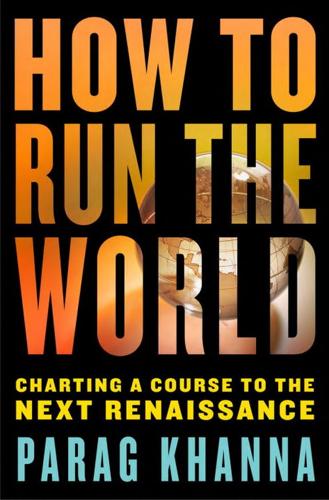
How to Run the World: Charting a Course to the Next Renaissance
by
Parag Khanna
Published 11 Jan 2011
Thanks to AID, these students are prepared for the open yet sometimes opaque world of neo-medieval diplomacy in which individuals can play multiple roles and juggle multiple issues at the same time. There is no better example of this than Zalmay Khalilzad. After the U.S. invasion of Afghanistan in 2001 and the ouster of the Taliban, Khalilzad—an Afghan American working for the RAND Corporation—was appointed special envoy and then ambassador to the country. Armed with knowledge of Dari and Pashto and billions of U.S. dollars, and eventually backed by tens of thousands of American troops, he set about nation building and playing warlord politics. For three years he was constantly whispering in Afghan president Hamid Karzai’s ear, and allegedly also in the ears of his opponents, earning him the label “viceroy.”
…
Princeton, N.J.: Princeton University Press, 2003. ———. One Economics, Many Recipes: Globalization, Institutions, and Economic Growth. Princeton, N.J.: Princeton University Press, 2008. Ronfeldt, David. Tribes, Institutions, Markets, Networks: A Framework About Societal Evolution. Santa Monica, Calif.: RAND Corporation, 1996. Root, Hilton L. Alliance Curse: How America Lost the Third World. Washington, D.C.: Brookings Institution Press, 2008. Rosenau, James N. Distant Proximities: The Dynamics and Dialectics of Globalization. Princeton, N.J.: Princeton University Press, 2003. ———. Turbulence in World Politics: A Theory of Change and Continuity.

The Smartphone Society
by
Nicole Aschoff
Increasingly, American society is plagued by a widespread sense of alienation and despair evident in myriad ways: the nationwide opioid epidemic, rising rates of suicide, and historically low levels of trust in the US government. According to a study by the Pew Charitable Trust, only 18 percent of Americans say they trust the government to do what is right “just about always” (3 percent) or “most of the time” (15 percent).60 The Rand Corporation’s recent report Truth Decay found that popular distrust and wariness had spread far beyond people’s feelings about the government. The report’s authors described “declining trust in formerly respected sources of factual information” and growing “uncertainty and anxiety” throughout the United States.61 In other spheres, belief in education as an escape route out of poverty is dampened by the resegregation of public schooling and skyrocketing college tuition, while fresh reports of widespread future job loss due to technology and artificial intelligence seem to appear on a daily basis.
…
“Inside Amazon: Wrestling Big Ideas in a Bruising Workplace.” New York Times, August 15, 2015. Kardashian, Kim. Selfish. New York: Rizzoli, 2016. Kavanagh, Jennifer, and Michael D. Rich. “Truth Decay: An Initial Exploration of the Diminishing Role of Facts and Analysis in American Public Life.” Santa Monica: Rand Corporation, 2018. Kazmin, Amy. “‘I Am a Troll’ by Swati Chaturvedi.” Financial Times, February 20, 2017. Kellaway, Lucy. “The Bliss of Being 396 Miles from My Lost Smartphone.” Financial Times, September 25, 2016. Khan, Lina M. “Amazon’s Antitrust Paradox.” Yale Law Journal 126, no. 3 (January 2017).

What Doctors Feel: How Emotions Affect the Practice of Medicine
by
Danielle Ofri
Published 3 Jun 2013
There is also a growing body of evidence to suggest that burned-out and emotionally fatigued doctors commit more medical errors.18 Measuring this precisely is quite difficult, but the higher doctors score on measures of burnout, the more errors they admit to making. In contrast, doctors who are more engaged in their work and life report fewer errors.19 A seminal study by the Rand Corporation followed twenty thousand patients and their doctors for two years.20 These were patients with ordinary chronic illnesses—diabetes, hypertension, heart disease, and depression—not acutely ill patients in the hospital. Patients and doctors alike were extensively interviewed. One of the most intriguing findings of the study was that patients were much more likely to take their prescribed medications when they were cared for by doctors who were satisfied with their jobs and lives.
…
See litigation manipulation, 13–14 Manning, Yvonne (patient who died of breast cancer, daughter filed suit), 178–85 MCAT (Medical College Admission Test), 52 medical education: and empathy loss, 30–36, 47, 147–50, 159; hidden curriculum of, 33–36; humanities studies, 49–50; integrated clerkships, 50–52; medical error education, 136–37; and medical terminology, 36–38; mixed messages of, 31–33; multiculturalism studies, 52–54; self-discipline demands of, 18; on shame, 136–37; and slang/gallows humor, 37–40, 43; structure of, 3–4, 32; and time management, 74–75, 143–45, 160–62 medical error: and disillusionment, 160; emotional toll of, 2, 124–27, 134–36, 175–76; and guilt, 87–89; medical education on, 136–37; reduction, 139; studies, 137–38 medical experience, 3 Medicine in Translation (Ofri), 26–27, 62–63, 97, 203, 206–7 Mercedes (patient who was thought to have Lyme disease), 175–76, 199–201 misdiagnosis, 85, 90–91, 175–77; anchoring bias error in, 2, 86–89; consequences of, 87–90, 124–27, 176–77; rates of, 92 Morbidity and Mortality (M&M) conferences, 54, 133–34, 193 multiculturalism studies, 52–54 music, 151–53 Natalie (psychiatric patient who attempted suicide), 187–89 negative emotions, 2 oath of Maimonides, 7, 10 Occam’s razor, 88 Ofri, Danielle, 26–27, 62–63, 97, 200–201, 203, 206–7 On Apology (Lazare), 128, 133 oncologists, 107–9, 134–36, 183–84 online ratings, 196–99 organ transplant, 25–28, 62–63, 95, 142, 170–72, 202–5 Osler, William, 3–4, 56, 57, 147, 210, 212 Overdiagnosed (Welch), 191–92 overdose, drug, 19–22, 76–83 overwhelmed, feeling: and decision making, 74–75; and empathy loss, 159; and fatigue, 30, 34, 70, 148, 169; and medical education structure, 32; and revulsion, 7–9, 10–12, 40–43, 57–58; and time pressures, 83–84 Paolini, Herdley (psychologist who created physician wellness program), 162–66 pain, perception of, 29–30 patient: emotion, 211–12; empathy and health outcomes of, 56–57, 110–13; patient-doctor relationship, 192–93, 210–11; patient-satisfaction surveys, 193, 196–99; personality traits, 12–15; view of misdiagnosis, 85 patient care consequences: and anger, 37, 132–33, 147–50, 159, 210; of grief, 98–105, 108–13, 122–23; of litigation, 139, 154–57, 178, 187, 190–92; of shame, 132–33 Peabody, Francis, 212 peaked T waves, 66–67 personal bias, 13–15 personal enrichment, 150–52 personality traits: patient, 12–15; physician, 133 physician evaluations, 196–99 Physicians Foundation study, 153–54 positive emotions, 2, 210–11 posttraumatic stress disorder (PTSD), 105–6, 108 Potter syndrome, 99, 101 pride, 124–25, 175–76 prognosis, difficulty telling, 25–28, 61–62, 127 pulmonary embolism, 86–89, 91–92 quality-measures movement, 3, 193–95 racial bias, 29–30 Rand Corporation study, 160 rape, 6–9, 141 Remen, Rachael Naomi, 165 report cards, 193–95 respect, 53–56 revulsion, 7–9, 10–12, 40–43, 57–58 risk management, 173–75, 181–85. See also litigation Robert Wood Johnson Medical School Humanism and Professionalism study, 49–50 sadness. See grief “self-induced” illness, 10, 18–22, 113–19, 146 self-judgment, 199–201 shame: and apology, 128, 133, 139; averting, 139; benefits of, 132, 139; and expectations, 130–31; and guilt, 125–29, 135–36, 138–39; medical education on, 136–37; patient care consequences of, 132–33 Shem, Samuel, 43–44 short-sightedness, 57–59 Singular Intimacies (Ofri), 200–201 slang/gallows humor.
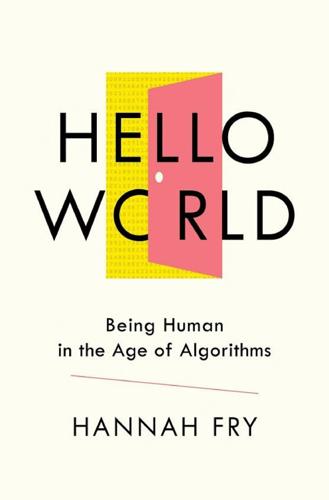
Hello World: Being Human in the Age of Algorithms
by
Hannah Fry
Published 17 Sep 2018
And the programme is well intentioned: officers visit people on the watch list to offer access to intervention programmes and help to turn their lives around. But there are concerns that the Strategic Subject List might not be living up to its promise. One recent investigation by the non-profit RAND Corporation concluded that appearing on it actually made no difference to an individual’s likelihood of being involved in a shooting.41 It did, however, mean they were more likely to be arrested. Perhaps – the report concluded – this was because officers were simply treating the watch list as a list of suspects whenever a shooting occurred.
…
(TV show) 97–9 John Carter (film) 180 Johnson, Richard 50, 51 Jones Beach 1 Jones, Robert 13–14 judges anchoring effect 73 bail, factors for consideration 73 decision-making consistency in 51 contradictions in 52–3 differences in 52 discretion in 53 unbiased 77 judges (continued) discrimination and bias 70–1, 75 intuition and considered thought 72 lawyers’ preference over algorithms 76–7 vs machines 59–61 offenders’ preference over algorithms 76 perpetuation of bias 73 sentencing 53–4, 63 use of algorithms 63, 64 Weber’s Law 74–5 Jukebox 192 junk algorithms 200 Just Noticeable Difference 74 justice 49–78 algorithms and 54–6 justification for 77 appeals process 51 Brixton riots 49–51 by country Australia 53 Canada 54 England 54 Ireland 54 Scotland 54 United States 53, 54 Wales 54 discretion of judges 53 discrimination 70–1 humans vs machines 59–61, 62–4 hypothetical cases (UK research) 52–3 defendants appearing twice 52–3 differences in judgement 52, 53 hypothetical cases (US research) 51–2 differences in judgements 52 differences in sentencing 52 inherent injustice 77 machine bias 65–71 maximum terms 54 purpose of 77–8 re-offending 54, 55 reasonable doubt 51 rehabilitation 55 risk-assessment algorithms 56 sentencing consistency in 51 mitigating factors in 53 substantial grounds 51 Kadoodle 15–16 Kahneman, Daniel 72 Kanevsky, Dr Jonathan 93, 95 kangaroos 128 Kant, Immanuel 185 Kasparov, Gary 5-7, 202 Kelly, Frank 87 Kerner, Winifred 188–9 Kernighan, Brian x Killingbeck 145, 146 Larson, Steve 188–9 lasers 119–20 Leibniz, Gottfried 184 Leroi, Armand 186, 192–3 level 0 (driverless technology) 131 level 1 (driverless technology) 131 level 2 (driverless technology) 131, 136 careful attention 134–5 level 3 (driverless technology) 131 technical challenge 136 level 4 (driverless technology) 131 level 5 (driverless technology) 131 Li Yingyun 45 Lickel, Charles 97–8 LiDAR (Light Detection and Ranging) 119–20 life insurance 109 ‘Lockdown’ (52Metro) 177 logic 8 logical instructions 8 London Bridge 172 London School of Economics (LSE) 129 Loomis, Eric 217n38 Los Angeles Police Department 152, 155 Lucas, Teghan 161–2, 163 machine-learning algorithms 10–11 neural networks 85–6 random forests 58–9 machines art and 194 bias in 65–71 diagnostic 98–101, 110–11 domination of humans 5-6 vs humans 59–61, 62–4 paradoxical relationship with 22–3 recognising images 84–7 superior judgement of 16 symbolic dominance over humans 5-6 Magic Test 199 magical illusions 18 mammogram screenings 94, 96 manipulation 39–44 micro-manipulation 42–4 Maple, Jack 147–50 Marx, Gary 173 mastectomies 83, 84, 92, 94 maternity wards, deaths on 81 mathematical certainty 68 mathematical objects 8 McGrayne, Sharon Bertsch 122 mechanized weaving machines 2 Medicaid assistance 16–17 medical conditions, algorithms for 96–7 medical records 102–7 benefits of algorithms 106 DeepMind 104–5 disconnected 102–3 misuse of data 106 privacy 105–7 medicine 79–112 in ancient times 80 cancer diagnoses study 79–80 complexity of 103–4 diabetic retinopathy 96 diagnostic machines 98–101, 110–11 choosing between individuals and the population 111 in fifteenth-century China 81 Hippocrates and 80 magic and 80 medical records 102–6 neural networks 85–6, 95, 96, 219–20n11 in nineteenth-century Europe 81 pathology 79, 82–3 patterns in data 79–81 predicting dementia 90–2 scientific base 80 see also Watson (IBM computer) Meehl, Paul 21–2 MegaFace challenge 168–9 Mercedes 125–6 microprocessors x Millgarth 145, 146 Mills, Tamara 101–2, 103 MIT Technology Review 101 modern inventions 2 Moses, Robert 1 movies see films music 176–80 choosing 176–8 diversity of charts 186 emotion and 189 genetic algorithms 191–2 hip hop 186 piano experiment 188–90 algorithm 188, 189–91 popularity 177, 178 quality 179, 180 terrible, success of 178–9 Music Lab 176–7, 179, 180 Musk, Elon 138 MyHeritage 110 National Geographic Genographic project 110 National Highway Traffic Safety Administration 135 Navlab 117 Netflix 8, 188 random forests 59 neural networks 85–6, 95, 119, 201, 219–20n11 driverless cars 117–18 in facial recognition 166–7 predicting performances of films 183 New England Journal of Medicine 94 New York City subway crime 147–50 anti-social behaviour 149 fare evasion 149 hotspots 148, 149 New York Police Department (NYPD) 172 New York Times 116 Newman, Paul 127–8, 130 NHS (National Health Service) computer virus in hospitals 105 data security record 105 fax machines 103 linking of healthcare records 102–3 paper records 103 prioritization of non-smokers for operations 106 nuclear war 18–19 Nun Study 90–2 obesity 106 OK Cupid 9 Ontario 169–70 openworm project 13 Operation Lynx 145–7 fingerprints 145 overruling algorithms correctly 19–20 incorrectly 20–1 Oxbotica 127 Palantir Technologies 31 Paris Auto Show (2016) 124–5 parole 54–5 Burgess’s forecasting power 55–6 violation of 55–6 passport officers 161, 164 PathAI 82 pathologists 82 vs algorithms 88 breast cancer research on corpses 92–3 correct diagnoses 83 differences of opinion 83–4 diagnosing cancerous tumours 90 sensitivity and 88 specificity and 88 pathology 79, 82 and biology 82–3 patterns in data 79–81, 103, 108 payday lenders 35 personality traits 39 advertising and 40–1 inferred by algorithm 40 research on 39–40 Petrov, Stanislav 18–19 piano experiment 188–90 pigeons 79–80 Pomerleau, Dean 118–19 popularity 177, 178, 179, 183–4 power 5–24 blind faith in algorithms 13–16 overruling algorithms 19–21 struggle between humans and algorithms 20–4 trusting algorithms 16–19 power of veto 19 Pratt, Gill 137 precision in justice 53 prediction accuracy of 66, 67, 68 algorithms vs humans 22, 59–61, 62–5 Burgess 55–6 of crime burglary 150–1 HunchLab algorithm 157–8 PredPol algorithm 152–7, 158 risk factor 152 Strategic Subject List algorithm 158 decision trees 56–8 dementia 90–2 prediction (continued) development of abnormalities 87, 95 homicide 62 of personality 39–42 of popularity 177, 178, 179, 180, 183–4 powers of 92–6 of pregnancy 29–30 re-offending criminals 55–6 recidivism 62, 63–4, 65 of successful films 180–1, 182–3, 183 superiority of algorithms 22 see also Clinical vs Statistical Prediction (Meehl); neural networks predictive text 190–1 PredPol (PREDictive POLicing) 152–7, 158, 228–9n27 assessing locations at risk 153–4 cops on the dots 155–6 fall in crime 156 feedback loop 156–7 vs humans, test 153–4 target hardening 154–5 pregnancy prediction 29–30 prescriptive sentencing systems 53, 54 prioritization algorithms 8 prisons cost of incarceration 61 Illinois 55, 56 reduction in population 61 privacy 170, 172 false sense of 47 issues 25 medical records 105–7 overriding of 107 sale of data 36–9 probabilistic inference 124, 127 probability 8 ProPublica 65–8, 70 quality 179, 180 ‘good’ changing nature of 184 defining 184 quantifying 184–8 difficulty of 184 Washington Post experiment 185–6 racial groups COMPAS algorithm 65–6 rates of arrest 68 radar 119–20 RAND Corporation 158 random forests technique 56–9 rape 141, 142 re-offending 54 prediction of 55–6 social types of inmates 55, 56 recidivism 56, 62, 201 rates 61 risk scores 63–4, 65 regulation of algorithms 173 rehabilitation 55 relationships 9 Republican voters 41 Rhode Island 61 Rio de Janeiro–Galeão International Airport 132 risk scores 63–4, 65 Robinson, Nicholas 49, 50, 50–1, 77 imprisonment 51 Rossmo, Kim 142–3 algorithm 145–7 assessment of 146 bomb factories 147 buffer zone 144 distance decay 144 flexibility of 146 stagnant water pools 146–7 Operation Lynx 145–7 Rotten Tomatoes website 181 Royal Free NHS Trust 222–3n48 contract with DeepMind 104–5 access to full medical histories 104–5 outrage at 104 Rubin’s vase 211n13 rule-based algorithms 10, 11, 85 Rutherford, Adam 110 Safari browser 47 Sainsbury’s 27 Salganik, Matthew 176–7, 178 Schmidt, Eric 28 School Sisters of Notre Dame 90, 91 Science magazine 15 Scunthorpe 2 search engines 14–15 experiment 14–15 Kadoodle 15–16 Semmelweis, Ignaz 81 sensitivity, principle of 87, 87–8 sensors 120 sentencing algorithms for 62–4 COMPAS 63, 64 considerations for 62–3 consistency in 51 length of 62–3 influencing 73 Weber’s Law 74–5 mitigating factors in 53 prescriptive systems 53, 54 serial offenders 144, 145 serial rapists 141–2 Sesame Credit 45–6, 168 sexual attacks 141–2 shoplifters 170 shopping habits 28, 29, 31 similarity 187 Slash X (bar) 113, 114, 115 smallpox inoculation 81 Snowden, David 90–2 social proof 177–8, 179 Sorensen, Alan 178 Soviet Union detection of enemy missiles 18 protecting air space 18 retaliatory action 19 specificity, principle of 87, 87–8 speech recognition algorithms 9 Spotify 176, 188 Spotify Discover 188 Sreenivasan, Sameet 181–2 Stammer, Neil 172 Standford University 39–40 STAT website 100 statistics 143 computational 12 modern 107 NYPD 172 Stilgoe, Jack 128–9, 130 Strategic Subject List 158 subway crime see New York City subway crime supermarkets 26–8 superstores 28–31 Supreme Court of Wisconsin 64, 217n38 swine flu 101–2 Talley, Steve 159, 162, 163–4, 171, 230n47 Target 28–31 analysing unusual data patterns 28–9 expectant mothers 28–9 algorithm 29, 30 coupons 29 justification of policy 30 teenage pregnancy incident 29–30 target hardening 154–5 teenage pregnancy 29–30 Tencent YouTu Lab algorithm 169 Tesco 26–8 Clubcard 26, 27 customers buying behaviour 26–7 knowledge about 27 loyalty of 26 vouchers 27 online shopping 27–8 ‘My Favourites’ feature 27–8 removal of revealing items 28 Tesla 134, 135 autopilot system 138 full autonomy 138 full self-driving hardware 138 Thiel, Peter 31 thinking, ways of 72 Timberlake, Justin 175–6 Timberlake, Justin (artist) 175–6 Tolstoy, Leo 194 TomTom sat-nav 13–14 Toyota 137, 210n13 chauffeur mode 139 guardian mode 139 trolley problem 125–6 true positives 67 Trump election campaign 41, 44 trust 17–18 tumours 90, 93–4 Twain, Mark 193 Twitter 36, 37, 40 filtering 10 Uber driverless cars 135 human intervention 135 uberPOOL 10 United Kingdom (UK) database of facial images 168 facial recognition algorithms 161 genetic tests for Huntington’s disease 110 United States of America (USA) database of facial images 168 facial recognition algorithms 161 life insurance stipulations 109 linking of healthcare records 103 University of California 152 University of Cambridge research on personality traits 39–40 and advertising 40–1 algorithm 40 personality predictions 40 and Twitter 40 University of Oregon 188–90 University of Texas M.
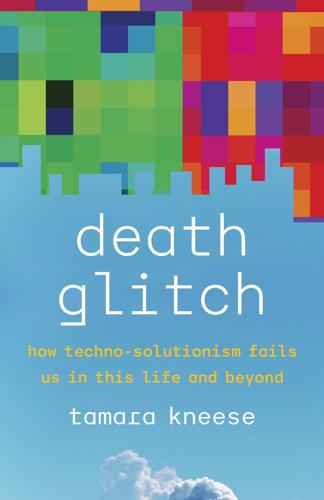
Death Glitch: How Techno-Solutionism Fails Us in This Life and Beyond
by
Tamara Kneese
Published 14 Aug 2023
The point was to network.42 West Coast money and power have a distinctive flavor. Some of the futurists in the room hailed from the Institute for the Future and the Long Now Foundation, Silicon Valley hubs for pondering humanity’s long-term relationship with technology. The Institute for the Future (IFTF), a splinter group formed out of the RAND Corporation, is currently based in Palo Alto. The late 1960s and 1970s saw the establishment of “trendcasting” as a field and “futurist” as a job category.43 Although IFTF is officially a nonprofit organization, it partners with major corporations and wealthy clients to make predictions about the future of technology to help guide investments.44 IFTF shares some infrastructural and spiritual affinities with the Long Now Foundation.
…
See also digital memorialization practices; estate planning “Mother of Invention” (Okorafor), (i) mourning photography, (i) Mulvin, Dylan, (i)n72 Murphy, Michelle, (i)n6 Murray, Stuart J., (i) Musk, Elon, (i) MyHeritage, (i) MyLifeBits, (i) MySpace, (i), (ii), (iii) National Association of Estate Planners and Councils (NAEPC), (i) Nature (journal), (i) necropolitics, (i), (ii), (iii) Neiman Marcus, (i), (ii), (iii) Nellesen, Keith, (i)n64 neoliberalism, (i) network anthropology, (i) Networked Mortality, (i) network society, (i) New Yorker (magazine), (i) New York Times (newspaper), (i), (ii), (iii), (iv) NFTs (non-fungible tokens), (i) #NotOneMore campaign, (i) NPR (National Public Radio), (i) Nyong’o, Tavia, (i) Okorafor, Nnedi, (i) O’Neil, Cathy, (i) O’Reilly, Tim, (i) Ostler, Blaire, (i), (ii) parabiosis, (i) Parham, Marisa, (i)n11 Paris attacks (November 2015), (i) Pasek, Anne, (i)n8 PasswordBox, (i) PayPal, (i) Pederson, Todd, (i)n64 Penmachine (blog), (i) Perpetu, (i), (ii), (iii) Perpetual Memorials (website), (i) Peters, Ben, (i)n65 Peters, John Durham, (i), (ii)n65 Phillips, Whitney, (i) Phoenix, Joaquin, (i) photographs, (i) planned obsolescence, (i), (ii), (iii), (iv), (v) platform temporality: concept and impact of, (i), (ii); digital estate planning and, (i), (ii), (iii); illness blogs and, (i); power structures and, (i); Silicon Valley culture and, (i); social media memorials and, (i), (ii), (iii), (iv) Posada, Julian, (i)n8 postmortem photography, (i) Pow, Whit, (i), (ii)n8 power structures and power relations: digital death care practices and, (i), (ii), (iii); digital platforms and, (i); kinship networks and, (i); labor and, (i), (ii); platform temporality and, (i); smart technologies and, (i) Prabhakar, Arati, (i) privacy rights, (i) Probate and Property Magazine (ABA), (i) probate system, (i), (ii) Prudential Insurance Company of America, (i), (ii) Qadri, Rida, (i)n35 RAND Corporation, (i) Rash, Randy, (i) religious cosmology, (i) “Remembering Tamara Kneese,” (i) Replika, (i) Requiem Digitatem (Lipner), (i) research methods, (i), (ii) responsible death practices, (i), (ii), (iii), (iv) Reynold, Chanel, (i) Rheingold, Howard, (i), (ii), (iii) RIP trolling, (i) Romano, John, (i), (ii) Rose, Alexander, (i) Ross, Ivy, (i), (ii), (iii) Rothblatt, Martine, (i) Russell, Legacy, (i) safety-check features, (i) Saffo, Paul, (i) Salon (magazine), (i) Sandberg, Sheryl, (i) #SayHerName, (i) science fiction, (i), (ii) scientific management (Taylorism), (i) self-care, (i), (ii) Serlin, David, (i) Shakur, Tupac, (i) Sharpe, Christina, (i)n21 Silicon Valley culture: platform temporality and, (i); smart technologies and, (i); startup models and, (i), (ii); transhumanism and, (i), (ii); WELL (electronic community) and, (i) Simon, Herbert, (i)n3 Singularity, (i), (ii), (iii), (iv).
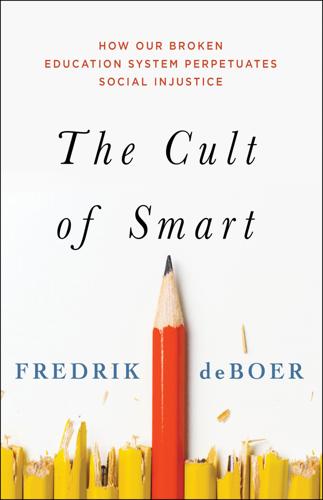
The Cult of Smart: How Our Broken Education System Perpetuates Social Injustice
by
Fredrik Deboer
Published 3 Aug 2020
See Gary Rubinstein, “The Hidden Attrition of Success Academy,” Gary Rubinstein’s Blog, January 4, 2018, https://garyrubinstein.wordpress.com/2018/01/04/the-hidden-attrition-of-success-academy/; and Leo Casey, “Student Attrition and ‘Backfilling’ at Success Academy Charter Schools: What Student Enrollment Patterns Tell Us,” Albert Shanker Institute, February 18, 2016. 17. Jennifer Li, “What New York City’s Experiment with Schoolwide Performance Bonuses Tells Us About Pay for Performance. Research Brief,” RAND Corporation, 2011. 18. Jakob Pietschnig and Martin Voracek, “One Century of Global IQ Gains: A Formal Meta-Analysis of the Flynn Effect (1909–2013),” Perspectives on Psychological Science 10, no. 3 (2015): 282–306. 19. “Racial and Ethnic Achievement Gaps,” Educational Opportunity Monitoring Project, Stanford CEPA, no date, https://cepa.stanford.edu/educational-opportunity-monitoring-project/achievement-gaps/race/. 20.
…
Ones, “A Comprehensive Meta-Analysis of the Predictive Validity of the Graduate Record Examinations: Implications for Graduate Student Selection and Performance,” Psychological Bulletin 127, no. 1 (2001): 162. 10. RAND Education, “Teachers Matter: Understanding Teachers’ Impact on Student Achievement,” RAND Corporation, 2012, https://www.rand.org/pubs/corporate_pubs/CP693z1-2012-09.html. 11. See, for example, Catherine Rampell, “SAT Scores and Family Income,” New York Times, August 27, 2009. 12. Mark Dynarski, Ning Rui, Ann Webber, and Babette Gutmann, “Evaluation of the DC Opportunity Scholarship Program: Impacts After One Year.
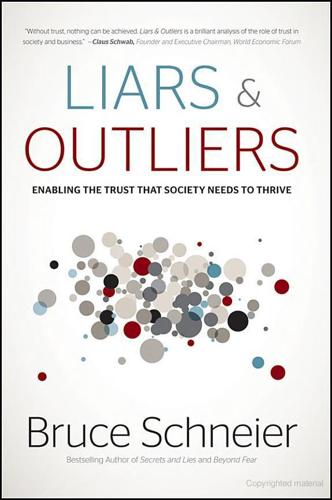
Liars and Outliers: How Security Holds Society Together
by
Bruce Schneier
Published 14 Feb 2012
How else can you explain that so many of our Facebook pages include people we would never have even considered talking to in high school, and yet we help water their imaginary plants? Chapter 5 (1) The Prisoner's Dilemma was originally framed in the 1950s by Merrill Flood and Melvin Dresher at the RAND Corporation, and was named several years later by Albert Tucker.Many researchers have informed and analyzed this game, most famously John Nash and then Robert Axelrod, who used it to help explain the evolution of cooperation. (2) I should probably explain about Alice and Bob. Cryptographers—and I started as a cryptographer—name the two actors in any security discussion Alice and Bob.
…
Criminals can form Allan Castle (1997), “Transnational Organized Crime and International Security,” Institute of International Relations, The University of British Columbia Working Paper No. 19. Phil Williams (2001), “Transnational Criminal Networks,” in John Arquilla and David F. Ronfeldt, eds., Networks and Netwars: The Future of Terror, Crime, and Militancy, RAND Corporation, 61–97. Oded Löwenheim (2002), “Transnational Criminal Organizations and Security: The Case Against Inflating the Threat,” International Journal, 57:513–36. Criminals were simply Warwick Ashford (6 Oct 2010), “ISSE 2010: Police Are Playing Catch-Up as Criminals Embrace IT,” Computer Weekly.
…
certain brain regions Ryota Kanai, Bahador Bahrami, Rebecca Roylance, and Geraint Rees (2011), “Online Social Network Size Is Reflected in Human Brain Structure,” Proceedings of the Royal Society B: Biological Sciences, published online before print. Chapter 5 Prisoner's Dilemma Merrill M. Flood (1952), “Some Experimental Games,” Research Memorandum RM 789–1, The RAND Corporation. Republished as: Merrill M. Flood (1958), “Some Experimental Games,” Management Science, 5:5–26. Albert W. Tucker (1980), “A Two-Person Dilemma,” UMAP Journal, 1:101–3. Albert W. Tucker (1983), “The Mathematics of Tucker: A Sampler,” The Two-Year College Mathematics Journal, 14:228–32. Many researchers Sylvia Nasar (2001), A Beautiful Mind: The Life of Mathematical Genius and Nobel Laureate John Nash, Simon & Schuster.
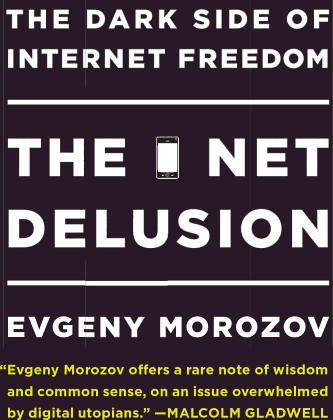
The Net Delusion: The Dark Side of Internet Freedom
by
Evgeny Morozov
Published 16 Nov 2010
(China’s microchip manufacturers must have been laughing all the way to the bank when Reagan predicted that “the Goliath of totalitarianism will be brought down by the David of the microchip.”) It just took a few months to add analytical luster to Reagan’s pronouncements and turn it into something of a coherent history. In 1990, the RAND Corporation, a California-based think tank that, perhaps by the sheer virtue of its propitious location, never passes up an opportunity to praise the powers of modern technology, reached a strikingly similar conclusion. “The communist bloc failed,” it said in a timely published study, “not primarily or even fundamentally because of its centrally controlled economic policies or its excessive military burdens, but because its closed societies were too long denied the fruits of the information revolution.”
…
“The communist bloc failed,” it said in a timely published study, “not primarily or even fundamentally because of its centrally controlled economic policies or its excessive military burdens, but because its closed societies were too long denied the fruits of the information revolution.” This view has proved remarkably sticky. As late as 2002, Francis Fukuyama, himself a RAND Corporation alumnus, would write that “totalitarian rule depended on a regime’s ability to maintain a monopoly over information, and once modern information technology made that impossible, the regime’s power was undermined.” By 1995 true believers in the power of information to crush authoritarianism were treated to a book-length treatise.
…
See also Culture Popular Mechanics Populism Pornography Postman, Neil Pouraghayi, Saeedeh Power “Power of the Powerless” (Havel) Prague Pravda Price, Cedric Prior, Markus Privacy Propaganda and Chavez in China in Egypt in Iran and middle class and public discourse in Russia in South Korea susceptibility to See also Censorship; Spin Protection by obscurity Przeworski, Adam Psiphon Public discourse Public-opinion guidance Putin, Vladimir “Putin and His Ideology” (Chadayev) Putnam, Robert Racism Radio Radio broadcasting Radio Doctor (radio program) Radio Free Europe and CIA Radio Martí Raja News website RAND Corporation Reagan, Ronald Recognizr Red-texting Reductionism Religion RentAFriend.com Reporters Without Borders (RSF) Research funding of Revisionism Revolutionary Guards Reynolds, Glenn Rezaei, Alireza Rice, Condoleezza Ringelmann, Max Ringelmann Effect Rittel, Horst Roberts, Hal Robertson, Pat Romania Roosevelt, Franklin Delano Roosevelt, Kermit Roosevelt, Theodore Roosevelt, Theodore, Jr.
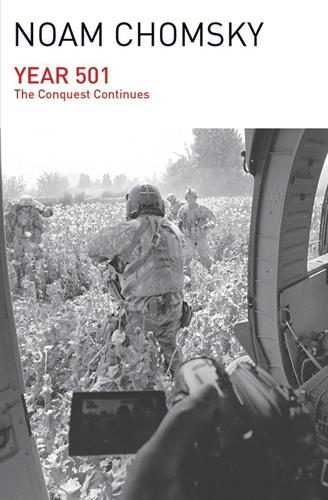
Year 501
by
Noam Chomsky
Published 19 Jan 2016
Meanwhile, the experiments will continue in the testing areas. 2. Laboratory Animals The concept “testing area” merits particular notice. Similarly, “American strategists have described the civil war in El Salvador as the ‘ideal testing ground’ for implementing low-intensity conflict doctrine” (a.k.a. international terrorism), a DOD-sponsored RAND Corporation report on the experiment concludes. In earlier days, Vietnam was described as “a going laboratory where we see subversive insurgency...being applied in all its forms” (Maxwell Taylor), providing opportunities for “experiments with population and resource control methods” and “nation building.”
…
Among a series of unpleasant—hence unmentionable—facts is the similarity of these operations to the no less brutal and atrocious ones conducted by the United States a few years later near China’s southern border, operations that peaked in murderous violence shortly after the Japanese documents on Manchuria were released by the RAND Corporation in 1967, to be shelved with appropriate silence by the cultural managers.7 The similarity is not entirely accidental. Apart from the fact that the same thoughts naturally come to the minds of similar actors facing similar circumstances, US counterinsurgency doctrine was consciously modelled on the practices and achievements of World War II fascism, though it was the Nazis who were the preferred model.
…
See Central Intelligence Agency (CIA) Otis, John, 266 Pahlavi, Mohammad Reza Shah, 48, 252 Pakistan, 48 Pal, Radhabinod, 328 Palestine, 53, 367 Palmer, Thomas, 320 Panama, 97, 121, 242, 245, 283 US invasion of, 80, 117–19, 125, 127, 206, 349 Pan-American conference, 214–15 Panamericanism, 196 Paraguay, 231 Paris Club, 115 Parker, Geoffrey, viii, 9–10, 313 Pastor, Robert, 59 Pauker, Guy, 169–70 Pear, Robert, 320 Pearson, M.N., 7, 11, 13, 20 Pentagon system, 22–23, 72, 147, 149, 156 Pepper, Claude, 101 Pequots, 30, 361, 363 Péralte, Charlemagne, 278–79 Pérez, Carlos Andrés, 235–37 Pérez Jiménez, Marcos, 139, 234 Perot, Ross, 347 Persia, 18 See also Iran Peru, ix, 5, 121, 208, 242 Petras, James, 257, 261, 268 Philippines, 32, 279 colonialism in, 211, 253, 277, 329, 337 in New World Order, 81, 250, 286 Phillips, William, 276 Pinochet, Augusto, 254, 260–62 Pisani, Sallie, 57–58 Pizarro, Francisco, 9 Poinsett, Joel, 36–37 Point Four program, 219 Poland, 275 in New World Order, 68, 87, 91, 107–114 Polanyi, Karl, 110 political correctness, 29–30, 35, 51, 53, 57, 73–74, 81, 105, 131, 179, 181, 297, 316, 338–41, 358, 363–66 Polk, James K., 35–36, 38 Pollin, Robert, 156 Pol Pot, 140, 180, 186–87, 251, 348, 350–51, 369 Pool, Ithiel, 52 Porter, Bernard, vii Portes, Richard, 113 Portugal, 187 in New World Order, 66, 181, 188 Portuguese colonialism, 6–7, 6–9, 11, 19, 180 Posey, Darrell, 162 postcolonialism decolonization period, 54–62 Pozzi, Pablo, 257 Prescott, Paul, 364 Preston, Lewis, 86 prisons, 153–154, 177, 224, 392–93 colonialism and, 16, 27, 272 role in New World Order, 83, 153–54, 168, 238 Puebla Institute, 289 Puerto Rico, 272, 336 Puette, Walter, 385 Putin, Vladimir, xii Qaddafi, Muammar, 29, 164 Rabe, Stephen, 215, 234–35 Rabin, Yitzhak, 53 Rabinowitz, Dorothy, 344 race, 38, 217, 275, 277, 281 in colonialism, ix, 27, 36, 274, 281, 307 See also blackness; Noirisme; whiteness racism, 6, 31–32, 48, 74, 195, 275, 277–78, 281, 292, 307, 396, 398 See also colonialism; imperialism; slavery Ramírez, Ivan, 249 RAND Corporation, 169–70, 308, 331 Reagan, Ronald, xii, 89, 112, 114, 268–69, 350, 372, 382 Cold War policy, 157 economic policy, 54, 68, 70–71, 85, 109, 144, 146, 149–50, 155, 228, 385–87 Grenada policy, 117 Guatemala policy, 238 Haiti policy, 284, 286 Korea policy, 141 Nicaragua policy, 206 South Africa policy, 39 Reding, Andrew, 82 refugees, 33, 346 Cuban refugees, 284 Haitian refugees, 284, 293, 296, 298, 302 Indonesian refugees, 181, 187 Salvadoran refugees, 249 from US slavery, 194 Reston, James, 178–79 Reuter, Edzard, 77–78 Rivera, Brooklyn, 120 Roberts, Brad, 257 Robinson, Anthony, 107–09 Röling, Bert, 327 Romania, 81, 111–12, 141 Roosevelt, Franklin D., 59, 96, 197–98, 277, 328, 339–40 Roosevelt, Theodore, 31, 277 Root, Elihu, 215 Rosenfeld, Stephen, 183–84 Rostow, Walt, 174, 176 Roth, Kenneth, 290, 292 Rubinstein, Danny, 53 Rumsfeld, Donald, x Rusk, Dean, 171–73, 183, 225 Russell, Bertrand, 50 Russia, xii, xiii, 92–94, 127, 332 in post–Cold War era, 77, 81, 108, 111–13, 113–15, 151 See also Soviet Union Ryan, Hewson, 283 Sachs, Jeffrey, 107 Sandel, Michael, 253 Sandinistas, 49, 105, 121–22, 201, 205, 263–67, 300 Sarney, José, 260 Saudi Arabia, 52, 56, 235 Savimbi, Jonas, 129 Scanlan, Christopher, 245 Schlesinger, Arthur, xi, 38, 200 Schmidt, Hans, 274, 276–77, 280–81, 303 Schoultz, Lars, 42, 166 Schweid, Barry, 148 Scott, Peter Dale, 171 Seabrook, Jeremy, 237 Serrano, Jorge, 240–41 sexism, 74, 398 Sexton, Patricia, 389, 396 sexual violence, 227, 239, 243 forced sterilization, 277–78 Shamir, Yitzhak, 53 Shawcross, William, 186–87 Shenon, Philip, 180, 333 Sheppar, Nathaniel, 118 Shlaudeman, Harry, 119 Shorrock, Tim, 140 Shultz, George, 141, 286 Sihanouk Norodom, 350–51 Simes, Dimitri, 123, 125 Simpson, John, 257 Singapore, 83–84, 257, 350 Sioux, 32, 363 Skidmore, Thomas, 225–227, 229–30 slavery, x, 43–44, 311–12, 319 in Bolivia, 195 in Brazil, 231–32 in Cuba, 196–97 global slave trade, 6–7, 9, 19, 28–29 in Haiti, 271, 275–76 in India, 241 in US, 33, 36–37, 193–94, 361 Slim, T-Bone, 380 Sloan, Alfred, 309 Smith, Adam, viii, 318 on colonialism, 4–5, 9–11, 20–22, 379 on economics, 13–17, 24–25, 390 legacy of, 77, 79 Smith, Joseph, 214 Smith, Stephen, 143 Smith, Wayne, 203 Smucker, Philip, 354 Somoza García, Anastasio, 140, 263, 265–66, 299 South Africa, 4, 134, 320, 386 actions in Angola, 39, 100, 129–30, 206–07 South Commission, 61 South Korea, 13, 55, 358 in New World Order, 84, 140–42, 145, 256 South-North Human Genome Conference, 159 Soviet Union, 73, 150, 169, 185–86, 220, 325, 360 in Cold War, xii, 62–66, 96–107, 129–30, 157, 167, 199, 210 collapse of, 72, 77, 84, 122–23, 125, 127, 131, 157, 251–52, 395 dissidents, 43 role in Third World, 60, 93–94, 123 See also Cuban missile crisis; Russia Spaatz, Carl Andrew, 326 Spain, 13, 101, 337 Spanish colonialism, 6–7, 9–10, 17, 29, 42–44, 195, 196, 271, 273–274 Stackhouse, John, 353–54 Stavrianos, Leften, 92 Stein, Herbert, 157, 410n15 Stephens, Uriah, 319 Stevens, John, 336 Stewart, Allan, 234–35 Stigler, George, 14, 22 Stimson, Henry, 58, 97 Stivers, William, 279 Story, Joseph, viii Strange, Susan, 70 Strauss, Robert, 115 structural adjustment policies, 4, 85–87, 117, 134, 149, 209, 224, 235–37, 249, 269, 273, 354 Sued-Badillo, Jalil, 272, 420n49 Suharto, 170, 174, 176, 178, 180–81, 185–87, 190, 209, 253 Sukarno, 168–69, 168–70, 173–75, 178, 184 Summers, Lawrence, 151–52 Suskind, Ron, 117 Sweden, 86, 94 Swift, Jonathan, 357 Switzerland, 211, 275 Taft, William Howard, 217 Taiwan, 83, 257, 285 Taylor, Humphrey, 383 Taylor, Lance, 147 Taylor, Maxwell, 165, 421n62 Thailand, 187, 231, 241–42, 349–50 Thatcher, Margaret, 76–77 Thomasson, Gordon, 305–07 Thompson, Edward, 15 Thompson, E.P., 382 Thompson, John, 105 Tibbets, Paul, 327 Tibet, 331 Times Literary Supplement, vii Timor, 140, 180–81, 185–90, 349, 369 Togo, 86 Tojo, Hideki, 340 Torricelli, Robert, 296 Toussaint L’Ouverture, François-Dominique, 271–72, 279, 302 Tracy, James, 10–11 transnational corporations (TNCs), 62, 144, 150, 162, 164, 181 in New World Order, 70, 83–84, 88, 132–33, 146 Tran Viet Cuong, 353 Trevelyan, Charles, 16 Trilateral Commission, 52, 367 Trinidad-Tobago, 86 Trotsky, Leon, 95 Trouillot, Michel-Rolph, 281 Truman, Harry, 47, 63, 96, 99, 218, 221, 328, 405n16 Turkey, 13, 48, 52, 150, 203, 229 Twain, Mark, 43, 202, 253 Tyler, John, 35, 334–36 Tyler, Patrick, 67–68, 347 Ubico, Jorge, 239 Uchitelle, Louis, 157 Ukraine, 114 UN Committee of Economic, Social and Cultural Rights, 118 UN Conference on Trade and Development (UNCTAD), 73, 85 Underhill, John, 30 UN Economic Commission for Africa, 76 UN Economic Commission for Europe, 112 UNESCO, 73, 231 UN Food and Agriculture Organization (FAO), 231 UN High Commission on Refugees (UNCHR), 298 UN Human Development Program, 85 United Arab Emirates, 148–149 United Nations (UN), 100, 127–28, 243, 352 US role in, 73, 100, 185–87, 211, 350 universities, 73–75, 169, 175 under neoliberalism, 74–75 UN Report on Human Development, 231 UN Security Council, 73, 127, 350 UN World Economic Survey, 269 Uruguay, 244 USAID, 117, 119, 248, 284, 290, 305, 307 US International Trade Commission, 162 US-Japan semiconductor agreement, 132 Vandenberg, Arthur, 101 Venezuela, 134, 139, 214, 233–37 Vickery, Michael, 241–42, 369–70 Vidal, Gore, 74 Vietnam, 308, 330 French policy toward, 95 invasion of Cambodia, 349–51, 369 in New World Order, 345–58, 369–71 Phoenix program, 182 US policy toward, 39–40, 65, 242, 279 Vietnam war, 70, 165, 174–78, 184, 235, 332–34, 344, 355–59, 369–77, 398 critics of, 165–66, 339, 380 MIAs, 365–68 My Lai massacre, 357–60, 363 Vieux, Steve, 261, 268 Voluntary Export Arrangements, 132 Vries, David de, 362 Wain, Barry, 181 Wall Street Journal, 68, 82, 117, 134, 154–55, 158, 181, 214, 296, 338, 386 Walters, Vernon, 224 War of 1812, 33, 366 Warsaw Pact, 63, 104 Washington, George, 30, 193, 315 Washington Post, 41, 98, 183, 211, 213, 250, 297, 326, 334, 358, 371 Watanabe, Michio, 326, 328 Watergate, 29 Watkins, Kevin, 162–63 Webster, Daniel, 33 Weisman, Steven, 326, 328, 338–44 Welles, Sumner, 197–98 Whipple, H.B., 43 whiteness, 10, 48, 308 in colonialism, 37, 130, 195, 197, 274, 317, 335 honorary whiteness, 4 in transnational adoption, 110 See also race Whitman, Walt, 36 Whitney, Craig, 359 Wilensky, Gail, 320 Wilentz, Amy, 285, 290, 304 Williams, Roger, 30 Wilson, Horace, 18 Wilson, Woodrow, 95, 104, 217, 252–53, 276, 277–79, 307, 394, 396 Wimer, Javier, 118 Wines, Michael, 183 Wintle, Justin, 358 Wohlstetter, Albert, 166 Wolfowitz, Paul, 68 women targets of advertising, 80, 314 targets of environmental toxins, 356 targets of violence, 28, 31, 265, 361 women’s equality, 382 women’s political groups, 182 women’s work, 306 See also sexism Wood, Leonard, 211 Woodward, Robert, 59 World Bank, 82–83, 103, 107–08, 149–52, 195, 228, 248, 284–85, 288 role in New World Order, 85–86, 115, 143, 176, 226, 254, 370 World Court, 29, 128, 188, 211, 349 World Health Organization, 208, 240, 245, 307 World War I, 54, 98, 215, 394 World War II, 34, 45, 58–59, 102, 188, 221, 234, 245, 331 aftermath of, 42, 69, 94, 142–43, 146, 156–57, 215–17, 303, 365 economic impact of, 54 Pearl harbor bombing, 326 Tokyo Tribunal, 327 See also Nuremberg Tribunal Wortzel, Lawrence, 308 Wouk, Walter, 365 Wrong, Dennis, 257 464 Yamashita Tomoyuki, 328, 360 Yarbro, Stan, 237 Yugoslavia, 81 Zaire.

The Patient Will See You Now: The Future of Medicine Is in Your Hands
by
Eric Topol
Published 6 Jan 2015
But getting to efficient use of smartphone lab tests and scans, along with virtual visits, is not a slam-dunk, by any means. The next step we need to get into is how to completely capture and archive all of these data, from womb to tomb. Chapter 7 My Records and Meds “Health information technology (HIT) could save $81–$162 billion or more annually while greatly reducing morbidity and mortality.” —THE RAND CORPORATION, 20051 “We’re creating a revolution. Some people are aghast.” ON GIVING PATIENTS ACCESS TO NOTES BY PHYSICIANS. —TOM DELBANCO, HARVARD2 We’re all dressed up with nowhere to go. We’ve got our labs, real-time wireless sensor data, genomic sequence information, and images. Our ability to generate big medical data about an individual has far outstripped any semblance of managing it, and we can’t even build the full GIS yet.
…
Appleby, “Hospitals Promote Screenings That Experts Say Many People Do Not Need,” Washington Post, May 13, 2014, http://www.washingtonpost.com/national/health-science/hospitals-promote-screenings-that-experts-say-most-people-should-not-receive/2013/05/13/aaecb272-9ae2-11e2-9bda-edd1a7fb557d_story.html. 39. S. Garber et al., “Redirecting Innovation in US Health Care,” The RAND Corporation, 2014, http://www.rand.org/pubs/research_reports/RR308.html. 40. R. Sihvonen et al., “Arthroscopic Partial Meniscectomy versus Sham Surgery for a Degenerative Meniscal Tear,” New England Journal of Medicine 369, no. 26 (2013): 2515–2524. 41. S. Eappen et al., “Relationship Between Occurrence of Surgical Complications and Hospital Finances,” Journal of the American Medical Association 309, no. 15 (2013): 1599–1606. 42.
…
Osborne, Joshua, 96–97 Otoscope, smartphone, 122 Outpatient procedures, 183–186 Outsourcing health care, 147–149 Ovarian cancer, 55(quote), 56–57, 59, 66, 75, 110 Ownership of property, 281–282 Ozcan, Aydogan, 262 Pa, Roy, 197–198 Page, Larry, 198 Pandora, 243 Panoramic GIS view, 81–82 Paper-based analytic devices, 262, 269 Paracelsus, 279–280 Parker, Randy, 168 Parkinson, Jay, 174 Patents, gene, 72–76 Paternalism, Age of, 20 Paternalism, medical American Medical Association, 21–26 data access and ownership, 125–127, 129 disrespect for patients, 29–31 dissemination of knowledge through printing, 13–14 doctor’s orders, 27–28 FDA quashing consumer genome testing, 64–71 historical path of, 17–21, 49–54 modern technology transforming health care, 275–277 patient access to radiation exposure data, 115 patient access to test results, 107–108 professional guidelines for physicians, 31–32 signs of the persistence of, 26–34 Pathway Genomics, 68–69 Patient, Heal Thyself (Veatch), 18, 29–30 Patient records, 4 Patient-generated data, 135–136 Patients in waiting, 91 PatientsLikeMe, 10–11, 173, 203, 211–212 Pentland, Alex “Sandy,” 79(quote) Percival, Thomas, 20 Personal Genome Project (PGP), 199 Personal Genome Service (PGS), 63–71 Phablet, 40 Pharmacists and pharmaceuticals clinical trial data, 213–216 prescription testosterone gels, 144 telemonitoring, 162 Theranos blood test process, 106–107 waste, 144–145 Pharmacogenomics, 100–101, 102(table), 134 Phenlyketonuria (PKU), 91–92 Phenome, 81–83 Phlebotomy, 106 Physicals, annual, 146–147 Physics of the Future (Kaku), 119 Physiome, 81–83 Pickrell, Joe, 70–71 PillPack, 206 Placebo effect, 142–144 Polygenic diseases, 93–94 Ponemon Institute, 225 Portable Legal Consent, 199–200 Posttraumatic stress disorder (PTSD), 251–252 Practice Fusion, 138 Prakash, Manu, 262–263 Predictive analysis artificial intelligence and machine learning, 244–246 at the individual level, 242–246 at the population level, 240–242 diagnosis, misdiagnosis and disease prevention, 247–253 molecular stethoscope and machine learning, 253–256 Pregnancy and childbirth costs associated with, 149 DNA data, 254 medical GIS in the developing world, 269 smartphone use in the developing world, 263 ultrasound use, 275–276 Premature babies, 252–253 Prenatal genomic screening, 89–91 Prevention of disease artificial intelligence and machine learning, 244–246 diagnosis, misdiagnosis and prevention through predictive analysis, 247–253 dream and possibility of, 238–239 examples of preventable diseases, 254(table) GIS data used for, 93–96 predictive analysis, 240–242 the individual and the Internet of Medical Things, 246–247 Preventive Services Task Force, US, 33 Prewomb medicine, 89–90 Price comparator websites, 153–154 Priests, 13–14, 17–18, 50 Printing press, 13–14, 37–39, 39(fig.), 40–41, 41(fig.), 45–47, 46(fig.), 47–49, 285 The Printing Press as an Agent of Change (Eisenstein), 38–42, 47–49 Privacy concerns, 219–235 Privacy Rights Clearinghouse, 228–229 Project Artemis, 252 Project Masiluleke (South Africa), 261–262 Pronovost, Peter, 186 Prostate cancer screening, 118 Protective alleles, 102 Protein biology, 86 Proteome, 81–82, 86 Proteus, 133–134 Proton beam radiation, 146 Qualcomm, 286 Quality in healthcare, 156–157 QuantuMDs, 264, 265(fig.) Quest Diagnostics, 108 Radiation dosages, 28–29, 113–116, 115(table). See also Imaging; Scans Radiation Right campaign, 116 Ramamurthy, Lakshman, 65–66 RAND Corporation, 125(quote), 130–131 Reconstructive surgery after double mastectomy, 58–59 Records, medical Blue Button Initiative, 129–130 human phenome, 82–83 hype in health information technology, 130–132 OpenNotes project, 127–129 patient access to DNA data, 22 patient ownership, 125–126 See also entries beginning with Data Regulatory procedures, 288–289 Reinhardt, Uwe, 139(quote), 142 Religion, 13–14, 17–18, 50, 52 Relman, Arnold “Bud,” 176 Research, personal, 17 Respect, culture of, 20–21, 27–30 Revolution 2.0 (Ghonim), 13 Revolutions, social networks contributing to, 43–44 Rheumatoid arthritis, 144–145, 204 Rifkin, Jeremy, 49 Risk calculation Global Burden of Disease, 258–261 ionized radiation tests, 113–116 leading causes of disease and risk factors for death and disability, 260(table) predictive analysis, 249–250 TBI and gene variants, 94–95 traditional epidemiology, 70–71 RNA, 86, 98, 255–256 Roche, 215 Rosenberg, Tina, 139(quote) Rosenthal, Elisabeth, 140, 142, 148 Rubenstein, David, 37 Rush, Benjamin, 20 Ruthven, David, 189 Sabar, Ariel, 105(quote) Sage Bionetworks, 199–200 Sayfer, Steven, 190–191 Scans alternatives to radiation, 116 miniaturization of, 118–120 MOOMs, 204–205 patient access to test results, 120–121 portable devices for, 118–120 See also Imaging; Lab tests Schekman, Randy, 209–210 Schwamm, Lee, 167–168 Science, modern, 44–46 Seife, Charles, 71–72 Seigler, Mark, 20 Seinfeld (television program), 4 Semmelweis, Ignaz, 275 Sensor Project, 269 The Shallows (Carr), 40 Sharing Clinical Reports Project, 75 Shenkin, Budd, 127 Shortage of physicians, 173(fig.), 270–271 Side effects of drugs, 100–101 Sidereus Nuncius (Galilei), 44–45 The Signal and the Noise (Silver), 40 The Silent World of Doctor and Patient (Katz), 18–19 Silver, Nate, 40 Simon, Elena, 9, 10(fig.), 212 Siri, 164–165, 244 Smart Cities: Big Data, Civic Hackers, and the Quest for a New Utopia (Townsend), 223 Smart patients, 8–10 Smartphones attachment scopes, 122 biosensors, 83 boredom and, 48–49 compared to printing press, 40 conducting a full physical exam with, 121–123 data archiving, 48 declining cost of, 273(fig.)

Nine Pints: A Journey Through the Money, Medicine, and Mysteries of Blood
by
Rose George
Published 22 Oct 2018
Sarah Waddington, “Plymouth’s Crazy Idea to Fly Blood Samples Between Hospitals—by Pigeon,” Plymouth Herald, February 10, 2018. 36. Editorial, “Improving Blood Safety Worldwide,” Lancet 370, no. 9585 (2007): 361. 37. Kara W. Swanson, Banking on the Body: The Market in Blood, Milk, and Sperm in Modern America (Cambridge, MA: Harvard University Press, 2014), 57. 38. A recent comprehensive report by the RAND corporation into the US blood supply called it “complex” but also “robust.” Harvey Klein and colleagues think differently. The financial bullying might of huge hospital conglomerates, they wrote in 2017, is forcing blood collection centers to lower their prices to unsustainable levels. There is fierce competition and the reduction of margins to the point where research is being cut.
…
There is fierce competition and the reduction of margins to the point where research is being cut. Andrew W. Mulcahy, Kandice A. Kapinos, Brian Briscombe, et al., Toward a Sustainable Blood Supply in the United States: An Analysis of the Current System and Alternatives for the Future (Santa Monica, CA: RAND Corporation, 2016), https://www.rand.org/pubs/research_reports/RR1575.html; Harvey G. Klein, J. Chris Hrouda, and Jay S. Epstein, “Crisis in the Sustainability of the U.S. Blood System,” New England Journal of Medicine 377, no. 15 (2017): 1485–88. 39. Sadaguru Pandit, “10 Million Indians Made to Donate Blood Reveals NACO Data,” Hindustan Times, July 12, 2017. 40.
…
pigeons Plan India plasma during Battle of Mogadishu cost of donors fractionation fresh frozen Krever Report on proteins in sale of source storage of transfusions of, statistics on in trauma during World War II Plasma for Britain program plasma industry plasma protein therapeutics Plasma Protein Therapeutics Association (PPTA) Plasma Resources UK Plasmafaresis plastic surgery, leeches used in platelets Pliny the Elder pluripotent stem cells Plymouth Hospital PMDD (premenstrual dysmorphic disorder) PMS (premenstrual syndrome) polar bears polycythemia vera PolyHeme Pope Innocent VIII postpartum hemorrhage poverty PRBCs (packed red blood cells) pre-exposure prophylaxis (PrEP) program pregnancy premenstrual dysmorphic disorder (PMDD) premenstrual syndrome (PMS) President’s Emergency Plan for AIDS Relief (PEPFAR) Prince Regent (future George IV) Principles and Practice of Obstetricy (Blundell) prisoners’ access to menstrual hygiene Prisoners’ Blood Bank for Defense Procter & Gamble prostate-specific antigen (PSA) PSA (prostate-specific antigen) Psychrolousia, or The History of Cold Bathing (Floyer) public executions Pybus, Miss Quebec Quick, Jonathan Racaniello, Vincent race, early blood segregation and Rana Plaza factory building collapse in 2013 RAND corporation rape Rath, Matthias rats Read, Sara REBOA (resuscitative endovascular balloon occlusion of the aorta) red blood cells bone marrow’s production of cost of Filton’s production of official shelf life of packed (PRBCs) presurgical conservation of shape of in sickle-cell anemia stored vs. fresh in trauma Red Cross Red Market, The (Carney) Red Star (Bogdanov) rejuvenation, blood Rely tampons Research and Markets resuscitation.
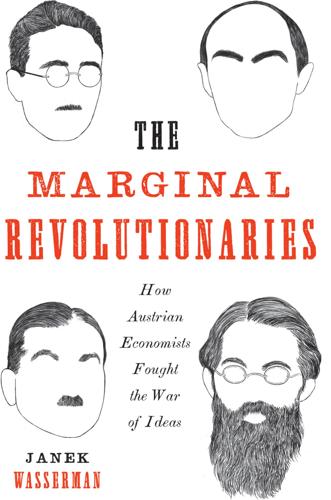
The Marginal Revolutionaries: How Austrian Economists Fought the War of Ideas
by
Janek Wasserman
Published 23 Sep 2019
After the emigration of many of the school’s members from fascist-wracked Europe in the 1930s, the Austrians became best-selling authors, respected political theorists, and economic policy experts in their adoptive homelands. They shaped post–World War II life through such institutions as the Mont Pèlerin Society (MPS), the RAND Corporation, the General Agreement on Tariffs and Trade (GATT), and the Group of Thirty. They spearheaded the successful conservative counterattack against Keynesian economics in the 1970s and ushered in our current age’s faith in globalization, free markets, rule of law, entrepreneurship, and neoliberalism.
…
They also contributed to the formation of a number of transnational epistemic communities that advocated trade liberalization, floating exchange rates, state deregulation, and privatization. Austrians played instrumental roles in these communities by persuading institutional actors, state and nonstate, to follow their prescriptions in times of uncertainty and crisis. Through GATT, the Bellagio Group, the RAND Corporation, and others, Haberler, Machlup, and Morgenstern proved adept at behind-the-scenes policy interventions that shaped economic liberalization and Cold War reasoning in the 1960s and 1970s. Perhaps unsurprisingly, the 1980s “Washington Consensus,” which coalesced in the halls of the International Monetary Fund, World Bank, and US Treasury, was articulated by a Machlup student, John Williamson.
…
Both men received requests from the state, even if von Neumann was the hotter commodity. In the coming years, he worked for the following governmental agencies: the Ballistic Research Laboratory, the National Defense Research Committee, the Navy’s Section for Mine Warfare, the Atomic Energy Commission, and, most famously, the Manhattan Project. He was also hired on by the RAND Corporation, the think tank of “defense intellectuals” at the heart of Cold War social scientific thought.55 Morgenstern too landed at the hub of US policy work. By the late 1940s, he conducted work for RAND, the US Strategic Bombing Survey, and the Office of Naval Research. He produced studies on logistics and operations research for the Navy.
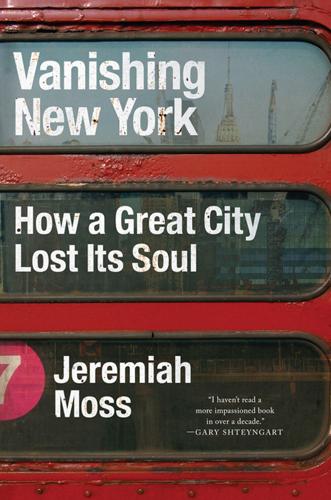
Vanishing New York
by
Jeremiah Moss
Published 19 May 2017
In the memo’s section on “Social Pathology,” he predicted that, due to “the types of personalities that slums produce,” American cities like New York would soon be facing a “genuinely serious fire problem.” He blamed the problem on arson, fires set by what he called antisocial blacks. This idea came from the RAND Corporation. (When Eisenhower warned America about the military-industrial complex, he might have been talking about RAND, the Cold War think tank that guided U.S. policy in Vietnam and created “rational choice theory,” the belief that humans are essentially individualistic and selfish, a key underpinning of the new ideology to come.)
…
Martin’s Press, 1985). 65Seward Mott, “The Case for Fringe Locations,” Journal of the American Institute of Planners 5, no. 2 (1939). 65Ta-Nehisi Coates, “The Case for Reparations,” The Atlantic, June 2014. 68On blockbusting: Mothers forced to work, fathers took two jobs, etc., from Norris Vitcheck, “Confessions of a Blockbuster,” The Saturday Evening Post, July 14–21, 1962. 71“Between June and September of 1966,” from a poll taken by Louis Harris for Newsweek, found in CBS News special report, “Black Power/White Backlash,” 1966. 71Johnson quote as recalled by Bill Moyers in “What a Real President Was Like; To Lyndon Johnson, the Great Society Meant Hope and Dignity,” Washington Post, November 13, 1988. 72–73Pete Hamill, “The Revolt of the White Middle Class,” New York, April 14, 1969. 74Nixon tapes from David E. Rosenbaum, “Nixon Tapes At Key Time Now Drawing Scant Interest,” New York Times, December 14, 2003. 74Ehrlichman on the War on Drugs, from Dan Baum, “Legalize It All,” Harper’s, April 2016. 75On RAND and rational choice, see Alex Abella, Soldiers of Reason: The RAND Corporation and the Rise of the American Empire (New York: Houghton Mifflin Harcourt, 2008). 75–76“Irredeemable rookeries” speech by Robert Moses, found in Max Page, Creative Destruction of Manhattan (Chicago: University of Chicago Press, 2001), noted as typescript of speech by Robert Moses at the Commodore Hotel, November 14, 1956, Municipal Reference Library, vertical files, “NYC Slums.” 78Roger Starr, “Making New York Smaller,” New York Times Magazine, November 14, 1976. 78Rita Koenig, “Mr.
…
(Whitman), 343 Plague on Your Houses, A (Wallace), 75, 76 Planetary Gentrification (Lees), 285 “Planned shrinkage,” 76–78, 111, 392 Playpen, the, 271–72 Plaza Hotel, 201 Podhoretz, Norman, 331 Poe, Edgar Allan, 149 Pool, Gene (Can Man), 25 Poor-door policy, 201–2 Portable Bloomberg (Wolff), 156 Port Authority, 147, 266 Port Morris, 399–402 Poverty rate, 205 Powell, Adam Clayton, Jr., 305 Power Broker, The (Caro), 66, 67, 377 Powerhouse Workshop, 350 Project First Step, 186–87 Psychoanalysis, 14, 207, 411 Public Speaking (movie), 111 Puerto Ricans, 69, 77–78, 311 Puritanism, 33–34, 57, 78, 358–59 Queens, 161, 373–87 “Queer,” 132–33 Quinn, Christine, 149, 165–66, 167 Race riots, 70–71, 343, 346 Racial segregation, 70, 71, 74 Racism, 61, 64–65, 66, 70 Rainbows & Triangles, 220 Rakoff, David, 3, 173 Ramones, 84–85 RAND Corporation, 75 Rangel, Charles, 77–78, 294 Rat Bohemia (Schulman), 31 Ratner, Bruce, 352, 353 Ravenite Social Club, 123 Rawhide, 219–20 Ray’s Candy, 27 Reagan, Ronald, 104, 110, 200, 250 Rebel Cities (Harvey), 322 Recchia, Domenic, 369 Red Bull, 83 Redlining, 63–65, 293 Red Square, 44–46, 54 Reed, Alvin, 305–6 Reed, Lou, 46 Regional Plan Association (RPA), 62–63, 66, 70 Related Companies, 244–46, 384–85 Rent control, 221, 283 Rent regulations, 418 Rent stabilization, 30–31, 111, 419 Republican National Convention (2004), 134 Residents in Distress (RID), 189–90 Restaurant Florent, 187, 190, 196–97 Restaurant health grades, 166–67 Revanche, 40–41 Reverend Billy, 84–85, 263, 338, 369 Reynolds, Bobby, 360 Rezoning, 39, 159–62, 417 Coney Island and, 367–68 East Village and, 24 Harlem and, 297–98, 313 High Line and, 236 Hudson Yards and, 244–45 Williamsburg and, 337 Rhodes-Pitts, Sharifa, 296, 297 Ridgewood, 380–81 Rimkus, Ulli, 47–48, 50 Rise and Fall of New York City, The (Starr), 78 Rise of the Creative Class, The (Florida), 323–25 Rivers, Larry, 86 Riverview Hotel, 254–55 Robert Moses and the Modern City (Jackson), 164 Roberts, Julia, 187–88 Robinson, Bobby, 299–300, 301–2 Rocco Ristorante, 146–47 Rodriguez, Shellyne, 322, 398 Roediger, David, 61 Rogosin, Lionel, 86 Rohatyn, Felix, 76, 77–78, 390 Rohatyn, Jeanne Greenberg, 390, 391 Roosevelt, Eleanor, 168 Roosevelt, Franklin D., 63 Roosevelt Avenue, 381–82 “Root shock,” 25 Rose, Joseph, 236 Rosenblatt, Muzzy, 82 Ross, Stephen, 245–46 Rothko, Mark, 86 Rubenstein, 402 Rubenstein, Keith, 390–92, 402 Rubin, Peter and Mark, 268 Rubinstein, Kenny, 269 Rubinstein, Morris, 269 Rudy’s Music Stop, 275 Russ & Daughters, 53 Ryan, Cara Gendel, 17 Sadik-Khan, Janette, 164, 169, 273–74 Sagalyn, Lynne, 262–63, 406–7 St.
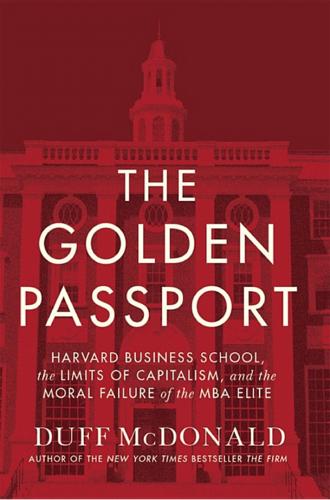
The Golden Passport: Harvard Business School, the Limits of Capitalism, and the Moral Failure of the MBA Elite
by
Duff McDonald
Published 24 Apr 2017
On the other hand, there was this feeling of bewilderment that the lives of so many men should add up to no more than two simple columns.”28 The late Robert Bellah, an influential sociologist and moral philosopher, points to flaws in rational choice theory, which originated at the RAND Corporation, found support from the Ford Foundation, and an enthusiastic practitioner in Robert McNamara, as the sources of McNamara’s failure. The theory, which assumes that social life can be explained as the outcome of rational choices by individual actors, found an early foothold in economics with Kenneth Arrow’s 1951 book, Social Choice and Individual Values, and it remains the dominant economic idea at the University of Chicago. But the theory didn’t come from economics departments. It originated at the RAND Corporation in response to the desire of policy makers to mathematically model the decisions the Soviet Union might make during the Cold War.
…
At that point, if you were an executive tasked with formulating and implementing strategy, you probably fell into one of two camps—those who viewed management as science or those who viewed management as art. If the former, then you probably leaned on the work of Igor Ansoff, whose 1965 book, Corporate Strategy, carried the subtitle “An Analytic Approach to Business Policy for Growth and Expansion”3 (with the difference between “growth” and “expansion” left unsaid). Ansoff had worked at the RAND Corporation before landing at Carnegie Mellon, and his systematic prescriptions were in keeping with the quantitative tilt of his employer. “If Chandler’s definition [of strategy] was baggy and capacious,” writes Walter Kiechel in The Lords of Strategy, “the notions introduced by Igor Ansoff . . . were filigreed to an overwrought fault.”4 Or worse: In laying out the framework for forecasting, Ansoff offhandedly assumed that most corporate forecasts would be within 20 percent of the eventual result.
…
McNamara’s tenure as secretary of defense can be considered in two phases as well. When he was acting as secretary of defense, he brought that rational approach to decision making to yet another organization badly in need of it. Budgets that had historically relied on patronage and parochialism were centralized. He hired Charles Hitch, chief economist at RAND Corporation, as comptroller, and tasked him with helping to build what came to be known as the Planning Programming Budgeting System, or PPBS, which was hailed by none other than Igor Ansoff as “an advanced version of the strategic planning system.”17 HBS’s Robert N. Anthony followed Hitch as comptroller, and between 1965 and 1968 worked on real, complex problems such as the question of how to reduce currency outflow in military procurement.

Future Crimes: Everything Is Connected, Everyone Is Vulnerable and What We Can Do About It
by
Marc Goodman
Published 24 Feb 2015
As if the threat from individual hackers’ stealing credit cards and Mafia thugs’ breaking kneecaps weren’t bad enough, today traditional organized crime groups and highly talented hackers have united to combine forces, and the results for the general public and business are disastrous. While historically perhaps 80 percent of hackers were independent freelancers, today the opposite is true. According to a 2014 study by the Rand Corporation, a full 80 percent of hackers are now working with or as part of an organized crime group. The Rand findings remind me of the great scene from the 1980s film Ghostbusters in which Bill Murray, Harold Ramis, and Dan Aykroyd have armed themselves with “proton pack” weapons to defeat the ghosts who have invaded New York City.
…
They were able to marshal evidence by channeling time and energy to decipher data to produce results faster than any policing or governmental organization could have done alone. Crowdsourcing public safety delivers clear results and must become an integral component of our global security strategy in an exponentially changing world, especially one so short on full-time cyber-security personnel. The Rand Corporation has noted that the nationwide shortage of technical security professionals within the federal government is so critical that it is putting both our national and our homeland security at risk. The finding was echoed by Cisco’s 2014 Annual Security Report, which estimated that there was a talent scarcity of more than a million cyber-security professionals worldwide, expected to grow to two million by 2017.
…
,” Guardian, Sept. 21, 2011; Misha Glenny, “Inside the World of Cybercrime, EIBF 2012, Review,” EdinburghGuide.com, Aug. 20, 2012; Felix Richter, “Twitter’s Ad Revenue Tipped to Double This Year,” Statista, Sept. 13, 2012; David Talbot, “The Perfect Scam,” Technology Review, June 21, 2011. 2 Crime is big business: United Nations Office on Drugs and Crimes, “Estimating Illicit Financial Flows Resulting from Drug Trafficking and Other Transnational Organized Crimes,” Oct. 2011, 7. 3 In total: Misha Glenny, McMafia: A Journey Through the Global Criminal Underworld (New York: Vintage Books, 2009), 12. 4 Capos, dons: Allison Davis, Patrick Di Justo, and Adam Rogers, “Crime, Organized,” Wired, Feb. 2011, 78; General OneFile, Web, May 22, 2014. 5 Hacking is no longer ruled: “Organised Crime in the Digital Age,” a joint study of Detica/BAE Systems and the John Grieve Centre for Policing at London Metropolitan University, March 2012. 6 According to a 2014 study: Lillian Ablon, Martin C. Libicki, and Andrea A. Golay, “Markets for Cybercrime Tools and Stolen Data,” Rand Corporation, 4. 7 Several executives were kidnapped: Byron Acohido, “How Kidnappers, Assassins Utilize Smartphones, Google, and Facebook,” USAToday.com, Feb. 18, 2011. 8 Sensing a market need: “Woman ‘Ran Text-a-Getaway’ Service,” BBC News, July 16, 2013. 9 In San Francisco: This was based on the author’s personal observations, and I have a photograph of the incident. 10 “It’s more discreet”: Dana Sauchelli and Bruce Golding, “Hookers Turning Airbnb Apartments into Brothels,” New York Post, April 14, 2014. 11 While organized crime groups: The information on the organization of modern cybercrime organizations came from a variety of sources, including personal experience and investigation, consultation with senior law enforcement officials working in the field of cyber crime, and online resources such as “Cybercriminals Today Mirror Legitimate Business Processes,” Fortinet 2013 Cybercrime Report; Trend Micro Threat Research, “A Cybercrime Hub,” Aug. 2009; Information Warfare Monitor and Shadowserver Foundation, Shadows in the Cloud, Joint Report, April 6, 2010; Patrick Thibodeau, “FBI Lists Top 10 Posts in Cybercriminal Operations,” Computerworld, March 23, 2010; Roderic Broadhurst et al., “Organizations and Cybercrime,” International Journal of Cyber Criminology, Oct. 11, 2013. 12 Active criminal affiliates: Dmitry Samosseiko, “The Partnerka” (paper presented at Virus Bulletin Conference, Sept. 2009); “The Business of Cybercrime,” Trend Micro White Paper, Jan. 2010. 13 In other words: Cisco, Cisco 2010 Annual Security Report, 9. 14 Actors in these online crime swarms: Broadhurst et al., “Organizations and Cybercrime.” 15 As noted previously: Dunn, “Global Cybercrime Dominated by 50 Core Groups.” 16 Some Crime, Inc. organizations: See Brian Krebs, “ ‘Citadel’ Trojan Touts Trouble-Ticket System,” Krebs on Security, Jan. 23, 2012. 17 One group of cyber thieves: Bob Sullivan, “160 Million Credit Cards Later, ‘Cutting Edge’ Hacking Ring Cracked,” NBC News, July 25, 2013; “Team of International Criminals Charged with Multi-million Dollar Hacking Ring,” NBC News, July 25, 2013. 18 Some digital criminal marketplaces: Thomas Holt, “Exploring the Social Organisation and Structure of Stolen Data Markets,” Global Crime 14, nos. 2–3 (2013); Thomas Holt, “Honor Among (Credit Card) Thieves?
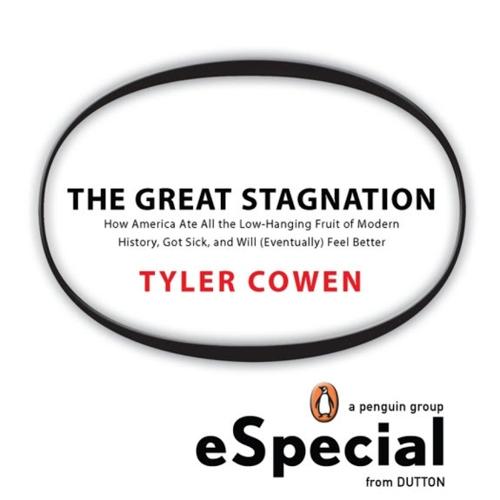
The Great Stagnation
by
Tyler Cowen
Published 24 Jan 2011
After putting statistical controls in place, aggregate health expenditures across the fifty states do not seem to predict health care outcomes. Nor, when we look across countries, does national life expectancy vary with medical care spending, once we control for income, education, diet, smoking, and use of pharmaceuticals. The famous RAND Corporation study of the 1970s gave thousands of Americans 100 percent free medical care, while the control group had to face insurance co-payments for care, as under normal circumstances. The group with free care consumed 25-30 percent more medical services. Yet, except for the very poorest group, the free health care didn’t make people any healthier.
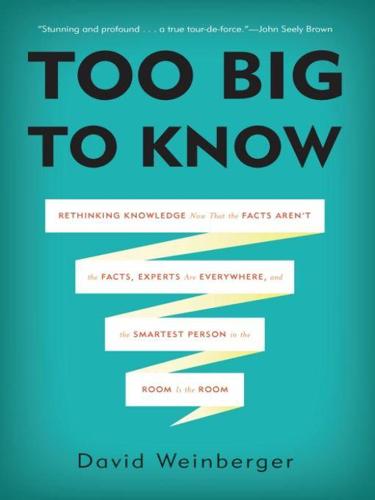
Too Big to Know: Rethinking Knowledge Now That the Facts Aren't the Facts, Experts Are Everywhere, and the Smartest Person in the Room Is the Room
by
David Weinberger
Published 14 Jul 2011
Some historians trace the rise of professional experts to a meeting held six months after the end of the Civil War,3 when one hundred reformers in various fields met in the Massachusetts State House and created the American Association for the Promotion of Social Science to advise their local communities and states about fixing everything from education to urban poverty, all based on the latest scientific research. 4 By the early 1900s, experts wielding “scientific management” techniques pioneered by Frederick Wilson Taylor—immortalized as the man with a clipboard and a stopwatch, timing the movements of workers—were sweeping through field after field.5 Even the home was now subject to the work of experts; as Ellen Swallow Richards, the founder of home economics and the first woman to get an engineering degree from MIT, wrote: “The work of homemaking in this scientific age must be worked out on engineering principles and with the cooperation of trained men and trained women.”6 Experts as full-time professional knowers needed professional institutions to support them. The first of these, the Brookings Institution, was founded in 1916, to provide policy advice to the government. By the 1950s, the Defense Department was relying on the RAND Corporation to help figure out questions of global life and death, including how nuclear war might be waged “successfully” and thus what types of bombs to build. RAND (the name comes from “Research and Development”) gave us our modern image of the expert, and he looked like Herman Kahn. The egg-shaped Kahn made a career by (as the title of his best-selling book put it) Thinking the Unthinkable: how to win a nuclear war.
…
See also Books and book publishing Paper-based tools Parenting experts Patent Office, US PatientsLikeMe.com Pavement performance Peer-review journals Perception, facts and Permission-free knowledge Philosophy defining and quantifying knowledge information overload reality unresolved knowledge Pinker, Steven Planetary Skin initiative Plato PLoS One online journal Pogue, David Polio vaccine Politics Politifact.com Popper, Karl Population growth, Malthusian theory of Pornography Postmodernism Pragmatism PressThink.org Primary Insight Principles of Geology (Lyell) Prize4Life Protein folding ProteomeCommons.org Pseudo-science Public Library of Science (PLoS) Punchcard data Pyramid, knowledge Pyramid of organizational efficiency Quora Racial/ethnic identity Ramanujan, Srinivasa RAND Corporation Random Hacks of Kindness Rauscher, Francis Raymond, Eric Reagan, Ronald Reality Reason as the path to truth and knowledge critical debate on unresolved knowledge Reliability Repositories, open access Republic of Letters Republican Party Republic.com (Sunstein) Revolution in the Middle East Rheingold, Howard Richards, Ellen Swallow Riesman, David Robustness “The Rock” (Eliot) Rogers, William Rorty, Richard Rosen, Jay Roskam, Peter Rushkoff, Douglas Russia: Dogger Bank Incident Salk, Jonas Sanger, Larry Schmidt, Michael School shootings Science amateurs in crowdsourcing expertise failures in goals of hyperlinked inflation of scientific studies interdisciplinary approaches media relations Net-based inquiry open filtering journal articles open-notebook overgeneration of scientific facts philosophical and professional differences among scientists public and private realms scientific journals transformation of scientific knowledge Science at Creative Commons Science journal Scientific journals Scientific management Scientific method Self-interest: fact-based knowledge Semantic Web Seneca Sensory overload Sexual behavior The Shallows (Carr) Shapiro, Jesse Shared experiences Shilts, Randy Shirky, Clay Shoemaker, Carolyn Simplicity in scientific thought Simulation of physical interactions Slashdot.com Sloan Digital Sky Survey Smart mobs “Smarter planet” initiative Smith, Arfon Smith, Richard Soccer Social conformity Social networks crowdsourcing expertise Middle East revolutions pooling expertise scaling social filtering Social policy: social role of facts Social reform Dickens’s antipathy to fact-based knowledge global statistical support for Bentham’s ideas Social tools: information overload Society of Professional Journalists Socrates Software defaults Software development, contests for Sotomayor, Sonia Source transparency Space Shuttle disaster Spiro, Mary Sports Sprinkle, Annie Standpoint transparency Statistics emergence of Hunch.com Stopping points for knowledge The Structure of Scientific Revolutions (Kuhn) Stupidity, Net increasing Sub-networks Suel, Gurol Sunlight Foundation Sunstein, Cass Surowiecki, James Systems biology Tag cloud Tagging Tatalias, Jean Taylor, Frederick Wilson TechCamps Technodeterminism Technology easing information overload Technorati.com Television, homophily and Temptation of hyperlinks Think tanks Thoreau, Henry David The Tipping Point (Gladwell) Todd, Mac Toffler, Alvin TopCopder Topic-based expertise Torvalds, Linus Traditional knowledge Tranche Transparency hyperlinks contributing to objectivity and of the Net Open Government Initiative Transparency and Open Government project Triangular knowledge Trillin, Calvin Trust: reliability of information Trust-through-authority system Truth elements of knowledge reason as the path to value of networked knowledge Twitter Tyme, Mae Unnailing facts Updike, John USAID UsefulChem notebook Vaccinations Verizon Vietnam Virginia Polytechnic Institute and State University Wales, Jimmy Wallace, Alfred Russel Walter, Skip Washington Post Watson, James Welch, Jack Welfare The WELL (The Whole Earth’Lectronic Link) Whole Earth Catalog Wikipedia editorial policy LA Times wikitorial experiment policymaking Virginia Tech shootings Wikswo, John Wilbanks, John Wired magazine The Wisdom of Crowds (Surowiecki) Wise crowds Wittgenstein, Ludwig Wolfram, Stephen WolframAlpha.com World Bank World Cup World War I Wurman, Richard Saul Wycliffe, John York, Jillian YourEncore Zappa, Frank Zeleny, Milan Zettabyte Zittrain, Jonathan Zuckerman, Ethan a I’m leaving this as an unsupported idea because it’s not the point of this book.
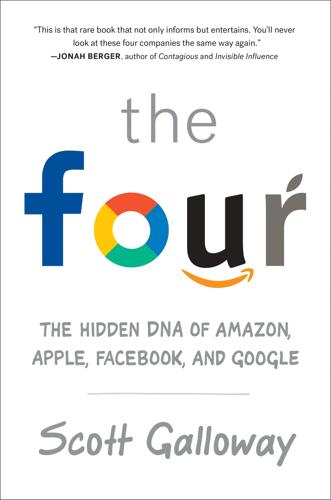
The Four: How Amazon, Apple, Facebook, and Google Divided and Conquered the World
by
Scott Galloway
Published 2 Oct 2017
United States Elections Project. Stoffel, Brian. “The Average American Household’s Income: Where Do You Stand?” The Motley Fool. Green, Emma. “It’s Hard to Go to Church.” The Atlantic. “Twenty Percent of U.S. Households View Landline Telephones as an Important Communication Choice.” The Rand Corporation. Tuttle, Brad. “Amazon Has Upper-Income Americans Wrapped Around Its Finger.” Time. Hunters and Gatherers Hunting and gathering, humanity’s first and most successful adaptation, occupies more than 90 percent of human history.8 By comparison, civilization is little more than a recent blip.
…
United States Elections Project. Stoffel, Brian. “The Average American Household’s Income: Where Do You Stand?” The Motley Fool. Green, Emma. “It’s Hard to Go to Church.” The Atlantic. “Twenty Percent of U.S. Households View Landline Telephones as an Important Communication Choice.” The Rand Corporation. Tuttle, Brad. “Amazon Has Upper-Income Americans Wrapped Around Its Finger.” Time. Flash Sale Sites’ Industry Revenue Lindsey, Kelsey. “Why the Flash Sale Boom May Be Over—And What’s Next.” RetailDIVE. 2006–2016 Stock Price Growth Choudhury, Mawdud. “Brick & Mortar U.S. Retailer Market Value—2006 Vs Present Day.”
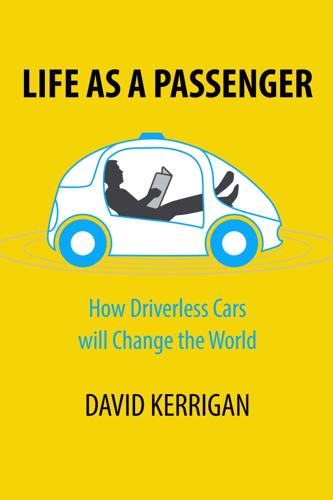
Life as a Passenger: How Driverless Cars Will Change the World
by
David Kerrigan
Published 18 Jun 2017
Average weight has risen steadily, which means that many of the advances in fuel savings have been offset or reduced by additional safety equipment and crash protection. For model year 2012, U.S. cars averaged 3,482 pounds and light trucks averaged 4,779 pounds, as shown in the graph below, while for comparison, the original Ford Model T only weighed 1,200 pounds. Image Courtesy Rand Corporation As mentioned already, considering the sheer number of journeys and the variables involved, car travel is remarkably safe. Improved brakes, stability and survivability have contributed perhaps as much as they reasonably can, while the one remaining constant is the controller (human driver).
…
I keep saying they’re not coming; they are here now. Without federal instructions, “people are just going to keep putting stuff out on the road with no guidance on how do we do this the right way.” Comparing the opinion of domain experts, it’s clear that regulators will be receiving widely varying advice as they craft their legislation: Rand Corporation’s Center for Decision Making: It seems sensible that autonomous vehicles should be allowed on America’s roads when they are judged safer than the average human driver, allowing more lives to be saved and sooner while still ensuring they don’t create new risks. But, there is even an argument to be made that autonomous vehicles should be allowed even if they’re not as safe as average human drivers if developers can use early deployment as a way to rapidly improve the vehicles.

The Drunkard's Walk: How Randomness Rules Our Lives
by
Leonard Mlodinow
Published 12 May 2008
They passed the test.4 Presumably neither the Harlem syndicate nor its customers noticed these regularities in their lottery numbers. But had people like Newcomb, Benford, or Hill played their lottery, in principle they could have used Benford’s law to make favorable bets, earning a nice supplement to their scholar’s salary. In 1947, scientists at the Rand Corporation needed a large table of random digits for a more admirable purpose: to help find approximate solutions to certain mathematical equations employing a technique aptly named the Monte Carlo method. To generate the digits, they employed electronically generated noise, a kind of electronic roulette wheel.
…
Lee Berton, “He’s Got Their Number: Scholar Uses Math to Foil Financial Fraud,” Wall Street Journal, July 10, 1995. 5. Charles Sanders Peirce, Max Harold Fisch, and Christian J. W. Kloesel, Writings of Charles S. Peirce: A Chronological Edition (Bloomington: Indiana University Press, 1982), p. 427. 6. Rand Corporation, A Million Random Digits with 100,000 Normal Deviates (1955; repr., Santa Monica, Calif.: Rand, 2001), pp. ix–x. See also Lola L. Lopes, “Doing the Impossible: A Note on Induction and the Experience of Randomness,” Journal of Experimental Psychology: Learning, Memory, and Cognition 8, no. 6 (November 1982): 626–36. 7.
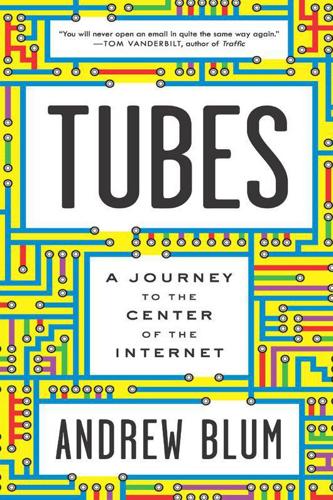
Tubes: A Journey to the Center of the Internet
by
Andrew Blum
Published 28 May 2012
In 1961, while a graduate student at MIT, he published the first paper on “packet switching,” the idea that data could be transmitted efficiently in small chunks rather than a continuous stream—one of the key notions behind the Internet. The idea was already in the air. A professor at the British National Physical Laboratory named Donald Davies had, unbeknownst to Kleinrock, been independently refining similar concepts, as had Paul Baran, a researcher at the RAND Corporation in Los Angeles. Baran’s work, begun in 1960 at the request of the US Air Force, was explicitly aimed at designing a network that could survive a nuclear attack. Davies, working in an academic setting, merely wanted to improve England’s communications system. By the mid-1960s—by which time Kleinrock was at UCLA, on his way toward tenure—their ideas were circulating among the small global community of computer scientists, hashed out at conferences and on office chalkboards.
…
See also Tata Communications New York City data storage in, 230 Equinix in, 164 and Europe-US telephone connection, 175 fiber highways in, 163–71, 172, 265–66 fiber-optic connections to, 26 Fitzgerald story about, 3 Google headquarters in, 163–64, 172 history of Internet and, 50 hubs in, 171–80, 181 as important network meeting point, 164 and Internet as series of tubes, 5 London traffic with, 180, 202, 208 111 Eighth Avenue (New York City), 163–64, 171, 266 peering and, 128 60 Hudson Street in, 171–74, 176 structure of Internet and, 27 32 Avenue of the Americas in, 171–80 as undersea cables port, 194, 199 New York University (NYU), 50 Newby, Hunter, 174 Ninth Avenue fiber highway (New York City), 164 Nipper, Arnold, 137–38, 140–43, 144–45, 239 North American Network Operators’ Group (NANOG), 58, 66, 157 Austin meeting of, 119–23, 127, 128–35, 157 Northrop Grumman, 62, 123 NorthWestNet, 53 NSFNET, 59, 138 NTT, 125 O’Kane, Victoria, 165 One Wilshire (Los Angeles, California), 200–201 111 Eighth Avenue (New York City), 163–64, 171, 266 online videos, 119 Open Compute project (Facebook), 258 optical modules, 160 Orlowski, Frank, 133–34, 135, 145, 157 Osés, Mara Vanina, 7 Pacific Bell, 64, 84 Pacific DC Intertie, 228 Page, Larry, 69–70 PAIX, undersea cables, PAIX and, 78 Pakistan Telecom, 30 Paling, Jol, 208, 209, 210–15, 216, 267 Palo Alto, California Adelson-Troyer-Blum meeting in, 71–72, 73 See also Palo Alto Internet Exchange (PAIX) Palo Alto Internet Exchange (PAIX) Adelson and, 72, 76–77, 88 Blum visit to, 71–72, 76–85 cable management at, 81–82 carriers and, 89 DEC and, 76, 87, 88 definition of Internet exchange and, 109 diversity at, 79 Equinix and, 76–77, 87 expansion of, 78, 86–87 importance of, 78 location of, 76 “network effect” at, 80–81 openness of Internet and, 117 peering and, 122, 127, 128 problems of, 85–86 Qatar Telecom and, 139 quantity of information passing through, 82–83 and rerouting traffic, 200–201 routers at, 79–80, 82–83, 266 security at, 95 Paris, France, structure of Internet and, 27 Passaic, New Jersey, Smithson tour of, 150–51, 152, 154 Patchett, Ken, 255–56, 257, 258–59, 260–62, 267 Pedro, John, 82 “peering” de-peering and, 123–24, 151 definition of, 118–19 division of groups for, 121–22 globalization of, 125–26 Internet exchanges and, 121–22, 126, 127, 129, 130 NANOG meeting and, 118–23, 128–30, 131–32 and “open peering policy,” 127 Qatar Telecom and, 140 Tier-1 domination of, 124–25 Witteman-Orloski meeting and, 133–35 PeeringDB (website), 126 Peter Faber (cable ship), 219, 221–22 Petrie, Anne, 83 Pipex, 184, 185, 186 “point of entry,” 178, 179 POP (point of presence), 59, 78, 84 Porthcurno (Cornwall, England), 202–16, 253, 267 Portugal, 191–92, 194, 217–26, 267 Postel, Jon, 31, 45 Prineville, Oregon: Facebook data center in, 250–62, 267 privacy issues, 258 Provo, Joe, 122 Provo, Ren, 122, 123 PSI, 56, 59, 60 Qatar, 197 Qatar Telecom, 79, 139–40 Quality Life Broadband (Q-Life), 236, 237, 238, 242, 246 Quincy, Washington, data centers in, 234–35, 250 RAND Corporation, 42 Reid, Brian, 74, 75, 76 Renesys, 123, 124–25, 151 Renton, Alan, 205–6 Research in Motion (RIM), 121 Resolute (cable ship), 218 Reyes, Felix, 77, 81 Roberts, Larry, 42–43, 51 routes/routers in Ashburn, 99–100 as basic building blocks of Internet, 158 Brocade, 157–58, 159–63, 188 dead-end, 31, 32 expansion of Internet and, 55 function of, 160 Internet as self-healing and, 200 IP addresses and, 29–30 at large Internet exchanges, 111 at MAE-East, 65–66, 75–76, 80 in New York City, 164–71 at PAIX, 79–80, 82–83, 266 peering and, 124–25, 127 and rerouting traffic, 200–201 “routing table” and, 30 Traceroute program and, 31–34 trust and, 30–31 “routing table,” 30, 125 Rudin Management, 174–75, 176 Rwanda, 110 Sabey, 235 Sacca, Chris, 237–38, 239 San Jose, California: peering and, 128 SAT-3 (undersea communications cables), 191–92, 197 satellites: Internet exchanges and, 110 Saudi Arabia, 197 Schoffstall, Marty, 60 SEACOM (undersea communications cables), 192, 197 Seales, Brian, 166–71 security/secrecy for cable landing stations, 202, 203 for data centers/storage, 93, 141, 237–40, 242–43, 254, 257 at DE-CIX, 140–41 at Dutch data centers, 152 at Equinix, 93, 141 at Google data center, 242–50, 254, 257 at Internet exchanges, 113–16 at LINX, 185–86 Sensitive Compartmented Information Facilities (“skiffs”), 62 Seoul, Korea: structure of Internet and, 27 service providers: peering and, 119 SESQUINET, 53 The Shadow Factory (Bamford), 63 Shorto, Russell, 146 Siemens Brothers, 206 Sigma-7 computer, 43 Silcock, Colin, 186, 187–89 Silicon Valley belief in limitless potential of technology in, 70 connection of networks in, 67 expansion of Internet and, 50 structure of Internet and, 27 wealth in, 70 See also Palo Alto, California; specific person or corporation Singapore, 128, 139, 194, 196, 199, 201 Singapore Telecommunications, 79 SIX (Seattle, Washington), 111 60 Hudson Street (New York City), 171–74, 176, 202, 215, 266 Smallwood, Christine, 107 Smithson, Robert, 150–51, 154 South Africa, 191–93, 197, 204, 219 South Asia, 196, 200 South Park (TV show), 107–8 Spain, 113 SPAN, 52 speed.
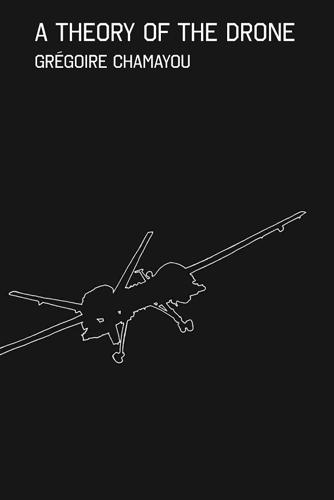
A Theory of the Drone
by
Gregoire Chamayou
Published 23 Apr 2013
Formica explained, with undisguised enthusiasm, in an e-mail: “Kill boxes enable us to do what we wanted to do for years . . . rapidly adjust the delineation of battlespace. . . . Now with automation technology and USAF [U.S. Air Force] employment of kill boxes, you really have a very flexible way of delineating battlespace both in time and on the ground.”19 In a memo addressed in 2005 to secretary of defense Donald Rumsfeld, the president of the RAND Corporation advised him that “a non-linear system of ‘kill boxes’ should be adopted, as technology permits,” for counterinsurgency operations.20 He stressed the following essential point: “Kill boxes can be sized for open terrain or urban warfare and opened or closed quickly in response to a dynamic military situation.”21 This twofold principle of intermittence and scalar modulation for the kill box is of capital importance: it makes it possible to envisage extending such a model beyond the zones of declared conflict.
…
See also law enforcement political analysis, 15 political automata, fabrication of, 205–21 political economy, 181, 186, 189 political geography, 52–53, 54 political philosophy, history of, 177–84 political science, American, 186 political subjectivity, relinquishing of, 205–21 political vulnerabilization, 184 politics, 66 self-deception and, 240n14 of verticality, 53–54, 66–67 Porter, Gareth, 50–51 postcolonial violence, 94–95 post-traumatic stress disorder (PTSD), 103, 106–13 definition of, 110–11 Powell, Colin, 186 power, 229–30n5 aerial, 53–54 corporeality and, 218–19, 221, 268n1 projection of, 12–13, 230n6 pragmatic co-presence, 247–54n8 precision, 56–57, 140–49 of aerial weaponry, 62–63 collateral damage and, 140 precision-distinction thesis, 142–47 surveillance and, 143–45 Predator drones, 13, 14, 28–29, 99, 141–42, 214–15 electronic communications and, 41 genealogy of, 26–29 name of, 35 transformation into a weapon, 29 video feeds transmitted by, 75 Predator (Martin), 114 predictive calculation, 34 preemptive anticipation, 42–44 “preemptive manhunting,” 32 presence, definition of, 247–54n8 preservation of life, 127, 136, 138–39, 154–55, 180–81 military ethos and, 100–101, 131–33, 136–37 national, 194 sovereignty and, 182 by substitution, 187 press, 14, 107–8, 148 See also specific media outlets principle of unnecessary risk, 137 profiling, 42, 47, 51, 145 See also pattern-of-life analysis programming, 210–11, 212 projecting power, 12–13, 54, 77, 229–30n5, 230n6 prophylactic elimination, 34, 35 proportionality, 137–38, 162, 169, 198, 215, 216, 269–70n10, 273n26 protection obedience and, 178–79 political sovereignty and, 178–79 protection debt, 179 state–subject relations and, 178–79 protective sovereignty, 178–79, 183–84, 194, 268n5 protectorates, 178 protests, 142 See also antiwar movement proximity acuteness and, 262n10 killing and, 115–17, 116 optical, 255–56n22, 255n13 perceptual, 116–17 surveillance and, 116–17 tele-technologies and, 247–54n8 psychopathologies, 106–13 Pufendorf, Samuel von, 160–61, 163 pursuit, rights of, 53 radio-controlled planes, 85, 242–43n1 Radioplane Company, 25, 26 radio police automatons, 219, 220, 221 radios, 41 Rafael Armament Development Authority, 261n12 RAND Corporation, 55 rational choice, theory of, 186 RCA, 84–85 Reaper drones, 35, 41, 92, 92 reciprocity eradication of, 17 right to kill and, 163–64, 165 violence and, 196 warfare and, 161–62 reconnaissance, 28 Red Army Faction, 68 Red Brigades, 68 Reisner, Daniel, 167 remote control, 21, 23, 242–43n1 as philanthropic device, 23 remotely piloted vehicles (RPVs), 27–28, 85, 96 See also radio-controlled planes remote warfare, 192, 230n6 Republic (Plato), 96 republican regimes, 183, 185 repugnance generate by killing, theory of, 115–16, 197, 246n19 responsibility.

Miss Wyoming
by
Douglas Coupland
Published 14 Mar 2000
Vanessalooked smart in a way John knew she was helpless to conceal.She had the laser-scanning eyes of the highest-paid personalassistants, the ones who single-handedly made Neanderthal teensploitation film producers seem classy and hip by scripting 46O the brief, urbane speeches they gave while donating comically large checks to well-researched and cutting-edge charities. Vanessa was quite obviously some freak of nature maroonedon the shores of the bell curve's right-most limits. "What do you do for a living, Vanessa?" John asked, stretching out his neck asif it would help lob his words around a bend in the wall. "I work at the Rand Corporation." This didn't surprise John. "No shit. Doing what?" " Think-tanking." "You sit around in beanbag chairs all day and think up mili-tary invasion strategies and ways to suppress the development ofelectric cars?" She pretended not to have heard that and came in and handed him his Coke. He took a sip and paused.
…
She attended The Rocky Horror PictureShow at midnight screenings for two years running, dressed as Susan Sarandon, which left her with a lifelong yen for midwest-ern twin-set outfits. She read sci-fi. She tried joining Mensa butwas turned off by the bunch of balding men who wanted todiscuss nudism, and women who refused to stop punning or laughing at their own spoonerisms. Half a year before graduation, a dozen companies battled to employ Vanessa, but she chose the Rand Corporation becausethey were in Santa Monica, California, close to Hollywood andwhat could only be a surplus of advanced geniuses. She was notabove movies—they were the one genuinely novel art form of the twentieth century. Her work in California was pleasure, and at night she wentout into the coffee bars of Los Angeles, meeting dozens ofyoung men with goatees and multiple unfinished screenplays.

The Twittering Machine
by
Richard Seymour
Published 20 Aug 2019
It implemented a form of packet-switching, wherein a message is broken into bits of data, distributed over optimal routes and reassembled at destination, and which is still used today in the foundational protocols of the internet. These systems were chosen, in part, for their military virtue. An alluring myth of the internet’s origins has it that it was essentially invented by Paul Baran, of the RAND Corporation, as a way for communications to survive nuclear war.11 The Arpanet system was actually designed separately, without Baran’s direct involvement. Nonetheless, it used remarkably similar ideas, and Baran was one of the major inventors of the distributed network and the packet-switching method. The underlying idea for a ‘distributed network’ of writing, published in a 1964 article, was that in the event of a nuclear strike, the communications system would best survive if it wasn’t centralized.12 This necessitated plenty of redundancy in the network.
…
Cade Metz, ‘Paul Baran, the link between nuclear war and the internet’, Wired, 4 September 2012; 12. The underlying idea for a ‘distributed network’ of writing . . . Paul Baran, ‘On Distributed Communications: I. Introduction to Distributed Communications Networks’, United States Air Force Project RAND, RAND Corporation, August 1964. 13. As Sandy Baldwin puts it . . . Sandy Baldwin, The Internet Unconscious: On the Subject of Electronic Literature, Bloomsbury: New York, 2015, pp. 33–7. 14. It was desperate to outdo Britain and Germany . . . Antonio Gonzales and Emmanuelle Jouve, ‘Minitel: histoire du réseau télématique français’, Flux: Cahiers scientifiques internationaux Réseaux et territoires, 2002, Vol. 1, No. 47, pp. 84–9. 15.
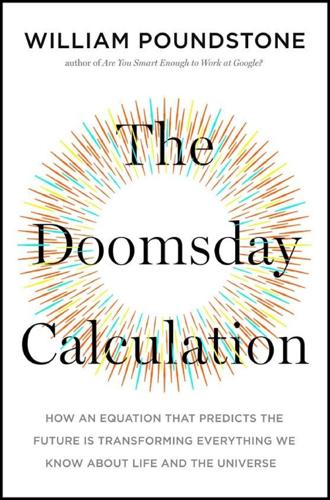
The Doomsday Calculation: How an Equation That Predicts the Future Is Transforming Everything We Know About Life and the Universe
by
William Poundstone
Published 3 Jun 2019
It was that that injured the three girls, parents Walter and Effie Gregg, and their son Walter Jr. There were no deaths aside from a few chickens. The Greggs lived in a town called Mars Bluff. Today, sixty summers later, the crater is still visible. Albert Madansky was a young statistics PhD from the University of Chicago, recruited by the RAND Corporation, a Santa Monica think tank contracting to the Pentagon. RAND wanted Madansky to tackle a problem that was easy to state but difficult to answer: What is the probability of a nuclear weapon detonating by accident? The Mars Bluff incident, occurring the year after Madansky began work at RAND, was a prime topic of discussion.
…
“Here’s How One of Google’s Top Scientists Thinks People Should Prepare for Machine Learning.” CNBC, April 29, 2017. cnb.cx/2HN0g4l. Hut, Piet, and Martin J. Rees. “How Stable Is Our Vacuum?” Nature 302 (1983): 508–509. Iklé, Fred Charles, G. J. Aronson, and Albert Madansky. “On the Risk of an Accidental or Unauthorized Nuclear Detonation.” RM-2251. Santa Monica: RAND Corporation, 1958. Jaynes, E. T. “Prior Probabilities.” IEEE Transactions on Systems Science and Cybernetics, SSC-4 (1968): 227–241. Jenkins, Alejandro, and Gilad Perez. “Looking for Life in the Multiverse.” Scientific American, January 2010. Jones, Eric M. “‘Where Is Everybody?’: An Account of Fermi’s Question.”

War
by
Sebastian Junger
Published 15 Nov 2010
On Combat: The Psychology and Physiology of Deadly Conflict in War and in Peace. Warrior Science Publications, 2004. “Health Facilities Elude Kunar — Thanks to Insecurity.” Pajhwok Afghan News, February 18, 2006. Helmus, Todd C., and Russell W. Glenn. Steeling the Mind: Combat Stress Reactions and Their Implications for Urban Warfare. Rand Corporation, 2005. Henry, James P. “Psychological and Physiological Responses to Stress: The Right Hemisphere and the Hypothalamo-Pituitary-Adrenal Axis, An Inquiry into Problems of Human Bonding.” Acta Physiologica Scandinavica, Supplementum, Vol. 640, 1997, pp. 10–25. Jones, Franklin D., Linette R. Sparacino, Joseph M.
…
Levav, Itzhak, MD, Haim Greenfeld, and Eli Baruch, MD. “Psychiatric Combat Reactions During the Yom Kippur War.” American Journal of Psychiatry, Vol. 136, No. 5, May 1979. Marlowe, David H. “Psychological and Psychosocial Consequences of Combat and Deployment with Special Emphasis on the Gulf War.” Rand Corporation, 2000. Rohde, David, and David E. Sanger. “How the ‘Good War’ in Afghanistan Went Bad.” New York Times, August 12, 2007. Shah, Taimoor, and Carlotta Gall. “NATO and Afghan Troops Clash with Taliban in Strategic Area Near Kandahar.” New York Times, June 18, 2008. Shalit, Ben. The Psychology of Conflict and Combat.
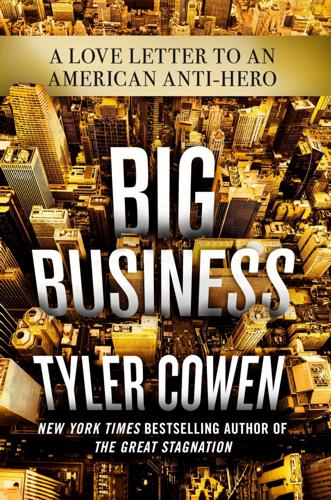
Big Business: A Love Letter to an American Anti-Hero
by
Tyler Cowen
Published 8 Apr 2019
For a related point, see Summers 2017. 33. On research and development, see Davies et al. 2014, 22, and also the discussion in Cowen 2017. 34. On this, see Fried and Wang 2017. Chapter 4: Is Work Fun? 1. See Graeber 2018; Moran 2018. 2. See Kahneman et al. 2004. 3. Maestas et al. 2017, 40. This RAND Corporation study, by the way, produced much more favorable results on the quality of American jobs than the surrounding media write-ups might have led an observer to believe. 4. For varying perspectives on these results, see Kuhn, Lalive, and Zweimueller 2007; Tausig 1999; Clark and Oswald 1994.
…
Lublin, Joann S. 2017. “Few Can Fill the CEO’s Job, Directors Say.” Wall Street Journal, October 10, 2017. Maestas, Nicole, Kathleen J. Mullen, David Powell, Till von Wachter, and Jeffrey B. Wenger. 2017. “Working Conditions in the United States: Results of the 2015 American Working Conditions Survey.” RAND Corporation, Santa Monica, CA. Maksimovic, Vojislav, Gordon M. Phillips, and Liu Yang. 2017. “Do Public Firms Respond to Investment Opportunities More Than Private Firms? The Impact of Initial Firm Quality.” NBER Working Paper No. 24104. National Bureau of Economic Research, Washington, DC. Manjoo, Farhad. 2017.
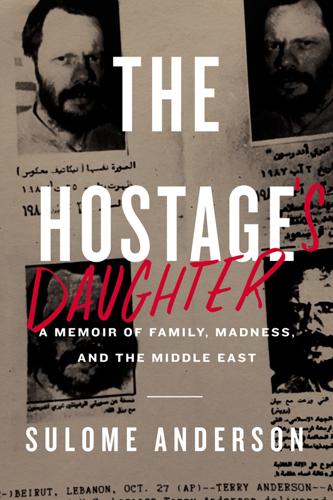
The Hostage's Daughter
by
Sulome Anderson
Published 24 Aug 2016
Library of Congress country studies, Iran. 43 Shiites clash with the Christian South Lebanon Army, In the Path of Hizbullah, Ahmad Nizar Hamzeh, page 93. 44 Death toll from 1983 American embassy blast, “U.S. Embassy in Lebanon Devastated by Bomb Blast; Dozens Killed, Pro-Iran Group Named,” Facts on File World News Digest, April 22, 1983. 44 The U.S.-led multinational peacekeeping force was seen by many as supportive of Israel, Lebanon 1982–1984, Rand Corporation report. 44 Terry Anderson covered embassy attack, “U.S. Embassy in Beirut Bombed, 39 Dead,” Associated Press, April 19, 1983. 44 Ryan Crocker survived 1983 Beirut blast, G. W. Bush’s speech awarding Crocker Medal of Freedom, January 18, 2009. 45 Fifty-eight French paratroopers killed in 1983 barracks bombing, “France Remembers 58 Soldiers Killed in Drakkar, Beirut,” RFI, October 24, 2013. 45 Beirut marine barracks bombing the single deadliest day in U.S.
…
Slate, March 10, 2014. 78 Abbas Musawi and Sobhi al-Tufayli were secretaries-general of Hezbollah, A Privilege to Die, by Thanassis Cambanis, page 112. 80 TWA flight 847 hijacked by Islamic Jihad, “Terror Aboard Flight 847,” Time, June 24, 2001. 90 “Regarding Iran Contra,” Excerpts from the Tower Commission. 92 Fear of Soviet influence on Iran, “The Soviet Union and Iran,” Foreign Affairs, Spring 1983. 92 Shah of Iran deposed, replaced by Islamic regime, “Iran 1979: A Revolution That Shook the World,” Al Jazeera, February 11, 2014. 92 Fifty-two hostages released minutes after Reagan is sworn in, “Reagan Takes Oath as 40th President; Promises ‘An Era of National Renewal,’ Minutes Later, 52 Hostages in Iran Fly to Freedom After 444-Day Ordeal,” New York Times, January 21, 1991. 94 David Kimche obituary, Guardian, March 10, 2010. 94 Kimche-McFarlane meeting and initial Israel-U.S. deal regarding selling arms to Iran, Understanding the Iran-Contra Affair, Brown University. 94 Kimche suggested Ghorbanifar to McFarlane as go-between with Iran, Understanding the Iran-Contra Affair, Brown University. 95 McFarlane choses North as point man for the arms deals, The Final Report of the Independent Counsel for Iran/Contra Matters, Lawrence Walsh, August 4, 1993. 95 McFarlane agrees to work with Ghorbanifar, “The Front,” American Prospect, March 20, 2005. 95 Reagan administration’s support of the Contras, “Regarding Iran Contra,” excerpts from the Tower Commission. 95 Unclear which faction in Iran had influence over the hostage-takers, Getting the Hostages Out: Who Turns the Key?, Rand Corporation report, May 1990. 95–96 North and McFarlane bring Bible to Iran, “McFarlane Took Cake and Bible to Teheran, Ex-CIA Man Says,” New York Times, January 11, 1987. 96 Ash-Shiraa breaks arms-for-hostages deals, “Iran-Contra: Who Leaked Ronald Reagan’s 1985–1986 Arms-for-Hostages Deals?,” National Security Archives, November 4, 2014. 96 Ash-Shiraa accused of being a mouthpiece for Syria, How the Iran-Contra Story Leaked, declassified CIA report, summer 1989. 96 Ash-Shiraa accused of being a Mossad asset, “Ari Ben-Menashe,” World Heritage Encyclopedia. 101 Abolhassan Banisadr believes in October Surprise narrative, “Bani-Sadr, in U.S., Renews Charges of 1980 Deal,” New York Times, May 7, 1991. 101 Yitzhak Shamir says October Surprise took place, “Shamir’s October Surprise Admission,” Consortium News. 101 Israel-Iran arms deal; Argentinian plane crash in Soviet Union, “$27 Million, Israel, Iran Arms Deals Told,” Chicago Tribune, July 27, 1981. 101–102 PBS interview, Nick Veliotes, declassified documents describing McFarlane’s attempts to channel weapons to Iran via Israel pre-Iran-Contra, How Neocons Messed up the Mideast, Consortium News, February 15, 2013. 103 “Captive CIA Agent’s Death Galvanized Hostage Search,” Washington Post, November 25, 1986. 104 Iran-Contra changed U.S. hostage negotiation policy, “The Illusion of a Hostage Policy,” New Yorker, February 3, 2015. 104 U.S. hostage policy of “quiet diplomacy” and silence in the press, “The Families of Hostages Are Told to Keep Quiet.
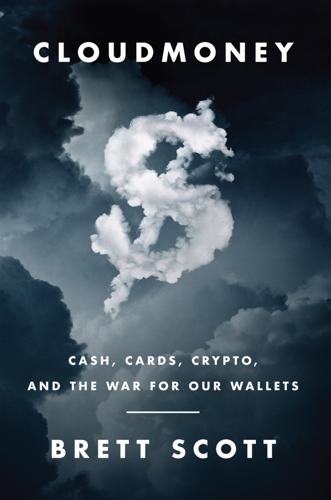
Cloudmoney: Cash, Cards, Crypto, and the War for Our Wallets
by
Brett Scott
Published 4 Jul 2022
If the payments sector can push cash users ever more into the digital realm, they will build a data goldmine of mammoth proportions. An early record of disquiet about the power that financial institutions would accrue through this process can be traced back to 1968, when Paul Armer, a prominent computer scientist from the RAND Corporation, stood before a US Senate sub-committee to give testimony on the ‘Privacy Aspects of the Cashless and Checkless Society’. He laid out his concerns in detail: Excerpt from Paul Armer’s testimony Armer was not the only one to be thinking ahead about the pitfalls of a bank-dominated society.
…
Morgan, 8, 96, 150, 156, 227, 232 Jamaica, 42 Japan, 18, 35, 135, 215, 248 Johannesburg, South Africa, 129 Johnson, Alexander Boris, 38 Kazakhstan, 11, 227–9, 233, 247 Keep Cash UK, 262 Kelly, Kevin, 12 Kentridge, William, 144 Kenya, 47, 75, 129, 130–31, 169, 178, 179 Kerouac, Jack, 173, 175 Keynesianism, 80 ‘Kindness is Cashless’, 40 Kiva, 238 Kowloon Walled City, Hong Kong, 216, 219, 220, 226 Kuala Lumpur, Malaysia, 60, 74 Kurzweil, Ray, 153, 252–3 Kyoto, Japan, 135 La Guardia Airport, New York, 128 learning methodology, 163–4 left-wing politics, 7, 184, 191, 211–12, 215 Lehman Brothers, 17–18 Lenddo, 169 Level 39, Canary Wharf, 17, 20, 27, 41, 143 Leviathan (Hobbes), 177 leviathans, 177–84, 215–16 libertarianism, 7, 14, 42, 155, 156, 184 cryptocurrency and, 191, 212, 215–16, 225–6 Libra, 236–41, 245 Litecoin, 218 Lloyds, 72–3, 144, 146 loans, 70–71, 107, 159 artificial intelligence and, 167–8, 172 London, England, 128, 247, 248 Brixton Market, 177 Camberwell, 128 Canary Wharf, 17–18, 20, 41, 62, 211 City of London, 6, 135 Mayor’s Fund, 38 Somali diaspora, 116, 179 Stock Exchange, 24 Underground, 11, 37–8, 86, 87 longevity derivatives, 160 Lonsdale, Joe, 155 Lord of the Rings, The (Tolkien), 19, 155 Los Angeles, California, 101 Luther, Martin, 212 M-Pesa, 79, 109 machine-learning systems, 163–4 Macon, USS, 153 Mafia, 163 Main Incubator, 143 Malaysia, 7, 45, 60, 74 Malick, Badal, 127–8 malware, 32 manifest destiny, 212 ‘Manifesto for Cashlessness’ (Emili), 37 Maputo, Mozambique, 96 Marcus, David, 237, 241 Maréchal, Nathalie, 113 marijuana industry, 101–3 market price, 29, 171 markets, 65, 124–6, 176–80 choice and, 124–6 giant parable, 54 informal, 176–9 oligopolies and, 124–5 payments companies and, 29, 30, 31, 32–3 Marxism, 155, 262 Massachusetts, United States, 46 Massachusetts Institute of Technology (MIT), 7 Mastercard, 30, 37, 39, 77, 91 automatic payments, 149 data, 109, 111 financial inclusion and, 131–2 Wikileaks blockade, 116 Masters, Blythe, 232 Matrix, The (1999 film), 226 Mayfair, London, 6 McDonald’s, 145, 153 Medici family, 135 Melanesia, 255–6 Mercy Corps, 131, 132 Mexico, 42 Microsoft, 7 Azure cloud, 233 Word, 32, 156 middle class, 86, 128, 129 Mighty Ducks, The (1992 film), 234 Military Spouse, 153 millennials, 86, 140 Minority Report (2002 film), 10 mis-categorisations, 167 mist, 30–33 MIT Media Lab, 7 Modi, Narendra, 43, 93 Moffett airfield, California, 153 Monetarism, 80 money creation, 59–63, 67–72, 202 Money Heist (2017 series), 61 money laundering, 42, 116 money users vs. issuers, 50–52 money-passers, 30, 32–3 Monzo, 113, 142 Moon Express Inc., 153 mortgages, 26–7, 94 motor cortex, 248 Mountain View, Silicon Valley, 153 Moynihan, Brian, 38 Mr Robot, 184 Mubarak, Hosni, 116 Mugabe, Robert, 239–41 Mumbai, India, 96 Musk, Elon, 15, 212, 257 mutual credit systems, 259–60 N26, 142 Nairobi, Kenya, 129, 179 Nakamoto, Satoshi, 13, 184–5, 187, 191, 204 NASDAQ, 157, 233 National Aeronautics and Space Administration (NASA), 153 National Arts Festival, 144 National Retail Federation, 86 National Security Agency (NSA), 112, 155 Nationwide, 145–6 Natural Language Processing (NLP), 146 natural market order, 192 Nazarbayev, Nursultan, 227 Neener Analytics, 169 neo-Nazism, 226 nervous system, 20–22, 57, 80, 81, 240, 247–8, 251–2 Nestlé, 24, 28 Netflix, 61 Netherlands, 48, 49, 128–9 Nets Union Clearing Corp, 115 Network Computing, 78 New Age spiritualism, 7, 14, 193, 226 New Jersey, United States, 46 New Scientist, 137 New World Order, 261 New York City, New York, 18, 91–2, 128, 248 La Guardia Airport, 128 Wall Street, 6, 178–9 Nigeria, 43 No Cash Day, 37 no-file clients, 169 Nobel Prize, 93 nomadism, 228 non-seepage, 73 Norway, 35 nudging, 39, 93, 114 Nur-Sultan, Kazakhstan, 11, 227–9 O’Gieblyn, Meghan, 154 Oakdale, California, 101 Occupy movement (2011–12), 211, 215 Office of National Statistics, 83 oil industry, 6, 22–4 oligopolies, 2, 12, 15, 89, 124–5, 142, 151, 180–83, 191 cryptocurrencies and, 229–33, 246 On the Road (Kerouac), 173, 175 OpenBazaar, 229 OpenOil, 24 operating system, 141–2 Oracle, 109 Oxford English Dictionary, 144 Pakistan, 61 Palantir, 155, 157, 226 Panama Papers leak (2016), 81 panopticon effect, 118–19, 172 Papua New Guinea, 191 passive process, 125–6 PATRIOT Act (2001), 111, 179 payments companies, 30, 32–3, 39–41, 77–8, 79 automatic payments, 149 data, 108–9 interpellation, 86–7 plug-ins, 79, 115, 141–2 PayPal, 50, 79, 109, 155, 226, 233–7, 243 New Money campaign (2016), 86–7 Wikileaks blockade, 116 Payter, 31–2 Paytm, 44, 79, 150 Peercoin, 218 Penny for London, 37–8 pension funds, 7, 23 People’s Bank of China, 79, 242 periphery, 28, 248 Peru, 129–30, 176 Peter Diamandis, 153 Philadelphia, Pennsylvania, 41, 133 Pierce, Brock, 234 Piercy, Marge, 150 Pisac, Peru, 129 point-of-sales devices, 40, 77, 130 points of presence, 148 poker games, 91 Poland, 37, 91 police, trust in, 93 Politics of Bitcoin, The (Golumbia), 225 posture, 49 pre-capitalist societies, 55, 215, 251 Premier League, 231 primary system, 50–64 Privacy International, 168 privacy, 2, 43, 44, 46, 47, 104–19 private blockchains, 229, 231 Prohibition (1920–33), 102 promises, 50, 52, 58–9, 61, 70–72, 205–6, 259–60 casino chips, 68–9 deposits as, 69 digital money, 70–72 giant parable, 52–6, 63–4, 188 loans, 70–71, 107, 159 mutual credit systems, 259–60 Promontory Financial Group, 38 Protestantism, 212, 255 psilocybin, 226 psychometric testing, 169 pub quizzes, 91 Pucallpa, Peru, 130, 176, 249 Puerto Rico, 234 Quakers, 135 Quechuan people, 129 Quorum, 232 R3, 233 RAND Corporation, 105 re-localisation, 259 re-skinning, 16, 135–51, 171, 175 Red Crescent, 131 refugees, 131–2 Reinventing Money conference (2016), 31 remittances, 105, 116 Revolut, 140, 142 right-wing politics, 7, 14, 184, 191–3, 211–12, 215, 225–6, 261 rippling credit, 260 risk-adjusted profit, 94 Robert Koch Institute, 34 robotics, 11 Rogoff, Kenneth, 47, 92–3 rolling blackouts, 247 Roman Empire (27 BCE–395 CE), 55–6 Romeo and Juliet (Shakespeare), 29, 30, 32 Rowe, Paulette, 38 Royal Bank of Canada, 158 Royal Bank of Scotland, 62 Russia, 6, 42, 48, 140, 227 Samsung, 11 San Francisco, California, 35, 46, 119, 133, 179, 247 Sān people, 4 Santander, 38 Sardex system, 259 Satoshi’s Vision Conference, 215 Save the Children, 131 savers, 25 Scott, James, 228 seasteading, 156, 216 secondary system, 50, 63–4 self-service, 145–6 SEPA, 80 September 11 attacks (2001), 111 Serbia, 7 sex workers, 96 Shakespeare, William, 29 Shanghai, China, 18, 115, 248 Shazam, 180 Sherlock Holmes series (Doyle), 114, 162, 165, 166 Shiba Inu, 13 Shipibo-Conibo people, 130 Sikoba, 260 Silicon Valley, 7, 9, 139–41, 148, 153, 180, 221 Libra, 237 Singularity, 154–6, 252–3 Silk Road, 227, 229 Singapore, 11, 18, 168, 248 Singularity, 153–6, 226, 252, 252–3 Singularity University, 153–6, 252–3 six degrees of separation theory, 260 skyscrapers, 17–20, 27, 253 slow-boiling frogs, 104 smart cities, 11, 180 smart contracts, 220–24, 258 smart homes, 180 smartphones, 4, 28 financial inclusion and, 95 posture and, 49 Smith, Adam, 251 smoking, 181 Snow Crash (Stephenson), 10 social class, 91–9, 113, 128, 129, 155, 167 Somalia, 116, 179 South Africa, 3–4, 11, 28, 55, 62, 128, 175–6 apartheid, 95 hut tax, 55 National Arts Festival, 144 rolling blackouts, 247 syncretism in, 175–6 South Sudan, 105 Spiegel, Der, 112 Spotify, 166 spread-betting companies, 26 stablecoins, 233–41, 245–6, 255 Standard Bank, 95, 144 states, 42–5, 50–64, 176–85, 215 anti-statism, 42, 184, 215–16 base money, 69 centralisation of power, 15, 180–83 cryptocurrency and, 215 data surveillance, 110–12, 114–15, 155, 168 digital currencies, 242–5 expansion and contraction, 57–8 giant parable, 52–6, 63–4 markets and, 176–80 money issuance, 58–9 primary system, 50, 51, 63 Stockholm syndrome, 121, 131 sub-currencies, 72–3 sub-prime mortgages, 26–7, 94 subsidiary companies, 24, 26–7 Sufism, 91 suits, 124 Sunset Boulevard, Los Angeles, 101 Super Bowl, 8, 261 super-system, 3 supply, 29 surveillance, 2, 7, 8, 10, 15, 33, 39, 42, 72, 104–19, 153–72, 180, 250 artificial intelligence and, 153–72 banking sector and, 108–9 Big Brother, 113–15 CBDCs and, 244, 245 panopticon effect, 118–19, 172 payments censorship, 116–18 predictive systems, 105 states and, 110–12, 114–15, 168 Suspicious Activity Reports (SARs), 111 Sweden, 35, 43, 48, 84, 121 Sweetgreen, 91, 93 SWIFT, 32, 75–6, 80, 108, 112 Switzerland, 35, 108 Symbiosis Gathering, 101 syncing, 195–7, 200–202, 231 syncretism, 175–6 systems failures, 32, 34, 48 Szabo, Nick, 220 Taiwan, 234, 235 Tala, 169 taxation, 55, 57, 110 evasion, 42, 43, 45, 46 TechCrunch Disrupt, 130 Tencent, 2, 7, 114, 178 terrorism, 42, 48, 112, 127 Tether, 234–5, 241 Thaler, Richard, 93 Thatcher, Margaret, 193 Thiel, Peter, 155, 226 thin-file clients, 169 timelines, 197–200 Times of India, 44 tobacco, 181 Tokyo, Japan, 18, 215, 248 Tracfin, 112 transfers, 74–8 transhumanism, 180 Transport for London, 11, 37–8, 86, 87 Transylvania, 65 Trustlines, 260 Twitter, 167, 198 Uber, 2, 149, 177, 179, 237 Uganda, 168 unbanked, 35, 94, 181, 238 underdog, support for, 106 Unilever, 99, 131 United Kingdom American Revolutionary War (1775–83), 60 banking oligopoly, 230 Canary Wharf, 17–18, 20, 41, 62, 211 cash use in, 249 City of London, 6, 135 colonialism, 55, 97, 175–6, 178, 239 digital money system in, 72 GCHQ, 112 HMRC, 110 Premier League, 231 Royal Mint, 60 Somali diaspora, 116, 179 Taylor Review (2016–17), 110 Transport for London, 11, 37–8, 86, 87 United Nations, 14 blockchain research, 222 Capital Development Fund, 37 World Food Programme, 132 United States cash use in, 41, 46, 133 CBDCs and, 244–5, 254 Central Intelligence Agency (CIA), 155 China, relations with, 74–5, 245, 255 data surveillance, 111–12, 155 dollar system, 80, 182, 210, 233–6, 239, 240 Federal Bureau of Investigation (FBI), 111, 155 Federal Reserve, 32, 35, 36, 234 Financial Crimes Enforcement Network, 111 hurricanes in, 36 leviathan complex, 178 marijuana industry, 101–3 NASA, 153 National Security Agency (NSA), 112, 155 Occupy movement (2011–12), 211, 215 PATRIOT Act (2001), 111, 179 Prohibition (1920–33), 102 Revolutionary War (1775–83), 60 Senate, 105–6 September 11 attacks (2001), 111 Singularity University, 153–6 Super Bowl, 8, 261 Wall Street, 6, 178–9 Uruguay, 42 USAID, 45, 127, 178, 179, 245 vending machines, 31–2, 220 Venmo, 79, 243 Ver, Roger, 212, 214, 215 Vienna, Austria, 7 virtual reality, 10 Visa, 15, 30, 31, 37, 39, 40, 41, 44, 77, 80, 127, 174, 255 automatic payments, 149 data, 108, 109, 111, 112 plug-ins, 142 USAID and, 128, 178, 245 Wikileaks blockade, 116 VisaNet, 77 Wall Street, New York City, 6, 178–9 Occupy movement (2011–12), 211, 215 Wall Street (1987 film), 8 Wall Street Journal, 133 Warner, Malcolm, 106 WarOnCash, 37 Weber, Max, 179 WeChat, 79, 109, 114–15, 150 welfare, 43, 113, 118 Wells Fargo, 109, 234, 235 WhatsApp, 75, 198, 237–8, 244, 255 Wikileaks, 116, 183 Wilson, Cody, 216 Winton Motor Carriage Company, 87, 90 Wired, 12 World Economic Forum, 11 World Food Programme, 132 World Health Organisation (WHO), 34 World of Warcraft (2004 game), 234 Xhosa people, 175–6 YouTube, 163, 166, 167, 170 Zambia, 131 Zimbabwe, 11, 239–41, 245 Zuckerberg, Mark, 241 About the Author BRETT SCOTT is an economic anthropologist, financial activist, and former broker.
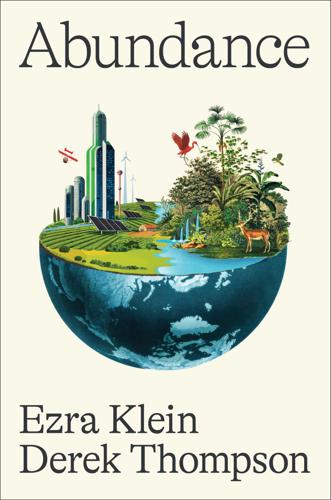
Abundance
by
Ezra Klein
and
Derek Thompson
Published 18 Mar 2025
Computer scientists at the Carnegie Institute of Technology (now Carnegie Mellon) and engineers at Stanford University collaborated to link computing systems to send coast-to-coast messages. In 1966, Bob Taylor, a psychologist who had worked at NASA, took over Licklider’s program. He vastly expanded the network of collaborators, pulling in pioneers of science and engineering from several more universities, engineering firms, and government labs, including MIT, the RAND Corporation, and UCLA. When ARPANET went online in 1969, the world’s original—and very basic—internet required the collaboration of individuals and firms who would never have otherwise come together. To invent an online network of information, Licklider and Taylor built an offline network of minds. Every worthwhile DARPA project is a bit like this, Fuchs said.
…
Robert, 150 Organisation for Economic Co-operation and Development (OECD), 23, 79, 97 Orr, Robert, 191 others, immigrants as, 208 Otis, Elisha, 173 outsourced work, 117–24 Oxford University, 170 Ozempic, 157–58 Packalen, Mikko, 157 Pahlka, Jen, 119–24 Palace of Versailles, 62 “Papers and Patents Are Becoming Less Disruptive Over Time” (Park, Leahey, and Funk), 147 parking, housing and, 42, 45–46 Parsons Corporation, 118 PCR (polymerase chain reaction) tests, 158 peer review system, invention and, 156–57, 162 Pell Grants, 7 penicillin, 169–71, 174–75, 176, 180, 183–85, 202 Pennsylvania air pollution in, 50 I-95 bridge repair, 125–28 People of Plenty (Potter), 19, 22, 221 Petaluma (California) Plan, 36–37, 38 Pethokoukis, James, 16 Petsko, Gregory, 148 Pew Research Center, 94 Pfizer, 29–30, 132, 186, 188 PGH Wong Engineering, 118 phosphorous, 143 pie metaphor of economy, 11–15 Pioneer Award (NIH), 159, 160 Podesta, John, 77 political issues; see also Democratic Party; liberalism; Republican Party big government–small government divide, 105–12, 205 federal civilian workforce size, 117 politics of invention, 133–37 (see also invention) public opinion of government responsibility, 14–15, 89–94, 182–83 red-state/blue-state construction productivity measure, 80 red-state/blue-state housing policy, 33–38, 106–7 of right-wing populism, 17, 207–8 state capacity concept, 105 of supply-side economics, 5–11 values and abundance, 15, 49, 83, 205, 207–11, 216 political order concept, 203–7, 220–21 pollution, see environmentalism polymerase chain reaction (PCR) tests, 158 Port Huron Statement (1962), 205 Portugal, rail system cost of, 77 Postman, Neil, 15 Potter, David M., 19, 22, 221 poverty, homelessness and, 40 The Power Broker (Caro), 55 Presidents, Populism, and the Crisis of Democracy (Howell and Moe), 17 primary-care physicians, scarcity of, 190–91 “The Procedure Fetish” (Bagley), 90–91, 93–94 progress, pace of; see also deployment and implementation; invention implementation and, 176–84 (see also deployment and implementation) Karikó Problem and, 141–49, 156 progressivism, see liberalism Project Finance Advisory, 118 Proposition 209 (California), 103 Proposition HHH (Los Angeles), 107–10 Proxmire, William, 153 Public Citizens (Sabin), 87–89 public opinion of government, 14–15, 89–94, 182–83; see also political issues public (social) housing, availability of, 111–12 pull funding, 192–95 race, housing and, 35–38, 46–47 Raimondo, Gina, 114, 115–16 RAND Corporation, 162 Ransohoff, Nan, 193, 195 Reagan, Ronald, 7, 52–53, 179, 205, 206, 221 Recoding America (Pahlka), 119–24 Redlener, Irwin, 184 Regulatory Accountability Act (2017), 90 Republican Party on COVID vaccines, 188 on environment, 51–53 on government size, 117 on health care, 135–36 litigation and legal bureaucracy, 89–94 political order concept and, 203–7, 220–21 presidential election (2024) and, 17–18, 213 supply-side economics as right-wing, 6 Tea Party movement, 33 Reynolds, Malvina, 55 The Rise and Decline of Nations (Olson), 81–83, 93 The Rise and Fall of the Neoliberal Order (Gerstle), 203–4, 220–21 Ritchie, Hannah, 64, 66, 194 Rockefeller Foundation, 149 rooming houses, building codes against, 41–43 Roosevelt, Franklin D., 150, 174, 204, 205, 206, 221 Rosling, Hans, 63 Rothman, James, 140–41 Ruhl, J.

Cities Under Siege: The New Military Urbanism
by
Stephen Graham
Published 30 Oct 2009
WAR GHOST TOWNS Despite the recent proliferation of urban warfare training sites, senior Pentagon officials are convinced that these sites are completely inadequate to the task of training US forces to counter future urban insurgencies in fast-growing megacities. As a result, the US Congress commissioned the RAND Corporation, the nation’s long-time military think-tank, to explore other options. The resulting four-hundred-page report was published in 2006.36 The report starts off with the premise that ‘US armed forces have thus far been unable to adequately reproduce the challenges their soldiers, sailors, marines and airmen meet in the towns and cities of Iraq and Afghanistan’.37 First the RAND researchers evaluate the existing urban-warfare training sites in terms of whether they offer the most challenging architectural and infrastructural features encountered when military operations are undertaken within large cities of the global South.
…
‘These areas are likely to become fertile ground for the evolvement of radical Islamic movements’.4 LEARNING FROM JENIN Only a few weeks before the launch of Operation Defensive Shield, I attended a conference on ‘urban warfare’ organized by Soffer at Haifa University in Israel, in partnership with the influential RAND Corporation, a major think tank in the United States originally established to undertake military research.5 Populated by senior US Marine Corps, IDF, and British Army commanders and specialists in urban warfare, along with representatives from RAND, the conference was part of an ongoing series which offered the opportunity to exchange practical tips on fighting wars and counterinsurgency operations in cities.
…
In addition, he continues, ‘Caterpillar D9 armoured bulldozers complete with “mine plows” were employed to clear away fortified buildings, IEDs [Improvised Explosive Devices] and booby trap nests, thus allowing tank-infantry squads to manoeuvre through streets more easily’.7 By learning directly from these new urban wars, the US military has worked hard to improve its ability to pacify and control the cities deemed the main foci of its adversaries. Drawing on conferences like the one in Haifa, Evans notes that ‘significant theoretical analyses were completed by RAND Corporation scholars focusing on the technical and tactical peculiarities involved in conducting military operations inside cities’.8 The US effort to exemplify, and imitate, Israeli experience during Defensive Shield was already underway as the bulldozers clawed through the the Jenin camp. US military ‘observers’ were in fact already on-site, getting a first-hand perspective on Israeli doctrine in action.
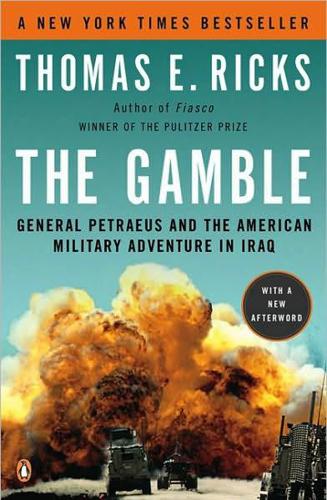
The Gamble: General David Petraeus and the American Military Adventure in Iraq, 2006-2008
by
Thomas E. Ricks
Published 14 Oct 2009
Just as Petraeus would allow former insurgents to keep their arms and patrol their neighborhoods, after the 1991 Gulf War, Saddam had “embraced auxiliary tribalism by allowing sheikhs to create their own private armies equipped with small arms, rocket-propelled grenades, mortars, and allegedly even howitzers,” noted Austin Long, a RAND Corporation expert on counterinsurgency. But, Long noted, the U.S. policy faced an additional difficulty: It was opposed by the Baghdad government, while Saddam’s earlier move had been implemented by Baghdad. Making peace with some of one’s foes made sense when one’s allies were sometimes secret enemies.
…
But if they were labeled truthfully, they would have been renamed Camp Accommodation and Camp Stability, as those were the new goals of the American effort. The danger of making policy on the fly and not vetting it through scrutiny and debate is that it may win short-term advances without recognizing long-term costs. As Long, the counterinsurgency expert at the RAND Corporation put it, “The tribal strategy is a means to achieve one strategic end, fighting al Qaeda in Mesopotamia, but it is antithetical to another, the creation of a stable, unified, and democratic Iraq.” It was no coincidence, added Marc Lynch, a Middle Eastern expert at George Washington University, that after the United States began cutting deals with local militias, both the Sunni and Shiite communities began “fragmenting at a remarkable rate.”
…
Odierno’s relationship with optimism of personality of on rumor of JAM deal shooting of surge and timetables and Petraeus, Holly Petraeus, Sixtus Phillips, Andrews Poirier, David Poland Pomante, Vincent Pool, Jeffrey S. Porter, Patrick Powell, Colin Powell, James Press, Elliott “Producing Victory,” Project for the New American Century Qatar Quayle, Chad Quds Force Raeford Drop Zone Raghavan, Sudarsan Rahman, Abel Rainey, James Ramadi, Iraq RAND Corporation rapid decisive operations Rapp, Bill Rasheed, Mamoun Sami Rayburn, Joel Reagan, Ronald Reconstruction Redacted (film) Reed, Jack Reese, Timothy Reid, Harry Remington, Frederic Republican Guard Republicans “revolt of the generals,” Ribat, Khadem al- Rice, Condoleezza Riggs, John Risha, Sittar albu- Rodriguez, Robert Rohrabacher, Dana Rome Roosevelt, Franklin D.
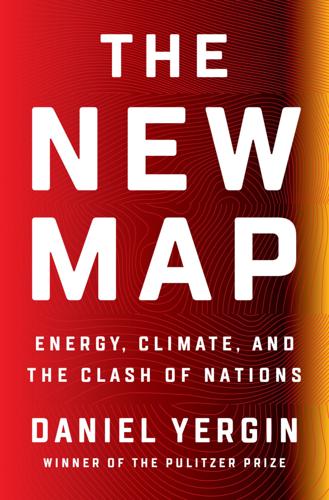
The New Map: Energy, Climate, and the Clash of Nations
by
Daniel Yergin
Published 14 Sep 2020
Over the last two decades, China’s military expenditures have grown sixfold. In the latest comparative numbers, it is $240 billion, compared to America’s $634 billion. The third and fourth spenders are far behind—Saudi Arabia and Russia—each at around $65 billion. China’s military has, in the words of a RAND Corporation assessment, “transformed itself from a large but antiquated force into a capable modern military.” It has “narrowed the gap” with the United States. Crucially, it has the “advantage of proximity in most plausible conflict scenarios, and geographical advantage will likely neutralize many U.S. military strengths.”
…
Nicholas Eberstadt, “With Great Demographics Comes Great Power,” Foreign Affairs, July/August 2019; Nicholas Eberstadt, “China’s Demographic Outlook to 2040 and Its Implications,” American Enterprise Institute, January 2019. 9. “Xi Wants High-Tech Fighting Force,” China Daily, May 1, 2018; “Military expenditure by country,” SIPRI, 2019; “The U.S.-China Military Scorecard,” RAND Corporation, 2015; Elbridge Colby, “How to Win America’s Next War,” Foreign Policy, May 5, 2019 (“wide variety”); Jane’s, “China’s Advanced Weapons Systems,” May 12, 2018. That report quotes a Chinese work, The Science of Military Strategy: “The war we need to prepare for . . . is a large-scale, and highly intensive local war from the sea” (p. 8). 10.
…
See also carbon emissions; greenhouse gas emissions (GHG) polysilicon, 397 Pompeo, Mike, 59, 168, 187 population growth, 4, 297, 368, 378, 413–14 populist politics, 43, 44–45, 423 Potential Gas Committee, 12 Power of Siberia pipeline, 117, 125, 126, 158 Pradhan, Dharmendra, 284, 342, 409–10 propane, 410 Public Investment Fund (PIF), 309 Putin, Vladimir, 70–71, 75–76, 125 and Arctic gas reserves, 112, 114 on gas negotiations, 83 and impact of shale revolution on U.S. foreign policy, 61 and opposition to Russian gas exports, 107 and price war among petroleum producers, 315, 318–20 relationship with Saudis, 311 and Russia-Ukraine conflict, 82–83, 94–96 and Russian gas supplies to Europe, 85 and Russian interests in Central Asia, 124–25 and Russia’s energy transition challenges, xv and Russia’s “pivot to the east,” 115–19 and Syrian civil war, 246–47 and tensions with Ukraine, 91–93 and U.S. politics, 103 Qatar, 34, 37–38, 114, 240, 278, 306–7 Quds Force, 228, 230–31, 234, 247–48, 253, 268, 289 Quest, The (Yergin), xix Qutb, Sayyid, 260–64 Racketeer Influenced and Corrupt Organizations (RICO) Act, 51 railroads, 20, 48, 49, 179, 184, 187–88 Raimi, Daniel, 28 Ramírez, Rafael, 275 RAND Corporation, 133 Ras Tanura oil terminal, 241, 287 Reagan, Ronald, 53–54, 88, 172 recycling, 416 Red Sea, 251, 303 Reema bint Bandar Al Saud, 317 refugee crises, 245, 247–48, 283 REN, 398, 399 Renault-Nissan, 332–33 renewable energy, 55, 323, 330, 394–402 Republic of China, 139 Republican Guard (Iraq), 216 Republican Party (U.S.), xvii, 55 Rice, Condoleezza, 83 Richardson, Bill, 121 Richthoften, Ferdinand von, 178 ride-hailing services and taxis, 343, 347, 358–65, 368, 370–71, 373 “Road to Rejuvenation, The” (exhibit), 166 Roman Empire, 178 Rose Revolution, 82 Rosen, Harold, 327 Rosneft, 76, 104, 118, 159, 275, 314 RosUkrEnergo, 83 Rothschild, Lionel, 199 Rouhani, Hassan, 225, 226, 227 Rousseff, Dilma, 44 Royal Geographical Society, 120 Royal Shakespeare Company, 387 Rudd, Kevin, 169 Russia (Russian Federation), 69–75, 79, 92–93 Arctic gas reserves, 97–98 and Central Asia, 120–26 and China’s Belt and Road initiative, 182, 188–89 and China’s development of oil resources, 158 and China’s rise, 172 and development of Arctic resources, 110–14 development of gas resources, 70–77 and election interference, 70, 78, 81, 103–4 “energy superpower,” 70–71 and energy transition challenges, xv–xvi and Gazprom, 80–82 and global impact of coronavirus pandemic, 312–13 and global oil market, 426 and historical context of Middle East conflicts, 196 impact of shale revolution on, 56–57 natural gas supplies to Europe, 78, 80–83, 84–89, 102, 104–8, 106, 113 oil and state power, 99–101 and OPEC-Plus deal, 321–23 “pivot to the east” strategy, 114, 115–19 and price war among petroleum producers, 317, 318–21 Russian-Georgian War, 91 sanctions on, 95–98, 99–101 and Syrian civil war, 246–47 and Ukraine conflict, 80, 95–98, 96 and U.S. energy production, 63, 65–66 and U.S.
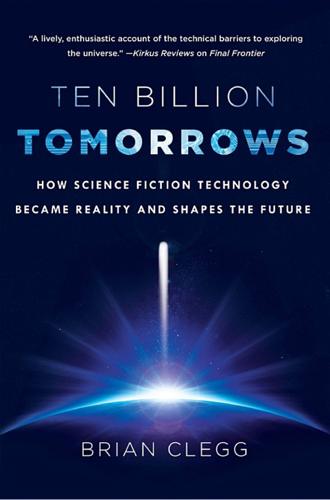
Ten Billion Tomorrows: How Science Fiction Technology Became Reality and Shapes the Future
by
Brian Clegg
Published 8 Dec 2015
The book’s title is a reference to Alvin Toffler’s stodgy 1970 work of futurology, Future Shock. While Toffler has proved pretty well universally wrong when it comes to the real world, his ideas were much followed at the time and proved a great inspiration for fiction writers. In this case the concept is built on the Delphi method, originated by the RAND Corporation in the 1950s. In the original Delphi process a series of individuals were given a decision to make, or questions to answer. After a first pass at answering, the results were fed back to the whole panel, who then had the opportunity to revise their answers. There seemed some evidence that the result of this procedure was to home in on a better solution than would have been achieved by just taking the original opinions of the decision makers.
…
See energy predictions challenge with chaos theory and rocket belt Wells’ warfare The Prestige Prey (Crichton) Priest, Christopher probes Project Daedalus Project Orion Project Ozma projectile weapons Prokhorov, Alexander prosthetics psychohistory pulsars pure energy beings quantum computers quantum entanglement communication with Dirac transmitter and encryption with quantum particles quantum teleportation quantum tunneling The Quincunx of Time (Blish) radio signals alien contact and first intergalactic interpreting SETI and “Wow! Signal” in radioactivity rail gun RAND Corporation ray guns rays refractive index relativity Einstein’s Galileo’s replicants retina scans Robby (fictional character) Roboroach “Robot Suit HAL” robots. See also nanotechnology 1950s androids distinction from bee-like functionality for humanoid in movies precursors to task-oriented rocket belts development of first flight with military funding of practical use of SF predictions of rocketry Roddenberry, Gene on cloaking device phaser creation of Romero, John Romulans (fictional characters) R.U.R.

Microserfs
by
Douglas Coupland
Published 14 Feb 1995
He told me of how his real life and his dream life are becoming pretty much the same. "I must come up with a new word for what it is that goes on inside my head at night. The delineation between awakeness and asleepness is now marginal. It's more like I'm running 'test scenarios' in my head at night - like RAND Corporation military simulations." Count on Michael to find a way to be productive, even while sleeping. * * * E-mail from Abe: Fast food for thought: Do you know that if you feed catfish (America’s favorite bottom feeder) nothing but left-over grain mash they endup becoming white-meat filet units with no discernible flavor (marine or otherwise) of their own?
…
"Don't ask me to explain this eight-jobs-in-a-lifetime reality we now inhabit. I could barely deal with the one-job-in-a-lifetime world," Dad said. The sun was golden - birds swung in the sky. Cars purred at a stoplight. Dad looked so relaxed and happy. "I always assumed that history was created by think tanks, the DOE and the RAND Corporation of Santa Monica, California. I assumed that history was something that happened to other people - out there. I never thought history was something my kid built in the basement. It's a shock." I told him about the new word I'd learned, deletia, and Dad laughed. "That's me!" We were soon down at El Camino Real.
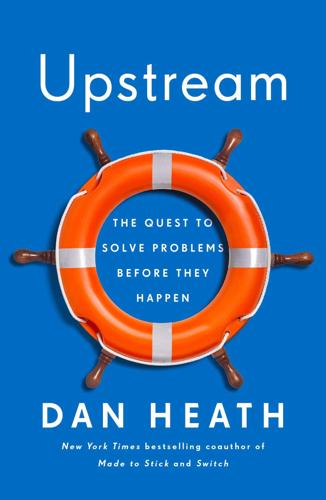
Upstream: The Quest to Solve Problems Before They Happen
by
Dan Heath
Published 3 Mar 2020
It’s like driving a car with no windows and, once every hour or so, getting beamed a photo of the outside environment. You’d never arrive at your destination, and given the risks, you’d be crazy to try. “The first thing I would say is you just need to be aware that whatever the plan you have is, it’s going to be wrong,” said Andy Hackbarth, a former RAND Corporation researcher who also helped design measurement systems for Medicare and Medicaid. I had asked him what advice he’d give to people who were designing systems to make the world better. “The only way you’re going to know it’s wrong is by having these feedback mechanisms and these measurement systems in place.”
…
.: crime in, 162–66 falling branches in, 175–76 lawsuit data patterns in, 175, 184 New York City Police Department (NYPD), 162–66, 168 New Yorker, 83, 84n New York Times, 32, 48, 142 New York University (NYU), 133 Nike, 204 Nimoy, Leonard, 207–8, 225–26 9/11 attacks, 142, 213 911 calls, 83, 137–40 normalization, 30–31, 32 Northwell Health, 137–40 Norway, 13–14 nuclear weapons, 225, 227 Nurse-Family Partnership (NFP), 194–99, 237–38 nurses, 60–62, 63 nursing homes, 138, 139 lifting and transferring patients in, 193–94 Okerstrom, Mark, 4–5, 63 Olds, David, 194–95 O’Neill, Ryan, 1–3 Onie, Rebecca, 11 On the Media, 31 open-office plans, 177–80, 185 ownership, 38, 39–55, 70 Ozone Hole: How We Saved the Planet, 66 ozone layer, 65–70 P3, 22 paired metrics, 168, 203 parental leave, 13 Parker, Janet, 16n parking place, 232, 233 parks, 110–11, 112 tree pruning in, 175–76 Parto do Princípio, 35–36 patience and impatience, 234–35 Pavlin, Julie, 191–92 pediatricians, and automobile safety, 44–47 Pediatrics, 44, 46, 47, 48 peripheral vision, 30 Perla, Rocco, 11 Permanente Medical Group, 124 pest control, household, 199 phishing emails, 220–22 phobias, 30–31, 32 Pickering, Roscoe, 46–47 Pill Model, 237–39 Pina, Frank, 156 plastic bags, 185–88 police, 5–6, 8, 122n, 154 car accidents and, 6, 16 data and, 122n, 162–63 domestic violence and, 83, 86–88 New York City Police Department, 162–66, 168 Nurse-Family Partnership and, 196 polio vaccine, 45 Pollack Harold, 116, 117, 121, 123 Ponder, Paige, 25, 27–28, 88 Poppy + Rose, 193 poverty, 59, 97, 106 see also food assistance; homelessness Pratt, Lisa, 228 pre-gaming, 168–69 prevention, see upstream actions Princeton University, 43–44 proactive efforts, see upstream actions problem(s): addressing the wrong ones, 32–33 bandwidth and, 58–60 big and little, 58–59 blindness to, 21–38, 42, 70, 76, 128, 147, 232 designating something as, 32 early warning of, 135–51 longevity of, 233 ownership of, 38, 39–55, 70 slack and, 63, 67 Project ASSIST, 234 Project Parto Adequado, 37 prophet’s dilemma, 226 proximity, 133, 236 psychological standing, 43–44 quantity—and quality-based measures, 168 rabbits, on Macquarie Island, 171–74 Rad, Bex, 104 radiologists, 29–30 Ramirez-Di Vittorio, Anthony (Tony D), 117–20, 122, 249 RAND Corporation, 12, 180 randomized control trial (RCT), 121, 237 rape, 164–66 date rape on campus, 42–43 Ratner, Rebecca, 43 rats and mice, on Macquarie Island, 171–74, 176 reaction, see downstream actions Reagan, Ronald, 70 Reply All, 163–64 restoration, 10, 153 Reyes, Sarah, 112 Reykjavík, Iceland, 75–81, 125, 231, 239 Ridenour, Brandon, 200–201 Ringelestein, Don, 221–23 ripple effects, 169, 174, 197 a rising tide lifts all boats, 154, 161, 162, 168 Rocchetti, Carmela, 128–33 Rockford, Ill., 90–96, 108, 236, 239 ROI (return on investment), 127 Romania, 81 ROSC (return of spontaneous circulation), 139 Rowland, F.
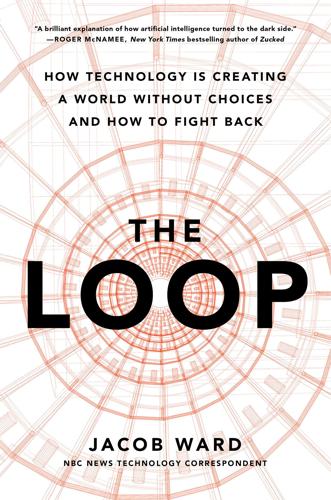
The Loop: How Technology Is Creating a World Without Choices and How to Fight Back
by
Jacob Ward
Published 25 Jan 2022
As part of that, I want to step back and look at how we not only came to pursue these sorts of manipulative technologies, but why we so readily believe in them and trust the guidance they offer. The truth is that in our history we’ve come under the direct supervision of guidance systems before. And in the earliest iterations of them, they came to us in the guise of lifesaving technology. Between the end of World War II and the 1980s, organizations like the RAND Corporation, the Cowles Commission for Research and Economics, and Stanford University’s Center for Advanced Study in the Behavioral Sciences (where I spent a year as a fellow oblivious to this part of its history) attracted bright young thinkers from universities across the country who spent their time on the most pressing mission of the era: how to avoid nuclear war.
…
Wide-eyed, sleep-deprived Solomonoff went on to propose the first notions of “algorithmic probability” that could be used for predictions, and created the theoretical framework for using Bayesian statistics to deal with uncertainty, which makes him the ancestor of everything from modern weather prediction to AI that can spit out a reasonable-sounding term paper from a one-sentence prompt. RAND Corporation’s Allen Newell went on to publish the first doctoral dissertation in AI, “Information Processing: A New Technique for the Behavioral Sciences.” Prior to the Dartmouth summer, he and Herbert Simon (an economist and cognitive psychologist and seemingly the only Dartmouth attendee who wasn’t a computer scientist) had already built Logic Theorist, the first AI program, and afterward they used military money to build the General Problem Solver in 1957, a program that simulated the rules of logic a human might follow.
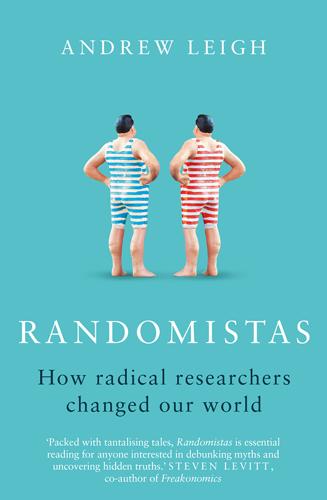
Randomistas: How Radical Researchers Changed Our World
by
Andrew Leigh
Published 14 Sep 2018
Newhouse, ‘Consumer-directed health plans and the RAND Health Insurance Experiment’, Health Affairs, vol. 23, no. 6, 2004, pp. 107–13; Robert H. Brook, Emmett B. Keeler, Kathleen N. Lohr, et al., The Health Insurance Experiment: A Classic RAND Study Speaks to the Current Health Care Reform Debate, Santa Monica, CA: RAND Corporation, RB-9174-HHS, 2006. 17Amy Finkelstein, Sarah Taubman, Bill Wright, et al., ‘The Oregon Health Insurance Experiment: Evidence from the first year’, Quarterly Journal of Economics, vol. 127, no. 3, 2012, pp. 1057–1106. 18The US Vietnam draft had taken place in earlier years, but 1969 was the first year that the birthdate lottery was used.
…
Fryer, ‘Teacher incentives and student achievement: Evidence from New York City Public Schools’, Journal of Labor Economics, vol. 31, no. 2, 2013, pp. 373–407. 58J.A. Marsh, M.G. Springer, D.F. McCaffrey, et al., ‘A Big Apple for educators: New York City’s experiment with schoolwide performance bonuses’, Final Evaluation Report, Fund for Public Schools, RAND Corporation, Santa Monica, CA, 2011; Roland G. Fryer, ‘Teacher Incentives and Student Achievement: Evidence from New York City Public Schools’, Journal of Labor Economics, vol. 31, no. 2, 2013, pp. 373–407. 59For a review of this literature, see Andrew Leigh, ‘The economics and politics of teacher merit pay’, CESifo Economic Studies, vol. 59, no. 1, 2013, pp. 1–33. 60Alan B.

This Is Your Country on Drugs: The Secret History of Getting High in America
by
Ryan Grim
Published 7 Jul 2009
President Bill Clinton selected as his drug czar Lee Brown, who had a background in law enforcement, sociology, and criminology and told his staff to rethink some basic assumptions. The first one was the militarized approach being used in Latin America, aimed at increasing the cost of drugs. Brown’s people began passing around a study by a private think tank, the RAND Corporation, that came to some hopeful conclusions: An overwhelming proportion of drug use is done by a small but dedicated group of users. Therefore, getting that small group to reduce its use—even to a small degree—can reap big dividends. RAND estimated that the United States, for instance, could decrease cocaine use by 1 percent either by spending $34 million on drug-treatment programs or by spending $783 million going after drugs at the source.
…
Crack Cocaine Sales” ( Washington Post) Program Assessment Rating Tool (PART) Progressive Insurance Prohibition Prohibition Party Proposition 215 (California) Proposition P (San Francisco) psilocybin (mushrooms) psychedelic drugs. See also Ecstasy; LSD (acid); psychedelic mushrooms psychedelic mushrooms “psychonauts,” See also “research chemicals” Pure Food and Drug Act quaaludes race, crack and Raich, Angel Rainbow Gathering Ramsey, Donald Randall, Robert RAND Corporation Ranke, Otto Rathbun, Mary Jane “Brownie Mary,” Rau, Kenneth rave culture Reagan, Nancy Reagan, Ronald Contras and D.A.R.E. and Reducing Americans’ Vulnerability to Ecstasy (RAVE) Act of 2003 Reese, Alun “religious right,” “research chemicals,” See also Ecstasy Research Triangle Institute Reuter, Peter Rhode Island Rhythm Society Rice, Lewis, Jr.
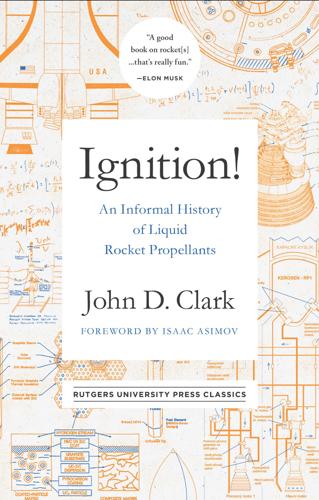
Ignition!: An Informal History of Liquid Rocket Propellants
by
John Drury Clark
Published 14 Jun 1972
And so everybody even remotely connected with the business made his own survey of every conceivable fuel and oxidizer, and tried to decide which ones to choose. Lemmon, of JPL, presented the results of such a comprehensive survey to the Navy in the spring of 1945, and a half a dozen more, by North American Aviation, Reaction Motors, the Rand Corporation, M. W. Kellogg Co., and others, appeared in the next few years. Each survey listed the characteristics of every propellant, or prospective propellant, that the compiler could think of, and presented the results of dozens of tedious performance calculations. To the surprise of nobody with any chemical sophistication at all, everybody came to just about the same conclusions.
…
See Hybrid propellants; Monopropellant(s); and specific compound Propyl nitrate, 121–122, 123 Propyne, 32 Pyridinium nitrate, WFNA plus, 125, 126–127, 129 Pyrimidines as additives, 23. See also specific compound R Ram rockets, 30 described, 30 ethylene oxide fuel, 122 jelled fuel for, 166 pentaborane-hydrazine system for, 116–118 Rand Corporation, 21 Range, Grete, 13 Rapp, Lou, 25–26, 30, 95, 147, 148 Rau, Eric, 53 Reaction Motors, Inc. (RMI) research, 21, 23, 32, 35, 24n, 179 boranes, 111, 112–114–115, 116 borohydrides, 117 chlorine trifluoride, 68, 69 heat flux, 96 hybrid propellants, 161, 164, 166, 170–171 hydrazines, 117 hydrogen peroxide, 120–121 ignition delay, 25 JATO, 17 liquid oxygen, 94, 97 monopropellants, 120–121, 132, 133, 150, 153 space storable systems, 78 X-15, 95 Red fuming nitric acid (RFNA), 15–16 additive experiments, 22–23 amines and, 34 ammonia and, 23 aniline and, 16, 17, 22 boron carbide and, 170 changes in, on holding, 41–42 corrosive quality, 41 dangers of, 42 decompression pressure control, 52 defined, 6, 54–55 disadvantages, 41–42 freezing point control, 52, 54 furfuryl alcohol and, 22 improvements in handling, 50 inhibited: rocket grades, 108; Russian use, 107, 108 introduction of, 6 JATO and, 16, 17 military specifications for, 54–55 mixed acid as alternative to, 42–43 MMH-perchloryl fluoride system and, 73 polyethylene suspended in, 170 research on composition of, 17 sample holder in loss prevention, 48 titanium and, 54 UDMH and, 174 water content determination, 48n Redstone missile, 94 Reinhardt, Tom, 68, 72, 87 RFNA.
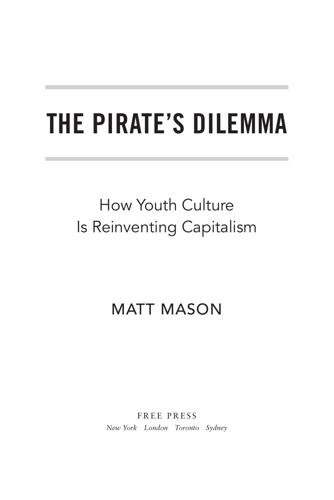
The Pirate's Dilemma: How Youth Culture Is Reinventing Capitalism
by
Matt Mason
Game theory examines situations where multiple players in a game make decisions based on what the other players will do, like an academic version of poker. It is used to model social situations in which decision makers interact with other agents, and often assumes individuals will act only in their own self-interest. A game called the Prisoner's Dilemma is a simple, well-known game used to illustrate this point. Developed in the 1950s by the RAND corporation (a global policy think tank which advises the U.S. armed forces, among other things), the game goes like this: two suspects, Prisoner A and Prisoner B, are caught with stolen goods and arrested under suspicion of burglary. But the police don't have enough evidence to convict either prisoner unless one, or both of them, confesses.
…
“Worldwide sales of Fairtrade products rise by a third as Fairtrade sales in the UK reach £200m,” press release from Fairtrade.org, June 28, 2006. www.fairtrade.org.uk/pr280606.htm. Green Car Congress, “January 2006 US Hybrid Sales Almost Double from Prior Year,” Greencarcongress.com, February 23, 2006. www.greencarcongress.com/2006/02/january_2006_us.html. Lynn A. Karoly and Constantijn W. A. Panis, The 21st Century at Work (Monograph, RAND Corporation, Santa Monica, CA, 2004). Tamara Schweitzer, “U.S. Workers Hate Their Jobs More Than Ever,” Inc.com, March 6, 2007. www.inc.com/criticalnews/articles/200703/work_Printer_Friendly.html. For a great overview of why we are being driven by creativity above all else, see Richard Florida, The Rise of the Creative Class (New York: Basic Books, 2002).

Data Action: Using Data for Public Good
by
Sarah Williams
Published 14 Sep 2020
Inaccurate models, high costs, and the reinforcement of hierarchical power structures ultimately led many cities to give up urban modeling developed out of the military in the 1970s.89 The critical-planning theorist John Forester (not to be confused with Jay Forrester) argued that little consideration was given to the fact that data interpretations were heavily biased as a result of bias from those generating and collecting the information.90 The construction of models was often flawed because of the lack of appropriate data to develop them, the use of biased information, and the fact of not testing whether the data results fit people's experiences. A telling example of this is the 1970s-era model developed by the RAND Corporation for the New York City Fire Department to determine the efficiency of its network of firehouses.91 Basing the model almost solely on response-time data, the analysis led to recommending the removal of several fire stations in the South Bronx. The data model did not consider additional data factors such as gridlock, politics, multiple simultaneous fires (and therefore the need for back-up units), and the socioeconomic status of the neighborhoods in question.
…
See Data privacy Pruitt-Igoe housing project 34 Psychological City project 135 Public good(s) data and xviii, 187–210 non-excludable and non-rivalrous 193–194 Public health 10 data analysis and 10–13 urban populations 10 Public insights, data and 219–220 Public Lab 69 Balloon and Kite Mapping tool kits 71 balloon mapping kit 70, 71 project in Louisiana 85 Public participation 45–46, 183–185 Public Participation Geographic Information Systems (PPGIS) 45–46 Qualitative analytics, social reformers and 39–42 Qualitative vs. quantitative data 41 Race racial profiling 177–178 (see also Stop-and-frisk policy) redistricting and 5 redlining and xiii, 34, 220 zoning and 31–34 Radiation detection, in Japan 75, 76 Rainforest Connection 77 RAND Corporation 43–45 Raw data 51–89 “Raw Data” Is an Oxymoron (Gitelman) xii Reapportionment Act of 1929, 8 Red Cross 55, 80, 82, 203 Redistricting 5–6, 7, 8 Redlining xiii, 34, 220 Regulation xix, 194, 198–199, 221 of autonomous vehicles (AVs) 195–196 of data 188 Report on the Sanitary Condition of the Labouring Population (Chadwick) 13 map 11 Requiem for Large Scale Models (Lee) 45 Responsible Data (organization) 199 Responsive City, The (Goldsmith and Crawford) 47 The Revolution Will Not Be Funded 58 Rio de Janeiro, Brazil 47 “The Rise of Crowdsourcing” (Howe) 73 Roads, data on 66, 144, 146 Rockefeller Foundation 147 Rogstadius, Jakob 132 Romans 1 Roter, Rebecca, sensors of 68 Royal Housing Commission 17 Royal Statistical Society 10 Russell Sage Foundation 30 Safecast project 73–74, 75, 85–86 SAGE 43 Saiz, Albert 98 Sanborn Fire Insurance 16 map of Boston 14, 15 typical key to Sanborn map 16 Sanborn National Insurance Diagram Company.
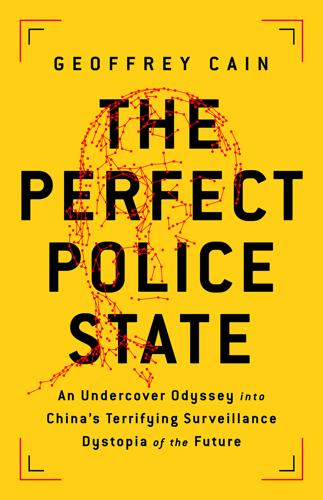
The Perfect Police State: An Undercover Odyssey Into China's Terrifying Surveillance Dystopia of the Future
by
Geoffrey Cain
Published 28 Jun 2021
But the policy took hold, and China developed a related second system called the Golden Shield that allowed the government to inspect any data being received or sent, and to block domain names within China.17 The US government was beginning to notice the fledgling and fast-growing Chinese tech firms, and worried that China’s technological modernization could pose a threat to American military interests and national security. In 2005, the US Air Force commissioned the RAND Corporation, the prominent Cold War–era think tank, to write the first comprehensive report on the future of Chinese military capabilities. The report would come to define the conversation about Chinese technology, and whether or not it could bolster authoritarianism and make military conflict more likely.
…
The full pledge can be read in English at China Daily, “Public Pledge of Self-Regulation and Professional Ethics for China [sic] Internet Industry” (中国互联网行业自律公约), March 26, 2002, http://govt.chinadaily.com.cn/s/201812/26/WS5c23261f498eb4f01ff253d2/public-pledge-of-self-regulation-and-professional-ethics-for-china-internet-industry.html. 17. Economy, The Third Revolution, ch. 3, “ChinaNet,” 63–65. 18. Evan S. Medeiros, Roger Cliff, Keith Crane, and James C. Mulvenon, “A New Direction for China’s Defense Industry,” 205, Santa Monica, CA: Rand Corporation, 2005, https://www.rand.org/pubs/monographs/MG334.html. 19. Chinese Academy of Sciences, “Issues in Building a National Innovation System,” High Technology Development Report (高技术发展报告), Beijing, 2005, http://www.bdp.cas.cn/zlyjjwqgl/ptcg/201608/t20160830_4572983.html. 20. James Palmer, “Nobody Knows Anything About China,” Foreign Policy, March 21, 2018, https://foreignpolicy.com/2018/03/21/nobody-knows-anything-about-china/. 21.

Orange Sunshine: The Brotherhood of Eternal Love and Its Quest to Spread Peace, Love, and Acid to the World
by
Nicholas Schou
Published 16 Mar 2010
After Romaine agreed to join up, Purcell persuaded his boss to let Romaine work as a narcotics investigator with him and Saporito, who continued to work undercover, in what quickly became a three-man anti-hippie police squad. With support from his new employer, Romaine attended a two-week course on link analysis—a law enforcement tool used to study complex criminal organizations—taught by the Rand Corporation, the same company that had advised the Pentagon on how to wage the Vietnam War since 1964. After his classes ended, Romaine immediately set to work building a profile of the local drug-smuggling network Purcell had always suspected was operating out of Dodge City. “Bob and I sat down and spent time together discussing the files I had,” Purcell says.
…
Christmas Happening and hashish smuggling and marijuana smuggling and Moody Blues and Los Angeles Times LSD acid tests and in Afghanistan in Algiers Almeida’s death and bad trips with Brotherhood’s legacy and Christmas Happening and communal use of and crusade against Brotherhood dealing and distribution of Dodge City and ego death from exposing children to finances of Griggs and in Haight-Ashbury hallucinations from healing powers of Hodgson’s documentary on as illegal Laguna Beach and Leary-Griggs Cal State appearance and Learys’ arrest and as legal manufacturing of in Maui Millbrook commune and as mind expanding Moody Blues and Newport Pop Festival and political impact of purity of religious experiences associated with research and experimentation with smuggling of stealing of tricking people into taking it using hashish with see also Orange Sunshine Lurigancho (Padilla) Lynd, Glenn arrests of Brotherhood’s incorporation and and crusade against Brotherhood death of Dodge City and finances of Griggs’s death and Griggs’s relationship with group marriage society idea and hashish smuggling and Idyllwild ranch and in Laguna Beach in leaving Brotherhood LSD and marijuana and Lynd, Janet and crusade against Brotherhood hashish smuggling and Idyllwild ranch and mother’s infidelity and Mystic Arts World and Newport Pop Festival and Lynd, Marilyn McAdams, Brian Manson, Charles Orange Sunshine and marijuana in Algiers aroma of Christmas Happening and and crusade against Brotherhood dealing and supplying of Dodge City and Elysian Park Human Be-In and exposing children to finances of growing of Laguna Beach and Leary and Maui and smuggling and Maui Alpert in Brotherhood in Griggs in hashish in Hendrix’s film and concert in hoodlums in law enforcement in marijuana and sailing between Mexico and UFOs sighted in Maui News, The Maui Wowie May, Ed Maysles, Albert and David Merry Pranksters mescaline Dodge City and in Maui Metzner, Ralph: LSD research and experiments of The Psychedelic Experience Mexico Ashbrook’s resort in marijuana dealing and marijuana smuggling and psilocybin and sailing between Maui and Miles, Buddy Millbrook commune hashish at Leary and LSD and Miller, Elliot Miller, Joe Mitchell, Mitch Modjeska Canyon Brotherhood in Church in communal LSD use at Disciples of Griggs in Hodgson’s documentary and Molokai Joe Monterey Pop Festival Moody, Kevin Moody Blues More Than Human (Sturgeon) Morgan, Jack Mundell, Chuck arrests of Brotherhood named by Gale’s relationship with Griggs’s relationship with LSD used by marijuana and in Maui in Modjeska Canyon spirituality of surfing of Munoz, Jeff Mystic Arts World construction of finances of fire at hashish smuggling and Leary and management of marijuana smuggling and Newport Pop Festival and offerings of opening of Wright and Nepal Ness, Eliot Newport Pop Festival New York City hashish smuggling and LSD smuggling and marijuana dealing and New York Times Nixon, Richard Nuuhiwa, David OC Weekly Ogden, Bill Oliphant, George Operation Brotherhood of Eternal Love (Operation BEL) opium Orange Sunshine Altamont Music Festival and Christmas Happening and dealing and distributing of Dodge City and finances of Griggs and law enforcement and manufacturing of naming of Otto, Jimmy Padilla, Edward Aafje and adolescence of amphetamines dealt and used by arrests of Ashbrook’s relationship with brawling of Brotherhood’s naming and Brotherhood’s proposed island utopia and cocaine and Dodge City and Elysian Park Human Be-In and finances of Gale’s relationship with Griggs’s death and Griggs’s relationship with heritage of Idyllwild ranch and in Laguna Beach leadership of Leary’s prison escape and LSD used by marijuana and in Maui in Modjeska Canyon Mystic Arts World and physical appearance of prison escape of psilocybin and in Silverado Canyon spirituality and surfing of Tahquitz Canyon and Pahlavi, Shah Reza Paris, Gary Payne, Edgar PCP Peru cocaine smuggling and surfing in peyote Pitt, Carrie: Andrist’s relationship with Dodge City and Polanski, Roman Pooley, Michael Potts, Leslie: hashish and Hendrix’s relationship with LSD used by marijuana and in Maui physical appearance of Rainbow Bridge and Alpert, Richard (Ram Dass) surfing and UFOs sighted by Pratt, Jill Pratt, Stanford psilocybin Psychedelic Experience, The (Leary, Metzner, and Alpert) Psychedelic Prayers (Leary) Pulp Fiction Purcell, Neil arrests of Christmas Happening and and crusade against Brotherhood Dodge City and Gale’s death and in Maui Mystic Arts World and Orange Sunshine and Tokhi brothers’ visit and Rainbow Bridge Rainbow Surf boards Ramsey, Robert and crusade against Brotherhood Randall, Mike arrest of Griggs’s death and Leary’s prison escape and Moody Blues and Mystic Arts World and Newport Pop Festival and Orange Sunshine and Rand Corporation Reagan, Ronald Redding, Noel Reed, Curtis Revolver Richard, Keith Risley, Art: and exposing children to LSD Griggs’s relationship with in Laguna Beach Stanley’s relationship with Tokhi brothers’ visit and Robinson, George Robinson, Robbie “Rolling and Tumbling,” Rolling Stone Rolling Stones Romaine, Bob arrests of and crusade against Brotherhood Dodge City and hashish smuggling and in Maui and shooting of Amaranthus Sachs, Gunther San Bernardino Sun-Telegram Sand, Nick: and crusade against Brotherhood LSD manufactured by Sandoz Laboratories San Francisco, Calif.
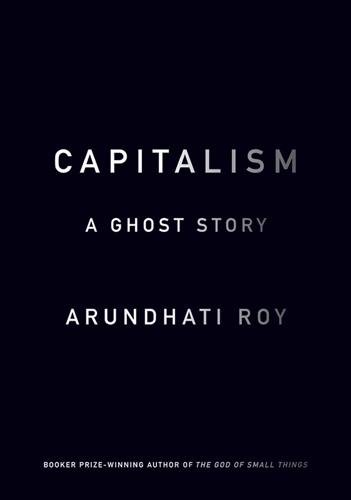
Capitalism: A Ghost Story
by
Arundhati Roy
Published 5 May 2014
It means sharing Intelligence, altering agriculture and energy policies, opening up the health and education sectors to global investment. It means opening up retail. It means an unequal partnership in which India is being held close in a bear hug and waltzed around the floor by a partner who will incinerate her the moment she refuses to dance. In the list of ORF’s “institutional partners” you will also find the RAND Corporation, the Ford Foundation, the World Bank, the Brookings Institution (whose stated mission is to “provide innovative and practical recommendations that advance three broad goals: strengthen American democracy; foster the economic and social welfare, security and opportunity of all Americans; and secure a more open, safe, prosperous, and cooperative international system”).
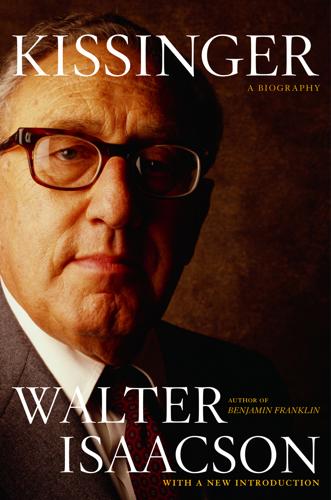
Kissinger: A Biography
by
Walter Isaacson
Published 26 Sep 2005
In fact, the passion of his attempts to win over his intellectual adversaries indicated a genuine warmth as well as a gnawing insecurity.11 It was a mark of Kissinger’s insecurity that he was more fascinated by his enemies than he was by his friends, at times becoming obsessed with them. When William Kaufmann, an arms control expert at the Rand Corporation, wrote a devastating review of Nuclear Weapons and Foreign Policy, Kissinger pleaded with Professor Tom Schelling to arrange a visit to Rand. “Henry was desperate to convert them,” Schelling recalled. At other times, he would become paranoid about his enemies. When he was part of an arms control group visiting Bonn a few years later, Kissinger felt that Schelling and the Rand people were snubbing him.
…
How, Kissinger later asked a U.S. adviser, could he thus claim the village was largely pacified? “The VC wouldn’t dare enter this village,” replied the adviser. “The people pay their taxes by mail.” Kissinger’s skepticism was thus reinforced, though perhaps not enough.29 Kissinger remained dubious about American tactics. In a briefing for experts at the Rand Corporation in Santa Monica, he criticized the Johnson administration for tying its policy to the survival of President Nguyen Van Thieu’s government, a mistake that Kissinger would later make himself. At the Harvard Business School, participating in a seminar with the quaint conceit of “Vietnam as a management problem,” Kissinger was asked what he thought of the “enclave theory” that the U.S. should concentrate on establishing a few very secure strongholds throughout South Vietnam.
…
As the Hanoi Communist Party newspaper put it: “The military and political aspects of the issue are inseparable because the underlying cause of the Vietnam War is the American imposition of a stooge administration on the South Vietnamese people.”7 DANIEL ELLSBERG AND NSSM-1 Shortly after his appointment, Kissinger called his old colleague and occasional critic Henry Rowen, president of the Rand Corporation, a Santa Monica think tank that specialized in military studies for the government. Kissinger had attended many seminars about Vietnam at Rand, and he knew the people there to be tough-minded skeptics about U.S. policy. What, Kissinger would ask, were the alternatives? Now he wanted to hire a team of Rand analysts to explore these alternatives and analyze the range of options.
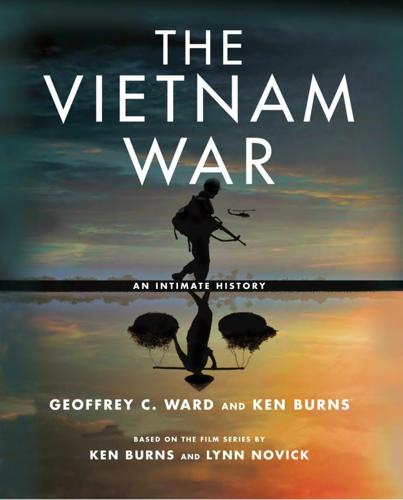
The Vietnam War: An Intimate History
by
Geoffrey C. Ward
and
Ken Burns
Published 4 Sep 2017
Mai did well in school, won a scholarship to Georgetown University in Washington, D.C., spent three years there, and returned to Vietnam with an American fiancé, Army Sergeant David Elliott. In 1964, Robert McNamara—genuinely puzzled by the stubbornness of the communists in the face of American power—had commissioned the RAND Corporation to do a study of defectors and enemy prisoners, seeking to know “Who are the Viet Cong? And what makes them tick?” The Elliotts signed on with RAND, and Mai began interviewing subjects. She remembered that she’d been “brought up to believe that the communists were people who destroyed the family, destroyed religion, had no allegiance to our country but only to international communism.”
…
The NLF may have failed to achieve its primary objectives, but its fighters were still in the streets, still seeking revenge on the Saigon regime, still hoping the people of the city could be persuaded to rise up in their support. Duong Van Mai Elliott and her husband, David, had been asleep in the RAND Corporation villa on Pasteur Street near the Presidential Palace when the assault on the embassy began. “We heard gunfire, and our first reaction was ‘Must be another coup d’état,’ ” she recalled. “Then we heard that the Viet Cong had attacked Saigon and were still attacking. It came as a total shock because we always thought Saigon was safe, the safest place in all of South Vietnam.”
…
The article, by Neil Sheehan, was the first installment of what came to be called the “Pentagon Papers”—seven thousand pages of highly classified documents and historical narrative, compiled secretly at the orders of former Secretary of Defense Robert McNamara, who had hoped that a study of the decision-making process that had led the United States to become so deeply involved in Vietnam would help future policymakers avoid similar errors. Two copies of the report had been stored at the Washington headquarters of the RAND Corporation, for which Daniel Ellsberg, one of the study’s thirty-six authors, worked as an analyst. Ellsberg had once supported the war; he’d served in the Pentagon and spent two years working for the State Department in Vietnam. But he had come to see it as profoundly immoral and hoped that if Americans understood how administration after administration had misled them about what was being done in their name, they might help bring it to an end.
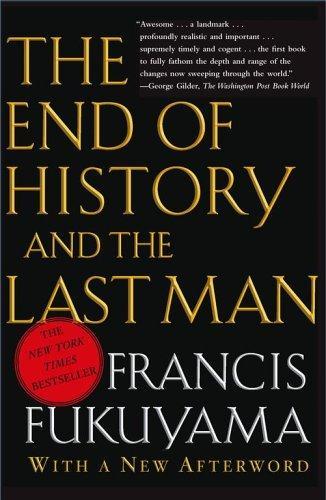
The end of history and the last man
by
Francis Fukuyama
Published 28 Feb 2006
I would like to pay special thanks to Irving Kristol, David Epstein, Alvin Bernstein, Henry Higuera, Yoshihisa Komori, Yoshio Fukuyama, and George Holmgren, all of whom took the time to read and comment on the manuscript. In addition, I would like to thank the many people—some of them known to me and many others not—who commented usefully on various aspects of the present thesis as it was presented in a variety of seminars and lectures in this country and abroad. James Thomson, president of the RAND Corporation, was kind enough to provide me office space while drafting this book. Gary and Linda Armstrong took time out from writing their dissertations to help me in the collection of research materials, and provided valuable advice on a number of topics in the course of writing. Rosalie Fonoroff helped in the proofreading.
…
By the early 1990s, the reform process itself had weakened the Soviet economy dramatically and made it less competitive militarily. For an account of the Soviet military’s views on the need for economic reform, see Jeremy Azrael, The Soviet Civilian Leadership and the Military High Command, 1976-1986 (Santa Monica, Calif.: The RAND Corporation, 1987), pp. 15-21. 11 Many of these points are made in V. S. Naipaul, Among the Believers (New York: Knopf, 1981). 12 Nathan Rosenberg and L. E. Birdzell, Jr., “Science, Technology, and the Western Miracle,” Scientific American 263, no.5 (November 1990): 42-54; on per capita income in the eighteenth century, see David S.
…
Avineri, Shlomo. 1968. The Social and Political Thought of Karl Marx. Cambridge University Press, Cambridge. Avineri, Shlomo. 1972. Hegel’s Theory of the Modern State. Cambridge University Press, Cambridge. Azrael, Jeremy. 1987. The Soviet Civilian Leadership and the High Command, 1976-1986. RAND Corporation, Santa Monica, Calif. Azrael, Jeremy. 1966. Managerial Power and Soviet Policy. Harvard University Press, Cambridge, Mass. Babst, Dean V. 1972. “A Force for Peace.” Industrial Research 14 (April): 55-58. Baer, Werner. 1989. The Brazilian Economy: Growth and Development, third edition. Praeger, New York.
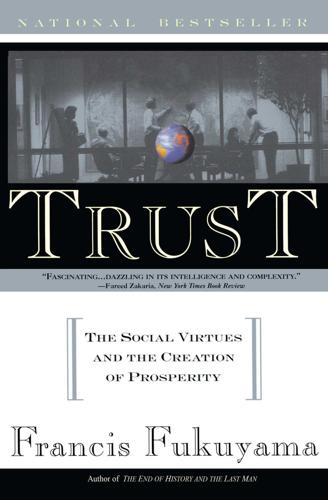
Trust: The Social Virtue and the Creation of Prosperity
by
Francis Fukuyama
Published 1 Jan 1995
Putnam, George Holmgren, Lawrence Harrison, David Hale, Wellington K. K. Chan, Kongdan Oh, Richard Rosecrance, Bruce Porter, Mark Cordover, Jonathan Pollack, Michael Swaine, Aaron Friedberg, Tamara Hareven, and Michael Mochizuki. Abram Shulsky, as usual, contributed greatly to the book’s conceptualization. Once again, I am grateful to James Thomson and the RAND Corporation, which tolerated my presence as I was writing this book. I owe a long-standing debt of gratitude to my literary agents, Esther Newberg and Heather Schroder, who made both this and the volume that preceded it possible. Much of the material covered in this book would never have come to my attention but for the hard work of my research assistants, Denise Quigley, Tenzing Donyo, and especially Chris Swenson, who was of invaluable assistance through all phases of this study.
…
Although there are revisionists in Germany who deny the Holocaust ever happened, they are regarded as part of a crackpot fringe; in Japan, by contrast, respectable politicians like Shintaro Ishihara and academics like Soiichi Watanabe can still deny that the Nanking Massacre was an atrocity. 21Ian Buruma, The Wages of Guilt: Memories of War in Germany and Japan (New York: Farrar Straus Giroux, 1994), p. 31. 22This is based on average annual hours of 1,604 for Germany and 2,197 for Japan. Data taken from David Finegold, K. Brendley, R. Lempert et. al, The Decline of the U.S. Machine-Tool Industry and Prospects for its Sustainable Recovery (Santa Monica, Ca.: RAND Corporation MR-479/1-OSTP, 1994), p. 23. CHAPTER 22. THE HIGH-TRUST WORKPLACE 1Allan Nevins, with Frank E. Hill, Ford: The Times, the Man, the Company (New York: Scribner’s, 1954), p. 517. 2Nevins (1954), p. 553. 3James P. Womack, Daniel T. Jones, and Daniel Roos, The Machine That Changed the World: The Story of Lean Production (New York: HarperPerennial, 1991), p. 31. 4David A.
…
Fallows, James, Looking at the Sun: The Rise of the New East Asian Economic and Political System (New York: Pantheon Books, 1994). -----, More Like Us: Making America Great Again (Boston: Houghton Mifflin, 1989). Feingold, David, Brendley, K, Lempert, R., et. al, The Decline of the US Machine-Tool Industry and Prospects for its Sustainable Recovery (Santa Monica, Ca.: RAND Corporation MR-479/1-OSTP, 1994). Feuerwerker, Albert, China’s Early Industrialization (Cambridge: Harvard University Press, 1958). -----, The Chinese Economy ca. 1870-1911 (Ann Arbor, Mich.: University of Michigan Press, 1969). -----, “The State and the Economy in Late Imperial China,” Theory and Society 13 (1984): 297-326.
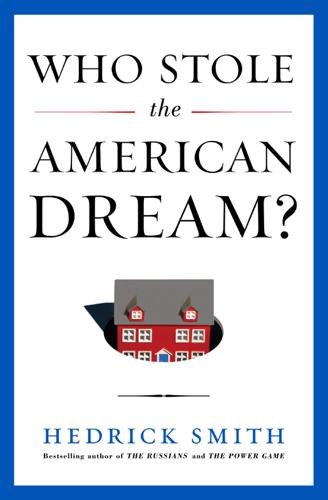
Who Stole the American Dream?
by
Hedrick Smith
Published 10 Sep 2012
H-1B never required that they be the best and brightest in the world. It only required a bachelor’s degree. —BRUCE MORRISON, former congressman, 2011 We find neither an inadequate supply of STEM [scientific, technical, engineering, mathematical] workers to supply the nation’s current needs, nor indications of shortages in the foreseeable future. —RAND CORPORATION STUDY, 2004 IN AMERICA, one of the most controversial causes of job loss in the high-tech industry involves not offshoring but “onshoring”—importing college-educated foreigners to come work in the United States and replace Americans—a strategy favored by such major U.S. companies as AIG, Disney, IBM, Microsoft, and Pfizer.
…
The Washington Post, October 21, 1995. 2 “These are not Einsteins” Bruce Morrison, interview, January 24, 2011. 3 “We find neither an inadequate supply” William Butz, Terrence K. Kelly, David M. Adamson, et al., “Will the Scientific and Technology Workforce Meet the Requirements of the Federal Government?” Rand Corporation, 2004, http://www.rand.org. 4 To recruit hot new talent “American-Made: The Impact of Immigrant Entrepreneurs and Professionals in U.S. Competitiveness,” National Venture Capital Association, 2006, http://www.nvca.org. 5 “It makes no sense to” “Bill Gates to Congress: Let Us Hire More Foreigners,” CNET News, March 12, 2006, http://news.cnet.com. 6 No ironclad protections for Americans Morrison, interview, January 24, 2011. 7 Senior AIG executives summoned 250 Linda Kilcrease, “Problems with the H-1B Visa Expansion and T-Visas,” web post, January 8, 2008, accessed January 17, 2011. http://www.zazona.comLibrary/BrainSavers/Problems_Kilcrease.htm, and Kilcrease, letter to editor, “H-1B Visa: A Bad Idea,” Cnet, 2009, accessed April 21, 2012. 8 “After we were seated” Douglas Crouse, “Competition from Abroad,” The Daily Record, Morris County, New Jersey, May 2, 2000. http://www.programmersguild.org/archives/lib/abuse/drm20000502aig.htm. 9 Americans were being replaced by H-1B Kilcrease, “Problems with the H-1B Visa Expansion.” 10 Did not bring in any special skills William Branigan, “White Collar Visas: Back Door for Cheap Labor,” The Washington Post, October 21, 1995. 11 “This profitable company boasted Kilcrease, “Problems with the H-1B Visa Expansion.” 12 One-third of its 46,000-member workforce “Quota Quickly Filled on Visas for High-Tech Guest Workers,” The New York Times, April 5, 2007. 13 Foreign worker tide kept rising “Flaws in Guest Worker Programs Add to US Unemployment Misery,” International Business Times News, November 21, 2010. 14 Or multinational temp agencies Ron Hira and Anil Hira, Outsourcing America: The True Cost of Shipping Jobs Overseas and What Can Be Done About It, 2nd. ed.
…
Building America’s Future Educational Fund. “Falling Apart and Falling Behind: Transportation Infrastructure Report 2011.” http://www.bafuture.org. Butz, William, Terrence K. Kelly, David M. Adamson, et al. “Will the Scientific and Technology Workforce Meet the Requirements of the Federal Government?” Rand Corporation, 2004. Case, Karl E., and Robert J. Shiller. “Is There a Housing Bubble?” Brookings Papers on Economic Activity 2, no. 2 (2003): 299–342. Case, Karl E., John M. Quigley, and Robert J. Shiller. “Wealth Effects Revisited 1978–2009.” Cowles Foundation for Research in Economics, Yale University, New Haven, CT, February 2011.
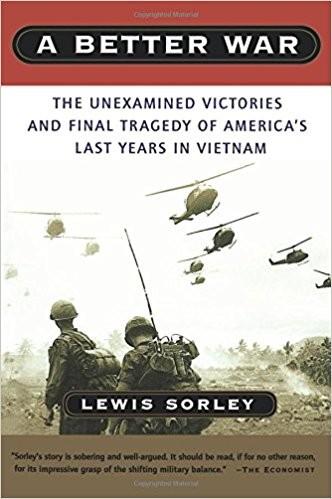
A Better War: The Unexamined Victories and Final Tragedy of America's Last Years in Vietnam
by
Lewis Sorley
Published 2 Jun 1999
The Unchangeable War. Santa Monica, Calif.: Rand Corporation, November 1970. Khuyen, Lieutenant General Dong Van, ARVN. The RVNAF. Washington, D.C.: U.S. Army Center of Military History, 1980. ———. RVNAF Logistics. Washington, D.C.: U.S. Army Center of Military History, 1980. Komer, R. W. Bureaucracy Does Its Thing: The Impact of Institutional Constraints on (JS/GVN Performance in the Vietnam War. Santa Monica, Calif.: Rand Corporation, February 1971. ———. Organization and Management of the New Model Pacification Program, 1966–1969. Santa Monica, Calif.: Rand Corporation, 7 May 1970. Larsen, Lieutenant General Stanley R., and Brigadier General James Lawton Collins, Jr.
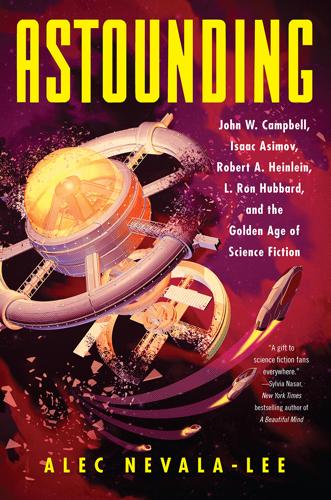
Astounding: John W. Campbell, Isaac Asimov, Robert A. Heinlein, L. Ron Hubbard, and the Golden Age of Science Fiction
by
Alec Nevala-Lee
Published 22 Oct 2018
It was exactly the attitude that had infuriated him in Parker, and his refusal to be pinned down undermined any attempts to investigate the subject seriously. Many were skeptical, and when a fan asked Campbell whether the Hieronymus Machine was a hoax, like Asimov’s articles about thiotimoline, the editor seemed horrified by the implication. There were inquiries from Bell Aircraft and the RAND Corporation, and Claude Shannon offered to test it, although the timing never worked out. Campbell soon moved on to other causes, and Hieronymus himself felt that the editor had set back acceptance of his work by a century. The symbolic machine, he said, functioned because the ink conducted lines of force, but when it came to serious research, it wasn’t worth “a tinker’s damn.”
…
“The articles we run” JWC, “The Problem of Psionics,” ASF, June 1956, 5. the Campbell Machine JWC, “Unprovable Speculation,” ASF, February 1957, 54–70. “I am not compelled to defend my hunches” Ibid., 70. whether the Hieronymus Machine was a hoax Robin Johnson, in Bangsund, JWC: An Australian Tribute, 10. Bell Aircraft and the RAND Corporation JWC to Galen Hieronymus, February 4, 1957. Claude Shannon offered to test it JWC to G. Harry Stine, July 31, 1957. “a tinker’s damn” Hieronymus, The Story of Eloptic Energy, 123–24. Bell Labs, the Harvard Computer Lab, and MIT “I’m welcome at Bell Labs, the G.E. labs, DuPont, Upjohn, Lederle, Brookhaven, MIT, etc.”
…
B., 195–96 Paul, Frank R., 75 Pauling, Linus, 338–39, 341 PC-815, USS, 177–79 Pearl Harbor, 151–53, 155 Pebble in the Sky (Asimov), 223, 282 Pennsylvania Turnpike, 312, 313–14 Perri, Leslie, 108, 141, 166 Petrovichi, 47, 142, 163, 172 Pettengill, Josephine B., 20, 24 Pettengill, Samuel B., 66 phenobarbital, 18, 119, 253 Phi Beta Kappa, 311 Philadelphia Navy Yard, 157–58, 160, 161, 163–73, 170, 185–88 Philadelphia Record, 212 Philippines, 158, 172–73, 205 Pic, 242–43 Pichel, Irving, 281, 336 Pierce, John R., 354 “Pigs Is Pigs” (Butler), 372 “Pilgrimage” (Asimov), 133 Pioneer Instrument Company, 66 “Piracy Preferred” (Campbell), 32 Planet Man, The (radio show), 475n PM (newspaper), 209 Podkayne of Mars (Heinlein), 340 Poe, Edgar Allan, 5 Pohl, Frederik Asimov and, 100, 104–5, 108, 140–41, 161, 166, 167, 218, 220, 223, 282, 284, 342, 343, 348, 350, 406 Campbell and Astounding, 80–81, 95, 115, 245, 278 dianetics and, 278, 282–83, 284 editing and agent work, 114, 136, 282, 343, 355, 387 Futurians and, 100, 102, 103, 104–5, 108, 109, 134, 181 Hubbard and, 131–32 Voyage Beyond Apollo cruise, 381–83 Polanski, Roman, 350, 482n Popular Science, 199–200 Porter, Katherine Anne, 381 “Positive Power of Posterior Pinching, The,” 347 Pournelle, Jerry, 385, 388 Pratt, Fletcher, 116, 128, 131, 141, 155, 156, 162, 186, 201–2 Princeton University, 202 Probability Zero, 148, 182 psionics, 303–7, 316, 317, 319–20, 324, 329, 355–56, 367 Psycho (Bloch), 281 psychoanalysis, 261, 272–73, 279 psychohistory, 8, 139–40, 142, 362, 400 Puerto Rico, 46, 130 pulp magazines, 6, 47, 49, 61, 75–77, 121, 125, 247–48 Puppet Masters, The (Heinlein), 281, 284 Purcell, Don, 293, 328–29 Purple Heart, 205 Quảng Ðúc, Thích, 2 Queens Science Fiction League, 104, 105, 117–18, 238 racism, 12–13, 360–65, 366–67 Ralston, Henry, 225 Rand, Ayn, 359 Randazzo, Jasper, 376–77, 379 RAND Corporation, 319 Randi, James, 391 “reactive mind,” 250, 259, 263 Reagan, Ronald, 388–89, 406 “Reason” (Asimov), 137 “Rebellion” (Campbell), 64 Red Cross, 46, 154, 172 Red Gods Call, The (Scoggins), 60 “Red Queen’s Race, The” (Asimov), 222 “Requiem” (Heinlein), 114, 115 “Rescue Party” (Clarke), 244 Revolt in the Stars (Hubbard), 394, 395 Reynolds, Mack, 487–88n Rhine, Joseph B., 55, 56 Rhodes, Cecil, 333 Rhodesia, 333 Rhodes Scholarship, 40 Rice, Jane, 366 Riley, Arthur E., 193–95, 197 Riley, Frank, 473n “Roads Must Roll, The” (Heinlein), 115 “Robbie” (Asimov), 95, 136 Robertson, Ian, 376 Robot series (Asimov), 2, 95, 136–37, 167, 208, 219, 220, 282, 283, 343, 400 Rocket Ship Galileo (Heinlein), 227 Rocketship X-M (movie), 255, 336 Rocket to the Morgue (Boucher), 181–82 Rocklynne, Ross, 96, 279 Roddenberry, Gene, 5, 370–74, 399 Rogers, Don, 252–53, 270 Rogers, Hubert, 158, 159, 284 Rolling Stones, The (Heinlein), 372 Romney, Mitt, 395–96 Roosevelt, Eleanor, 338 Roosevelt, Franklin D., 57, 132, 200–201, 205–6 Roper, USS, 41–42 Rosenberg, Julius and Ethel, 192 Rothman, Milton A., 95–96, 366 Rubinson, Jack, 99–100, 102, 103, 107 Russell, Eric Frank, 87–88, 145, 279, 304 Russian Revolution, 48 Sagan, Carl, 11–12, 383, 401 Sagan, Linda, 383 Saint Hill Manor, 332 St.

The Singularity Is Nearer: When We Merge with AI
by
Ray Kurzweil
Published 25 Jun 2024
Minsky taught me that there are two techniques for creating automated solutions to problems: the symbolic approach and the connectionist approach. The symbolic approach describes in rule-based terms how a human expert would solve a problem. In some cases the systems based on it could be successful. For example, in 1959 the RAND Corporation introduced the “General Problem Solver” (GPS)—a computer program that could combine simple mathematical axioms to solve logic problems.[15] Herbert A. Simon, J. C. Shaw, and Allen Newell developed the General Problem Solver to have the theoretical ability to solve any problem that could be expressed as a set of well-formed formulas (WFFs).
…
BACK TO NOTE REFERENCE 13 Raffi Khatchadourian, “The Doomsday Invention,” New Yorker, November 23, 2015, https://www.newyorker.com/magazine/2015/11/23/doomsday-invention-artificial-intelligence-nick-bostrom. BACK TO NOTE REFERENCE 14 A. Newell, J. C. Shaw, and H. A. Simon, “Report on a General Problem-Solving Program,” RAND P-1584, RAND Corporation, February 9, 1959, http://bitsavers.informatik.uni-stuttgart.de/pdf/rand/ipl/P-1584_Report_On_A_General_Problem-Solving_Program_Feb59.pdf. See the appendix for the sources used for all the cost-of-computation calculations in this book. BACK TO NOTE REFERENCE 15 Digital Equipment Corporation, PDP-1 Handbook (Maynard, MA: Digital Equipment Corporation, 1963), 10, http://s3data.computerhistory.org/pdp-1/DEC.pdp_1.1963.102636240.pdf.
…
See also health and well-being progress in, 111–12, 114–15, 258 public perceptions vs. reality of progress, 111–21 quantum computing, 251 quantum dots, 172 quantum emulation, 104 quarks, 97 qubits, 251 R racial disparities and policing, 150 Radical Abundance (Drexler), 169 radical life extension, 189–94, 255–65 first bridge to, 134–35, 255, 348n second bridge to, 135, 348n third bridge to, 135–36, 191–92, 348n fourth bridge to, 136, 192–93, 348n applying nanotechnology, 255–65 longevity escape velocity, 189–94, 256–57 risks and perils, 284–85 radio, 129–30, 131, 162 Rain Man (movie), 59 RAND Corporation, 15 randomness, 82, 87, 98 recognition trials, 21–22, 24 redundancy, 61 Rees, Martin, 97–98, 99, 280 regression to the mean, 121 regrets, 107 religion and consciousness, 78, 80, 86 Renaissance, 160 renewable energy, 154, 155–59, 172–76 growth of, 159 storage issues, 175–76 replicants, 100–105 talking to dad bot, 105–8 revolutions of 1848, 162 ribosomes, 250, 261 risks and perils.

Driverless Cars: On a Road to Nowhere
by
Christian Wolmar
Published 18 Jan 2018
Moreover, those statistics would not reveal when an accident took place in the immediate period after a driver had disengaged autopilot, precisely because of fears of an imminent collision. Nor, crucially, would they record the number of times drivers had disengaged the autopilot to prevent an accident. The RAND Corporation calculated that to show that self-driving cars were as safe as human drivers 69 Driverless Cars: On a Road to Nowhere would require 275 million fatality-free miles, and even that might be an underestimate. Contrary to the arguments set out by the proponents of autonomous cars, human drivers are actually pretty good.
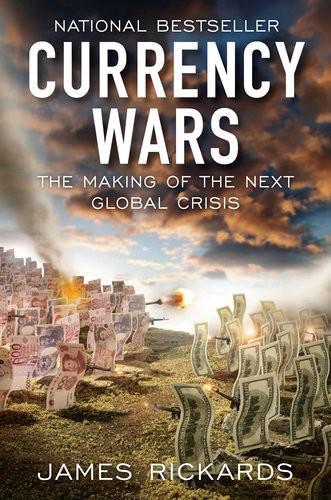
Currency Wars: The Making of the Next Gobal Crisis
by
James Rickards
Published 10 Nov 2011
The core group of experts met again at the lab the following month to continue developing the financial war game. In addition to the APL hosts and our sponsors from the Department of Defense, there were representatives from other cabinet-level departments, including Commerce and Energy; several major universities, including the Naval War College; think tanks, including the Peterson Institute and RAND Corporation; other physics labs, including Los Alamos; and senior military officers from the staff of the Joint Chiefs. At this point I noticed the absence of representatives with any actual capital markets experience. I was the only one in the room with a lengthy career on Wall Street that included time at investment banks, hedge funds and exchanges.
…
This’ll be great to mix things up with the generals and intelligence people. Can’t wait.” And that was that. Steve was assigned to the Russia cell, of course. O.D. was assigned to the gray cell, representing the hedge funds and Swiss banks—another appropriate assignment. I was put in the China cell, along with a well-known Harvard academic, a highly cerebral RAND Corporation analyst and two other area experts. The financial war was just a few weeks away and it was time to lay some traps—something the military calls “conditioning the battle space.” I knew that Russia would begin the game with significantly less national power than the United States or even China.

Everything Is Obvious: *Once You Know the Answer
by
Duncan J. Watts
Published 28 Mar 2011
In particular, he recommends that planners look for ways to integrate what he calls strategic uncertainty—uncertainty about the future of the business you’re in—into the planning process itself. Raynor’s solution, in fact, is a variant of a much older planning technique called scenario planning, which was developed by Herman Kahn of the RAND Corporation in the 1950s as an aid for cold war military strategists. The basic idea of scenario planning is to create what strategy consultant Charles Perrottet calls “detailed, speculative, well thought out narratives of ‘future history.’ ” Critically, however, scenario planners attempt to sketch out a wide range of these hypothetical futures, where the main aim is not so much to decide which of these scenarios is most likely as to challenge possibly unstated assumptions that underpin existing strategies.18 In the early 1970s, for example, the economist and strategist Pierre Wack led a team at Royal Dutch/Shell that used scenario planning to test senior management’s assumptions about the future success of oil exploration efforts, the political stability of the Middle East, and the emergence of alternative energy technologies.
…
. ———. 2010. “The Teachers’ Unions’ Last Stand.” New York Times Magazine (May 23): 32–47. Brooker, Katrina. 2010. “Citi’s Creator, Alone with His Regrets” New York Times, Jan. 2. Brown, Bernice B. 1968. “Delphi Process: A Methodology Used for the Elicitation of Opinions of Experts.” Santa Monica, CA: RAND Corporation. Brynjolfsson, Erik, and Michael Schrage. 2009. “The New, Faster Face of Innovation.” MIT Sloan Management Review, August. Buchanan, James. 1989. “Rational Choice Models in the Social Sciences.” In Explorations into Constitutional Economics, ed. R. D. Tollison and V. J. Vanberg. College Station, TX: Texas A&M University Press.
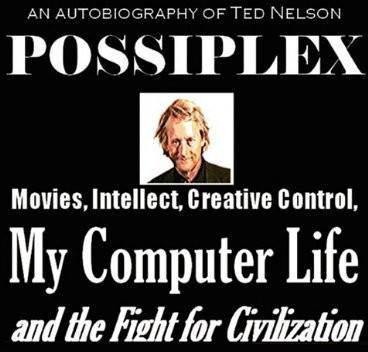
Possiplex
by
Ted Nelson
Published 2 Jan 2010
The three pillars of my identity were: • The New Yorker-- deep sophisticated journalism far above what most people got to see. • The Museum of Modern Art. (I think I paid eleven dollars for my annual membership when I was fifteen, and that even got me an extra Museum card “for my spouse”--- which I gave to a young lady I knew.) • The Rand Corporation, which I had heard about from Leo Rosten. I was deeply worried about nuclear war, and that is where they made the policy; I felt I might contribute. (I only found out decades later that due to their own snobbery, Rand only hired economists and physicists.) The Soviet Union now had thermonuclear weapons, and both sides were continuing to prepare for the unthinkable nuclear war.
…
I had heard the songs of a vocalist named Little Richard, who supposedly sang in English, my native tongue, and I could not decipher a single syllable. I had no doubt that voice recognition would someday be practical, but I did not know when and was not about to hold my breath. I made one friend at that conference, a linguist named Martin Kay, who was at the Rand Corporation. We talked about the problem of character-sets for different languages. (Eventually I sent Martin Kay a full photocopy of Dr. Seuss' book On Beyond Zebra, wherein the good doctor proposed such new alphabetical characters as Yuzz, Fuddle and Quan.) Sherry Amott’s puppets (~1964) I had a student at Vassar named Sherry Amott.

Heart of the Machine: Our Future in a World of Artificial Emotional Intelligence
by
Richard Yonck
Published 7 Mar 2017
This allowed the military to better understand not only what its future capabilities would be, but also those of the enemy. This was critical because, being the dawn of the atomic age, there were enormous uncertainties about our future, including whether or not we would actually survive to have one. Project RAND eventually transformed into the RAND Corporation, one of the first global policy think tanks. As the space race ramped up, interest in foresight grew, particularly in government and the military. In time, corporations began showing interest too, as was famously demonstrated by Royal Dutch Shell’s application of scenarios in response to the 1973 oil crisis.
…
In this case, the answers to the types of questions the AI was developed to address. Chapter 9 1. Grossman, D. On Killing: The Psychological Cost of Learning to Kill in War and Society. Back Bay Books. 1996. 2. Center for Military Health Policy Research, Rajeev Ramchand, and Inc ebrary. The War Within: Preventing Suicide in the U.S. Military. Santa Monica, CA: Rand Corporation, 2011. 3. DARPA. Sanchez, J. “Systems-Based Neurotechnology for Emerging Therapies (SUBNETS).” 4. Tucker, P. “The Military Is Building Brain Chips to Treat PTSD.” Defense One. May 28, 2014. 5. Temporal resolution refers to precision of the measurement with respect to time, just as spatial resolution is precision with respect to space, such as the number of pixels in an image 6.
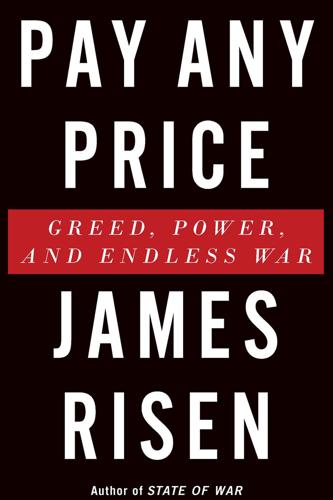
Pay Any Price: Greed, Power, and Endless War
by
James Risen
Published 15 Feb 2014
He was the gregarious center of gravity of a tight-knit group of longtime friends in Santa Monica, the Peter Pan character in a crowd reminiscent of the cast of Friends, a short, stocky, and bald-headed slacker and computer geek who loved to work from home on his laptop, a gamer addicted to World of Warcraft, a liberal who expressed distaste for George Bush during long talks around the UCLA campus or in coffee shops near the ocean. But he was also a behavioral science researcher who had cultivated close ties to the CIA and Pentagon while working as an analyst at the RAND Corporation and later at the Defense Group, a defense and intelligence contracting firm. He had a Top Secret/Sensitive Compartmented Information clearance, and his research focused on finding new ways of determining when someone was lying—“deception detection” research. He would regularly disappear from his Santa Monica apartment to fly to Washington for meetings with officials from the CIA, Pentagon, Department of Homeland Security, and National Security Agency.
…
Others that were distributed should not have been. In 2011, one Illinois fusion center warned darkly that Russian hackers had tapped into the computer system of a water district in Springfield. In fact, a repairman had remotely accessed the water district’s computer system while on vacation in Russia. Brian Jenkins of the RAND Corporation, one of the nation’s most thoughtful terrorism analysts, points out that in the years since the 9/11 attacks, the United States has been remarkably free of terrorism, despite the heightened levels of fear and anxiety. “In terms of domestic terrorism, this has been the most tranquil decade since the early 1960s,” says Jenkins.
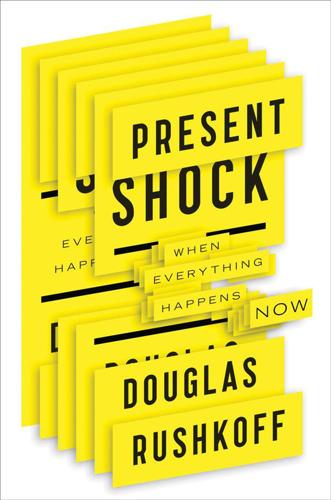
Present Shock: When Everything Happens Now
by
Douglas Rushkoff
Published 21 Mar 2013
Even if there were millions of possible actors, actions, and connections, there were only two real superpowers—the Soviet Union and the United States. Military leaders figured that game theory, based on the mathematics of poker, should be able to model this activity and give us simple enough rules for engagement. And so the RAND Corporation was hired to conduct experiments (like the Prisoner’s Dilemma, which we looked at earlier), determine probable outcomes, and then program computers to respond appropriately in any number of individual circumstances. Led by the as yet undiagnosed paranoid schizophrenic John Nash (the mathematician portrayed in the movie A Beautiful Mind), they adopted a principle called MAD, or mutually assured destruction, which held that if the use of any nuclear device could effectively guarantee the complete and utter annihilation of both sides in the conflict, then neither side would opt to use them.
…
See also timescales Prisoner’s Dilemma, 193, 194, 220, 222, 248 privacy, 158, 169, 204 production, 81, 127, 161–62, 165 productivity, 81, 82, 95, 98, 106, 111, 117, 143 programmers, 85, 87, 96–97, 98, 128, 231–32 programs, 84, 87, 93, 98, 101–2, 107, 113–14, 263 progress, 86, 253–54. See also change Prometheus, 190 public, sophistication of, 45 public relations, 205, 207, 214, 217, 223 publishing, 97 Pulp Fiction (movie), 30–31 Quetzalcoatl (Mayan god), 253 railroad industry, 82 RAM, 5, 140, 140n, 181–89 Ramo, Joshua, 236–37 RAND Corporation, 220–21, 225 The Real World (TV show), 35–36 reality: apocalypto and, 262, 264; chronobiology and, 88; digiphrenia and, 113; fractalnoia and, 216–17; games and, 60; narrative collapse and, 50, 66; overwinding and, 165, 169; temporal, 165. See also reality television reality television, 2, 35–43, 66, 136, 149–50 “The Relationship Economy” (Michalski), 238–39 religion, 8, 28, 76–77, 78–79, 101, 212, 260–62, 263–64 remote control: for television, 21; warfare by, 7, 120–22 Rifkin, Jeremy, 78–79 Rinne, April, 238 Ritalin, 92, 124 Rizzo, Albert “Skip,” 65–66 Roberts, Kevin, 211 Robertson, Joel, 102–3, 104 Romero, George, 249 RPG (role-playing game), 60–61, 62–63 runners, 101–2 Rushkoff, Douglas: car accident of, 65–66; father’s clock and, 83–84; first exposure to computers of, 230–31; Michalski meeting with, 237–38; TripTik experience of, 109; writing of book by, 264–65 Santa Fe Institute, 227, 228 schedules, digiphrenia and, 84, 85, 93–109 screech, fractalnoia and, 208, 210 SEALS, Navy, 136 Second Life, apocalypto and, 263 Second Life (online virtual world), 258 self: digital/virtual, 69–76, 88; representation of, 96.
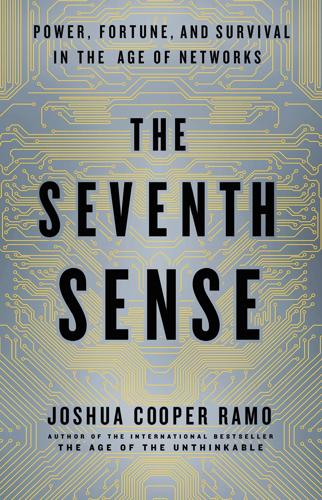
The Seventh Sense: Power, Fortune, and Survival in the Age of Networks
by
Joshua Cooper Ramo
Published 16 May 2016
“During the time”: Thomas Hobbes, Leviathan (Cambridge: Cambridge University Press, 2002), 88. Biological surveillance: The foundational text of network battle thinking is: John Arquilla and David Ronfeldt, eds., Networks and Netwars: The Future of Terror, Crime, and Militancy (Santa Monica, CA: RAND Corporation, 2001). For a discussion of the biological issues, see Eugene Thacker, “Living Dead Networks,” The Fibreculture Journal 4 (2005). Hannibal’s smashing attacks: A. T. Mahan, The Influence of Sea Power upon History, 1660–1783 (Boston: Little, Brown, 1890), iv. One hacker: David Raymond et al., “A Control Measure Framework to Limit Collateral Damage and Propagation of Cyber Weapons,” in Karlis Podins, Jan Stinissen, and Markus Maybaum, eds., 5th International Conference in Cyber Conflict: Proceedings 2013 (Tallinn, Estonia: NATO Cooperative Cyber Defence Centre of Excellence Publications, 2013).
…
“Everything is a gate”: Felix “FX” Lindner and Sandro Gaycken, “Back to Basics: Beyond Network Hygiene,” in Best Practices in Computer Network Defense: Incident Detection and Response, ed. Melissa E. Hathaway (Amsterdam, the Netherlands: IOS Press, 2014), 55–56. Chapter 10. HARD GATEKEEPING “The United States faces no existential threat”: See James Dobbins et al., Choices for America in a Turbulent World (Santa Monica, CA: RAND Corporation, 2015), xiv. For a discussion of the nature of security and values, see Arnold Wolfers, “‘National Security’ as an Ambiguous Symbol,” Political Science Quarterly 67, no. 4 (December 1952): 485. “Every new age”: Carl Schmitt, Nomos of the Earth in the International Law of the Just Publicum Europaeum (New York: Telos Press, 2006), 45.
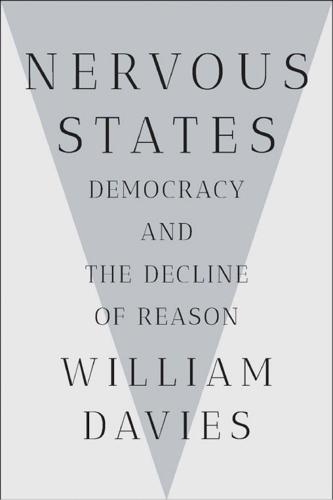
Nervous States: Democracy and the Decline of Reason
by
William Davies
Published 26 Feb 2019
These threats elevated the academic fields of computer science, game theory, and behavioral and cognitive science within US defense policy. Where so much hangs on one individual decision (as it does where nuclear weapons are concerned), the question of what is a “rational” course of action needs answering with the best mechanical and mathematical equipment available. The RAND Corporation think tank achieved notoriety for its various simulations of nuclear war, developed in an effort to identify the optimal strategy if the day ever arrived. “Virtual reality” was born as a way of testing out different military strategies, because there was no opportunity for real-world trial and error.
…
Kennedy International Airport, New York, x, xiii, 41 Johns Hopkins University, 176 Jones, Alexander, 131 Kant, Immanuel, 128, 130 Kemelmacher-Shlizerman, Ira, 188 Kennedy Jr., Robert, 23 Kepler, Johannes, 35 Keynes, John Maynard, 165 King Jr., Martin Luther, 21, 224 knowledge economy, 84, 85, 88, 151–2, 217 known knowns, 132, 138 Koch, Charles and David, 154, 164, 174 Korean War (1950–53), 178 Kraepelin, Emil, 139 Kurzweil, Ray, 183–4 Labour Party, 5, 6, 65, 80, 81, 221 Lagarde, Christine, 64 Le Bon, Gustave, 8–12, 13, 15, 16, 20, 24, 25, 38 Le Pen, Marine, 27, 79, 87, 92, 101–2 Leadbeater, Charles, 84 Leeds, West Yorkshire, 85 Leicester, Leicestershire, 85 Leviathan (Hobbes), 34, 39, 45 liberal elites, 20, 58, 88, 89, 161 libertarianism, 15, 151, 154, 158, 164, 173, 196, 209, 226 Liberty Fund, 158 Libya, 143 lie-detection technology, 136 life expectancy, 62, 68–71, 72, 92, 100–101, 115, 224 Lindemann, Frederick Alexander, 1st Viscount Cherwell, 138 Lloyds Bank, 29 London, England bills of mortality, 68–71, 75, 79–80, 81, 89, 127 Blitz (1940–41), 119, 143, 180 EU referendum (2016), 85 Great Fire (1666), 67 Grenfell Tower fire (2017), 10 and gross domestic product (GDP), 77, 78 housing crisis, 84 insurance sector, 59 knowledge economy, 84 life expectancy, 100 newspapers, early, 48 Oxford Circus terror scare (2017), ix–x, xiii, 41 plagues, 67–71, 75, 79–80, 81, 89, 127 Unite for Europe march (2017), 23 London School of Economics (LSE), 160 loss aversion, 145 Louis XIV, King of France, 73, 127 Louisiana, United States, 151, 221 Ludwig von Mises Institute, 154 MacLean, Nancy, 158 Macron, Emmanuel, 33 mainstream media, 197 “Make America Great Again,” 76, 145 Manchester, England, 85 Mann, Geoff, 214 maps, 182 March For Our Lives (2018), 21 March for Science (2017), 23–5, 27, 28, 210, 211 marketing, 14, 139–41, 143, 148, 169 Mars, 175, 226 Marxism, 163 Massachusetts Institute of Technology (MIT), 179 Mayer, Jane, 158 McCarthy, Joseph, 137 McGill Pain Questionnaire, 104 McKibben, William “Bill,” 213 Megaface, 188–9 memes, 15, 194 Menger, Carl, 154 mental illness, 103, 107–17, 139 mercenaries, 126 Mercer, Robert, 174, 175 Mexico, 145 Million-Man March (1995), 4 mind-reading technology, 136 see also telepathy Mirowski, Philip, 158 von Mises, Ludwig, 154–63, 166, 172, 173 Missing Migrants Project, 225 mobilization, 5, 7, 126–31 and Corbyn, 81 and elections, 81, 124 and experts, 27–8 and Internet, 15 and Le Bon’s crowd psychology, 11, 12, 16, 20 and loss, 145 and Napoleonic Wars, xv, 127–30, 141, 144 and Occupy movement, 5 and populism, 16, 22, 60 and violence, opposition to, 21 Moniteur Universel, Le, 142 monopoly on violence, 42 Mont Pelerin Society, 163, 164 moral emotion, 21 morphine, 105 multiculturalism, 84 Murs, Oliver “Olly,” ix Musk, Elon, 175, 176, 178, 183, 226 Nanchang, Jiangxi, 13 Napoleonic Wars (1803–15), 126–30 chappe system, 129, 182 and conscription, 87, 126–7, 129 and disruption, 170–71, 173, 174, 175, 226 and great leader ideal, 146–8 and intelligence, 134 and mobilization, xv, 126–30, 141, 144 and nationalism, 87, 128, 129, 144, 183, 211 and propaganda, 142 Russia, invasion of (1812), 128, 133 Spain, invasion of (1808), 128 National Aeronautics and Space Administration (NASA), 23, 175 National Audit Office (NAO), 29–30 national citizenship, 71 National Defense Research Committee, 180 National Health Service (NHS), 30, 93 National Park Service, 4 National Security Agency (NSA), 152 national sovereignty, 34, 53 nationalism, 87, 141, 210–12 and conservatism, 144 and disempowerment, 118–19 and elites, 22–3, 60–61, 145 ethnic, 15 and health, 92, 211–12, 224 and imagined communities, 87 and inequality, 78 and loss, 145 and markets, 167 and promises, 221 and resentment, 145, 197, 198 and war, 7, 20–21, 118–19, 143–6, 210–11 nativism, 61 natural philosophy, 35–6 nature, 86 see also environment Nazi Germany (1933–45), 137, 138, 154 Netherlands, 48, 56, 129 Neurable, 176 neural networking, 216 Neuralink, 176 neurasthenia, 139 Neurath, Otto, 153–4, 157, 160 neurochemistry, 108, 111, 112 neuroimaging, 176–8, 181 Nevada, United States, 194 new atheism, 209 New Orleans, Louisiana, 151 New Right, 164 New York, United States and climate change, 205 and gross domestic product (GDP), 78 housing crisis, 84 JFK Airport terror scare (2016), x, xiii, 41 knowledge economy, 84 September 11 attacks (2001), 17, 18 New York Times, 3, 27, 85 newspapers, 48, 71 Newton, Isaac, 35 Nietzsche, Friedrich, 217 Nixon, Robert, 206 no-platforming, 22, 208 Nobel Prize, 158–9 non-combatants, 43, 143, 204 non-violence, 224 North Atlantic Treaty Organization (NATO), 123, 145, 214 North Carolina, United States, 84 Northern Ireland, 43, 85 Northern League, 61 Northern Rock, 29 Norwich, Norfolk, 85 nostalgia, xiv, 143, 145, 210, 223 “Not in my name,” 27 nuclear weapons, 132, 135, 137, 180, 183, 192, 196, 204 nudge techniques, 13 Obama, Barack, 3, 24, 76, 77, 79, 158, 172 Obamacare, 172 objectivity, xiv, 13, 75, 136, 223 and crowd-based politics, 5, 7, 24–5 and death, 94 and Descartes, 37 and experts, trust in, 28, 32, 33, 51, 53, 64, 86, 89 and Hayek, 163, 164, 170 and markets, 169, 170 and photography, 8 and Scientific Revolution, 48, 49 and statistics, 72, 74, 75, 82, 88 and telepathic communication, 179 and war, 58, 125, 134, 135, 136, 146 Occupy movement, 5, 10, 24, 61 Oedipus complex, 109 Office for National Statistics, 63, 133 Ohio, United States, 116 oil crisis (1973), 166 “On Computable Numbers” (Turing), 181 On War (Clausewitz), 130 Open Society and Its Enemies, The (Popper), 171 opiates, 105, 116, 172–3 opinion polling, 65, 80–81, 191 Orbán, Viktor, 87, 146 Organisation for Economic Co-operation and Development (OECD), 72 Oxford, Oxfordshire, 85 Oxford Circus terror scare (2017), ix–x, xiii, 41 Oxford University, 56, 151 OxyContin, 105, 116 pacifism, 8, 20, 44, 151 pain, 102–19, 172–3, 224 see also chronic pain painkillers, 104, 105, 116, 172–3 Palantir, 151, 152, 175, 190 parabiosis, 149 Paris climate accord (2015), 205, 207 Paris Commune (1871), 8 Parkland attack (2018), 21 Patriot Act (2001), 137 Paul, Ronald, 154 PayPal, 149 Peace of Westphalia (1648), 34, 53 peer reviewing, 48, 139, 195, 208 penicillin, 94 Pentagon, 130, 132, 135, 136, 214, 216 pesticides, 205 Petty, William, 55–9, 67, 73, 85, 167 pharmacology, 142 Pielke Jr., Roger, 24, 25 Piketty, Thomas, 74 Pinker, Stephen, 207 plagues, 56, 67–71, 75, 79–80, 81, 89, 95 pleasure principle, 70, 109, 110, 224 pneumonia, 37, 67 Podemos, 5, 202 Poland, 20, 34, 60 Polanyi, Michael, 163 political anatomy, 57 Political Arithmetick (Petty), 58, 59 political correctness, 20, 27, 145 Popper, Karl, 163, 171 populism xvii, 211–12, 214, 220, 225–6 and central banks, 33 and crowd-based politics, 12 and democracy, 202 and elites/experts, 26, 33, 50, 152, 197, 210, 215 and empathy, 118 and health, 99, 101–2, 224–5 and immediate action, 216 in Kansas (1880s), 220 and markets, 167 and private companies, 174 and promises, 221 and resentment, 145 and statistics, 90 and unemployment, 88 and war, 148, 212 Porter, Michael, 84 post-traumatic stress disorder (PTSD), 111–14, 117, 209 post-truth, 167, 224 Potsdam Conference (1945), 138 power vs. violence, 19, 219 predictive policing, 151 presidential election, US (2016), xiv and climate change, 214 and data, 190 and education, 85 and free trade, 79 and health, 92, 99 and immigration, 79, 145 and inequality, 76–7 and Internet, 190, 197, 199 “Make America Great Again,” 76, 145 and opinion polling, 65, 80 and promises, 221 and relative deprivation, 88 and Russia, 199 and statistics, 63 and Yellen, 33 prisoners of war, 43 promises, 25, 31, 39–42, 45–7, 51, 52, 217–18, 221–2 Propaganda (Bernays), 14–15 propaganda, 8, 14–16, 83, 124–5, 141, 142, 143 property rights, 158, 167 Protestantism, 34, 35, 45, 215 Prussia (1525–1947), 8, 127–30, 133–4, 135, 142 psychiatry, 107, 139 psychoanalysis, 107, 139 Psychology of Crowds, The (Le Bon), 9–12, 13, 15, 16, 20, 24, 25 psychosomatic, 103 public-spending cuts, 100–101 punishment, 90, 92–3, 94, 95, 108 Purdue, 105 Putin, Vladimir, 145, 183 al-Qaeda, 136 quality of life, 74, 104 quantitative easing, 31–2, 222 quants, 190 radical statistics, 74 RAND Corporation, 183 RBS, 29 Reagan, Ronald, 15, 77, 154, 160, 163, 166 real-time knowledge, xvi, 112, 131, 134, 153, 154, 165–70 Reason Foundation, 158 Red Vienna, 154, 155 Rees-Mogg, Jacob, 33, 61 refugee crisis (2015–), 60, 225 relative deprivation, 88 representative democracy, 7, 12, 14–15, 25–8, 61, 202 Republican Party, 77, 79, 85, 154, 160, 163, 166, 172 research and development (R&D), 133 Research Triangle, North Carolina, 84 resentment, 5, 226 of elites/experts, 32, 52, 61, 86, 88–9, 161, 186, 201 and nationalism/populism, 5, 144–6, 148, 197, 198 and pain, 94 Ridley, Matt, 209 right to remain silent, 44 Road to Serfdom, The (Hayek), 160, 166 Robinson, Tommy, ix Roosevelt, Franklin Delano, 52 Royal Exchange, 67 Royal Society, 48–52, 56, 68, 86, 133, 137, 186, 208, 218 Rumsfeld, Donald, 132 Russian Empire (1721–1917), 128, 133 Russian Federation (1991–) and artificial intelligence, 183 Gerasimov Doctrine, 43, 123, 125, 126 and information war, 196 life expectancy, 100, 115 and national humiliation, 145 Skripal poisoning (2018), 43 and social media, 15, 18, 199 troll farms, 199 Russian Revolution (1917), 155 Russian SFSR (1917–91), 132, 133, 135–8, 155, 177, 180, 182–3 safe spaces, 22, 208 Sands, Robert “Bobby,” 43 Saxony, 90 scarlet fever, 67 Scarry, Elaine, 102–3 scenting, 135, 180 Schneier, Bruce, 185 Schumpeter, Joseph, 156–7, 162 Scientific Revolution, 48–52, 62, 66, 95, 204, 207, 218 scientist, coining of term, 133 SCL, 175 Scotland, 64, 85, 172 search engines, xvi Second World War, see World War II securitization of loans, 218 seismology, 135 self-employment, 82 self-esteem, 88–90, 175, 212 self-harm, 44, 114–15, 117, 146, 225 self-help, 107 self-interest, 26, 41, 44, 61, 114, 141, 146 Semi-Automatic Ground Environment (SAGE), 180, 182, 200 sentiment analysis, xiii, 12–13, 140, 188 September 11 attacks (2001), 17, 18 shell shock, 109–10 Shrecker, Ted, 226 Silicon Fen, Cambridgeshire, 84 Silicon Valley, California, xvi, 219 and data, 55, 151, 185–93, 199–201 and disruption, 149–51, 175, 226 and entrepreneurship, 149–51 and fascism, 203 and immortality, 149, 183–4, 224, 226 and monopolies, 174, 220 and singularity, 183–4 and telepathy, 176–8, 181, 185, 186, 221 and weaponization, 18, 219 singularity, 184 Siri, 187 Skripal poisoning (2018), 43 slavery, 59, 224 smallpox, 67 smart cities, 190, 199 smartphone addiction, 112, 186–7 snowflakes, 22, 113 social indicators, 74 social justice warriors (SJWs), 131 social media and crowd psychology, 6 emotional artificial intelligence, 12–13, 140–41 and engagement, 7 filter bubbles, 66 and propaganda, 15, 18, 81, 124 and PTSD, 113 and sentiment analysis, 12 trolls, 18, 20–22, 27, 40, 123, 146, 148, 194–8, 199, 209 weaponization of, 18, 19, 22, 194–5 socialism, 8, 20, 154–6, 158, 160 calculation debate, 154–6, 158, 160 Socialism (Mises), 160 Society for Freedom in Science, 163 South Africa, 103 sovereignty, 34, 53 Soviet Russia (1917–91), 132, 133, 135–8, 177, 180, 182–3 Spain, 5, 34, 84, 128, 202 speed of knowledge, xvi, 112, 124, 131, 134, 136, 153, 154, 165–70 Spicer, Sean, 3, 5 spy planes, 136, 152 Stalin, Joseph, 138 Stanford University, 179 statactivism, 74 statistics, 62–91, 161, 186 status, 88–90 Stoermer, Eugene, 206 strong man leaders, 16 suicide, 100, 101, 115 suicide bombing, 44, 146 superbugs, 205 surveillance, 185–93, 219 Sweden, 34 Switzerland, 164 Sydenham, Thomas, 96 Syriza, 5 tacit knowledge, 162 talking cure, 107 taxation, 158 Tea Party, 32, 50, 61, 221 technocracy, 53–8, 59, 60, 61, 78, 87, 89, 90, 211 teenage girls, 113, 114 telepathy, 39, 176–9, 181, 185, 186 terrorism, 17–18, 151, 185 Charlottesville attack (2017), 20 emergency powers, 42 JFK Airport terror scare (2016), x, xiii, 41 Oxford Circus terror scare (2017), ix–x, xiii, 41 September 11 attacks (2001), 17, 18 suicide bombing, 44, 146 vehicle-ramming attacks, 17 war on terror, 131, 136, 196 Thames Valley, England, 85 Thatcher, Margaret, 154, 160, 163, 166 Thiel, Peter, 26, 149–51, 153, 156, 174, 190 Thirty Years War (1618–48), 34, 45, 53, 126 Tokyo, Japan, x torture, 92–3 total wars, 129, 142–3 Treaty of Westphalia (1648), 34, 53 trends, xvi, 168 trigger warnings, 22, 113 trolls, 18, 20–22, 27, 40, 123, 146, 148, 194–8, 199, 209 Trump, Donald, xiv and Bannon, 21, 60–61 and climate change, 207 and education, 85 election campaign (2016), see under presidential election, US and free trade, 79 and health, 92, 99 and immigration, 145 inauguration (2017), 3–5, 6, 9, 10 and inequality, 76–7 “Make America Great Again,” 76, 145 and March for Science (2017), 23, 24, 210 and media, 27 and opinion polling, 65, 80 and Paris climate accord, 207 and promises, 221 and relative deprivation, 88 and statistics, 63 and Yellen, 33 Tsipras, Alexis, 5 Turing, Alan, 181, 183 Twitter and Corbyn’s rallies, 6 and JFK Airport terror scare (2016), x and Oxford Circus terror scare (2017), ix–x and Russia, 18 and sentiment analysis, 188 and trends, xvi and trolls, 194, 195 Uber, 49, 185, 186, 187, 188, 191, 192 UK Independence Party, 65, 92, 202 underemployment, 82 unemployment, 61, 62, 72, 78, 81–3, 87, 88, 203 United Kingdom austerity, 100 Bank of England, 32, 33, 64 Blitz (1940–41), 119, 143, 180 Brexit (2016–), see under Brexit Cameron government (2010–16), 33, 73, 100 Center for Policy Studies, 164 Civil Service, 33 climate-gate (2009), 195 Corbyn’s rallies, 5, 6 Dunkirk evacuation (1940), 119 education, 85 financial crisis (2007–9), 29–32, 100 first past the post, 13 general election (2015), 80, 81 general election (2017), 6, 65, 80, 81, 221 Grenfell Tower fire (2017), 10 gross domestic product (GDP), 77, 79 immigration, 63, 65 Irish hunger strike (1981), 43 life expectancy, 100 National Audit Office (NAO), 29 National Health Service (NHS), 30, 93 Office for National Statistics, 63, 133 and opiates, 105 Oxford Circus terror scare (2017), ix–x, xiii, 41 and pain, 102, 105 Palantir, 151 Potsdam Conference (1945), 138 quantitative easing, 31–2 Royal Society, 138 Scottish independence referendum (2014), 64 Skripal poisoning (2018), 43 Society for Freedom in Science, 163 Thatcher government (1979–90), 154, 160, 163, 166 and torture, 92 Treasury, 61, 64 unemployment, 83 Unite for Europe march (2017), 23 World War II (1939–45), 114, 119, 138, 143, 180 see also England United Nations, 72, 222 United States Bayh–Dole Act (1980), 152 Black Lives Matter, 10, 225 BP oil spill (2010), 89 Bush Jr. administration (2001–9), 77, 136 Bush Sr administration (1989–93), 77 Bureau of Labor, 74 Central Intelligence Agency (CIA), 3, 136, 151, 199 Charlottesville attack (2017), 20 Civil War (1861–5), 105, 142 and climate change, 207, 214 Clinton administration (1993–2001), 77 Cold War, see Cold War Defense Advanced Research Projects Agency (DARPA), 176, 178 Defense Intelligence Agency, 177 drug abuse, 43, 100, 105, 115–16, 131, 172–3 education, 85 Federal Bureau of Investigation (FBI), 137 Federal Reserve, 33 Fifth Amendment (1789), 44 financial crisis (2007–9), 31–2, 82, 158 first past the post, 13 Government Accountability Office, 29 gross domestic product (GDP), 75–7, 82 health, 92, 99–100, 101, 103, 105, 107, 115–16, 158, 172–3 Heritage Foundation, 164, 214 Iraq War (2003–11), 74, 132 JFK Airport terror scare (2016), x, xiii, 41 Kansas populists (1880s), 220 libertarianism, 15, 151, 154, 158, 164, 173 life expectancy, 100, 101 March For Our Lives (2018), 21 March for Science (2017), 23–5, 27, 28, 210 McCarthyism (1947–56), 137 Million-Man March (1995), 4 National Aeronautics and Space Administration (NASA), 23, 175 National Defense Research Committee, 180 National Park Service, 4 National Security Agency (NSA), 152 Obama administration (2009–17), 3, 24, 76, 77, 79, 158 Occupy Wall Street (2011), 5, 10, 61 and opiates, 105, 172–3 and pain, 103, 105, 107, 172–3 Palantir, 151, 152, 175, 190 Paris climate accord (2015), 205, 207 Parkland attack (2018), 21 Patriot Act (2001), 137 Pentagon, 130, 132, 135, 136, 214, 216 presidential election (2016), see under presidential election, US psychiatry, 107, 111 quantitative easing, 31–2 Reagan administration (1981–9), 15, 77, 154, 160, 163, 166 Rumsfeld’s “unknown unknowns” speech (2002), 132 Semi-Automatic Ground Environment (SAGE), 180, 182, 200 September 11 attacks (2001), 17, 18 Tea Party, 32, 50, 61, 221 and torture, 93 Trump administration (2017–), see under Trump, Donald unemployment, 83 Vietnam War (1955–75), 111, 130, 136, 138, 143, 205 World War I (1914–18), 137 World War II (1939–45), 137, 180 universal basic income, 221 universities, 151–2, 164, 169–70 University of Cambridge, 84, 151 University of Chicago, 160 University of East Anglia, 195 University of Oxford, 56, 151 University of Vienna, 160 University of Washington, 188 unknown knowns, 132, 133, 136, 138, 141, 192, 212 unknown unknowns, 132, 133, 138 “Use of Knowledge in Society, The” (Hayek), 161 V2 flying bomb, 137 vaccines, 23, 95 de Vauban, Sébastien Le Prestre, Marquis de Vauban, 73 vehicle-ramming attacks, 17 Vesalius, Andreas, 96 Vienna, Austria, 153–5, 159 Vietnam War (1955–75), 111, 130, 136, 138, 143, 205 violence vs. power, 19, 219 viral marketing, 12 virtual reality, 183 virtue signaling, 194 voice recognition, 187 Vote Leave, 50, 93 Wainright, Joel, 214 Wales, 77, 90 Wall Street, New York, 33, 190 War College, Berlin, 128 “War Economy” (Neurath), 153–4 war on drugs, 43, 131 war on terror, 131, 136, 196 Watts, Jay, 115 weaponization, 18–20, 22, 26, 75, 118, 123, 194, 219, 223 weapons of mass destruction, 132 wearable technology, 173 weather control, 204 “What Is An Emotion?”
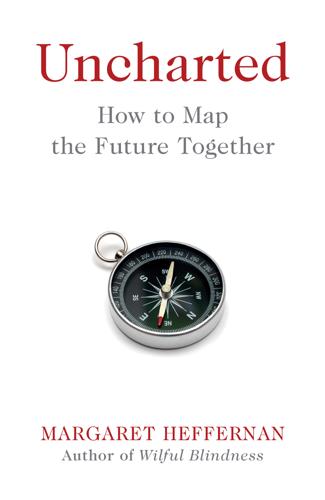
Uncharted: How to Map the Future
by
Margaret Heffernan
Published 20 Feb 2020
Each year, corruption costs Mexico between 2 and 10 per cent of its GDP.2 There had to be more he could do. So, when colleagues approached him about scenario planning for the future of Mexico, Fernandez didn’t quite know what that would entail, but he was definitely up for it. *** Scenario planning was pioneered after the Second World War by the Rand Corporation and the American military. As a process, it grew out of an understanding of complexity and the recognition that it is never possible to identify all the forces at work that will define the future. This makes traditional planning dangerous: it will always contain too many assumptions to be reliable and risks offering certainty where none exists.
…
Archibald, 53 Moorcraft, Penny, 289–90, 291 morality, 14, 20, 26, 62, 95, 139, 159, 177, 222, 223, 265, 280, 286, 312, 317 Morning Star, 200 Morrison, Toni, 42, 194 motivation, 36, 41, 118, 126, 164, 216–18, 252, 255 Moyes, Richard, 308–9 Mozart, Amadeus, 71 MRI scanning, 43, 136, 210 Mulally, Alan, 253 Mullis, Kay, 83 multiple schlerosis (MS), 82, 89 Munch, Edvard, 15, 274 Munich Agreement (1938), 53 MUSE, 70, 72–3 Mussolini, Benito, 71 Myers–Briggs Type Indicator (MBTI), 73–5, 80, 97 Myers, Isabel, 73, 74 Narragansett Pier, 13 narrative, fallacy of, 47 National Assembly of Wales, 309 National Economic Council (US), 28 National Health Service (NHS), 259 National Institute for Allergy and Infectious Diseases (US), 260 National Rifle Association (NRA), 268 National Union of Miners (NUM), 270 natural disasters, 4, 15 Natural History Unit (NHU), 109 NBC, 111 neighbourhood care, 125 neighbourhood schools, 133 neighbours/neighbourhood, 2, 5, 6, 41, 94–5, 125, 133, 279, 312 Neruda, Pablo, 151 Nessi, Marzio, 213–17, 227 neuroticism, 92 neutrino detectors, 204 New Hampshire University, 114 New Lens scenarios, 156–7 New York Stock Exchange, 260 New York Times (NYT), 208 newgenics, 98 Newton, Isaac, 19 Next, 117 Ngo Dinh Diem, 54 NGOs, 56, 166 NHS, 259 Nine West, 117 Nipah, 298, 302 N95, 246 Nobel Prize, 24, 69, 70, 89, 98, 207, 216, 219 Nokia, 246–7, 249–51 nomenklatura, 121 Nordmarka, 190 normal line, 19, 23 Norris, Peter, 254 not-knowing, 62, 67, 100, 102, 108, 172, 177, 191, 193, 201, 205, 242, 268, 295, 314 noucentisme, 225 novel methodology, 30 NRA, 268 nuclear warfare, 205–6, 299, 308 nursery history, 59 Obama, Barack, 56 Obamacare, 128 Obrador, Andrés Manuel López, 173 OECD, 30 oil industry, 154–8 Old Vic Theatre, 276 ‘Olivia’ anecdote, 271–4, 295 Olympic Games, 227 O’Mahony, Yulia, 118–19, 120–1 O’Neil, Cathy, 5, 78 OPEC, 155 openness, 92 operating systems, 246–7 optimism, 8–9, 22, 161, 187, 229, 264, 286, 317 oracles, 2, 28 organic agriculture, 113 Organisation for Economic Co-operation and Development (OECD), see OECD Organizational Health Index (OHI), 247 Orwell, George, 226 Ostrich, 166 OurLivesOurVote, 268 outcome, 62–3 overload, 44 overreach, 234 Oxford Martin School, 29, 30 Oxford University, 95, 215 OXXO, 151 pandemics, 57–9, 298, 300 (see also epidemic) paradox, 156–7 parenting, 70–3 Paris Accord, 116, 159 Parkinson’s disease, 82 Parks, Rosa, 56 passive investment funds, 27, 29 passive observation, 26, 40, 103, 269, 314 passivity, 96, 102 Patagonia, 200 Patau’s syndrome, 89 patented machine learning, 70 Paterson, Katie, 180, 185–6, 190, 191–2, 194 pathogens, 297 Patrick, Peter, 144, 147 PayLess, 117 Peace Prize, 219 penicillin, 84 Pentland, Alex, 101 Pentland’s well-ordered moor, 103 perfectionism, 9, 80, 100, 126, 138, 285, 318 personality, 65, 73–6, 80, 91–2 personality tests, 76 Persons, Warren, 16, 20–1, 23, 26, 31, 41 PET scanning, 210 Petretti, Silvia, 263, 267, 321 philosophers, 177 photovoltaics, 160 Picasso, Pablo, 15, 178, 197, 226 Pinnington, Elizabeth, 169 ‘Pits and Perverts’ benefit ball, 264 ‘plastic straw’ moments, 315 Plomin, Robert, 91–3, 94–6 Plummer, Daryl, 34–6 poetry, 151, 190, 194, 196, 278 Pol Pot, 287 Polaroid, 248 political discontent, 4 polling, 75 pollution, 2, 14, 111, 282 polymerase chain reaction (PCR), 83 Popper, Karl, 51, 61, 232 Porter, Michael, 115 Post Office Tower, London, 226 Pound, Ezra, 194 Power Rangers, 68 Prague Spring, 55 precision education, 96 predetermination, 7, 46, 50, 153, 174, 178 prediction, 4, 6, 13–103, 120, 166, 183, 199, 219, 258, 280, 298, 301, 313, 321 pro-creation tickets, 97 probability, 37–41, 87, 89, 93, 155–6, 161, 247 procreative benevolence, 98 Profectus, 304 profiling, 5, 20, 33, 69, 73–89, 100–2, 297 progress, 2–3, 8, 15, 51, 70, 83–4, 98, 114, 175, 182, 269, 274, 280, 303, 309, 317 propaganda, 1, 9, 26, 31, 32, 40–1, 62, 100, 286 prophets, 5, 39, 285 prospection, 1–2 Prosperity Paradox, 156 protease inhibitors, 265–7 protest, history of, 59 protoDUNE, 204, 216 Proust, Marcel, 176 pseudo-science, 21, 195 psychographic profiling, 76, 84 psychological profiling, 5 public trust, 221, 234 punditry, 5, 7, 16, 18, 20, 27–30, 35–6 Pygmalion effect, 76 Rabbit, Peter, 15 RadioShack, 117 Rand Corporation, 152 Rand Kardex Company, 18 Ranney, Ambrose, 14 rationing, 93, 96 Reader, Sally, 291 Reagan, Ronald, 28, 260 Rees, Martin, 317–18 referenda, 39, 140–7 Reid, Richard, 85 rejection, 7, 26, 37, 78, 102, 132, 144, 155–6, 196, 223, 226, 277, 313 religion, 2, 4, 20, 139, 224, 238, 239, 278, 285, 295, 307 religious strife, 4 Rembrandt, 277 Renner, Michael J., 94 Reos Partners, 167, 322 Repository for Germinal Choice, 98 revolution, 15, 55, 60, 91, 122, 125, 163, 184, 193 Rift Valley fever, 302–3 Rilke, René, 185 Ring, David, 128, 130–1, 133–5, 137 Roche, 79 Rockport, 117 Rohe, Mies van der, 226 Rosenzweig, Mark R., 94 ‘Rosina’ anecdote, 173 RTÉ, 145 Rubbia, Carlo, 207, 216 rules-bound games, 107–8 Rumi, 296 Russell, Bertrand, 97 Russia Today (RT), 111 Sagrada Família, 224–8, 232 St Margaret’s Hospice, 289–94, 321 St Patrick’s Cathedral, 260 Samaritans, 119 same-sex marriage, 140 Sanford Underground Research Facility, 204 Sanger Centre, 219–21, 224, 231, 232 Santayana, George, 51 Saquinavir, 266 Sargent, Singer, 15 SARS, 298 Saunders, Cicely, 289 scenario planning, 155–75 Schatz, Albert, 15 schizophrenia, 92, 93, 96 Schoenberg, Arnold, 197 Schrödinger, Erwin, 206 Schubert, Franz, 277 scientific management, 120, 199 Scotland, independence sort by, 39 Seagram Building, 226 Sears, 117 Second World War, 54, 73, 80, 99, 147, 152, 162, 164, 273–4, 279 seedbanks, 306, 316 segregation, 33, 97, 129 self-discipline, 19, 230 self-interest, 23, 29, 36, 174 Sencer, David, 58–9 sensitive humility, 192 Shafak, Elif, 191 Shakespeare, William, 31, 108–9, 184, 195, 198, 275–6 shamanism, 2 Sharper Image, 247 Sheffield Health Geeks, 118 Shell Oil Corporation, 154–66 passim short-termism, 78, 308 sickle-cell anaemia, 89 Siilasmaa, Risto, 248–50 ‘Silence = Death’ campaign, 265 Silicon Valley, 33, 129, 246, 285 Skidelsky, Robert, 25 Sky, 111 ‘sleeping beauties’, 82 sleight of hand, 3 Sloane Kettering Cancer Center, 296 social connection, 103 social efficiency, 101 ‘social rubbish’, 97 social turmoil, 4 soft data, 156, 159, 168 ‘something for everyone’, 76 soothsaying, 2 Sophocles, 177 Spence, Basil, 226 Spiritual Association of the Devotees of Saint Joseph, 224 SSC, 209 stability, 17–18, 22, 56, 113, 154, 158, 282 Standard Life (SL), 251 Stanford, 273 statistics, 16, 20, 23, 40, 74, 82, 92, 136, 139, 178 stereotyping, 79–80, 93, 95, 151 sterilisation, 97 Stonyfield, 113–14, 115 Strauss, Levi, 274 Stravinsky, Igor, 15 streptomycin, 15 Suez Crisis, 53 Sugrañes, Domènec, 225 Suharto, Tommy, 254 Sulston, John, 219 Sumpter, Donald, 195 super-collider projects, 185, 204–32 super-forecasting, 37, 38, 41, 63 SUperSYmmetry (SUSY), 216 surrender, 7, 36, 96, 102, 103, 202, 242, 319 Sustainable Development Goals (SDGs), 309 SUSY, 216 Svalbard, 306–7, 316 swine flu, 57, 58 Symbian, 247 Syngenta, 160 Szabłowski, Witold, 121 Tambo, Oliver, 258 Tate, 186 taxation, 28 taxi drivers/driving, 42–6, 63, 181, 314 TB, 14–15, 19, 41 Terrence Higgins Trust (THT), 257–8, 268 terrorism, 15, 36, 85–6, 173, 305 test-tube baby, first-ever, 222 Tetlock, Philip, 5, 27–8, 36–7, 40 Texas University, 129, 163 Thamotheram, Raj, 279, 294 Thatcher, Margaret, 209 Thiel, Peter, 286 Third Law of Motion, 19 THT, 257–8, 268 Thunberg, Greta, 269, 317 Tóibín, Colm, 179 Toys “R” Us, 248 track record, 5, 28, 41 trade wars, 4 Transcend, 283 transformation programmes, 116, 166, 199 transhumanism, 280, 283–7 Trump, Donald, 4, 28, 39, 40, 170, 176 trust, 2, 9, 17, 19, 28, 41, 54, 70, 103, 108, 112, 140, 151, 163–5, 172, 182–7, 201, 211, 221–2, 234, 244, 249, 252, 255, 266, 270, 302, 304–7, 316, 318 tuberculosis, see TB 21/7, 85 23andMe, 95 Twitter, 4 tyranny, 7, 63, 121–2 Umbert, Esteve, 229–30 Unified Planning Machine, 154 United Arab Emirates (UAE), 312 United Nations (UN), 309, 313 unknowns, density of, 17 urban crowding, 14 US Congress, 1, 24, 58, 264 utopia, 6, 103, 312, 313 vaccines, 14, 57–8, 297–304, 298–304 Venter, Craig, 219 Vera Drake, 185, 192 Vidal, Francesc de Paula Quintana i, 227 Vietnam War, 53–4 Vision for Slovenia, 162–5 volatility, 3, 4, 17–18, 147, 155, 157, 224, 237 W boson, 207, 216 Wack, Pierre, 154, 155–6, 159, 168 Waksman, Selman, 15 Wall Street, 20 Walmart, 151 war on cancer, 82 Warnock Commission, 222, 223, 234 Warnock, Mary, 222–3, 316 Washington Mutual, 248 wasteful exuberance, 20 Webb, Beatrice and Sidney, 97 wellbeing, 118, 156, 164, 309, 312 Wellbeing of Future Generations Act (2015) (Wales), 309, 310, 311, 313 Wellcome Sanger Institute, 219, 224, 231 Wellcome Trust, 85 Wells, H.
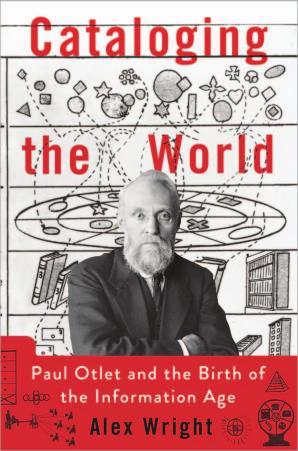
Cataloging the World: Paul Otlet and the Birth of the Information Age
by
Alex Wright
Published 6 Jun 2014
Licklider had earned his reputation as a thought leader in the still-young computer science world, having written a work called Man-Computer Symbiosis and publishing a series of memos for what he jokingly described as an “intergalactic network” of connected computers: perhaps ten or twelve in all, attached to a variety of disk drives, remote consoles, and teletype machines. Ultimately, that network came to consist of a small group of computing centers 248 T he I ntergalactic N etwor k located at several leading research centers, including MIT, CarnegieMellon, the University of Utah, the Rand Corporation, Stanford Research Institute (SRI), and the University of California campuses at Berkeley, Santa Barbara, and Los Angeles. While working with the SRI team, Licklider championed the work of a researcher named Douglas Engelbart, who spent much of the 1960s working on this early proto-hypertext tool known as the oN-Line System (which I will discuss further later).
…
Popular Internet lore has it that the original Advanced Research Projects Agency Network (ARPANET) designers were trying to build a network capable of withstanding nuclear war, but in fact they simply wanted to build a better network (the nuclear war fable stems from the conflation of the ARPANET project with an unrelated RAND Corporation study during this period).5 Researchers began stitching together a network of four major computing centers equipped with Interface Message Processors (IMPs), designed by a group of researchers working under contract at the technology consulting firm Bolt, Beranek and Newman. 251 C ATA L O G I N G T H E WO R L D In 1973, Vinton G.
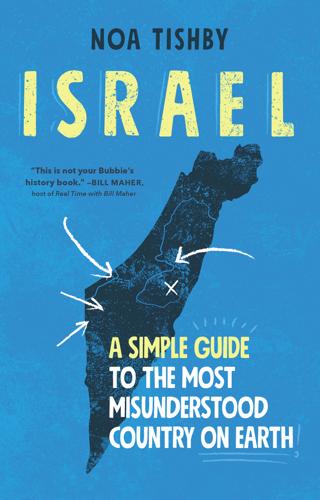
Israel: A Simple Guide to the Most Misunderstood Country on Earth
by
Noa Tishby
Published 5 Apr 2021
This is real-life damage BDS is inflicting on the people who are on the front lines, trying to coexist, provide for their families, and live a normal and peaceful life. It’s hard to put an accurate dollar amount on the cost of the boycott movement, however by all accounts it is high and painful. In 2015, RAND Corporation published research in which it created a projected calculation of the cost of various scenarios of the Palestinian-Israeli conflict. It estimated that the growth of this so-called nonviolent resistance (BDS doesn’t denounce violence, actually) will cost the Palestinian economy approximately $2 billion annually.8 In each and every scenario for a two-state solution, both nations’ GDP grows when the Palestinian economy grows.
…
“of Arabia,” 38–40, 47–49, 171 in British Army, 41 Faisal and, 41, 42, 43–44 Negev Desert mapped out by, 40, 41 League of Nations, 45, 104, 184, 265 Lebanon, 107, 112, 129, 134, 204, 206 Legum, Colin, 274 Lehi, 99, 109, 110–11, 303 Levy, Rami, 208–9 LGBTQ+ rights: in Iran, 165, 270 in Israel, 175, 262, 264 Sharia law and, 177–78, 183, 200 Liberia, 18, 275 Libya, 29, 40, 113, 130, 204 Likud Party, Israeli, 85, 155–56, 176, 233–34 Lindsay, James, 121 Madrid Conference (1991), 132 Mamluks, 33, 35, 39, 86 Mandatory Palestine, see British Mandate of Palestine Mapai Party, Israeli, 98, 108–9 Maraka, Aziz, 217–18 Marciano, Saadia, 233 Martin, Trayvon, 219 Marxism, Marxists, 52 Masada fortress, 31, 170 MASHAV (Agency for International Development Cooperation), 251 Masri, Bashar, 190–92 Mattathias, 30 Meir, Golda, 75, 136, 172, 233, 251, 273–74 Memorial Day, US, 144 Memorial Day for the Fallen Soldiers of Israel and Victims of Terrorism, 143 Merneptah Stele, 28 Middle East, 37–49, 45–46 Arab-Israeli conflict in, see Arab-Israeli conflict colonialism in, 39, 40, 42–43, 103 see also specific countries Mifleget Poalei Eretz Israel, see Mapai Party, Israeli Milchan, Arnon, 7 millennials, Israel as perceived by, 197, 264 Ministry of Defense, Israeli, 130 Mishor Adumim, 209 Mizrahi Jews, 232–34, 239 Mohammed bin Zayed Al Nahyan, Prince, 147 Mor, Sharon, 17 Mordechai, Yoav, 15 Morocco, 40, 113, 129, 130, 136, 229 Morris, Benny, 105, 111–12, 189–90 moshavot (agricultural villages), 73, 82, 88, 303 Mossad, 159 Mughrabi, Dalal, 174 Muhammad, Prophet, 32, 139, 178 Muslim Brotherhood, 107, 177–78, 214, 298 My Talks with Arab Leaders (Ben-Gurion), 106 Nablus, 188, 190 nakba, 114–15, 160, 171 Nakba (the Disaster), 113–16, 201 Nasser, Gamal Abdel, 128 Nawaz, Maajid, 278–79, 280 Nazis, 93–94, 171 final solution of, 67, 94, 104 Nebuchadnezzar, Babylonian king, 29 Negev desert, 27, 40, 41, 108, 210 Negroponte, John, 271 Nero, Emperor of Rome, 243–44 Netanyahu, Benjamin, 136, 138, 162 New Testament, 28, 295 Nicholas I, Tsar of Russia, 58 Nicholas II, Tsar of Russia, 51–52 Nigeria, 17, 273, 275, 290–91 Noah, Mordecai Manuel, 59–60 North Korea, 265, 268, 270 Obanjo (Ga-Dangme healer), 289 Yael Tishby’s gift from, 291 Ocasio-Cortez, Alexandria, 198, 216 Office of Industry and Trade, in the Yishuv, 83 Okampo, Smadar, 250 Old Testament, 19, 27, 28, 99, 139, 295 Omar, Ilhan, 198, 216 Operation Peace for Galilee, 131 Operation Pillar of Defense, 16 Oslo Accords (1993–98), 132–33, 156, 158, 181 collapse of, 156–60, 298 Ottoman Empire, Palestine province of, 33, 43, 45, 87, 98, 126, 184 Arab residents of, 105 first Zionists in, 88, 103 Jewish emigrants to, 103, 105 Pakistan, 280 Pale of Settlement, 57–58 Palestina EY, 33, 184 Palestine civil war (1947–48), 107 Palestine Exploration Fund, 40 Palestine Legal, 215 Palestine Liberation Organization (PLO), 115, 127, 132, 134, 171, 186 Hamas war on, 179, 181 Oslo Accords and, 132–33 terrorist attacks by, 131 see also Arafat, Yasser Palestine region, 34, 87, 295 Arab residents of, 95, 104, 170–72 as dry and infertile, 87–88, 90 first kibbutzim in, 88–89 Jewish residents of, 172 land purchased by Zionists in, 88 named Syria Palaestina by the Romans, 169, 295 Palestine statehood historically absent in, 34–35, 90, 170, 295 see also British Mandate of Palestine; Israel, land of; Ottoman Empire, Palestine province of Palestinian Authority, 132, 158, 181, 186, 187–88, 193, 208, 211, 286, 298 Palestinian identity, 169–72, 183, 193 Palestinian National Council conference, 171 Palestinian people, 34, 62, 115 in Gaza, 169, 177–84, 193, 200, 203, 285, 299 in Israel, see Israel, State of, Arab citizens of PLO as first official representative of, 132; see also Palestine Liberation Organization self-governance as goal of, 62 in West Bank, 160–62, 169, 184–89, 193, 203, 285, 297 Palestinian refugees, 110, 112, 116–21, 200, 201, 297 and right of return issue, 89, 137–38, 141, 200 Palestinian state, 117, 137, 153, 158, 203, 213, 303 Paris Peace Conference (1919–20), 43–45 Peres, Shimon, 132, 134, 147, 158, 190 Persian Empire, 29 Petach Tikva, 82, 88 Philistines (biblical), 170, 296 Poland, Jews persecuted in, 94 Poppaea Sabina, Empress of Rome, 243 Poriya Medical Center, 250 Princip, Gavrilo, 41 Protocols of the Elders of Zion, The, 58–59, 287 Pundik, Nahum (Herbert), 273, 274 Quran, 28, 139, 165–66, 178, 295 Rabin, Yitzhak, 132, 134, 156, 157, 158, 191 assassination of, 133, 157, 242 racism, 57 in Israel, 176, 284, 299 among Jews, 231–33 see also antisemitism Radical (Nawaz), 278 Raff, Gideon, 255, 256 Ramallah, 159, 187, 188, 191, 292 Ramat Aviv Gimmel (TV show), 5–6, 7, 8 RAND Corporation, 210 Rawabi, 187, 191–92, 259–60, 261 Raz, Elchanan, 142 Red Sea, 40, 42, 85 religion, 141, 248 freedom of, in Israel, 101, 166, 262, 264 as underpinning Middle East conflict, 139, 163–66 see also Christianity, Christians; Islam, Muslims; Judaism Remember My Name (documentary), 224 Revisionist Zionist movement, 85, 99, 161–62 Richard the Lionheart, 33 Rishon Le’Zion, 82, 88 Roman Empire, land of Israel ruled by, 24, 31, 35, 169, 242–48, 295, 296 Romanov dynasty, 51–52 Rome and Jerusalem (Hess), 59 Rosh Pina, 82 Rosh Tzurim settlement, 155 Russia, 51–52, 53, 54, 57–58, 270 Sabra identity, 234–35 Sadat, Anwar, 131–31, 140, 141, 147 Saladin (An-Nasir Salah ad-Din Yusuf), 33 Salim, Sultan, 33 Salman Bin Hamad bin Isa Al Khalifa, Prince, 147 Saud, House of, 45 Saudi Arabia, 33, 45, 103, 107, 129, 130, 134, 204, 270 Schanzer, Jonathan, 212, 214–15, 216, 221 Schler, Lynn, 289–90 School for Peace, 253 Schorr family, in move to British Mandate of Palestine, 93–94 Second Intifada (2000–2005), 134, 157, 186 Second Lebanon War (2006), 134–35 Second Zionist Congress, 73 Sela, Eyal, 250 Senor, Dan, 254, 256 Sephardi Shas party, Israeli, 237 settlements, 12, 149–66 in Gaza, 181 in West Bank, 154–55, 157, 160–61, 187, 297 Seward, Desmond, 247 Shahawan, Islam, 181 Shaked, Ayelet, 151, 161–62 Shalgi, Rami, 124, 131, 141, 143 Sharansky, Natan, 205 Sharet, Moshe, 106 Sharia law, 177–78, 193, 201, 206, 214, 270, 278, 298 Sharon, Ariel, 131, 134, 162, 181 Shira (author’s cousin), 76 Shoshan, Estie, 240 Sinai Peninsula, 42, 129–30, 131, 162, 285, 297, 298 Sinai War (1956), 128 Singer, Saul, 254, 256 Six Day War (1967), 128–29, 131, 150, 152, 154, 162, 178, 184, 297 Smooha, Sammy, 176 Soda Stream, 209–10 Solomon, King, 28, 29 South Africa, apartheid in, 173–74, 198, 284 Soviet Union, State of Israel recognized by, 103 Spring of Nations, 59 Start-Up Nation (Senor and Singer), 254–55 State Department, US, 118, 205 Storrs, Ronald, 47 Students for Justice in Palestine (SJP), 213 Sudan, 40, 103, 107, 129, 136 Suez Canal, 40–41, 95, 128 suicide bombers, 183, 186, 206 Supreme Court, Israeli, 173, 174, 187 Sykes-Picot Agreement, 43, 45–46, 103 Syria, 40, 44, 45, 204 chemical weapons used by, 270 civil war in, 249–50 in Israeli War of Independence, 103, 107 in Six Day War, 128–29, 297 in Yom Kippur War, 130, 297 Tekoa settlement, 164 Tel Aviv, 82, 109, 216, 218 author’s upbringing in, 3–4, 19, 88, 289 Iraqi Scud missiles fired at, 132 terrorist attacks in, 133, 137, 159, 180, 182 Tel Aviv Museum of Art, 4 Tel Aviv University, 173, 205–6 Temple Mount, 134 terrorism, terrorists, 115, 133, 134, 156, 159, 180, 182 by Jewish settlers, 156–57 suicide bombers, 183, 186, 206 see also Fatah; Hezbollah Thomas, Lowell, 46–47 Lawrence and, 47–48 Tiran Straits, 128 Tisch, Nachum, see Tishby, Nachum Tishby, Alexander, 83 Tishby, Ari, 287, 293 Tishby, Daniel, 3, 8, 18, 83 Tishby, Dina, 83, 142 Tishby, Iris, 83 Tishby, Nachum, 82–85, 89, 94, 189, 232 capitalist ideals of, 83–84, 85 as founder of the Ministry of Industry and Trade, 4, 83 Tishby, Noa, 3–4, 7–8, 18, 37–38, 48, 66–67, 124–25, 144–46, 223–24, 264 advocacy and activism of, 14–15, 17–18, 21 entertainment industry career of, 4–7, 143 first experience of anti-Semitism of, 67–68 Gulf War experience of, 132 IDF service of, 3, 4–5, 149–51, 223 in move to Los Angeles, 8–9, 224 as pro-Israel and pro-Palestinian, 17, 218 Sabra identity of, 235 summers spent in Degania by, 75–77, 123–24 Tel Aviv childhood of, 3–4, 19, 88, 289 as unofficial ambassador, 15–18 Tishby, Rafael, 83 Tishby, Saul, 83 Tishby, Tomoosh, 83 Tishby, Yael Yavor Artzi, 81, 124, 141–43, 273 in Ghana, 274–75 Obanjo’s gift to, 291 social justice activism of, 292 Tishby, Zila Wein, 83, 85 Titus, Emperor of Rome, Second Temple destroyed by, 31, 246–47, 248 Tlaib, Rashida, 198, 216 Toubi, Tawfik, 174 Tracy (author’s friend), 16 Transjordan, creation of, 33, 45, 184, 304 Tree of Life Synagogue massacre, 279 Triple Entente, 39 Truman, Harry, 102 Trumpeldor, Joseph, 53 Trump Peace Plan (2019), 135–36 Tunisia, 40, 113, 129 Twain, Mark, 87 Twitter, 13, 14 typhus, 72, 87 ultra-Orthodox Jews, see Charedim United Arab Emirates, Israeli peace deal with, 136, 146, 162, 210 United Israelite Monarchy, 27, 29 United Nations, 95, 181, 265, 267–68 Arabs granted a state by, see United Nations Partition Plan for Palestine Committee on the Elimination of Racial Discrimination (CERD) of, 121 Committee on the Status of Women of, 268–69 Eban’s address to, 115–16 High Commissioner for Refugees (UNHCR) of, 117 Human Rights Council of, 121, 269 Israeli delegation to, 4, 18, 265 Jews granted a state by, see United Nations Partition Plan for Palestine Resolution 242 (Land for Peace) of, 129, 139, 297 Resolution 302(IV) of, 116 United Nations General Assembly, 96, 270 resolutions against Israel of, 268, 277 United Nations Partition Plan for Palestine (Resolution 181), 12, 33, 65, 95–97, 99, 104, 108, 110, 116, 139, 201, 203, 266, 296 United Nations Relief and Works Agency for Palestine Refugees in the Near East (UNRWA), 116–21 refugee status considered heritable by, 117, 137, 200, 206, 297 United States, 46, 74, 132, 181, 215 Jewish population in, 279 Jewish refuge idea in, 59–60 State of Israel recognized by, 102 UNRWA and, 119 UN vetoes of, 271 Vance, Cyrus, 285 Venezuela, 270 Vespasian, Emperor of Rome, 31, 244–46 Visit to Eretz Israel, A (Ables), 84 Walker, Alice, 216 War of Attrition (1927–70), 129–30, 142 War of Independence, Israeli (1948–49), 103, 104, 107–8, 127–28, 153, 184, 296 Arabs displaced in, 137, 110–13, 200, 203, 296; see also Palestinian refugees border lines established after, 108, 128, 152, 184–85, 186–87, 296 Deir Yassin massacre in, 110–11 Waters, Roger, BDS and, 198, 199, 200, 216–18 Weiss, Bari, 277, 281 Weizmann, Chaim, 44, 85 West Bank, 132, 184–89, 284 border wall in, 157, 159, 186–87, 188 and First Intifada, 131, 186 Israeli occupation of, 131, 152, 185 Jewish population in, 160 Jewish settlements in, 154–55, 157, 160–61, 187, 188, 297 Jordanian disengaged from, 185–86 Palestinian population in, 160, 185, 193 post-War of Independence control of, 108 and Second Intifada, 134, 157, 186 in Six Day War, 129, 150, 152, 297 white supremacists, 279 Wilson, Woodrow, 46 With Lawrence in Arabia (Thomas documentary), 47–48 Women’s Farm, 78 Women’s March, 220 women’s rights: in Israel, 262 Sharia law and, 177, 183, 200 Woolley, Leonard, 39 Workers of Zion, 98 World Health Organization, 269–70 World War I, 22, 39, 40, 41, 171 World War II, 33, 104, 171 see also Holocaust World Zionist Organization, 97, 98 Yaeli (author’s friend), 67, 68, 175 Yakobson, Zohar, 229–30 Yamit settlement, 162 Yankelevich, Omer, 240 Yassin, Ahmed, 164–65, 178–80 Yavor, Hanan, 81, 189, 272–76 as Israel’s first ambassador to West African countries, 4, 17–18, 273–76, 287, 290–91 Meir on, 273–74 as member of Israeli delegation to UN, 4, 18, 265, 287 Yavor, Hilda Schorr, 93–94, 142, 273 Yavor, Noam, 273 Yazbak, Heba, 174, 175, 269 Yazidi women, 252–53, 261 Yehia, Samer Haj, 175 Yemen, 40, 113, 204, 265 Yishuv (pre-state Zionist groups), 83, 84, 88, 93, 94, 98–99, 104, 105, 106, 111, 126, 189 Yizkor (Ben-Gurion and Ben Zvi), 98 Yom Kippur War (1973), 130, 140, 297 Yosef, Ovadia, 239 Young Worker Party, 98 Zealots, 243, 245 Zichron Ya’akov, 82 Zimmerman, George, 219 Zion, as second name for Jerusalem, 60 Zionist movement, Zionists, 20, 57–69, 267 African and black communities and, 220, 266–67 Herzl and, 60–66, 98, 265 origin of, 60, 296 see also anti-Zionism Ziv Medical Center, 250 Zoabi, Haneen, 174, 175, 269 Zureiq, Constantin, 114, 171 Free Press An Imprint of Simon & Schuster, Inc. 1230 Avenue of the Americas New York, NY 10020 www.SimonandSchuster.com Copyright © 2021 by Noa Tishby All rights reserved, including the right to reproduce this book or portions thereof in any form whatsoever.
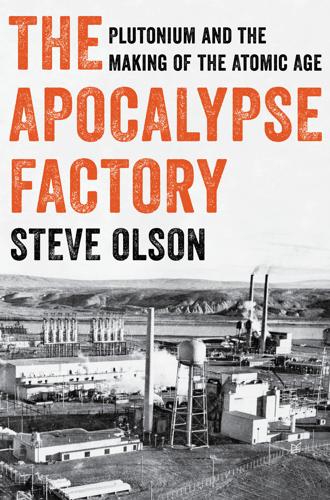
The Apocalypse Factory: Plutonium and the Making of the Atomic Age
by
Steve Olson
Published 28 Jul 2020
Groves and his political allies succeeded in weakening provisions of the McMahon bill that would have reduced the military’s influence over nuclear matters. But the effort seemed to exhaust him. In 1948, he retired from the army, moved to Darien, Connecticut, and went to work for the Remington Rand Corporation. He gave lots of speeches, played lots of golf, and finally went on vacations with his long-suffering wife. He also got Remington Rand interested in a new technology that had hastened several key aspects of the Manhattan Project: electronic computing. ON AUGUST 1, 1946, President Truman signed the McMahon bill, officially known as the Atomic Energy Act.
…
Robert, 5, 12–14, 13, 112, 115, 116, 126, 133–35, 138, 146, 149–52, 196, 209, 219, 264 Oregon, 268 Othello, Wash., 3, 4 Our Friend the Atom, 225 Pacific Northwest Laboratory, 236, 241, 269 Pacific theater, 193, 195–96, 213 Paducah, Ky., 216 Pantex Plant, 216 Pasco, Wash., 67, 71, 74, 75, 107, 108, 204, 217–19, 242, 257 Pasco Herald, 68 Pasco Kiwanis Club, 214 Pearl Harbor attack, 42, 45, 67, 130, 193 Pehrson, Gustav, 108–9 Pentagon, 82, 126, 128, 139, 141 periodic table, 19, 226–28, 230 Perle, Richard, 239 peroxydisulfate, 31 pesticides, 251 Petcher, Harry, 77 Petcher, Maxine, 77–78 Physical Review, 16 pile, 27; See also Chicago Pile 1 (reactor) pipefitters, 76–77 platinum, 33 plutonium and abolition of nuclear weapons, 276 code word for, 106 from conventional nuclear reactors, 245 development of means for producing, 44–55 discovery of, 30–36, 41 extraction of, 100, 102–3, 122–23, 215 first shipment of, from Hanford to Los Alamos, 111–12 fissioning of, 112–14 in hydrogen bombs, 212 in Nagasaki atomic bomb, 116 naming of, 34 need to speed up production of, in 1945, 122–23 overproduction of, in postwar period, 233–34 pollution resulting from production of, 104–6, 122–23, 214, 248 as potential component of atomic bombs, 32–35, 38–40 purity of, 54–55, 103 quantity produced at Hanford, 116–17 safety concerns with, 107 Seaborg as champion of, 231–33 Soviet efforts to produce, 211 for Trinity test, 137 waste produced from creation of, 104–6, 122–23, 214, 248, 249, 249, 255–56, 267–69 plutonium-239, 35, 54, 103, 112–14, 226, 231–32, 276 plutonium-240, 114–15, 226 plutonium-241, 226 “plutonium economy,” 232 pollution, 104–6, 122–23, 214, 248 Porter, Bill, 71 Portland, Ore., 68, 79, 111 Portuguese traders, in Japan, 143 Potsdam Conference, 142–44, 149 Pritikin, Trisha, 261 process tubes, 91–93, 98–100 Prosser, Wash., 64 Prosser Record-Bulletin, 68 protons, 11, 14–15 PUREX Plant, 215, 240, 242, 265 Purnell, William, 141, 156 Quadrangle Club, 43–44 Queen Anne High School, 79, 80 “Queen Marys,” 102–3, 104, 106 Quiz Kids, The (radio program), 227–28 Rabinowitch, Eugene, 130, 131, 199 racism, in media’s treatment of Japanese, 130 radiation, 14 Cherenkov, 101 code word for, 106 everyday exposure to, 259 health concerns with, 259–65 safety issues with, 50–53, 59, 90, 106–7, 236 Radiation Effects Research Foundation, 187 Radiation Laboratory (Rad Lab, UC Berkeley), 14, 16, 17–20, 28 radiation monitors, 106 radiation sickness, 179–81, 183, 184 radioactive decay, 20 radioactive isotopes (radioisotopes), 15, 16, 21, 30–31 radioactivity artificial, 15 in wastewater, 105–6 radium, 14 Rattlesnake Mountain, 1, 4, 6, 64 Ray, Dixy Lee, 250–51 Raytheon, 36 Reagan, Ronald, 239, 240, 245–47 redox, 215 REDOX Plant, 215 Reed College, 64 Reid, Dwight Logan, 10 Remington Rand Corporation, 207 reprocessing, 103, 104, 211, 232, 276 Reykjavik summit, 246–47 Rhodes, Richard, 4–5, 258 Richland, Wash., 1, 2, 4, 272 austere conditions in, 85 and Chernobyl disaster, 245 everyday life in, 217–20, 234–37, 247–48 eviction of residents from, 64 Groves in, 122 illnesses in residents of, 261, 265 in immediate postwar period, 204–5, 213 Kennedy’s visit to, 221–23, 222 Lewis and Clark near site of present-day, 69 peace movement in, 241–42 as permanent town to accommodate workers, 68 as planned community, 107–10 reaction in, to atomic bombing of Japan, 191 and reduced need for plutonium by 1960s, 233–34 Seaborg’s vision of Nuplex in, 233, 238 25th-anniversary celebration in, 232–34 Richland Light Opera Company, 217 Richland Players, 217 Richland Villager, The, 191–93, 205 Roosevelt, Eleanor, 123 Roosevelt, Franklin Delano, 36, 40, 46–47, 84, 110, 120, 123, 125, 127, 129, 144 Russia, nuclear arsenal of, 176, 275, 277 ruthenium, 104 Rutherford, Ernest, 22 saboteurs, fears of, 149 Saddle Mountains, 1, 4, 66 safety issues, with radiation, 50–53, 59, 106–7, 230–31, 236, 259–65 “Safety Sam,” 106 St.
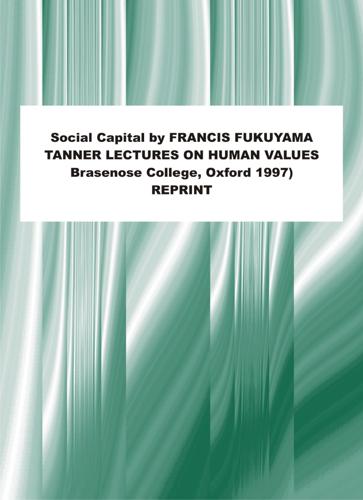
Social Capital and Civil Society
by
Francis Fukuyama
Published 1 Mar 2000
Social Capital FRANCIS FUKUYAMA THE TANNER LECTURES ON HUMAN VALUES Delivered at Brasenose College, Oxford May 12, 14, and 15, 1997 FRANCIS FUKUYAMA is Omer L. and Nancy Hirst Professor of Public Policy at the Institute of Public Policy at George Mason University and director of the Institute’s International Transactions Program. Educated at Cornell, he received his Ph.D. from Harvard University. He has been a member of the Political Science Department of the RAND Corporation, where he is currently a consultant, as well as a member of the Policy Planning Staff of the U.S. Department of State. He is a member of the American Association for the Advancement of Slavic Studies and the Council on Foreign Relations; the editor, with Andrez Korbonski, of T h e Soviet Union and the Third W o r l d : T h e Last Three Decades (1987) ; and book review editor at Foreign A f a i r s .
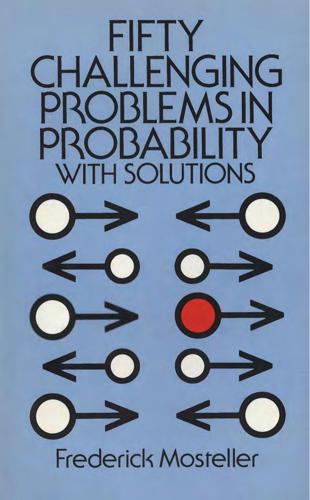
Fifty Challenging Problems in Probability With Solutions
by
Frederick Mosteller
Published 15 May 1965
(b) A friend of yours has available many black and many white balls, and he puts black and white balls into the urn to suit himself. You choose "black" or "white." A ball is drawn randomly from this urn. Write down the maximum amount you are willing to pay to play this game. The game will be played just once. Problems without Structure (11 and 12) Olaf Helmer and John Williams of The RAND Corporation have called my attention to a class of problems that they call "problems without structure," which nevertheless seem to have probabilistic features, though not in the usual sense. 11. Silent Cooperation Two strangers are separately asked to choose one of the positive whole numbers and advised that if they both choose the same number, they both get a prize.
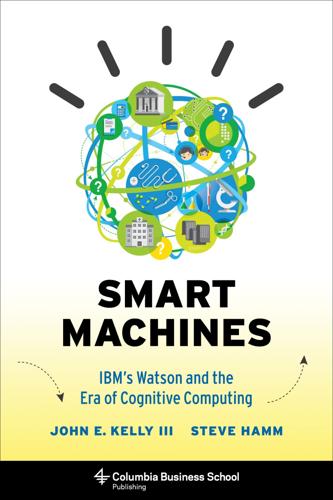
Smart Machines: IBM's Watson and the Era of Cognitive Computing (Columbia Business School Publishing)
by
John E. Kelly Iii
Published 23 Sep 2013
Navy, the navy hired him as a consultant and asked him to use mathematical techniques to help design the optimal naval taskforce—how many aircraft carriers, battleships, and so on. He invented a new method, called integer programming, to help solve the problem. Initially, he did this work with pencil and paper, then, with a mechanical calculating machine. Finally, he was invited by the Rand Corporation, a think tank in California, to use their large-scale computer, one of only a few that existed at the time.6 Ralph created a program that could compute an optimal design given a specific set of choices. But today we’re faced with immensely complicated problems that contain so many possibilities that it would take a long time, even with a powerful computer, to explore all of them using Ralph’s deterministic techniques.
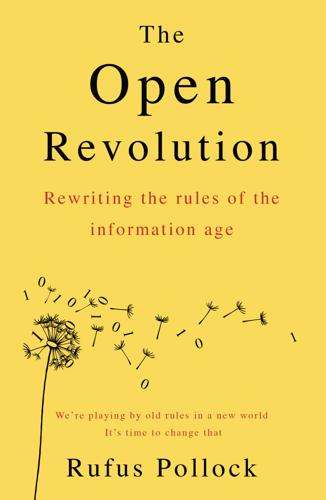
The Open Revolution: New Rules for a New World
by
Rufus Pollock
Published 29 May 2018
Central to his vision was the idea that if computers were truly to enhance human thinking, ways had to be found to communicate with them and between them. The earliest glimmerings of the possibilities of networked computers had been identified. Licklider stepped down after two years at ARPA, but his ideas gathered momentum thanks not only to his successor, Bob Taylor, but to Paul Baran’s packet-switching ideas at Rand Corporation, and to many others. In August 1968, the tender went out to build the first prototype implementation – to be called the Arpanet – which a few years later became the seedling of the internet we know today. The contract to build it went to a small consulting firm with a reputation for brilliance and informality, Bolt, Beranek & Newman (BBN), founded by Licklider’s old Harvard colleague, Leo Beranek.
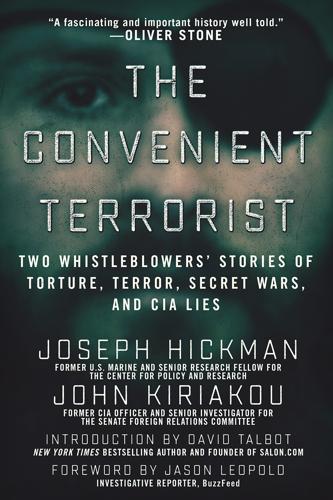
Convenient Terrorist : Two Whistleblowers' Stories of Torture, Terror, Secret Wars, and CIA Lies (9781510711648)
by
Kiriakou, John; Hickman, Joseph
Published 13 Jun 2017
It is further likely that the CIA would have downplayed his involvement—or ignored it entirely—because connecting these events to him would also connect the CIA back to prior operations by/with Abu Zubaydah that they hoped the world would soon forget. Chapter Seven Will The Real Abu Zubaydah Please Stand Up? ________________ After the failed Millennium Attacks, Abu Zubaydah went on the run. The FBI and the CIA were both looking for him, and the RAND Corporation also began investigating Abu Zubaydah. From the information they had on hand, RAND created a biography of Abu Zubaydah which was then used by CIA and FBI operatives in the field. The problem was that most of RAND’s information was completely wrong. For example, RAND (and the CIA and FBI) believed of Abu Zubaydah that he: • Had been born in Saudi Arabia, but grew up in the Gaza Strip of Palestine • Had joined Hamas as a youngster • Had been recruited in the 1980s by Egyptian Islamic Jihad leader Al-Zawahiri (a commander of Al Qaeda) • Had fought directly against the Soviets • Had become an Al Qaeda’s operational chief in the 1990s • Was married to a woman After extensively interviewing Abu Zubaydah’s family and studying his personal diaries, we now know that every point from the RAND file noted above is completely wrong.

The Docks
by
Bill Sharpsteen
Published 5 Jan 2011
This reinforces the image I have of the Coast Guard being centered more on rescuing hapless boaters than on their primary mission here, which is ╯ ╯ 232â•… /â•… Security to repel any nefarious types hell-bent on blowing up parts of the port, among other possible evil deeds. Among those deeds, a deliberate explosion seems to be the most common scenario feared by the imaginative people who work in disaster speculation, or what might be called preparing for all possibilities. A 2006 Rand Corporation study describes a lamentably viable means of smuggling weapons into the country via a container—and then turns up the heat, hypothesizing a situation in which “terrorists conceal a 10-Â�kiloton bomb in a shipping container and ship it to the Port of Long Beach. Unloaded onto a pier, it explodes shortly thereafter.”
…
See also Clean Truck Program Port of Los Angeles Community Advisory Committee, 70, 72, 87, 90 Port of San Francisco, 4 port pilots, pay of, 6 port police, marine, 239 Port Revel, 11 Ports America terminal, 221 Potter, Fredrick, 177 Prince Rupert, Canada, 261 Privette, Bill, 268, 275 Promenade waterfront plan, 85, 91 “prospecting,” 95 Public Policy Institute of California, 235 Punta Colonet, Mexico, 260 Pusan, South Korea, 9 Queens Gate, 26 Quinn, William J., 110, 114 Rajkovacz, Joe, 168, 171, 181 Rand Corporation, 232 Random Lengths, 84, 206 Red Squad, 105 Riggers and Stevedores Union, 99 Rill, Doug, 269, 272 Rios, Louis, 213 Rivera, Carlos, 45 Robertson, J.â•›R ., 122 Rogers, Captain Ron, 5, 10, 13, 15 Ryan, Joseph P., 108, 109 SAFE boats, 240 Salcido, Ray, 106 Samra, Balwinder, 254, 262; background, 255 San Francisco Daily News, 112 San Pedro and Peninsula Homeowner’s Coalition, 62, 68, 87 San Pedro Coordinated Plan Subcommittee, 64 San Pedro Magazine, 63 “Saving Lives” initiative, 82 Schmidt, Henry, 122 Schneier, Bruce, 238 Schomaker, John, 108 Sea-Land Service, 36, 130 “Seventh Heaven,” 105 shape-up, 102 Shibley, George, 213 ship chandler, 47 “shirt time,” 192 shoreside electrical power, 34, 50, 69, 81 Sierra Club, 174, 177 slings, 96 Smith Act, 121 Snyder, Christina, 179 “Song for Bridges” (Almanac Singers), 121 South Coast Air Quality Management District, 71 Southern Counties Express, 170, 172 Southern Pacific Railroad, 3 Spanish missionaries, 3 Sperry, Howard, 114 Spinosa, Jim, 82, 125, 136; on Dave Arian, 199; on TWIC cards, 249; 2002 contract talks, 138; on union busting, 201 SSA Marine, 223 S.S.
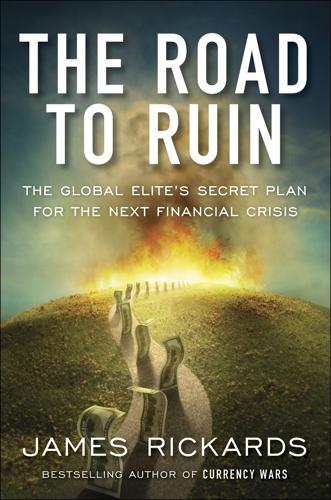
The Road to Ruin: The Global Elites' Secret Plan for the Next Financial Crisis
by
James Rickards
Published 15 Nov 2016
These advances in technology and destructive force were not ends in themselves. They were guided by new nuclear war fighting doctrines developed first at RAND Corporation, and later expanded at Harvard University and other elite schools. The doctrine, called Mutual Assured Destruction, or MAD, was the product of game theory in which participants based their actions on expected reactions of other participants who, in turn, acted based on expected reactions of the initial actor, and so on recursively until a behavioral equilibrium was reached. What RAND Corporation discovered is that winning a nuclear arms race was destabilizing and likely to result in nuclear war.
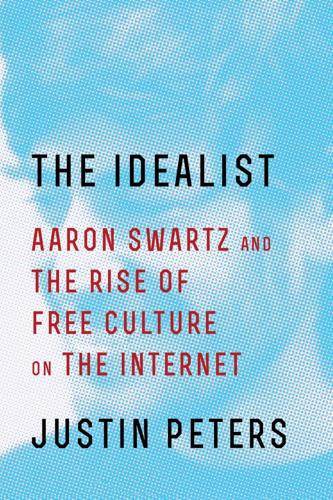
The Idealist: Aaron Swartz and the Rise of Free Culture on the Internet
by
Justin Peters
Published 11 Feb 2013
The Independence Foundation, a group that itself drew funding from the CIA, sponsored the Woods Hole conference. The project was headquartered at MIT, which had already effectively become a research arm of the federal government. The project’s top men had spent years working at government-sponsored research agencies, such as Lincoln Lab, the Advanced Research Projects Agency (ARPA), and the RAND Corporation. An implicit objective was to employ the technology that Intrex developed to help the United States thwart the Soviet menace; from this perspective, libraries were important insofar as they could help scientists build new and better weapons more quickly. The keynote speaker who launched the Intrex conference that August was, appropriately, the godfather of what today we call Big Science.
…
Ashcroft, 122–23 and free culture movement, 3–4 as penalty vs. opportunity, 115 and public access, 185–87 purpose of, 112 and social value, 4, 135 Public Knowledge, 230 public.resource.org, 185 Publishers’ Weekly, 53, 56, 58, 59 publishing: of academic research, 175–77, 178 as “best-seller system,” 65 commercial viability of, 13, 25–26, 39, 121, 175 “courtesy of the trade,” 54–56, 65 electronic, 120 and invention of movable type, 18 of non-US books, 39, 41, 46–47 percentage of authors’ royalties to, 41 protectionist laws, 120 serials pricing crisis in, 175 of unauthorized editions, 42–43, 53, 56 white-shoe East Coast, 54–55 Putnam, George Haven, 53–55, 56, 57 and free public libraries, 70 and international copyright, 53, 59, 60, 64 Memories of a Publisher, 54 Putnam, George Palmer, 45 Putnam, Herbert: as Boston head librarian, 67, 70 and copyright law revisions, 72–73, 75–76 death of, 78 as librarian of Congress, 70–71, 77–78 on public libraries, 80, 100 Putnam, John, 71 Putnam’s, 52 Quine, Willard Van Orman, 217 Radway, Janice A., 69 Ramsay, David, 25, 34 Rand, Ayn, Atlas Shrugged, 107 RAND Corporation, 82 Raw Nerve, 251–53, 255 ask others for help, 252–53, 257 believe you can change, 251–52 confront reality, 254 lean into the pain, 252, 257 on systemic failure, 265 take a step back, 252 reading: cheap books, 52, 55–56, 58, 59, 61 dime novels, 52, 55 e-books, 99, 107, 117 escapism in, 52 literacy rates, 25, 26–27, 39, 44, 48 penny press, 48 value of, 48–49 recorded sound, 69, 71, 74, 77 Recording Industry Association of America (RIAA), 134, 152–53 Reddit, 156–61, 164, 223 development of, 149–51 and Internet Censorship Day, 240, 241 sale of, 2, 156, 158, 170 Swartz’s departure from, 159–61, 171, 248 Reed Elsevier, 175, 178–79, 180, 239 Reformation, 99 Rehnquist, William, 138 Rein, Lisa, 123, 130, 139, 141, 269 Remember Aaron Swartz, 261 Rensselaer, Stephen van, 35 resource.org, 187 Reville, Nicholas, 152 robotic harvesting, 198–99 Romuald (monk), 169 Roosevelt, Franklin D., 78, 82, 208 Roosevelt, Theodore, 70, 75 Rousseau, Jean-Jacques, 151 Rules, The, breakers of, 14 Rush, Benjamin, 33 Russell, Bertrand, 254 Ryshke, Robert, 127 Sadler, Bess, 181 Santana, Carlos, 111 Scalia, Antonin, 121 Scheiber, Noam, 201 Schoen, Seth, 8, 138–39, 144, 148 Schonfeld, Roger, JSTOR, 195, 196 Schoolyard Subversion (blog), 126 Schulman, John, 85 Schultze, Stephen, 189 Schwartz, John, 191 Schweber, S.
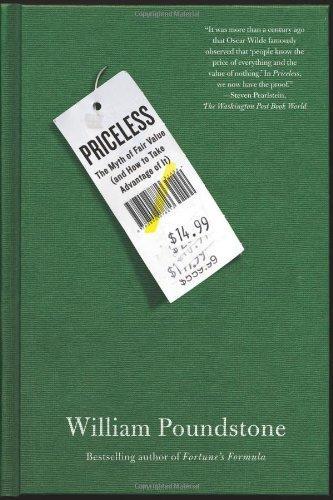
Priceless: The Myth of Fair Value (And How to Take Advantage of It)
by
William Poundstone
Published 1 Jan 2010
A 25-cent bet on a Las Vegas roulette table could be a factor in the greatest decision ever to confront mankind. That would be the unimaginably catastrophic decision to plunge the world into nuclear war. Some place, at some time, as long as a human being is able to poise his finger over a nuclear button, that is a possibility. The journalist doubtless got that cold-war spin from Edwards, a RAND Corporation consultant and advisor to governmental agencies. Edwards talked up the Las Vegas game as “one of the few decision-making experiments ever conducted.” Never was it mentioned in the article that this particular game was devised not by Edwards but by two of his former students. Sarah Lichtenstein had heard that Edwards had an “angel.”
…
G., 53 Psychological Bulletin, 54, 55, 86 psychophysics, 8–9, 26–27, 29–36, 39– 40, 53, 146; definition of, 31; experiments in, 26–27, 35, 40; of jury awards, 276–79; luxury trade and, 155; magnitude scales of, 194; of money, 42–45 origins of, 29–32; of pain, 136; perceptual illusion demonstrations of, 36–37, 84–85; power curve rule in, 32–33; prospect theory and, 98; of rebates, 178 Psychophysics (Stevens), 34 Puffs tissues, 5 Puto, Christopher, 151–53, 156 Quarterly Journal of Economics, The, 138 Quattrone, George, 12–13 Quilted Northern toilet paper, 5 racial discrimination, 245, 283; in car sales, 241–44 Rand, Ayn, 108 RAND Corporation, 71 Rapp, Gregg, 162–64 rationality: bounded, 52; cult of, 77–78 Ravikovich, Dahlia, 82 Reagan, Ronald, 56, 256 real estate market, 196–206, 211; alcohol and deal-making in, 219; anchoring in, 196–201, 203–205; bargaining in, 115; bubbles in, 101, 264; charm prices in, 186; framing of gains and losses in, 107; incentives in, 176; money illusion in, 229 rebates, 176–78 reference points, 98, 101, 132 reference pricing, 204–206 Remington Rand, Inc., 224 Reserve Bank of Zimbabwe, 223 restaurants, 143–45, 159–64; charm pricing by, 186, 190 Revionics, Inc., 6, 148 RFID tags, 150 Richelieu, Duc de, 219 Riding, Alan, 266–67 Ritov, Ilana, 209–10 Ritty, James, 186 Riviera Casino (Las Vegas), 49 Robb Report, 156 Roberts, Gilbert, 283 Robertson, Leslie, 27 Rockefeller, J.
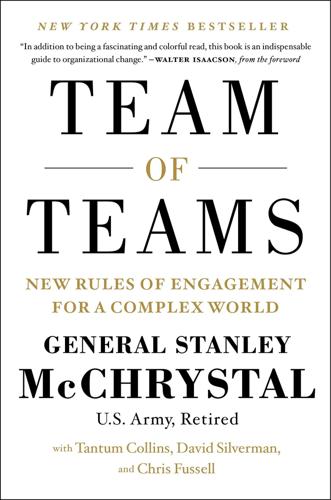
Team of Teams: New Rules of Engagement for a Complex World
by
General Stanley McChrystal
,
Tantum Collins
,
David Silverman
and
Chris Fussell
Published 11 May 2015
Zolli and Healy, Resilience, 5. “Efficiency is doing” . . . See Peter F. Drucker, The Effective Executive: The Definitive Guide to Getting the Right Things Done, rev. ed. (New York: HarperCollins, 2002). “It Takes a Network” . . . J. Arquilla and D.Ronfeldt, The Advent of Netwar (Santa Monica, Calif.: RAND Corporation Publishing, 1996), 82. PART II FROM MANY, ONE fifty greatest players . . . National Basketball Association, “The NBA’s 50 Greatest Players,” http://www.nba.com/history/50greatest.html. “It was like” . . . Quote from Patrick Ewing in GQ piece reflecting on the “Dream Team” victory twenty years later, including interviews with the players.
…
Schroeder, Matthew Calbraith Perry, 257, note 44, and Yosaburo¯ Takekoshi, The Economic Aspects of the History of the Civilization of Japan, volume 3 (London: Taylor & Francis, 2004), 285–86. “Perry, halfway around the globe” . . . Carl Builder, Masks of War: American Military Styles in Strategy and Analysis (Santa Monica, Calif.: RAND Corporation, 1989), 18–19. plant gardens . . . William F. Strobridge, Regulars in the Redwoods: The U.S. Army in Northern California 1852–1861 (Glendale, Calif.: Arthur H. Clark, 1994), 31. hold junior officers accountable . . . Strobridge, Regulars in the Redwoods, chapter 1. “HEADQUARTERS ARMIES OF THE U.S.” . . .
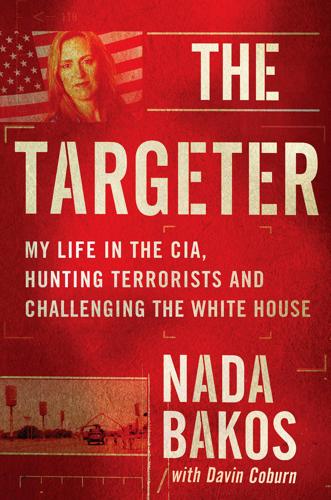
The Targeter: My Life in the CIA, Hunting Terrorists and Challenging the White House
by
Nada Bakos
Published 3 Jun 2019
I was gradually becoming disconnected from my family and friends; my recurring anxiety and panic attacks rendered me unable to function normally. I began speaking to a therapist and was diagnosed with post-traumatic stress disorder. I’ve learned since then that many people who were at the CIA share a similar struggle. A landmark study conducted by the RAND Corporation in 2008 found that nearly one in five Iraq War veterans suffers from PTSD. In 2012, the Department of Veterans Affairs quietly released a more damning figure: nearly 30 percent of the 834,463 Iraq and Afghanistan veterans it had treated at VA hospitals since 2001 have been diagnosed with PTSD.
…
“how forthcoming he was”: Select Committee on Intelligence, “Committee Study.” 9. a panel discussion at the Council on Foreign Relations: “CFR and HBO Screening of the New HBO Documentary Manhunt,” Council on Foreign Relations, April 16, 2013, http://www.cfr.org/terrorist-leaders/cfr-hbo-screening-new-hbo-documentary-manhunt/p35447. 10. a story I’d read on Rudaw: Wladimir van Wilgenburg, “Kurds of Iraq Played Major Role in Finding bin Laden,” Rudaw, September 5, 2011, http://www.rudaw.net/english/kurds/3665.html. 11. divulged more useful information at a black site: Eyder Peralta, “‘Torture Report’: Did Harsh Interrogations Help Find Osama Bin Laden?” National Public Radio, December 9, 2014. 12. nearly one in five Iraq veterans suffers from PTSD: Terri Tanielian and Lisa H. Jaycox, eds., “Invisible Wounds of War: Psychological and Cognitive Injuries, Their Consequences, and Services to Assist Recovery,” RAND Corporation, April 17, 2008. 13. have been diagnosed with PTSD: Jamie Reno, “Nearly 30% of Vets Treated by V.A. Have PTSD,” Daily Beast, October 21, 2012. 14. only 35 percent: Kristina Wong, “Study: Most Troops Don’t Seek Military Help with PTSD,” Washington Times, May 8, 2012. 15. Abu Ayyub al-Masri: Eben Kaplan, “Abu Hamza al-Muhajir, Zarqawi’s Mysterious Successor (aka Abu Ayub al-Masri),” Council on Foreign Relations, June 13, 2006, http://www.cfr.org/iraq/abu-hamza-al-muhajir-zarqawis-mysterious-successor-aka-abu-ayub-al-masri/p10894. 16. an Egyptian cohort of Zarqawi’s: Ibid. 17. trained in al Qaida terrorist camps in Afghanistan: Ibid. 18. a bit of bomb-making experience: Dexter Filkins, “U.S.
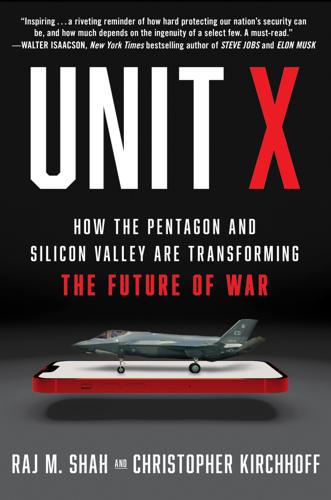
Unit X: How the Pentagon and Silicon Valley Are Transforming the Future of War
by
Raj M. Shah
and
Christopher Kirchhoff
Published 8 Jul 2024
The group was briefed by Christopher Kirchhoff and enthusiastically embraced the idea to create DIUx. It also chartered what became the Maven Project and the Special Mission Missile Defeat Task Force, which gave rise to DIUx’s involvement with Capella. For an early history of this important initiative, see Gian Gentile et al., “A History of the Third Offset, 2014–2018” (RAND Corporation, 2021), https://www.rand.org/pubs/research_reports/RRA454-1.html. wrote in his memoir: Ash Carter, Inside the Five-Sided Box: Lessons from a Lifetime of Leadership in the Pentagon (Penguin Random House, 2020), p. 327. director of strategic planning: For a general primer on strategic planning and future scenario development, see Micah Zenko, Red Team: How to Succeed by Thinking Like the Enemy (Basic Books, 2015), and Richard Danzig, “Driving in the Dark: Ten Propositions About Prediction and National Security,” Center for New American Studies, October 26, 2011, https://www.cnas.org/publications/reports/driving-in-the-dark-ten-propositions-about-prediction-and-national-security%C2%A0.
…
“They were using fourteen apps”: Jeffrey Harrigian, interview with authors, March 6, 2023. twenty-six thousand strike aircraft sorties: “Combined Joint Task Force Operation Inherent Resolve,” U.S. Department of Defense, https://dod.defense.gov/OIR/; Becca Wasser et al., “The Role of U.S. Airpower in Defeating ISIS,” RAND Corporation, 2021, https://www.rand.org/pubs/research_briefs/RBA388-1.html. 212,000 pounds of fuel: See “KC-46A Pegasus: The World’s Most Advanced Multi-Mission Aerial Refueling Aircraft,” Boeing, https://www.boeing.com/defense/kc-46a-pegasus-tanker/. “I’m on it,” Enrique replied: See Raj M.Shah and Enrique Oti, “A Story of Change,” presentation, Code for America Annual Conference, May 2018, https://www.youtube.com/watch?
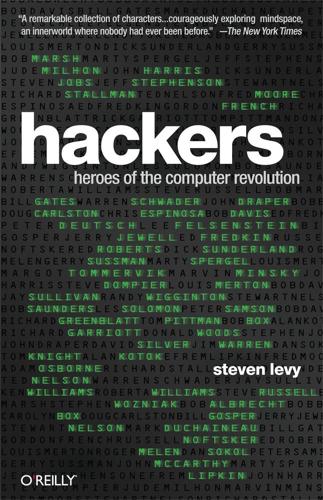
Hackers: Heroes of the Computer Revolution - 25th Anniversary Edition
by
Steven Levy
Published 18 May 2010
• • • • • • • • Spacewar, as it turned out, was the lasting legacy of the pioneers of MIT hacking. In the next couple of years many of the TX-0 and PDP-1 joyriders departed the Institute. Saunders would take a job in industry at Santa Monica (where he would later write a Spacewar for the PDP-7 he used at work). Bob Wagner went off to the Rand Corporation. Peter Deutsch went to Berkeley, to begin his freshman year of college. Kotok took a part-time job that developed into an important designing position at DEC (though he managed to hang around TMRC and the PDP-1 for years afterward). In a development that was to have considerable impact on spreading MIT-style hackerism outside of Cambridge, John McCarthy left the Institute to begin a new artificial intelligence lab on the West Coast, at Stanford University.
…
He got the program actually playing chess in one week. The program was debugged, given features, and generally juiced up over the next few months. (Greenblatt was eventually offered an MIT degree if he would write a thesis about his chess program; he never got around to it.) Circulating around MIT around 1965 was a notorious Rand Corporation memo called "Alchemy and Artificial Intelligence.” Its author, an academic named Herbert Dreyfus, lambasted the field and its practitioners. To hackers, his criticism was particularly noxious, since the computer was their implicit model of behavior, at least in their theories of information, fairness, and action.
…
Wizards social aspects, The Wizard and the Princess Programming languages, The Wizard and the Princess programming languages, Afterword: 2010 Project MAC, Spacewar, Greenblatt and Gosper, Greenblatt and Gosper, Winners and Losers, Afterword: 2010 Project One, Revolt in 2100 Propaganda of the Deed, The Homebrew Computer Club Q Quinn, Mike, Every Man a God R Radio Amateur’s Handbook, Revolt in 2100 Radio Electronics, Every Man a God, Every Man a God Radio Frequency (RP) Modulators, Woz Radio Shack, Secrets Rand Corporation, Greenblatt and Gosper Raster Blaster game, Summer Camp Red Death, Greenblatt and Gosper Registers, Greenblatt and Gosper Reiling, Bob, Woz Research Laboratory of Electronics (RLE), The Tech Model Railroad Club, Spacewar Resource One, Revolt in 2100 Revolt in 2100 (Heinlein), Revolt in 2100, Revolt in 2100, Revolt in 2100 Rich and Rich Synergistic Enterprises, Wizard vs.
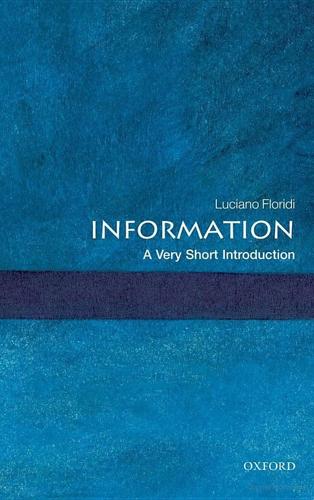
Information: A Very Short Introduction
by
Luciano Floridi
Published 25 Feb 2010
Another way of defining complete information is in terms of common knowledge: each player knows that each player knows that... each player knows all other players, their strategies, and the corresponding payoffs for each player. Typical examples include the rock-paperscissors game and the prisoner's dilemma. There is no need to describe the former but the latter is sufficiently complex to deserve some explanation. We owe the logical structure of the prisoner's dilemma to the Cold War. In 1950, RAND Corporation (Research ANd Development, a non-profit think tank initially formed to provide research and analysis to the US armed forces) was interested in game theory because of its possible applications to global nuclear strategy. Merrill Flood (born 1912) and Melvin Dresher (19111992) were both working at RAND and they devised a gametheoretic model of cooperation and conflict, which later Albert Tucker (1905-1995) reshaped and christened as the `prisoner's dilemma'.
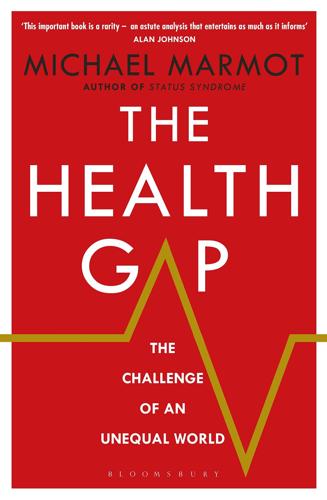
The Health Gap: The Challenge of an Unequal World
by
Michael Marmot
Published 9 Sep 2015
Their methodology says that the societal value of life is greater: (i) the higher the lifetime income (ii) the less illness people have (iii) the closer in age people are to the onset of illness As I read this: the lives of older, richer, healthier people are more valuable than the lives of poorer, younger, sicker people. If I believe that, what am I doing caring about poor, sick, Indian children? Their lives are worthless. And if you believe it, do not waste a moment more on this book. I was invited to a meeting at the RAND Corporation in Santa Monica California with a group of economists to discuss valuation of life. The starting text was the Murphy–Topel paper. I went next. I began by saying that I had had lunch with an Indian historian recently and I told him that the news from Chicago was that he did not value his life – he was willing to pay far fewer dollars for another year of life than an American.
…
W., here Lewis, Michael, here Lexington, Kentucky, here libertarians, here, here life expectancy, here, here, here, here among Australian aboriginals, here disability-free, here, here and education, here, here, here, here in former communist states, here and mental health, here and national income, here US compared with Cuba, here Lithuania, here, here, here Liverpool, here, here, here ‘living wage’, here loans, low-interest, here lobbying, here Los Angeles, here ‘lump of labour’ hypothesis, here Lundberg, Ole, here lung cancer, here, here lung disease, here, here, here, here luxury travel, here Macao, here, here McDonald’s, here McMunn, Anne, here Macoumbi, Pascoual, here Madrid, indignados protests, here, here Maimonides, here malaria, here, here, here, here, here Malawi, here male adult mortality, here, here Mali, here, here Malmö, here, here Malta, here Manchester, here, here, here Maoris, here, here, here, here Marmot Review, see Fair Society, Healthy Lives marriage, here Marx, Karl, here maternal mortality, here, here, here maternity leave, paid, here Matsumoto, Scott, here Meaney, Michael, here Medicaid, here Mediterranean diet, here Mengele, Joseph, here mental health, here, here, here, here, here, here, here and access to green space, here and adverse childhood experience, here and austerity, here and fear of crime, here and job insecurity, here and unemployment, here meritocracy, here Mexico, here, here, here, here, here education and cash transfers, here, here Millennium Birth Cohort Study, here, here Minimum Income for Healthy Living, here, here, here Mitchell, Richard, here Modern Times, here Morris, Jerry, here, here Moser, Kath, here Mozambique, infant mortality, here Mullainathan, Sendhil, here Murphy, Kevin, here, here Muscatelli, Anton, here Mustard, Fraser, here Mwana Mwende project, here Nathanson, Vivienne, here Native Americans, here Navarro, Vicente, here NEETs, here, here neoliberalism, here, here, here, here, here Nepal, here, here Neruda, Pablo, here Netherlands, here, here New Guinea, here, here NEWS group, here, here Nietzsche, Friedrich, here, here Niger, here nitrogen dioxide, here, here non-human primates, here Nordic countries and commission report, here and social protection, here, here, here, here, here see also individual countries Norway, here, here, here, here, here, here life expectancy and education, here, here Nottingham, here Nozick, Robert, here obesity, here, here, here, here, here, here, here, here in children, here, here and diabetes, here and disincentives, here food corporations and, here genetic and environmental factors in, here and migrant studies, here and rational choice theory, here social gradient in, here, here, here, here in women, here, here Office of Budget Responsibility, here Olympic Games, here opera, here Organisation for Economic Co-operation and Development (OECD), here, here, here, here, here, here, here organisational justice, here Orwell, George, here Osler, Sir William, here Panorama, here Papua New Guinea, here ‘paradox of thrift’, here Paraguay, here, here, here parenting, here, here, here, here and work–life balance, here pay, low, here pensions, here, here, here, here Perkins, Charlie, here Peru, here, here, here physical activity and cognitive function, here green space and, here Pickett, Kate, here Pierson, Paul, here, here Piketty, Thomas, here, here, here, here Pinker, Steven, here Pinochet, General Augusto, here PISA scores, here, here, here, here, here Poland, here, here, here, here Popham, Frank, here Porgy and Bess, here poverty, here, here, here, here, here, here, here and aboriginal populations, here, here absolute and relative, here, here child poverty, here, here, here, here, here and choice, here and early childhood development, here, here effect on cognitive function, here and urban unrest, here and work, here Power, Chris, here pregnancy, here preventive health care, here ‘proportionate universalism’, here puberty, and smoking here public transport, here, here, here, here, here, here, here, here Ramazzini, Bernardino, here RAND Corporation, here, here, here rational choice theory, here, here, here rats, and brain development, here Rawls, John, here, here Reid, Donald, here Reinhart, Carmen, here, here reproduction, control over, here retirement, here reverse causation, here Reykjavik Zoo, here Rio de Janeiro, here, here Rogoff, Kenneth, here, here Rolling Stones, here Romania, here Romney, Mitt, here Rose, Geoffrey, here Roth, Philip, here Royal College of Physicians, here Royal Swedish Academy of Science, here Russia, here, here, here and alcohol use, here life expectancy, here, here, here, here Sachs, Jeffrey, here, here St Andrews, here San Diego, here Sandel, Michael, here, here Sapolsky, Robert, here Scottish Health Survey, here Seattle, here Self Employed Women’s Association (SEWA), here, here, here, here Sen, Amartya, here, here, here, here, here, here, here, here, here, here, here and Jean Drèze, here, here, here, here serotonin, here sexuality, here, here see also reproduction, control over sexually transmitted infections, here, here Shafir, Eldar, here Shakespeare, William, here, here, here, here Shanghai, here Shaw, George Bernard, here, here Shepherd, Jonathan, here shootings, here Siegrist, Johannes, here Sierra Leone, here, here, here Singapore, here, here Slovakia, here Slovenia, here, here smallpox vaccinations, here Smith, Adam, here Smith, Jim, here smoking, here, here, here, here, here, here, here, here declining rates of, here, here and education, here and public policy, here social gradient in, here, here and tobacco companies, here and unemployment, here Snowdon, Christopher, here social cohesion, here, here, here, here, here, here, here social mobility, here, here social protection, here ‘social rights’, here Social Science and Medicine, here Soundarya Cleaning Cooperative, here South Korea, here, here, here, here Spain, here, here, here Spectator, here sports sponsorship, here Sri Lanka, here Stafford, Mai, here Steptoe, Andrew, here Stiglitz, Joseph, here, here, here, here, here stroke, here, here, here structural adjustments, here, here Stuckler, David, here suicide, here, here, here, here, here and aboriginal populations, here, here and Indian cotton farmers, here and unemployment, here, here suicide, attempted, here Sulabh International, here Sun, here Sure Start programme, here Surinam, here Sutton, Willie, here Swansea, here Sweden, here, here, here, here, here, here, here life expectancy and education, here, here male adult mortality, here, here Swedish Commission on Equity in Health, here Syme, Leonard, here, here, here Taiwan, here, here Tanzania, here taxation, here Thailand, here Thatcher, Margaret, here Theorell, Tores, here tobacco companies, here Topel Robert, here Tottenham riots, here Tower Hamlets, here, here Townsend, Peter, here trade unions, here, here, here, here traffic calming measures, here Tressell, Robert, here ‘Triangle that Moves the Mountain’, here, here trickle-down economics, here, here Truman, Harry S., here tuberculosis, here, here, here, here Tunisia, here Turandot, here, here Turkey, here, here Uganda, here, here unemployment, here, here, here, here, here, here, here and mental health, here and suicide, here, here youth unemployment, here, here, here, here UNICEF, here, here United Kingdom alcohol consumption, here capital:income ratio, here and child well-being, here cost of childcare, here and economic recovery, here, here education system, here, here disability-free life expectancy, here founding of welfare state, here health-care system, here income inequalities, here, here literacy levels, here male adult mortality, here PISA score, here politics and economics, here and poverty in work, here, here poverty levels, here, here prison population, here social attitudes, here and social interventions, here social mobility, here ‘strivers and scroungers’ rhetoric, here, here and taxation, here unemployment, here use of tables for meals, here United Nations Development Programme (UNDP), here, here, here, here United States of America air pollution, here, here alcohol consumption, here capital:income ratio, here child poverty, here and child well-being, here cotton subsidies, here and economic recovery, here education system, here, here, here female life expectancy, here and gang violence, here health-care system, here, here income inequalities, here, here, here, here international comparisons, here, here, here lack of paid maternity leave, here life expectancy and education, here male adult mortality, here, here, here maternal mortality, here, here obesity levels, here, here, here, here PISA score, here politics and economics, here and poverty in work, here poverty levels, here prison population, here race and disadvantage, here, here, here, here, here social disadvantage and health, here social mobility, here suicide rate, here and taxation, here US Centers for Disease Control and Prevention, here US Department of Justice, here US Federal Reserve Bank, here US National Academy of Science (NAS), here, here, here, here University of Sydney, here urban planning, here Uruguay, here, here, here, here utilitarianism, here, here, here Vågerö, Denny, here valuation of life, here Victoria Longitudinal Study, here Vietnam, here, here violence, here domestic (intimate partner), here, here, here Virchow, Rudolf, here vulture funds, here, here Wales, youth unemployment in, here walking speed, here Washington Consensus, here, here, here welfare spending, here West Arnhem College, here Westminster, life expectancy in, here Whitehall Studies, here, here, here, here, here, here, here wife-beating, here Wilde, Oscar, here, here Wilkinson, Richard, here willingness-to-pay methodology, here, here Wolfe, Tom, here, here women and alcohol use, here and cash-transfer schemes, here A Note on the Author Born in England and educated in Australia, Sir Michael Marmot is Professor of Epidemiology and Public Health at UCL.
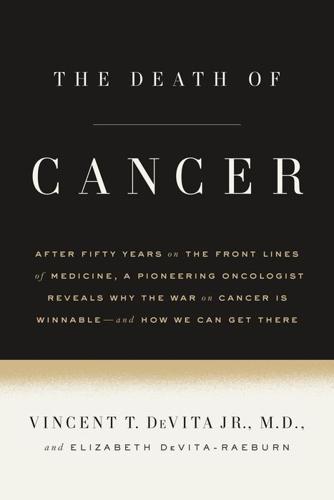
The Death of Cancer: After Fifty Years on the Front Lines of Medicine, a Pioneering Oncologist Reveals Why the War on Cancer Is Winnable--And How We Can Get There
by
Vincent T. Devita, Jr., M. D.
and
Elizabeth Devita-Raeburn
Published 3 Nov 2015
And patients, after all, had paid for these studies with their tax dollars and deserved an early look at the data. Putting the patient first was what the mandate of the cancer act was all about. I didn’t change the critics’ minds, but I didn’t care. I didn’t need their permission to send out clinical alerts, and I intended to continue. Years later, the Rand Corporation did a study on the use of chemotherapy in women after surgery, and it noted not only that post-op chemotherapy was being used widely but that there had been a noticeable drop in mortality from breast cancer in this group. Rand attributed that to the NCI clinical alert.2 By the mid-1980s, I had completely reorganized the NCI and made it over in the image proposed in the National Cancer Act.
…
.; National Cancer Act and; war on cancer and Nobel Prize non-Hodgkin’s lymphoma (NHL) Northwestern University Norton, Larry Norton-Simon effect NSAIDS Nuremberg Code nurses NYU cancer center Office of Management and Budget (OMB) Office of Medical Research Oliverio, Vince oncogenes Oncologic Drugs Advisory Committee (ODAC) oncology Oncovin optimism Osler, Sir William ovarian cancer ovaries Oxford University oxidative phosphorylation Paget, Stephen pancreatic cancer papilloma virus paralysis pathologists patient history Pazdur, Richard PD-1 PDQ Pel-Ebstein fever penicillin perimenopause Perlmutter Cancer Center, NYU Perry, Sy Peters, Vera pharmaceutical industry; FDA and; NCI and; new drug development; profits; see also specific companies and drugs pharmacology phase I trials phase II trials phosgene physical exam placebo placenta plasma cells platelets; transfusions platinum analogs PLX4032 pneumococcal meningitis pneumonia polymyxin B POMP potassium prednisone pregnancy President’s Cancer Panel prevention procarbazine prostate cancer; chemotherapy and radiation; of DeVita; diagnosis; hormone deprivation therapy; median survival; mortality rates; recurrence prostatectomy prostate gland; enlarged; removal of prostatitis Provenge PSA; elevated; prostate cancer and PSA test pseudomonas meningitis pseudomonas rectal infections Public Health Service pulmonary edema Quinn, Luke radiation; adjuvant chemotherapy; breast cancer and; chemotherapy vs.; dosage; dosimetry and; history of; for Hodgkin’s disease; improved technology; at Memorial Sloan Kettering; MOPP vs.; for prostate cancer; risk of future cancers from; side effects; survival rates; at Yale Cancer Center radical mastectomy radium Rall, Dave Rand Corporation randomized controlled trials RARA Rauscher, Frank Rauscher leukemia virus Reagan, Ronald rectal cancer recurrence; “critical period” and; prostate cancer red blood cells Reed, Dorothy Reed, John Reed-Sternberg cell Reid, Featherstone Reinhardt, Paul Relman, Bud remission; complete; Hodgkin’s disease Republican Party research, cancer; angiostatins; beginning of war on cancer; childhood leukemia studies; CMF period; common cancers; extramural; FDA approval of drugs and; funding; future of; Hodgkin’s disease studies; immunotherapy; intramural; Mary Lasker and; Memorial Sloan Kettering; MOMP; MOPP; National Cancer Act and; NCI cancer drug program; of 1970s; of 1980s; RO1 grants; turf battles; university cancer center model; VAMP; war on cancer; wartime embargo; Yale Cancer Center; see also specific doctors, hospitals, methods, and organizations resistance, drug retroperitoneal space rheumatoid arthritis Rhoads, Cornelius “Dusty” Rivers, Joan RNA Robbins, Guy Robinson, James D.
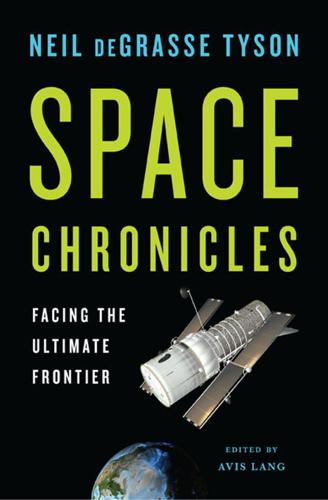
Space Chronicles: Facing the Ultimate Frontier
by
Neil Degrasse Tyson
and
Avis Lang
Published 27 Feb 2012
On January 6, 1967, in a front-page story, the Wall Street Journal announced: “The most ambitious US space endeavor in the years ahead will be the campaign to land men on neighboring Mars. Most experts estimate the task can be accomplished by 1985.” The very next month, in its debut issue, The Futurist magazine announced that according to long-range forecasts by the RAND Corporation, a pioneer think-tank, there was a 60 percent probability that a manned lunar base would exist by 1986. In The Book of Predictions, published in 1980, the rocket pioneer Robert C. Truax forecast that fifty thousand people would be living and working in space by the year 2000. When that benchmark year arrived, people were indeed living and working in space.
…
Kennedy, USS, 5 Johnson, Lyndon B., 66–67, 124 Johnson Space Center, 8, 220 Journey to Inspire, Innovate, and Discover, A: Moon, Mars and Beyond, 146 Jupiter, 32, 33, 37, 40, 46, 52, 85, 88, 102, 112, 115, 117, 128, 157, 201, 245, 246 slingshot effect and, 119–20 Jupiter-C rocket, 126 Jupiter Icy Moons Orbiter (JIMO), 169–70 Kazakhstan, 121, 123 Kelvin, Lord, 108 Kennedy, John F., 4, 8, 11, 12, 13, 17, 79, 136, 219, 225 “Moon” speech of, 13, 79, 148–49, 191–92 Kennedy Space Center, 14–15, 16, 140, 145, 161, 220, 229 Kepler, Johannes, 115 Kinsella, Gary, 249–50 Korea, Republic of (South Korea), xiv Korean War, 149 Korolev, Sergei, 123–24, 126 Kubrick, Stanley, 128–29 Kuiper Belt, 168, 245 Kuwait, 27 Lagrange, Joseph-Louis, 173, 176 Lagrangian points, 72, 145, 173–76 gravity and, 172–74 launches from, 177 libration paths and, 174 NASA satellites and, 176 Laika (dog), 122 Langley, Samuel P., 216–17 Laplace, Pierre-Simon de, 117–18 Large Hadron Collider, 80, 82 lasers, 167 Lauer, Matt, 210–11 Launching Science, 169–70 Leno, Jay, 144–45 Le Verrier, Urbain-Jean-Joseph, 248 L5 Society, 175 life: chemical components of, 35–36 diversity of, 34–35 extinction episodes of, 49 extraterrestrial, see extraterrestrial life on Mars, 48, 259 search for, 41, 325 light, 30, 90, 93, 258 speed of, 109, 164, 195 LightSail-1, 167 Lindbergh, Charles, 110 Lindsay, John, 67 Lockheed Martin, 236 Lombardi Comprehensive Cancer Center, 23 long-period comets, 46–47 Lovell, Jim, 112 low Earth orbit (LEO), 113 Luna 9 rover, 70 Luna 13 rover, 70 Lunar Orbiter Image Recovery Project, 149–50 Lunar Orbiter spacecraft, 149 Lunar Reconnaissance Orbiter (LRO), 150 MacHale, Des, 234 Madonna, 203 Magellan, Ferdinand, 95, 96 Major Mysteries of Science (Garbedian), 110 Manhattan Project, 80 many-body problem, 117–18 Mars, 7, 8, 14, 40, 46, 55, 77, 115, 129, 168, 188, 195, 200, 209 cratering on, 52 Earth viewed from, 27 life on, 48, 259 methane on, 31, 78, 138 proposed mission to, 78–79, 81–83 rocks ejected from, 48–49 rovers on, 130–33, 134, 138, 163, 198 Soviet achievements and, 122 water on, 48, 134, 138, 201, 227 Mars Express Orbiter, 138 Mars Global Surveyor, 138 Marshall Space Flight Center, 67 Mars Society, 236 mass extinction, 51 McAuliffe, Christa, 243 McDonald’s, 238 McNair, Ron, 234 Mécanique Céleste (Laplace), 117 Mercury (god), 108 Mercury (planet), 52, 115, 118 orbit of, 248 Mercury program, 7, 114 MESSENGER probe, 139 meteorites, 48 Tunguska River impact of, 50 see also asteroids methane, 30 on Mars, 31, 78, 138 on Titan, 138–39 Mexico, 50 microscope, 85–86 Microsoft, 136 microwaves, 41, 90, 91–92, 129, 141 microwave telescope, 91–92 Milky Way galaxy, 34, 41, 93, 97–101, 143, 147, 259 Andromeda galaxy and, 118–19 orbit of stars in, 118 radio emissions from center of, 90 Shapley-Curtis debate on, 98–101 Mir space station, 6, 165, 319 Mitchell, Edgar, 3 Mongols, 205–6 Moon, xiii–xiv, 4, 5, 6, 8, 11, 12, 13, 14, 21, 46, 47, 66, 69, 70, 71, 72, 86, 89, 97, 111–12, 119, 132, 149, 186, 195, 196, 200, 220, 245 cratering on, 50, 57 Earth viewed from, 27 40th anniversary of landing on, 144 proposed return mission to, 55–56, 76–77, 83 rocks ejected from, 48 Soviet achievements and, 122 see also Apollo program, Apollo 11 motion, third law of, 153, 158 multiverse, 259 NanoSail-D, 167 NASA Flexibility Act of 2004, 330 National Academy of Public Administrations, 322 National Academy of Sciences, 11, 98, 325 National Aeronautics and Space Act of 1958, xv, 4, 58, 66, 125, 252, 265–91, 328 access to information in, 273–74 aerospace vehicle in, 282–84 amended text of, 265–91 appropriations in, 284–85, 286 awards in, 278–79 civilian-military liaison in, 271 congressional reporting in, 271 excess land in, 272 insurance in, 281–84 international cooperation in, 271, 291 inventions in, 276–78 jurisdiction in, 290 launch vehicle contracts in, 285–86 lawsuits in, 279–80 misuse of name in, 285 National Advisory Committee in, 272–73 prize authority in, 286 property leases in, 289 property rights in, 276–77 purpose and objectives of, 265–67 recovery authority in, 290 security in, 274–75 transfer of functions in, 273 upper atmosphere research in, 290–91 National Aeronautics and Space Administration Authorization Act of 2000, 326–27 National Aeronautics and Space Agency (NASA), 59–60, 89, 114, 162, 166–68, 192, 199–200, 203, 219, 305, 306, 309 acquisition of space science data and, 314–15 additional activities of, 313–14 aero-space transportation technology integration plan of, 323–24 anchor tenancy contracts and, 308–9 Astronaut Pen of, 194 budget of, xiv, 10, 12, 15, 56, 75, 150, 169–70, 209–10, 212, 228, 237 carbon cycle research program of, 325–26 civil rights movement and, 66–67 creation of, 5–6, 66–67, 125, 267 decision making at, 146 deputy administrator of, 328 divisions of, 9 Earth science data sources and, 315–16 economic impact of, 237 expert input and, 146–47 Exploration Award of, 146–47 functions of, 265–72 future and, 252–53 Human Space Flight Innovative Technology program of, 324 international politics and, 5–7 Mars rovers and, 130–34 new Mars mission and, 77–78 new Moon mission and, 56, 77–78 number of employees of, 236 Obama on role of, 11–12 Obama’s vision of, 11–17 100th anniversary of flight initiative and, 326 payloads of, 313–14 political partisanship and, 4–5, 13–14 reorganization of, 329 scientific value of, 9–11 spending by, xv, 7–9, 25, 193–94, 331–32, 333–35 statutory provisions applicable to, 293–94 use of government facilities and, 309 vision statement of, 68 working capital fund of, 328 see also specific centers, programs, and vehicles National Air and Space Museum, 7–8, 23, 144 National Commission on Excellence in Education, 58 National Defense Education Act of 1958, 125 National Defense Scholarships, 125 National Geographic channel, 231 National Institute of Standards and Technology, 12, 306–7 National Institute on Disability and Rehabilitation Research, 306 National Institutes of Health, 209 National Museum of Natural History, 98 National Research Council, 169, 322 National Science Foundation, 11–12, 23, 125, 219, 305 National Security Council, 124 National Space Grant College and Fellowship Act of 1987, 295–303 administrative services, 301 appropriations, 303 competitive awards, 303 contracts, 298–99 fellowship program in, 300–301 functions of, 297–98 grants in, 298–99 identity of needs in, 299 personnel services in, 301 purpose of, 295–96 regional consortium in, 300 reports to Congress in, 302–3 review panel in, 301 National Space Institute, 175 National Space Society, 146, 175, 236 National Space Symposium, 222 National Technical Information Service, 304 “Nation at Risk, A,” 58 Natural History, xiii NBC, 144, 178 Neptune, 27, 36, 46, 115, 119, 157 discovery of, 248 Netherlands, 7 neutrinos, 94 Newcomb, Simon, 216 New Horizons spacecraft, 168 New Scientist, 123 Newton, Isaac, 65, 113–17, 119, 153, 158, 192, 247, 257 New York, N.Y., 96, 124, 224, 238 New York Times, 55, 96, 110, 124, 216–17 NEXT ion propulsion system, 170 Nigeria, 23 nitrogen, 101, 239, 240, 258 Nixon, Richard M., 4–5, 225 Nobel, Alfred Bernhard, 88 Nobel Prize, 88–89, 94, 206 North Atlantic Drift current, 93 North Carolina, 109, 216 Northrop Grumman, 236 Norway, 7 NOVA (TV series), 231 novae, 100 NRA, 236 nuclear power, 159, 168–69 numbers: Arabic, 205 increasing powers of, 237–38 Obama, Barack, 11, 14–16, 76, 186–87, 252 space policy and, 77 Obama administration, 75 Office of Federal Housing Enterprise Oversight, 311 Office of Human Spaceflight, 323–24 Office of Life and Microgravity Sciences and Applications, 323 Office of Management and Budget, 318 Office of Research and Technology Applications, 303–4, 305 Ohio, 4–5, 184–85 O’Neill, Gerard K., 8, 175 Onizuka, Ellison, 243 Opportunity (Mars exploration rover), 130–32, 138 orbits, 113–20 of Earth, 115 elongated, 115–16 free fall and, 119 many-body problem and, 117–18 of Mercury, 248 of Pluto, 115 sling-shot effect and, 119–20 of stars, 118 suborbital trajectories and, 114 three-body problem and, 116–17 of Venus, 115 Orellana, Francisco de, 197 organic chemistry, 36, 48 Origin of Species (Darwin), 98 oxygen, 31, 35–36, 101, 158, 239, 240, 258 ozone, 51, 93 Pakistan, 49 Panama Canal, 87 panspermia, 48–49, 259 Parliament, British, 217 “Passport to the Universe” (Druyan and Soter), 256 Pegasus, 108 Penzias, Arno, 92 perturbation theory, 118 Peru, 196–97 Pfeiffer, Michelle, 203 photosynthesis, 31 Pigliucci, Massimo, 75–83 Pioneer anomaly, 244–45, 248–51 Pioneer program: Pioneer 0, 245 Pioneer 3, 245 Pioneer 4, 245 Pioneer 5, 245 Pioneer 9, 245 Pioneer 10, 118, 244–45, 247, 248–50 Pioneer 11, 168, 244–45, 247, 249 Pioneer 12, 245 Pioneer 13, 245 Pizarro, Gonzalo, 196–97 planetary motion, first law of, 115 Planetary Society, 166–67, 193, 236, 250 Pluto, 82, 112, 118, 128, 168, 195, 201 orbit of, 115 Pravda, 121 Prescott, William H., 196 Presidential Commission on Implementation of United States Space Exploration Policy, 59–60, 146 President’s Commission on Higher Education, 125 Prince (singer), 203 Principia (Newton), 113 Project Prometheus, 169–70 propulsion: alternate fuels for, 157–59 antimatter drive and, 170–71 chemical fuel for, 163 electricity and, 165 in-space, 170 ion-thruster engine and, 164–65, 170 nuclear power and, 159, 168–69 rocket equation and, 153–54, 157 and slowing down, 155–56 solar sails and, 159, 165–67, 170 third law of motion and, 153, 158 xenon gas and, 164–65 Proxima Centauri, 195–96 Ptolemy, Claudius, 34, 65 pulsars, 29 Qatar, 5 quasars, 91 R-7 rocket, 126 racism, 66–67 radioisotope thermoelectric generators (RTGs), 168–69 radio telescopes, 91 radio waves, 28–29, 30, 31, 39, 90–91 radium, 96 RAND Corporation, 218 Ranger 7 spacecraft, 70 Reagan, Ronald, 5, 6 relativity, general theory of, 94–95, 101, 248, 250 relativity, special theory of, 195–96 Republicans, 4–5, 15, 17, 224–25 Resnik, Judith, 243 robots, 129, 134 in space exploration, 57, 89–90, 128, 130–32, 187, 198, 199, 202 rocket equation, 153–54, 157 rockets: flybys and, 157 liquid-fueled, 192 phallic design of, 222–23 propulsion of, see propulsion Rodriguez, Alex, 114 Röntgen, Wilhelm, 94, 96, 135 Royal Society, 216 Russia, xiv, 6, 22, 162, 168 ISS and, 319 Star City training center of, 73, 74, 207 Sagan, Carl, 27, 28, 43, 193, 256 Salyut space module, 6 Sarge (comedian), 234 satellites, xiii, xiv, 60, 71, 94 communication, 129 first US, 124–25 Saturn, 31, 82, 112, 115, 119, 138, 157, 168, 210, 225, 245 radio emissions from, 90–91 Saturn V rocket, 15, 127, 154, 158, 172, 214, 219, 220, 229 as a wonder of the modern world, 232–33 Schmitt, Harrison, 69, 132 Schwarzenegger, Arnold, 153 science, 206, 226 Arabs and, 205–6 discovery and, 98 emerging markets and, 209–10 literacy in, 57–59, 230–31, 235–36 multiple disciplines and, 209–10 Scientific American, 223 scientific method, 86 Scobee, Dick, 242 Seeking a Human Spaceflight Program Worthy of a Great Nation, 146 Senate, US, 5, 146, 328 Aeronautical and Space Sciences Committee of, 272 and appointments to Commission on Future of Aerospace Industry, 316 Appropriations Committee of, 321, 329 Commerce, Science, and Transportation Committee of, 288, 321, 323, 324, 329 sense of wonder, 64–65 September 11, 2001, terrorist attacks, 206 Sesame Street (TV show), 257 SETI (search for extraterrestrial intelligence), 41, 325 Shapley, Harlow, 98–101 Shatner, William, 180 Shaw, Brewster, 221 Shepard, Alan B., 114 short-period comets, 46 Siberia, 50 Sims, Calvin, 55–62 Sirius, 178 Skylab 1 (space station), 214 slingshot effect, 119–20 Smith, George O., 175 Smith, Michael, 242 Smithsonian Institution, 216 solar sails, 159, 165–67, 170 solar system, 34, 259 many-body problem and, 117–18 perturbation theory and, 118 solar wind, 176, 235, 245 solid rocket boosters, 155 Soter, Steven, 256 sound, speed of, 108–9 sound barrier, 109 South Africa, xiv South Pole, 76 Soviet Union, xiii, 8, 94, 133, 194, 215, 218 US rivalry with, 5–6, 59, 79, 87, 121–27, 133, 192, 219 see also Sputnik space, space exploration: colonization of, 57, 60, 102–3 cosmic microwave background in, 92, 94–95 cross-discipline endeavor in, 24–25, 230 culture and, 72–74, 147–48, 210–11 early attitudes toward, 217–18 economic motivation for, 200–201 factions against, 8–10 in Galef/Pigliucci interview of author, 75–83 inventions statute and, 311 justification for funding of, 78–81 militarization of, 60 numbers employed in, 236–37 politics and, 3–5 proposed programs and missions for, 201–2 robots and, 57, 89–90, 128, 130–32, 187, 198, 199, 202 significance of, 102 Soviet achievements in, 122–26 special interests and, 5, 236–37 stellar nurseries in, 93 technological innovation and, 12 US-Soviet rivalry and, 5–6, 59, 79, 87, 121–27, 133, 192, 219 war as driver of, 219–20 Space Cowboys (film), 162 Space Exploration Initiative, 8 Space Foundation, 221–22 Spaceguard Survey, The: Report of the NASA International Near-Earth Object Detection Workshop, 50 space junk, 176 space shuttle, 7, 12, 25, 109, 160–62, 165, 201, 202, 228, 281 contingency funding for, 321–22 fuel of, 158 launch costs of, 320–22 main parts of, 154–55 pricing policy for, 314 retirement of, 14–16, 143, 214 speed of, 222 use policy for, 312–13 weight of, 155 see also specific vehicles Space Station Freedom, 6, 8 Space Studies Board, 169 Space Technology Hall of Fame, 221, 230–31, 237 Space Telescope Science Institute, 10, 23, 135–36 Space Transportation System, 314 space travel, 191–98 coasting in, 247 in Colbert–author interview, 186–88 danger of, 198 financing of, 193–94 in Hollywood movies, 194–95 Moon missions and, 192–93 robots and, 198 special relativity and, 195–96 Space Travel Symposium, 111 Spain, 7, 87 spectroscopy, 30 Spirit (Mars exploration rover), 130–33, 138 Spitzer Space Telescope, 139 Sputnik, xiii, 5, 59, 79, 113–14, 133, 192, 218 50th anniversary of, 226 US response to, 122–24 Star City (training center), 73, 74, 207 Stars & Atoms (Eddington), 107 Star Trek (TV series), 3, 164, 170 45th anniversary of, 178–81 human behavior and, 180 technology of, 179 Star Trek: The Motion Picture (film), 37–38 Star Wars (film series), 131 State Department, US, 312 Stewart, Jon, 4 Stone, Sharon, 203 subatomic particles, 94 Sugar, Ron, 221 Sun, 27, 28, 29, 33, 46, 58, 72, 97, 112, 117, 118, 138, 195, 245 Copernican principle and, 34 energy emitted by, 93 fusion in, 101 neutrinos emitted by, 94 planets’ orbits and, 115 Superconducting Super Collider, 6–7, 80–81 Sweden, 7 Swift, Philip W., 223 Swift Gamma Ray Burst Explorer, 139 Switzerland, 7 Sykes, Wanda, 17 Systems of the World, The (Newton), 113 Taj Mahal, 88 Tamayo-Méndez, Arnaldo, 122 TASS, 123 Taylor, Charles E., 219 technology, 89, 200, 226 aero-space integration plan for, 323–24 in alien observation of Earth, 29–32 CRDAs policy on transfer of, 304–6 energy conservation and, 96 engineering, 95 Industrial Revolution and, 95 information, 95 leadership and, 23 multiple disciplines and, 135–37 nonsectarian philosophies and, 206 predicting future of, 215–16 progress in, 218–19 space exploration and, 135 of Star Trek, 179 US lag in, 21–22 telescopes, 71, 82, 85–86, 94, 141, 225 microwave, 91–92 radio, 91 ultraviolet, 93 Tereshkova, Valentina, 122 Texas, 6 Thompson, David, 221 three-body problem, 116–17 Three Gorges Dam, 22, 233 Three Mile Island meltdown, 168 Titan, 31 Huygens probe to, 138–39 methane on, 138–39 Today Show (TV show), 210–11 Tonight Show (TV show), 144–45 Toth, Viktor, 250 Townsend, W.

Free to Choose: A Personal Statement
by
Milton Friedman
and
Rose D. Friedman
Published 2 Jan 1980
Nick Eberstadt, "China: How Much Success," New York Review of Books, May 3, 1979, pp. 40–41. 12. John Stuart Mill, The Principles of Political Economy (1848), 9th ed. (London: Longmans, Green & Co., 1886), vol. II, p. 332 (Book IV, Chap. VI). CHAPTER 6 1. Leonard Billet, The Free Market Approach to Educational Reform, Rand Paper P-6141 (Santa Monica, Calif.: The Rand Corporation, 1978), pp. 27–28. 2. From The Good Society, as quoted by Wallis in An Over-Governed Society, p. viii. 3. Quoted by E. G. West, "The Political Economy of American Public School Legislation," Journal of Law and Economics, vol. 10 (October 1967), pp. 101–28, quotation from p. 106. 4. Ibid., p. 108. 5.
…
Clark, "Alternative Public School Systems," in the special issue on Equal Educational Opportunity of the Harvard Educational Review, vol. 38, no. 1 (Winter 1968), pp. 100–113; passage cited from pp. 110–11. 23. Daniel Weiler, A Public School Voucher Demonstration: The First Year at Alum Rock, Rand Report No. 1495 (Santa Monica, Calif.: The Rand Corporation, 1974). 24. Henry M. Levin, "Aspects of a Voucher Plan for Higher Education," Occasional Paper 72–7, School of Education, Stanford University, July 1972, p. 16. 25. Carnegie Commission on Higher Education, Higher Education: Who Pays? Who Benefits? Who Should Pay? (McGraw-Hill, June 1973), pp. 2–3. 26.
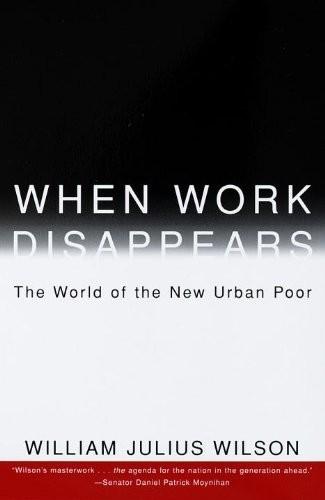
When Work Disappears: The World of the New Urban Poor
by
William Julius Wilson
Published 1 Jan 1996
.: Erlbaum Associates Publishers. New York Times. 1994. “Clinton Wages a Quiet but Energetic War Against Poverty.” March 30. Oakes, Jeannie. 1990. Multiplying Inequalities: The Effects of Race, Social Class, and Ability Grouping on Access to Science and Mathematics Education. Santa Monica, Calif.: Rand Corporation. O’Connor, Alice. 1992. “Race and Class in Chicago Sociology, 1920–1990.” Paper presented at the annual meeting of the Social Science History Association, November 8, Chicago. O’Hare, William, Tania Mann, Kathryn Porter, and Robert Greenstein. 1990. Real-Life Poverty in America: Where the American Public Would Set the Poverty Line.
…
“Employment and Earnings of Low-Income Blacks Who Move to Middle-Class Suburbs.” In The Urban Underclass, edited by Christopher Jencks and Paul E. Peterson, pp. 342–56. Washington, D.C.: Brookings Institution. Rotberg, Iris C., and James J. Harvey. 1993. Federal Policy Options for Improving the Education of Low-Income Students. Santa Monica, Calif.: Rand Corporation. Ruggles, Patricia. 1990. “The Poverty Line—Too Low for the 1990s.” New York Times, April 26. Rural Sociological Society Task Force on Persistent Rural Poverty. 1993. Persistent Poverty in Rural America. Boulder, Colo.: Westview Press. Rusk, David. 1993. Cities Without Suburbs. Washington, D.C.: Woodrow Wilson Center Press.
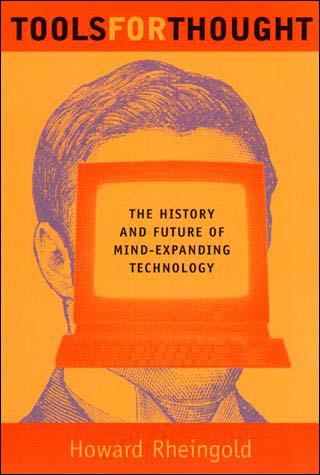
Tools for Thought: The History and Future of Mind-Expanding Technology
by
Howard Rheingold
Published 14 May 2000
It doesn't matter whether you build such a machine out of gears and springs, vacuum tubes, or transistors, as long as its operations follow this logical sequence. This theoretical template was first implemented in the Unites States at the Institute for Advanced Study. Modified copies of the IAS machine were made for the Rand Corporation, an Air Force spinoff "think tank" that was responsible for keeping track of targets for the nation's new but fast-growing nuclear armory, and for the Los Alamos Laboratory. Against von Neumann's mild objections, the Rand machine was dubbed JOHNNIAC. The Los Alamos machine assigned to nuclear weapons-related calculations was given the strangely uneuphemistic name of MANIAC.
…
The entire field of artificial intelligence had been challenged as a fraud, and very serious efforts that went beyond the usual acrimony of academic debate were being made to cut off funding for the foolishness Minsky et al. were attempting. The Dreyfus affair began in the summer of 1965, when Hubert Dreyfus -- a philosopher, not a computer scientist -- spent a few months at the Rand Corporation. The paper that Dreyfus wrote at the end of that summer, entitled "Alchemy and Artificial Intelligence," was informally circulated as a Rand report. Dreyfus thought that AI was a crock. He specifically attacked some of the claims AI enthusiasts had made about the future of their field. He claimed that the "progress" the AI folks had been citing was an illusion, and attempted to prove that their goal was a delusion.
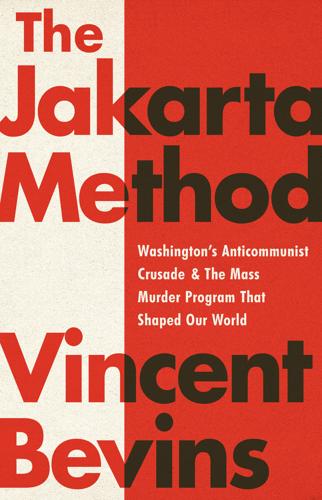
The Jakarta Method: Washington's Anticommunist Crusade and the Mass Murder Program That Shaped Our World
by
Vincent Bevins
Published 18 May 2020
As early as September 1964, the CIA listed Suharto in a secret cable as one of the Army generals it considered to be “friendly” to US interests and anticommunist.53 The cable also put forward the idea of an anticommunist military-civilian coalition that could gain power in a succession struggle. Suharto, a laconic forty-four-year-old major general from Central Java, was serving as head of the Army’s Strategic Command, or KOSTRAD. Suharto had studied under a man named Suwarto, a close friend of RAND Corporation consultant Guy Pauker and one of the Indonesian officers most responsible for implementing military-led Modernization Theory, “a state within a state,” and US-allied counterinsurgency operations.54 Suharto had a checkered past within the Indonesian military. He had been caught smuggling in the late 1950s, and was fired by Nasution himself.
…
These numbers, three million for full members and twenty million for affiliates, respectively, come from the PKI and have been widely reproduced by historians as well as US officials. See, for example, Wieringa, Propaganda, 5, and Robinson, The Killing Season, 8. In 1964, Guy J. Pauker arrived at the estimate of between 25 percent and a third of registered voters in a paper for the Rand Corporation titled “Communist Prospects in Indonesia,” and this was only working with the affiliate figure of sixteen million rather than twenty million. It is difficult to know how much, if any, double counting occurred in these estimations. 9. On the PKI’s agitation for parliamentary elections under Guided Democracy, see Mortimer, Indonesian Communism under Sukarno, 120–22.

Exponential: How Accelerating Technology Is Leaving Us Behind and What to Do About It
by
Azeem Azhar
Published 6 Sep 2021
Bleek, ‘Drones of Mass Destruction: Drone Swarms and the Future of Nuclear, Chemical, and Biological Weapons’, War on the Rocks, 14 February 2019 <https://warontherocks.com/2019/02/drones-of-mass-destruction-drone-swarms-and-the-future-of-nuclear-chemical-and-biological-weapons/> [accessed 26 April 2021]. 58 Missy Cummings, The Human Role in Autonomous Weapon Design and Deployment, 2014 <https://www.law.upenn.edu/live/files/3884-cummings-the-human-role-in-autonomous-weapons>. 59 Nick Statt, ‘Skydio’s AI-Powered Autonomous R1 Drone Follows You around in 4K’, The Verge, 13 February 2018 <https://www.theverge.com/2018/2/13/17006010/skydio-r1-autonomous-drone-4k-video-recording-ai-computer-vision-mapping> [accessed 2 January 2021]. 60 ‘Autonomous Weapons and the New Laws of War’, The Economist, 19 January 2019 <https://www.economist.com/briefing/2019/01/19/autonomous-weapons-and-the-new-laws-of-war> [accessed 26 March 2021]. 61 Burgess Laird, ‘The Risks of Autonomous Weapons Systems for Crisis Stability and Conflict Escalation in Future U.S.-Russia Confrontations’, Rand Corporation, 2020 <https://www.rand.org/blog/2020/06/the-risks-of-autonomous-weapons-systems-for-crisis.html> [accessed 2 January 2021]. 62 Jindan-Karena Kann, ‘Autonomous Weapons Systems and the Liability Gap, Part One: Introduction to Autonomous Weapons Systems and International Criminal Liability’, Rethinking SLIC, 15 June 2019 <https://www.rethinkingslic.org/blog/criminal-law/51-autonomous-weapons-systems-and-the-liability-gap-part-one-introduction-to-autonomous-weapon-systems-and-international-criminal-liability> [accessed 26 March 2021]. 63 Marta Bo, ‘Autonomous Weapons and the Responsibility Gap in Light of the Mens Rea of the War Crime of Attacking Civilians in the ICC Statute in Weapons and Targeting’, Journal of International Criminal Justice, March 2021, mqab005 <https://doi.org/10.1093/jicj/mqab005>. 64 Terri Moon Cronk, ‘DOD’s Cyber Strategy of the Past Year Outlined before Congress’, US Department of Defense, 6 March 2020 <https://www.defense.gov/Explore/News/Article/Article/2103843/dods-cyber-strategy-of-past-year-outlined-before-congress/>. 65 Paul M.
…
, arXiv:2009.10385 [cs.CY], 2020 <http://arxiv.org/abs/2009.10385> [accessed 30 March 2021] Kranzberg, Melvin, ‘Technology and History: “Kranzberg’s Laws”’, Technology and Culture, 27(3), 1986, pp. 544–560 <https://doi.org/10.2307/3105385> Kurzweil, Ray, The Age of Spiritual Machines: When Computers Exceed Human Intelligence (New York, NY: Penguin, 2000) ———, ‘The Law of Accelerating Returns’, Kurzweilai.net, 2001 <https://www.kurzweilai.net/the-law-of-accelerating-returns> [accessed 29 July 2020] ———, ‘Average Transistor Price’, Singularity.com <http://www.singularity.com/charts/page59.html> [accessed 10 March 2021] Laird, Burgess, ‘The Risks of Autonomous Weapons Systems for Crisis Stability and Conflict Escalation in Future U.S.-Russia Confrontations’, Rand Corporation, 2020 <https://www.rand.org/blog/2020/06/the-risks-of-autonomous-weapons-systems-for-crisis.html> [accessed 2 January 2021] Langner, Ralph, To Kill a Centrifuge: A Technical Analysis of What Stuxnet’s Creators Tried to Achieve (The Langner Group, November 2013) <https://www.langner.com/to-kill-a-centrifuge/> [accessed 26 March 2020] Lazarsfeld, Paul F., and Robert K.
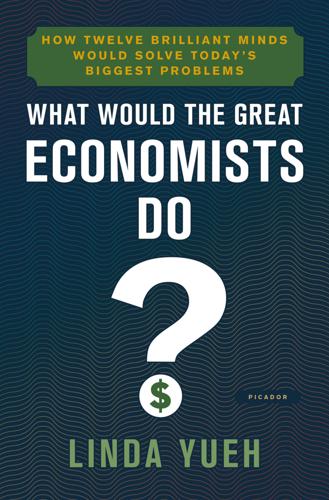
What Would the Great Economists Do?: How Twelve Brilliant Minds Would Solve Today's Biggest Problems
by
Linda Yueh
Published 4 Jun 2018
After he received his PhD in economics that year, he joined the Massachusetts Institute of Technology, where he became a professor in 1958. Solow spent his academic career at this leading economics faculty, though he was also visiting professor at Cambridge and Oxford universities in the 1960s. Solow was active in public policy from the start. After obtaining his PhD, he took on consulting assignments for the RAND Corporation in 1952. During his time working with the President’s Council of Economic Advisers from 1962–68, Solow helped draft the Keynesian-influenced economic policies that were the hallmark of the John F. Kennedy and Lyndon B. Johnson administrations. In 1965–69, he served on President Johnson’s Committee on Technology, Automation and Economic Progress, and then on President Richard Nixon’s Commission on Income Maintenance from 1969–70.
…
joint-stock companies Jones, Homer Journal of Economic Perspectives Journal of Political Economy JPMorgan Juncker Plan Kahn, Richard Kant, Immanuel Keynes, John Maynard and the backlash against globalization and the Bloomsbury Group and Bretton Woods System and budget deficits counter-cyclical policies and crowding out on depression/recession The Economic Consequences of the Peace fiscal activism and Friedman The General Theory of Employment, Interest and Money and government spending on government’s role in economy and Hayek and investors Keynesian revolution legacy life and times of and Marshall and Niemeyer and paradox of thrift at Paris Peace Conference Prices and Production and public investment and Robbins Robinson and Keynes/Keynesian economics and Schumpeter and ‘socializing investment’ A Tract on Monetary Reform and the Treasury A Treatise on Money wealth Keynes, John Neville Khrushchev, Nikita Knight, Frank Kodak Korea North South Krugman, Paul Krupp Kuznets, Simon labour force growth labour productivity and work incentive laissez-faire landowners Lassalle, Ferdinand Latin America currency crisis (1981–82) see also specific countries League of Nations Lehman Brothers Lenin, Vladimir Leontief, Wassily Lewis, Arthur Lewis, Barbara (‘Bobby’) Life Extension Institute Linda for Congress BBC documentary London London School of Economics and Political Science London Stock Exchange Long Depression (1880s) Lopokova, Lydia Louis XIV LSE see London School of Economics and Political Science Lucas, Jr, Robert Ma, Jack (Ma Yun) Maastricht Treaty macroprudential policy see also central banks; financial stability Malaysia Malthus, Thomas Manchester Mandela, Nelson manufacturing additive (3D printing) automation in China and deindustrialization GDP contribution in UK German high-tech and industrialization see also industrialization Japan ‘manu-services’ ‘March of the Makers’ mass-manufactured goods and national statistics reshoring rolling back deindustrialization process and Smith trade patterns changed by advanced manufacturing US Mao Zedong Maoism ‘March of the Makers’ marginal utility analysis marginalism market forces/economy ‘Big Bang’ (1986) competition see competition and economic equilibrium see economic equilibrium emerging economies see emerging economies Hayek and the supremacy of market forces ‘invisible hand’ and laissez-faire and Marx 4 self-righting markets supply and demand see supply and demand Marshall, Alfred on approach to economics and the backlash against globalization and the Cambridge School and decentralization Economics of Industry and education’s role in reducing inequality and inequality and Keynes and laissez-faire legacy life and times of marginal utility analysis and Marx and poverty Principles of Economics and utility theory Marshall, Mary, née Paley Marx, Heinrich Marx, Henriette, née Pressburg Marx, Jenny, née von Westphalen Marx, Karl and agriculture and the backlash against globalization Capital and capitalism and China and class Communist Manifesto (with Engels) communist theories A Contribution to the Critique of Political Economy doctoral thesis The Eighteenth Brumaire of Louis Bonaparte and Engels journalism life and times of and Marshall and rate of profit and Ricardo and Russia on service sector workers surplus value theory and the Young Hegelians Marx, Laura Marx, Louise Marxism and the Austrian School and unemployment see also Marx, Karl Mason, Edward mathematical economics Mauritius May, Theresa Meade, James median income Menger, Carl mercantilist policies see also Corn Laws Merkel, Angela Mexico middle class China and economic growth and economic inequality and European revolutionaries income and industrialization and Keynes and Heinrich Marx as proportion of world population and Schumpeter social resentment US Mill, James Mill, John Stuart On Liberty Principles of Political Economy Minsky, Hyman Mises, Ludwig von Mitchell, Wesley mobile phones/smartphones monetarism see also Friedman, Milton monetary policy and Friedman tools see also quantitative easing (QE) see also central banks monopolies and Marx natural and Robinson and Schumpeter and Smith and Sraffa monopsony Mont Pelerin Society Morgenthau, Henry mortgage-backed securities (MBS) mortgage lending and the 2008 financial crisis sub-prime Myanmar Myrdal, Gunnar Napoleon I Napoleon III Napoleonic Wars national/official statistics China UK US national debt Austria and central banks China and creditors and debt forgiveness and deficits euro area and foreign exchange reserves and investment Japan major economies owed to foreigners and quantitative easing and Ricardian equivalent UK US Vietnam National Health Service (UK) National Infrastructure Commission (UK) Navigation Acts neoclassical economics convergence hypothesis ‘neoclassical synthesis’ New Neoclassical Synthesis see also Fisher, Irving; Marshall, Alfred; Solow, Robert Neoclassical Synthesis see also Samuelson, Paul New Classicists see also Lucas, Jr, Robert New Deal New Institutional Economics see also North, Douglass New Keynesians see also Stiglitz, Joseph New Neoclassical Synthesis New Rhineland News (Cologne) New Rhineland News: Review of Political Economy (London) new trade theory New York Herald New York Times New York Tribune Newcomb, Simon Newsweek Niemeyer, Sir Otto Nissan Nixon, Richard Nokia non-tariff barriers (NTBs) Nordhaus, William North, Douglass and the backlash against globalization and development challenges doctoral thesis The Economic Growth of the United States from 1790 to 1860 and institutions Institutions, Institutional Change and Economic Performance life and times of Nobel Prize path dependence theory and Smith North, Elizabeth, née Case North Korea Northern Rock Oak Ridge National Laboratory Obama, Barack Occupy movement oil industry Organisation for Economic Co-operation and Development (OECD) Osborne, George Overseas Development Institute (ODI) Oxford University Balliol College Paine, Thomas Paley, Mary Paris Peace Conference path dependence theory see also North, Douglass Peel Banking Act Philips, Lion Philips (electronics company) physical capital Physiocrats Pigou, Arthur Cecil Piketty, Thomas pin-making Pinochet, Augusto Ponzi finance populism Portugal poverty aid and development see economic development challenges eradication/reduction frictional and Marshall and Marx and median income people lifted from in South Africa productivity and agriculture ‘benign neglect’ of Britain’s productivity puzzle and computers and economic growth and education and factor reallocation and Germany and Hayek incentives and industry/industrial revolution and innovation and investment Japan and jobs labour see labour productivity and land low and Marshall moving into higher sectors of and pricing raising and Schumpeter and secular stagnation slow economic and productivity growth and the future and specialization and technology total factor productivity and trade and wages Prohibition protectionism agricultural see also Corn Laws Navigation Acts public-private partnerships public investment and Keynes public spending general government spending see government spending public investment see public investment squeeze see also austerity Puerto Rico quantitative easing (QE) Quantity Theory of Money see also Friedman, Milton; monetarism; Equation of Exchange Rand, Ayn RAND Corporation rate of profit rational expectations theory Reagan, Ronald recession/depression debt-deflation theory of depression Great Depression see Great Depression (1930s) Great Recession (2009) Greece ‘hangover theory’ of Hayek on and Keynes Long Depression (1880s) second recession (1937–38: recession within the Depression) in UK 1970s redistribution Regional Comprehensive Economic Partnership (RCEP) Reich, Robert reindustrialization Reisinger, Anna Josefina Remington Rand rent-seeking research and development (R&D) investment China Research in Motion (RIM) retail trade Rhineland News Ricardian equivalence Ricardo, David and the backlash against globalization and class comparative advantage theory and the Corn Laws Essay on the Influence of a Low Price of Corn on the Profits of Stock The High Price of Bullion international trade theory as a landlord life and times of as a loan contractor and Marx On the Principles of Political Economy and Taxation and Schumpeter and Smith wealth Ricardo, Priscilla Robbins, Lionel Robinson, Austin Robinson, James Robinson, Joan The Accumulation of Capital and the AEA and the backlash against globalization and communism Economic Philosophy The Economics of Imperfect Competition Essays in the Theory of Employment and imperfect competition Introduction to the Theory of Employment and Keynes and Keynesian economics life and times of and monopolies monopsony theory and Schumpeter and unemployment wage determination theory robotics Rodrik, Dani Rolls-Royce Roosevelt, Franklin D New Deal Russia 1905 Revolution and Lenin and Marx Samsung Samuelson, Paul and the backlash against globalization Economics factor-price equalization theorem Nobel Prize savings for capital investment and inflation and Keynes and the ‘paradox of thrift’ Say, Jean-Baptiste Schmoller, Gustav von Schumpeter, Anna, née Reisinger Schumpeter, Gladys, née Seaver Schumpeter, Joseph and the backlash against globalization as banker/investor Business Cycles and capitalism Capitalism, Socialism and Democracy ‘creative destruction’, innovation and ‘The Crisis of the Tax State’ and the Econometric Society economics and entrepreneurs on Fisher and Hayek History of Economic Analysis and Keynes legacy life and times of The Nature and Content of Theoretical Economics and perfect competition and Ricardo and Robinson Theory of Economic Development wealth Schumpeter, Romaine Elizabeth, née Boody Schumpeter Group of Seven Wise Men Schwartz, Anna Jacobson Schwarzenegger, Arnold Scottish Enlightenment Seaver, Gladys Ricarde see Schumpeter, Gladys secular stagnation self-interest services sector China and deindustrialization financial services see financial services global trade in services human capital investment invisibility of liberalization ‘manu-services’ and Marx move away from and national statistics output measurement productivity and innovation and Smith Trade in Services Agreement (TiSA) UK US shadow banking Shiller, Robert silver Singapore Skidelsky, Robert skill-biased technical change skills shortage small and medium-sized enterprises (SMEs) smartphones/mobile phones Smith, Adam and the backlash against globalization as Commissioner of Customs for Scotland economic freedom on ‘invisible hand’ of market forces and laissez-faire economics legacy life and times of and manufacturing and Marx and North and Physiocracy on rate of profit and rebalancing the economy and Ricardo and the services sector and state intervention The Theory of Moral Sentiments The Wealth of Nations social capital social networks social services socialism communist see communism vs welfare state capitalism Solow, Barbara (‘Bobby’), née Lewis Solow, Robert and the backlash against globalization with Council of Economic Advisers doctoral thesis economic growth model ‘How Economic Ideas Turn to Mush’ John Bates Clark Medal and Keynesian economics life and times of Nobel Prize Presidential Medal of Freedom and technological progress Sony Sorrell, Sir Martin South Africa South Korea Soviet Union and China Cold War collapse of see also Russia Spain specialization spontaneous order Sraffa, Piero stagflation Stanley Black & Decker state government regulation intervention in the economy laissez-faire STEM (science, technology, engineering and mathematics) workers sterling Stigler, George Stiglitz, Joseph stocks and Fisher and interest rates US railroad Strachey, Lytton Strahan, William Strong, Benjamin Sturzenegger, Federico Summers, Lawrence supply and demand see also market forces/economy: ‘invisible hand’ Sustainable Development Goals (SDGs) Taiwan Tanzania tariffs taxation and austerity devolved powers of flat for government deficit spending before Great Depression and inequality and investment Japan and Marshall negative income tax to pay off national debt Pigouvian tax progressive and Reagan redistribution through Schumpeter on Smith on Taylor, John Taylor, Overton H.
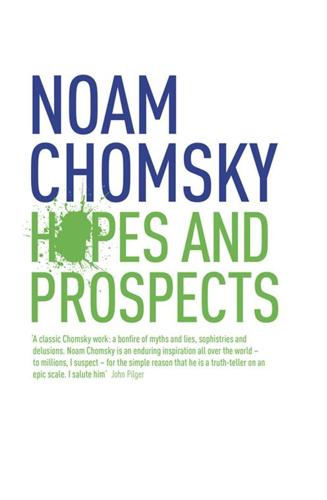
Hopes and Prospects
by
Noam Chomsky
Published 1 Jan 2009
Parenthetically, only a cynic might imagine that the date was chosen to insinuate the Bush-Cheney claims of links between Saddam Hussein and Osama bin Laden, so that by committing the “supreme international crime” they were defending the world against terror—which increased sharply as a result of the invasion as anticipated, sevenfold according to an analysis by terrorism specialists Peter Bergen and Paul Cruickshank, using data of the government-linked RAND Corporation.21 Petraeus and Crocker provided figures to show that the Iraqi government had greatly accelerated spending on reconstruction, reaching a quarter of the funding set aside for that purpose. Good news indeed—until it was investigated by the Government Accountability Office, which found that the actual figure was one-sixth what Petraeus and Crocker reported, a 50 percent decline from the preceding year.22 More good news is the decline in sectarian violence, attributable in part to the success of the ethnic cleansing that Iraqis blame on the invasion; there are simply fewer people to kill in the cleansed areas.
…
For such reasons, the most respected and sober U.S. strategic analysts warned early on that the Bush administration’s military programs and its aggressive stance carry “an appreciable risk of ultimate doom.”12 BMD is also understood on all sides to be a first-strike weapon, perhaps capable of nullifying a retaliatory strike and thus undermining deterrent capacity. The quasi-governmental RAND Corporation describes BMD as “not simply a shield but an enabler of U.S. action.” Across a broad part of the political spectrum, military analysts write that “missile defense isn’t really meant to protect America. It’s a tool for global dominance.” BMD is “about preserving America’s ability to wield power abroad.
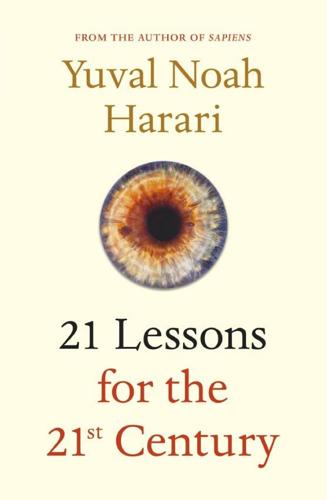
21 Lessons for the 21st Century
by
Yuval Noah Harari
Published 29 Aug 2018
Gabler, ‘Safety Benefits of Forward Collision Warning, Brake Assist, and Autonomous Braking Systems in Rear-End Collisions’, IEEE Transactions on Intelligent Transportation Systems 13:4 (2012), 1546–55; James M. Anderson et al., Autonomous Vehicle Technology: A Guide for Policymakers (Santa Monica: RAND Corporation, 2014), esp. 13–15; Daniel J. Fagnant and Kara Kockelman, ‘Preparing a Nation for Autonomous Vehicles: Opportunities, Barriers and Policy Recommendations’, Transportation Research Part A: Policy and Practice 77 (2015), 167–81; Jean-François Bonnefon, Azim Shariff and Iyad Rahwan, ‘Autonomous Vehicles Need Experimental Ethics: Are We Ready for Utilitarian Cars?’
…
Gabler, ‘Safety Benefits of Forward Collision Warning, Brake Assist, and Autonomous Braking Systems in Rear-End Collisions’, IEEE Transactions on Intelligent Transportation Systems 13:4 (2012), 1546–55; James M. Anderson et al., Autonomous Vehicle Technology: A Guide for Policymakers (Santa Monica: RAND Corporation, 2014), esp. 13–15; Daniel J. Fagnant and Kara Kockelman, ‘Preparing a Nation for Autonomous Vehicles: Opportunities, Barriers and Policy Recommendations’, Transportation Research Part A: Policy and Practice 77 (2015), 167–81. 20 Tim Adams, ‘Job Hunting Is a Matter of Big Data, Not How You Perform at an Interview’, Guardian, 10 May 2014. 21 For an extremely insightful discussion, see Cathy O’Neil, Weapons of Math Destruction: How Big Data Increases Inequality and Threatens Democracy (New York: Crown, 2016).
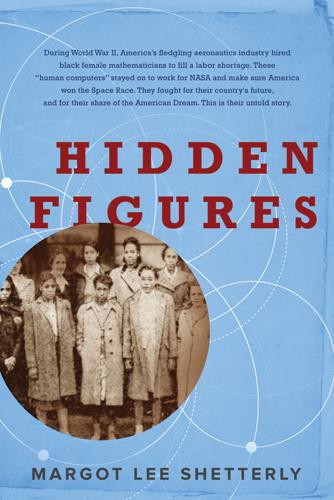
Hidden Figures
by
Margot Lee Shetterly
Published 11 Aug 2016
They surfed the radio dial trying to lock on to the artificial moon’s beeping, its sound like an otherworldly cricket. “One can imagine the consternation and admiration that would be felt here if the United States were to discover suddenly that some other nation had already put up a successful satellite.” Those words from a letter describing a secret 1946 RAND Corporation proposal to the US Air Force, suggesting that the United States design and launch a “world circling satellite,” sounded, in 1957, like the unheeded voice of Dickens’ Ghost of Christmas Future. In the 1940s, space research was deemed a little too far out to warrant systematic consideration and development.
…
Katherine Johnson, xvii, 211, 216–217, 219–223 Kennedy moon challenge, 209 launch date slips, 207–208, 215 rockets, 189, 208, 209, 213–214 suborbital flight, 211 tracking stations, 206–207, 216, 217, 221, 258 trajectories, 189–191, 214, 215–217 Rainey, Gerald, 146 Rainey, Ruby (East Computer), 231 RAND Corporation satellite report, 161 Randolph, A. Philip Communism denouncement, 103 Du Bois as guide, 229 Martin Luther King Jr. and, 6, 168, 228, 229 Negro war employment, 5–6 new generation, 168 Rauh, Joseph, 6 Redstone rocket, 189, 208–209 reentry blunt body, 163, 188 heat shield of John Glenn, 223–224 retrofire output from Goddard, 222 self-education lecture series, 177 Sue Wilder research, 219 Reid, Henry black women mathematicians, 46–47, 283 on bombing of Japan, 59 cafeteria glimpses of, 43 character of, 4, 46 correspondence with Orville Wright, 46, 283 Kathryn Peddrew for United Fund Drive, 167 spy warnings by, 52 research.
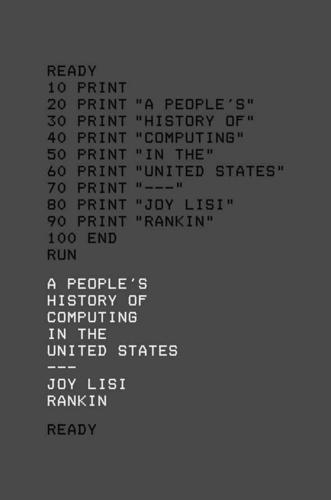
A People’s History of Computing in the United States
by
Joy Lisi Rankin
F utures research entailed planning for the f uture (including urban planning), developing methods of forecasting, and involving the public in both planning and forecasting.11 GE had established TEMPO (Technical Management Planning Organization) for this purpose, and the Air Force’s already well-k nown RAND Corporation had been founded to coordinate long-range planning with government research and development decisions.12 As he worked intensively with PLATO on the DELPHI project, Umpleby reimagined the possibilities and the purpose of the system. He realized that PLATO was not just a teaching computer, limited to the realm of education.
…
Valarie Lamont, ed., The Alternative F utures Project at the University of Illinois Newsletter, no. 1 ( January 1971): 1, http://w ww.g wu.edu /~umpleby /project _ newsletters.html, archived to https://perma.cc/9NYS-PDZ9; UIUC Public Information Office, “Immediate Release Mailed 3 / 28 / 69” (on f utures research), http://w ww.g wu.edu/~umpleby/a fp/ U%20of%20I%20Press%20 Release%203_ 28_1969.pdf, archived to https://perma.cc/528Q-9FBU. 12. UIUC Public Information Office, “Immediate Release Mailed 3 / 28 / 69”; RAND Corporation, “History and Mission,” http://w ww.rand.org/about /h istory.html, archived to https://perma.cc/ ELW9-N9BM. 13. Umpleby, “Citizen Sampling Simulations,” 361. 14. Ibid., 363. 15. Stuart Umpleby, The Teaching Computer as a Device for Social Science Research, Computer-based Education Research Laboratory (CERL) Report X-7, May 1969, Box 4, CBI PLATO Collection. 16.
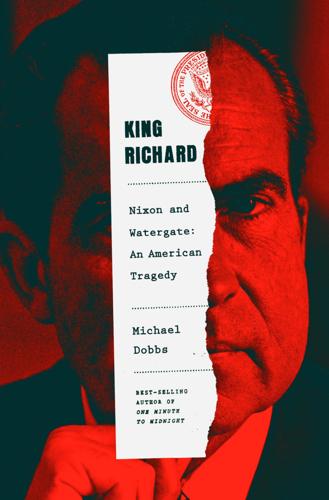
King Richard: Nixon and Watergate--An American Tragedy
by
Michael Dobbs
Published 24 May 2021
A former Kissinger aide named Daniel Ellsberg had already come under suspicion as the man who supplied the Pentagon Papers to the Times. Ellsberg had helped run the CIA rural pacification program in South Vietnam but had returned home disillusioned. His top secret security clearances enabled him to obtain an assignment from the Rand Corporation to assemble an official history of the war. He went into hiding after the FBI showed up to interview him, turning up later on the CBS evening news to accuse the U.S. government of responsibility for millions of deaths in Vietnam. As a suspected leaker, Ellsberg became an early target of the White House Plumbers.
…
For the past three months, Daniel Ellsberg had been on trial on charges of espionage, conspiracy, and theft of government property arising from his unauthorized disclosure of the Pentagon Papers. He had worked on the multivolume history of the Vietnam War as a Defense Department consultant for the Rand Corporation, a strategic think tank in Santa Monica. He admitted leaking the documents to The New York Times but claimed a higher, moral justification. In tearful testimony to the court, he explained that his experiences in Vietnam had turned him against the war. He had been overwhelmed by the sight of burning villages, children killed by American bombs, and corrupt South Vietnamese officials living in luxury while peasants starved.

The Ascent of Money: A Financial History of the World
by
Niall Ferguson
Published 13 Nov 2007
For one thing, they were simultaneously pursuing multiple, uncorrelated trading strategies: around a hundred of them, with a total of 7,600 different positions.82 One might go wrong, or even two. But all these different bets just could not go wrong simultaneously. That was the beauty of a diversified portfolio - another key insight of modern financial theory, which had been formalized by Harry M. Markowitz, a Chicago-trained economist at the Rand Corporation, in the early 1950s, and further developed in William Sharpe’s Capital Asset Pricing Model (CAPM).83 Long-Term made money by exploiting price discrepancies in multiple markets: in the fixed-rate residential mortgage market; in the US, Japanese and European government bond markets; in the more complex market for interest rate swapsbf - anywhere, in fact, where their models spotted a pricing anomaly, whereby two fundamentally identical assets or options had fractionally different prices.
…
unsafe investment bet 229 protectionism 159. see also free trade Prussian government bonds 86 public housing 246-7 publicly owned firms 353 Public Works Administration 246-7 Pückler-Muskau, Prince 90 Putin, Vladimir 276 put options 12 ‘quants’ 321-7 Quantum Fund 319 Quilmes 274 race divisions 243-6 . see also anti-Semitism; ethnic minorities Rachman, Peter 252 railways 226 Rand Corporation 323 random drift 350 randomness 342 ‘random walk’ 320 Ranieri, Lewis 259 rating agencies 268 raw materials see resources RCA 160 Reagan, Ronald 252 and capital account liberalization 312 and S&Ls 254 welfare reforms 219 real estate see property recessions 103-4 prospects of 8 recourse 270n.
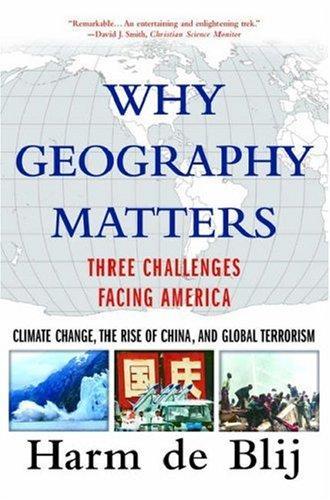
Why geography matters: three challenges facing America : climate change, the rise of China, and global terrorism
by
Harm J. De Blij
Published 15 Nov 2007
Part of this cost represents the impact on the airline industry, from the grounding of all American aircraft on the day of the attack and the shutdown of air transportation for several days afterward to the temporary but crucial fear-induced shrinkage in passenger volume. The chaotic and inconsistent installation of airport security systems further damaged the industry. Today the system works better. But a RAND Corporation study published in January 2005 raises the prospect of potential attacks on commercial aircraft in the United States by terrorist operatives using shoulder-fired missiles because hijacking an airliner by boarding it is now less feasible. A key segment of this report, however, raises a troubling cost assessment: about $1 billion for the aircraft and its passengers and crew, $3 billion if the aviation system were again shut down for up to a week, and another $12 billion resulting from lost business and reduced passenger loads following an attack.
…
See also specific regions and countries distribution, 98-99 "doubling times" for, 105 and environment, 101-3 future patterns, 95-97 and global warming, 53, 82, 278 growth, 51,92-95, 94 on maps, 116-17 overpopulation, 92, 100, 101 and politics, 100-101 ZPG (Zero Population Growth), 93, 106 Portugal and China, 136, 142 colonialism, 262, 263, 264 and European Free Trade Association, 210 and Muslim realm, 161 nation-state model, 110 Postglacial Optimum, 76 Potsdam Agreement, 224 poverty, 8-9, 256 Powell, Colin, 256, 274 Precambrian, 59 primates, 65-68, 68, 72 Primorskiy Territory, Russia, 242, 243 Protcrozoic eon, 58, 59, 60 Protestant Reformation, 166 provincialism, 21 public transportation, 203 Pudong, China, 129, 139 Puntland, 37-38, 185 Pushtuns, 157-58 Putin, Vladimir, 247, 250-51, 252, 256 Qing (Manchu) Dynasty, 135, 135-36, 138 Quebec, Canada, 109 Queen Elizabeth Lslands, 108 Quran, 164 RAND Corporation, 175 Ratzel, Friedrich, 111 Reader, John, 264 Reagan, Ronald, 17, 50 Real Irish Republican Army (RIRA), 161 Red Guards, 126 Red Sea, 70, 259 refrigeration, 93 reglaciation, 78 Reilly, Jack, 18 relative location in maps, 33 religion. See also specific religions, including Islam and European Constitution, 214-15 extremism, 21 freedom of religion, 166, 281 and population, 94 religious conversion, 165 separation of church and state, 166 remote sensing, 46 reptiles, 60, 62 Republic of Ichkeria (Chechnya), 247 Republic of Somaliland, 37 303 Revolutionary Armed Forces of Columbia (FARC), 181 Rhine River, 80 Rhone-Alpes (region), 218, 220 Richardson, Douglas, 48 "RingofFire," 55,56 river basins, 97-98, 134 Robinson, Arthur H., 24, 34, 35 Roma (Gypsies), 212 Roman Catholic Church, 94, 101, 186 Romance languages, 201 Roman Empire, 9, 77, 128, 202 Romania devolutionary pressure, 206 and European Union, 211, 218, 225, 226, 228 and Muslim realm, 161 and NATO, 229 and Roma (Gypsies), 212 Rotterdam firebombing, 150, 275 Royal Geographic Society, 127-28 Rumaylah Oil Field, 114 rural areas, 96, 100, 134, 158-59, 177 Rushdie, Salmon, 163, 165 Russia, 231-54.

The Marches: A Borderland Journey Between England and Scotland
by
Rory Stewart
Published 14 Jul 2016
* Historians of Rome and modern Iraq always seem to agree with the generals that there was nothing intrinsically impossible about these interventions. The problem lay with resources or the details of the implementation – and the answer was generally a ‘surge’. Analysts of Afghanistan argue that the problem was that there had only been one soldier for every forty members of the adult population, while, as the Rand Corporation had ‘established’, the real ratio should have been one to twenty. And in Roman Britain, where there was one Roman soldier for every twenty adults, historians argue that the ratio should have been closer to one for every fifteen – that the problems would have been solved if there had been four Roman legions, rather than three.
…
A., 102 Hermitage Castle, 225–6 Herodian, 77 Hexham Abbey, 77 High Street (Lake District fell), 130 Highland Clearances, 268 Highland Line, 9, 11, 12, 124, 236 Highlands, geology of, 10–12 Hirsel Estate, 242, 243 HMS Birkenhead (ship), 298 Hogg, James, 205, 207 Holme Cultram Abbey, 162, 167–8, 177 Home, Alexander, 3rd Lord Home, 242–3 Home, Alexander, 14th Earl of, 242 Hong Kong, 19, 66, 109, 317 Housesteads (Roman fort), 69 Howard, Philip, 222, 243–4, 246 Hume, David, 259 Hussein, Saddam, 37, 46 Iban people, Malaysia, 95 Iceland, 132 India, 15, 28, 39, 107–8, 111, 143, 193, 219, 274 Indonesia, 18, 19, 49–50 Innerleithen, Scotland, 259 Iran, 41, 193, 251 Iraq, 44, 46, 89, 93, 103–4, 131–2 Irian Jaya, Indonesia, 24, 133 Iron Age Britain, 74–6, 94–5 Irving, Washington, 204, 252, 254 Irwin, Angus, 333 Isel Hall, Cockermouth, 156 Isle of Harris, 145 Jakarta, Indonesia, 49–50 James I, King (James VI of Scotland), 219 James IV, King of Scotland, 243–5 James V, King of Scotland, 190–1 Jedburgh, 239 Johnson, Lyndon, 90 Johnson, Samuel, 96, 241–2 Joicey, James, 5th Baron, 245–7, 250 kelpy, 252 Kershopefoot, Cumbria, 203, 219 King’s Own Scottish Borderers, 39–40 Kipling, Rudyard, 81 Kirkby Stephen, Cumbria, 133 Kirriemuir, Scotland, 61, 101, 110 Kuala Lumpur, 19 Langholm, Scotland, 113 Lauder, Harry, 32 Leslie-Melville, Roderick, 334 Leyden, John, 115 Liddesdale, Scotland, 197, 199, 225, 227 Liddell, Eric, 31 Livingston, West Lothian, 287–8 Livingstone, David, 31 Loadpot Hill, Lake District, 130 Loch Turret Reservoir, Crieff, 9, 267 Lochmaben stone, 179, 184 Loder, Barbara, 195–6 Longtown, Cumbria, 215 Lord of the Isles, 266 Lowlands, 10, 12, 24–5, 260 Luguvalium, 60 Lyne (River), 195 lynxes, 150 Macaulay, Thomas Babington, 103 MacDiarmid, Hugh, 12, 21, 31–2, 113, 261 MacDonald, Flora, 27 MacGregor clan, 10, 13, 268 Maclaren clan, 10, 13, 14, 268 Maclean, Sir Fitzroy, 60, 272 Maclean of Duart, 272 Malacca, 16, 19, 79, 96 Malayan Colonial Service, 16, 66 Malayan Emergency, 16, 78–9, 90, 93, 97, 101 Malaysia, 18, 66–8, 95–6, 108 Malcolm, Charles, 107–8 Malcolm, James, 107–8 Malcolm, Pulteney, 107–8, 113 Malcolm, Robert, 107 Malcolm, Sir John, 107, 111–13 ‘march gate,’ 121 Marches, the, 198 see also Borderlands/ Borders; Wardens of the Marches march-line, 235 Marcus Aurelius (Roman Emperor), 324 Mauretania (ship), 39, 40 McCosh, Andrew, 333 McGonagall, William, 31 McGruder clan, 14 McLaurin clan, 15 Melrose Abbey, 168, 252 Melville, Henry Dundas, Viscount, 275 Messenger, Mark, 175–6, 178, 179 metissage, 81, 86 ‘Middleland,’ 47–8, 60, 118, 121, 124, 155, 157–8, 167–8, 185, 214, 230, 249 Monteath, Alexander, 15, 16 Montrose, Marquess of, 253 Monzie, Perthshire, 10, 12 Motherwell, 261 munitions factories, Scotland, 181–2, 189 Murray, John, 111 Nairn, Tom, 32 National Trust, 135 Naworth Castle, 198, 222 Neolithic monuments, 14, 116, 122, 153, 179, 184, 275, 328 Newcastle, 38–9, 42, 60, 145, 158, 174 Newcastle University, 246 Newcastleton, Scotland, 221–3, 222 Nien Cheng, 61 Norman Conquest, 157–8, 167 Normandy, France, 16, 100, 181, 295–6, 303–8 Norse language, 24, 131–3, 138 Norse raiders (Vikings), 139 Northumbria, 125–6, 131–3, 157, 175, 264 Northumbrian language, 236 nuclear power stations, 229–30 nuclear waste, 179, 230 ‘Old North,’ 123, 125 onager (catapult), 85–6 Oram, Richard, 225 Orkneys, 266 Orwell, George, The Road to Wigan Pier, 248 Otterburn, Northumberland, 86, 229, 236 Owen, Robert, 261 Oxford University, 18, 295 Pakistan, 198, 219 Park, Mungo, 115, 124–5, 253–5 Pattinson, Steve, 215–16 peat bogs, 161–2 Peel, John, 149 pele towers, 199, 205, 218 Penang, 18, 78–9, 96 Penrith, Cumbria, 28, 54–5, 133, 138 Percy family, 235 Pevsner, Nikolaus, 214 Picts, 24, 106, 124, 186, 262, 266 Pons Aelius, 60 porridge, 152 Pound, Ezra, 34 Raeburn, Henry, 225 Rand Corporation, 89 Rauray, France, 295, 304–5 ‘reivers’ (Border raiders), 198–201, 204, 206–12, 217–19, 223–4, 248, 249, 259 Rheged (Cumbric kingdom), 124–5, 126–7, 149, 154 Richard I, King, 175 Richardson, Johnny, 149–50 ring-garth, 121 Roadhead, Cumbria, 195, 196 Robert the Bruce, 15, 167, 177–8, 185, 186 Robertson, Charlie, 237–9 Rodger, Alan, 263 Roman forts, 39–40, 43, 44, 46, 79, 96–7, 161, 174, 185, 212–14 Roman occupation of Britain, 77–8, 87–9, 103–7 Rose, Colonel David, 14, 267, 274–5, 333 Routledge, Gordon, 183 Routledge family, 195, 200, 208–10, 212, 217, 221 Rowan-Hamilton, Angus, 333 Roxburgh, 238–40, 250 Royal Commission for Ancient and Historical Monuments in Scotland, 250 Royal Scottish Chamber Orchestra, 246 Royal Scottish Country Dance Society, 20 Royal Society for the Protection of Birds, 146 Ruskin, John, 158 Russell, James, 206–7 Sanders of the River (film, 1935), 101 Sark (river), 187, 189 Scotland: referendum (2014), 28, 119; Union of Crowns with England (1604), 219–20, 223 Scott, George, 115, 255 Scott, Sir Walter: on the Battle of Flodden, 243, 244–5; and Border culture, 204–7, 209, 211, 226, 254; on Hadrian’s Wall, 35–6; on Helvellyn, 141; and oral history, 182; portrait by Henry Raeburn, 225; Redgauntlet, 179; on Scottish clans, 267–8; on Scottish National Identity, 252–3; and tartan, 28; on Traquair, 256; and the Yarrow Stone, 115 Scottish dancing, 19–22, 67, 332–4 Scottish education system, 110–11 Scottish national identity, 185–6, 191, 260, 264, 266–9 Scottish National Party, 28 Scottish Royal Commission for Ancient and Historical Monuments, 23 seanachaidhs, 269, 271–2 Segedunum (Roman fort), 39–40 Selgovae tribe, 179 Selkirk, Scotland, 242, 246, 254 Septimus Severus (Roman Emperor), 88 Sfax, Tunisia, 300, 301 Shakespear, Sir Richmond, 15 Shanghai, 18, 20, 61 sheep farming, 134–6, 146–7 Shehadeh, Raja, 257 Sheriffmuir, Battle of, 114 shielings, 13 Sicily, 300–1 Sidney, Sir Philip, 236 Silloth, Cumbria, 161 Smiles, Samuel, 110 Solway Firth, 175–80, 229 South Shields, 42–3 Spadeadam, Cumbria, 229 Stanegarth Hall, Kershopefoot, 203–4 Stephenson, Robert, 113 Steuart-Fothringham, Thomas, 333 Stevenson, Robert Louis, 182, 206 Stewart, Alexander Wolf, 282, 283, 309, 323 Stewart, Annie, 16, 18, 293 Stewart, Brian: ancestry, 7–9, 72–3; books by, 100; career, 15–18, 73, 108–9; death, 317–19; funeral, 326–33; linguistic abilities, 16, 50, 78, 98–100; love of Scottish dancing, 19–22, 67; musical interests, 67–8; portrait commissioned, 278–80, 310–12; and Scottishness, 27–32 Stewart, Fiona, 18, 321, 333 Stewart, George, 296–300, 330 Stewart, Heather, 16, 18 Stewart, Sandy, 333 Stewart, Shoshana, 282 Stewart, Sir John, 13 Stewart family ancestry, 7–9, 13 Stewart Society, 27 Stirling, David, 31 Strathclyde, kingdom of see Cumbria, kingdom of Strathearn, Perthshire, 114 Stuart, Catherine Maxwell, 256–8 Surrey, Thomas Howard, Earl of, 243, 244 Swan Hunter shipyard, 39 Swettenham, Sir Frank, 66 Swindale, Lake District, 145–7 Tacitus, 91, 262; Agricola (AD 90), 78 tartan, 10, 27–8, 96 Telford, Duncan, 209–11, 221, 222–4 Telford, Thomas, 107, 110, 113 Telford, Trevor, 196–8, 200–1, 207–8, 215, 222 Templer, Gerald, General, 18 Thirlmere, Lake District, 148 Threlkeld, Lake District, 148, 149 Tigris (river), 43, 44, 46 Todhunter, Barry, 148–51 Tootle, Jim, 200 Traquair House, 256–61 Turkey-Iran border, 193 Turner, J.
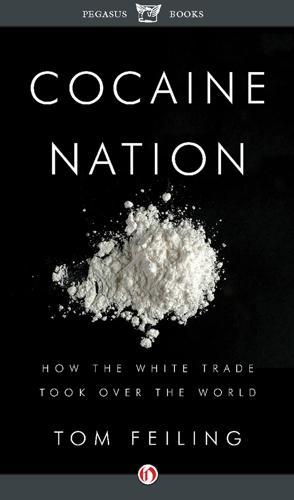
Cocaine Nation: How the White Trade Took Over the World
by
Thomas Feiling
Published 20 Jul 2010
A study conducted in the United States in 1994 found that only 13 per cent of hard-core drug users who received help were able to reduce their use substantially, or kick it entirely.39 This may seem a demoralizingly low success rate, but it is far higher than that achieved by arresting, jailing, disenfranchising, and un-employing drug addicts. A study by the RAND Corporation in 1994 found that to achieve a 1 per cent reduction in cocaine consumption in the United States, the government could spend an additional $34 million on drug-treatment programmes, or twenty-three times as much ($783 million) on trying to eradicate the supply of cocaine from Colombia.40 Despite this vindication of the efficacy of drug-treatment programmes, provision in the United States is woefully inadequate.
…
Antonin Artaud, ‘Appeal to Youth: Intoxication-Disintoxication’, reproduced in Susan Sontag (ed.), Selected Writings, pt. 24 (Berkeley, CA: University of California Press, 1988). 39. C. P. Rydell and S. S. Everingham, Controlling Cocaine, prepared for the Office of National Drug Control Policy and the United States Army (Santa Monica, CA: Drug Policy Research Center, RAND Corporation, 1994), p. xvi. 40. Ibid. 41. Abt Associates, What America’s Users Spend on Illegal Drugs 1988–1998 (Washington, DC: ONDCP, Dec. 2000), p. 9, citing data from the Substance Abuse Mental Health Services Administration. 42. See Ministry of Health, Drug Policy in the Netherlands, September 2003. 43.
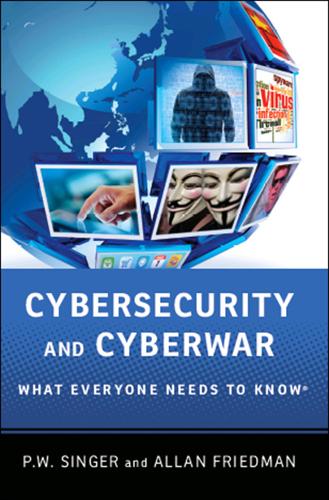
Cybersecurity: What Everyone Needs to Know
by
P. W. Singer
and
Allan Friedman
Published 3 Jan 2014
A new debate has emerged in recent years, with some arguing that in lieu of playing a never-ending game of whack-a-mole, trying to track and then shut down all terrorist use of the Internet, it might be better to let the groups stay. “You can learn a lot from the enemy by watching them chat online,” said Martin Libicki, a senior policy analyst at the RAND Corporation, a nonprofit research organization. The point is that the advantages of cyberspace for terrorism can be equally useful for counterterrorism. The Web has aided terrorist groups by acting as both a Rolodex and playbook. But those on the other side of the fight have access to the same Rolodex and playbooks.
…
Fort Benning, Georgia Cheryl Rodewig, “Geotagging Posts Security Risks,” US Army, March 7, 2012, http://www.army.mil/article/75165/Geotagging_poses_security_risks/. WHAT ABOUT CYBER COUNTERTERRORISM? “a link for download” Adam Rawnsley, “‘Spyware’ Incident Spooks Jihadi Forum,” Danger Room (blog), Wired, September 1, 2011, http://www.wired.com/dangerroom/2011/09/jihadi-spyware/. for terrorists to target and kill Ibid. RAND Corporation Warrick, “Extremist Web Sites Are Using U.S. Hosts,” p. A01. “mysteriously resurfaced” Rawnsley, “‘Spyware’ Incident Spooks Jihadi Forum.” Mujahideen Secrets 2.0 Ibid. “housewife-next-door” genre Fenton, “Student’s Web Site Hacked by al-Qaida.” SECURITY RISK OR HUMAN RIGHT?
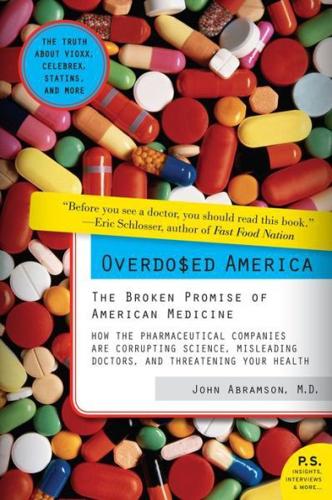
Overdosed America: The Broken Promise of American Medicine
by
John Abramson
Published 20 Sep 2004
If one of the goals of medical care is to prevent disease, then don’t doctors have a professional responsibility to address the unique health needs, habits, and risks of each individual patient? Unfortunately, the training and culture of medicine leave many doctors feeling that this is too mundane, not worthy of their skills or time. In fact, a study done by researchers from the Rand Corporation, published in the NEJM in December 2003, shows that doctors provide appropriate counseling to their patients only 18 percent of the time. If our model of heart disease prevention is dominated by reducing the number of LDL cholesterol particles migrating through arterial walls, then certainly the proper focus of care is the individual patient.
…
The failure of the market to serve Americans’ medical needs is certainly demonstrated by the combination of our poor health status compared with that of other industrialized countries, the low quality of our medical care (barely half of the standards for basic medical care are being met, according to a study done by the Rand Corporation and published in the NEJM in December 2003), and the singularly high cost of our medical care. But these are just symptoms of a more fundamental problem, which is not market failure, but market success. The medical industries have thrived as health care spending in the United States increased more than fivefold and the percentage of our GDP devoted to health care rose from 8.8 to 15.5 between 1980 and 2004.
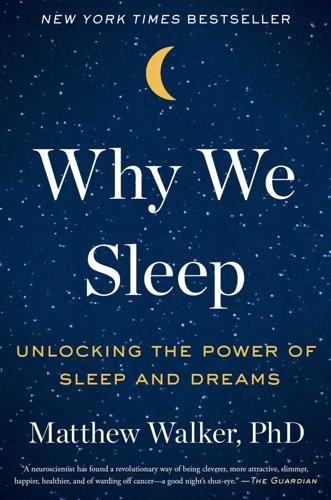
Why We Sleep: Unlocking the Power of Sleep and Dreams
by
Matthew Walker
Published 2 Oct 2017
That may sound trivial, but speak to the bean counters that monitor such things and you discover a net capital loss to these companies of $54 million annually. Ask any board of directors whether they would like to correct a single problem fleecing their company of more than $50 million a year in lost revenue and the vote will be rapid and unanimous. An independent report by the RAND Corporation on the economic cost of insufficient sleep offers a sobering wake-up call for CFOs and CEOs.II Individuals who sleep fewer than seven hours a night on average cause a staggering fiscal cost to their country, compared to employees who sleep more than eight hours each night. Shown in figure 16A, inadequate sleep costs America and Japan $411 billion and $138 billion each year, respectively.
…
Both of these global tragedies were entirely preventable. The same is true for every sleep-loss statistic in this chapter. * * * I. National Sleep Foundation, 2013 International Bedroom Poll, accessed at https://sleepfoundation.org/sleep-polls-data/other-polls/2013-international-bedroom-poll. II. “RAND Corporation, Lack of Sleep Costing UK Economy Up to £40 Billion a Year,” accessed at http://www.rand.org/news/press/2016/11/30/index1.html. III. W. B. Webb and C. M. Levy, “Effects of spaced and repeated total sleep deprivation,” Ergonomics 27, no. 1 (1984): 45–58. IV. M. Engle-Friedman and S. Riela, “Self-imposed sleep loss, sleepiness, effort and performance,” Sleep and Hypnosis 6, no. 4 (2004): 155–62; and M.
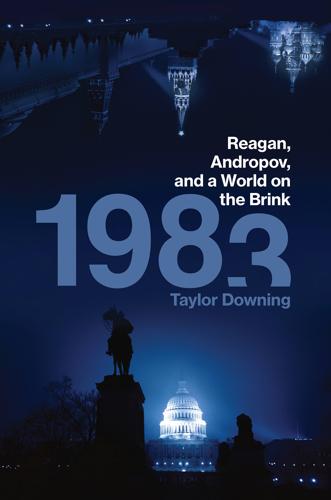
1983: Reagan, Andropov, and a World on the Brink
by
Taylor Downing
Published 23 Apr 2018
It is now known that several of the missile sites were operative and fully armed by the time the US discovered them. An attack on the sites would no doubt have provoked a nuclear retaliation against the US mainland, and this would almost certainly have triggered a nuclear Armageddon.11 Robert McNamara, Kennedy’s Secretary of Defense, brought several strategists from the RAND Corporation, a defence think-tank, into the Pentagon. He came up with a new concept called ‘Assured Destruction’. Neither side would attack the other because they knew it was suicidal: if one superpower attacked, the other had enough nuclear capacity to strike back, causing massive destruction. Someone added the word ‘Mutual’ to this new phrase, and ‘Mutual Assured Destruction’, better known by its acronym MAD, became one of the central tenets underpinning the Cold War.
…
Edgar 24 House Un-American Activities Committee (HUAC) 24 Howe, Sir Geoffrey 211, 218, 259, 270, 271, 272, 288 Hubbard, Carroll 149 human intelligence (HUMINT) operations 82 human rights issues 14, 48–9, 114, 270, 303, 306, 313, 314, 322 Hungary 42, 264 Hungarian Revolution 43–4 political reforms 328 HVA 128, 129, 130, 131, 133, 134, 135, 251–2, 253, 336 and Operation RYaN 85–6 hybrid warfare 342 Ikle, Fred 142 India, nuclear arsenal 343 intercontinental ballistic missiles (ICBMs) 9, 12–13, 34, 53, 60, 194, 198, 239, 313 Intermediate Nuclear Force (INF) Treaty 320, 321–2, 333 verification processes 322 intermediate-range ballistic missiles (IRBMs) 13 Iran 209 Iranian Revolution 29, 202 Tehran embassy hostage crisis 20, 29 Iran-Contra scandal 319–20 Iraq, US military incursions 342, 343 Irgun 203 Iron Curtain 23, 24, 332 Islamic fundamentalism 76, 202, 209, 323 Israel Israel Defence Forces (IDF) 203–4, 205, 206–7 Israeli Air Force 205 nuclear arsenal 343 Israeli-Palestinian conflict 202–9 Ivy League 82 exercise 59, 61–3, 97 Japan Hiroshima and Nagasaki 1–4, 93 listening stations 161–2, 183 Joan (MI6 case officer) 121–2, 291 John Birch Society 149 Johnson, Lyndon B. 26 Jones, General David 56 Jones, Nate 348–9 Kádár, János 43 Kalinin 159 Kalugin, Oleg 85, 240 Kamchatka peninsula 136, 138, 139–40, 155, 156, 157, 158, 159, 160, 168, 180, 183 Kardunov, Marshal Alexandr 163 Karelian Republic 40–2 Kazakhstan 5, 333, 334 KC-135 tanker aircraft 191 Kennedy, John F. 10, 11, 320 Kennedy, Robert 114 KGB 43, 45–7, 49, 338 and the Able Archer 83 exercise 250–1 Andropov as head of 35, 45, 46–7, 48, 69, 74, 80, 83, 106, 341 directorates 73 First Chief Directorate (FCD) (Foreign Intelligence) 73–4 foreign residencies 46, 81, 118–20, 122–5, 218, 227, 228, 277, 278, 279 intelligence successes 125–8, 134–5 moles within see Gordievsky, Oleg; Martynov, Valery; Vetrov, Captain Vladimir role 45–6, 70 see also Operation RYaN Kharbarovsk 161, 163, 164 Khomeini, Ayatollah 29, 202 Khrushchev, Nikita 9, 10, 42, 43, 45 Cuban missile crisis 11, 114 denounces Stalin 42 Kim Eui-dong 150, 152 Kirghizia 333 Kirkpatrick, Jeane 183 Kissinger, Henry 99, 114 Kline, Major John 56 Kohl, Helmut 319 Korean Air Lines (KAL) Flight 007 149–56, 157–88, 165 downing of 157–69 intelligence community’s verdict on 187 Soviet defence of action 181–2, 183–5, 186–7, 216 Soviet propaganda disaster 176–7, 180 US response 169–79, 187–8 Kosygin, Aleksei 68–9 Kremlinologists 37, 214 Kryuchkov, Vladimir Aleksandrovich 74, 75, 80, 127, 229, 255, 279, 281, 282, 333 Kuklinski, Colonel 110–11 Kulikov, Marshal Viktor 248 Kuntsevo Clinic 234–5, 236, 242, 250, 255, 275 Kurchatov, Igor 5 Kurile islands 136, 139, 155, 171, 187 labour camps 46 Lang, Admiral 137 Laos 29 Latvia 329 Launch Under Attack option 15, 60, 238–9 Leahy, Patrick 176 Lebanon 202–9, 220 Israeli bombardment of Beirut 205–7, 228 Israeli invasion of 203–4 Multinational Force 206, 207, 208, 209 UN peacekeepers 203 Lee Kuan Yew 259 LeMay, General Curtis 8 Libya 110, 310 limited nuclear war concept 10, 15, 55, 88, 343 Line X operation 123, 143, 144, 285 listening stations 163–4, 168, 170, 176, 183, 217, 227, 231, 267–8 lithium H-bomb 7–8 Lithuania 329 Lockheed 54 Lokot, Sergei 246–7 Los Angeles Olympic Games (1984) 268 Lubyanka 46, 284 M-1 Abrams Main Battle Tank 53 McDonald, Larry 149–50, 171 McFarlane, Robert ‘Bud’ 208–9, 262, 297, 320 and Able Archer exercise 231, 260, 261, 265–6 and SDI 99, 100 McNamara, Robert 12 malware 144–5 Manchuria 4, 330 Mao Zedong 44–5 Martynov, Valery 285–6 Marxism-Leninism 36, 45, 50, 65, 69, 71, 134 maskirovka 160, 227, 253 Massive Retaliation doctrine 8, 9, 10 Matlock, Jack 312 Mauroy, Pierre 37 Meese, Edwin 32, 169 MI6 (British Secret Intelligence Service) 110, 121, 122, 126, 281, 336 exfiltration of Oleg Gordievsky 286–92 MiG 204, 205 MiG-23 248 military-industrial complex 74, 303, 310 Minsk 138 Minuteman missiles 195 Misawa 162, 170, 171, 172 missile silos 13, 194, 195, 200, 239, 242–3 Mitterrand, François 143 Moldavia 333 Mondale, Walter 269 Mons 223–4, 225, 229, 250, 256 Moorestown 193 Morrow, Douglas 91 Moscow Olympics (1980) 30, 49, 268 Moscow summit (1988) 323–5 Mozambique 29 Mujahideen 76, 77, 110, 310, 323 multiple independently targetable re-entry vehicles (MIRVs) 12, 242, 244 Munich Olympic Games (1972) 203 Murmansk 126 Mutual Assured Destruction (MAD) 12, 13, 15, 17, 63, 93, 97, 103, 114, 344 MX missiles 53, 98, 99 Nagasaki, bombing of (1945) 4, 93 Nagy, Imre 43 Nakasone, Yasuhiro 183 National Association of Evangelicals 66 National Command Authority 241 National Emergency Airborne Command Post (Boeing 747) 59, 61 National Intelligence Council 269 National Military Command Center 61, 91, 193 National Security Advisors 189, 309, 320 National Security Agency (NSA) 141, 156, 161, 187, 258, 299 expansion of 54–5 National Security Archive (NSA) 17, 348–9, 350 National Security Council 144, 145, 208, 209, 231 NATO 55, 82, 86, 88, 100, 124, 126, 127, 130, 131, 140, 318, 320 Abel Archer 83 exercise 222–56, 344 Allied Command Europe (ACE) 222 Autumn Forge 83 exercises 223 Current Intelligence Group 131 East German agent in 130–5 MC 161 document 132–3 Political Affairs Directorate 131 response to SDI 134 neo-Nazis 129 Nicaragua 29, 70, 319, 323 Contras 110, 319–20 Nicholson, Major Arthur 295–6 Nine Lives exercise 61, 63 9/11 241 1983–The Brink of Apocalypse (documentary) 346 Nitze, Paul 313 Nixon, Richard 32, 114, 298, 320 anti-ballistic missiles (ABM) Treaty 92 signs Strategic Arms Limitation Treaty (SALT I) 13 Watergate 14, 28, 74 NKVD 5 nomenklatura 70, 220 North American Air Defense Command (NORAD) 90–1, 145, 189, 190, 193 North Korea 4, 44 nuclear capability 343 North, Lieutenant-Colonel Oliver 320 Norway 126, 127 intelligence service 157 Norwegian Labour Party 127 nuclear accidents 190–2 Chernobyl nuclear disaster 310–11 nuclear arms race 6–9, 12–13 nuclear arsenal 200 Soviet 223 US 8 nuclear ‘football’ system 55–6, 240–1 Nuclear Freeze peace movement 96, 103 Nuclear Non-Proliferation Treaty 13 nuclear war Counterforce strategy 10 Defense Readiness Condition (DEFCON) 204, 230 false alerts 189–201, 239 Launch Under Attack option 15, 60, 238–9 limited nuclear war 10, 15, 55, 88, 343 Massive Retaliation doctrine 8, 9, 10 Mutual Assured Destruction (MAD) 12, 13, 15, 17, 63, 93, 97, 103, 114, 344 probable consequences 8, 60, 63, 68, 248–9 protocols for launching nuclear weapons 10, 15–16, 55–6, 62–3, 240–1 simulated nuclear attack 61–2 Withhold Options 60 nuclear war scare (1983) 344 Able Archer 83 exercise and 222–56, 344 CIA report on 339–40 Soviet arsenal on maximum alert 16, 240, 242, 243–9, 255, 257, 307 Soviet paranoia and miscalculation 16, 224, 227–9, 232–3, 239, 240, 242, 250–1, 254, 256, 258–61, 344 nuclear winter 16, 249 Nyerere, Julius 259 Obama, Barack 256, 343 observation satellites 90, 111, 194–5, 196, 248, 256 October War (1973) 204, 230 Odom, William 189 Office of Strategic Services (OSS) 107 Ogarkov, Marshal Nikolai 73, 183–4, 184, 198, 236, 241, 245, 250, 255 oil and gas pipelines 65, 143, 145, 285 Okinawa 138 Oko satellite network 194–5 O’Malley, General 173 ‘open labs’ proposal 304, 314 Operation Barbarossa 80–1, 247 Operation Chrome Dome 190–2 Operation RYaN 80, 81–7, 88, 105, 118, 124–5, 216, 217–18, 227, 228–9, 237, 251, 255, 257, 340 categories of intelligence 81–2 confirmation bias 81, 86 information processing 83–4 spurious reports 81, 84, 86, 124–5, 227–8, 250–1 Organisation of Eastern Caribbean States 210 Ossipovich, Major Gennady 162–3, 164–7, 168, 178, 184–5 Pakistan, nuclear arsenal 343 Palestine Liberation Organisation (PLO) 203–4, 205, 206 Palestinian-Israeli conflict 202–9 Palmerston, Lord 273 Palomares incident (1966) 191–2 Parr, Jerry 56–7 Partial Test Ban Treaty 13 peace movement 66, 95–7, 96, 103, 123–4, 237 Pelše, Arvids 214 Pentecostal Christians 59, 116 perestroika 311, 325, 329 Perroots, Lieutenant-General Leonard 253–5 Pershing II missiles 14, 53, 78, 79, 88, 94, 95, 123, 135, 216, 220, 239, 258, 270, 299, 309, 319, 321 Petropavlosk 138, 158 Petrov, Lieutenant-Colonel Stanislav 195–200, 239 Pfautz, Major General James 172–3 Phalangist militiamen 207 Philby, Kim 278, 292 PL-5 missiles 157 plutonium implosion bomb 4, 6 Podgorny, Nikolai 69 Poindexter, Admiral John 320 Poland 65, 94 political reforms 328 popular protests 42–3 Solidarity 65, 110, 111, 328 Polaris 13 Politburo 34, 47–8, 64, 70, 76, 78, 181, 214, 215, 236, 255, 264, 275, 312, 317, 319 Prague Spring 47 President’s Foreign Intelligence Advisory Board (PFIAB) 339, 349–50 protective missile system see Strategic Defense Initiative (SDI) psychological operations (PSYOPS) 139–43, 147, 162, 182, 187, 310, 340 Putin, Vladimir 341 Pym, Francis 37 radiation sickness 3–4, 249 radioactive contamination 192 RAF Lakenheath 190 Ramstein Air Force Base 253 RAND Corporation 12 RC-135 spy planes 140–1, 156–7, 170, 178, 182 Reagan, Nancy 19, 25, 32, 66, 114, 302, 306 Reagan, Ronald 108 and Able Archer 83 exercise 231–2, 261, 262, 263, 265–6 anti-communism and anti-Soviet rhetoric 23, 24, 25, 26, 30–1, 51–2, 64–7, 77–8, 93, 94–5, 110, 114–15, 116, 177, 182, 216, 266 appearance and personality 21, 22, 33 approval ratings 28, 97, 265, 323 approves technological sabotage 144 attempted assassination of 56–8 background of 20–2 belief in personal diplomacy 51, 93–4, 268 ‘bombing Russia’ poor-taste joke 267–8 and Brezhnev 59 Cold War warrior 31, 267, 321 on the decision to launch nuclear weapons 15–16 demands Berlin Wall be pulled down 321 diary entries 64–5, 98, 99–100, 102, 116, 206, 262, 268, 294, 308 and the downing of KAL 007 169, 174, 177, 178, 179, 182, 188 economic policies 27–8, 31 elected President 15, 31–2 ‘evil empire’ rhetoric 66–7, 89, 117, 176, 182, 216, 324 film career 22, 25–6, 301 Geneva summit 297–9, 300–9, 305 Governor of California 27–8 ‘Great Communicator’ 268 and human rights issues 114, 270, 303, 306, 313, 314, 322 and invasion of Grenada 210, 211, 212 and Israeli-Palestinian conflict 202–9 leadership style 27 and Margaret Thatcher 211–12 meets Gordievsky 337, 337 Moscow summit 323–5 and nuclear policy 51, 58–9, 63–4, 91–3, 97–101, 103–4, 114, 261 political philosophy 22–3, 26 populism 19, 27, 33 president of Screen Actors Guild 24, 25 presidential inauguration 19–20, 21, 32–3 protocol for launching nuclear weapons 55–6, 62–3 re-election 265, 266–7, 269 Reykjavik summit 311, 312–18, 317 and SDI 98, 99–105, 117, 134, 298, 306, 313–14, 324 secret meeting with Soviet ambassador 115–17 signs INF Treaty 321 spouses see Reagan, Nancy; Wyman, Jane suggests rapprochement with Soviet Union 266–7, 268, 294 and total abolition of nuclear weapons 51, 93, 315, 318 visits Berlin 320–1 visits London 65 visits NORAD base 90, 91 war games, participation in 61–3, 62, 97, 262 Washington summit 321–3 Reagan Doctrine 110 Red Integrated Strategic Offensive Plan (RISOP) 55, 60 Red Scares 23, 24–5 Reed, Thomas 61, 62, 143–4 Reforger 83 exercise 223 Regan, Don 208 reunification of Germany 332 Rex 82 Alpha exercise 61, 63 Reykjavik summit 311, 312–18, 317 Rivet Joint operations 141, 162 Rogers, William 61 Romania 332 Romanov, Grigory 238, 270 Roosevelt, Franklin D. 27, 146 Rubin, Professor 213 Rupp, Rainer 128–34, 135, 251–3, 336 Russia 334 hybrid warfare capabilities 342 military exercises 342 Sabra and Shatila massacres (1982) 207 Sadat, Anwar 202 Sakhalin island 136, 160, 168, 171, 172, 173, 180, 183, 184 Sakharov, Andrei 48 Sandinistas 29 Saudi Arabia 208, 343 Scarlett, John 121, 125, 218, 259 Schmidt, Helmut 94 Schneider, Dr William 142 Scowcroft, Brent 327 Screen Actors Guild 24, 25 Sea of Okhotsk 136, 138, 156, 159, 162, 168, 180, 187, 299 Second World War 40–1, 107, 146, 255 end of 4 German invasion of Soviet Union 40, 80–1, 247 Serpukhov-15 194, 195–200 Severomorsk 245 Sharansky, Anatoly 49 Sharon, Ariel 203, 207 Shchelokov, Nikolai 88 Shemya 156, 157 Shevardnadze, Eduard 297, 309, 313, 320, 330 Shultz, George 37, 113–16, 117, 146–7, 208, 219, 262 and the downing of KAL 007 169, 174, 175, 176, 179, 185 and the Geneva summit 297, 303 on Gorbachev 295 and the Intermediate Nuclear Force (INF) Treaty 320 meets with Gromyko 185, 240, 296–7 meets with Shevardnadze 320 and the Reykjavik summit 313, 314, 315, 318 and SDI 100, 298 and the Soviet ‘peace offensive’ 309 signals intelligence (SIGINT) 82, 141, 170, 176, 183 Single Integrated Operational Plan (SIOP) 10, 11, 55, 56, 60, 62, 262 Six Day War (1967) 203 ‘snap-ons’ 161, 163, 164, 170 Snow, Jon 324 Sokol 164 Solidarity 65, 110, 111, 328 Solzhenitsyn, Alexander 48 Son Dong-hui 150, 155, 161, 166, 167 South Korea 138 South Korean Navy 137 US-South Korean Mutual Defense Treaty 149 Soviet Air Force 247–8 expansion of 138 Far East Air Defence Command 139, 158, 162, 163, 180–1 Soviet embassy, London 81, 118–20, 122, 218, 228, 279 Soviet embassy, Washington 81, 277, 278 Soviet Far East 136–40, 137, 149–88 Soviet missile systems intercontinental ballistic missiles (ICBMs) 9, 34, 194, 239 PL-5 missiles 157 SS-18 missiles 90 SS-19 missiles 242 SS-20 missiles 29, 53, 75, 75, 78, 94, 238, 244, 254, 299, 309, 314, 321 SS-N-8 missiles 246 SS-N-20 missiles 246 surface-to-air missiles (SAMs) 161 Soviet Navy Northern Fleet 126, 140, 245, 246 Pacific Fleet 138 submarine fleet 245–7 Soviet Union anti-Jewish purges 46 centralised planning 6, 69 civil defence programme 30 communist orthodoxy 36–7 Congress of People’s Deputies 329 corruption and organised crime 87–8, 333 defence budget 30 dismantling of 329, 333 economic stagnation 37, 48, 50, 64–5, 69, 71, 111 Five Year Plans 39–40 German invasion of 40, 80–1, 247 Great Terror 36, 39–40 human rights issues 14, 48–9, 114, 270, 303, 306, 313, 314, 322 intelligence community see GRU; KGB; SVR invasion and occupation of Afghanistan 30, 76–7 and the Israeli-Palestinian conflict 204–5 Kremlin nuclear paranoia 85, 86, 112, 125, 233, 238, 240 see also Able Archer 83 exercise; Operation RYaN Middle East policies 220 military strength and personnel 222–3 nuclear arsenal 223 nuclear programme 4–6, 8, 9, 12 office of head of state 35, 36 oil and gas pipelines 65, 143, 285 outrage over Strategic Defence Initiative (SDI) launch 104–5, 106 political reforms 311–12, 329 post-Soviet problems 333 post-war reconstruction 41 reduced nuclear stockpile 333–4 reduction of Soviet forces in Europe 328, 333–4 Second World War 4, 40–1, 80–1, 247, 255 Sino-Soviet relations 44, 45, 220, 330 social conditions 69–70 support for global liberation struggles 29, 30, 52, 70, 94, 109, 301 suspected of influencing American presidential elections 269, 342 suspicion and fear of the West 14, 71–2, 73, 78, 80, 85, 240 technology gap 72, 73, 104, 120, 143, 144 The Soviet War Scare, 1983 (documentary) 346 Soyuz spacecraft 14 space weapons see Strategic Defense Initiative (SDI) Speakes, Larry 169, 176 Sputnik 9, 194 SS-18 missiles 90 SS-19 missiles 242 SS-20 missiles 29, 53, 75, 75, 78, 94, 238, 244, 254, 299, 309, 314, 321 SS-N-8 missiles 246 SS-N-20 missiles 246 stagflation 28–9 Stalin, Joseph 5, 23, 24, 35, 146, 237, 329 anti-Jewish purges 47 death of 42 and the Great Terror 36, 39–40 ‘Star Wars’ see Strategic Defense Initiative (SDI) Stasi 85, 128, 130, 133, 335 Stewart, Nina 349 Stinger anti-aircraft missiles 310 Stombaugh, Paul, Jr 284 Strategic Arms Limitation Treaty (SALT I) 13, 14, 94, 156 Strategic Arms Limitation Treaty (SALT II) 30, 77 Strategic Arms Reduction Talks (START) 94, 105, 270, 334 Strategic Defense Initiative (SDI) 103 costs 102 Geneva summit and 298, 299, 304 Gorbachev’s hostility to 273, 298, 299, 304, 305, 306, 309, 313, 314, 315, 316, 319 ‘open labs’ proposal 304, 314 origins of 97–100 proposed limits on 313 public attitudes towards 102 Reagan’s enthusiasm for 98, 99–105, 117, 134, 298, 306, 313–14, 324 Soviet fears of 104–5, 106, 117, 216 ‘strip alert’ 248, 254 Su-24 248 submarines Delta class 138, 246 nuclear weapon-carrying submarines 13, 136, 140, 200, 246 Ohio class 54 Typhoon class 246 suicide bombers 208–9 Supreme Headquarters, Allied Powers Europe (SHAPE) 223, 229 surface-to-air missiles (SAMs) 140–1, 161 Suslov, Mikhail 45 SVR 285, 334 Symms, Steve 149 Syria 204, 205, 209, 220 Syrian Air Force 205 systems failures 192, 193, 200, 201, 239 T-72 tank 204 Tadzhikistan 333 Taliban 77, 323 Tass news agency 182 Tehran embassy hostage crisis (1979–81) 20, 29 telemetry intelligence (TELINT) 156 Teller, Edward 6–7, 97–8, 101 ter Woerds, Margreet 347 terrorism 108–9 Thatcher, Denis 272 Thatcher, Margaret 124, 134, 210, 211–12, 217, 218, 231, 259, 264, 293 and British–Soviet relations 270 and Gordievsky 337, 338 meets Gorbachev 272–4, 274 on nuclear deterrence 318–19 thermonuclear weapons 7–8, 45, 190–1 Thor missiles 13 Thule 192 Tiananmen Square massacre (1989) 330 Titan missiles 13 Titov, Gennadi 127 Tkachenko, Captain Viktor 243–4 Tolkachev, Adolf 283–4 Tomahawk Cruise missiles 53 Topaz see Rupp, Rainer Treholt, Arne 127–8 Trident missiles 54, 319 ‘Trinity’ atomic test 5 Tripoli 310 ‘Trojan horses’ 144–5 Trudeau, Pierre 271 Truman, Harry 6, 7, 107 Trump, Donald 31, 269, 342, 343 Tsygichko, Vitalii 239 Tupolev TU-22M ‘Backfire’ bomber 138, 247 United States budget deficit 55, 102 Ukraine 333, 334, 341 United Nations 185 Lebanese operations 203 peacekeeping force (UNIFIL) 203 Security Council 183 United States declining superpower role 342–3 defence budget 52, 66, 79, 342 intelligence community see Central Intelligence Agency (CIA); National Security Agency (NSA); Office of Strategic Services (OSS) and the Israeli-Palestinian conflict 203–4 military rearmament 52–4, 116 military-industrial complex 74, 303, 310 nuclear arsenal 8 nuclear programme 6–8, 9, 12 peace movement 66, 96, 96, 103 Red Scares 23, 24–5 Second World War 107 Washington KGB residency 81, 277, 278 US Air Force Air Force Intelligence 172–3, 178 PSYOPS 140–1, 142 Strategic Air Command 8, 10, 58, 90–1, 156, 190–1, 193 US Marines 206, 207, 208, 209, 210, 212, 217 US missile systems anti-ballistic missiles (ABMs) 12, 13 Cruise missiles 53, 78, 88, 94, 95, 123, 135, 216, 220, 258, 270, 299, 309, 321 intercontinental ballistic missiles (ICBMs) 12–13, 53, 198 Minuteman missiles 195 multiple independently targetable re-entry vehicles (MIRVs) 12 MX missiles 53, 98, 99 Pershing II missiles 14, 53, 78, 79, 88, 94, 95, 123, 135, 216, 220, 239, 258, 270, 299, 309, 319, 321 Stinger anti-aircraft missiles 310 submarine-launched ballistic missiles 13 surface-to-air missiles (SAMs) 140–1 Trident missiles 54 Vanguard missiles 9 US Navy 142 expansion 54, 138 Pacific Fleet 138 PSYOPS 142 US presidential elections 1964 26 1976 28 1980 30–1 1984 265–9 2016 269, 342 suspected Soviet influence 269, 342 USS Coral Sea 137 USS Eisenhower 140 USS Enterprise 136–7 USS Midway 137, 139 USS New Jersey 208 Ustinov, Marshal Dmitri 34–5, 87, 180, 181, 198, 215, 236, 241, 242, 255 US-South Korean Mutual Defense Treaty 149 Uzbekistan 333 Vanguard missiles 9 Velikhov, Yevgeny 104 Velvet Revolution 332 Vessey, Admiral 262 Vetrov, Captain Vladimir 143 Vietnam war 27, 29 Vladivostok 138 Volk Field Air Base 192–3 Wakkanai 162, 168, 170, 172, 174 Warsaw Pact 43, 47, 55, 86, 88, 132, 222, 318 Washington summit (1987) 321–3 Watergate 14, 28, 74 Watkins, Admiral James D. 98–9, 139–40 Weinberger, Caspar 32, 52, 58, 100, 131, 179, 262, 296, 320 Weiss, Dr Gus 144, 145 West Germany 14, 128, 319 peace movement 95 Winter War (1939–40) 40 Withhold Options 60 Wolf, Markus 85, 86, 135, 335 Wright, Oliver 260 Wyman, Jane 22, 25 Yeltsin, Boris 329, 333, 338 Yesin, General-Colonel Ivan 245 Yom Kippur War (1973) 204, 230 Yugoslavia 44 Yurchenko, Vitaly 299–300 Zapad 17 exercise 342 Zeleny 139 zero-zero option 94–5, 315, 316, 318, 321, 321–2 Zil limousines 74, 111, 112, 236 Zionists 74, 202, 203 US lobby 204 Zubok, Vlad 348
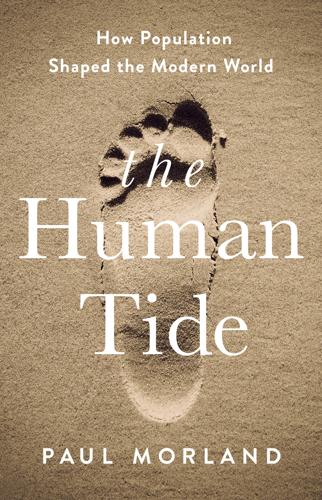
The Human Tide: How Population Shaped the Modern World
by
Paul Morland
Published 10 Jan 2019
, London, Allen & Unwin, 1945 Macfarlane, Alan, The Savage Wars of Peace: England, Japan and the Malthusian Trap, Oxford, Blackwell, 1997 MacKellar, Landis, Ermolieva, Tatiana, Hoclacher, David, and Mayhew, Leslie, The Economic Impact of Population Ageing in Japan, Cheltenham, Edward Elgar, 2004 McLaren, Angus, Birth Control in Nineteenth Century England, London, Croom Helm, 1978 McNeill, William, Plagues and People, Oxford, Basil Blackwell, 1976 Macunovich, Diane J., Birth Quake: The Baby Boom and its Aftershock, Chicago University Press, 2002 Maddison, Angus, Phases of Capitalist Development, Oxford University Press, 1982 Mahdi, Mushin, Ibn Khaldun’s Philosophy of History, Abingdon, Routledge, 2016 Malthus, Thomas, The Works of Thomas Robert Malthus, vol. 1, An Essay on the Principle of Population, London, William Pickering, 1986 Maluccio, John, and Duncan, Thomas, Contraception and Fertility in Zimbabwe: Family Planning Services and Education Make a Difference, Santa Monica, Rand Corporation, 1997 Marshall, Alex, The Russian General Staff and Asia 1800–1917, London and New York, Routledge, 2006 Marshall, Monty G., and Gurr, Ted Robert, Peace and Conflict: A Global Survey of Armed Conflicts, Self-Determination Movements and Democracy, Centre for International Development and Conflict Management, University of Maryland, 2005 Martin, George, ‘Brazil’s Fertility Decline 1965–1995: A Fresh Look at Key Factors’, in Martine, George, Das Gupta, Monica, and Chen, Lincoln C., Reproductive Change in India and Brazil, Oxford University Press, 1998, pp. 169–207 Meacham, Carl, and Graybeal, Michael, Diminishing Mexican Immigration into the United States, Lanham, MD, Rowman & Littlefield, 2013 Merk, Frederick, Manifest Destiny and Mission in American History, New York, Alfred A.
…
L., ‘Population Dynamics and Susceptibility for Ethnic Conflict: The Case of Bosnia and Herzegovina’, Journal for Peace Research, 28 (2), 1998, pp. 139–61 Smith, James P., and Edmonston, Barry (eds), The New Americans: Economic, Demographic and Fiscal Effects of Immigration, Washington DC, National Academy Press, 2007 Smitka, Michael (ed.), Japanese Economic History 1600–1960: Historical Demography and Labor Markets in Prewar Japan, New York and London, Garland, 1998 Snyder, Timothy, Bloodlands: Europe Between Hitler and Stalin, London, The Bodley Head, 2010 Soloway, Richard Allen, Birth Control and the Population Question in England, 1877–1930, Chapel Hill, University of North Carolina Press, 1982 Sporton, Deborah, ‘Fertility: The Lowest Level in the World’, in Noin, Daniel, and Woods, Robert (eds), The Changing Population of Europe, Oxford, Blackwell, pp. 49–61 Statistics Canada, Women in Canada: A Gender-Based Statistical Report, 2011, http://www.statcan.gc.ca/pub/89-503-x/89-503-x2010001-eng.pdf Statistics New Zealand, Demographic Trends: 2011, 2012, http://stats.govt.nz/browse_for_stats/population/estimates_and_projections/demographic-trends-2012.aspx , Major Ethnic Groups in New Zealand, 2013, http://www.stats.govt.nz/Census/2013-census/profile-and-summary-reports/infographic-culture-identity.aspx Stockwell, Edward G., Population and People, Chicago, Quadrangle Books, 1968 Stoddard, Lothrop, The Rising Tide of Color Against White World-Supremacy, New York, Charles Scribner’s Sons, 1920 Stolper, Gustav, The German Economy 1870 to the Present, London, Weidenfeld & Nicolson, 1967 Stone, Norman, World War Two: A Short History, London, Allen Lane, 2013 Sunak, Rishi, and Rajeswaran, Sarath, A Portrait of Modern Britain, London, Policy Exchange, 2014 Suny, Ronald Grigor, They Can Live in the Desert but Nowhere Else: A History of the Armenian Genocide, Princeton University Press, 2015 ‘Sydney’, ‘The White Australia Policy’, Foreign Affairs, 4 (1), 1925, pp. 97–111 Szayna, Thomas S., The Ethnic Factor in the Soviet Armed Forces: The Muslim Element, Santa Monica, CA, Rand Corporation, 1992 Szporluk, Roman, Russia, Ukraine and the Breakup of the Soviet Union, Stanford, CA, Hoover Institution Press, 2000 Tabutin, Dominique, ‘Les Relations entre pauvreté et fécondité dans les Pays du Sud et en Afrique-Sub-Saharienne–bilan et explications’, in Ferry, Benoît, L’Afrique face à ses défis démographiques: un avenir incertain, Paris, Agence Française de Développement, 2007, pp. 253–88 Tarver, James D., The Demography of Africa, Westport, CT, Praeger, 1996 Tauber, Irene B., The Population of Japan, Princeton University Press, 1958 Teitelbaum, Michael, The British Fertility Decline: Demographic Transition in the Crucible of the Industrial Revolution, Princeton University Press, 1984 , ‘U.S.
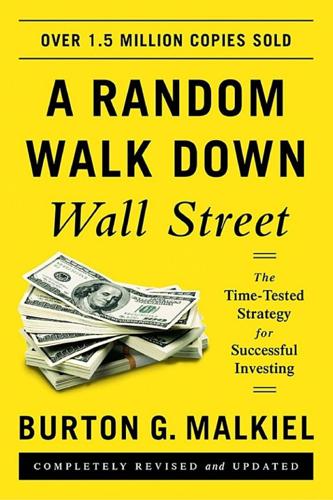
A Random Walk Down Wall Street: The Time-Tested Strategy for Successful Investing (Eleventh Edition)
by
Burton G. Malkiel
Published 5 Jan 2015
The theory was invented in the 1950s by Harry Markowitz, and for his contribution he was awarded the Nobel Prize in Economics in 1990. His book Portfolio Selection was an outgrowth of his PhD dissertation at the University of Chicago. His experience has ranged from teaching at UCLA to designing a computer language at RAND Corporation. He even ran a hedge fund, serving as president of Arbitrage Management Company. What Markowitz discovered was that portfolios of risky (volatile) stocks might be put together in such a way that the portfolio as a whole could be less risky than the individual stocks in it. The mathematics of modern portfolio theory (also known as MPT) is recondite and forbidding; it fills the journals and, incidentally, keeps a lot of academics busy.
…
Standard & Poor’s 500, 179, 181 see also specific funds Nagel, Stefan, 250 NASDAQ, 80–81, 82, 109, 128, 254 National Cash Register, 48, 53 national income changes, as element in systematic risk, 224 National Student Marketing (NSM), 67–68, 69 “naughties,” 344, 411 New Economy, 241, 249 accounting fraud in, 93–95 Internet-driven, 79–97, 104–5 New Economy stocks, 172, 177 New England Patriots, 148 new investment technology, 26, 31, 189–228 alpha in, 219 beta in, see beta CAPM in, see capital-asset pricing model MPT in, see modern portfolio theory risk in, 190 new issues, 257, 318 caution with, 75 of Internet stocks, 84–87 of 1959–62, 57–59 of 1980s, 70–75 Newsweek, 57 Newton, Isaac, 47 New Yorker, 88 New York Post, 89 New York State Teachers Association, 384 New York Stock Exchange (NYSE), 56, 109, 144, 151, 397 Babson Break in, 51–52 speculation in, 48–55 New York Times, 91, 393 Nifty Fifty, 36, 68–70 NINJA loans, 101 Nobel Prize, 35, 183, 197, 209 No-Brainer Step, 379, 380–82 NO-DOC loans, 101 no-equity loans, 100 Non-Random Walk Down Wall Street, A (Lo and MacKinlay), 139 Nortel Networks, 83, 90, 161, 166 NSM, see National Student Marketing NTT Corporation, 76 nucleus theory of growth, 64 NYSE, see New York Stock Exchange odd-lot theory, 149 Odean, Terrance, 93, 234, 246, 256 O’Higgins, Michael, 150 Once in Golconda (Brooks), 49 “one-decision” stocks, 69 online brokers, Internet bubble aided by, 91–92 online investment advisers, 408 OPEC, 337 open-end funds, 402 operating expenses, 402 option premiums, 39 O’Shaughnessy, James, 150 Outlook (S&P), 393 overconfidence, 231, 232–35 overtrading, 234, 255–56 PalmPilot, 83 Paternot, Stephen, 86 P/BV ratios, see price-to-book value ratios P/E effect, 263 P/E multiples, see price-earnings multiples pension funds, 167, 182, 184, 303–4 P/E ratios, see price-earnings multiples performance, 65–68 of buy-and-hold strategy, 158 of common stocks (1970s), 340 of concept stocks, 65–68 of mutual funds, 66, 174–82, 398–400 vs. future results in mutual funds, 399, 401 Performance Systems, 68, 69 Personal Digital Assistants (PDAs), 83 Peters, Thomas J., 233 Pets.com, 84 Philadelphia 76ers, 145 Phillips, Don, 400 Phoenix, University of, 169 Pittsburgh Steelers, 148 Polaroid, 68, 69, 161 Ponzi schemes: Internet investment as, 80, 242 of Madoff, 258–59 ZZZZ Best as, 74 portfolio management, 66, 160–61, 164, 170, 174–84, 261, 349–50, 351, 361–62, 366–67, 389, 398 see also “smart beta” Portfolio Selection (Markowitz), 197 portfolio theory, see modern portfolio theory positive feedback loops, 80 Pound, John, 253 PowerShares, 270, 281 Prechter, Robert, 151–52 present value, 32, 125n price-dividend multiples, 330, 340, 341, 343 price-earnings (P/E) multiples, 57, 64, 65, 126, 264, 274, 336, 344, 346–47, 394–95 of blue-chip stocks, 68 crash in (1970s), 340 cyclically adjusted (CAPE), 347, 387 of growth stocks, 121–23, 130–33, 406 of high-tech stocks, 81 inflation of, 64 performance and, 263, 396 see also performance, of common stocks (1970s); performance, of concept stocks Priceline.com, 83 price stability, 54 price-to-book value (P/BV) ratios, of stocks, 264, 270, 274 price-volume systems, 143–44 Price Waterhouse, 153 Princeton University, 161 probability judgments, 233–34, 238 Producers, The, 166 product asset valuation, 72 professional investors: limitations of, 162–63 profit-maximizing behavior, as argument against technical analysis, 116–17 profits, 339 in inflation, 339 measurement of, 339 profit-sharing plans, 304 Prohibition, 52 property taxes, 314 prospect theory, 243–45 prospectuses, warnings on, 59 PSI Net, 90 psychological factors in stock valuation, see castle-in-the-air theory; technical analysis Puckle Machine Company, 45 Puerto Rico, 404 purchasing power, effects of inflation on, 28–29, 125n, 307, 315 Purdue University, 82 Quandt, Richard, 140 quant, defined, 221n Quinn, Jane Bryant, 91 Qwest, 166 Radio Corporation of America (RCA), 48, 53 railroad industry, 91, 96 RAND Corporation, 197 Randell, Cortes W., 66–68 random events, forecasting influenced by, 164–65, 176 random walk: defined, 26–28, 139, 140 difficult acceptance of, 145–46 fundamental conclusion of, 154 summarized, 35–36 random-walk theory, 105–6, 266–67 assumptions of, 190, 229, 230 fundamental analysis and, 182–84 guide for, 291 and housing bubble, 105–6 index funds and, 379–80 role of arbitrage in, 248–49 semi-strong form of EMH, 26, 182–84 strong (broad) form of EMH, 26, 182–84 technical analysis and, 137–41, 154–57 weak (narrow) form of EMH, 26, 140, 183 Raptor, 94 rate of return: after inflation, 338 for bonds, 194–96, 307, 315–21, 342–43, 344, 345 in CAPM, 213–19 for common stocks, 194–96, 307 compounded, 351 diversification and, 198–200 expected, see expected rate of return future events and, 30, 343–48 high, for bearing greater risk, 194–96, 212–13, 350, 408 investment objectives and, 306–13 negative, 196 for real estate, 313 rebalancing to, 360 risk-free, 215–18 “small caps” vs.

The Origins of Political Order: From Prehuman Times to the French Revolution
by
Francis Fukuyama
Published 11 Apr 2011
.: Brookings Institution Issues in Governance Studies No. 34, April 2010). 11 See the chapters by Thomas E. Mann and Gary Jacobson in Pietro S. Nivola and David W. Brady, eds., Red and Blue Nation? Vol. 1 (Washington, D.C.: Brookings Institution Press, 2006); also James A. Thomson, A House Divided: Polarization and Its Effect on RAND (Santa Monica, CA: RAND Corporation, 2010). There is some debate on exactly how polarized the American public is; on many cultural issues, like abortion and guns, there is a broad centrist group without strong convictions, with far more committed minorities at either end of the spectrum. See Morris P. Fiorina et al., eds., Culture War?
…
“War, Rivalry, and State Building in Latin America.” American Journal of Political Science 49(3):451–65. Thomas, Melissa. 2009. “Great Expectations: Rich Donors and Poor Country Governments.” Social Science Research Network Working Paper. Thomson, James A. 2010. A House Divided: Polarization and Its Effect on RAND. Santa Monica, CA: RAND Corporation. Tiger, Lionel. 1969. Men in Groups. New York: Random House. Tilly, Charles. 1990. Coercion, Capital, and European States, AD 990–1990. Cambridge, MA: Blackwell. Tocqueville, Alexis de. 1998. The Old Regime and the Revolution, Vol. One. Chicago: University of Chicago Press. ———. 2000. Democracy in America.
…
Three Books Against the Simoniacs (Humbert of Moyenmoutier) Three Dynasties Three Gorges Dam Three Kingdoms Tibet Tiger, Lionel Tilly, Charles Time of Troubles Timor-Leste Tocqueville, Alexis de Togo Tokugawa shogunate Tolstoy, Leo Tonga Tönnies, Ferdinand Tower of Babel, biblical story of Transoxania Transparency International Transylvania tribal societies; Arab; Chinese; European; Indian; in Latin America; law and justice in; legitimacy in; military slavery and; mitigation of conflict in; persistence to present day of; property in; religion in; state-level societies compared to; transition from or band-level organization to; Turkish; warfare and conquest by; see also kinship; lineage; specific tribes Trivers, Robert Trobriand Islands Tudors Tunisia Tuoba tribe Turcoman tribes Turenne, Henri de La Tour d’Auvergne, Vicomte de Turgot, Anne-Robert-Jacques Turkana people Turkish Republic Turks; in Abbasid empire; in China; in Hungary; in India; in Transylvania; see also Ottoman Empire Tursun Bey Tylor, Edward Ukraine ulama Umar, Caliph Umayyad dynasty United Nations United States; accountability in; Afghanistan and; antistatist traditions in; bureaucracy in; during cold war; dysfunctional political equilibrium in; economic crises in; homicide in; invasion of Iraq by; Japan and; local governments in; military of; modernization theory in; patronage politics in; per capital spending on government services in; rule of law in; slavery in; South Korea and; taxation in Urban II, Pope urban centers, see cities Uthman, Caliph Uzbekistan Vaishyas Vanuatu Varangians Vedas Velasco, Andres Vena, King venal officeholding: in England; in France; in Russia; in Spain Venezuela Venice, republic of Vietnam Vikings Vinogradoff, Paul violence; in agrarian societies; in chimpanzee society; in China; as driver of state formation; in England; in France; in India; in prehistoric societies; property rights and; religion and; in Russia; in state of nature; see also war Vladimir, Prince Voltaire Vorontsov, Count Vrijjis, gana-sangha chiefdom of Wahhabism Wales Wallis, John Wang, Empress of China Wang family Wang Mang Wanli emperor waqfs (Muslim charity) war; civil, see civil war; counterinsurgency; financing of; institutional innovations brought on by; in Malthusian world; in Muslim states; prisoners of; religion and; state formation driven by; in state of nature; technology of; tribal; see also specific wars War and Peace (Tolstoy) Warring States period; cities during; cultural outpourings during; education and literacy during; infantry/cavalry warfare during; kinship groupings during; map of; road and canal construction during Wealth of Nations, The (Smith) Weber, Max; on bureaucracy; on charismatic authority; on feudalism; modernization theory of; on religion Wei, state of Wei Dynasty Weingast, Barry Wei state well-field system Wen, Emperor of China Wendi, Emperor of China Westphalia, Peace of Whig history White, Leslie William I, King of England William III (William of Orange), King of England Wittfogel, Karl Woolcock, Michael World Bank World Trade Organization World War I Worms, Concordat of Wrangham, Richard Wriston, Walter Wu, Emperor of China Wu Zhao (Empress Wu) Xia Dynasty Xian, Duke Xianbei tribe Xiang Yu Xiao, Duke Xiao-wen, Emperor of China Xin dynasty Xiongnu tribe Xi Xia tribe Xu, Empress of China Xun Zi Yale University Yan, Empress of China Yangdi, Emperor of China Yang family Yang Jian Yangshao period Yanomamö Indians Y chromosome Yellow Turban rebellion Ying Zheng Young Turk movement Yuan Dynasty Yuezhi Yugoslavia Yurok Indians Yushchenko, Viktor Zaire Zakaria, Fareed zemskiy sobor zero-sum games Zhang Shicheng Zhao Kuangyin Zheng He Zhongzong, Emperor of China Zhou Dynasty; bureaucracy during; Confucianism during; Eastern (see also Spring and Autumn period; Warring States period); feudalism of; Later; Mandate of Heaven and; Western Zhu Yuangzhang Zi Chan Zoloft Zoroastrianism A NOTE ABOUT THE AUTHOR Francis Fukuyama is the Olivier Nomellini Senior Fellow at Stanford University’s Freeman Spogli Institute for International Studies and Resident at the Center for Democracy, Development, and the Rule of Law. He has taught at the Paul H. Nitze School of Advanced International Studies of Johns Hopkins University and at the George Mason University School of Public Policy. He was a researcher at the RAND Corporation and served as the deputy director in the State Department’s policy planning staff. He is the author of The End of History and the Last Man, Trust: The Social Virtues and the Creation of Prosperity, and America at the Crossroads: Democracy, Power, and the Neoconservative Legacy. He lives with his wife in Palo Alto, California.

The Marshall Plan: Dawn of the Cold War
by
Benn Steil
Published 13 Feb 2018
In 1997, however, the Clinton administration insisted that Russia was threatening no one, and did not need to be contained. “This NATO,” newly expanded to the East, Albright said, “is not directed against Russia. It is not us versus them or them versus us. We are all on the same side.” An influential RAND Corporation study published that same year, coauthored by Asmus, controversially estimated only modest NATO expansion costs on the grounds that the alliance had no enemy; the “premise [was] avoiding confrontation with Russia, not preparing for a new Russian threat.”49 Many of NATO expansion’s most prominent advocates, however, could not abide this thinking.
…
“Europe’s Eastern Promise: Rethinking NATO and EU Enlargement.” Foreign Affairs. January/February 2008. Asmus, Ronald D., Richard L. Kugler, and F. Stephen Larrabee. “Building a New NATO.” Foreign Affairs. September/October 1993. ———. “What Will NATO Enlargement Cost?” Reprints. Santa Monica, CA: RAND Corporation, 1997. [Originally published in Survival, Vol. 38, No. 3 (Autumn 1996): 5–26.] Asmus, Ronald D., and F. Stephen Larrabee. “NATO and the Have-Nots: Reassurance After Enlargement.” Foreign Affairs. November/December 1996. Augusta Chronicle. “Grave Decision.” March 13, 1947. Bacha, Edmar L. “A Three-Gap Model of Foreign Transfers and the GDP Growth Rate in Developing Countries.”
…
Shchetko, Nick, and Alan Cullison. “Ukraine Ends ‘Nonaligned’ Status, Earning Quick Rebuke from Russia.” Wall Street Journal. December 23, 2014. Shlapak, David A., and Michael Johnson. “Reinforcing Deterrence on NATO’s Eastern Flank: Wargaming the Defense of the Baltics.” Research Reports. Santa Monica, CA: RAND Corporation, 2016. http://www.rand.org/content/dam/rand/pubs/research_reports/RR1200/RR1253/RAND_RR1253.pdf. Simms, William Phillip. “Truman Doctrine.” Washington Daily News. March 14, 1947. Simon, Zoltan. “Orban Says He Seeks to End Liberal Democracy in Hungary.” Bloomberg. July 28, 2014. https://www.bloomberg.com/news/articles/2014-07-28/orban-says-he-seeks-to-end-liberal-democracy-in-hungary.
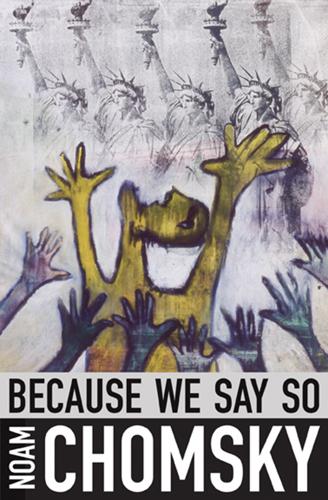
Because We Say So
by
Noam Chomsky
Three years ago the Latin American Commission on Drugs and Democracy published a report on the drug war by ex-Presidents Fernando Henrique Cardoso of Brazil, Ernesto Zedillo of Mexico, and César Gaviria of Colombia calling for decriminalizing marijuana and treating drug use as a public-health problem. Much research, including a widely quoted Rand Corporation study of 1994, has shown that prevention and treatment are considerably more cost-effective than the coercive measures that receive the bulk of funding. Such nonpunitive measures are also of course far more humane. Experience conforms to these conclusions. By far the most lethal substance is tobacco, which also kills nonusers at a high rate (passive smoking).
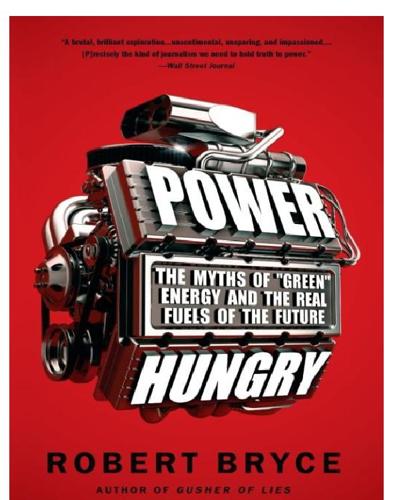
Power Hungry: The Myths of "Green" Energy and the Real Fuels of the Future
by
Robert Bryce
Published 26 Apr 2011
Although it’s true that some petrostates have ties to terrorism—Iran being an obvious example—it’s just as true that Iran and other oil exporters cannot be isolated from the global oil market. Terrorism isn’t an ideology, it’s a tactic, a cheap tactic, and it doesn’t depend on petrodollars. In May 2009, the Rand Corporation, one of the oldest defensefocused think tanks in Washington, released a report concluding that America’s “reliance on imported oil is not by itself a major national security threat.” The report went on to debunk the claim that oil and terrorism are related, saying, “Terrorist attacks cost so little to perpetrate that attempting to curtail terrorist financing through measures affecting the oil market will not be effective.”11 Many people may be worried about peak oil, but those concerns frequently ignore the fundamentals of the marketplace.
…
v=TUxwiVFgghE. 5 For Romm’s rantings, see Climateprogress.org. 6 Set America Free, “Set America Free Update E-mail,” January 29, 2007, www.setamericafree.org/safupdate012907.htm. 7 Environment New Jersey, “Report Says Fossil Fuels Status Quo Will Cost New Jersey Billions; Urges Clean Energy Solutions,” June 30, 2009, http://www.environmentnewjersey.org/newsroom/energy/energy-program-news/report-says-fossil-fuels-status-quo-will-cost-new-jersey-billions-urges-clean-energy-solutions. 8 These issues are fully discussed in my last book, Gusher of Lies: The Dangerous Delusions of “Energy Independence” (New York: PublicAffairs, 2008). 9 Energy Information Administration, “Petroleum Navigator,” http://tonto.eia.doe.gov/dnav/pet/hist/mttexus2M.htm. 10 Energy Information Administration, “Country Energy Profiles,” http://tonto.eia.doe.gov/country/index.cfm. 11 Keith Crane, Andreas Goldthau, Michael Toman, Thomas Light, Stuart E. Johnson, Alireza Nader, Angel Rabasa, and Harun Dogo, “Imported Oil and US National Security,” Rand Corporation, May 11, 2009, http://www.rand.org/pubs/monographs/2009/RAND_MG838.pdf, xvi. 12 Edward Gismatullin, “BP Makes ‘Giant’ Oil Discovery in Gulf of Mexico,” Bloomberg, September 2, 2009, http://www.bloomberg.com/apps/news?pid=newsarchive&sid=adF31W9._rik. 13 BP press release, September 2, 2009, http://www.bp.com/genericarticle.do?

What Technology Wants
by
Kevin Kelly
Published 14 Jul 2010
Princeton, NJ: Princeton University Press. 94 World Population Forecasts: Data from United Nations Population Division. (2002) “World Population Prospects: The 2002 Revision.” http://www.un.org/esa/population/publications/wpp2002/WPP2002-HIGHLIGHTSrev1.pdf. 94 that is, for the next 300 years: United Nations Department of Economic and Social Affairs Population Division. (2004) “World Population to 2300.” http://www.un.org/esa/population/publications/longrange2/WorldPop2300final.pdf. 95 Estimated Long-Range World Population: Data from United Nations Department of Economic and Social Affairs Population Division. (2004) “World Population to 2300.” http://www.un.org/esa/population/publications/longrange2/WorldPop2300final.pdf. 95 every country in Europe is below 2.0: Rand Corporation. (2005) “Population Implosion? Low Fertility and Policy Responses in the European Union.” http://www.rand.org/pubs/research_briefs/RB9126/index1.html. 95 Japan is at 1.34: (2008, June 24) “Negligible Rise in Fertility Rate.” Japan Times Online. http://search.japantimes.co.jp/cgi-bin/ed20080624a1.html. 96 Recent Fertility Rates in Europe: Data from Rand Corporation. (2005) “Population Implosion? Low Fertility and Policy Responses in the European Union.” http://www.rand.org/pubs/research_briefs/RB9126/index1.html. 100 “would have turned out to be right”: Julian Lincoln Simon. (1995) The State of Humanity.
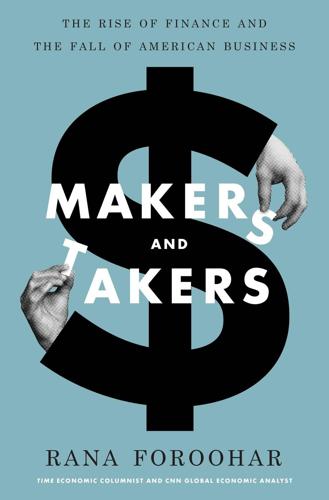
Makers and Takers: The Rise of Finance and the Fall of American Business
by
Rana Foroohar
Published 16 May 2016
Despite the hype, their numbers weren’t magical—indeed, key metrics that determined major war decisions were often chosen not because they were the best, but because they were easiest to calculate.28 One military report on the bombing effort following the war found that Stat Control methods had been an “overall disappointment.” Even the RAND Corporation, the shadowy, pseudomilitary institution that actually developed the systems analysis techniques later deployed by McNamara at the War Department, issued a self-critical report in 1950, saying its methods had been too rigid and reactive. This internal report, authored by a RAND engineer, noted that “the great dangers inherent in the systems analysis approach…are that factors which we aren’t yet in a position to treat quantitatively tend to be omitted from serious consideration.
…
Byrne, The Whiz Kids: The Founding Fathers of American Business—and the Legacy They Left Us (New York: Doubleday, 1993), 36. 27. Ibid., 50; Abraham Zaleznik, “The Education of Robert S. McNamara, Secretary of Defense, 1961–1968,” Revue Française de Gestion 6, no. 159 (2005). 28. David R. Jardini, “Out of the Blue Yonder: The RAND Corporation’s Diversification into Social Welfare Research, 1946–1968” (PhD diss., Carnegie Mellon University, 1996); Gabor, The Capitalist Philosophers, 136. 29. E. J. Barlow, “Preliminary Proposal for Air Defense Study,” RAND Archives D(L)-816-2, October 1950, quoted in Jardini, “Out of the Blue Yonder,” 67. 30.
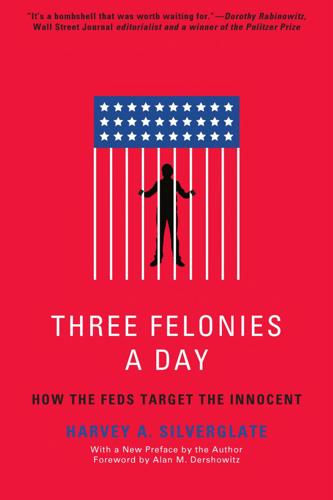
Three Felonies a Day: How the Feds Target the Innocent
by
Harvey Silverglate
Published 6 Jun 2011
The papers convinced the Supreme Court that the First Amendment prohibited prior restraint of the press’s right to publish the Pentagon Papers, a classified government study of the events between 1945 and 1967 that led to America’s deep involvement in the Vietnam War. (The Boston Globe also had a set of the Papers that it proceeded to publish, but its litigation lagged behind and was mooted when the Supreme Court ruled for the Times and Post.) It was leaked to the press by Daniel Ellsberg, who at the time worked for the Rand Corporation, a private think tank that conducted the highly classified project. Nixon and members of his administration were furious about the publication, which began its run one morning in what was described as a multi-part series, and was seen by administration press critics as more a demonstration of media power and hubris than a public-spirited revelation meant to enlighten citizens and history.
…
Fortunately for the reporters, Seymour responded “[n]ot in this District.”12 Soon thereafter, Watergate came to the media’s rescue.13 Nixon’s Justice Department lost its attempt to get a court order barring publication of the Pentagon Papers, and it never brought criminal charges against the newspapers, publishers, editors, and reporters. However, Nixon’s prosecutors did bring espionage charges against Daniel Ellsberg, the former Rand Corporation employee who had smuggled a copy of the study to the Times and other newspapers. This was hardly unexpected. Ellsberg had clearly violated the terms of his security clearance and had conveyed admittedly classified documents to the news media. He was the leaker from within who blew the whistle, even though he was clearly prohibited by law from doing so.
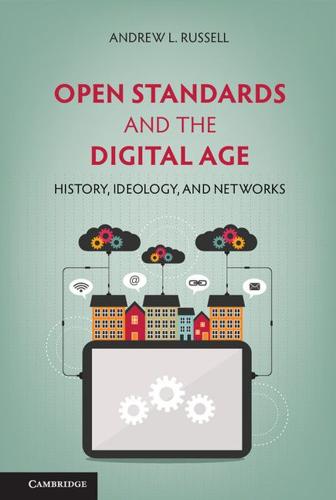
Open Standards and the Digital Age: History, Ideology, and Networks (Cambridge Studies in the Emergence of Global Enterprise)
by
Andrew L. Russell
Published 27 Apr 2014
Since every major computer manufacturer was following a proprietary strategy designed to prevent connections between dissimilar systems, the Arpanet represented a government-funded project that sought to compensate for this evident market failure.14 The most distinctive attribute of the Arpanet was its reliance on packet-switching, a new method of transmitting data across telephone lines that had been invented independently in the mid-1960s by Paul Baran at RAND Corporation and Donald Davies at Britain’s National Physical Laboratory (NPL). Where traditional circuit-switched telephone networks required a direct, dedicated connection between users, packet-switched networks broke data into discrete blocks, which Davies dubbed “packets,” that contained basic information about their places of origin and destination.
…
See Open Systems Interconnection (OSI) Pacific Telephone and Telegraph Company 119 Pack, Robert 117 Packet Communications 176 Packet-switching 167–168, 186 Padlipsky, Michael A. 243, 245 Parsons, Frank 28, 33, 34–35 Parsons, Talcott 10 Pelkey, James 187 Phillips, Charles 150, 151 Philosophy of Science (journal) 10 Pipe Manufacturers Association 46 Piscitello, David 244, 250 Plan Calcul 162 Popper, Karl 9, 10 Post Office Act of 1792 266 Postel, Jon 187, 234, 235, 237, 242–243, 258, 259 Pouzin, Louis Cyclades and 163–164, 170, 190–193 datagram service versus virtual circuit service 177 generally 23, 163, 197, 209, 211, 233, 240–241, 242, 280 IFIP and 174 INWG and 170–171, 173–174, 175, 182–190, 193–195, 198 open systems and 206 OSI and 220–221, 224, 225 on X.25 data transmission standard 180–182 Proceedings of the IEEE 222 Progressivism 61 Pupin, Michael 105 Raff, Daniel 265 RAND Corporation 167, 168 Raunig, Gerald 5 Raymond, Eric 15 RCA 134, 145 Reagan, Ronald 146–147, 276 Roberts, Lawrence 166, 178, 187, 236 Roberts, Warren R. 63 Rohlfs, Jeffrey 197 Roosevelt, Franklin Delano 63 Rosa, Edward B. 63, 66–67 Rose, Marshall T. 230–231, 244–246 Rosenblueth, Arturo 10 Ross, Hugh McGregor 210 “Rough consensus and running code,” 229–233, 254–255 Routing and Addressing (ROAD) Working Group 248–249 Rowland, Henry 38–39 Ruina, Jack 165–166 Rybczynski, Tony 178, 179 Safety codes 74 Sarnoff, David 134 SC6 (ISO) 202–203 SC16 (ISO) 203–204 see also Open Systems Interconnection (OSI) Scantlebury, Roger 182, 185, 187, 189–190 Schumacher, E.F. 157 Schumpeter, Joseph 5 Scott, Howard 58–59, 93 Scott, W.
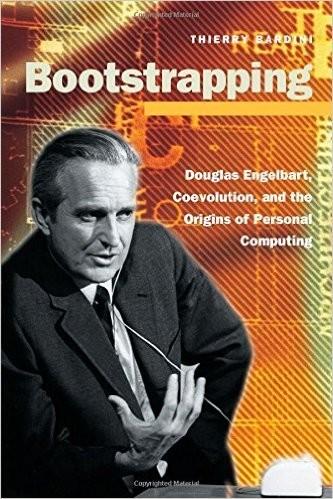
Bootstrapping: Douglas Engelbart, Coevolution, and the Origins of Personal Computing (Writing Science)
by
Thierry Bardini
Published 1 Dec 2000
Manchester University's Mark I prototype ran the first fully electronic stored program on June 2 I of the same year. Researches were under way on the EDSAC (at Cambridge University), UNIVAC and BINAC (first at the Moore School, and then at John P. Eckert's and John W. Maulchy's Electronic Control Company), ILLIAC (at the Uni- versity of Illinois), JOHNNIAC (at the RAND Corporation in Santa Monica, California), MANIAC (at Los Alamos Laboratories, New Mexico), and most importantly, WHIRLWIND (at MIT).6 In the United States, these computing projects were all connected to mili- tary research and development activities in one way or another. By 1948, the Office of Naval Research was funding 40 percent of al/ basic research, and most advances in computing research were classified. 7 In August 1949, the So- viet Union exploded an atomic bomb, and the Cold War climate settled in, without any prospect for a thaw.
…
In Readings in Human Computer Interaction: Toward the Year 2000, edited by R. M. Baecker, J. Grudin, W. Buxton, and S. Greenberg, pp. 469-82. San Francisco: Morgan-Kaufmann. AvaIlable on-line at http:// www.dgp.toronto.ed/OTP/papers/bill.buxton Ihaptic.html. Baran, P. et al. 1964. "On DIstnbuted Communications." RAND Corporation Memos, vols. I-I I. Santa Monica, Calif.: RAND. Bardini, T., and A. T. Horvath. 1995. "The Social ConstructIon of the Personal Com- puter User: The Rise and Fall of the Reflexive User." Journal of CommunI- catIon 45, no. 3: 4 0 - 6 5. Bateson, G. I977. "Afterword." In About Bateson: Essays on Gregory Bateson, ed- ited by J.
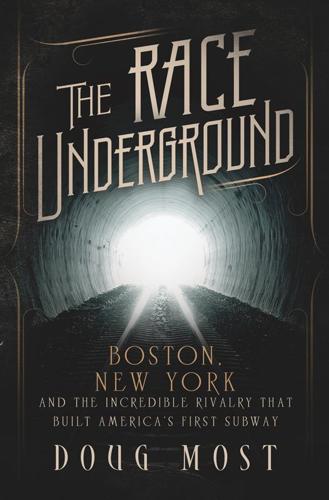
The Race Underground: Boston, New York, and the Incredible Rivalry That Built America's First Subway
by
Doug Most
Published 4 Feb 2014
All Beach had done was to use the power of suggestion to push mankind to imagine the possibilities of technology, to think big, not small, to always ask, Why not? instead of merely, Why? A century after Beach’s dream died, an article appeared in the Los Angeles Times under the headline L.A. TO N.Y. IN HALF AN HOUR? The article in 1972 went on to describe the acclaimed RAND Corporation physicist Robert M. Salter’s dream of digging a tunnel along the routes of U.S. highways that crossed the country. Tubes inside the tunnel would carry trains that floated on electromagnetic fields—at top speeds of ten thousand miles per hour. The cars would float on the fields just as a surfboard rides on the ocean’s waves.
…
In New York, 1.7 billion trips: MTA Facts and Figures, http://www.mta.info/nyct/facts/ffsubway.htm; “MBTA Ridership Hits New Record,” Boston Globe, July 31, 2012. an article appeared in the Los Angeles Times: “L.A. to N.Y. in Half an Hour?,” Los Angeles Times, June 11, 1972. “Safe, convenient, low-cost, efficient”: Robert M. Salter, “Trans-Planetary Subway Systems,” The Rand Paper Series, The Rand Corporation, February 1978, 1. BIBLIOGRAPHY Blodgett, Geoffrey. The Gentle Reformers: Massachusetts Democrats in the Cleveland Era. Cambridge: Harvard University Press, 1966. Bobrick, Benson. Labyrinths of Iron: Subways in History, Myth, Art, Technology, and War. New York: Henry Holt, 1981. _____.

Chasing the Scream: The First and Last Days of the War on Drugs
by
Johann Hari
Published 20 Jan 2015
This is a very common analogy used by drug reformers, and I suspect it was thought of by many of us simultaneously. The earliest example of its use that I can find is on page 68 of James Gray’s Why Our Drug Laws Have Failed and What We Can Do About It. 17 Jeffrey Miron, Drug War Crimes, 47. 18 Miron, Drug War Crimes, 48. 19 Ibid., 51. The RAND Corporation has interesting research on this, too. See http://www.rand.org/content/dam/rand/pubs/occasional_papers/2010/RAND_OP325.pdf, accessed January 14, 2014. Chapter 6: Hard to Be Harry 1 They were: Joe Arpaio in Arizona; Leigh Maddox in Maryland; Stephen Dowling in New York City; Fred Martens in New Jersey; Howard Wooldridge in Washington, D.C.; João Figueira in Lisbon; Joe Toft in Reno, Nevada; Michael Levine in upstate New York; Neil Franklin in Baltimore; Peter Moskos in New York City; Olivier Gueniat in Neuchâtel, Switzerland; Terry Nelson in Fort Worth, Texas; Marisol Valles García in the United States.
…
Miron notes that it has been falling before national prohibition was introduced; but this may be because most states had introduced their own prohibitions during this period. 35 MacCoun and Reuter, Drug War Heresies, 28. 36 Tom Feiling, The Candy Machine: How Cocaine Took Over the World, 270. 37 There were some caveats to his support for legalization; these emerged in our conversation. 38 http://norml.org/news/1999/01/07/dutch-marijuana-use-half-that-of-america-study-reveals, accessed December 2, 2013; see also “Addiction” doi:10.1111/j.1360-0443.2011.03572.x; Robert J. MacCoun, “What Can We Learn from the Dutch Coffee Shop System?” Working Paper for Rand Corporation. As accessed http://www.rand.org/content/dam/rand/pubs/working_papers/2010/RAND_WR768.pdf on June 24, 2014. 39 See http://www.msnbc.msn.com/id/47064492/ns/msnbc_tv-hardball_with_chris_matthews/t/hardball-chris-matthews-monday-april/#.T9-Ds82TSqk, accessed May 1, 2012. 40 For good references, read Jacob Sullum’s account of Hart’s theories, at http://www.forbes.com/sites/jacobsullum/2013/11/04/everything-youve-heard-about-crack-and-meth-is-wrong/, accessed November 10, 2013.
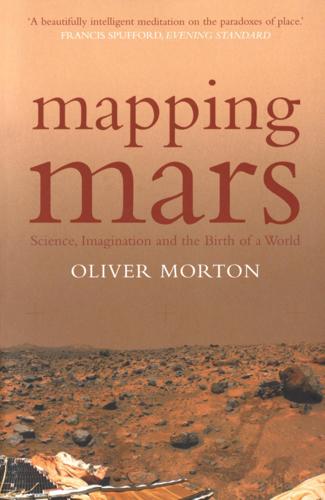
Mapping Mars: Science, Imagination and the Birth of a World
by
Oliver Morton
Published 15 Feb 2003
When I met Mert in 1999 he and Louise had been married for more than fifty years. Just after the war, Davies heard that a think tank within Douglas was working on a paper for the Air Force about the possible uses of an artificial satellite. He applied to join the team more or less on the spot. The think tank soon became independent from Douglas and, as the RAND Corporation, it went on to play a major role in defining America’s national-security technologies and strategies throughout the Cold War. In the early 1950s Davies and his colleagues looked at ways to use television cameras in space in order to send back images of the Soviet Union. Then they developed the idea of using film instead of television—experience with spy cameras on balloons showed that the picture quality could be phenomenal—and returning the exposed frames to Earth in little canisters.
…
See Mars (ocean) Olympus Mons, 44, 45–46, 47–48, 96, 99, 110, 115n, 137–38, 140, 146, 179 difficulties involved in representing, 135 “On the Origin of Hypotheses” (Gilbert), 71, 83 Ophir, 101 O’Sullivan, Timothy, 237 Our Mutual Friend (Dickens), 9 Out of the Cradle (Hartmann/Miller/Lee), 289 Oyama, Vance, 300 Pacific Edge (Robinson), 176 Paine, Thomas, 238, 260, 272 Panetta, Leon, 253–54 Pardee, Joseph Thomas, 190–91 Parker, Tim, 184–88, 200–206, 213, 228, 234, 298 Pavonis Mons, 98, 102 Penrose, Roger, 213n Pesek, Ludwig, 130, 319 Phlegra Montes, 123 Pieri, David, 164, 188 Pigwad (Planetary Interactive GIS-on-the Web Analyzable Database), 240 Pilcher, Carl, 67–68, 70 Pioneer Astronautics, 273 Pioneer mission, 61 “Pioneering the Space Frontier” (Paine), 246, 260 Place and Placelessness (Relph), 222–23 Planetary Explorer program, 65 Planetary Society, 30 Planetfest, 32, 35–36, 42 Planum Australe, 104, 105–6 Pohl, Frederik, 173–75, 178, 179 Pollack, James, 46, 100, 121, 158–60, 304 Poor, Kim, 92, 131 Poss, Richard, 132, 133 Poundstone, William, 100 Pournelle, Jerry, 178 Powell, John Wesley, 79, 148 Proctor, Richard, 14 Protonilus Mensae, 104, 186 Ptolemaus (crater), 2 Rainbow Mars (Niven), 213n Raine, Craig, 19 RAND Corporation, 23, 24 Rawlings, Pat, 32, 134, 290 Reagan, Ronald, 185 Red Mars (Robinson), 36, 108n, 177, 179, 186, 289, 319, 322 Red Planet (film), 290, 290n Red Planet (Hemlein), 178 “Red Star: The First Bolshevik Utopia, The” (Bogdanov), 178 Relph, Edward, 222–23 Return to Utopia (Rawlings), 32 Robinson, Kim Stanley, 36, 108n, 173–83, 205n, 213n, 257n, 281, 289, 308, 310–11, 319, 322, 323 Roddenberry, Gene, 264 Romeo and Juliet (Shakespeare), 324–25 Royal Astronomical Society, 12 Royal Greenwich Observatory, 10–11 Sacks, Oliver, 19 Sagan, Carl, 30, 42, 46, 95, 96, 100, 108n, 158, 197, 227, 234, 240, 257, 268, 303, 304–5 San Juan Mountains (Colorado), 91 Sanchez, Anthony, 53, 55 Sand Dunes, Carson Desert, Nevada (O’Sullivan), 237 Sands of Mars, The (Clarke), 219, 303 Saturn, 131, 132, 133 Saturn V, 31, 316 Saunders, Steve, 188 Schama, Simon, 324n Schiaparelli, Giovanni, 15–16, 21, 44, 96, 100, 101n, 102 Schiaparelli (crater), 102–3 Schrödinger, Irwin, 301 Schmitt, Harrison, 57 Schubert, Frank, 275, 276 Schultz, Peter, 144–45, 150, 222 Science (journal), 68, 190, 210, 211, science fiction, 17, 36, 93, 135–36, 173–83, 289–90, 319–23 and Martian giganticism, 108n See also individual authors Scott, Dave, 112–16, 115n, 117, 150, 167–72, 324 Scott, Robert Falcon, 30 Scout missions, 287 Secchi, Father Angelo, 14, 155 Secchi Continent, 14 Secret of Life, The (McAuley), 271n Seed, David, 175 Service, Robert W., 141 Shakespeare, William, 324–25 Sharp, Bob, 24, 163, 164 Sheffield, Charles, 180 Shergotty meteorites, 139, 247 Shelley, Percy, 173 Shiner, Lewis, 289 Shirley, Donna, 61n Shoemaker, Gene, 84–92, 95, 148, 150, 162, 254, 324–25 Shultz, Peter, 254 “Significance of the Frontier in American History, The” (Turner), 263, 264 “Significance of the Martian Frontier, The” (Zubrin), 265 Silent Spring (Carson), 300 Simud Vallis, 96, 102 Sinai Planum, 101 Sleep, Norm, 122–23, 124, 313 Smith, Brad, 40, 42 Smith, David, 63–64, 65, 69–70 Smith, Peter, 69, 100, 233–34, 235, 236, 239, 239, 315n Smithsonian Air & Space Museum (Washington, D.C.), 322 SNC meteorites, 249 Snell, Willebrord, 25 Snyder, Gary, 180n Soderblom, Larry, 42, 166–67 Solis Lacus, 16 Solis Planum, 101, 102 South Spot (Arsia Mons), 44, 46, 98 Space Shuttle, 60–61 Space Task Group, 60 “Spell of the Yukon, The” (Service), 141 Sputnik, 85 Squyres, Steve, 119 Star Trek, 93 Stoker, Carol, 244, 246, 263, 276, 293 Storm, Bob, 196 Stranger in a Strange Land (Heinlein), 19, 156, 302n Strickland, Ed, 134n Sturgeon, Theodore, 319 Surface of Mars, The (Carr), 163 Syria Planum, 101 Syrtis Major Planum, 13, 14, 15, 103 See also Hourglass Sea Taber, Frank, 324–25 Tanaka, Kenneth, 112, 211, 240 Teapot Ess, 86 Tempe Terra, 186 Tennyson, Alfred Lord, 18, 48 Terra Meridiani, 102, 143, 203, 205–206, 232, 287 Terraforming: Engineering Planetary Environments (Fogg), 315 Tharsis, 15, 46, 98–101, 112, 145, 179 Titan, 316 Tithonium Chasma, 101 Tiu Vallis, 41–42, 96, 102 Tolkien, J.R.R., 309 TOPS probes, 61 “Transit of Earth” (Clarke), 319 Traveler’s Guide to the Solar System, The (Hartmann/Miller), 130–31, 136 See also Grand Tour, The Triton, 96, 214 true polar wander, 144–45 Truman, Harry, 264 Tucson Mafia, 196, 209 Turner, Frederick Jackson, 110–11, 263–64 Turner, J.M.W., 131, 132 Turrell, James, 73, 297 Tyrrhena Patera, 103 Tyrrhenian Sea, 15 “Under the Surface” (Brown), 153 Understanding Comics (McCloud), 116 United States Geological Survey (USGS), 40, 84, 88 Apollo missions, contribution to, 167 Gilbert building, 93, 94, 94n given Mars mapping role, 50 as link between Mars and the West, 85–88 Mars Digital Image Mosaic, 57 1:15,000,000 maps, 3–4 1:5,000,000 maps, 57 Pigwad, development of, 240 University of Washington Department of Nuclear Engineering, 254 Utopia Planitia, 2, 16, 104, 119–21 Valles Marineris, 46–47, 57, 101, 101n, 102, 121, 135, 143, 169 Grand Canyon, compared with, 146–48 influence on fictional landing sites, 289–90 “Value of Outrageous Geological Hypotheses, The” (Davis), 184 van Hoogstraten, Samuel, 49 Van Sant, Tom, 297 Vastitas Borealis, 97, 119 Venus, 81, 109n, 170, 214, 236n, 304 Verne, Jules, 295 Victoria, Queen, 58n Viking (missions), 2, 28, 39–40, 61, 184, 234n, 322 color cameras, 99–101, 228–30 crater pictures, 76 exobiology experiments, 301–2 landing sites, 227–28 picture archive, 193, 198, 234 replica lander, 322 success of, 61 Thomas Mutch Memorial Station, 322 “Viking Results—The Case for Man on Mars, The” (Clark), 243, 245 Vishniac, Wolf, 247, 300 von Braun, Wernher, 132, 260 Von Braun Planitia, 275 Voyage (Baxter), 289 Voyage to the Red Planet (Bisson), 289 Voyager, 214 Wagner, Richard, 267 Wallace, Alfred, 211–12 Wanderer Above the Sea of Mist (Friedrich), 134–25 Watchmen (Moore/Gibbons), 134–37 Watkins, Carleton, 235, 237 Watson, Ian, 174–75, 178, 179 Weinbaum, Stanley, 3 Wells, H.

Whole Earth: The Many Lives of Stewart Brand
by
John Markoff
Published 22 Mar 2022
At SRI, Schwartz had been early to foresee the impact of new digital technologies (he had consulted with the screenwriters for WarGames, alerting them to the emergence of the new subculture of computer hackers), with a special interest in scenario planning. The scenario-planning method was defined by twin intellectual heritages: “thinking the unthinkable” nuclear war-gaming by Herman Kahn at the RAND Corporation in the 1950s, and the ideas of Pierre Wack, a planner at Royal Dutch Shell who had brought from his intellectual apprenticeship with the French mystic and philosopher George Ivanovitch Gurdjieff a focus on narratives rather than quantitative charts and data. Although Schwartz had been an antiwar activist and a member of the Students for a Democratic Society in college, in 1982 he joined Royal Dutch Shell to lead the firm’s scenario-planning group.
…
M., 272, 291, 306–7, 319 People’s Computer Company, 148–49, 158 Peradam conference, 185–87 Perry, David, 101–2 personal computers, 147, 168–69, 211–13 advent of, 185 Albrecht and, 149 early models of, 250–51 Fred Moore and, 196–97 hackers and, see hackers, hacker culture hobbyists and, 148–49, 252 Quarterly features on, 230 SB’s early use of term, 212 transformative impact of, 239, 241, 252, 259, 280 see also cyberspace peyote, SB’s experiences with, 100–101, 109, 112, 119 Phase Raga (Brand), 136 Phelan, Kathleen, 353 Phelan, Patty, 262, 268, 281, 290, 313, 317, 324, 332, 333, 338, 353, 360, 361 background of, 235–36 Baker scandal and, 247–48 Direct Medical Knowledge founded by, 326, 342 DNA Direct founded by, 343 Equestrian Catalog business of, 291, 312 failed pregnancy of, 312 health problems of, 238, 311 in London with SB, 286 at Long Now Foundation, 342–43 marriage of SB and, 246–47, 312 at Planetree, 245–46 Ponzi scheme losses of, 334 Quarterly’s hiring of, 236 SB dated by, 237–38 with SB in Kenya trip, 271–76 Phillips, Michael, 128, 149, 203, 250 Phillips Exeter Academy: Mike Brand at, 14–15, 17 SB at, 15–18, 20–21, 23 photography: of SB’s Indian reservation visits, 86–87, 95, 96, 97–98, 118 SB’s interest in, 68, 90, 93, 199 photojournalism, Brand’s pursuit of career in, 3, 15–16, 44, 53, 55, 57, 63–64, 70, 75, 83, 85–87 Pinchot, Gifford, 340 planetary consciousness, 6, 362 Planetree, 245–46, 326 Point Foundation, 203, 210, 216, 233, 249, 250, 271, 276, 289, 292, 333–34, 343 Pomo Indians, 101 Pontin, Jason, 341 Pool, Ithiel de Sola, 279 Pope, Carl, 340 Population Bomb, The (Ehrlich), 45, 177, 187, 206, 341 Pork Chop Hill (film), 39 Portola Institute, 146, 147, 150–51, 155, 158, 161–62, 170, 196, 273 pragmatism, of SB, 4, 77, 340–41 Price, Richard, 71, 84 Prime Computer, 259 print media, computers’ transformation of, 239, 241 privacy, SB’s warning on cyberspace threat to, 315 Project Jonah, 206 Project One, 197–98 psychedelics, 28, 194, 241 SB and, 101, 104, 162–63, 177–78 see also LSD; peyote Pyramid Lake, 108 Q Question 7 (film), 62 R Ram Dass (Richard Alpert), 72, 79, 89, 103, 107, 139, 160, 216 Ramparts, 158, 202 Rancho Diablo, 164, 188, 189 Rand, Ayn, 31, 132 Randall, Doug, 339 RAND Corporation, 273 Random House, 193, 200, 201, 213 Rathbun, Emilia, 40 Rathbun, Harry, 40–41 Rawn, William, 305 Ray, Janet and William, 304 Raymond, Ann, 170 Raymond, Dick, 85–86, 113, 146, 147, 151, 158, 160, 163, 164, 170, 188 and creation of Whole Earth Catalog, 155, 157 education fair project of, 150, 151, 152 Point Foundation and, 202–3 SB’s friendship with, 23–25, 83, 149, 150, 152 see also Portola Institute Realist, 136, 162, 234 Reality Club, 294–95 Rear Window (film), 15 Reddy, Raj, 268 Red Scare, 17 Reed College, 355 Reiss, Spencer, 340 Remy, Danica, 287–88 Renault, Mary, 52 renewable energy, 167, 223, 297, 346, 349–50, 351, 356 Resource One, 197 Revive & Restore, 360 Rexroth, Kenneth, 66, 70 Rheingold, Howard, 265, 310, 311 Rhode Island School of Design, 217 Richards, M.

Twitter and Tear Gas: The Power and Fragility of Networked Protest
by
Zeynep Tufekci
Published 14 May 2017
People were scared that these stories might be true, confused about what to believe, and unsure about how to deal with this flood of negative stories. Censorship by disinformation focuses on attention as the key resource to be destroyed and credibility and legitimacy as the key components necessary for a public sphere that can support dissident views—or indeed, any coherent views. Rand Corporation researchers refer to this phenomenon as the “firehose of falsehood” propaganda model.18 The primary goal is simple: “to confuse and overwhelm” the audience.19 As in many such cases, it is impossible to pin down responsibility for the campaign, but “numerous analysts and experts in American and European intelligence point to Russia as the prime suspect, noting that preventing NATO expansion is a centerpiece of the foreign policy of President Vladimir V.
…
Jon Henley, “Russia Waging Information War against Sweden, Study Finds,” Guardian, January 11, 2017, https://www.theguardian.com/world/2017/jan/11/russia-waging-information-war-in-sweden-study-finds; Martin Kragh and Sebastian Åsberg, “Russia’s Strategy for Influence through Public Diplomacy and Active Measures: The Swedish Case,” Journal of Strategic Studies (2017): 1–44. 18. Christopher Paul and Miriam Matthews, “The Russian ‘Firehose of Falsehood’ Propaganda Model: Why It Might Work and Options to Counter It,” Rand Corporation, 2016, http://www.rand.org/content/dam/rand/pubs/perspectives/PE100/PE198/RAND_PE198.pdf. 19. Giorgio Bertolin, “Conceptualizing Russian Information Operations: Info-War and Infiltration in the Context of Hybrid Warfare,” IO Sphere (Summer 2015): 10. 20. Neil Macfarquhar, “A Powerful Russian Weapon: The Spread of False Stories,” New York Times, August 28, 2016, http://www.nytimes.com/2016/08/29/world/europe/russia-sweden-disinformation.html. 21.

Open: The Story of Human Progress
by
Johan Norberg
Published 14 Sep 2020
Licklider at the company Bolt, Beranek and Newman (BBN) proposed an ‘Intergalactic Computer Network’ and described many of the aspects that would become the internet infrastructure. When Licklider started working at ARPA, he convinced his colleagues to work with network technology. The ‘package-sharing’ way of sending information was borrowed by American and British academics, and also suggested at the RAND Corporation. More networks were developed and there was a need for more efficient communication between them. ARPA’s Robert Kahn, also from BBN, together with Vint Cerf at Stanford University created the TCP/IP protocol that linked the networks into an open architecture. Since the pioneers primarily wanted to share processor time at mainframe computers, they could have made the decision to block other applications.
…
(Fukuyama), 362–5 End of Work, The (Rifkin), 312 Engels, Friedrich, 33, 36, 162, 206, 247, 256 English Civil War (1642–1651), 148, 183, 184, 201 Enigma machine, 124–6 Enlightenment, 4, 5, 6, 13, 103, 154–60, 165–6, 195–6 Environmental Performance Index, 327 Ephesus, 45 Epic of Gilgamesh, The, 38 Epicurus, 134–5 Epstein, Richard, 320 equality matching, 262–6, 267 Erasmus, 152 Erdogan, Recep Tayyip, 354 Ethiopia, 72, 130 ethnocentrism, 219, 271 Etruscan civilization (c. 900–27 BC), 43 Eubulus, 47 eugenics, 109 Euphrates river, 37 Euripides, 132 European Organization for Nuclear Research, 306 European Parliament, 325 European Union (EU) Brexit (2016–), 9, 14, 118, 238, 240–41, 349, 354, 379 common currency, 280–81 freedom of movement, 118, 343 migration crisis (2015–), 10, 114, 115, 342–3, 358 subsidies in, 280 trade and, 272 United States, trade with, 19 Evans, Oliver, 203 Evolution of God, The (Wright), 249 evolutionary psychology, 14, 23, 225 exoticism, 84 Expressionism, 198 Facebook, 239, 309 Falwell, Jerry, 113–14 Farage, Nigel, 241 farming, see agriculture Fascist Italy (1922–1943), 105, 219 FedEx, 319 Feifer, Jason, 290–92 Fenway Park, Boston, 223 Ferdinand II, King of Aragon, 97, 98, 106 Ferguson, Charles, 314 Fermi, Enrico, 105 Ferney, France, 153 feudalism, 92, 194, 202, 208 fight-or-flight instinct, 15, 346, 348–9 filter bubbles, 239 financial crisis (2008), 10, 15, 62, 254, 333, 358, 359–60 fire, control of, 32–3, 76 Flanders, 208 fluyts, 100 Flynn effect, 109 Fogel, Robert, 276 folk economics, 258–62 football, 223–4, 245–6 Forbes, 274 Ford, Henry, 203 Fortune 500 companies, 82 Fox News, 82, 302, 354 France, 151 American Revolutionary War (1775–83), 201 automation in, 313 Cathars, 94, 142 Cobden–Chevalier Treaty (1860), 53–4 corruption in, 345 Dutch War (1672–8), 101 Encyclopédie, 154 free zones in, 180–81 Huguenots, persecution of, 97, 99, 101, 158, 193 immigration in, 115 Jews, persecution of, 96, 97, 254 languages in, 289 Minitel, 313 Revolution (1789–99), 201, 292 Royal Academy of Sciences, 156 ruin follies, 287 St Bartholomew’s Day massacre (1572), 97 Thököly Uprising (1678–85), 137 Uber in, 320 University of Paris, 140, 141–2, 143 Francis I, Emperor of Austria-Hungary, 178 Franciscans, 144 Franklin, Benjamin, 107 Franks, 92 free speech, 127, 131–2, 160, 163–5, 343 Chicago principles, 164–5 emigration for, 152–3 university campuses, 163–5 free trade, see under trade Fried, Dan, 289 Friedman, Benjamin, 253 Friedman, David, 284 Friedman, Thomas, 325 Friedrich Wilhelm I, King of Prussia, 153 Fukuyama, Francis, 362–5 Fulda, Germany, 179, 180 Future and Its Enemies, The (Postrel), 300 Future of Nostalgia, The (Boym), 288 Galatia, 90 Galaxy Zoo, 80 Galilei, Galileo, 146, 150 Gallup, 164 game theory, 26 Gandhi, Indira, 326 gas lighting, 297 Gates, William ‘Bill’, 274, 277, 309 Gauls, 90, 91, 92 gay rights, 113, 336 Geary, Patrick, 288–9 gender equality, 113, 114 General Motors, 64 generations baby-boom generation (1946–64), 294, 340 generation X (1965–80), 340 immigration and, 106, 110–11, 113–14 interwar generation (1928–45), 340 millennial generation (1981–96), 340 nostalgia and, 291, 293–4, 296 genetically modified organisms (GMO), 299, 301 Geneva, Switzerland, 152, 153 Genghis Khan, 94–5, 96, 174 Genoa, Republic of (1005–1797), 73, 178 George II, King of Great Britain and Ireland, 193 George III, King of Great Britain and Ireland, 103, 193 George Mason University, 257, 258 Georgia, 365 Georgia, United States, 349 German Conservative Party, 254 Germany automatic looms, 179 Berlin Wall, fall of (1989), 10, 340, 341, 363, 364 Bronze Age migration, 75 budget deficits, 60 COVID-19 pandemic (2019–20), 12 guilds in, 190 immigration in, 114, 115 Jews, persecution of, 99, 104–6, 109, 220, 233 migration crisis (2015–), 342–3 Nazi period (1933–45), 104–6, 109, 124, 220, 233, 353 Neolithic migration, 74 protectionism in, 314 Reichstag fire (1933), 353 Thirty Years War (1618–48), 150 United States, migration to, 104, 107–8, 111 Weimar period (1918–33), 353 al-Ghazali, 139 Gholia, 89 Gibbon, Edward, 90 Gilder, George, 314 Gilgamesh, 38 Gillis, John, 291 Gingrich, Newton, 313 Gini coefficient, 273 Gintis, Herbert, 36 global history, 13 global price crisis (2010–11), 11 global warming, 75, 323, 325, 326–34 globalization, 4, 55, 270 backlashes against, 9, 14, 54, 57 cities and, 35 classical world, 43–50 conspiracy theories on, 323 disease and, 11, 77–9 United States and, 19 Westernization, 4 Glorious Revolution (1688), 101, 185–8, 190, 193 Goa, India, 146–7 golden nugget theory, 5 Golden Rule, 251–2 Golding, William, 219, 243, 244 Goldstone, Jack, 5, 133, 353 Goodness Paradox, The (Wrangham), 227 Google, 309, 311 Gordon, Thomas, 201 Göring, Hermann, 106 gossip, 229 Goths, 92 Gottlieb, Anthony, 135 Great Awakening (1730–55), 102 Great Depression (1929–39), 54–5, 56, 254 Great Enrichment, 167, 204 Great Recession (2007–9), 254–5, 358, 359–60 Great Transformation, The (Polanyi), 37 Great Vanishing, 134–5 Great Wall of China, 178 Greece, ancient, 127–32, 169 Athens, 47, 53, 89, 90, 131–2, 134 Axial Age, 129 cosmopolitanism, 87–8 golden nugget theory, 5 Ionian enlightenment, 127–9 Mycenae, 88 philosophy, 13, 70, 127–32, 134–5, 136 Phoenicians, relations with, 43, 44, 45, 46 science, 127–32, 136 Sparta, 47, 54, 90, 132 trade, attitudes towards, 47, 54 xenophobia in, 90 Green New Deal, 302 Greene, Joshua, 216, 259 Greenland, 51 Gregorian calendar, 137, 152 Gregory IX, Pope, 142 Gregory XIII, Pope, 152 gross domestic product (GDP), 68–9, 257, 278–9 Grotius, Hugo, 147, 152–3 groupthink, 83 Guangzhou, Guangdong, 352 guilds, 190 Gutenberg, Johannes, 146 Haber, Fritz, 105 Habsburg Empire (1282–1918) anti-Semitism in, 254 Austria, 151, 179, 190 refugees, 99 Spain, 98–9, 208 Hadrian, Roman Emperor, 91 Hadrian’s Wall, 47 Hagley Park, West Midlands, 286–7 Haidt, Jonathan, 163, 229, 344, 348, 357 Haile Selassie, Emperor of Ethiopia, 72 Hamas, 365 Hangzhou, Zhejiang, 173 Hanseatic League (1358–1862), 53 Hanson, Robin, 282 Hanway, Jonas, 298 Happy Days, 294 Harari, Yuval Noah, 38 Harriot, Thomas, 150 Hartsoeker, Nicolaas, 159 Harvard Business Review, 313 Harvard University, 116, 122, 137, 253, 309, 313 Haskell, Thomas, 206 Hässelby, Stockholm, 217–18, 245 Hayashi, Stuart, 370 Hayek, Friedrich, 1, 7, 29, 300, 325 Hebrew Bible, 248–50 Hegel, Georg Wilhelm Friedrich, 288, 365 Helm, Dieter, 328, 331 Henrich, Joseph, 36 Hercules, 87 Herodotus, 132 Hewlett-Packard, 304 Higgs, Robert, 337 Hill, Christopher, 182 Hinduism, 136, 149, 354 von Hippel, William, 24, 25, 262, 284 Hippocrates, 128 Hispanic people, 110–11 Hitler, Adolf, 104–5, 353 Hobbes, Thomas, 9, 152, 226 Hofer, Johannes, 288 Holmgren, Pär, 325 Holocaust (1941–5), 109, 220 Holy Roman Empire (800–1806), 155, 181, 288 Homestead Acts, 171 Homo economicus, 34, 36 Homo erectus, 76, 267 Homo sapiens, 3, 21, 23, 30–33, 76, 259–62, 282, 371 homosexuality, 79, 113–14, 336 Homs, Syria, 82 Honeywell, 303 Hong Kong, 53, 235, 316 Hoover, Herbert, 55 horseshoes, 203 House of Wisdom, Baghdad, 136 Household Narrative, The, 297 housing, 375–6 Huguenots, 97, 99, 101, 158, 193 human rights, 87, 147, 213 humanitarianism, 204–7 Hume, David, 151, 154, 194 Hungary, 105, 190, 235, 237, 354, 357 hunkering down, 121, 165 Huns, 93 hunter-gatherer societies death rate, 9 disease and, 78 division of labour and, 29, 32, 40–41, 57 equality matching, 262–3, 265 inbreeding and, 78 isolation and, 52 migration, 73–4, 78–9 physical fallacy, 268 race and, 232 trade, 265 tyranny of cousins, 230 Huntington, Samuel, 110, 362–3, 365–6 Hussein, Saddam, 345 Hussey, Edward, 287 Hutchins, Robert Maynard, 165 Hutus, 230–31 Hypatia, 134 hyper-fast stars, 80 IBM, 305, 307, 319 Ibn al-Haytham, 156 Ibn Hayyan, Jabir, 156 Ibn Rushd, 137–8, 143, 144, 145 ice core drilling, 49 Identity & Violence (Sen), 231 identity politics, 241 al-Idrisi, Muhammad, 137 immigration birth rates and, 115 crime and, 110, 119 culture and, 69–73, 116, 119, 120–23 disgust and, 336, 371 division of labour and, 117 empires and, 84–106 European migration crisis (2015–), 10, 114, 115, 118, 342–3 exoticism, 84 GDP and, 68 innovation and, 81–4 Islam and, 112–14, 255 labour market and, 115, 116–19 opposition to, 69, 70, 114–23, 223, 254–5 productivity and, 68, 81, 117, 204 protectionism and, 66–7 self-selection and, 107, 112 skilled vs unskilled, 66, 82, 102, 116, 117 trade and, 35, 66–7, 234–5 tribalism and, 223, 235–6, 240, 243 urban vs rural areas, 114 welfare and, 118, 281 zero-sum thinking and, 254–5, 259 immigration in United States, 102–14 crime and, 110, 119 innovation and, 81–2, 202 overestimation of, 115, 223 tribalism and, 223, 240 zero-sum thinking and, 254–5, 259 In Defence of Global Capitalism (Norberg), 270 in vitro fertilization, 298–9 inbreeding, 78 India, 42, 45, 46, 56, 75, 129, 136, 140, 146, 270 Arabic numerals, 70, 137 engineering in, 269 Hindu nationalism, 354 industrialization, 207 Maurya Empire (323–184 BC), 53 Mughal Empire (1526–1857), 98, 148, 149, 215 national stereotypes, 235 Pakistan, relations with, 366 pollution in, 326 poverty in, 276, 326 Indo-European language, 75 Indonesia, 41 Industrial Revolution; industrialization, 5, 6, 13, 54, 132, 180, 339 in Britain, 182, 188–99, 202 in China, 169, 172–3, 207 climate change and, 326 in Dutch Republic, 101 in India, 207 in Japan, 71 in United States, 202, 291–2 in Vietnam, 207 inequality, 273, 349 Inglehart, Ronald, 339 ingroups and outgroups, 217–47 fluidity, 230–38 political, 224–5, 238–42 zero-sum relationships and, 252–5 Innocent III, Pope, 233 InnoCentive, 126–7 innovation, 4, 6, 10, 27, 80 ancient world, 32, 42, 44, 46 authoritarianism and, 318 bureaucratic inertia and, 318–21 canon and, 195 cities and, 40, 53, 79 creative destruction, 57, 179, 182, 190 cultural evolution, 28 immigration and 81–4 patent systems, 189–90 population and, 27, 51, 53 Schumpeterian profits, 273–5 resistance to, 10, 179–81 zero-sum thinking and, 266–9 Inquisition, 150 France, 94, 143 Portugal, 100 Spain, 97, 98 intellectual property, 58 Intergalactic Computer Network, 307 International Monetary Fund (IMF), 117 Internet, 57, 275, 278, 306–11, 312, 313 interwar generation (1928–45), 340 Inuit, 22, 51 Ionian enlightenment, 127–9 IQ (intelligence quotient), 109 Iran, 365 Ireland, 104, 108–9, 111, 112, 379 iron, 172 Isabella I, Queen of Castile, 97 Isaiah, 46 Isaura Palaia, Galatia, 90 Isenberg, Daniel, 296 Isis, 89 Islam; Islamic world Arab Spring (2011), 10, 342 clash of civilizations narrative, 237, 365 conflict within, 365 efflorescence, 6, 53, 136–41 fundamentalism, 112, 134, 139, 351 Koran, 137, 250–51 migration from, 112–14 orthodox backlash, 148–9 philosophy, 5, 13 science, 70, 132, 136–41 values in, 112, 113 Islamic State, 351, 365–6 Islamic world, 5, 6, 13, 53, 70 Israel, 111, 365 Italy, 6, 151, 169 anti-Semitism in, 254 Fascist period (1922–1943), 105 Genoa, Republic of (1005–1797), 73, 178 guilds in, 190 Lombard League (1167–1250), 181 Ötzi, 1–2, 8–9, 73, 74 Padua, 144, 146 Papacy in, 155, 181 Renaissance, 6, 150, 153, 169 United States, migration to, 104, 109 Venice, Republic of (697–1797), 53, 144, 152, 174, 181 Jacobs, Jane, 39–40, 79, 264 James II and VII, King of England, Scotland and Ireland, 185–6 Jamestown, Virginia, 200 Japan housing in, 376 kimonos, 73 Meiji Restoration (1868), 53, 70–71 protectionism, 314 Tokugawa Shogunate (1600–1868), 54 United States, migration to, 104, 236, 335 Japanning, 156 JavaScript, 310 jealous emulation, 154–7 jeans, 73 Jefferson, Thomas, 103, 184, 201, 205 Jenner, Edward, 296 Jerusalem, 87, 251 Jesus, 250 Jews in Abbasid Caliphate, 136 anti-Semitism, 254–5, 356 Ashkenazim, 99 Babylonian captivity, 87, 249 Bible, 46, 72, 248–50 Black Death and, 355–6 in Britain, 101, 193 in Dutch Republic, 99, 100, 150 in Germany, 99, 104–6, 109, 111, 254 Inquisition and, 97, 98 in Israel, 111 Mongol invasion and, 95 Muhammed and, 251 Nazirites, 72 in Ottoman Empire, 98 persecution of, 11, 95–7, 109, 220, 233, 251, 355–6 in Poland, 111, 220 in Roman Empire, 90, 93, 94 Sephardim, 99 in Song Empire, 170 in Spain, 97, 98, 99, 140 in United States, 102, 109 Jim Crow laws (1877–1965), 106, 254 Job Buddy, 375 Jobless Future, The (Aronowitz), 312 Jobs, Steven, 82, 304 John Chrysostom, 135 John III Sobieski, King of Poland, 237, 238 Johnson, Samuel, 191, 197 Johnson, Steven, 306 Jones, Rhys, 51 Joule, James Prescott, 196 Judaism, 46, 72, 93, 94, 96, 97 Jupiter, 145 Jurchen people, 172 Justinian I, Byzantine Emperor, 134, 224 Kahn, Robert, 307 Kandinsky, Wassily, 220–21, 289 Kant, Immanuel, 154 Karakorum, Mongol Empire, 96 al-Karaouine, Morocco, 137 Kearney, Denis, 109 keels, 44 Kenya, 21–2 Khayyam, Omar, 137 al-Khwarizmi, 137 Kiesling, Lynne, 328 Kim Jong-il, 314–15 kimonos, 73 King, Martin Luther, 19 King, Steven, 111 Kipling, Rudyard, 70 Klee, Paul, 220–21, 289 Know-Nothings, 108–9 Kodak, 319 Koran, 137, 250–51 Kramer, Samuel Noah, 37, 292 Krastev, Ivan, 342–3 Krugman, Paul, 309 Ku Klux Klan, 254 Kublai Khan, 174 Kurds, 136 Kushim, 37–8 labour mobility, 69, 374–7 lacquerware, 156 lactose, 75 Lao Tzu, 129 lapis lazuli, 70 Late Bronze-Age Collapse (1200–1150 BC), 44, 49, 54 Lebanon, 43, 236 Lee, William, 179 leisure, 199 Lenin, Vladimir, 256 Lesbos, 141 Levellers, 183–4, 186 Leviathan (Hobbes), 152 Levinovitz, Alan Jay, 290 Levy, David, 205 Lewis, David Levering, 140 Libanius, 49 liberalism, 14, 183, 334–40 colonialism and, 214 disgust and, 335, 336 dynamism and, 301 economic, 185, 336 Islam and, 112–14 security and, 334–40, 378 slave trade and, 205 universities and, 163 Libya, 48, 89, 366 Licklider, Joseph Carl Robnett, 307 life expectancy, 4, 169, 339 light bulbs, 297 Lilburne, John, 183 Lincoln, Abraham, 203 Lind, Amanda, 72 Lindsey, Brink, 301 literacy, 15, 57, 168 in Britain, 188, 198 in China, 148 in Dark Ages, 50 empathy and, 246–7 in Greece, 128–9 in Renaissance, 146, 148 Lithuania, 238 Little Ice Age, 148 lobbying, 280, 329 Locke, John, 100, 152, 185, 186, 201 Lombard League, 181 London, England, 190, 193–4, 197 7/7 bombings (2005), 341 London Bridge stabbings (2019), 120 Long Depression (1873–86), 253–4 Lord of the Flies (Golding), 219, 243, 244 Lord’s Resistance Army, 365 Louis IX, King of France, 96 Louis XIV, King of France, 237 Louis XVI, King of France, 201 love, 199 Lucas, Robert, 167 Lucy, 24–5 Lugh, 89 Lul, 111 Luther, Martin, 150, 356 Lutheranism, 99, 356 Lüthi, Max, 351 Lysenko, Trofim, 162 Lyttelton family, 286 Macartney Mission (1793), 176 Macedonian Empire (808–148 BC), 84, 87–9 Madison, James, 337 madrasas, 138 Madrid train bombings (2004), 341 Maduro, Nicolás, 354, 380 Magna Carta (1215), 5 Magris, Claudio, 219 Malacca, 100 Maltesholm School, Hässelby, 217–18, 245 mammoths, 76 Manchester United, 246 Manichaeism, 93 Mann, Thomas, 79 Mansfield, Edward, 271 Mao Zedong, 53, 162, 315, 316, 317, 355 Marcus Aurelius, Roman Emperor, 91 Marduk, 87 de Mariana, Juan, 147 markets, 37 humanitarianism and, 204, 206 immigration and, 68 tribalism, 247 ultimatum game, 34–5 Marley, Robert ‘Bob’, 72 marriage, 199 Marshall, Thurgood, 335 Marx, Karl, 33, 36, 162, 169, 247, 255–6 Marxism, 33, 36, 162, 182, 256, 268 Mary II, Queen of England, Scotland and Ireland, 186, 193 Maryland, United States, 349 Maslow, Abraham, 339, 341 al-Masudi, 136 mathematics, 70, 134, 135, 137, 156 Maurya Empire (323–184 BC), 53 Mauss, Marcel, 71 McCarthy, Joseph, 335 McCarthy, Kevin, 108 McCloskey, Deirdre, 167, 189, 191–2, 198 McConnell, Addison Mitchell ‘Mitch’, 108 McKinsey, 313 measles, 77 media, 346–9, 370 Medicaid, 119 Medina, 251 Medusa, 88 Meiji Restoration (1868), 53, 70–71 Mencken, Henry Louis, 325, 353 Mercury, 89 Merkel, Angela, 343 Mesopotamia, 37–43, 45, 70, 292–3 Metaphysics (Aristotle), 142 Mexico, 73, 77, 257 United States, migration to, 110, 122, 223, 240, 255 Miami, Florida, 120 Micro-80 computers, 304 Microsoft, 305–6, 309 middle class, 60–61 Migration Advisory Committee, UK, 118 Miletus, 127 militarism, 214 Mill, John Stuart, 124, 160, 164, 176, 319 millennial generation (1981–96), 340 Milton, John, 150 Ming Empire (1368–1644), 54, 148, 175, 177–8, 179, 215 minimal group paradigm, 220–22 Minitel, 313 Mobutu Sese Seko, 187 Mokyr, Joel, 157, 195, 196–7 Molyneux, Stefan, 84 Mongol Empire (1206–1368), 53, 84, 94–7, 138, 139, 173–4, 352–3 monopolies, 182, 189 Monte Testaccio, 48 Montesquieu, 89, 94 Moral Consequences of Growth, The (Friedman), 253 Moral Man and Immoral Society (Niebuhr), 253 Moriscos, 97 mortgages, 375 Moscow Institute of Electronic Engineering, 304 most-favoured-nations clause, 53–4 Mughal Empire (1526–1857), 98, 148, 149, 215 Muhammed, Prophet of Islam, 251 Murray, William Vans, 104 Muslims migration of, 112–14, 170, 255 persecution of, 97, 106, 233, 355 Mutz, Diana, 271 Mycenae, 88 Myth of Nations, The (Geary), 288–9 Myth of the Rational Voter, The (Caplan), 258 Naipaul, Vidiadhar Surajprasad, 167 Napoleonic Wars (1803–15), 288 National Aeronautics and Space Administration (NASA), 126, 127 National Library of Medicine, US, 12 National Science Foundation, US, 313 National Security Agency, US, 313 national stereotypes, 235 nationalism, 9, 11, 13, 16 civic nationalism, 377–8 clash of civilizations narrative, 237 cultural purity and, 69, 70, 71, 352 immigration and, 69, 70, 82 nostalgia and, 287–8, 351 World War I (1914–18), 214 zero-sum thinking, 253, 254, 259, 272 nativism, 14, 122, 176, 223, 254, 349–51, 358 Natural History Museum, London, 124, 125 Naturalism, 198 Nazi Germany (1933–45), 104–6, 109, 124, 220, 233, 353 Nazirites, 72 Neanderthals, 30–33, 75, 76 Nebuchadnezzar, Babylonian Emperor, 46 neckties, 72 negative income tax, 374–5 Neilson, James Beaumont, 194 Nemeth, Charlan, 83 Neo-Classicism, 198 Neolithic period (c. 10,000–4500 BC), 74 Netflix, 309, 310 Netherlands, 99 von Neumann, John, 105 neurasthenia, 291 New Atlantis (Bacon), 147 New Guinea, 41 New Testament, 250 New York, United States crime in, 246, 334 September 11 attacks (2001), 10, 114, 340–42 New York Times, 291, 297, 325 New York University, 223 New York Yankees, 223 Newcomen, Thomas, 196 Newton, Isaac, 158–9, 201 Nicomachean Ethics (Aristotle), 131 Niebuhr, Reinhold, 253 Nietzsche, Friedrich, 365 Nîmes, France, 73 Nineteen Eighty-Four (Orwell), 230, 368 Nineveh, Assyria, 248–9 Nixey, Catherine, 134 Nobel Prize, 82, 105, 276 non-market societies, 34, 35 Nordhaus, William, 273–4 North American Free Trade Agreement (NAFTA), 63, 64 North Carolina, United States, 102 North Korea, 54, 314–15, 366 North Star, 44 nostalgia, 14, 286–95, 313, 351 Not Fit for Our Society (Schrag), 107 novels, 188–9, 246–7 nuclear power, 301, 327, 328, 329, 332 nuclear weapons, 105, 290, 306 O’Rourke, Patrick Jake, 280 Oannes, 267 Obama, Barack, 66, 240, 329 obsidian, 22, 29 occupational licensing, 376–7 Ögedei Khan, 96 Ogilvie, Sheilagh, 179 Oklahoma, United States, 218–19 Old Testament, 46, 72, 248–50 olive oil, 48 Olorgesailie, 21–2 omnivores, 299 On Liberty (Mill), 160 one-year-old children, 26 open society, 6 open-mindedness, 35, 112 Opening of the mouth’ rite, 70 Orbán, Viktor, 354, 380 de Orta, Garcia, 146–7 Orwell, George, 230, 368 Osman II, Ottoman Sultan, 148 Ottoman Empire (1299–1923), 84, 94, 98, 148, 215, 220, 237, 353 Ötzi, 1–2, 8–9, 73, 74 overpopulation, 81, 160 Overton, Richard, 183 Pacific islands, 52 Paine, Thomas, 56, 158, 247 Pakistan, 70, 366 Pallas Athena, 89 Pallavicino, Ferrante, 150 Palmer, Tom Gordon, 15 Panthers and Pythons, 243–4 Papacy, 102, 142, 143, 152, 155, 178 Papin, Denis, 179, 180 Paris, France exiles in, 152, 153 University of Paris, 140, 141–2, 143 parochialism, 216 patent systems, 58, 82, 189–90, 203, 314 in Britain, 179, 189–90, 203, 314 in China, 58 in France, 189 immigrants and, 82 in Netherlands, 189 in United States, 203 PayPal, 310 Peasants’ Revolt (1381), 208 peer review, 127 Pence, Michael, 108 penny universities, 166 Pericles, 131 Permissionless Innovation (Thierer), 299 Perry, Gina, 243 Perseus, 87–8 Persia, ancient, 84, 86–7, 88, 95, 129, 215 Abbasid period (750–1258), 136 Achaemenid Empire (550–330 BC), 86–7, 88 Greeks, influence on, 129 Mongols, influence on, 95 Safavid Empire (1501–1736), 149 Sasanian Empire (224–651), 134 personality traits, 7 Pertinax, Roman Emperor, 91 Pessimists Archive, 290, 297, 298 Pessinuntia, 89 Peters, Margaret, 66 Peterson Institute for International Economics, 60 Petty, William, 296 Philip II King of Spain, 98 Phoenicia (2500–539 BC), 43–6, 49, 70, 128–9 Phoenicia dye, 44 Phrygians, 89 physical fallacy, 267–8 Physics (Aristotle), 142 Pietists, 153 Pinker, Steven, 23, 243, 266, 324 Plague of Justinian (541–750), 77 Plato, 130, 131, 132, 134, 352 pluralism, 85, 129, 357 Plutarch, 45–6 Poland Battle of Vienna (1683), 237, 238 Dutch Republic, migration to, 99 Holocaust (1941–5), 220 immigration, 116 Israel, migration to, 111 United Kingdom, migration to, 120 United States, migration to, 108, 109 Polanyi, Karl, 37 polio, 293 pollution, 326, 347 Polo, Marco, 174 Popper, Karl, 6, 26, 127, 129, 130, 182–3, 237, 362 population density, 28 populism, 9, 13, 14, 16, 324, 379–82 authoritarianism and, 325, 350–51 complexity and, 324 nostalgia and, 295, 324, 351 trade and, 19 zero-sum thinking and, 254, 259, 274 pornography, 113, 336 Portugal Empire (1415–1999), 100, 146–7, 178 guilds in, 190 Inquisition, 100 Postrel, Virginia, 300, 312, 326 pound locks, 172 poverty, 4, 168, 213, 270 in Britain, 256 in China, 4, 316 immigration and, 66, 69, 81, 121 in Japan, 71 Jeff Bezos test, 275–9 Preston, Lancashire, 190 priests, 41, 128 printing, 146, 153, 171 Pritchard, James Bennett, 43 productivity cities and, 40 foreign trade and, 57, 59, 63 free goods and, 278 immigration and, 68, 81, 117, 204 programming, 8 Progress (Norberg), 12–13 progressives, 286, 300–302 Proserpina, 89 protectionism, 13, 15, 16, 54–5 Great Depression (1929–39), 54–5 immigration and, 66–7 Internet and, 314 Trump administration (2017–), 19, 57–8 Protestantism, 99, 104, 148, 149, 153, 169, 178, 237 Prussia (1701–1918), 153, 288 Psychological Science, 335 Puerto Rico, 80 Pufendorf, Samuel, 147 purchasing power, 59, 61, 63, 66, 198 Puritanism, 99, 102 Putin, Vladimir, 14, 353–4 Putnam, Robert, 121, 165 Pythagoras, 137 Pythons and Panthers, 243–4 al-Qaeda, 351 Qianlong, Qing Emperor, 153 Qing Empire (1644–1912), 148, 149, 151, 153, 175–7, 179 Quakers, 99, 102, 206 Quarantelli, Enrico, 338 Quarterly Journal of Economics, The, 63 race; racism, 76–7, 206, 231–4, 358–9 railways, 53, 179, 202, 296, 297 Rammstein, 274 RAND Corporation, 307 Raphael, 137 Rastafari, 72 Rattlers and Eagles, 218–19, 236, 243, 252 reactive aggression, 227–8 Reagan, Ronald, 63, 111 Realism, 198 realistic conflict theory, 222 Reconquista (711–1492), 139 Red Genies, 236 Red Sea, 75 Reformation, 148, 155 refugees crime and, 119 European migration crisis (2015–), 10, 114, 115, 281, 342–3 integration of, 117–18 German Jews (1933–45), 104–6, 109 Rembrandt, 99 reminiscence bump, 294 Renaissance, 5, 6, 132, 143, 145–6, 149–50, 215 Republic of Letters, 157–9, 165, 195 Republic, The (Plato), 352 Republican Party, 164, 225, 238, 240, 301 Reynell, Carew, 184 Reynolds, Glenn, 308 Ridley, Matthew, 20–21, 80 right to work laws, 65 Rizzo, Frank, 334 Road to Serfdom, The (Hayek), 325 Robbers Cave experiment (1954), 218–19, 236, 243, 252, 371 Robbins, Caroline, 200–201 Robertson, Marion Gordon ‘Pat’, 114 Robinson, James, 185, 187, 200 rock paper scissors, 26 Rogers, Will, 282 Roman Law, 5 Romanticism, 198, 287, 296–7 Rome, ancient, 47–50, 89–94, 132 Antonine Plague (165–80), 77 assimilation, 91–2 chariot racing, 224 Christianity in, 90, 93–4, 133–4 citizenship, 91 cosmopolitanism, 89–91 fall of, 54, 94 gods in, 89–90 golden nugget theory, 5 globalization, 45–6, 47–50 haircuts, 72 Latin alphabet, 45 philosophy, 70, 136 Phoenicians, relations with, 43, 44 Sabines, relations with, 89 Social War (91–88 BC), 91 trousers, attitudes towards, 92 Romulus, 89, 90 Rotterdam, Holland, 158 Rousseau, Jean-Jacques, 226 Royal Navy, 205 Royal Society, 156, 157, 158, 196 Rubin, Paul, 258 ruin follies, 286–7 rule of law, 68, 189, 269, 334, 343, 358, 379 Rumbold, Richard, 183–4 Rushdie, Salman, 73 Ruskin, John, 206, 297 Russia Imperial period (1721–1917), 154, 289–90 Israel, migration to, 111 Mongol period (1237–1368), 95, 352 Orthodox Christianity, 155 Putin period (1999–), 14, 15, 347, 353–4, 365, 367 Soviet period (1917–91), 162, 302–5, 315, 317 United States, relations with, 236 Yamnaya people, 74–5 Rust Belt, 58, 62, 64–6, 349 Rwandan Genocide (1994), 230–31 Sabines, 89 Safavid Empire (1501–1736), 149 safety of wings, 374 Saint-Sever, France, 180 Salamanca school, 147, 150 Sanders, Bernard, 302 Santa Fe Institute, 216 SARS (severe acute respiratory syndrome), 3, 162 Saudi Arabia, 365 Scandinavia Bronze Age migration, 75 Neolithic migration, 74 United States, migration to, 104, 108 see also Sweden scapegoats, 11, 83, 253, 268, 349, 355–61 Black Death (1346–53), 352, 355–6 Great Recession (2007–9), 255 Mongol invasion (1241), 95 Schmandt-Besserat, Denise, 38 School of Athens, The (Raphael), 137 School of Salamanca, 147, 150 Schrag, Peter, 107 Schrödinger, Erwin, 105, 128, 129, 132 Schumpeter, Joseph, 277 Schumpeterian profits, 273–5 science, 127–66 in China, 4, 13, 70, 153, 156, 162–3, 169–73 Christianity and, 133–5, 141–6, 149–50 Enlightenment, 154–9 experiments, 156–7 Great Vanishing, 134–5 in Greece, 127–32 jealous emulation and, 154–7 in Islamic world, 70, 132, 136–41 Renaissance, 145–6 Republic of Letters, 157–9, 165, 195 sclera, 25 Scotland, 101, 194 Scotney Castle, Kent, 287 Sculley, John, 304 sea peoples, 43 sea snails, 44 Seinfeld, Jerry, 224 Seleucid Empire (312–63 BC), 88 self-esteem, 372, 379 Sen, Amartya, 231 Seneca, 49, 91 Sephardic Jews, 99 September 11 attacks (2001), 10, 114, 340–42, 363 Septimius Severus, Roman Emperor, 91 Servius, Publius, 90 Seven Wonders of the World, 45 Seville, Spain, 91, 139 sex bonobos and, 226 encoding and, 233 inbreeding, 78 views on, 113, 336 SGML (Standard Generalized Markup Language), 307 Shaftesbury, Lord, see Cooper, Anthony Ashley Sherif, Muzafer, 219, 220, 222, 243, 252 Shia Islam, 149 Shining, The, 335 shirts, 72 Siberia, 76 Sicily, 89 Sierra Leone, 365 Siger of Brabant, 143, 144 Sikhism, 149 Silicon Valley, 311 Silk Road, 171, 174, 352 silver processing, 49 Simler, Kevin, 282 Simmel, Georg, 266 Simon, Julian, 81 Simple Rules for a Complex World (Epstein), 320 Singapore, 53 skilled workers, 36, 45, 66, 95, 97, 101, 117 Slater, Samuel, 202 slavery, 86, 156, 205–6, 232 in British Empire, 182, 199, 200, 205 in Mesopotamia, 40, 41, 43 in Rome, 47, 48 in Sparta, 54 in United States, 103, 106, 205, 232 smallpox, 77, 197, 293, 296 Smith, Adam, 21, 59, 192, 194, 205, 280 Smith, Fred, 319 smoke detectors, 234 Smoot–Hawley Tariff Act (1930), 55 snack boxes, 20 Snow, Charles Percy, 105 social media, 239, 347, 370 social status, 281–5 Social War (91–88 BC), 91 Socrates, 130, 131–2, 330 solar power, 328, 329, 331, 332 Solomon, King of Israel, 38, 45 Solyndra, 329 Song Empire (960–1279), 53, 169–75 Sony, 319 Soros, George, 323 South Korea, 314, 366 South Sudan, 365 Soviet Union (1922–91), 162, 302–5, 315, 317 Sovu, Rwanda, 231 Sowell, Thomas, 267–8 Spain, 97–101, 184, 207 Almohad Caliphate (1121–1269), 137–8 amphorae production, 48 al-Andalus (711–1492), 97, 137–9, 140 Columbus’ voyages (1492–1503), 178 Dutch Revolt (1568–1648), 98–9, 101 Empire (1492–1976), 147, 178, 182 guilds in, 190 Inquisition (1478–1834), 97, 98 Jews, persecution of, 97–8, 106, 140 Madrid train bombings (2004), 341 Muslims, persecution of, 97, 106 Reconquista (711–1492), 97, 138–9, 140 regional authorities, 152 Roman period (c.218 BC–472 AD), 48, 91 Salamanca school, 147, 150 sombreros, 73 Uber in, 320 vaqueros, 73 Spanish flu (1918–19), 77 Sparta, 47, 54, 90, 132 Spencer, Herbert, 165, 214 Spinoza, Baruch, 100, 150, 153 Spitalfields, London, 190 sports, 199, 223–4, 232–3, 245–6 Sri Lanka, 100, 365 St Bartholomew’s Day massacre (1572), 97 St Louis, SS, 109 Standage, Tom, 166 Stanford University, 307, 311 Star Trek, 246, 259 stasists, 301–2 Statute of Labourers (1351), 208 steam engine, 179, 180, 189, 194, 203, 296 steamships, 53, 202 Stenner, Karen, 242, 343, 348, 350, 357 Stockholm, Sweden, 217–18 Stranger Things, 294 Strasbourg, France, 153 strategic tolerance, 86–96 Strindberg, August, 239 Suarez, Francisco, 147 suits, 72 Sumer (4500–1900 BC), 37–43, 45, 55, 292–3 Summers, Larry, 329 Sunni Islam, 148, 149, 238, 365 superpowers, 338–9 supply chains, 11, 62, 66 Sweden DNA in, 73 Green Party, 325 Lind dreadlocks affair (2019), 72 immigration in, 114, 115, 118, 281 manufacturing in, 65 Muslim community, 114 Neolithic migration, 74 refugees in, 118, 281, 342 United States, migration to, 107 Sweden Democrats, 281 swine flu, 3 Switzerland, 152, 153 Sylvester II, Pope, 137 Symbolism, 198 Syria, 42, 82, 342, 365, 366 tabula rasa, 225 Tacitus, 91 Taiwan, 316, 366 Taizu, Song Emperor, 170 Tajfel, Henri, 220, 221–2 Tandy, Geoffrey, 124–6 Tang Empire (618–907), 84, 170, 177, 352 Tanzania, 257 Taoism, 129, 149 tariffs, 15, 56, 373 Anglo–French Treaty (1860), 53–4 Great Depression (1929–39), 54–5 Obama’s tyre tariffs (2009), 66 Trump’s steel tariffs (2018), 272 Tasmania, 50–53, 54 Tatars, 238 taxation in Britain, 72, 187, 188, 189 carbon tax, 330–31 crony capitalism and, 279–80 immigration and, 69 negative income tax, 374–5 in Song Empire, 172 in Spanish Netherlands, 98 Taylor, Robert, 306 TCP/IP protocol, 307 technology, 296–9 automation, 63, 312–13 computers, 302–14 decline, 51–2 Internet, 57, 275, 278, 306–11, 312 nostalgia and, 296–9, 313 technocrats, 299–300, 312, 313–14, 326–9 technological decline, 51–2 telescopes, 145–6 Teller, Edward, 105 Temple of Artemis, Ephesus, 45 Temple of Serapis, Alexandria, 134 Tencent, 311 terrorism, 10, 114, 229, 340–41, 363 Tetlock, Philip, 160 textiles, 172–3 Thales, 127 Thierer, Adam, 299 third-party punishment game, 35 Thirty Years War (1618–48), 72, 97, 148, 150 Thomas Aquinas, Saint, 142–3, 144–5 Thoreau, Henry David, 203 Thracians, 130 Thucydides, 131, 132 Tiangong Kaiwu, 153 Tibetans, 85 Tierra del Fuego, 52–3 Tigris river, 37, 139 Timurid Empire (1370–1507), 139 tin, 42 Tokugawa Shogunate (1600–1868), 54 Toledo, Spain, 140 tolerance, 86–114, 129 Tomasello, Michael, 25 ‘too big to fail’, 280 Tower of Babel, 39 Toynbee, Arnold, 382 trade, 13, 19–23, 28–9, 129, 140, 363, 373 backlashes against, 19, 54–67, 254 benefit–cost ratio, 60, 61, 62 Britain, 181–99 competitive advantage, 28–9 division of labour and, 28, 31, 57 Great Depression (1929–39), 54–5 Greece, ancient, 47 humanitarianism and, 204–7 Mesopotania, 37–43 migration and, 35, 66–7, 234–5 morality of, 33–6 Phoenicia, 43–6 Rome, ancient, 47–50 snack boxes, 20 United States, 19, 57–8, 202–3 zero-sum thinking and, 248, 252–66, 270–72 trade unions, 64, 65, 272, 374 Trajan, Roman Emperor, 91 Trans-Pacific Partnership, 58 Transparency International, 381 Treaty of Trianon (1920), 354 Treaty of Versailles (1919), 353 Trenchard, John, 201 Treschow, Michael, 65 Trevor-Roper, Hugh, 215, 356 tribalism, 14, 217–47, 362, 368–72 fluid, 230–38 political, 224–5, 238–42, 378, 379 media and, 348, 370 threats and, 241, 350, 370 Trollboda School, Hässelby, 218 Trump, Donald, 9, 14, 240, 313, 321, 322, 354, 365, 367, 380 immigration, views on, 223 presidential election (2016), 238, 241, 242, 349, 350 stasism, 301, 302 steel tariffs (2018), 272 trade, views on, 19, 57–8 zero-sum attitude, 248 Tunisia, 45, 48 Turing, Alan, 124 Turkey; Turks, 70, 74, 136, 156, 354, 357, 365 turtle theory, 121–2 Tutsis, 230–31 Twilight Zone, The, 260–61 Twitter, 84, 239, 245 Two Treatises of Government (Locke), 186, 201 tyranny of cousins, 229, 230 tyre tariffs, 66 Tyre, 45 Uber, 319–20 Uganda, 365 Ukraine, 75, 116, 365 ultimatum game, 34–6 umbrellas, 298 uncertainty, 321–6 unemployment, 62, 373–4, 376, 377 ‘unicorns’, 82 United Auto Workers, 64 United Kingdom, see Britain United Nations, 327 United States, 199–203 Afghanistan War (2001–14), 345 America First, 19, 272 automation in, 313 Bureau of Labor Statistics, 65 California Gold Rush (1848–1855), 104 China, trade with, 19, 57, 58–9, 62–3, 64 Chinese Exclusion Act (1882), 254 citizenship, 103 Civil War (1861–5), 109 climate change polices in, 328 Constitution (1789), 102, 202 consumer price index, 277 COVID-19 pandemic (2019–20), 12 crime in, 110, 119, 120, 346 Declaration of Independence (1776), 103, 201, 202 dynamism in, 301–2 Federalist Party, 103 free trade gains, 60, 61 Great Depression (1929–39), 54–5, 254 gross domestic product (GDP), 257 Homestead Acts, 171 housing in, 376 immigration, see immigration in United States Industrial Revolution, 202, 291–2 innovation in, 53, 203, 298–9 intellectual property in, 58 Internet in, 306–14 Iraq War (2003–11), 345 Jim Crow laws (1877–1965), 106, 254 Know-Nothings, 108–9 Ku Klux Klan, 254 labour mobility in, 374, 376–7 lobbying in, 280, 329 Manhattan Project (1942–6), 105 manufacturing, 62–6 McCarthy era (1947–57), 335 Medicaid, 119 middle class, 60–61 NAFTA, 63, 64 National Library of Medicine, 12 national stereotypes, 235, 236 nostalgia in, 290–92, 294 open society, 169, 199–203 patent system, 203 political tribalism in, 224–5, 238, 240 populist movement, 254 presidential election (2016), 238, 241, 242, 349, 350 railways, 202 Revolutionary War (1775–83), 102–3, 200–201 Robbers Cave experiment (1954), 218–19, 236, 243, 252, 371 Rust Belt, 58, 62, 64–6, 349 Saudi Arabia, relations with, 365 Senate, 108 September 11 attacks (2001), 10, 114, 340–42, 363 slavery in, 103, 106, 205 Smoot–Hawley Tariff Act (1930), 55 Supreme Court, 108, 335 tariffs, 66, 272 trade deficits, 60, 270 Trump administration (2017–), see Trump, Donald unemployment in, 373, 376 universities, 163–5, 241 Vietnam War (1955–75), 345 Watergate scandal (1972–4), 345 World War II (1939–45), 56, 64, 335 Yankees, 58 United Steelworkers, 64, 272 universal basic income (UBI), 374, 375 universities, 140 University Bologna, 140 University of California, Berkeley, 311 University of Cambridge, 140 University of Chicago, 165 University of Leeds, 357 University of London, 201 University of Marburg, 153 University of Oxford, 140, 144, 145, 328 University of Padua, 144, 146 University of Paris, 140, 141–2, 143 University of Pennsylvania, 271 University of Salamanca, 140 University of Toulouse, 144 unskilled workers, 36, 66, 102, 117 untranslatable words, 288 Ur, 55 urbanization, see cities Uruk, Sumer, 39 US Steel, 64 Usher, Abbott Payson, 196 Uyghurs, 85, 174 vaccines, 12, 296, 299 Vandals, 92 Vanini, Lucilio, 150 vaqueros, 73 Vargas Llosa, Mario, 213, 261 Vatican Palace, 137 Vavilov, Nikolai, 162 Venezuela, 354 Venice, Republic of (697–1797), 53, 144, 152, 174, 181 Vermeer, Johannes, 99 Vespucci, Amerigo, 146 Vienna, Austria, 95, 237, 238 Vienna Congress (1815), 288 Vietnam, 171, 207, 270, 345 Virgil, 91 Virginia Company, 200 vitamin D, 74 de Vitoria, Francisco, 147 Vladimir’s choice, 221, 252, 271 Voltaire, 153, 193 Walton, Sam, 277 Wang, Nina, 315 War of the Polish Succession (1733–8), 289–90 Ward-Perkins, Bryan, 50 warfare, 216–17, 243 Warren, Elizabeth, 302 washing of hands, 10, 335 Washington, George, 103, 205 Washington, DC, United States, 280 Watergate scandal (1972–4), 345 Watson, John, 291 Watson, Peter, 79 Watt, James, 172, 189, 194, 274 Weatherford, Jack, 95 Web of Science, 159 Weber, Maximilian, 204 WeChat, 311 Weekly Standard, 312 welfare systems, 118, 281, 374 Wengrow, David, 42 West Africa Squadron, 205 Western Roman Empire (395–480), 94, 135 Westernization, 4–5 Wheelan, Charles, 20 Whig Party, 185, 201 White House Science Council, 313 white supremacists, 84, 351, 367 Whitechapel, London, 190 Who Are We?
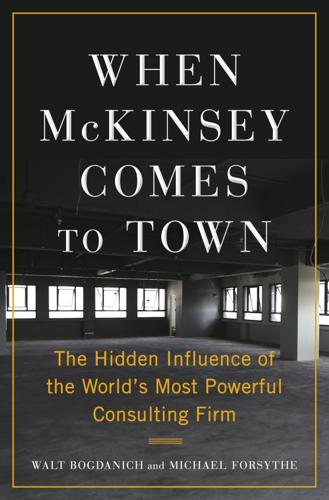
When McKinsey Comes to Town: The Hidden Influence of the World's Most Powerful Consulting Firm
by
Walt Bogdanich
and
Michael Forsythe
Published 3 Oct 2022
McKinsey shocked Washington by releasing a survey that projected almost one-third of employers “definitely or probably” would stop offering health coverage when the law took full effect in 2014. The study suggested the cure was worse than the illness, threatening to undermine the law before it rolled out. McKinsey’s findings clashed with other studies, including those by the Rand Corporation, the Urban Institute, and the nonpartisan Congressional Budget Office, prompting Democrats to demand that the consultants release their methodology. For nearly two weeks McKinsey refused, saying its research was proprietary, further infuriating congressional Democrats. “The findings of this survey are so markedly out of sync with the other assessments that it has raised legitimate questions about the product, including how and why it was created,” Democrats on the House Ways and Means Committee wrote in a letter to McKinsey’s managing partner, Dominic Barton.
…
Michael, 135 Pechman, Carl, 29 Pemex, 156 Pence, Mike, 72 Penn Square Bank, 178–79 Penrose, John, 275 Pentagon, 3, 78, 93, 118 People’s Daily, 94 Perkins, Tony, 96 Perspective on McKinsey (Bower), 156 Peters, Tom, 27, 36–37, 179 PetroChina, 99 pharmaceutical industry, 18, 20, 22, 65–69, 73, 130–48, 197, 281 pharmacies, 64, 132, 140–41, 144 Philip Morris company (later Altria), 111–20, 128 memo of 1985, 113–14 Phiri, Benedict, 236 Physicians for Responsible Opioid Prescribing, 140 Pichai, Sundar, 21 Ping An Insurance, 97, 104 Pinkus, Gary, 247 Pinner, Dickon, 150–51, 153–55, 160, 166–68 Pitt, Brad, 209 Pittman, Mark, 184, 190 “Pit-to-Port Model and Central Support” report, 165 platinum, 224 Plunk, Robert, 2 Poonawalla, Mobasshir, 87 poverty, 51–57, 62, 147 Powell, Jerome, 186 power plants, 153, 158, 166, 168–69, 206–8, 226, 231–32, 242, 266, 269 Praveen, Sreevatsa, 168–69 prescriptions, 130–31, 139–40 Pressler, Paul S., 10, 11, 13–15 Princeton University, 135 prisons and jails, 25, 78, 81, 157 private equity firms, 18, 64, 157 Private Finance Initiative (NHS), 265 privatization, 52, 261, 263–64, 269, 272–74 Procter & Gamble, 249 productivity, 49–50 Project Destiny, 263–64 ProPublica, 25, 72, 75, 79–88 PT Pertamina, 166 Public Citizen Health Research Group, 67–68, 145 public option, 62–63 Pulido, Alfonso, 126 Purdue Pharma, 109, 131–44, 280 Evolve to Excellence and, 142 FDA and, 137, 144–45, 148 settlements and, 136, 148 pure loss ratio, 198 Putin, Vladimir, 26 Q Qatar Petroleum, 163 QuantumBlack, 210–11, 214–15 Quartet, 244 Queensland, 158 R Race for the World (Bryan), 208 Racketeer Influenced and Corrupt Organizations Act (RICO, 1970), 115, 119–20 Raghavan, Anita, 39 railroads, 33, 102, 226–29, 263–64, 269 Railtrack, 263–64 Rand, Ayn, 9 Rand Corporation, 63 Rauner, Bruce, 52–53 Raytheon, 246 Reed, Maureen, 194–95 Reform think tank, 268, 271 Regiments Capital, 227, 229–30, 233, 237, 239–40 regulation, 18, 236. See also specific agencies financial industry and, 171–81, 189–90 health care and, 62, 64–65 Republican Party, 52, 59, 62–65, 107 Reuters, 178 Rice, Susan, 224 Rice University, 20 Riefberg, Vivian, 65 Rio Tinto, 156, 261 Riyadh economic conference (Davos in the Desert), 256 Riyadh Ritz-Carlton, 247, 250 Riyadh social media presentation, 280 R.

Obliquity: Why Our Goals Are Best Achieved Indirectly
by
John Kay
Published 30 Apr 2010
Lenin may have been a dreamer, Stalin a monster, but under their centralized leadership an agricultural society was transformed into a powerful industrial state. Britain and the United States imposed planning and direction on their wartime economies. Allied work in code breaking led to the development of the computer. At the RAND Corporation in California, a group of formidably intelligent young men known as the Whiz Kids developed techniques of operations research. Their methods improved the logistics of the U.S. armed forces and suggested that computers could be used extensively in planning for the private sector.6 The Whiz Kids moved from government into business.
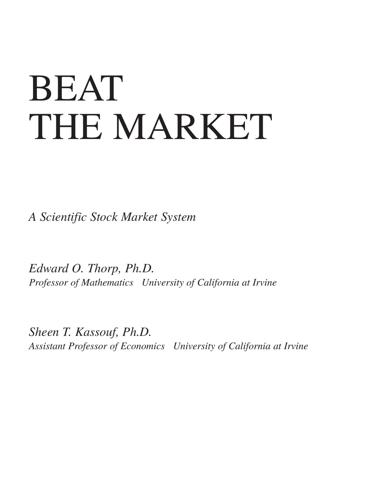
Beat the Market
by
Edward Thorp
Published 15 Oct 1967
Catskill Conference: Sperry Rand Late in the summer of 1962, with the Molybdenum warrant expiring in a year, we had to plan for the future. I turned to the Sperry Rand warrant. During the hot, steamy Labor Day weekend my wife and I sought relief in the Catskills. One night we met my brother in a resort dining room, where I tested my ideas on him. Sperry Rand Corporation, with sales of more than $1 billion yearly, resulted from the merger of Remington Rand and Sperry Gyroscope. This giant company produced business machines, the Univac electronic computers, instrumentation and controls, farm equipment, and consumer goods. The common stock, at 24 earlier in the year, fell to a new low of 14 in late September.

Operation Lighthouse: Reflections on Our Family's Devastating Story of Coercive Control and Domestic Homicide
by
Luke Hart
and
Ryan Hart
Published 15 Jul 2018
EverytownResearch.org. [Online] 11 April 2017. https://everytownresearch.org/reports/mass-shootings-analysis/. 3. Walby, S. The Cost of Domestic Violence Up-date 2009. Lancaster Univesity. [Online] 23 June 2018. http://www.lancaster.ac.uk/fass/doc_library/sociology/Cost_of_domestic_violence_update.doc. 4. Rand Corporation. The cost of terrorism in Europe. Rand.org. [Online] 23 June 2018. https://www.rand.org/randeurope/research/projects/the-cost-of-terrorism-in-europe.html. 5. HM Treasury. Spending review and autumn statement 2015. gov.uk. [Online] 23 June 2018. https://www.gov.uk/government/publications/spending-review-and-autumn-statement-2015-documents/spending-review-and-autumn-statement-2015#protecting-britains-national-security-1. 6.
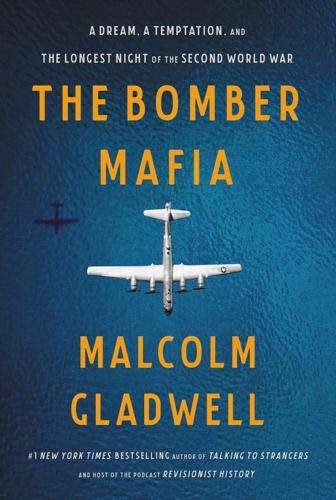
The Bomber Mafia: A Dream, a Temptation, and the Longest Night of the Second World War
by
Malcolm Gladwell
Published 26 Apr 2021
They go from the B-9 to the B-10 to the B-12 to the B-15 prototype to the B-17 to the B-29 in about ten years, which is extraordinary when you think about it. 3. I worry that I haven’t fully explained just how radical—how revolutionary—the Bomber Mafia thinking was. So allow me a digression. It’s from a book I’ve always loved called The Masks of War, by a political scientist named Carl Builder. Builder worked for the RAND Corporation, the Santa Monica–based think tank set up after the Second World War to serve as the Pentagon’s external research arm. Builder argued that you cannot understand how the three main branches of the American military behave and make decisions unless you understand how different their cultures are.

Wired for War: The Robotics Revolution and Conflict in the 21st Century
by
P. W. Singer
Published 1 Jan 2010
Department of Labor, Bureau of International Affairs (2003), and Thoraya Ahmed Obaid, “State of World Population 2003: Making 1 Billion Count” (New York: United Nations Population Fund, 2003). 285 “These poor, young billions” Petersen, “A Strategy for the Future of Humanity.” 285 Population growth in Sudan “Water Find ‘May End Darfur War’ ” BBC News, July 18, 2007 (cited July 18, 2007); available at http://news.bbc.couk/2/hi/africa/6904318.stm 285 “the century of ‘not enough’ ” Peters, “The Culture of Future Conflict.” 285 global warming will bring water scarcity Rob Taylor, “Millions to Go Hungry by 2080: Report,” Truthout, January 30, 2007, http://www.truthout.org/issues_06/013007EA.shtml 285 100 million people Michael Casey, “Report: Millions Face Hunger from Climate Change,” Christian Post, April 10, 2007, http://www.christianpost.com/article /20070410 /26802_Report: _ Millions_ Face_Hunger_from_Climate_Change.htm 285 “Unchecked climate change” Ibid. 286 “Now the ignorant know” Ralph Peters, interview, Peter W. Singer, March 29, 2007. 286 the more people are connected Richard O. Hundley and RAND Corporation, The Global Course of the Information Revolution: Recurring Themes and Regional Variations (Santa Monica, CA: RAND, 2003). 286 fifty countries that have “stateless zones” George J. Tenet, The Worldwide Threat 2004: Challenges in a Changing Global Context. 286 “Extreme losers in the information revolution” Hundley and RAND Corporation, The Global Course of the Information Revolution. 287 Al-Qaeda’s movement of its training camps George J. Tenet, The Worldwide Threat 2004. 287 “It has become increasingly difficult” Syed Hamid Albar, “Remarks at the U.S. and Islamic World Forum” (presentation, Doha, Qatar, February 17, 2006). 287 over half of humankind Tom Standage, A History of the World in 6 Glasses (Walker & Company, 2006), 93; David Oliver, “Training Street Fighters,” Military Technology 31, no. 4 (2007): 39. 287 are about forty times larger Joseph Grosso, review of Monster at Our Door by Mike Davis (2005), Z Magazine 19(11) (2005), available at http://zmagsite.zmag.org/Nov2006/grosso1106.html. 287 “The city—capstone of human organization” Ralph Peters, “Our Soldiers, Their Cities,” Parameters 26, no. 2 (1996): 45. 287 “the new forests” Ralph Peters, e-mail, Peter W.
…
Dunlap Jr., “The Origins of the American Military Coup of 1912,” Parameters, 12, no. 4 1992. 213 “are part of the traditional U.S. military repertoire”Jeffrey Record, “Why the Strong Lose,” Parameters 35, no. 4 (2005): 16. 213 “During the Cold War” Steven Metz, Learning from Iraq: Counter-Insurgency in American Strategy (Carlisle, PA: U.S. Army War College, 2006), 78. 213 not being localized battles of asymmetry Rick Brennan et al., “Future Insurgency Threats” (RAND Corporation, 2005); David Kilcullen, “Countering Global Insurgency,” Journal of Strategic Studies 28, no. 4 (2005). 213 “in discussing any modernization effort” Ann Roosevelt, “FCS Would Bring Significant Advantages to Future Insurgency-Type Operations, Harvey Says,” Defense Daily, January 23, 2007. 213 “We continue to focus” Thomas X.
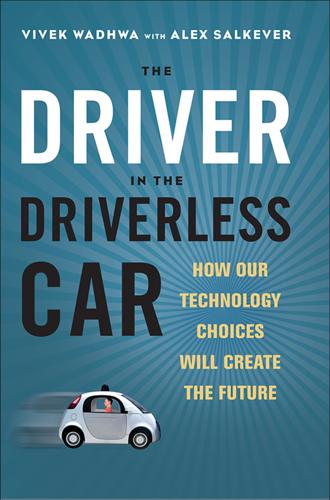
The Driver in the Driverless Car: How Our Technology Choices Will Create the Future
by
Vivek Wadhwa
and
Alex Salkever
Published 2 Apr 2017
“Uber banned in Germany as police swoop in other countries,” BBC News 20 March 2015, http://www.bbc.com/news/technology-31942997 (accessed 21 October 2016). 4. Personal communication with author. 5. James A. Dewar, The Information Age and the Printing Press: Looking Backward to See Ahead, Santa Monica, California: RAND Corporation, 1998, http://www.rand.org/pubs/papers/P8014.html (accessed 21 October 2016). PART TWO CHAPTER FIVE 1. Gustavo Diaz-Jerez, “Composing with melomics: Delving into the computational world for musical inspiration,” LMJ December 2011; 21:13– 14, http://www.mitpressjournals.org/doi/abs/10.1162/LMJ_a_00053 (accessed 21 October 2016). 2.
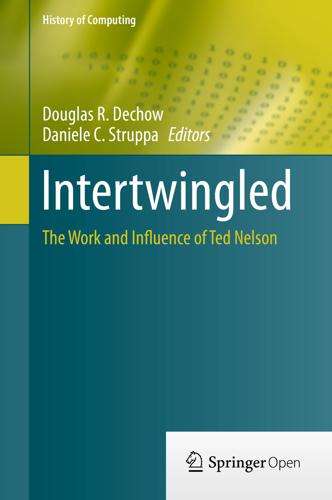
Intertwingled: The Work and Influence of Ted Nelson (History of Computing)
by
Douglas R. Dechow
Published 2 Jul 2015
In: Levien RE (ed) Computers in instruction: their future for higher education: proceedings of a conference held in October 1970. A Report Prepared for National Science Foundation and Carnegie Commission on Higher Education, pp 185–99. R-718-NSF/CCOM/RC. Santa Monica, CA; Washington, D.C.: The RAND Corporation; distributed by ERIC Clearinghouse. http://files.eric.ed.gov/fulltext/ED052635.pdf *Nelson TH (1971) The route to Halftone image synthesis. Comput Decis May. Begins p. 12 Nelson TH (1973) A conceptual framework for man-machine everything. In: Proceedings of the June 4–8, 1973, National Computer Conference and Exposition, m21–26.
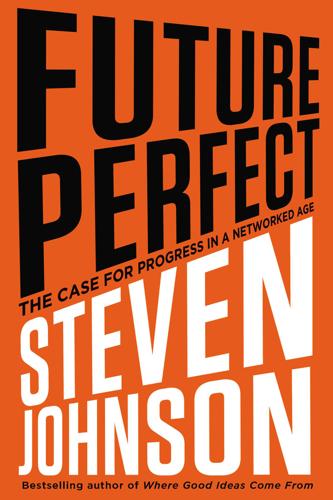
Future Perfect: The Case for Progress in a Networked Age
by
Steven Johnson
Published 14 Jul 2012
“I was scared shitless,” he later told Stewart Brand, in a Wired magazine interview, “because you had all these missiles that could go off by anyone’s stupidity. The technology was never to be trusted.” As the cold war intensified after the launch of Sputnik in 1957, Baran took a new job at the RAND Corporation, where he got involved in a project to design a new command-and-control architecture for military communications. Baran was concerned that a nuclear detonation would disrupt high-frequency communications, so he began tinkering with a model whereby the military could hijack “ground wave” communications between broadcast stations, with each station relaying the message to others along the chain.
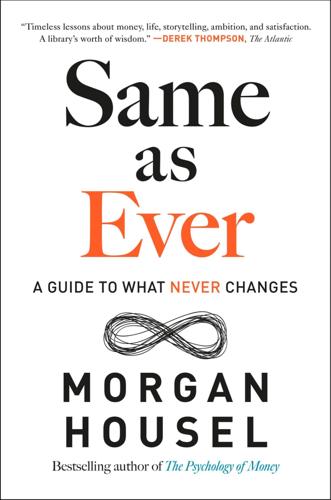
Same as Ever: A Guide to What Never Changes
by
Morgan Housel
Published 7 Nov 2023
GO TO NOTE REFERENCE IN TEXT only 1,500 calories: Tokuaki Shobayashi, “History of Nutrition Policy in Japan,” Nutrition Reviews 78, supp. 3 (December 2020): 10–13, academic.oup.com/nutritionreviews/article/78/Supplement_3/10/6012429. GO TO NOTE REFERENCE IN TEXT A study of twenty thousand people: Rand Corporation, “Lasting Consequences of World War II Means More Illness, Lower Education and Fewer Chances to Marry for Survivors,” press release, January 21, 2014, rand.org/news/press/2014/01/21/index1.html#:~:text=The%20study%20found%20that%20living,more%20likely%20to%20have%20depression. GO TO NOTE REFERENCE IN TEXT “[They] were gnawed at by”: Frederick Lewis Allen, The Big Change: American Transforms Itself 1900–1950 (1952; rept., New York: Routledge, 2017), 148.
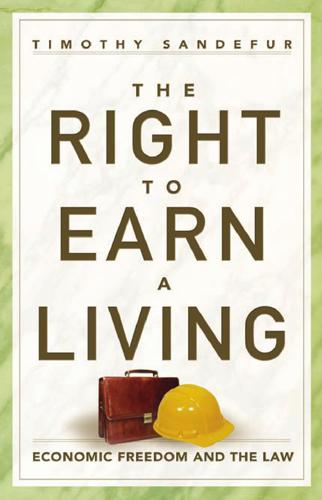
The Right to Earn a Living: Economic Freedom and the Law
by
Timothy Sandefur
Published 16 Aug 2010
And almost every state’s courts have found “implied contracts” based on the employer’s conduct, which limit the ability to fire an employee despite the fact that no explicit contract ever existed.95 As a result of these decisions, employers are more reluctant to hire new employees, and longer-tenure employees are likely to keep their jobs even if they fail to perform. It is impossible to measure the precise economic effect of restrictions on at-will employment, but a thorough 1992 research project by the Rand Corporation found that “aggregate employment averages 2.9 percent lower in years following a state’s recognition of tort damages for wrongful termination,” and that states recognizing both tort and contract causes of action for wrongful termination would have about 4.7 percent lower employment than states that did not.96 When state courts adopt limits on the at-will employment contract, 235 The Right to Earn a Living aggregate employment drops by 2 to 5 percent—even more in service industries and large businesses.
…
Bogen), 288 privileges and immunities clause, 4 Corfield and, 40–41 dormancy, 43–44 overruling, revival, reversal of, 287–92 right to make and enforce contracts, 288–89 Slaughterhouse and, 41–44 states’ rights and, 40–41 productive work, 3 professions barriers to entry, 63, 141 licensing, 23, 63, 99–100, 145–56 restricted entry, 22, 23 restricting or eliminating competition, 289–90 unskillfulness, 23 Progressive Era, xiv–xv, 44–50 eminent domain and, 32 misconceptions about, 47–49 regulation of business and economy, 13, 15, 123–27, 136–37 Supreme Court, 15, 279. see also specific justices 371 Index Progressivism agenda, ideology, and philosophy, 11, 12–13, 44–50, 279–81 assault on economic liberty, 11–16, 44–50, 279–81, 290, 292 changing American political philosophy, 44–50 criticism of and attack on Lochner, 107–10, 121 doctrines, 279–81 economic freedom argument, 123–27 free speech and, 191–92 majority over individuality, 11, 44–45, 109–10, 121, 279, 292. see also collective decisionmaking notion of individual freedom, 116–17 pro-government presumption, xiii–xiv, 11–13, 44–50 rational basis test and, 125–27 rights as permissions, 95, 109, 116–17, 279, 282–83 socialist nature of, 46, 123–27 visionary zeal to do gooders, 13, 46 Prohibition, legacy of, 183–84 property corporate, 34 regulation as secondary to, 272–73 property redistribution government redistributive programs, 283 Progressivism and, 13 property rights, xvii, 24–25 of criminals, 259 givings theory and, 272–74 land-use regulation, 160. see also zoning laws, protectionism and Locke on, 273 ownership as separate from right to use, 257 partial property rights in other people, 290–91 Rehnquist and Roberts Courts, 277–78 right of use of property or land, 257, 271 see also regulatory takings Property Rights from Magna Carta to the Fourteenth Amendment (Bernard Siegan), 283 Prosser, William, 76 protection of the public. see public interest or public welfare protection of unenumerated rights, 93–94 372 protectionism, xvi, 141–44, 173–74 agricultural adjustment programs, 164–70, 174 barriers to entry, 141 contracts clause and, 154 dormant commerce clause and, 153–54 franchise acts and, 170–73, 174 as legitimate state interest, 289 licensing laws, 145–59, 174 necessity of new business and certificates of necessity, 143–44 public choice theory and, 289–90 tariffs, 141 taxi industry example, xi–xiii, xiv, xv, xvi, 143–44, 286 zoning laws, 159–63, 174 public choice theory, 289–90 public contracts, 69–73 public interest or public welfare contracts clause, 75–81 Liebmann and, 142–43 Munn and Nebbia and, 101, 125–27. see also rational basis test Powers and, 152–55, 159, 162, 289 seizure of property. see eminent domain doctrine; regulatory takings public nuisance, xvii Blackmun on, 240 common or public right definition, 241 reasonable and lawful conduct, 243–45 reasonableness and unreasonableness, 240–41, 242 regulatory takings and, 258 tort law abuse, 239–45 public policy, manipulation of contracts and, 214, 215, 220–24 public use, synonymous with public benefit, 255 Pumpelly v. Green Bay Company, 256–57, 258 Radford, R. S., 262 railroads antitrust case Alaska Railroad, 56–57 corporation as person in Santa Clara County, 34 eminent domain doctrine and, 31–32, 48 raisin-confiscation case, 164–65, 167–69, 270–71 Rand, Ayn, 285 Index Rand Corporation employment research, 235–36 rational basis test, xv, xvi, 15, 273, 286, 289 argumentum ad ignoratium fallacy, 129 burden of proof and, 128, 129–30 constitutional double standard, 136–40 defining legitimate state interest, 129, 132–33 evolution, 123–27 laws related to legitimate government interest, 132–33 occupational licensing and, 133–34, 148–49, 151, 153, 156–59, 174 problems with, 127–34 varying standards and levels of scrutiny, 135–40 realist school of legal thought, 12 Redish, Martin, 200, 201 regulation, secondary to concept of property, 272–73 regulation of business and economy, 11 constitutionality of, xv Populist Era, 39–44 Progressive Era, 13, 15, 44–50, 123–27, 136–37 protecting business from competition. see protectionism in public interest, 5, 125–27, 142–43 unfettered, 6 see also rational basis test regulatory state, 286, 289 entrenched interests and lobbyists and, xiv–xv regulatory takings, xvii, 255–56 categorical (with compensation) takings, 260–62 character of government action and, 262–63 compensation-denial tactics, 268–74 compensation requirement and, 255, 264–68, 271 constructive consent rule, 269 controversies surrounding, 264–68 definition of “take,” 256–60 development and, 265, 271, 275–76 eminent domain and, 255–60, 267 exactions as, 274–77 extortion in, 274 fairness within, 263 Fifth Amendment and, 255 future of takings law, 277–78 givings theory and, 272–74 noncompensable regulation as actual confiscation, 258–59 notice rule theory, 269 Penn Central test, 260, 262–64, 268 police powers and, 257–60, 263 public good over individual rights protection, 265–66 reasonableness of owner expectations, 263–64, 270 reasons for, 256–60 right of use of property or land, 257, 271 types of, 260–64 Rehnquist, William, 277 Reinhardt, Stephen, 237–38 rent-control, 75 residential development fees, 275–76 resource allocation and use, Progressives and, 13–14 Restatement of Torts, 240–41 The Return of George Sutherland (Hadley Arkes), 7 Rhode Island common insignia laws, 207 lead paint public nuisance case, 239, 244–45 regulatory taking examples, 262, 270 Richardson, Dorsey, 124 right to earn a living, xvi–xvii, 1–5, 12 as a natural right, 23–25, 39, 48, 169. see also natural rights of all humanity noncompetition clauses and, 64–65 present-day attitude toward and consensus on, 5–6 see also economic freedom and liberty rights limits of, 7 as permissions, 95, 109, 279, 282–83 Roberts, John, 277–78 Robinson-Patman Act, 53 Rockefeller, Edwin, 54 Romer v.
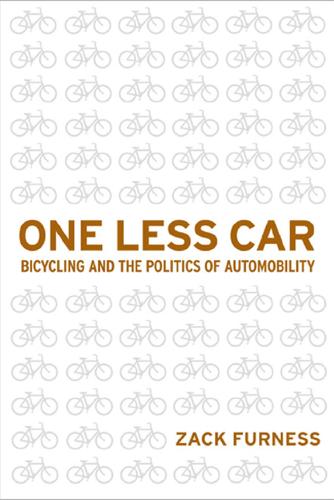
One Less Car: Bicycling and the Politics of Automobility
by
Zack Furness
and
Zachary Mooradian Furness
Published 28 Mar 2010
Carlsson says that in creating a moving, celebratory event, Critical Mass “opens up the field of transit to new political contestation, and pushes it to another level by pioneering swarming mobility as a new tactic.”116 indeed, the model is apparently effective enough to be highlighted in the ranD Corporation’s report for the national Defense research institute entitled “networks and netwars: The Future of Terror, Crime, and Militancy.”117 The authors of the study thankfully manage to distinguish bicyclists from international terrorists and drug cartels, but their respect for the tactical potential of “swarming mobility” is abundantly clear. and while bikes are not widely used in public protests, activists have experimented with this possibility at antiwar protests in portland, pittsburgh, Houston, richmond, and San Francisco.
…
See also individual bands Punk Planet (zine), 143 pursell, Caroll, 285n71 pye, Dennis, 35 Quartuccio, Brad, 180 Quicksilver (film), 112 Quigley, anita, 130 raab, alon, 87–88 racial profiling and Biking While Black, 102 radical flank effect, 100 rail transportation: and panoramic view, 40; as segregated, 32 raleigh (bicycle manufacturer), 217 rambo (band), 145 ranD Corporation, 104 rather, Dan, 3 rational Dress Society, 20 rat patrol, 155 ravenscroft, lee, 191 reagan, ronald, 285n71 Real World (television program), 112 reason Foundation, 136, 209 rebar: and parKcycle, 96; and parK(ing) Day, 96 reclaim the Streets, 8, 80, 137 re~Cycle, 188 reCycle ithaca’s Bicycles (riBS), 172, 283n52 recycle-a-Bicycle, 172, 173 re-cycles Bicycle Co-op, 175 redwood Highway, 44 reilly, rebecca “lambchop,” 126–127, 164, 165, 264n76 rennes, France, 58 replogle, Michael, 172, 186–187 republican national Convention, 1, 104 richmond, virginia, 104 right of Way, 97 rimbaud, penny, 273n44 rinaldi, “Chicken” John, 155 ritchie, andrew, 30, 210, 235–236n108 road building, 38–39, 238nn157–158; cost of improvement of national road system, 209; and symbolic power of roads, 83 roberts, John, 159 rosen, paul, 8, 141, 149, 153–154, 213, 226– 227n2 ross, andrew, 123, 273–274n49 roth, Matthew, 9 rothman, Greg, 183 rowan, David, 129 rudge and Company, 41 ruelas, Fernando, 275n66 ruin, Erik, 146 rwanda, 201 Sadler, Simon, 85 Safety bicycles, 19, 22 Salvadoran Center for appropriate Technology (CESTa), 191–192, 200 San Francisco, California, 79, 96, 100, 104, 123, 250n7 San Francisco Bicycle Coalition, 63, 68, 79, 99, 100 Schimek, paul, 113 Schimmelpenninck, luud, 56, 58 Schivelbusch, Wolfgang, 32, 40 Schmidt, Conrad, 105 Schudson, Michael, 119 Schumacher, E.
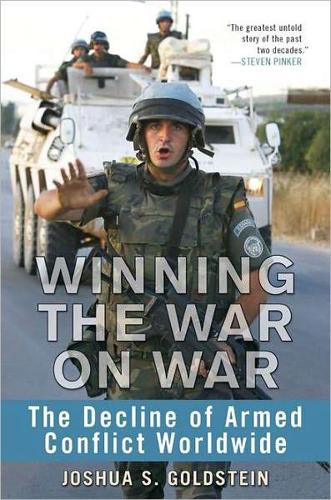
Winning the War on War: The Decline of Armed Conflict Worldwide
by
Joshua S. Goldstein
Published 15 Sep 2011
The “baseline” of peacekeeping forces worldwide in the post–Cold War era, about 100,000, “has been inadequate for the tasks at hand.” Two recent studies cost out the options for expanding these capabilities. The first, by military policy expert Michael O’Hanlon, finds the costs of a large standby force from industrialized countries would be “very expensive” but “not astronomical.” The second, by the RAND Corporation, finds that costs run ten times higher in a mission that must impose a solution by force compared to one operating with the consent of all parties. For a poor country of 5 million, such as Sierra Leone, a “light peacekeeping” mission needs 8,000 international troops, 1,000 police, and $500 million.
…
“Quincy Wright’s Contribution to the Study of War: A Preface to the Second Edition.” In Quincy Wright. A Study of War: Second Edition. University of Chicago Press, 1965. Diehl, Paul F. Peace Operations. Cambridge, UK: Polity, 2008. Dobbins, James, Seth G. Jones, Keith Crane, and Beth Cole DeGrasse. The Beginner’s Guide to Nation-Building. Santa Monica: RAND Corporation, 2007. Donnelly, Jack. Universal Human Rights in Theory and Practice. 2nd ed. Ithaca: Cornell University Press, 2003. Downes, Alexander B. Targeting Civilians in War. Ithaca: Cornell University Press, 2008. Doyle, A. Conan. “Silver Blaze.” In Memoirs of Sherlock Holmes. New York: A. L. Burt, 1894.
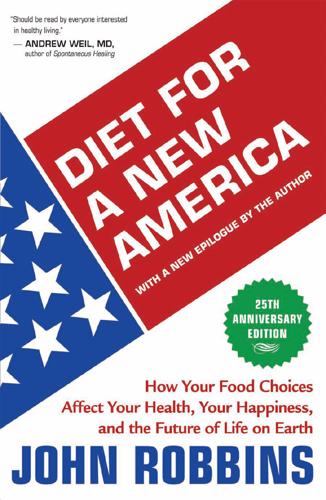
Diet for a New America
by
John Robbins
If the cost of water needed to produce a pound of meat were not subsidized, the cheapest hamburger meat would cost more than $35 a pound! Cornell economist David Fields and his associate Robin Hur have studied the fiscal consequences of water subsidies to the meat industry: Reports by the General Accounting Office, the Rand Corporation, and the Water Resources Council have made it clear that irrigation water subsidies to livestock producers are economically counterproductive. Every dollar that state governments dole out to livestock producers, in the form of irrigation subsidies, actually costs tax payers over seven dollars in lost wages, higher living costs, and reduced business income… The 17 Western states receive limited precipitation, yet their water supplies could support an economy and population twice the size of their present ones.
…
daily needs, 153–57, 154 deficiencies, 157, 165–66 diets moderate in, 267 excess of, as osteoporosis cause, 169–73, 172 t., 178–80 excess of, health consequences of, 180–82 exercise and, 167–69 gout and,268 meat/dairy industry promotion of, 151–52, 158–59 poultry and, 53 research on, 158, 163–65 protein efficiency, 326–27 Provimi, Inc., 95–98, 100, 101, 102 psyllium husks, 263 puberty, early onset of, 245, 245 t., 248, 286–88 Public Health Research Institute, 278 public schools animal protein promoted in, 151, 158–59, 167 dairy industry “educational materials” at, 146, 182, 216 frog dissections in, 5 meat industry “educational materials” at, 107–13, 108–9, 182 Puccini, Giacomo, 23 Puerto Rico, 287–88 Pure Food and Drug Act (1906), 121 purines, 268 purse seines, 13–14, 21 R Rabon, 312–13 railroads, cattle shipping regulations of, 86 Rainforest Action Network, 340 rain forest destruction, 338–40 RAMBLING ROSE BRAND, 100 Rand Corporation, 342 Reagan, Ronald, 13–14, 292–93 Reed, Herbert, 41 “Re-evaluation of the Nutrient Role in Animal Products, A” (report), 285 Regenstein, Lewis, 293, 297, 308, 310, 313–14, 318–19 renewable energy, 350, 367 Republic (Plato), 329–30 Reuben, David, 153 rheumatoid arthritis, 267, 268 Rifkind, Basil, 224 Ringo (dog), 9 Rio de Janeiro (Brazil), environmental summit in, 361 Ritewood Farms (Idaho), 307–8 ritual slaughter, 120–23 Riverside Meat Packers, 240 “Rocky Mountain oysters,” 114 rodeos, 90 Romney, Hugh, 261 roosters, 32, 41 Rose, Murray, 141, 143 Ryan, Kerrie, 296–97 Ryan, Michael, 296 S Saenz, Carmen A., 286–88 safflower oil, 258 Saleh, Randy, 9 salmonellosis, 277–81 salmon fishing, 13–14 salt, 179, 270–71 Salt, Henry S., 113–14 saturated fats atherosclerosis caused by, 188–96 blood cholesterol and, 193 t.

The Zero Marginal Cost Society: The Internet of Things, the Collaborative Commons, and the Eclipse of Capitalism
by
Jeremy Rifkin
Published 31 Mar 2014
Even if the electrical transformers were to flame out, if a fully functioning Energy Internet were operational across every region of the country, local communities could go off-grid and continue to generate their own green electricity, sharing it with their neighbors and businesses on microgrids, keeping the power and lights on, at least long enough to keep society functioning. Interestingly, a similar concern about the vulnerability of America’s communications network inspired, at least in part, the creation of the Internet. In the 1960s, Paul Baran and other researchers at the Rand Corporation began to ponder the question of how to ensure the continued operability of the nation’s communications network in the event of a nuclear attack. Baran and his colleagues began to envision a distributed network of host computers, without a central switchboard, that could continue to function even if a nuclear attack was to cripple part of the nation’s communications system.
…
Wald, “Terrorist Attack on Power Grid Could Cause Broad Hardship, Report Says,” New York Times, November 14, 2012, http://www.nytimes.com/2012/11/15/science/earth /electric-industry-is-urged-to-gird-against-terrorist-attacks.html?_r=0 (accessed July 16, 2013). 70. April Mara Major, “Norm Origin and Development in Cyberspace: Models of Cybernorm Evolution,” Washington University Law Review 78(1) (2000):78–79; “Paul Baran and the Origins of the Internet,” RAND Corporation, 2013, http://www.rand.org/about/history/baran.html (accessed November 14, 2013). 71. Diane Cardwell, “Solar Companies Seek Ways to Build an Oasis of Electricity,” New York Times, November 19, 2012, http://www.nytimes.com/2012/11/20/business/energy-environment/solar -power-as-solution-for-storm-darkened-homes.html (accessed February 2, 2013). 72.
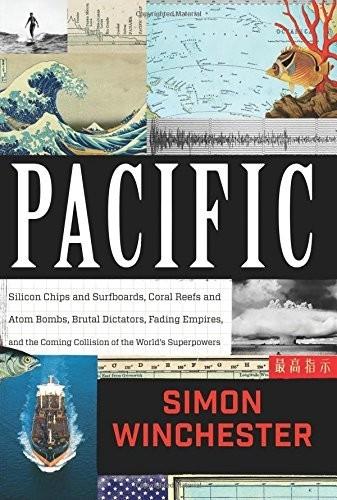
Pacific: Silicon Chips and Surfboards, Coral Reefs and Atom Bombs, Brutal Dictators, Fading Empires, and the Coming Collision of the World's Superpowers
by
Simon Winchester
Published 27 Oct 2015
Together with its adjoining naval air station, which in its own way was quite as busy as Clark, Subic Bay was about the same size, at more than two hundred sixty square miles. It was principally used as a forward operating base for the U.S. Seventh Fleet, and during the Vietnam War it repaired and resupplied hundreds of vessels and their aircraft. In 1987 the RAND Corporation, which advises on long-term military planning for the American government, had little doubt as to the strategic value of the two bases: “It would be devastating to regional security if the USA’s relationship with the government in Manila deteriorated to the point where it lost its base access.
…
See also Hawaii; and other specific regions Ellices Islands and, 9, 214 French nuclear tests and, 19 Hawaii and, 4–6, 9 home sea of, 431 migrations and navigation by, 125n, 126, 427–41, 444 Micronesia and, 43 surfing and, 27, 122, 127–33, 139–40, 142, 144–45, 149 Polynesian Voyaging Society, 435 Popular Science, 141 Port Arthur, 414 Port Dawin cable station, 232 Port Edward, 414 Port Moresby, 5 Portugal, 28, 228–29, 273, 414, 424 Poseidon aircraft, 404n Potsdam conference (1945), 203, 393 ppwo and ppalu (Polynesian navigation and navigators), 433–34, 434 President, USS (frigate), 152 Prinz Eugen (German cruiser), 12–13, 13n, 57 Project 4.1, 74 “Prokaryotic Cells in the Hydrothermal Vent Tube Worm” (Cavanaugh), 325–26 Pueblo, USS (spy ship), 151–52, 156–76, 187, 158, 168 Pulama Lanai, 374 Pulau Island, 10 Pupukea, Hawaii, 144 QE75 pens, 200 Qingdao (formerly Tsingtao), 9, 408 Queen Elizabeth (liner), 190–99, 191, 202, 229 Queen Mary (liner), 192–94 Queensland, 212n, 220, 234, 281n, 293, 339, 341, 347–48 Quinn, Sally Mae, 108 Rabaul, 333 racism, 296–98 radioactivity, 32–37, 62–63, 67–78, 68, 218 radio transistor, 83–119 RAF bombers, 13n Raffles, Stamford, 212 rafts, 126 Raiateans, 431 Ralik Chain (Sunset Chain), 49 Ramos, Fidel, 396 Rand Corporation, 381–82 Rapa Nui, 431. See also Easter Island Ratliff, Smiley, 218n rats, 357n, 362 RCA, 113 Réard, Louis, 43 Red Guards, 196 Redondo Beach, 135–37, 140 Red Sea, 343, 346 Reed Tablemount, 396 refugees, 298–303 Regency TR-1 radio, 105, 107 Riddiford, Charles, 153 Rifleman Bank, 396 “Rime of the Ancient Mariner” (Coleridge), 356 Ring of Fire, 313, 315, 333, 378, 389 RMA (revolution in military affairs), 415n, 416 Roaring Forties, 309, 356 Robert Island, 396 Robeson, Paul, 285 Robinson Crusoe (Defoe), 19 Robinson family, 375 Rockhampton, Australia, 349 Rodney, Lord, 167 Roi-Namur Islet, 15 Ronald Reagan Ballistic Missile Defense Test Site (Kwajalein), 12 Rongelap Atoll, 52, 60, 64, 65, 70, 73–77, 78 Roosevelt, Franklin D., 46, 64–65 Roosevelt, Theodore, 367, 386, 411, 415 Rose Atoll, 367 Rosenbluth, Marshall, 71–72 Rossby waves, 262 Royal Charlotte Reef, 396 “Royal Sport, A” (London), 121, 133 Rusk, Dean, 154 Russia, 116, 190, 337, 362, 401n, 415, 416, 421n.
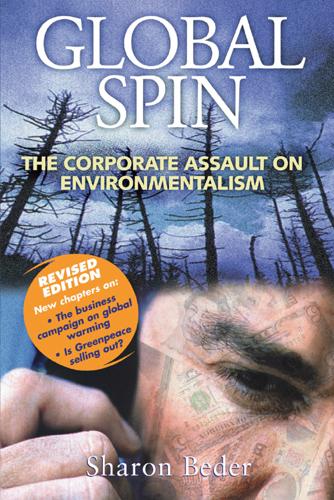
Global Spin: The Corporate Assault on Environmentalism
by
Sharon Beder
Published 1 Jan 1997
The think tanks themselves are seldom investigated by the media.12 Most cited think-tanks in 1999, by media13 Think-Tank Political Orientation No. of Citations Brookings Institution centrist 2,883 Cato Institute conservative/libertarian 1,428 Heritage Foundation conservative 1,419 American Enterprise Institute conservative 1,263 Council on Foreign Relations centrist 1,231 Center for Strategic and International Studies conservative 1,205 RAND Corporation centre-right 950 The editor of the Heritage Foundation’s journal observed that by the end of the 1980s, editorial pages were dominated by conservatives. Media commentator and progressive columnist Norman Solomon also notes that the mainstream media in the 1990s tends to offer either experts who support the status quo or “populists of the right-wing variety”.
…
ref1–ref2 pharmaceutical industry ref1 Philip Morris Companies Inc ref1, ref2 Phillips Petroleum Company ref1 Pinchot, Gifford ref1–ref2 Pizza Hut ref1 Placer Dome ref1, ref2–ref3 Planet Central Television ref1–ref2 Plant, Christopher and Judith ref1 plastics ref1, ref2, ref3 Plastics and Chemical Industries Association (PACIA) ref1 Plastics World ref1 Poland ref1 Policy Review ref1 politics corporate shareholdings ref1–ref2 grassroots campaigns ref1 influence of PR ref1–ref2, ref3–ref4, ref5 in the media ref1–ref2, ref3, ref4, ref5–ref6 think-tanks ref1–ref2, ref3, ref4–ref5, ref6, ref7–ref8, ref9, ref10–ref11, ref12, ref13 Pollak, Michael ref1 pollution air ref1, ref2, ref3, ref4 industrial ref1 limits ref1 prevention ref1–ref2, ref3, ref4 public concern ref1 tradeable rights ref1, ref2 water ref1, ref2, ref3, ref4–ref5, ref6 Polystyrene Packaging Council ref1 Porter/Novelli ref1, ref2 positive spin ref1, ref2–ref3, ref4–ref5 PR see public relations PR Newswire ref1 PR Watch ref1, ref2 press releases ref1–ref2 Price, Stuart ref1 Pring, George ref1, ref2, ref3, ref4 Prism Communications ref1 Private Property Protection Act (1992) ref1, ref2 privatization ref1, ref2 Procter & Gamble ref1–ref2 Progress and Freedom Foundation ref1 Project Learning Tree ref1 propaganda corporate funding ref1–ref2, ref3–ref4 grassroots ref1 media ref1 by PR industry ref1, ref2–ref3 in schools ref1, ref2, ref3, ref4 of think-tanks ref1–ref2, ref3, ref4, ref5, ref6–ref7, ref8–ref9 treetops ref1–ref2 property rights ref1, ref2, ref3–ref4, ref5–ref6, ref7–ref8 protests ref1, ref2 Prudential Securities Inc ref1 pseudo-environmentalism in advertising ref1–ref2, ref3 in education ref1–ref2, ref3–ref4 of front groups ref1–ref2 of PR industry ref1–ref2, ref3–ref4 of Wise Use Movement ref1,54 Public Broadcasting Service (PBS) ref1, ref2, ref3, ref4 Public Interest Profiles ref1 public opinion crisis communication ref1–ref2 environmental concern ref1, ref2–ref3, ref4–ref5, ref6–ref7 of government ref1–ref2, ref3–ref4, ref5 influencing ref1, ref2, ref3–ref4, ref5–ref6, ref7–ref8, ref9 media influence ref1–ref2 PR influence ref1, ref2–ref3, ref4, ref5–ref6, ref7–ref8, ref9–ref10, ref11 risk communication ref1–ref2 TV influence ref1–ref2, ref3–ref4 see also opinion polls public participation ref1–ref2 public relations anti-environmentalism ref1–ref2 background ref1–ref2 campaigns ref1–ref2, ref3–ref4, ref5–ref6, ref7, ref8–ref9, ref10,217, ref11 see also public relations, Sydney’s Olympic Games chlorine industry ref1–ref2 corporate clients ref1, ref2, ref3, ref4, ref5, ref6, ref7 corporate philanthropy ref1–ref2 crisis communication ref1–ref2 ‘cross-pollination’ ref1 cultivating trust ref1–ref2, ref3 dioxin defence ref1, ref2–ref3 dirty tricks campaigns ref1–ref2 Earth Summit ref1–ref2 educational campaigns ref1, ref2, ref3, ref4 environmental ref1–ref2, ref3–ref4, ref5–ref6, ref7–ref8, ref9–ref10 environmental activism ref1, ref2, ref3–ref4, ref5 environmental problems ref1, ref2, ref3, ref4–ref5, ref6–ref7, ref8 experiments ref1–ref2 ‘experts’ ref1–ref2, ref3, ref4–ref5 front groups ref1, ref2, ref3, ref4 government employs ref1, ref2, ref3–ref4 grassroots organising ref1–ref2 ‘green’ ref1–ref2 ‘greenwash’ ref1–ref2 income ref1, ref2 intelligence gathering ref1–ref2, ref3 journalism influenced ref1–ref2, ref3–ref4 lobbying ref1–ref2 media as a tool ref1–ref2, ref3, ref4 news coverage ref1–ref2, ref3 newspaper campaigns ref1–ref2, ref3–ref4 political influence ref1–ref2, ref3–ref4, ref5 positive spin ref1, ref2–ref3 press releases ref1–ref2 propaganda ref1, ref2–ref3 pseudo-environmentalism ref1–ref2, ref3–ref4 public campaigns ref1–ref2 public opinion influenced ref1, ref2–ref3, ref4, ref5–ref6, ref7–ref8, ref9–ref10, ref11 re-imaging ref1, ref2–ref3, ref4–ref5 ‘revolving door’ syndrome ref1–ref2, ref3–ref4 risk communication ref1–ref2 strategies ref1–ref2, ref3–ref4 Sydney’s Olympic Games ref1–ref2, ref3–ref4, ref5–ref6 technological tools ref1–ref2 think-tanks ref1–ref2, ref3 tools ref1, ref2–ref3, ref4, ref5 using Earth Day ref1 versus public opinion ref1 video news releases (VNRs) ref1–ref2 Wise Use Movement employs ref1, ref2 Public Relations Journal ref1, ref2, ref3, ref4 Public Relations Management Ltd ref1–ref2 public support see grassroots organising publications, corporate-sponsored ref1, ref2, ref3, ref4–ref5 Puget Sound Fund ref1 Pusey, Michael ref1–ref2, ref3 Putnam, Todd ref1 PVC Defence Action Fund ref1 PVCs ref1, ref2 Quayle, Dan ref1 Queensland Timber Board ref1 radicalism ref1, ref2, ref3, ref4 radio ref1, ref2, ref3, ref4, ref5, ref6, ref7–ref8 rain-forests ref1, ref2, ref3, ref4, ref5, ref6 rallies ref1, ref2 Rampton, Sheldon ref1, ref2–ref3, ref4, ref5 Ramsey, Stephen ref1 RAND Corporation ref1 Rauber, Paul ref1, ref2 Ray, Dixy Lee ref1 Raymond, Jonathan ref1 re-imaging ref1, ref2–ref3, ref4–ref5 Reagan, Ronald election campaign ref1, ref2, ref3, ref4, ref5 General Electric employee ref1 as President ref1, ref2 recycling ref1–ref2, ref3, ref4, ref5 refrigerator industry ref1 Regional Environmental Plan (REP) ref1 regulation of advertising ref1, ref2–ref3, ref4, ref5 environmental ref1, ref2, ref3–ref4, ref5, ref6–ref7, ref8–ref9, ref10–ref11 Reilly, William ref1, ref2, ref3 Rensberger, Boyce ref1 Republican party ref1–ref2, ref3, ref4, ref5, ref6, ref7, ref8 research ref1–ref2, ref3, ref4–ref5, ref6 resource extraction industry ref1 Resources for the Future ref1 Responsible Care programme ref1, ref2 ‘revolving door’ syndrome ref1–ref2, ref3–ref4, ref5–ref6, ref7–ref8 Ricci, David ref1, ref2–ref3, ref4 Richardson, Graham ref1 Ridley, Matt ref1–ref2, ref3 Riley, Tom ref1 Ringland, Bill ref1 Rio Summit see Earth Summit risk assessment ref1–ref2, ref3–ref4, ref5–ref6, ref7 Risk Assessment and Cost Benefit Act (1995) ref1–ref2 risk communication ref1–ref2 Roberts, Paul Craig ref1 Rockefeller, David ref1 Rockefeller, Laurance ref1 Rohm and Haas ref1 Romania ref1 Rose, Merrill ref1 Rowell, Andrew ref1, ref2 Royal Dutch Shell see Shell Group RTZ ref1 Ruckelshaus, William ref1, ref2 Russia ref1 Ryan, Charlotte ref1, ref2 Ryan, Teya ref1 Ryan, William ref1–ref2 Saatchi and Saatchi ref1, ref2 Sahara Club ref1 Saltzman, Joe ref1 Sandberg, Steve ref1 Sandman, Peter ref1–ref2 Sanjour, William ref1 Saro-Wiwa, Ken ref1 Savage, J.A. ref1 Scaife, Richard Mellon ref1 Schauerhammer, Ralf ref1 Schneider, Keith ref1–ref2, ref3, ref4 Schulman, Beth ref1 Science and Environment Policy Project (SEPP) ref1, ref2, ref3 Scientific American ref1 scientists opposed to environmental regulation ref1–ref2 Searles, Mike ref1 Sefchek, Dixie ref1 Seitel, Fraser P. ref1 Selcraig, Bruce ref1 Sellafield ref1 Selover, Barbara ref1 Sethi, Prakash ref1, ref2–ref3, ref4 Shabecoff, Phil ref1, ref2 Shanahan, John ref1, ref2–ref3, ref4, ref5 Share Movement ref1, ref2 Shaw, David ref1 Shell, Adam ref1 Shell Group ref1, ref2, ref3, ref4, ref5 Sherrill, Robert ref1 Short, Kate ref1, ref2 Sierra ref1 Sierra Club ref1, ref2, ref3, ref4, ref5 Silas, C.J. ref1 Silent Spring (Carson) ref1 Simon, Julian ref1 Simon, William ref1 Singer, S.
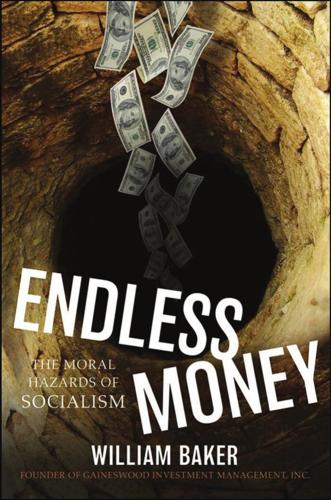
Endless Money: The Moral Hazards of Socialism
by
William Baker
and
Addison Wiggin
Published 2 Nov 2009
The actions of Elliott Spitzer galvanized the SEC to action and led to two large efforts: First was the Global Settlement, an enforcement agreement reached in April 2003 that led to a record $1.4 billion of disgorgement and penalties.28 Then, in fiscal year 2005 it assessed $700 million against three mutual fund companies,29 following up on $700 million it had collected from six complexes the year before, in matters relating to market timing and late trading at mutual funds.30 In February 2003 the SEC received approval to hire over 800 new staff members, and its FTEs numbered over 3,500 in FY 2008.31 Disgorgements and penalties have fallen off to less than $500 million in FY2007, but this is well above the $216 million seen in the quiet year of 2004. The SEC’s budget, or appropriated funding as it is known, was $906 million for FY2008, having risen 11.5 percent annually since 2001. Investor complaints however, have barely increased. From 2001 to 2007 their annual growth was just 1.6 percent.32 According to a Rand Corporation study of investment advisors and broker-dealers registered with the SEC, the combined total of these grew at an annualized rate of just 3.4 percent over the five years 2001-2006, but this growth rate was skewed by some 700 hedge funds that subsequently deregistered after the study’s end point; excluding these the annualized growth would shrink to just 2.5 percent.
…
J., 242 Patterson, Mark, 141 Paul, Ron, 160, 336 Paulson, Henry, 141, 143, 185 Payne, Stanley, 97 Pease, Michael, 141 Peretz, Martin, 145 Persecution: How Liberals Are Waging War Against Christianity (Limbaugh), 269 Peterson, Pete, 336, 339 Pew Charitable Trust, 176 Pew, Howard, 176 “Philanthropic Correctness” (Olasky), 176 PIMCO, 141–142, 144, 264 Ping, Luo, 106 Plosser, Charles I., 120 Pogo, 145 Polonius, 379 Pop! Why Bubbles are Good for the Economy (Gross), 161 Private Public Investment Program (PIPP), 32, 50, 143 Pyramiding, 37–38, 40, 53, 58, 67, 68, 175–179 415 Quick, Becky, 336 Rainbow/PUSH Coalition, 180, 183 Raines, Franklin, 19, 186, 214–215 Rand Corporation, 328 Ray, Ronald, 178 Reagan, Ronald, 199, 201, 215–216 Real bills doctrine, 49 “Redlining,” 213 Rich, Marc, 330 Rimel, Rebecca, 176 Risk management, 19–21 end of moderation, 359–362 evidence-based investing, 27–29 fake alpha and derivatives, 21–24 foreign relations, 362–368 generational event, 29–32 operational risk, 24–27 Rockefeller Foundation, 178 Rockoff, Hugh, 91–93 Roman Empire, decline of: decadence, 258–260 external factors, 260–261 leveling the masses, 272–274 military costs, 265–268 privatization, 261–265 religious upheaval, 268–272 slavery, 257–258 See also Capitalism Roosevelt, Franklin, 197, 199–200, 216, 348 Roosevelt, Theodore, 279 Rosen, Sherwin, 280 Rosenberg, Emily, 279–280 Rothbard, Murray N., 36–37, 38, 41, 44, 46–47, 53, 54, 354–356 Roubini, Nouriel, 122 Rove, Karl, 184 Rubin, Robert, 141 Rumsfeld, Donald, 15 Sabotage: America’s Enemies Within the CIA (Scarborough), 363 416 Sachs, Jeffrey, 99–105 Sailer, Steve, 212 Sarbanes Oxley Act, 317, 320, 321 Saul, Andrew, 330 Scarborough, Rowan, 363 Schact, Hjalmar, 62 Schapiro, Mary, 324, 325–326 Schiller, Robert, 373–374 Schwartz, Anna, 85, 91–92, 112 Secrets of the Temple (Greidner), 109 Secured Funding, 149 Securities and Exchange Commission (SEC), 327–329 Seidle, A.
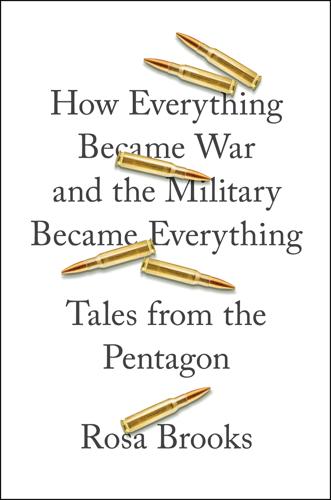
How Everything Became War and the Military Became Everything: Tales From the Pentagon
by
Rosa Brooks
Published 8 Aug 2016
Roberts, Villages of the Moon: Psychological Operations in Southern Afghanistan (Baltimore: PublishAmerica, 2005); ARSTRAT IO Newsletter, Joint Training Integration Group for Information Operations (JTIG-IO), Information Operations (IO) Training Portal; Arturo Munoz, “U.S. Military Information Operations in Afghanistan: Effectiveness of Psychological Operations, 2001–2010,” RAND Corporation, 2012, www.rand.org/content/dam/rand/pubs/monographs/2012/RAND_MG1060.pdf. 22. John A. Nagl, Knife Fights: A Memoir of Modern War in Theory and Practice (New York: Penguin, 2014). 23. Ibid., 18. Portions of this section draw on a review of Nagl’s book originally published in The Washington Post.
…
Ernesto Londoño, “Study: Iraq, Afghan War Costs to Top $4 Trillion,” Washington Post, March 28, 2013, https://www.washingtonpost.com/world/national-security/study-iraq-afghan-war-costs-to-top-4-trillion/2013/03/28/b82a5dce-97ed-11e2-814b-063623d80a60_story.html. 2. Clausewitz, On War, 75. 3. “Military Careers,” U.S. Bureau of Labor Statistics 2015, accessed January 23, 2016, www.bls.gov/ooh/military/military-careers.htm. 4. Dave Baiocchi, Measuring Army Deployments to Iraq and Afghanistan, RAND Corporation, 2013, www.rand.org/content/dam/rand/pubs/research_reports/RR100/RR145/RAND_RR145.pdf. 5. Nese F. DeBruyne and Anne Leland, American War and Military Operations Casualties: Lists and Statistics (CRS Report No. RL32492) (Washington, DC: Congressional Research Service, January 2, 2015), www.fas.org/sgp/crs/natsec/RL32492.pdf. 6.

Turning the Tide
by
Noam Chomsky
Published 14 Sep 2015
According to senior officials at the Pentagon, Nicaragua acquired its first Soviet-made tanks in mid-1981: “Until then, another Defense Department official said, they had been receiving ‘small arms and light artillery, mostly’.” FDN spokesman Bosco Matamoros stated “that armed rebels began attacks in 1980,” which is “when Sandinista officials began complaining of attacks.” They also date their “training and assistance from the Argentine military” to 1980. Rand Corporation specialist Brian Jenkins, discussing “indirect forms of warfare,” observes that “Argentina acted as a proxy for the United States in Central America,” referring to Argentina under the neo-Nazi generals during the period when congressional human rights restrictions were hampering direct US engagement in state terrorism.
…
He and his terrorist associates, holding Argentine passports, transmitted information to the Argentine neo-Nazi generals on left-wing exiles and passed on “arms, equipment, and finally men for the Salvadoran death squads.”64 Surely all of this was well-known to the US government. As noted earlier, Rand Corporation terrorism expert Brian Jenkins notes blandly that “Argentina acted as a proxy for the United States in Central America,” referring to Argentina under the murderous neo-Nazi generals, now on trial for massive crimes; he adds that the US “provides military assistance and training to the Honduran armed forces, while Argentinian advisers until recently provided training and management support to the Nicaraguan guerrillas,”65 a well-coordinated joint operation, terminated when the military dictatorship in Argentina was overthrown.

The Problem of Political Authority: An Examination of the Right to Coerce and the Duty to Obey
by
Michael Huemer
Published 29 Oct 2012
Wikipedia lists an additional five nations with ‘no standing army but ... limited military forces’: Haiti, Iceland, Mauritius, Monaco, and Panama (http://en.wikipedia.org/wiki/List_of_countries_without_armed_forces; accessed 28 September 2011), all of which the CIA lists as having ‘no regular military forces’. 55 U.S. Department of State 2011. 56 U.S. Central Intelligence Agency 2011. 57 U.S. Department of Defense 2010; Canadian Department of National Defence 2011. 58 All data on terrorist fatalities is from the RAND Corporation (2011). 59 Disaster Center 2011a. I focus on American deaths here because reliable U.S. statistics are more readily available than worldwide statistics. 60 Disaster Center 2011b. Death totals for years not shown in the table were estimated based upon death totals in nearby years. 61 Lugar 2005, 14, 19. 62 Commission on the Prevention of WMD Proliferation and Terrorism 2008, xv.
…
Pritikin, Martin H. 2008. ‘Is Prison Increasing Crime?’ Wisconsin Law Review 2008: 1049–1108. Rachels, James. 2003. The Elements of Moral Philosophy, fourth edition. New York: McGraw-Hill. Rand, Ayn. 1964. The Virtue of Selfishness. New York: Signet. ——. 1967. Capitalism: The Unknown Ideal. New York: Signet. RAND Corporation. 2011. RAND Database of Worldwide Terrorism Incidents, http://smapp.rand.org/rwtid/search_form.php. Accessed October 2, 2011. Rawls, John. 1964. ‘Legal Obligation and the Duty of Fair Play’. Pp. 3–18 in Law and Philosophy, ed. Sidney Hook. New York: New York University Press. ——. 1974. ‘Some Reasons for the Maximin Criterion’, American Economic Review 64, 2 (Papers and Proceedings of the Eighty-sixth Annual Meeting of the American Economic Association): 141–46. ——. 1985.
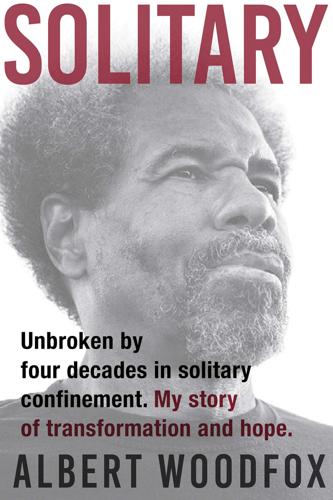
Solitary
by
Albert Woodfox
Published 12 Mar 2019
There are organizations that are trying to change prisons as we know them, such as Critical Resistance and the Malcolm X Grassroots Movement. As human beings, we need to insist on the humane treatment of prisoners and the rehabilitation and education of prisoners. Prisoners who are mentally ill need treatment, not paralyzing drugs and 23 hours a day in a cell. Prisoners who are uneducated need education. The RAND Corporation has published study after study showing that educating prisoners who lack basic academic and vocational skills reduces future criminal behavior. RAND research has shown that every dollar invested in correctional education creates a return of four to five dollars in the reduction of future criminal justice costs.
…
Paul, 291 Picou, Leon, 128, 138–39, 226 “pigs,” 71, 81–82, 106, 171, 216, 242, 309 pimps, 26, 32, 44, 94–95, 391 “playing draft,” 43 plea deals, 53–54, 78, 149, 233–34, 275, 399–400 police brutality accepted as way of life, 16 interrogation techniques, 54 K-9 dogs “give ‘em the bite,” 18 Panthers standing up against, 58, 67–69, 92 post-Katrina killings, 342 repercussions for rioting, 75–78 superficial changes in the system, 406–07 political prisoners, 88, 99, 238, 263, 284, 306, 409 “Power to the People” (rallying cry/song), 71, 91, 284, 372 Pratt, Ashaki, 240 Pratt, Elmer (“Geronimo Ji-Jaga”), 237–38, 240, 341–42 pride, maintaining a sense of, 63, 81, 92–93, 208, 290, 367 Prince, Howard, 363–65 Prison Legal News (social media site), 412–13 Prison Radio (radio station), 326 prison reform, 82, 99, 119–20, 374 prison-industrial complex, 236, 412 private prisons, 410, 412 Promise of Justice Initiative, 350, 354 prostitution, 5, 58, 92, 94, 97 Pruden, Anne, 261–63 Quandt, Katie Rose, 354 Queens House of Detention (New Queens), 76–78 racism. See also institutionalized racism, 8, 71, 106, 162, 195, 241, 309–11, 407–09, 411 rag men, 197–98 Rahim, Malik (aka Donald Guyton), 80, 83, 126, 196–97, 236–40, 261, 263, 369, 403 Rainbow Coalition, 68 RAND Corporation, 413 Randle, Michael, 341 rape attempt on AW, 28 AW allegations/charges, 217, 318–26, 349, 375–76 AW “antirape squad,” 93–94, 155, 238 being “turned out,” 25–29 Brotherhood protection from, 389 creating a sex slave, 93–95 “fresh fish day,” 25–26, 43, 94 gal-boys (“sissies”), 26, 97, 391 imprisonment for, 128, 216, 226–27, 292 pimps, 26, 32, 44, 391 “rape artists,” 26, 155 ratting out/snitch, 32, 49, 95, 97, 128–29, 133, 390–91 read, learning how to, 163–64 Reagan, Ronald, 69, 372 Reb (6th Ward neighbor), 46–47 Reception Center (RC), 25–27, 41–43, 84–85, 94, 103 reclassification (“reclass”) board.
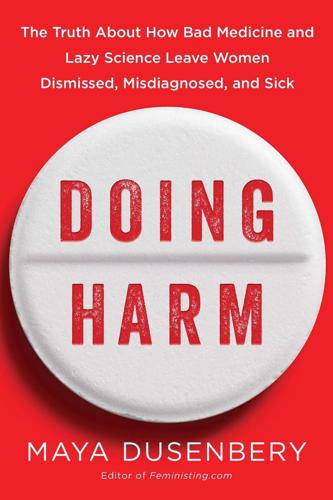
Doing Harm: The Truth About How Bad Medicine and Lazy Science Leave Women Dismissed, Misdiagnosed, and Sick
by
Maya Dusenbery
Published 6 Mar 2018
About 10 percent of patients have the kind of IC marked by Hunner’s ulcers, and a major focus of research efforts is to further pull out different subtypes of IC/PBS patients, who may have different underlying causes for their similar symptoms and respond to different treatments. In 2011, researchers from the RAND Corporation came up with the first prevalence estimate based on a nationally representative population-based survey. It suggested that 3.3 to 7.9 million women in the United States have symptoms consistent with IC/PBS. On average, they’d had the condition for fourteen years. Most had consulted multiple doctors, but less than half had been given any diagnosis at all and just 10 percent of them had received an IC/PBS diagnosis.
…
Brody, “Personal Health; Interstitial Cystitis: Help for a Puzzling Illness,” The New York Times, January 25, 1995, www.nytimes.com/1995/01/25/us/personal-health-interstitial-cystitis-help-for-a-puzzling-illness.html. In 1987, encouraged by the ICA, the National Institute drew up a first consensus . . . Meijlink, “Interstitial Cystitis.” In 2011, researchers from the RAND Corporation came . . . Sandra H. Berry et al., “Prevalence of Symptoms of Bladder Pain Syndrome/Interstitial Cystitis Among Adult Females in the United States,” The Journal of Urology 186, no. 2 (August 2011), doi:10.1016/j.jur0.2011.03.132. Strikingly, a follow-up study . . . Katy S. Konkle et al., “Comparison of an Interstitial Cystitis/Bladder Pain Syndrome Clinical Cohort with Symptomatic Community Women from the RAND Interstitial Cystitis Epidemiology Study,” The Journal of Urology 187, no. 2 (February 2012), doi:10.1016/j.jur0.2011.10.040.

Corporate Warriors: The Rise of the Privatized Military Industry
by
Peter Warren Singer
Published 1 Jan 2003
Martin's Press, 1998), p. 275. 12. P. W. Singer, "Caution: Children at War," Parameters 31. no. 4 (Winter 2001). 13. Thomas Homer-Dixon. "Fnvironmental Scarcities and Violent Conflict: Kvidence from Cases." International Security 19, no. l (Summer 1994): 3—40. 14. Ian Lesser, Countering the Neic Terrorism (Santa Monica: RAND Corporation, 1999). 13. Ralph Peters, "The New Warrior Class." Parameters 24 (Summer 1994): 24: John Kee- gan, ''Natural Warriors," Wall Street Journal, March 27, 1997, p- A20. 16. As General Barry MacCaffrey. the former U.S. drug c/ar, notes of the FARC. "They've got more automatic weapons in one of their battalions than the Colombian Army does."
…
Paper presented at the Eastern Economic .Association Meetings, Crystal City, Virginia, April 4, 1997- Leander, Anna. "Global Ungovernance: Mercenaries, States, and the Control over Violence." Copenhagen Peace Research Institute Working Paper, 2002. Lee, Jeffrey. "Give a Dog of War a Bad Name." The Times, May 4, 1998. Lesser, Ian. Countering the New Terrorism. Santa Monica: RAND Corporation, 1999. Lew, Jack S., and Michael M. Barnett, "Alliance Formation, Domestic Political Economy, and Third World Security," Jerusalem Journal of International Relations 14, no. 4 (December 1992): 19-40. BIBI IOGRAPHY ggg Lieber, Keir, "Grasping the Technological Peace: The Offense Defense Balance and International Seem ity."

Good Economics for Hard Times: Better Answers to Our Biggest Problems
by
Abhijit V. Banerjee
and
Esther Duflo
Published 12 Nov 2019
We asked those who responded to our survey this question: “Do you think that if there was a universal basic income of $13,000 a year (with no strings attached) you would stop working or stop looking for work?” Eighty-seven percent said they would not.50 All the evidence scattered through this book suggests most people actually want to work, not just because they need the money; work brings with it a sense of purpose, belonging, and dignity. In 2015, the Rand Corporation conducted an in-depth survey of the working conditions of about three thousand Americans.51 Those surveyed were asked how often their work provides them with the following: “satisfaction of work well done,” “feeling of doing useful work,” “sense of personal accomplishment,” “opportunity to make positive impact on community/society,” “opportunities to fully use talents,” and “goals to aspire to.”
…
Preliminary Results,” Reports and Memorandums of the Ministry of Social Affairs and Health, 2019, 9. 50 Abhijit Banerjee, Esther Duflo, and Stefanie Stantcheva, “Me and Everyone Else: Do People Think Like Economists?,” MIMEO, Massachusetts Institute of Technology, 2019. 51 Nicole Maestas, Kathleen J. Mullen, David Powell, Till von Wachter, and Jeffrey B. Wenger, “Working Conditions in the United States: Results of the 2015 American Working Conditions Survey,” Rand Corporation, 2017. 52 “The State of American Jobs: How the Shifting Economic Landscape Is Reshaping Work and Society and Affecting the Way People Think about the Skills and Training They Need to Get Ahead,” ch. 3, Pew Research Center, October 2016, accessed April 21, 2019, http://www.pewsocialtrends.org/2016/10/06/3-how-americans-view-their-jobs/#fn-22004-26. 53 See Steve Davis and Till Von Wachter, “Recession and the Costs of Job Loss,” Brookings Papers on Economic Activity, Brookings Institution, Washington, DC, 2011, https://www.brookings.edu/wp-content/uploads/2011/09/2011b_bpea_davis.pdf, and references therein. 54 Daniel Sullivan and Till Von Wachter, “Job Displacement and Mortality: An Analysis Using Administrative Data,” Quarterly Journal of Economics 124, no. 3 (2009): 1265–1306. 55 Mark Aguiar and Erik Hurst, “Measuring Trends in Leisure: The Allocation of Time over Five Decades,” Quarterly Journal of Economics 122, no. 3 (2007): 969–100. 56 Mark Aguiar, Mark Bils, Kerwin Kofi Charles, and Erik Hurst, “Leisure Luxuries and the Labor Supply of Young Men,” NBER Working Paper 23552, June 2007. 57 “American Time Use Survey—2017 Results,” news release, Bureau of Labor Statistics, US Department of Labor, June 28, 2018, accessed June 19, 2019, https://www.bls.gov/news.release/atus.nr0.htm. 58 Mark Aguiar, Erik Hurst, and Loukas Karabarbounis, “Time Use During the Great Recession,” American Economic Review 103, no. 5 (2013): 1664–96. 59 Daniel Kahneman and Alan G.

Radical Uncertainty: Decision-Making for an Unknowable Future
by
Mervyn King
and
John Kay
Published 5 Mar 2020
But these achievements have led to many inappropriate applications of seemingly similar techniques. 14 TELLING STORIES THROUGH MODELS All models are wrong, but some are useful. —GEORGE BOX 1 I n 1950, Albert Tucker, chair of the Mathematics Department at Princeton University, was asked to give a seminar to a general audience of social scientists. Tucker was collaborating with Melvin Drescher and Merrill Flood of the Rand Corporation on the foundations of game theory. Realising that his listeners would not welcome a blackboard covered with equations, Tucker invented the story of the Prisoner’s Dilemma, a fabricated account of two felons incarcerated in separate cells. 2 Only by trusting each other not to spill the beans could the criminals hope to avoid a long jail sentence.
…
question NASA, 18–19 , 26 , 35 , 218 , 352 , 353–6 , 373–4 , 391–2 , 394 National Health and Nutrition Examination Survey (NHANES), 233–4 , 239–40 National Lottery, 438 native tribes in American north-west, 189 , 193 Neumann, John von, 111 , 133 , 137 , 435–7 neuroeconomics, 129 , 135 neurophysiology, 306 , 416–17 neuropsychology, 171 New York, 424–5 New Zealand, 362 Newtonian mechanics, 259 , 260 , 392 Neyman, Jerzy, 71 Nixon, Richard, 4–5 , 412 , 420 Nobel Prize in Economics, 134 , 135 , 148 , 252 , 256 , 286 , 307 , 351 , 382 Nokia, 30–1 Norges Toppidrettsgymnas, 273 Northampton, 56 Northern Rock, 310–11 , 312 , 367 nudge theory, 148–9 Obama, Barack, 9–10 , 20 , 26 , 100 , 102 , 118–19 , 120 , 174–5 ; reference narrative of Abbottabad, 122–3 , 277 , 298 ; role of luck at Abbottabad, 262–3 ; on success as collaborative process, 432 ; and two-war policy, 295 ; on unhelpful probabilities, 8–9 , 326 oil industry: Hubbert’s ‘peak oil’ notion, 361 , 362 ; Middle East producers, 222–3 ; oil block auctions in USA, 256 Olsen, Ken, 27 , 31 , 100 , 227 opinion polls, 240–2 , 390 Opium Wars, 420 optimising behaviour: hegemony of theory, 40–2 , 110–14 ; as individual not social, 408 ; limits to, xiv–xv , 16 , 41–4 , 171–2 , 258 ; radical uncertainty precludes, 320–1 , 435 ; Simon’s bounded rationality, 149–53 ; in ‘small worlds’, 112–13 , 116 , 129–30 , 155 , 166 , 170 , 334 , 382 , 399–400 ; see also axiomatic rationality organisation, economics of, 408 Orwell, George, 127 , 130 , 226 , 307 Osborne, George, 404 Pacioli, Luca, 59 Paleolithic social kinship groups, 159–60 , 215–16 paleontology, 159 Panasonic Corp, 410 paradigm shift process, 285 Paris colloquium (1952), 134–5 , 137 , 437 , 440–3 Pascal, Blaise, 53 , 56 , 57 , 59–60 , 64 , 80 , 106 Pasteur, Louis, 285 Patton, George S., 293 , 294 Paulson, John, 422–3 Pearl Harbor attack (1941), 25 , 26 , 218–19 , 266 , 279 pensions, 312–13 , 328–9 , 405 , 424 ; index-linked, 330–1 ; interference with indices, 330–1 ; search for illusory certainty, 330 , 423 Pentagon Papers, 135 , 282 Perry, Captain, 420 perspective in art, 142–3 Petty, Sir William, 56 pharmaceutical companies, 243–5 , 284 Phillips, Bill, 339 , 340 Pierce, Charles Sanders, 137–9 pigeons, 274 Pitt, Brad, 273 plague, 56 , 57 , 166 Planck, Max, 285 , 386 , 387 , 388 , 411 , 429 planetary motion, 18–19 , 35 , 373–4 , 389 , 391–2 , 394 Plato, 54 Poisson, Siméon-Denis, 199 , 235 poker, 263 , 268 , 273 policing, 208 Polybius (Greek historian), 54 , 186 , 187 Popper, Karl, 36 ; falsificationism, 259–60 poverty, 389 , 390 practical knowledge, 22–6 , 195 , 255 , 352 , 382–8 , 395–6 , 398–9 , 405 , 414–15 , 431 pragmatist philosophy, 137 Prescott, Edward, 352–4 , 356 presidential election, US (2016), 241–2 Príncipe, island of, 259 Prisoner’s Dilemma, 248–9 , 252 , 393 probabilistic reasoning: as absent from pre-modern thought, 54–5 ; Bayes’ theorem, 60–7 , 70–1 , 114 , 117–20 , 127 , 179 , 196 , 203 , 204 , 210 , 420 ; Bortkiewicz model, 235–6 ; Central Limit Theorem, 234 ; compound probability , 59–60 , 197 , 198 , 200–4 ; conditional probabilities , 61 , 66–7 , 70 , 204 ; and confidence, 8–9 , 71–2 , 86 , 87–9 , 96–7 , 403 ; ‘dependent’ and ‘explanatory’ variables, 246–7 ; disguising of uncertainty by, 374 ; and economic variables, 6–7 , 12 , 15 , 34 , 45–6 , 58 , 72–4 , 83 , 95–6 ; expected value , 60 , 106–9 , 114–16 , 124–5 ; and Friedman, 74 , 400 , 420 ; and games of chance, 37–8 , 42 , 53–4 , 57–8 , 59–60 , 64–5 , 69 , 83 , 420 ; and imperfect information, 12 , 41–4 , 65–8 , 80–2 , 92–4 , 98 , 118–19 , 129 , 155 , 277 , 320–1 ; Indifference Principle, 63–6 , 107 ; infinite regress issue, 443 ; Keynes on, 105 ; and known distribution of outcomes, 14 , 16 , 37–8 , 43 , 57–65 , 69–70 , 87 ; and the law, 196 , 197 , 198–203 , 206–7 , 210–12 , 214 ; and likelihood, 86–7 , 89–91 , 96–7 , 206–7 , 403 ; the ‘Linda problem’, 90–1 , 98 ; and markets in risk, 55–7 ; models as contingent and transitory, 235–6 ; the Monty Hall problem, 62–3 , 64–6 , 98 , 100 , 113 , 139 , 203 , 204 ; mortality tables and life insurance, 56–7 , 69 , 232–3 ; non-stationary nature of social sciences, 235–6 ; Pascal and Fermat, 53 , 56 , 57 , 59–60 , 106 ; Pascal’s wager, 64 , 80 ; posterior distribution, 100 ; ‘probabilistic turn’ in human thought, 20 , 49 , 53–4 , 55–68 ; probability theory, 42–3 , 55 , 58 , 59–68 , 69–70 , 71–2 , 105 ; the problem of points, 59–60 , 61 , 64–5 , 106 , 113 ; puzzle-mystery distinction, 20–4 , 32–4 , 48–9 , 64–8 , 100 , 155 , 173–7 , 218 , 249 , 398 , 400–1 ; and reinsurers, 326 ; and risk-uncertainty distinction, 12–17 , 20 , 22 , 23 , 26 , 305–6 , 355 , 420 ; ‘rodeo problem’, 206–7 ; scope of, 37–8 ; and screening for cancer, 66–7 , 206 ; spurious application to uncertainty, 8–10 , 15–16 , 20 , 34 , 70 , 74–84 , 85–94 , 197–204 , 246–7 , 320–1 , 372 , 435–44 ; ‘St Petersburg paradox’, 114–16 , 199 ; statistical discrimination, 207–9 , 415 ; and Taleb’s ‘black swans’, 14 , 38–40 , 42 ; tension with mutualisation, 328–9 ; Tetlock and Gardner’s ideas, 294–5 ; two-envelope problem, 107–8 ; and unique events/projects, 23–6 , 38–40 , 57 , 70 , 71–2 , 96–7 , 138 , 174 , 177 , 188 , 192–5 , 338–9 ; see also axiomatic rationality; statistics; subjective probabilities productivity, 347 public sector organisations, 183 , 355 , 415 puerperal fever, 282–3 quantum mechanics, 233 Quebec Bridge collapse (1907), 33 Quetelet, Adolphe de, 233 racial discrimination, 208 , 209 radical uncertainty, xv–xvi ; definition of term, 14–15 ; disappearance from mainstream, 73–4 , 351–2 , 356 , 357 ; triumph of subjective probability over, 20 , 72–84 , 110–14 ; see also decision-making under uncertainty; uncertainty railways, 48 , 49 , 315 ; HS2 proposals, 364 , 372 Rainwater, Richard, 288 Rajan, Raghuram, 317 Ramanujan, Srinivasa, 432 Ramsey, Frank, 73 , 80 , 84 Rand, Ayn: Atlas Shrugged , 226 ; The Fountainhead , 288 Rand Corporation, 248 Ranke, Leopold von, 187–8 rationality: Aristotle’s view of, 137 , 147 ; biases in context, 141–8 , 162 ; ‘bounded rationality concept, 149–53 ; cognitive illusions, 141–2 ; and communication, 265–8 , 269–77 ; communicative , 172 , 267–77 , 279–82 , 412 , 414–16 ; and cooperation/collective intelligence, 155 , 162 , 176 , 231 , 272–7 , 279–82 , 343 , 412 , 413–17 , 432 ; evolutionary, 16–17 , 47 , 152–3 , 154–5 , 171–3 , 272 , 401 , 428–31 ; hegemony of optimisation, 40–2 , 110–14 ; invisible gorilla experiment, 140 ; Kahneman’s dual systems, 170–1 , 172 , 271 ; legal reasoning, 194–5 , 196–8 , 205–7 , 210–14 , 410 , 415 , 416 ; meaning of as contested, 79 , 80 , 136 ; and nudge theory, 148–9 ; optimism and confidence, 167–70 , 330 , 427–8 ; ordinary usage of term, 136–7 ; ‘rational expectations theory, 342–5 , 346–50 ; reasoning as not decision-making, 268–71 ; styles of reasoning, 137–9 , 147 ; technical meaning in economics, 12 , 16 , 436 ; von Neumann–Morgenstern axioms, 435–6 ; ‘wisdom of crowds’, 47 , 413–14 ; ‘in the zone’ phrase, 140–1 ; see also axiomatic rationality; narrative and contextual reasoning; reference narrative concept Rees, Martin, 39 , 40 reference narrative concept, 123–4 , 160–2 , 294–300 , 305–7 , 330 , 334 , 336 , 358 ; and Abbottabad raid (2011), 122–3 , 277 , 298 ; and business strategy, 286–90 , 296–7 ; changes to, 155 ; and collective intelligence, 155 , 160–1 ; and definition of risk, 123–4 , 306 , 307 , 332 , 355 , 421 ; definition of term, 122 ; and first-rate decision-making, 285 , 424 ; and gambling, 125–6 ; and insurance markets, 125 , 126 , 160–1 ; and regulators, 313 ; robustness and resilience, 123 , 294–8 , 332 , 335 , 374 , 423–5 ; secure reference narratives, 127 , 426–31 , 432 reflexivity , 35–6 , 309 , 394 regulators, 310–12 , 313–14 ; pension models, 312–13 , 405 ; prescribed risk models, 9 , 312–13 ; and probabilistic reasoning, 38 , 49 , 311–12 ; Solvency II directives, 312 ; Value at risk models (VaR), 366–8 , 405 religion, 220 Renaissance artists, 143 , 147 , 418 , 419 , 421 , 428 resolvable uncertainty, 14 , 37 , 42 Retail Motor Federation, 252 , 254 retail prices index, 330–1 retirement planning, 10–12 Ricardo, David, 249–50 , 252 , 253–4 , 255 , 382 risk: anticipating, 128–30 ; as asymmetric, 121 ; and causes of 2007–08 crash, 422–3 ; as central dynamic of capitalism, 170 ; certainty as not same as absence of, 329–30 ; definition in finance theory, 420–1 ; dictionary definition, 120–1 , 306 , 332 , 421 ; as different to uncertainty, 12–14 , 15–16 , 17 , 74 , 305–6 , 355 , 420 ; and expectations narrative, 121–2 , 341–2 ; and financial regulation, 9 , 38 , 49 , 310–12 ; intergenerational sharing of, 328–9 ; ‘market risk’–‘market specific risk’ distinction, 308–9 ; models of diversification, 304–5 , 307–9 , 317–18 , 334–7 ; mutualisation of, 160 , 162 , 192 , 325–6 ; as not a characteristic of an asset, 332 ; ordinary usage of term, 123–4 , 306 , 324 , 421 ; pension models, 312–13 , 405 ; pre-crisis models, 6–7 , 9 , 68 , 202 , 246–7 , 260 , 311–12 , 339 , 407 ; priced as a commodity, 124 , 420–1 ; as product of a portfolio as a whole, 332 ; quantification of, 6–7 , 8–10 , 12 , 15–16 , 68 , 124–5 , 311–12 , 326–7 , 332–3 , 420 ; ‘risk as feelings’ perspective, 128–9 , 310 ; risk weights, 310 , 311 ; and securitisation, 311 , 316 – 18 , 366–7 , 401 ; social risk-sharing, 159–61 ; technical meaning in economics, 12 , 305–6 , 307 , 333 , 421 ; tension between different meanings of, 305–12 , 332 , 334 , 415 , 420 , 421 ; ‘training base’ (historical data series), 406 ; Value at risk models (VaR), 366–8 , 405 , 424 ; and volatility, 124–5 , 310 , 333 , 335–7 , 421–3 ; see also reference narrative concept risk aversion , 117 , 124–5 , 127–8 , 306 , 420–1 RiskMetrics, 366 Rittel, Horst, 22 Ritz casino, London, 38 , 83 rocket technology, 373–4 Rome, classical, 142 Romer, Paul, 93 , 95 , 357 , 394 Roosevelt, Franklin D., 25 , 26 , 167 , 218–19 , 240 , 266 , 269 , 390 , 411–12 Rosling, Hans, Factfulness , 389 Royal Bank of Scotland, 257 Royal Shakespeare Company, 217 Royal Society, 55 , 56 Royal Statistical Society, 197 , 203 Rumelt, Richard, 30 , 178–80 , 184 , 296 ; Good Strategy/Bad Strategy , 10 , 407 Rumsfeld, Donald, 7–8 , 295 , 413 Russell, Bertrand, 421–2 Russian roulette, 438–9 Ryle, Gilbert, 192 Sala, Emiliano, 265 Salem witch trials, 230 Samuelson, Paul, xv , 42 , 108–9 , 110–11 , 125 , 130 , 135 , 285 , 304 Sandemose, Aksel, 430 San Francisco, 48 ; earthquake, 32–3 Sargent, Thomas, 342 sat nav systems, 395–6 Saudi Arabia, 363 Savage, Jimmie, 111–12 , 113–14 , 125 , 133 , 135 , 249 , 309–10 , 345 , 392 , 400 ; and Allais paradox, 442–3 ; billiards analogy, 257–8 ; von Neumann–Morgenstern axioms, 111 , 435–6 , 437 ; The Foundations of Statistics (1954), 112–13 , 443 Schelling, Thomas, 281 Schoemaker, Paul, 137 science fiction, 219 scientific reasoning, 18–20 , 32–3 , 219 , 233 , 239 , 383 ; and narratives, 283–5 , 388–9 ; Newtonian mechanics, 259 , 260 , 392 ; observation as trumping theory, 389 ; search for unified theory of everything, 219 ; and stationarity, 18–19 , 35 , 236 , 373–4 , 388 , 392 , 429–31 ; string theory, 357 ; Thales of Miletus, 303–4 ; validity of research findings, 242–7 Scott, James, 167 Scott, Rick, 189 Scottish Enlightenment, 163 , 187 Scottish Widows Fund, 325 , 328 Sears, 287–9 , 292 Second World War, 24–6 , 119 , 168 , 169 , 187 , 218–19 , 266 , 292 , 293 ; D-Day, 266 , 294 securities trading, 55 , 82–3 , 268–9 , 316–18 , 366–7 , 401 , 411 ; derivative markets, 318 , 422–3 ; price volatility, 310 , 336 , 422–3 seismology, 32–3 Sellar and Yeatman, 1066 And All That , 426 Selvin, Steven, 62 Semmelweis, Ignaz, 283 , 306 Seward, William, 290 Shackle, George, 109 , 188 Shakespeare, William, 217 , 218 , 225 , 226 , 304–5 , 307 , 393 shareholder value, xiv–xv , 41 , 228 , 305 , 409 Sharpe, William, 318 Shell, 222–3 , 295 Sherlock (BBC series), 147 Shiller, Robert, 229 , 230 , 252 , 314 , 320 Shockley, William, 438 Silicon Valley, 49 , 228 , 276 , 335 , 427 Silver, Nate, 74–6 , 202 , 241 Simon, Herbert, 135 , 136 , 149–51 , 175 Simons, Daniel, 140 Simons, Jim, 269 , 319–20 , 336 Simpson, O.

Fancy Bear Goes Phishing: The Dark History of the Information Age, in Five Extraordinary Hacks
by
Scott J. Shapiro
Robert’s worm didn’t just cripple the Cornell network; it was barreling through the internet, trouncing everything in its path. Just a few minutes after its release at MIT, the worm’s first known infection occurred at the University of Pittsburgh. From Pittsburgh, the worm zoomed cross-country and hit rand.org, the network for the RAND Corporation in Santa Monica, California, at 8:24 p.m. Within the hour, computer managers at RAND noticed their network slowing; several nodes were at a standstill. At 9:00 p.m., the worm was spotted creeping around the Stanford Research Institute. By 9:30 p.m., it was at the University of Minnesota. At 10:04, it infiltrated Berkeley’s gateway machine, the computer that served as the university’s portal to the internet.
…
$600 billion to $6 trillion: Compare James Lewis, “Economic Impact of Cybercrime—No Slowing Down,” February 2018, 6 (“$445 billion to $600 billion”), https://csis-website-prod.s3.amazonaws.com/s3fs-public/publication/economic-impact-cybercrime.pdf, to Steve Morgan, “Global Cybercrime Damages Predicted to Reach $6 Trillion Annually by 2021,” Cybercrime Magazine, October 26, 2020, https://cybersecurityventures.com/annual-cybercrime-report-2020/. These are global estimates. See also Paul Dreyer et al., “Estimating the Global Cost of Cyber Risk,” RAND Corporation, January 14, 2018, https://www.rand.org/pubs/research_reports/RR2299.html (“the global cost of cyber crime has direct gross domestic product [GDP] costs of $275 billion to $6.6 trillion and total GDP costs [direct plus systemic] of $799 billion to $22.5 trillion [1.1 to 32.4 percent of GDP].”).

Animal Spirits: The American Pursuit of Vitality From Camp Meeting to Wall Street
by
Jackson Lears
The men who pursued the grail of Cold War rationality, as Theodore White wrote approvingly in Life in 1967, constituted “a new priesthood, unique to this country and this time, of American action intellectuals.” Despite their commitment to abstract thought, they were “husky, wiry, physically attractive men who, by and large, are married to exceptionally pretty women.” The most prominent action intellectuals clustered at the RAND Corporation in Santa Monica, California. Among them was Albert Wohlstetter, who coined the phrase “the delicate balance of terror” in a RAND policy paper of 1958, and who consulted with John F. Kennedy during the Cuban Missile Crisis. The man who most fully elaborated the balance of terror was the RAND analyst Herman Kahn.
…
.; evolution and; quantification and; refutation of; religion and; technology and; vitalism as counter to; vitalism’s reinforcement of Progressive Era Protestantism; Anglican; Baptist; Beecher’s vitalist; Calvinist; Dissenters; ecumenical; Episcopalian; evangelical rationality of; evangelical revivalism in; Methodist; muscular; occult beliefs reconciled with; Pentecostal; Pietist; Presbyterian; rejection of; Unitarian psychedelic drugs psychology: behavioral; psychoanalytic; see also mental health public works Puritans; legacy of Putnam, Jackson quantitative thinking; as algorithmic; in economics; about subjective experience; about time; see also technocratic rationality qi Quick, Herbert Quicksand (Larsen) Quimby, Phineas Rabinowitch, Eugene race; essentializing of, see primitivism; power and, see white supremacy Radio Corporation of America Raguet, Condy Railroaded (White) railroads Rand, Ayn RAND Corporation Rasmussen, Dennis rationality; in Enlightenment; evangelical; reason vs.; see also positivism; quantitative thinking; science; technocratic rationality Reagan, Ronald Redding, Saunders Reed, John Reeve, Arthur Reflections on Violence (Sorel) Reid, Thomas “Relic, The” (Donne) religion, benefits of; Eastern; see also animism; Christianity; Protestantism Renouvier, Charles Republicans; see also specific presidents Rice, Condoleezza Richardson, Samuel Riesman, David Riis, Jacob risk; attempts to quantify; success and; uncertainty vs.

Global Catastrophic Risks
by
Nick Bostrom
and
Milan M. Cirkovic
Published 2 Jul 2008
Mind Children: The Future ofRobot and Human Intelligence (Harvard: Harvard University Press). Moravec, H . (2000). Robot: Mere Machine to Transcendent Mind (OX: Oxford University Press). Mussington, D . (2002). Conceptsfor Enhancing Critical Infrastructure Protection: Relating Y2K to Cip Research and Development (Washington, DC: Rand Corporation). Naquin, S. ( 1 976). Millenarian Rebellion in China: The Eight Trigrams Uprising of 1 8 1 3 (New Haven, CT: Yale University Press). Nash, D . (2000). The failed and postponed millennium: secular millennialism since the enlightenment. ]. Religious History, 24( 1 ) , 70-86. National I nstitute of Allergy and I nfectious Diseases. (2006).
…
The group, however, 'would have to include, at a minimum, a person capable of researching and understanding the literature in several fields, and a j ack-of-all trades technician' (U.S. Office ofTechnology Assessment, 1 977, p. 30) . Two other influential authors during the 1 970s were David Rosenbaum, a consultant who challenged the adequacy of AEC regulations to prevent nuclear theft (Rosenbaum, 1 977) and Brian Jenkins, an analyst at the Rand Corporation. Best known for his assertion that 'Terrorists want a lot of people watching, not a lot of people dead . . . ' , Jenkins, probably more than anyone else, encouraged the notion that terrorists were unlikely to employ weapons of mass destruction (WM D) in pursuit of their objectives (Jenkins, 1 977).
…
Catastrophic nuclear terrorism: a preventable peril 419 solipsistic individuals than organized groups in this world, 29 this situation would indeed be deserving of the label of a nuclear nightmare. This and other similar capability related issues are discussed in the following section. 1 9.4.2 The s u p p ly side: how fa r have terrorists p rogressed? As a recent briefing by the Rand Corporation points out, 'On the supply side of the nuclear market, the opportunities for [non-state] groups to acquire nuclear material and expertise are potentially numerous' (Daly et al., 2005, p. 3). These opportunities include huge global stocks of fissile material, not all of which are adequately secured; tens of thousands of weapons in various sizes and states of deployment and reserve in the nuclear arsenals of at least eight states; and a large cadre of past and present nuclear weaponeers with knowledge of the science and art of weapons design and manufacture.
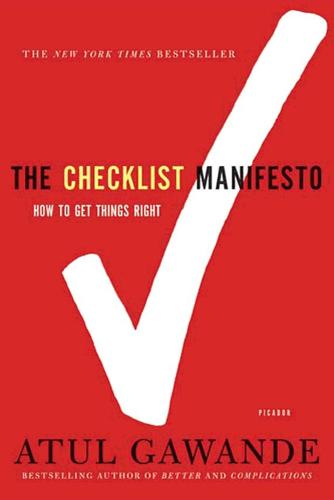
The Checklist Manifesto: How to Get Things Right
by
Atul Gawande
Published 2 Jan 2009
Bradley et al., “Strategies for Reducing the Door-to-Balloon Time in Acute Myocardial Infarction,” New England Journal of Medicine 355 (2006): 2308–20. 10 “Studies have found”: E. A. McGlynn et al., “Rand Research Brief: The First National Report Card on Quality of Health Care in America,” Rand Corporation, 2006. 11 “You see it in the 36 percent increase”: American Bar Association, Profile of Legal Malpractice Claims, 2004–2007 (Chicago: American Bar Association, 2008). 1. THE PROBLEM OF EXTREME COMPLEXITY 15 “I read a case report”: M. Thalmann, N. Trampitsch, M. Haberfellner, et al., “Resuscitation in Near Drowning with Extracorporeal Membrane Oxygenation,” Annals of Thoracic Surgery 72 (2001): 607–8. 21 “The answer that came back”: Further details of the analysis by Marcus Semel, Richard Marshall, and Amy Marston will appear in a forthcoming scientific article. 23 “On any given day”: Society of Critical Care Medicine, Critical Care Statistics in the United States, 2006. 23 “The average stay”: J.
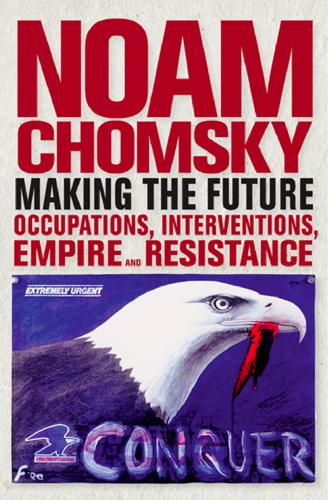
Making the Future: The Unipolar Imperial Moment
by
Noam Chomsky
Published 15 Mar 2010
As predicted, Russia responded by increasing its own military capacity, followed later by China. Ballistic missile defense (BMD) programs are a particular threat. Ballistic missile defense is understood on all sides to be a first-strike weapon, perhaps capable of nullifying a retaliatory strike and thus undermining deterrent capacity. The quasi-governmental Rand corporation describes BMD as “not simply a shield but an enabler of U.S. action.” In journals across the political spectrum, military analysts write approvingly of ballistic missile defense. In the conservative National Interest, Andrew Bacevich writes, “Missile defense isn’t really meant to protect America.

50 Future Ideas You Really Need to Know
by
Richard Watson
Published 5 Nov 2013
For example, between 1990 and 2000 the number of 64–75-year-olds living in downtown Chicago rose by 17 percent. One reason is that elderly people can feel trapped in rural areas or suburbia, whereas in cities there is always a lot to stimulate the brain and body. A report by the US thinktank the RAND Corporation, for instance, found that suburbanites spend longer in cars, thus reducing fitness and life expectancy. But a far larger force is what’s happening in Asia and Africa, where both cities, and their brethren, megacities, are being built and rebuilt. A very old idea The oldest company in the world is around 700 years old.
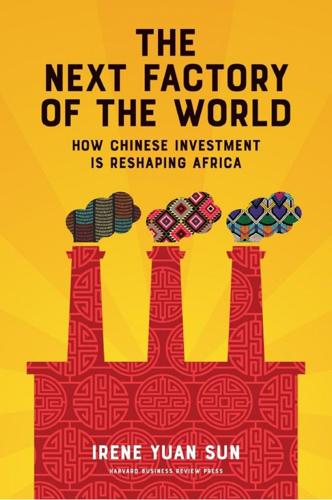
The Next Factory of the World: How Chinese Investment Is Reshaping Africa
by
Irene Yuan Sun
Published 16 Oct 2017
Thompson, “Time, Work-Discipline, and Industrial Capitalism,” 80. 39. Kelly Pike, interview by the author on Skype, March 10, 2016. Chapter 6 1. Stephen Sigei, interview by author, Nairobi, Kenya, July 10, 2016. 2. Larry Hanauer and Lyle J. Morris, Chinese Engagement in Africa: Drivers, Reactions, and Implications for U.S. Policy, (Santa Monica, CA: RAND Corporation, 2014), 30–31. 3. Dinah Jerotich Mwinzi, remarks at the Africa Tech Challenge 2016 Opening Ceremony, Nairobi, Kenya, July 12, 2016. 4. Stephen Sigei, interview by author, Nairobi, Kenya, July 10, 2016. 5. Additional locally owned firms are entering the clothing industry, most notably Seshoeshoe, purportedly an approximately 50-person firm producing traditional clothing.

Survival of the Richest: Escape Fantasies of the Tech Billionaires
by
Douglas Rushkoff
Published 7 Sep 2022
Belgin, Of Human Wealth: Beyond Greed and Scarcity (unpublished manuscript, 2004). 70 “state of nature” … “absolute dominion” : John Locke, The Second Treatise on Civil Government and A Letter Concerning Toleration (Oxford: B. Blackwell, 1948). 73 invisible population of rich people : Since 1975, according to a study by RAND, the wealthiest 1 percent of Americans have diverted $50 trillion from the rest of us. Carter C. Price and Kathryn A. Edwards, “Trends in Income From 1975 to 2018,” RAND Corporation, 2020, https:// www .rand .org /pubs /working _papers /WRA516 -1html. 73 extracting wealth from the poor : Jon Evans, “GrubHub/Seamless’s Pandemic Initiatives Are Predatory and Exploitative, and It’s Time to Stop Using Them,” TechCrunch , April 5, 2020, https:// techcrunch .com /2020 /04 /05 /its -time -to -stop -using -grubhub -seamless -forever /. 73 This is not creative destruction : Lachlan Carey and Amn Nasir, “Something for Nothing?
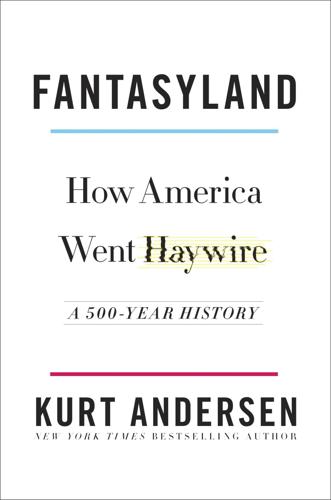
Fantasyland: How America Went Haywire: A 500-Year History
by
Kurt Andersen
Published 4 Sep 2017
McNamara was infatuated with “systems analysis,” the shiny new computerized approach, made possible by Von Neumann’s mathematical work, that presumed to solve complex problems—especially military ones—by reducing them to quantitative data. The most important of McNamara’s whiz-kid assistant secretaries had been a senior figure at the RAND Corporation, the original postwar think tank and the fountainhead of systems analysis. The problem was that the crunched data and equations made systems analysis look like pure science, and its self-confident brainiac practitioners and their clients certainly believed it was a form of perfect superrationality.
…
And everybody has been in on it—“the Jesuits, the Masons…the Nazi Party, the Communist Party…the Council on Foreign Relations…the Trilateral Commission, the Bilderberg Group,…the Vatican…Skull & Bones…they are all the same and all work toward the same ultimate goal, a New World Order” that “is beating down the door.” Plus the Rockefellers, the RAND Corporation, the Federal Reserve, the CIA, and the United Nations. In fact, as Cooper noted, the masks were coming off—President Bush had started speaking openly about the plan to realize the Illuminati “dream of a new world order.” — THE NEW WORLD Order. At that moment, it was becoming the all-encompassing catchphrase for people who believed in a sinister conspiracy running the world, those elite entities named by Cooper as well as the ones—banks, news media, show business—McCarthyists and the John Birch Society had identified decades earlier.
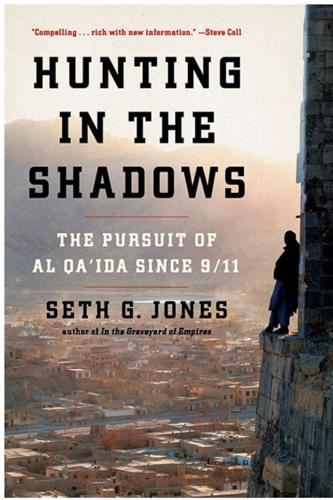
Hunting in the Shadows: The Pursuit of Al Qa'ida Since 9/11: The Pursuit of Al Qa'ida Since 9/11
by
Seth G. Jones
Published 29 Apr 2012
He was a skilled orator and obsessively quoted U.S. newspapers and magazines, think-tank studies, and government reports to emphasize key points. In a particularly invidious lecture, “Battle for the Hearts and Minds,” he cited articles from U.S. News & World Report, a study by the U.S.-based RAND Corporation, and the U.S. Department of Defense’s Quadrennial Defense Review to support his claim that the United States was engaged in a clandestine effort to destroy Islam. Abdulmutallab graduated from University College London in August 2008 as a satisfactory, though not academically outstanding, student.47 Several months later he enrolled at the University of Wollongong in Dubai, United Arab Emirates, for a master’s degree in international business.
…
A., 412 Mickey Mouse Project, see Copenhagen plot Midhar, Khalid al-, 293 migration, 268 Milestones (Qutb), 43 millennium plots, 90–91, 125 Ministerial Committee for National Security, Iraq, 147 Ministry of Intelligence and Security, Iranian, 86 Ministry of Interior, Pakistan, 235 Minni, Ahmed Abdullah, 436 Mir, Sajid, 369, 370, 381 Miramar, Fla., 319–21 Miram Shah, 183 Miranda rights, 409 Mohammad, Jude Kenan, 429, 436 Mohammed, Atta, 67 Mohammed, Faqir, 226 Mohammed, Khalid Sheikh, 8, 90, 106, 110, 119, 120, 121, 122, 125, 137, 223, 321, 420 bin Laden criticized by, 75 capture of, 80–82, 102–3, 104, 135, 177, 181, 228 dirty bombs and, 118, 119 disheveled picture of, 102–3 follow-up plots to 9/11 planned by, 100 interrogation of, 96, 103–4, 135, 136 Khan’s plot and, 134, 135 manhunt for, 79 as 9/11 mastermind, 74, 79, 94 Padilla’s meeting with, 111 Panama Canal attack desired by, 321 waterboarding of, 96 Mohammed, Lal, 315 Mohammed, Ramzi, 210 Mojave Desert, 221 Money, 287 Morgenavisen Jyllands-Posten, 370, 372, 382, 385, 386–87 Morgenstern, Brian, 297–98 Moroccan Islamic Combatant Group, 171, 176 Morocco, 104, 171 Mosed, Shafal, 130, 132, 133 Mossad, 72, 236, 380 Mosul, Iraq, 67 Moussaoui, Zacarias, 125 Moutardier, Hermis, 127, 129 MQ-1 Predator drones, 62, 69, 225 Mu’askar al-Battar, 87, 153 Mubarak, Hosni, 35, 41, 276 Mudd, Philip, 7, 18, 47, 88, 225, 228, 236, 314 Afghan government set up by, 70 alliance with Muslim Brotherhood sought by, 282–83 Awlaki watched by, 294–95, 344, 365 on bin Laden’s death, 433–34 civil liberties concerns of, 365–66 on fighting ideology, 269, 270 homegrown plots feared by, 309 on Madrid bombing, 174–75 need for new strategy seen by, 237, 238 Padilla investigated by, 120–21 retirement of, 413, 433 on Shahzad’s radicalization, 398 Zazi’s plot investigated by, 327–28, 334 Mueller, Robert, 6–7, 134 Mughrebi, Abu Munthir al-, 199 Muhajir, Abd al-Rahman al-, 229 Muhajir, Abu Hamza al-, 257, 258–59, 414 Muhammad, 3, 31, 44, 204, 265, 266, 272, 382 cartoons of, 370, 386–87, 388 Muhammad, Abdulhakim Mujahid, 337 Muhammad, Binyam Ahmed, 118, 120–21 Muhammad, John Allen, 314 Muhammad, Nek, 231–32, 233 Mujahideen Army, 255 Mujahidin Electronic Network, 364 Mujahidin Shura Council, 249 Mukasey, Michael, 121 Mukhabarat, 146 Mukhtar, see Mohammed, Khalid Sheikh Mullen, Michael, 425 Mumbai, terrorist attacks in, 183, 370, 371, 377–82, 381, 383, 387 Muñoz, Jesus Antonio, 170 muriatic acid, 326 Mursi, Midhat, 124, 317 Mus’ab, Abu, 142 Musharraf, Pervez, 226, 235 agreement to work with U.S., 82–84 assassination plots against, 134, 178, 179 Muslim, Abdullah al-, 94 Muslim Brotherhood, 31, 33, 279, 280, 282–83, 443 Zawahiri’s indictment of, 41–42 Muslim Council of Britain, 211 Muslims: Afghanistan war denounced by, 71–72 FBI’s failure to recruit, 159 9/11 attacks condemned by, 72–74 persecution of, 131 radicalization of, 25 as victims of al Qa’ida, 265 mustard gas, 245 Mutanabbi, Abu al-Tayyib Ahmad ibn Husayn al-, 270 Muzaffarabad, 378, 380 Naim, Nabil, 278 Nairobi, U.S. embassy bombed in, 24, 47–51, 52, 74, 274, 437 Najdi, Abu `Abd al-Rahman al-, 414 Namangani, Juma, 67 Napolitano, Janet, 413 Naseer, Abid, 327 Nashiri, Abd al-Rahim al-, 104 National Counterterrorism Center, 14, 199, 357 National Defense College, 387 National Geospatial-Intelligence Agency, 417 National Guard, Saudi Arabian, 51 National High Court, Spanish, 183 National Intelligence Estimate, 228 National Police, Spain, 182–83 National Reconnaissance Office, 417 National Security Agency, 92, 123, 180, 328, 334, 416 National Security Council, 51, 419, 420, 423, 424–25, 441 National Security Council, Pakistan, 235 NATO, 410, 420 Naval Special Warfare Development Group, 422 Navy, U.S., Afghanistan attacked by, 48 Navy SEALS, U.S., 62, 422, 423, 425, 426, 427–28 Nawa Pass, 88 Negroponte, John, 6, 146, 155, 210, 242, 434 New America Foundation, 433 New Delhi, 90 Newsweek, 126 New York, N.Y., subway system in, 313, 334–35 New York Daily News, 427 New Yorker, The, 221 New York Police Department, 220–21, 326, 330, 394 New York Post, 427 New York Stock Exchange, 94 Ninawa Province, Iraq, 260 1920 Revolution Brigade, 242, 247, 255, 257 No Fly List, 357 North Africa, 23, 26, 38, 231, 338, 429, 440 Northern Alliance (Afghanistan), 66, 67, 68, 125, 133, 200 CIA negotiations with, 71 North Waziristan, 88, 183, 226–27, 234, 235, 236, 316, 400–401 North West Frontier Province, Pakistan, 179, 181, 226, 233 nuclear bombs, 118 Nuclear Research Center, 379 Nuqum, Mount, 97 Nur, Abdel, 304, 308 Oasis, 9, 10, 11 Obama, Barack, 368, 413, 420, 423–24, 425, 427, 434 Obeidi, Abdul Qadir Mohammed Jassim, 259 Office of Strategic Services (OSS), 64 O’Hare Airport, 108 Ohio, 110 oil, 251 Oklahoma City, Okla., 309, 310 Olson, Eric, 423 Olympic Games, 185, 368 Oman, 144 Omar, Mahmoud, 288, 289, 298–99, 303 Omar, Mullah Muhammad, 16, 42, 48, 70, 72, 82, 106, 238 bin Laden’s relationship with, 51 Omar, Yasin Hassan, 210 1–87 Infantry Battalion, 61 “Open Letter to Shaykh Bin Baz on the Invalidity of His Fatwa on Peace with the Jews” (bin Laden), 73–74 Operational Detachment Alpha (ODA) 555, 66 Operation Anaconda, 55, 59–63, 60, 75 Franks briefed on, 59 Operation Bojinka, 8 Operation Challenge, 274 Operation Crevice, 194, 195, 196–97 Operation Cupcake, 342 Operation Eagle Claw, 422 Operation Kalosha, II, 231–32, 235 Operation Kazha Punga, 88 Operation Nova, 183 Operation Overt, 1–2, 6, 15–20 intelligence collection in, 20–22 Operation Pathway, 327 Operation Sayyad, 253 Operation Tigris, 182 Operation Zalzala, 234, 235 Orakzai, Ali Mohammad Jan, 233 Oregon, 110, 134, 230 Organization of African Unity, 41 Orton, Lance, 394 Osmani, Mullah, 82 O’Sullivan, Meghan, 148 Oval Underground Station, 209–10 Oxford Analytica, 433 Padilla, José, 108–19, 130, 133, 223, 269, 318, 321, 397, 439 al Qa’ida training of, 116 apartment plot and, 117, 119–21 arrests of, 108, 112–13, 121–22, 136, 267 attack considered by, 110 background of, 108–9, 111–13 FBI investigation of, 108, 110–11, 114, 115–16, 120–22 radicalization of, 113–14, 164 terrorist ideas of, 118–19 travels of, 115–16 Pakistan, 10, 23, 24, 26, 37, 59, 78, 117, 148, 152, 160, 263, 278, 282, 309, 338, 443 in agreement with U.S. war strategy, 82–84, 88–89 al Qa’ida in, 4–5, 6, 7, 13–14, 18, 76, 81, 83, 88–89, 92, 100–104, 106, 178–82, 189, 198–206, 216, 225–31, 316, 337, 368, 370, 414–30 al Qa’ida safehouses raided in, 101–2 foreign militants arrested in, 39 in Kashmir dispute, 83 nuclear facilities of, 84 Rauf arrested in, 17–18 Pakistan Air Force, 396 Pakistan Employees Cooperative Housing Society, 101 Pakistan Military Academy, 428 Paktia Province, Afghanistan, 56, 84 Paktika Province, Afghanistan, 92 Palestine, 16, 72, 155, 175, 230, 279, 280, 297, 335, 436, 443 Panama Canal, 321 Panetta, Leon, 414, 425, 434 Paracha, Uzair, 134–35, 136 pardon, 268 Pasha, see Rehman, Abdur (Pasha) Pashtun Taliban, 68 passports, 125 Patel, Hasina, 185–86, 188, 189, 190, 212–13 patience, 268 Pearlman, Agnes, 219 Pearlman, Carl, 219 Pearlman, Nancy, 236 Pearlman, Phil, 236–37 pentaerythritol tetranitrate (PETN), 126, 355 Peshawar, Pakistan, 35, 84, 200, 311, 312, 315 Philippines, 90, 439 phone security, 120 Poland, 175 police, Iraqi, 254–55, 257–58 Police National Computer system, 191 Political-Military Plan Delenda, 50 Popular Party, Spain, 170–71 Port Authority police, 328–29 Portland, Oreg., 134, 230 “Possible Hijacking Tactic for Using Aircraft as Weapons” (FBI bulletin), 6 Predators, 54, 69, 184, 225, 228 proms, 347–48 Prozak, Spinoza Ray, 488n Puerta del Sol, 162 Pulman, Liza, 208–9 Punjab Province, Pakistan, 92, 179 Qadir, Hanif, 3 Qa’ida, see al Qa’ida Qala-e-Jangi, 68 Qamari, Esam al-, 34 Qaradawi, Yusuf al-, 279 Qasr al-Ayni Hospital, 32, 34 Qatar, 311 Qissa Khwani, 36 Quadrennial Defense Report, 350 Qudoos, Ahmed Abdul, 81 Quetta, Pakistan, 116 Qur’an, 40, 131, 167, 192, 219, 295, 334–35, 341, 348, 352, 358, 360, 369, 374, 399, 403, 412 Qureshi, Abdul Ghani, 124 Qutb, Sayyid, 43–45, 114, 256, 268, 273, 294, 349, 399 Rabanni, Mohammad Ahmad Ghulum, 101 Rabi’a, Hamza, 176, 177–78, 183, 229, 309, 421 Radisson hotels, 90–91 Rahman, Umar Abd al-, 113, 274, 435 railways, 109 Ramadan, 259 Ramadi, Iraq, 239–41, 243, 245, 247, 253, 254, 255, 259 Rana, Tahawwur, 369, 376 RAND Corporation, 350 Ransom-Monroe, Dionne, 356 Rapoport, David, 22 Rasooli, Habib, 335 Rationalization of Jihad in Egypt and the World (Sharif), 262–63, 264, 270, 272, 275, 276 Rauf, Rashid, 1–2, 4, 13–14, 268, 318, 322 arrest of, 17–18 CIA’s tracking of, 2 killing of, 18 Rawalpindi, Pakistan, 79–80, 104, 199 Razor 01, 62 Rehman, Abdur (Pasha), 382–86 Reid, John, 15, 16, 17 Reid, Richard Colvin, 123–29, 133, 136, 467n, 468n background of, 123–24 in shoe bomb plot, 125–29, 136, 318, 357 Relatively Clean Rivers (Pearlman), 237 Ressam, Ahmed, 91–92, 125 Rhatigan, Wayne, 394 Rhyme, 197 Rice, Condoleezza, 51, 91, 157 Rishawi, Ahmad Bezia Fteikhan al-, 247, 252 Rishawi, Thamir Mubarak Atrouz al-, 141, 145 Riyadh, bombings in, 87, 174 “Road to Jerusalem Goes Through Cairo, The” (Zawahiri), 45 Roberts, Neil C., 47 Robertson, Pat, 306 Robinson, Wayne, 394 Rockwood, Paul, 343, 344 Rose, Flemming, 382, 389 Roth, Kenneth, 96 Rumsfeld, Donald, 66, 146, 148, 439 Russia, 165, 168, 292 Ryder, Art, 112 Sabah, Sheikh, 246–47 Sacranie, Iqbal, 211 Sadat, Anwar, 34, 261–62, 280, 383 Sadr, Muqtada al-, 156 Saeed, Hafiz, 373, 374 Sahawa al-Anbar, see Anbar Awakening Saif al-Adel, 229 Salafism, 30, 114, 131, 145, 220–21, 242, 257, 278, 341, 374 Salafist Group for Preaching and Combat, 171, 434 Salah ad-Din, Iraq, 260 Salamé, Ghassam, 143–44 Salameh, Mohammad Amin, 183 Saleh, Abdullah, 338 Saleh, Mohamed, 182 Sana’a, 97, 116 Sana’a Institute for the Arabic Language, 348, 349 Sanchez, Enrique, 169 Sarkovsky, Dan, 329, 330, 331 Sarwar, Assad Ali, 9, 11–12, 14, 15 conviction of, 20 Saudi Arabia, 39, 75, 87, 104, 130, 142, 146, 147, 154, 156, 248, 278, 319, 340 Savant, Ibrahim, 22, 93 Sawt al-Jihad, 155 Sayyida Zeinab Hospital, 36 Schelling, Thomas, 438 Schmults, Edward, 157 Schnewer, Hnan, 291 Schnewer, Mohamad, 289, 290, 291, 292, 296, 299–300, 303 Schroen, Gary, 49–50, 66, 421–22 Schuringa, Jasper, 355, 357 Sears Tower, 310 Senor, Dan, 156 September 11, 2001, terrorist attacks, 3, 6, 7, 8, 20, 22, 24, 25, 29, 46, 51, 64, 82, 86, 92, 94, 97, 99, 118, 132, 175, 177, 216, 262, 264, 290, 293, 305, 313, 316, 330, 334, 354, 360, 369, 373, 390, 394, 415, 419, 420, 437, 439, 443 al Qa’ida’s failure to plan for aftermath of, 7, 106 casualties of, 76, 77 conspiracy theories on, 72 Islamic condemnation of, 72–75, 155 KSM’s hard drive with information on, 103 martyrdom videos from, 296 purpose of, 75–76 response to, 52, 53–55, 76 Shabwah, Yemen, 338–39, 339, 340, 351–52 Shabwah Governorate, 441 Shackleton, Ernest, 65 Shafi, Abu Abdullah al-, 257 Shah, Jamil, 10 Shah-i-Kot Valley, Afghanistan, 53–55, 57–58, 60–61, 68, 75 Shahzad, Faisal, 393–413, 436, 439, 442 radicalization of, 398 training of, 403–4, 405–6 Shakai Agreement, 233, 234 Shakespeare, William, 443–44 Shamia’a, 115 Shamsi, Pakistan, 84 Shapiro, Nick, 413 Sharbi, Ghassan al-, 94 Shareef, Derrick, 310 sharia, 33, 244, 256, 263, 272, 276, 278 Sharif, Sayyid Imam Abd al-Aziz al-, 72–73, 182, 280, 293 al Qa’ida attacked by, 262–69, 270–71 background of, 31 deported from Pakistan, 39 efficacy of violence questioned by, 41 Iraq war opposed by, 155–56 nom de guerre of, 37 in Pakistan, 35–36 in Sudan, 40 Zawahiri’s cell joined by, 34, 36–37 Zawahiri’s edits to work of, 42 Zawahiri’s friction with, 29–31, 33, 40–42, 52, 262, 265, 266–67, 269, 270–76, 277–79 Sharqawi, Abdu Ali al Haji, 104 Shaybani, Muhammad ibn al-Hasan al-, 72–73 Shepherd’s Bush Underground Station, 209–10 Sherzad, Mohammed, 316 Shibh, Ahmed al-, 97 Shihri, Said al-, 340 Shi’ite Islam, 86, 141, 151, 153, 156, 244, 248, 279, 304 Shirzai, Gul Agha, 70 Shoaib, Muhammad, 398, 401, 403, 404–5, 406–7, 408 shoe bomber, see Reid, Richard Colvin Shukrijumah, Adnan el-, 117–18, 306, 313, 318–21, 322, 325, 435, 442 Shukrijumah, Gulshair Muhammad el-, 319–21 shunning, 268 Siba’i, Hani al-, 275, 276 Siddiqi, Musammil, 220 Sidqi, Aref, 41 SIGINT, 62 Signposts on the Road (Qutb), 43 Silk Road, 36 SIM cards, 100, 166, 168, 351 60 Minutes II, 156 Siyar A’lam Al-shuhada’, 155 Socialist Party, Spain, 167, 171 Sofia, Queen of Spain, 161 Somali, Saleh al-, 315–16, 318, 322, 414 Somalia, 23, 114, 126, 210, 297, 338, 343, 429, 439 South Korea, 343 South Waziristan, 88, 178, 231, 234, 236, 316, 325, 395, 400 Soviet Union: Afghan invasion of, 36, 37, 38, 39, 56, 90, 106, 115, 145, 311, 329, 374, 383 Cold War ideology of, 270 Spain, 231 bombings in, see Madrid bombings election in, 167, 170–71 Iraq war supported by, 166, 167, 173–74, 175 police added in, 182–83 Spanish National Police, 171–72, 175–76 Spann, Johnny “Mike,” 68 Special Activities Division (CIA), 68 Special Independent Commission for the Convening of the Emergency Loya Jirga, 71 special operations teams, 66, 67, 77 Special Services Group, 88, 234 State Department, U.S., 48, 49, 50–51, 270, 441 Bureau of Intelligence and Research, 148 Steinberg, James, 50 “Story of Ibn al-Aqwa, The” (Awlaki), 294, 342 “Story of the Afghan Arabs, The: From the Entry to Afghanistan to the Final Exodus with the Taliban” (Masri), 75 Story of the Malakand Field Force, The (Churchill), 199 Stultz, Cherie Maria, 113 subways, 109 Sudan, 26, 42, 147, 178, 383 coup in, 39 Sufi House, 200 suicide bombers, 150, 154, 157, 197–98, 242, 244–45, 250, 316, 342, 352 see also London, July 7 terrorist attacks in; Madrid bombings Sulayman, Majed Abd al-Razzaq Ali al-, 251 sulfuric acid, 126 Sunnah, 399 Sunni Islam, 32, 141, 242, 244, 245, 255, 256, 257, 279, 441, 443 Suri, Abu Mus’ab al-, 75, 289, 435 Syria, 146, 147, 154, 240, 252 Tablighi Jamaat, 3, 189, 400 Taher, Yasein, 130, 132, 133 Taiwan Straits, 439 Tajikistan, 68 Tajiks, 84, 179 Taj Mahal Palace, 370, 377–82 takfir, 43, 266–67 takfir wal hijra doctrine, 165 Takur Ghar mountain, 56, 62 Taliban, 26, 42, 49, 77, 235–36, 253, 315, 316 air defense of, 66–67 al Qa’ida’s relationship with, 48, 50–51 in battle with Northern Alliance, 125 collapse of, 68, 70, 72, 76, 77, 78, 82, 84, 238 in hiding after 9/11, 53 Operation Anaconda and, 62 Pakistan’s cutting off support to, 84 Pashtun, 68 training camps of, 227 tribes allied with, 65 U.S. rocket attacks on, 53–55 Tamimi, Nabihah al-, 52 Tang, 5, 11 Tanweer, Shehzad, 184, 190–91, 193, 207, 212 bomb-making by, 205 in Leeds underground, 194 London attacks planned by, 205 MI5’s lack of surveillance of, 198 threat by, 204 training of, 201–3, 204 Tanzania, U.S. embassy bombed in, 24, 47–48, 51, 52, 74, 274, 437 tanzime.org, 397 Tanzim Qa’idat al-Jihad fi Bilad al-Rafidayn, see al Qa’ida in Iraq Tarin Kowt, Afghanistan, 70 Tarnak farms, 69, 421 Tartusi, Abu-Basir al-, 276 Task Force 64, 59 Task Force Anvil, 59 Task Force Hammer, 59 Task Force K-Bar, 59 Task Force Rakassan, 59 Tatar, Muslim, 291 Tatar, Serdar, 289, 290, 291–92, 296, 298, 299, 301, 303 Taveras, Steve Francis, 304–8 Tawhid wa’l Jihad, 145, 146, 147, 151 Tehreek-e-Nafaz-e-Shariat-e-Mohammadi (TNSM), 226 Tehreek-e Taliban Pakistan, 391, 395, 397, 400–401, 404, 409, 436 Tenet, George, 48, 91, 102, 421 Bush briefed on Afghanistan operation by, 65–66 KSM’s informant congratulated by, 1–2 10th Mountain Division, 61 Terrorism Is Part of Islam (Sharif), 276 terrorist attacks: media coverage of, 13 rising number of, 264 Sharif’s questioning of efficacy of, 41 waves of, 22, 23–26, 23, 51–52, 110, 136, 144, 184, 186, 210, 231, 241, 260, 283, 310, 333, 337–38, 372, 394, 434–35, 437–38 Terrorist Identities Datamart Environment (TIDE), 357 Thailand, 104 Thawar al Anbar, 255 Thomas Danby College, 191 Time, 234 Timergara, Pakistan, 200 Times Educational Supplement, 189 Times Square, 409 Times Square plot, 392–413, 436 Togo, 345 Tora Bora, 59, 70, 88, 416–17, 422, 428 transatlantic airlines plot, 1–20, 216, 268, 309, 310, 325, 354, 403 British surveillance of, 1–2, 8–9, 13 codes used in, 13 Transportation Security Administration, 354 Treatise on the Exoneration of the Nation of the Pen and Sword of the Denigrating Charge of Being Irresolute and Weak, A (Zawahiri), 271 triacetone triperoxide (TATP), 10, 11, 126, 210, 318, 322, 325, 326, 328, 355 Trinidad, 318 “Triple Nickle” (ODA 555), 66 “Truth About the New Crusade, The: A Ruling on the Killing of Women and Children of the Non-Believers” (bin al-Shibh), 100 Tura prison, 261–62, 271, 277 Turkey, 110, 160, 282, 443 Twitter, 425–26, 427 Umayyad Caliphate, 440, 175, 230 Underground, 186 underwear bomber, see Abdulmutallab, Umar Farouk United Airlines, 13 United Arab Emirates, 35, 87, 103, 132, 146, 240 United Kingdom, 175, 275–76, 279, 443 Ali/Hussain cell in, see transatlantic airlines plot Iraq war as leading to increased radicalization in, 149–50 Pakistani immigrants in, 1, 3, 186, 187 rail and subway system in, 184 worries about increasing radicalization in, 186 see also London, July 7 terrorist attacks in United Nations, terrorist attack against Iraq headquarters of, 141, 142–44 United States, 24, 132, 273, 277 as alleged enemy of Islam, 44–46 counterterrorism strategy of, 25, 48–49 Iraq war as leading to increased radicalization in, 149 Pakistan’s agreement with, 82–84, 88–89 United States Air Force, 61 United States Special Operations Command (SOCOM), 270 Universidad Autónoma de Madrid, 165 University College London, Islamic Society of, 347 Up in the Air (film), 403 uranium, 118, 119 “Using Special Forces on ‘Our Side’ of the Line” (Wolfowitz), 66 U.S.
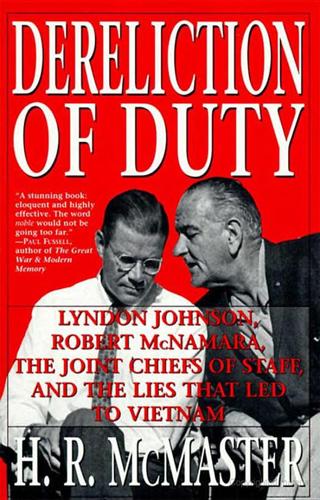
Dereliction of Duty: Johnson, McNamara, the Joint Chiefs of Staff, and the Lies That Led to Vietnam
by
H. R. McMaster
Published 7 May 1998
Since February General LeMay had pressed for the use of American air power against North Vietnam,15 arguing that the Gulf of Tonkin retaliation should serve as a starting point for sustained air strikes which would destroy all ninety-four targets on the JCS list. On August 17 LeMay sent General Wheeler a study conducted by the RAND Corporation, whose thesis was that “the total commitment of Hanoi to the success of the insurgency is the key to the strength of the Viet Cong.” The study argued that Hanoi provided the Viet Cong with leadership, a sophisticated political-military apparatus, a compelling ideological theme, and a secure military base.
…
See covert operations OPLAN 37–64, 93, 94 Palmer, Bruce, 114, 225, 246 Pathet Lao, 7–8, 98, 103 Pell, Claiborne, 283 Phan Huy Quat, 228, 288 Phan Khac Suu, 165, 288 Phan Ngoc Thao, 228 Phuc Yen MIG fighter base, 192, 222, 250, 257, 285, 286 Pleiku airfield, attack and reprisal, 215–20, 230–31 Quang Khe, 234 Qui Nhon, 303 Qui Nhort attack, 221–22 Raborn, William, 280, 284, 285, 287, 293, 295 Radford, Arthur, 35 RAND Corporation study, 143 Reedy, George, 291, 293, 295 Ridgway, Matthew, 9, 35 Rivers, L. Mendel, 309, 310 Rockefeller Foundation, 3 Rogers, Bernard W., 42, 47, 182 Rolling Thunder. See air strikes Roosevelt, Franklin D., 13, 33, 331 Rostow, Walt, 59, 71, 88, 89, 156, 160, 162, 203–4 Rusk, Dean, 7, 104, 113, 151, 186, 188, 206, 280, 285, 295 and Cuban missile crisis, 25–26 and Gulf of Tonkin, 123–24, 127, 128, 130, 133–34, 136 Honolulu conference, 99–103 and Johnson, 47, 48, 66, 69, 88–89, 255, 284, 293 Kennedy appointment of, 3–4 and negotiated settlement, 94 rivalry for Johnson’s favor, 208 and Taylor, 111–12, 123–24, 144–45, 150, 200–201, 208, 251–52, 258 and Vietnam policy, 38, 39, 47, 114, 140, 174, 181, 190, 191, 200, 202, 207, 213, 231, 248, 258, 289, 300–301 and war games, 156 Russell, Richard, 52, 55, 125, 165, 293, 294 Saltonstall, Leverett, 131 Sather, Richard C, 133 Schlesinger, Arthur, 28 Schnapper, M.

Boyd: The Fighter Pilot Who Changed the Art of War
by
Robert Coram
Published 21 Nov 2002
New York: Orion Books, 1988. ———. Thud Ridge. New York: Bantam Books, 1985. Burton, James G. “Desert Storm: A Different Look.” Briefing. June 21, 1995. ———. The Pentagon Wars. Annapolis: Naval Institute Press, 1993. Carter, Gregory A. “Some Historical Notes on Air Interdiction in Korea.” Santa Monica, Calif.: The RAND Corporation, September 1966. Casti, John L., and Werner DePauli. Godel. Cambridge: Perseus Publishing, 2000. Clausewitz, Carl von. On War. Edited and translated by Michael Howard and Peter Paret. Princeton: Princeton University Press, 1976. Coulam, Robert F. Illusions of Choice. Princeton: Princeton University Press, 1977.
…
“Harry Hillaker: Father of the F-16.” Code One. (July 1991). Fort Worth: General Dynamics. “Harry Hillaker: Father of the F-16. Part II. ” Code One. (July 1991). Fort Worth: General Dynamics. Higgins, J. W. “Military Movements and Supply Lines as Comparative Interdiction Targets.” Santa Monica, Calif.: RAND Corporation, July 1970. Hooker, Richard D. Jr., ed. Maneuver Warfare. Novato, Calif.: Presidio Press, 1993. Kaplan, Fred. “Beast of Battle.” Boston Globe Magazine (July 21, 1991): 12. Keaney, Thomas A., and Eliot A. Cohen. Gulf War Air Power Survey. Maxwell AFB, Ala.: Air University Press. Keegan, John.
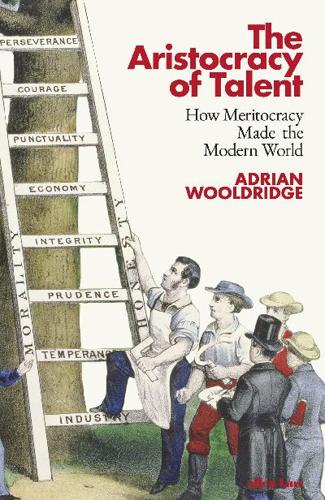
The Aristocracy of Talent: How Meritocracy Made the Modern World
by
Adrian Wooldridge
Published 2 Jun 2021
The same themes were nevertheless woven together in rather different patterns. America had the benefit of more variety than Britain: meritocratic educational initiatives were sponsored by companies and think tanks as well as governments, meritocratic government reforms were spearheaded by think tanks, particularly the Rand Corporation, as well as government departments. America did not suffer from the same agonies of class guilt as Britain (though it suffered from worse agonies of racial guilt, agonies that were suppressed during the 1950s but transformed politics in the 1960s). In post-war America the meritocratic revolution was all about delivering the promise of American life, as codified in the Declaration of Independence and the constitution, rather than overturning an unjust social order.
…
B. 137 Pius II, Pope 47 Plato 16, 59–71, 106 Academy 66, 67 and criticism of Athens 64–6 on democracy 63–4 and duty 392 legacy and influence 66–71 and men of gold 59–60 and philosophers 61, 62, 65, 66 Republic 18–19, 59–66, 219 and training for guardians 61–2 Plomin, Robert 381 plutocracy and meritocracy 21–2 see also merito-plutocratic elites Poland 37, 91 rise of nationalism 329 political corruption America 188, 190, 195–6, 200–202 China 361–2 political dynasties 46, 318–19 political meritocracy 383–6 China 22, 357–63 limits of 360–63 political parties and 18th-century patronage 51–2 and changing class appeal 331, 332–3, 346 professional membership 341 political parties, US and election campaigns 331–2 and patronage 202 spoils system 188, 195–6, 200–202 political radicalism 147–8 politicians and academic qualifications 340–41 changing relations with electorate 332–3 and intelligence 3 move to private sector 343–4 and patronage 48, 231 see also populism Pollock, Frederick, History of English Law 38 polygamy 36 Pompidou, Georges 137 Popper, Karl 59 The Open Society and Its Enemies 70 populism and choice of leaders 334 and criticism of meritocracy 6, 22, 333 future of 345–9 and nationalism 344–5 Plato on dangers of 63–4, 71 and political flashpoints 344–5 rise of 329–30, 333 Port Huron Statement (1962) 297 Porter, Michael 254 Portugal, expulsion of Jews (1495, 1497) 93 positive discrimination see affirmative action post office, women employees 271–2 poverty, and IQ 4 Powell, Anthony 246 Powell, Enoch 335 power of knowledge 76 and prejudice 347–8 press and Black Lives Matter 348 cable news channels 386 cosmopolitan bias 334 phone-hacking scandal (2011) 338 and rise of populism 333–4 role in meritocratic government 385–6 tabloid 333 see also journalists Price, J St Clair 285 Price, Richard 178 primogeniture 36 Private Eye 236 professions, talent-based 142 property, and monarchy 38, 48–9 Protestant Reformation 111–12, 177 Protestantism, ethic of hard work 112, 177 Prussia aristocracy 127 defeats by Napoleon 139 October Edict (1807) 139–40 standing army 126–7 Psychological Corporation 214 psychologists 280 psychometrists and IQ testing 206–7 and women’s mental tests 271 Pu Songling, on examination system 83–4 Pu Yi, emperor of China 42 public schools, British 8, 21, 68–9, 70 and abolition of grammar schools 299–300 and access to universities 307, 309 competition from grammar schools 234 facilities and sports 310 foundations to provide education for poor 102–3, 311 and gaming the system 310–311 for girls 268 overseas campuses 309 places for poorer children 378–9 post-war crisis 237–8 and prep schools 237–8 transformation 309–311 Pulitzer prizes 86 Punch magazine 270 Puritanism 112, 114 in America 175–7 Quakers 152 Quesnay, François 82 race classifications 207 and criticism of meritocracy 5–6 and fear of degeneration 215 and group rights 297–8, 347–8 inequality in America 283, 302–5, 346–8 and social inequality 325 race theory critical 5–6 and Jews 87 Racine, Jean 54 racism, and power 347–8 Radford, Ada, Before the Bluestockings 268 Rae, John, headmaster 311 Raleigh, Walter, History of the World (1614) 28–9 Ramsay, Agnata 268 Ramsay, David 19, 178 Rand Corporation 238, 240 Rawls, John A Theory of Justice 290–92 and praise 371 on talent 370 Rayburn, Samuel 290 Rayner, Olive Pratt (pen name of Grant Allen) 271 Reagan, Ronald 1–2, 335 referendums 384, 385 Reform Bill (1867) 165 Regents of the University of California v Bakke (1978 US Supreme Court) 303 Renaissance and ideal of aristocracy 106–11 and Plato 68 Republican Party, anti-intellectual appeal 331–2 republics hereditary 108 open (Machiavelli) 108–9 Revolution of 1848 134 Rhodes, Cecil 69, 320 Ricci, Matteo 77–8, 113 History of the Introduction of Christianity to China 73 in Peking (Beijing) 72–3, 77–8, 81 Richelieu, Cardinal 125 Rickett, Mary Ellen 269 Right, political changing appeal of 332, 346 and communitarianism 294–5 populist 333–5 revolt against merito-plutocratic elite 329–35 335–8 see also populism rights American Revolution and 179 French Revolution and 117 group 297–8, 347–8 political 140 and social contract theory 146 UN Declaration 26 of women 257, 262, 264–5, 274 ritual, and hierarchy 30 Rivera, Lauren 318 robber barons, United States 17, 193, 196–7 Roberts, Margaret see Thatcher Robespierre, Maximilien 118 Robinson, James 397 Rockefeller, David 320 Rockefeller, John 193, 196 Roman Republic, dominant families 48 Romanticism 141–3, 295 Romany gypsies 94 Romney family 255 Romney, George 255, 319 Romney, Mitt 255, 319, 331 Roosevelt, Franklin Delano 42, 194 New Deal 201 and robber barons 196–7 Roosevelt, Theodore 17, 196 Rorty, Richard 336 Roth, Philip 92 Rothkopf, David 342 Rothschild, Mayer Amschel 96 Rousseau, Jean-Jacques 82 Discourse on the Origins and the Foundations of Inequality among Men 121, 375 Émile 121, 264 on talent 130, 141 Royal, Ségolène 312 Royal Societies 114 Rudolf II, emperor 43 Rudolf III, king of Burgundy 41 Rugby (school) 104, 158 Rush, Benjamin 178 and Adams 183, 185 Ruskin, John 68, 395 on Venice 397–8 Russell, Bertrand 213 Russell, Lord John 158, 161 Russia 133 and absolutist contradiction 128–9 Communist, Jews in 86–7 support for IQ testing 228 Table of Ranks 128–9 V.
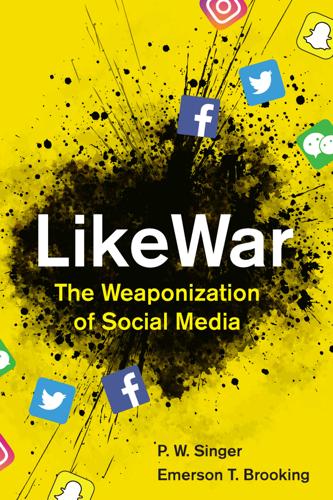
Likewar: The Weaponization of Social Media
by
Peter Warren Singer
and
Emerson T. Brooking
Published 15 Mar 2018
Its tens of thousands of eager recruits, most drawn from Syria, Iraq, and Tunisia, had grown up with smartphones and Facebook. The result was a terrorist group with a seventh-century view of the world that, nonetheless, could only be understood as a creature of the new internet. “Terrorism is theater,” declared RAND Corporation analyst Brian Jenkins in a 1974 report that became one of terrorism’s foundational studies. Command enough attention and it didn’t matter how weak or strong you were: you could bend populations to your will and cow the most powerful adversaries into submission. This simple principle has guided terrorists for millennia.
…
Images, videos, livestreams, and ever-improving online translation make it simple to strike up conversations across the globe. Any of these connections can be observed or joined by audiences from yet other parts of the world. In 1990, a generation after Licklider and Taylor made their prediction about computer communication, two political scientists with the Pentagon’s think tank at the RAND Corporation started to explore the security implications of this emerging internet. Many of John Arquilla and David Ronfeldt’s colleagues considered their line of investigation into computers used mostly by geeks a bunch of mumbo jumbo. But an important few realized that it was game-changing. The first time Arquilla and Ronfeldt put their thoughts into a short memo, the Pentagon immediately classified it.

Dawn of the Code War: America's Battle Against Russia, China, and the Rising Global Cyber Threat
by
John P. Carlin
and
Garrett M. Graff
Published 15 Oct 2018
He had intended it to spread slowly and quietly, but Morris had made a couple of critical programming errors and instead thousands of computers at universities, government offices, military bases, and medical facilities ground to a halt as the worm replicated itself at a rate far faster than expected, clogging the system and forcing many users to disconnect their computers from the main network. Panic set in at computer labs across the country, as systems administrators noted the program deluging them. At 6:30 p.m., the RAND Corporation noted its presence; then, an hour later, MIT’s AI Lab saw the worm. Soon, it was infecting computers at Lawrence Livermore National Laboratory, then Stanford, and dozens of others.48 By midnight, it hit the US Army’s Ballistic Research Laboratory and the army made the decision to sever its connection to the internet entirely.
…
See 2008 presidential election; 2016 presidential election Presidential Policy Directive 41, 176n price dumping, 263 Privacy Act of 1974, 39 Prodigy, 96 profilers, 328 propaganda broadcasts, 5 Putin, Vladimir, 51–53, 71, 252, 382–383, 385, 387–388, 398 Putter Panda, 195, 271 Pwdump3.exe, 123, 124 al-Qaeda, 4–8, 17–18, 57, 140, 142, 195 al-Qaeda in Iraq, 5, 13 al-Qaeda in the Arabian Peninsula (AQAP), 5, 10, 12 Qassam Cyber Fighters. See Cyber Fighters of Izz Ad-Din Al Qassam Qiu, Jack Linchuan, 165 Quds Force, 213–216, 224 Radio Shack TRS-80, 34, 87 Radware, 357 Rahim, Usaamah Abdullah, 21 RAND Corporation, 91 randoms, 81 ransomware attacks, 56, 291–292, 387, 392, 401 Rasch, Mark, 94 RasGas, 221 Rasmussen, Nick, 373 RATs. See remote access tools Rattray, Greg, 38, 244 Rawls, Lee, 138, 141, 146, 147, 149, 262 RBN. See Russian Business Network Reagan, Ronald, 86, 90 Reconnaissance General Bureau (RGB), 318–319, 319n, 340 Red Notices, 304 Reese, Ron, 237 Register of Known Spam Operations (ROKSO), 121 remote access tools (RATs), 162, 193, 356 remote shells, 91 Reno, Janet, 109, 187 Resler, Brian, 202, 203, 267 Rezakhah, Mohammed Reza, 232 RGB.

Future Politics: Living Together in a World Transformed by Tech
by
Jamie Susskind
Published 3 Sep 2018
Meg Leta Jones, Ctrl + Z: The Right to Be Forgotten (New York: New York University Press, 2016), 1. 41. Leta Jones, Ctrl + Z, 9–11. 42. Eric Siegel, Predictive Analytics: The Power to Predict Who Will Click, Buy, Lie, or Die (New Jersey: John Wiley & Sons, Inc., 2016), 11. 43. Walter Perry et al., Predictive Policing: The Role of Crime Forecasting in Law Enforcement Operations (Santa Monica: RAND Corporation, 2013). 44. Siegel, Predictive Analytics, centrefold (table 5). 45. Frank Pasquale, The Black Box Society:The Secret Algorithms that Control Money and Information (Cambridge, Mass: Harvard University Press, 2015), 23–6. 46. Josh Chin and Gillian Wong, ‘China’s New Tool for Social Control: A Credit Rating for Everything’, Wall Street Journal, 28 November 2016 <http://www.wsj.com/articles/chinas-new-tool-for-socialcontrol-a-credit-rating-for-everything-1480351590> (accessed 1 December 2017); Economist, ‘China Invents the Digital Totalitarian State’, 17 December 2016 <http://www.economist.com/news/ br iefing/21711902-worrying-implications-its-social-creditproject-china-invents-digital-totalitarian> (accessed 1 December 2017). 47.
…
<http:// www.nationalreview.com/article/207925/facts-are-facts-timothy-jpenny> (accessed 9 Dec. 2017). OUP CORRECTED PROOF – FINAL, 28/05/18, SPi РЕЛИЗ ПОДГОТОВИЛА ГРУППА "What's News" VK.COM/WSNWS 474 Bibliography Perry, Walter, Brian McInnis, Carter Price, Susan Smith, and John Hollywood. Predictive Policing: The Role of Crime Forecasting in Law Enforcement Operations. Santa Monica: RAND Corporation, 2013. Perzanowksi, Aaron, and Jason Schultz. The End of Ownership: Personal Property in the Digital Economy. Cambridge, Mass: MIT Press, 2016. Peters, John Durham. Speaking Into the Air: A History of the Idea of Communication. Chicago: University of Chicago Press, 1999. Peterson, Andrea. ‘Holocaust Museum to Visitors: Please Stop Catching Pokémon Here’.
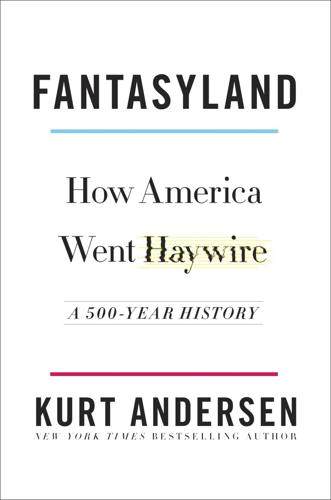
Fantasyland
by
Kurt Andersen
Published 5 Sep 2017
McNamara was infatuated with “systems analysis,” the shiny new computerized approach, made possible by Von Neumann’s mathematical work, that presumed to solve complex problems—especially military ones—by reducing them to quantitative data. The most important of McNamara’s whiz-kid assistant secretaries had been a senior figure at the RAND Corporation, the original postwar think tank and the fountainhead of systems analysis. The problem was that the crunched data and equations made systems analysis look like pure science, and its self-confident brainiac practitioners and their clients certainly believed it was a form of perfect superrationality.
…
And everybody has been in on it—“the Jesuits, the Masons…the Nazi Party, the Communist Party…the Council on Foreign Relations…the Trilateral Commission, the Bilderberg Group,…the Vatican…Skull & Bones…they are all the same and all work toward the same ultimate goal, a New World Order” that “is beating down the door.” Plus the Rockefellers, the RAND Corporation, the Federal Reserve, the CIA, and the United Nations. In fact, as Cooper noted, the masks were coming off—President Bush had started speaking openly about the plan to realize the Illuminati “dream of a new world order.” — THE NEW WORLD Order. At that moment, it was becoming the all-encompassing catchphrase for people who believed in a sinister conspiracy running the world, those elite entities named by Cooper as well as the ones—banks, news media, show business—McCarthyists and the John Birch Society had identified decades earlier.
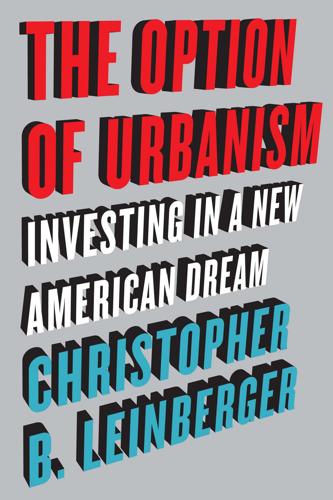
The Option of Urbanism: Investing in a New American Dream
by
Christopher B. Leinberger
Published 15 Nov 2008
.: Island Press, 2003). 37. Lawrence Frank and Barbara McCann, “Driving, Walking, and Where You Live: Links to Obesity,” http://www.choices4health.org/resource Files/82.pdf. 38. Deborah Cohen et al., Park Use and Physical Activity in a Sample of Public Parks in the City of Los Angeles (Arlington, Va.: Rand Corporation, 2006). 39. See Active Living Research, “What We Are Learning,” http://www.active livingresearch.org/index.php/What_We_are_Learning/117, for the latest research. NOTES | 187 40. Reid H. Ewing, R. Pendall, and D. Chen, “Measuring Sprawl and Its Transportation Impacts,” Transportation Research Record no. 1828 (2003): 175–183. 41.
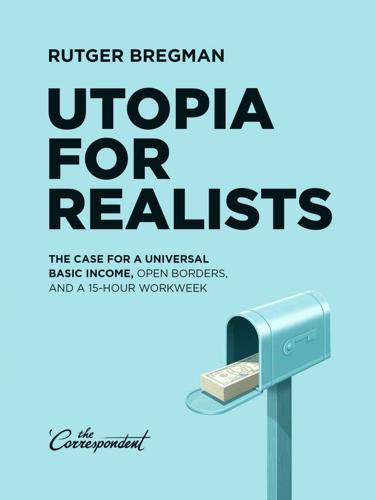
Utopia for Realists: The Case for a Universal Basic Income, Open Borders, and a 15-Hour Workweek
by
Rutger Bregman
Published 13 Sep 2014
This would free up “abundant scope for recreation,” enthused an English professor, “by immersion in the imaginative life, in art, drama, dance, and a hundred other ways of transcending the constraints of daily life.”9 Keynes’ bold prediction had become a truism. In the mid-1960s, a Senate committee report projected that by 2000 the workweek would be down to just 14 hours, with at least seven weeks off a year. The RAND Corporation, an influential think tank, foresaw a future in which just 2% of the population would be able to produce everything society needed.10 Working would soon be reserved for the elite. In the summer of 1964, The New York Times asked the great science fiction author Isaac Asimov to take a shot at forecasting the future.11 What would the world would be like in 50 years?
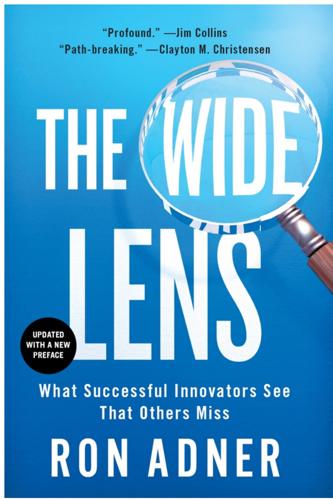
The Wide Lens: What Successful Innovators See That Others Miss
by
Ron Adner
Published 1 Mar 2012
Health-care insiders, pioneering technology companies, and policy makers have been discussing a digital alternative to paper-based medical records since the 1950s. Besides the obvious benefit of improved safety, studies show a gain of nearly 30 percent efficiency through the reduction of paperwork (the average physician fills out more than 20,000 forms each year) and unnecessary or redundant tests. Ultimately, according to senior researchers at the RAND Corporation, “the adoption of interoperable EMR [electronic medical record] systems could produce efficiency and safety savings of $142–$371 billion.” For the health IT sector, the successful implementation of electronic health records is an enormous opportunity. Over the years players big and small have devoted massive resources to finding a way to implement EHR in the health-care industry—but have mostly left a wreckage of false starts.
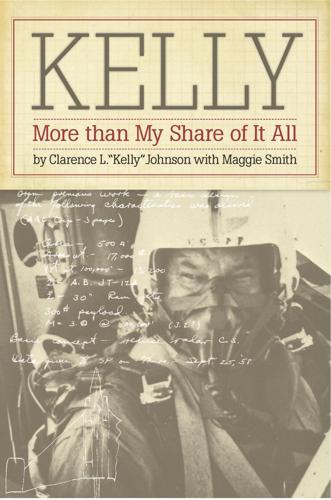
Kelly: More Than My Share of It All
by
Clarence L. Johnson
Published 1 Jan 1985
Hibbard, with typical generosity, let her leave his office and work for me because he knew it would help me in my new position to continue to work with the secretary we had shared. She stayed with me for 18 years, until her retirement. When Skunk Works principles really are applied, they work. An example of their successful application was development of the Agena-D launch vehicle. The Rand Corporation has recorded it in a report available to anyone interested. The satellite that was to become this country’s workhorse in space was in trouble in terms of design and cost but especially in reliability, which stood at an incredibly low 13.6 percent. I was drafted, in effect, to go up to the Lockheed Missiles and Space Company and fix it.
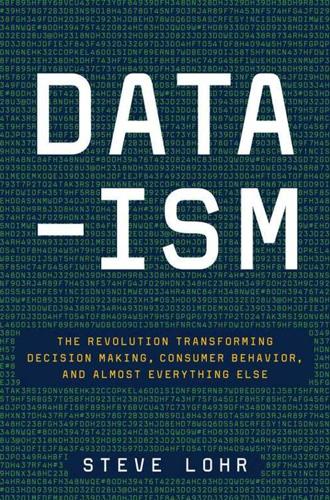
Data-Ism: The Revolution Transforming Decision Making, Consumer Behavior, and Almost Everything Else
by
Steve Lohr
Published 10 Mar 2015
Merrill has shoulder-length brown hair, a silver stud earring in his right ear, and on his left forearm, past the elbow, a sinuous tattoo of a peacock. ZestFinance is based in Los Angeles, but we talked over lunch in New York during a conference on big data, where Merrill spoke and I moderated a panel. Merrill’s résumé testifies to his intellectual range—a PhD in psychology from Princeton and stints as a researcher at the Rand Corporation and as a senior vice president at Charles Schwab, in addition to Google. His company’s creation story starts with a call from his sister-in-law, Victoria, who needed new snow tires to get to work and was out of cash. Merrill asked what she would have done if she had not been able to reach him, and he recalls that she told him that she would have taken out another “payday loan.”
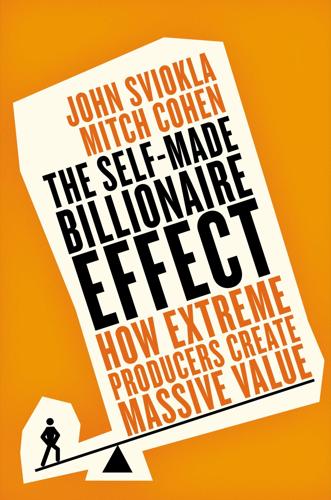
The Self-Made Billionaire Effect: How Extreme Producers Create Massive Value
by
John Sviokla
and
Mitch Cohen
Published 30 Dec 2014
For details on the exchange rate for Hugonot shares, see “Mesa Petroleum Corporation” by the Texas Historical Association, www.tshaonline.org/handbook/online/articles/dom04, accessed February 6, 2014. 33. Isaacson, Steve Jobs. 34. Cuban, How to Win at the Sport of Business. 35. See Will Jennings, Olympic Risks (London: Palgrave, 2012), and Edward Merrow, “Understanding the Outcomes of Mega-Projects,” (Santa Monica, CA: Rand Corporation, 1988). Chapter 6: The Producer-Performer Duality 1. Unless otherwise noted, all details and quotes pertaining to John Paul DeJoria are drawn from an in-person interview with the authors conducted on March 27, 2013. The detail about John Paul DeJoria’s early professional experiences working for other companies in the hair industry came from http://money.cnn.com/2012/04/24/smallbusiness/paul_mitchell_dejoria.fortune/index.htm. 2.
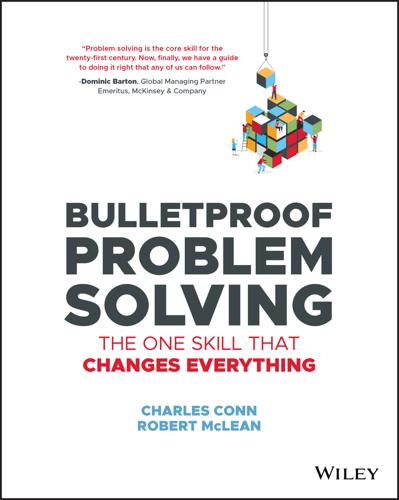
Bulletproof Problem Solving
by
Charles Conn
and
Robert McLean
Published 6 Mar 2019
For a long‐term societal issue you're interested in, try developing a theory of change and portfolio of strategies. Notes 1 Hugh Courtney et al., “Strategy Under Uncertainty,” McKinsey Quarterly, 2000. 2 Hugh Courtney, “A Fresh Look at Strategy Under Uncertainty: An Interview,” McKinsey Quarterly, December 2008. 3 Uncertainty, Chapter 5 by Albert Madansky in Systems Analysis, Quade and Boucher, RAND Corporation, 1968. 4 James C. Morgan and Joan O'C. Hamilton, Applied Wisdom: Bad News Is Good News and Other Insights That Can Help Any Anyone Be a Better Manager (Chandler Jordan Publishing, November 2016). 5 Adam Brandenberger and Barry Nalebuff, Co‐Opetition (Currency Doubleday, 1996), 156. 6 Michael Lewis, The Big Short (W.

Curbing Traffic: The Human Case for Fewer Cars in Our Lives
by
Chris Bruntlett
and
Melissa Bruntlett
Published 28 Jun 2021
Small wonder that, according to the American Automobile Association, “Seniors are outliving their ability to drive safely by an average of seven to ten years.” Often experiencing visual impairments and delayed reaction times, the elderly tend to adjust their driving patterns to less congested areas and daylight hours. This results in a dangerous situation not just for the user but everyone around them, as research from the RAND Corporation suggests drivers over 65 are 16 percent likelier to cause a crash. The lost autonomy that comes with a loss of driving isn’t limited to North America, either. Chris recalls when his grandfather—who lived in a midsized city in Warwickshire, England—had his driver’s license revoked, causing him to go into a minor state of depression.

The Andromeda Strain
by
Michael Crichton
Published 28 Oct 2003
For their review of relevant chapters of the manuscript, and for their technical corrections and suggestions, I wish to thank Christian P. Lewis, Goddard Space Flight Center; Herbert Stanch, Avco, Inc.; James P. Baker, Jet Propulsion Laboratory; Carlos N. Sandos, California Institute of Technology; Dr. Brian Stack, University of Michigan; Edgar Blalock, Hudson Institute; Professor Linus Kjelling, the RAND Corporation; Dr. Eldredge Benson, National Institutes of Health. Lastly, I wish to thank the participants in the Wildfire Project and the investigation of the -so-called Andromeda Strain. All agreed to see me and, with many, my interviews lasted over a period of days. Furthermore, I was able to draw upon the transcripts of their debriefing, which are stored in Arlington Hall (Substation Seven) and which amounted to more than fifteen thousand pages of typewritten manuscript.
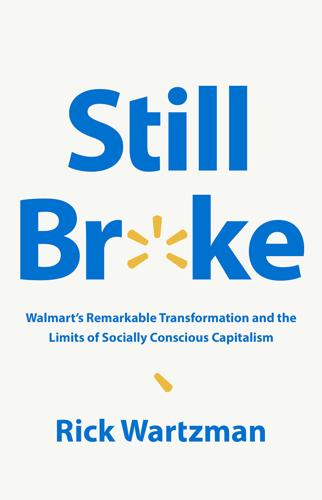
Still Broke: Walmart's Remarkable Transformation and the Limits of Socially Conscious Capitalism
by
Rick Wartzman
Published 15 Nov 2022
From 1979 to 2020, the economy-wide income resulting from an average hour of work (that is, productivity) shot up by more than 60 percent. But average compensation—wages and benefits—for the typical worker increased by less than 18 percent over those four decades, according to the Economic Policy Institute. Put simply, Americans stopped being rewarded for their labor like they once were. Analysts at the RAND Corporation have documented the same phenomenon. Their findings, published in 2020, show that a full-time worker whose taxable income is at the median—with half the population making more and half making less—now pulls in about $50,000 a year. Yet had the dividends of the nation’s economic output been shared over the past 45 years as broadly as they had been from the end of World War II until the early 1970s, that worker would instead be making about $100,000.
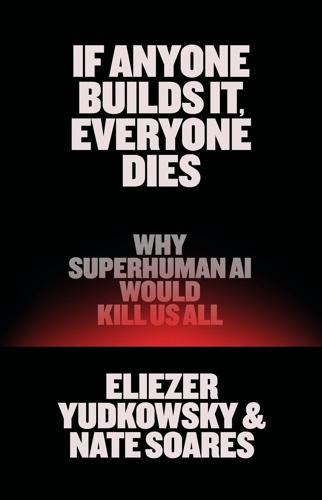
If Anyone Builds It, Everyone Dies: Why Superhuman AI Would Kill Us All
by
Eliezer Yudkowsky
and
Nate Soares
Published 15 Sep 2025
AI scams: Heather Chen and Kathleen Magramo, “Finance worker Pays Out $25 Million after Video Call with Deepfake ‘Chief Financial Officer,’” CNN, February 4, 2024, cnn.com. 10. look realistic: Stuart A. Thompson, “A.I. Can Now Create Lifelike Videos. Can You Tell What’s Real?,” New York Times, September 10, 2024, nytimes.com. 11. software controls: Forrest W. Crawford et al., “Securing Commercial Nucleic Acid Synthesis” (RAND Corporation, 2024), rand.org. 12. once in 2021: Richard Waters and Miles Kruppa, “Rebel AI Group Raises Record Cash after Machine Learning Schism,” Financial Times, May 28, 2021, ft.com. 13. again in 2024: Todd Haselton and Rohan Goswami, “OpenAI Co-founder Ilya Sutskever Announces His New AI Startup, Safe Superintelligence,” CNBC, June 20, 2024, cnbc.com. 14. gain-of-function: “Understanding the Global Gain-of-Function Research Landscape,” Center for Security and Emerging Technology, November 28, 2023, cset.georgetown.edu. 15.
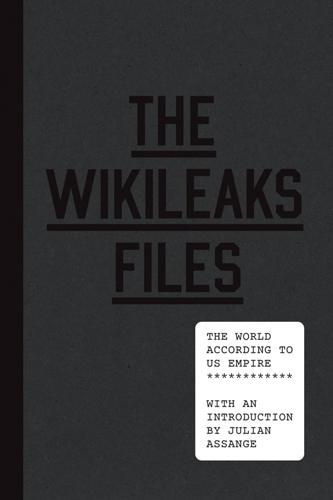
The WikiLeaks Files: The World According to US Empire
by
Wikileaks
Published 24 Aug 2015
Suddenly, US diplomacy in Asia began to focus on “moderating” the views of the rising DPJ, which US embassy officials saw correctly was about to take over. The US arrogance toward the party—and the millions of Japanese citizens voting for the change it represented—is illustrated in a May 2009 cable from the US embassy to Deputy Secretary of State James Steinberg, a former analyst with the RAND Corporation. It includes an intriguing section entitled “DPJ: Friend or Foe?” The answer is clearly the latter: Significant ideological differences within the party make it difficult to predict the impact on bilateral relations under a DPJ government. Your meeting with DPJ President Hatoyama will continue the process begun by the Secretary of building stronger ties to the party and helping to moderate its views.
…
Sanger, “Iran Fortifies Its Arsenal with the Aid of North Korea,” New York Times, November 28, 2010. 11The most authoritative analysis of the North Korean missile program confirmed that it was only in October 2010—ten months after the joint assessment meeting—that North Korea first displayed what appeared to be a B-25 or “Musadan” missile in a military parade. And a close examination of the photographs of the missile showed clearly that it had been a crudely constructed mock-up rather than a real missile. Markus Schiller, Characterizing the North Korea Nuclear Missile Threat (Santa Monica, CA: RAND Corporation, 2012), p. 87. 12Reuters, “UAE First Mideast Buyer of PAC-3 missile—Lockheed,” December 23, 2008; Antonie Boessenkool, “UAE to Buy Raytheon’s Patriot Missiles,” Defense News, December 18, 2008. 13Adam Entous, “Saudi Arms Deal Advances,” Wall Street Journal, September 12, 2012; Michael Knights, Rising to Iran’s Challenge: GCC Military Capability and US Security Cooperation, Washington Institute for Near East Policy, Policy Forum 177, June 2013, p. 9; Arthur Bright, “Eyeing Iran US Details $60b.

Extreme Money: Masters of the Universe and the Cult of Risk
by
Satyajit Das
Published 14 Oct 2011
The clock was switched off from 2000 to 2002 when the national debt briefly fell. Subsequently, as the debt started to rise, the clock was restarted. By 2009, the debt exceeded $10 trillion, requiring Douglas Darst, Seymour’s son, to arrange for a new clock with extra capacity. In the 1950s, Herman Kahn, a strategist at the RAND Corporation, and Ian Harold Brown, a risk analyst, proposed a doomsday machine. It consisted of a computer linked to a stockpile of hydrogen bombs, programmed to detonate them and bathe the planet in nuclear fallout at the signal of an impending nuclear attack from another nation. In Stanley Kubrick’s film Dr Strangelove or: How I Learned to Stop Worrying and Love the Bomb, there is speculation about whether the Russians possess this technology.
…
See also currency Quayle, Dan, 95 Queen, 157 Queen Elizabeth, 278 R Rabbit Is Rich, 363 Racketeer Influenced and Corrupt Organizations (RICO) Act, 150 Radaker, Byron, 134 Rain Man, 153, 166 rainbows, 211 Raines, Sylvain, 309 Rains, Claude, 77 Rajaratnam, Raj, 244 Ralphie’s Funds, 191, 204 Ramones, The, 79 RAND Corporation, 35 Rand, Ayn, 294, 296 random walks, 118 rands, 21 Range Rover, 346 Ranieri, Lewis, 170 Rapid American, 143 Rappaport, Alfred, 124 Raskob, John, 97 Ratergate (2008), 285 ratings agencies, 141 bonds, 282-285 CDOs, 285 credit, 282 Rational Man, 119 Rattner, Steven, 274 Raynes, Sylvain R., 196 re-re-securitizations, 191 re-securitizations, 191 Reagan, Ronald, 65-66, 97, 101, 298, 364 real estate, 179-182 adjusted rate mortgages (ARMs), 183-184 reals, 21 recessions, 350 recovery, 359-360 rates, 171 recruitment of finance candidates, 310 recycling in Japan, 39 Red Force, 264 Redline, 186 Reed, John, 71, 75 reflexivity, 327 Regnault, Jules, 118 regulations, 81 banks, 65-67 Basel 1, 74 Basel 2, 200 central banks, 279-281 self-regulating markets, 102 synthetic securitization, 176 regulators preparation for financial crises, 264-278 understanding of securitization, 282 regulatory arbitrage, 75 Reid, Harry, 299 relative value funds arb (arbitrage) market inefficiencies, 242 religious prohibitions on usuries, 32 remote risk of loss, 220 renminbi, 21 rentiers, 33 repackaging corporate debt, 173 repos (repurchase agreements), 288 reserves banking, 32 gold, 30 resources, financial news, 89-99 restructures, corporations, 57 retirement, 20, 46, 48 Japan, 49-50 pension plans, 50 self-funded savings, 180 returns benchmarking, 123 on capital, 57 hedge funds, 243-244 private equity, 162 Revco drug stores, 150 Reykjavík, Iceland, 275 as a financial center, 84 Reynolds, Glenn, 283 Reynolds/Tube, 58 Rhodesia.
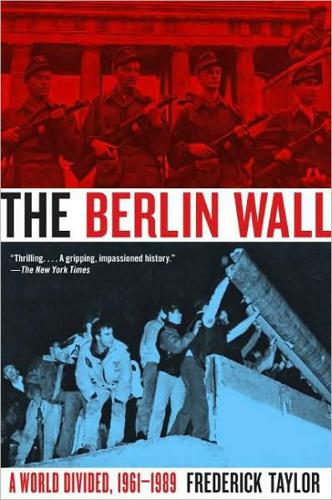
The Berlin Wall: A World Divided, 1961-1989
by
Frederick Taylor
Published 26 May 2008
As a leading investment banker, he provided the new Democratic administration with a touch of non-partisan appeal and the much-needed gravitas of an establishment figure who could, as Kennedy recognised, ‘call a few of those people on Wall Street by their first names’.5 The tendency in general among Kennedy’s advisers (his so-called ‘brains trust’) was, however, more biased towards academics, including such Ivy League luminaries as J.K. Galbraith, Arthur Schlesinger and Seymour Harris (all Harvard), and the economic historian and expert on ‘overcoming backwardness’, Walt Rostow (MIT). Kennedy’s administration was the first one in which ‘think tanks’—especially the RAND Corporation—came to the fore, and memoranda on every subject from just about every conceivable angle started to flood into the White House’s in-tray. Even Kennedy’s Secretary of State was no toughie Cold War warrior in the mode of the late John Foster Dulles but a conscientious, not especially combative Georgian liberal, Dean Rusk.
…
Congress, 275-6, 286; agricultural policy, 276; and Checkpoint Charlie confrontation, 281-6; resumes nuclear testing, 282; and Cuban Missile Crisis, 335-6, 434; stripped of powers, 336, 341 Khrushchev, Sergei, 105, 139, 251 Khrushchev, Yulia Nikitchna, 454 Kiel, 174 Kielberg, Elke, 187-8 Kiesinger, Kun Georg, 345 Kim II-sung, 71, 73 kindergartens, 348, 371 Kippemammler, 46 Knorr-Bremse, 389 Koch, Private Hagen, 237-9, 241-2, 311, 435-6 Kohl, Helmut, 387, 396, 432; and German unity, 390-2; raises subject of Wall, 393, 403; visits Warsaw, 426, 429; relationship with Mitterand, 434; and German reunification, 434-5 Köhler, Dodo, 297 512 / THE BERLIN WALL Kohler, Foy, 215 KoKo, 374-6, 384 Konev, Marshal Ivan, 145, 214, 228; meets Western military , 157-8, 263; missions, 157-8, 263; and Checkpoint Charlie confromation, 279, 281-2, 285 Königsberg, 343 Korea, 444 Korean War, 71-3, 131, 211, 243, 443, 455 Kotikov, General, 49, 56, 61, 176 KPD (CommunisT Party of Germany), 24-8, 48-9, 91, 142; in exile, 29-30; refounded, 40, 42; and creation of SED, 43-4, 47, 98; Brandt and, 94; Stasi and, 143; re-founded, 441 Krajewsky, Major Bruno, 313-14 Kramer, Erwin, 141 Krenz, Egon, 392, 405; engineers Honecker’s; downfall and becomes party leader, 410, 412-15; meets orbachev, 416-17; purges old guard, 419; retains power, 420, 425-6; rescinds travel ban, 421-3; and border opening, 425-6; resigns, 432; expelled from SED, 432 Kressmann, Willy, 225 Kreuzberg, xviii, 184, 200, 225, 239, 394, 300 Krüger, lngo, 294-5 Krupp family, 391 Kufsteiner Strasse, 58 Kunzelmann, Dieter, 361 Kurfürstendamm, 40, 254-6 Kuwait, 207 Kviesinsky, Yuli, 140-1, 276 Labour Party, 20 Lacomme, General, 214-15 Lafontaine, Oskar, 391, 430 Lancaster bombers, 56 landmines, 367 Landwehr Canal, 24, 162, 263 Langhans, Carl Gottfried, 13 Laos, 131 INDEX / 513 LDPD (Liberal Democratic Party), 43, 160; le Carré, John, 333, 371 League of Nations, 91 Lehrter station, 45 Leibing, Peter, 240 Leipzig, 84, 373; Ulbricht’s early life in, 24-5, 350; Americans occupy, 37; and workers’ uprising, 86; University, 124, 311; sport institute, 349; industries, 388; opposition in, 402, 408, 410-12, 414, 416, 421; revival, 446 Leipzig Gewandhaus Orchestra, 411 Leipzig Trade Fair, 224, 271 Leipziger Strasse, xix, 83, 273 Leiser and Company, 255-6 Lemmer, Ernst, 155 Lemnitzer, General, 230 Lenin, Vladimir Ilyich, 24-5, 39, 48, 51, 102, 282 Leninallee, 194 Leonhard, Wolfgang, 33, 35-6, 163 Leuna chemicals works, xxiii Lichtenberg, 34, 83-4, 194 Lichtenrade, 266 Lichtedelde, 153, 279 Lichy, Harrmut, 296 Liebknecht, Karl, 24 Liepnitzsee, 106 Life magazine, 45 Ligeti, György, 356 Lightner, Allan, 213, 215, 218, 226, 228, 254; reports on border closure, 175-6, 179 enters East Berlin, 271-3, 278 Lightner, Mrs, 271-2 Lipschitz, Joachim, 292-3, 302 Listufer, 260 Litfin, Günter, 259-61, 266, 294, 440 Litfin, Jürgen, 260 Lobetal, 366 Lochner, Robert H., i67-8, 213, 216-18, 222, 341 514 / THE BERLIN WALL London, 37, 48, 216 Longwy, 398 Lorenz, Peter, 457 Lorenz, Siegfried, 410 Louis XIV, King of France, 8 Löwe, Lothar, 171-3, 202 Löwenthal, Richard, 58 Lübeck, 91, 93-5, 221 Luce, Major, 250 Luckenwalde, 311 Luisenstrasse, 140 Lunser, Bernd, 188-9 Luxembourg, 210,399 Luxemburg, Rosa, 24 McCarthy, Senator Joseph, 73, 112 McCloy, John, 134-5 McHugh, General, 340 Macmillan, Harold, 206-8, 228, 337; visits Moscow, 105; meets Kennedy after summit, 129; and Checkpoint Charlie confrontation, 285-7; resigns, 341; influence on America, 385 McNair Barracks, 253 McNamara, Robert S, 114, 205, 210-11, 224 Magdeburg, 7, 48, 84, 439; Americans occupy, 37; and workers’ uprising, 86; industries, 388; demonsctations, 411 Magdeburg Bridge, 39 Maginot, André, 399 Maginot Line, 398-401 Majakowskiring, 106 Malaysia, 444 Malinovsky Marshal, 279,283 Malzahn, Claus Christian, 370 Mandelstam, Osip, 38 Mann, Thomas, 93 Mannheim, 249 Mao Tse-tung, 69, 118, 275, 403 INDEX / 515 Märchenbrunnen, 187 Maria Theresa, Empress of Austria, 10 Marienfelde reception camp, 123-4, 153, 189; Johnson vists, 248, 252-3; Stasi agents in, 303 Markgraf, Paul, 49, 59-60 Maron, Brigitte, 184 Maron, Karl, 35, 129, 141, 147, 177 Marschallbrücke, 295 Marshall, General George C., 50-1, 53 Marshall Plan, 50-2, 59, 389 Marx, Karl, 39, 358, 391 Marx-Engels-Platz, 85 Marxism-Leninism, 25, 135, 403 Masur, Kurt, 411 Matern, Hermann, 87-8, 283 Mauerstrasse, 238, 421 Mauriac, François, 209 Mautner, Karl, 133, 172-3, 242 Mautner, Martha, 133, 172-3 Max, Prince of Baden, 23 Maxwell Taylor, General, 219, 223, 230 Mecklenburg, 37, 93, 257 Mein Kampf, 27 Meixner, Hans, 329 Mende, Erich, 155 Merkel, Angela, 445 Merseburg, xxii-iv, 86 Merseburger, Peter, 342 Messmer, Pierre, 209 Metropolis, 181, 196 Meyer, Till, 181-4, 200 middle classes, 15, 18, 43, 192, 270, 347 Middle East, 207 Mielke, Erich, 109, 141, 158, 283, 402; background, 142; heads Stasi, 142-3; and Honecker's downfall, 410, 412; and collapse of GDR, 419-20, 426; apologia for Stasi, 432; prosecuted, 441; death, 455 516 / THE BERLIN WALL Mikoyan, Anastas, 135 military missions, 212-13 Miroshinchenko, Soviet Deputy High Commissioner, 87 Mittag, Günter, 378, 405, 412-13 Mitte district, 180, 186-7, 193, 200, 239 Mitterand, François, 434-4 Modrow, Hans, 417, 419, 432 Mohrenstrasse, 422 Molotov, Vyacheslavr, 79, 81 Momper, Walter, 420 Monte Carlo, 435 Moscow, 14, 36, 68, 163; Ulbrichr visits, 25-6, 29-31, 40, 44, 76, 81, 87-8, 118, 122, 138, 147-8, 150, 154, 278, 283, 290; training school, 25, 36, 91, 99, 142; Lenin addresses meeting, 25; military archives, 145; XXII.Congress, 151-2, 267, 275-6, 279, 286, 290; Olympic Games, 386; Krenz visits, 416 Moscow News, 403 Müggelsee, 181 Müller, Rudolf, 317-18 Munich, 27, 154, 337, 342, 389, 392 Murphy, David E., 230-1 Murphy, Robert, 45 Murrow, Edward R., 216-19, 221, 227-8, 337 Nagy, Imre, 101 Napoleon Bonaparte, Emperor, 12-15 NATO, 120, 309, 314, 433; solidarity, 74; commitment to West Berlin, 133, 146; intelligence services, 157; nuclear policy, 210-11; broadcasts targeted, 290; list of banned exports, 375-6; right-wing leaders, 387 Nazis, 26-9, 31, 41-2, 94; rehabilitation of, 43; party bosses, 45; arrests and expulsions, 47-8, 51; death camps, 47-8; join KVP, 72-3; diehard, 75; resistance to, 91, 96, 98, 221; war criminals, 167; expropriation of Jewish property, 194; film-making, 196; hero-worship, 262; refugees flee, 299; Kiesinger’s membership of, INDEX / 517 345; popularity of regime, 346; and homosexuality, 358-9; denazification, 359; fantasies, 361; era, 418; see also neo-Nazis NBC, 137, 172, 424; finances tunnel, 322-3, 325-6, 328 NDPD (National Democratic Party), 43, 160 Neisse, river, 76 neo-Nazis, 364, 439 Netherlands, 399 Neue Wache, xx Neue Deutschland, 79, 81, 189; justifies killings, 261-2 attacks refugees, 407 Neuk$$$lln, 257, 263, 394; tunnel, 315-16 Neumann, Alfred, 160 Neumann, Heinz, 30 Neutzner, Matthias, 384 New Forum, 417-18, 433 New York, 48, 103, 167, 323 New York Times, 112, 224, 281, 290 Newsweek magazine, 355 Nicaragua, 375 Niemen, river, 14 Nirschke, Karl-Heinz, 382 Nixon, Richard M., 115 NKVD, 30, 33, 38, 40, 142, 195, 198 Noffke, Siegfried, 317 Nordbahn, 394 Nordbahnhof, 186-7 Norstad, General Lauris, 211, 230 North America, 11 North Sea, 283 Norway, 94-6, 210, 221 Nosferatu, 181 Notre Dame University, 386 Novaya Zemlya, 282 NPD, 439 NSV, 195 518 / THE BERLIN WALL nuclear weapons, 3, 39-40, 104, 131, 134-5; Soviet, 72-3, 103, 116-18, 120-1, 145; stationed in GDR, 120; escalation policy, 210-11; Soviet tests, 282; for West Germany, 378; missile escalation, 385-7 Nuremberg, 5, 173; war-crimes trials, 96 Oberbaumbrücke, 84 Oder, river, 3, 76, 93, 345 O’Donnell, James, 229 O’Donnell, Kenneth P., 219, 223 Oelschlegel, Vera, 107 Oelssner, Fred, 101 Office for the Protection of the Constitution, 372 Ohnesorge, Benno, 360 oil, 373-4, 377-8, 409 Olympic Games, 13, 95, 349, 386 Operation Vermin, 76 Orlopp, Josef, 34 Orlov, General Alexander, 142 Oslo, 94-6 Ostalgie, 445 Ostbahnhof, 84, 179, 314 Osrkreuz junction, 182 Otto-Grorewohl-Strasse, 242 Pahlevi, Shah Mohammed Reza, 360 Pakistan, 443 Palestine, 443 Palmerston, Lord, 17 Pankow, 106, 304-5 Pankow-Schönholz, 238 Paris, 13, 206, 214, 434; Communists in exile in, 29; four-power meetings, 67, 152, 156; abandoned summit, 128 Paris Match, 327 Pariser Platz, 178, 428, 449 Paschau, Comrade, 179 Pawel, Colonel von, 157, 249 INDEX / 519 PDS (Party of Democratic Socialism), 437, 439, 445, 448 Peking, 118 perestroika, 388 Pervukhin, Mikhail, 121, 126, 138-41 Pérain, Marshal, 398 Peter III, Tsar, 11 Philadelphia, 103 Pieck, Arthur, 35 Pieck, Wilhelm, 29, 31, 33, 35, 70; leads SED, 44; visits Stalin, 52; GDR president, 69, 83, 92, 106; death, 113 Pitsunda, 134 Pittsburgh, 116 Plattenballten, 448 Platz der Republik, 61 Plaza Hotel, 256, 258 Plesetsk, 116 Plzn, 82 Poland, 10, 14, 71, 146; dismantled by Frederick the Great, 12; and Hitler-Stalin pact, 30; post-war, 37, 39; Germans expelled, 45; uprising, 100-1; and exodus from GDR, 148; trade with West Germany, 149; subsidised food supplies, 224; acquires German territory, 343; treaty with West Germany, 368; technology imports, 373; political difficulties, 375; coal exports, 377; Solidarity comes to power, 401-2; economic revival, 444 Polaris submarines, 283 Polish Communist Party, 101 Pomerania, 76 Portugal, 385 potatoes, 11, 23, 54, 348 Potsdam, xxiii, 84, 154, 159, 162, 257; wall, 9; Sans Souci palace, 11-12; grave of Frederick the Great, 13; Cäcilienhof Lodge, 39; military missions, 154, 212; and border escapes, 293-4; demonstrations, 411 Porsdam Agreement, 54, 103, 177, 271, 288, 452 Potsdam Conference, 39, 45, 176 Porsdamer Platz, 84-5, 178, 183, 238, 245; border permanently closed, 234, 241-2, 256; subway station closed, 242; rank craps installed, 286; attack on Wall, 293; new crossing point, 431 520 / THE BERLIN WALL Powell, Sir Charles, 434 Prague, 6, 51, 332; GDR refugees leave through, 404, 406-8, 421; Lobkovic Palace, 406 Prague Spring, 362, 403 Presley, Elvis, 313 prisoners of war, 30-1, 120 Prussia, 3, 70; unification with Brandenburg, 6; army, 8-10,12-14; awarded royal crown, 8; bankruptcy, 9; and Seven Years War, 10-11; staple food, 11; expansion, 11-12, 15; alliance with Britain, 11-12; under Napoleon, 12-14; reforms, 14; and War of Liberation, 14-15; and united Germany, 15-16; war with Austria, 17; GDR and 349-50; see also East Prussia Pullach, 154 punks, 363-4 Puzo, Mario, 75 Quartier Napoléon, 208 Qassem, Brigadier Abd alKarim, 207 radio and television broadcasts, 180-1, 290-1, 425-7 Radio Belgrade, 58 Radio Berlin, 56, 58 RAF, 56 railways, 15, 33; model, 370; see also Berlin rail corridor Rakowski, Mieczyslaw, 409 RAND Corporation, 114 Ransdorf, 182 Raptis, George, 314 Ravensbrück, 450 Rayburn, Sam, 231-2 Readiness Police, 129, 143-4, 175, 239, 294 Reagan, Nancy, 380-1 Reagan, Ronald, 401; visics East Berlin, 380-1, 385; becomes president, 385, 387; visits West Berlin, 396 Red Army, 30, 32-5, 38-9, 92; helmee design, xx, 72; and Berlin arrests, 49; quells workers’ uprising, 85, 87; suppresses Hungarian uprising, 101; cuts in manpower, 116; and border closure, 144-5, INDEX / 521 156; counts American reinforcements, 250-1; and collapse of GDR, 410-11 Red Town Hall, 58-60, 414 Red Wing, Minnesota, 211 Redel, General Siegfried, 144 Reedy, George, 242; refugees, leave GDR, 404-8, 420-1; organizations, 76, 132, 390 Rehfelde cemetery, 294 Reich Chancellery ruins, 189 Reichstag, 29, 61, 86, 256; established, 18-19; socialist deputies, 20, 22, 28; Ulbricht enters, 26; Nazi deputies, 27-8; SAP represetation, 94 Reichstagufer, 295 Reimann, Brigitte, 123 Reinhold-Huhn-Strasse, 318 Reinickendorf, 42, 304 religion, persecution and tolerance, 5-6, 8, 11; Adenauer and, 70-1, 358 Reuter, Ernst, 48-9, 59; mayor of West Berlin, 74, 98; death, 99 Reuters, 425 Rheinsberger Strasse, 324-5 Rhine, river, 399 Rhineland, 15, 42, 53, 98, 177 RlAS (Radio in the American Sector), 58, 87, 167-8, 181, 213, 216 Riesa, 382 Roberts, Sir Frank, 134 Romans, 3 Rommel, General Erwin, xxii Roosevelt, Franklin D., 38-9, 246 Roosevelt, Theodore, 121 Rosinenbomber, 57 Restock, 446 Resow, Walt, 114, 146, 205, 209-11, 246, 336 Rothenkirchen, 389 Royal Corps of Military Police, 65, 170 Rüdow, 172 Rühmann, Heinz, 35 522 / THE BERLIN WALL Ruhr industrial area, 22, 27, 42, 46, 53, 391 Rummelsburg station, 175 Ruppiner Strasse, 239 Rusk, Dean, 114, 152, 205, 214-15, 218, 223-4, 247, 286 Russia, 11-12, 16, 48; Napoleon invades, 14; and triple alliance, 21; 1917 revolution, 24; land reform, 51; Stalin’s, 75, 364, 418; See also Soviet Union Saarland, 42, 91, 93, 391, 430 Sabolyk, Lieutenant-Colonel Robert, 272-3, 280-1 Sachsenhausen, 47, 60, 196 Salinger, Pierre, 205, 224 SALT II arms-reduction treaty, 385-6 San Antonio, 225 San Francisco, 18, 230 Sandanistas, 385 Sanitz, 314 Santiago, 441-2 São Paulo, 441 SAP (Socialist Workers’ Party), 94-5 Sauerbruch, Dr, 34-5 Saxony, 58, 86, 144, 197, 384; invaded by Prussia, 11; socialism in, 22, 27; careerists disliked, 125; industries, 388-9, 443; growing unrest, 410; neo-Nazi parties in, 439 Saxony-Anhalt, 444 S-Bahn, 256, 260, 306, 311, 370; strike, 66-7; cut off at border, 162-168; stations, 179; attacks on trains, 293 Schabowski, Günter, 110, 190, 414; addresses demonstrators, 418-19; announces open borders, 422-5; expelled from SED, 432 Schacht, Dr Hjalmar, 27 Schadow, Johann Gottfried, 13 Schalck-Golodkowski, Alexander, 375-6, 378 Scharnhorst, General, 14 Scharoun, Hans, 35 Schiffbauerdamm, 295 Schiller Friedrich, xxiv INDEX / 523 Schinkel, Karl Friedrich, 14, 83 Schirdewan, Karl, 100-1 Schlaffke, Horst, 83 Schlesinger, Arthur, 114 Schleswig-Holstein, 17, 371 Schloss Wilkendorf, 161 Schmidt, Helmut, 372, 381, 387 Schmidt, Lutz, 394-5 Schmidtchen, Jörgen, 310 Schmollerstrasse, 264 Schönbrunn Palace, 128 Schöneberg, 58, 123; Town Hall, 167, 176, 227, 244-5, 253; Kennedy's speech at Town Hall, 338, 340 Schönefeld Airport, 139, 146, 266, 394, 442 Schönfliess, 156 Schönhausen Castle, 106 Schönholz, goods station, 305 Schönholzer Strasse, 324-5 Schröder, Gerhard, 396 Schröder, Louise, 49 Schubert, Hermann, 30 Schulte, Fritz, 30 Schultz, Egon, 328, 335 Schulze, Peter, 58 Schulz-Ladegast, Klaus, 184-5, 193-4, 196-9, 234; sentence halved, 199, 360; escapes, 332-3; father released, 376 Schumacher, Kurt, 71 Schumann, Corporal Conrad, 239-41, 265, 292, 447 Schürer, Gerhard, 415-16 Schwander, Rudi, 85-6 Schwedler Strasse, 186 Schwerin, 156, 446 Scott-Heron, Gil, 428 Sebastianstrasse, 316 Second World War, 6, 75, 92, 144; aftermath of, 71, 73, 132, 368, 433, 443 524 / THE BERLIN WALL SED (Communist Party), xxv, 61, 237, 348; creation of43-4, 47, 98; trails in elections, 47; and introduction of Communism in Germany, 51-2; demonstrations, 59; and establishment of GDR, 67-9; purged, 68, 77; and East Berlin administration, 74; admits mistakes, 81; and workers’ uprising, 83-4, 87-9; cultural credibility, 89; Honecker and, 92, 97, 99; Brandt and, 97; lifestyle of élites, 106-11; Mielke and, 142-3; and border closure, 153-4, 158, 178-80, 18990; members escape, 265, 313; establishes links with SPD, 396; leadership and demonstrations, 418-19; members leave, 432; participates in free elections, 432; changes name, 437, 439 Seidel, Harry, 315-16, 322 Seifert, Major-General, 141 Sejna, Jan, 126 Selbmann, Fritz, 83 Selbstschussanlagen, 367, 393 Semenov, Vladimir, 81, 87-9, 140 Seoul, 72 Serov, General Ivan, 33 Sesta, Domenico (’Mimmo’), 322-6 Seven Years War, 11 Shanghai, 69 Shelepin, Alexander, 146 Shevardnadze, Eduard, 437 Showalter, Colonel, 203 Siekmann, Ida, 188 Silesia, 10, 46, 76 Sindermann, Horst, 135 skinheads, 364, 439 Slovakia, 444-5 Smaroda, Major, 195 Smolensk, 116 socialism, 19-21 Solidarity, 401-2, 426 Soloviev Colonel Andrei I., 223, 279, 283-4 Sonnena1lee (film), 445 INDEX / 525 Sonnenallee crossing point, 257-9 Sorensen, Theodore, 340-1 South Korean airliner, shot down, 387 Soviet Military Administration (SMA), 36, 42-3, 47, 61, 69, 85 Soviet Union, 47, 59, 132; defence of, 26; German Communists in, 30; war reparations, 33; and division of Berlin, 36-7; opposes free trade area, 53; and advent of Cold War, 69; nuclear weapons, 72-3, 103, 116-18, 120-1, 145, 282; post-Stalin leadership, 79-81, 85; economy, 79, 127, 275; flag torn down, 85; purges, 95; rocket science, 102, 113, 115-16; relations with China, 118, 122, 282; support for GDR, 135, 149; consequences of border closure, 224, 226, 274; policy on Berlin, 277-8, 282-3; acquires German territory, 343; and Berlin Agreement, 367; oil exports, 373-4, 409; involvement in Afghanistan, 385-6; confrontation with USA, 387; and German unity, 392; and Brezhnev Doctrine, 403; reform of, 434; troops withdrawn from Germany, 437; collapse of, 440; see also Russia Soviet War Memorial, 320 Spain, 142 Spandau, 172, 200, 296 Spandau Ship Canal, 307 Spanish Civil War, 95 Spartakist League, 24 SPD (Social Democratic Party), 20, 22-4, 28-9, 35, 48-9; re-formed, 42; and creation of SED, 43-4, 47, 98; election gains, 47, 270, 344; activists arrested, 47; continues to work in East, 59; under Schumacher, 71; song, 84; Brandt and, 94, 97; in Berlin elections, 99; Stasi and, 143; clandestine network in GDR, 154; American relations with, 244; joins government, 344-5; establishes links with SED, 396; re-forms in GDR, 417; and German reunification, 430, 433, in GDR elections, 433; in all-German elections, 437; coalition with PDS, 448 Speer, Albert, 83 spies, 124, 150, 156, 197-9, 371-2; exchanges, xxiii; SED, 180; tools of trade, 197; positive effects of spying, 213; Guillaume affair, 371-2 Spree, river, 3-4, 7, 168, 257, 260, 293-5 526 / THE BERLIN WALL Springer, Axel, 217, 227, 317-18, 321; hostility towards Ostpolitik, 343; and attack on Dutschke, 360-1; and political prisoners, 376 Sputnik, 102, 113, 275 Sputnik magazine, 403 Spy Who Came in from the Cold, The, (film) 333 SS, 168 Stalin, Josef, 26, 30-1, 33, 39, 82, 119; pact with Hitler, 30, 95; and Berlin, 35, 57, 243; and division of Germany, 37-8, 67-8, 70; and nuclear weapons, 40; and creation of SED, 43-4; and introduction of Communism in Germany, 50-2; and Korean War, 72-3; offer on German unification, 75-6; and GDR borders, 76, 78; death, 78, 89; and ’doctors’ plot’, 78; portraits burned, 82; denounced by Khrushchev, 100, 103, 275, 281-2, 346; mocks Khrushchev, 103, 117; personality cult, 123; body removed from mausoleum, 282; Ulbricht rejects, 346; and Baltic states, 401; and mass murder, 443 Stalinallee, 82-3, 90, 346 Stalingrad, battle of, 49, 55, 119, 263 Star Wars project, 386 Starnberger See, 342 Stasi136, 185, 190, 215, 360, 402; leaders, 48; established, 69; ’night and fog’ actions, 76; and SED leaders, 108-9; headquarters, 142; Mielke heads, 142-3; motto, 143; and border closure, 144, 158-9, 206; forbidden area, 194-5, 213, 234; interrogation prison, 196-9, 234, 332; interrogation methods, 198; military arm, 237, 311; and border escapes, 265-6, 294, 296-8, 301, 303-7, 314, 316-17, 324, 329, 332-3, 394-5, 398; counter-espionage, 291; and crossing permits, 335; strength, 346; informers, 346, 420; and sports, 349; and punks, 363; dog-training school, 366; foreign espionage, 371-3; costs of, 374; and KoKo, 374-6; observers at Checkpoint Charlie, 380-1, 385, 396; and Helsinki activists, 382; and exit-visa movement, 384-5; surveys popular opinion, 392; and collapse of GDR, 410, 412, 418-21, 426, 431; Mielke’s apologia for, 432; Hagen Koch’s career, 435-6; aids Chilean dissidents, 441; killings in West Germany, 442; films reveal reveal truth about, 445-6 State Opera, 125, 406 State Porcelain Factory, 252, 255 INDEX / 527 Steel, Sir Christopher, 220 Stegliz, 170, 356 Stoph, Willi, 108, 141, 143, 412, 415, 419 Strasbourg, 403 Strasse des 17.
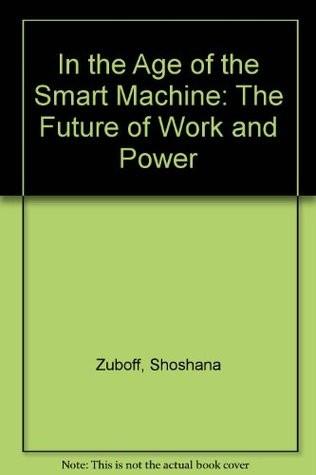
In the Age of the Smart Machine
by
Shoshana Zuboff
Published 14 Apr 1988
Bikson et al., Computer-Mediated Work (Santa Monica, CA: The Rand Corporation, 1985). 7. David Terrie, Senior Office Systems Analyst, International Data Corpora- tion, quoted in IIHow Computers Remake the Manager's Job," Business Week, 25 April 1983, 68-70. 8. U.S. Congress, Office of Technology Assessment, Automation of America's Offices, OTA-CIT -287 (Washington DC: U.S. Government Printing Office, De- cember 1985), 15. 9. Tora K. Bikson and B. A. Gutek, II Advanced Office Systems: An Empirical Look at Utilization and Satisfaction" (Santa Monica, CA: The Rand Corporation, February 1983). 10. U.S. Congress, Office of Technology Assessment, Automation of America's Offices, 307. 11.
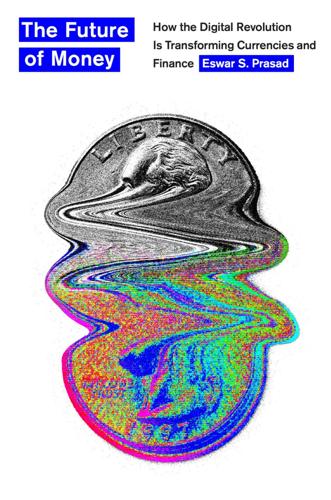
The Future of Money: How the Digital Revolution Is Transforming Currencies and Finance
by
Eswar S. Prasad
Published 27 Sep 2021
A different set of problems is that, even if they cannot guarantee perfect anonymity, cryptocurrencies such as Monero and Zcash might still enable illicit and criminal activities to an extent that is infeasible with cryptocurrencies, such as Bitcoin, that offer weaker pseudonymity. This is a legitimate worry—although a RAND Corporation study in 2020 found little evidence of such behavior, perhaps because these alternatives were technically more complicated and were not in widespread use. The study refers to the “hegemony” of Bitcoin among cryptocurrency users and concludes that “notwithstanding the advent of privacy-preserving cryptocurrencies, criminals engaged in illicit activities are still primarily drawn to Bitcoin due to the structural incentives that the widely-used Bitcoin’s critical mass creates for criminals.”
…
For a more entertaining explanation, see “How to Explain Zero-Knowledge Protocols to Your Children,” Springer-Verlag, http://pages.cs.wisc.edu/~mkowalcz/628.pdf. Some of the technical details about the vulnerabilities of Zcash can be found at “What is Zcash? The Anonymity Loving Currency,” skalex, www.draglet.com/what-is-zcash#security-concerns. The RAND Corporation’s 2020 report Exploring the Use of Zcash Cryptocurrency for Illicit or Criminal Purposes is available at https://www.rand.org/content/dam/rand/pubs/research_reports/RR4400/RR4418/RAND_RR4418.pdf. See also Deutsche Bundesbank Monthly Report, Distributed Ledger Technology in Payments and Securities Settlement: Potential and Risks, September 2017.

Space Odyssey: Stanley Kubrick, Arthur C. Clarke, and the Making of a Masterpiece
by
Michael Benson
Published 2 Apr 2018
The question of how to depict cosmic immensity preoccupied Kubrick, and he devoured the space art illustrations of Chesley Bonestell and Czech artist Luděk PeŠek—which arrived at Central Park West in the form of lavishly illustrated large-format books—as well as hard-core technical reports of the kind produced by the US Air Force–affiliated RAND Corporation think tank, NASA, and the scientific journals. Having learned to use a slide rule and absorbed the basics of the celestial coordinate system from his tutor, Kubrick turned his attention to the nature of infinity. At one point in July, he and Clarke suspended their discussion of plot development to engage in a lengthy exegesis of Cantor’s paradox, which is based on the idea that the number of infinite sizes can itself be infinite.
…
Michael, 125 North, Alex, 391–94 Novros, Lester, 92, 93 Noyes, Eliot, 117, 123–24, 124n, 126 O’Brien, Robert, 85–86, 88, 111, 139–40, 152, 334–36, 335, 338, 357, 389–91, 393, 413, 414, 420 background of, 389–90 at 2001 screening, 409 Odyssey (Homer), 1–3, 10, 51, 68–69, 74, 128n, 147, 214 Of Mice and Men, 210 Oliver Twist, 262 Olivier, Laurence, 355 Ono, Yoko, 247 Oparin, Alexander, 213 Ordway, Fred, 82–85, 92, 94, 95, 97–99, 101–3, 114n, 118, 124–27, 124n, 136, 138, 195, 426 lawsuit of, 407–8 Orff, Carl, 356 Orwell, George, 108 “Out of the Cradle, Endlessly Orbiting” (Clarke), 53–54, 87, 143, 144n Ozu, Yasujirō, 439 Pahnke, Walter, 98–100 Pal, George, 415 paleoanthropology, 10, 231, 264, 265 African Genesis (Ardrey), 71–73, 144–45, 261 Palihakkara, Sheha, 26 Palmquist, Philip, 269 Paramount Pictures, 390 Parker, Charlie, 290 Parys Mountain, 240 Paths of Glory, 4, 184 Pederson, Charlene, 359–60, 361, 383 Pederson, Con, 47, 92–93, 130, 137, 138, 242–43, 260, 319, 321, 322, 323, 340, 351, 365, 393, 403–4, 436 Trumbull and, 403–4 Pereira, Harry, 14–16 Perry, Frank, 90 Pešek, Luděk, 76, 136 Peter Pan, 252 Peterson, Floyd, 374 Pickens, Slim, 268 Pierce, John R., 125 Pike, Kelvin, 153, 161, 172, 179, 180–83, 197, 198, 209, 210, 255, 259, 314 Planetary and Space Science, 19 Planet of the Apes, 316, 423 Pocket Books, 32 Pohlad, Bill, 433 Polanski, Roman, 226, 306–7, 346 Polaris Productions, 25, 32, 34, 44, 52, 58–59, 61, 62, 76, 80, 88, 89, 91, 98, 103–4, 329–30 Ordway and Adams’s lawsuit against, 408 Pollock, Jackson, 347 Portrait of the Artist as a Young Man, A (Joyce), 380 Powell, Aubrey, 143n Powell, Ivor, 153, 159, 160, 201, 217, 225, 322, 380 Powell, Michael, 262 Powers, Stefanie, 160 Preminger, Otto, 140, 159, 190, 191, 243 Pressburger, Emeric, 262 prewar gauze, 381–82 Profiles of the Future (Clarke), 49 Prometheus, 73 Prospect of Immortality, The (Ettinger), 115n psilocybin, 98–99 Psycho, 356 Publishers Weekly, 239–40 Queen Elizabeth, RMS, 397, 405, 406–7 Questar telescope, 27, 29, 46, 56 RAF Spitfire, 117 Raiders of the Lost Ark, 259 Rain, Douglas, 71, 374–78, 399, 442 Ram Dass (Richard Alpert), 98, 99 Ramsey, Clark, 336, 337 RAND Corporation, 76 Randi, James, 415–16 Ran Muthu Duwa, 25, 26 Raven-Hart, R., 17 rear projection, 268 Red Alert (George), 58 Regent’s Park Zoo, 265, 267, 280 Requiem (Ligeti), 9, 360, 361, 363 Residu, 246 Reyes, Benn, 374, 398 Richter, Dan, 246–51, 250, 260–61, 263–68, 279–83, 285–96, 298–303, 305–15, 311, 317, 368, 369, 384, 433 Clarke and, 261, 308 drug habit of, 247, 264, 280–81, 292–94 film credit of, 400–401 as Moonwatcher, 261, 268, 281, 282, 289, 291, 293, 299, 306–15, 311, 401 as Polka Dot Man, 383–86, 387 Richter, Jill, 247, 261, 306 Riordan, Eugene, 126, 127 Road to the Stars, 252 Robards, Jason, 90 Robocop, 423n Rocket Publishing Co., 17, 204 Rolls-Royce Rocket Division, 411 Ross, Alex, 360 Rossiter, Leonard, 139 Rothko, Mark, 347 Royal Albert Hall, 246, 247 Rubinger, Bob, 24–25 Ryan, Robert, 90 Ryder, Winston, 380 Saarinen, Eero, 118 Sagan, Carl, 11, 18–21, 64–66, 84, 213–14, 385 Saint Laurent, Yves, 140 Sands of Mars, The (Clarke), 32 Sarris, Andrew, 419 satellites, 56–57, 125 Saturn, 136–38, 144 Saving Private Ryan, 259 Scheider, Roy, 442 Schurmann, Gerard, 356 science fiction, 8, 19, 28–29, 36–39, 69, 79, 84–86, 94, 108–9, 264–65, 269, 433–34 Scientific American, 344 Scotchlite, 269, 295 Scotland, 243–45, 245, 395, 396 Scott, George C., 90, 186 Séance on a Wet Afternoon, 35 Segal, Mort, 333 Selassie, Haile, 232 Seldes, Gilbert, 35 Sellers, Peter, 41, 43, 262, 315, 433 “Sentinel, The” (Clarke), 20–21, 22, 30, 31, 44, 48, 53, 54, 88, 89, 102 Serendib, 26 SETI (Search for Extraterrestrial Intelligence), 19 Seventh Seal, The, 200 Shadow on the Sun, 37, 38, 44, 45, 48, 139 Shapiro, Michael, 422 Shapley, Harlow, 69 Shaw, Artie, 35, 38, 62 Shaw, Robert, 90, 91 Shay, Don, 343–44 Shepperton Studios, 111–12, 147–50, 151–57, 153 flies and bats at, 156, 157 Shining, The, 175, 438 Shrimpton, Jean, 284 Sight & Sound, 438–49 Silence, The, 35 Silent World, The (Cousteau), 21 Silverstein, Maurice, 409, 420 Simpson, Roy, 279–82, 292–94 Simpsons, The, 433 Singer, Alexander, 35 Skeleton Coast, 271 Skinner, B.
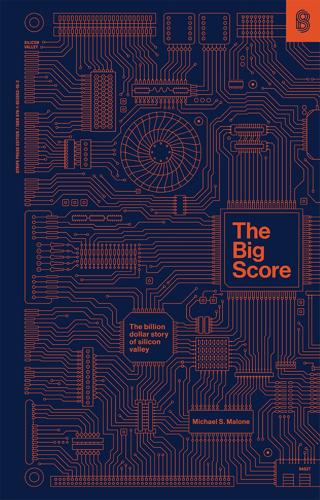
The Big Score
by
Michael S. Malone
Published 20 Jul 2021
But I don’t have that excuse. In late 1969, as a high school sophomore, I visited Xerox’s Palo Alto Research Center. There, I had the opportunity to play on a new terminal-based information transfer system called ARPANET—the internet’s precursor. Using a technology called “packet switching” designed by Paul Baran of the Rand Corporation, ARPANET was designed to link together various government laboratories and academic institutions to essentially send email. I found it overly complex and boring. I didn’t give it a second thought. Even years later, as a cub reporter on the Silicon Valley beat at the San Jose Mercury-News, when I was actually using the pre-web internet, I still didn’t see it as the Next Big Thing.
…
Despite a relatively parochial career, Hewlett also gathered a distinguished list of awards and credentials, including honorary degrees from Berkeley, Yale, and Notre Dame, among others, and seats on the boards of Chrysler and Chase Manhattan Bank. Where Packard’s activities were political, Hewlett’s were in technology, and ironically, given his scholastic record, in education. He was a member of the National Academy of Sciences, a fellow of the American Academy of Arts and Sciences, a trustee of the RAND Corporation, and (for 11 years) a trustee of Stanford University. In 1954, Hewlett was president of the Institute of Radio Engineers (now the Institute of Electrical and Electronic Engineers), only the second Westerner to attain that distinction—the first being Fredrick Terman. The loyalty of Hewlett and Packard to Terman is one of the most moving episodes in the Silicon Valley story.
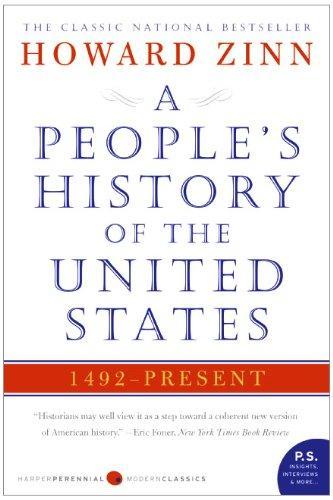
A People's History of the United States
by
Howard Zinn
Published 2 Jan 1977
As the war became more and more unpopular, people in or close to the government began to break out of the circle of assent. The most dramatic instance was the case of Daniel Ellsberg. Ellsberg was a Harvard-trained economist, a former marine officer, employed by the RAND Corporation, which did special, often secret research for the U.S. government. Ellsberg helped write the Department of Defense history of the war in Vietnam, and then decided to make the top-secret document public, with the aid of his friend, Anthony Russo, a former RAND Corporation man. The two had met in Saigon, where both had been affected, in different experiences, by direct sight of the war, and had become powerfully indignant at what the United States was doing to the people of Vietnam.
…
It was totally useless except in a nuclear war, in which case it would only add several hundred warheads to the tens of thousands already available. That $1.5 billion was enough to finance a five-year program of child immunization around the world against deadly diseases, and prevent five million deaths (Ruth Sivard, World Military and Social Expenditures 1987–1988). In the mid-1980s, an analyst with the Rand Corporation, which did research for the Defense Department, told an interviewer in an unusually candid statement, that the enormous number of weapons was unnecessary from a military point of view, but were useful to convey a certain image at home and abroad: If you had a strong president, a strong secretary of defense they could temporarily go to Congress and say, “We’re only going to build what we need. . . .
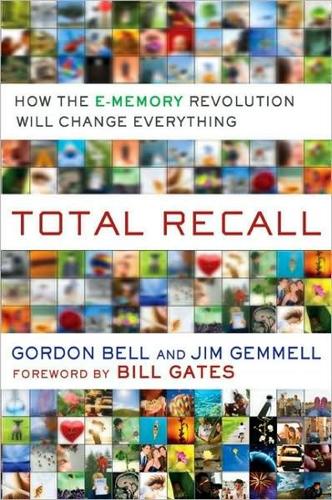
Total Recall: How the E-Memory Revolution Will Change Everything
by
Gordon Bell
and
Jim Gemmell
Published 15 Feb 2009
See computing power product keys profile data Project Anvil Project Gutenberg projectors psychological implications of lifelogging public spaces publishing Puffer, Bob Pulse Pen Pulse Smartpen Q quantitative analysis Questia Quicken Quicken Health R radio broadcasts Ramin, Cathryn Jakobson RAND Corporation Rank Xerox EuroParc reality television recall of data recording technology . See also audio recordings and files recycling Red Dwarf (television) Reddy, Raj Remembrance Agent reminders remote servers. See also cloud computing repair services repetition replication of data repressed memories reputation reQall and cell phone logs described as memory aid and MyLifeBits and note taking and storytelling research Rhodes, Bradley Rimmer, Arnold The Road Ahead (Gates) Roy, Deb Rozycki, Vicki RSS news feeds S Safire, William Samsung San Diego County Medical Society Foundation The San Diego Union-Tribune San Jose Sharks Santa Barbara County Sawyer, Robert J.
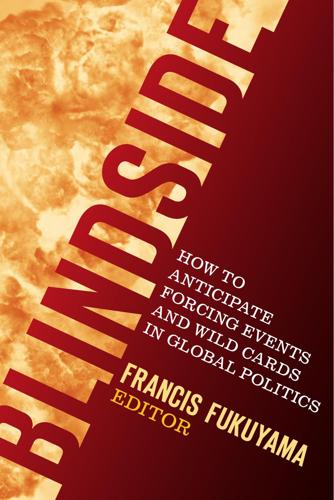
Blindside: How to Anticipate Forcing Events and Wild Cards in Global Politics
by
Francis Fukuyama
Published 27 Aug 2007
Josef Joffe is a member of the executive committee of The American Interest and editor of Die Zeit. Anne Korin is with the Institute for the Analysis of Global Security. 181 2990-7 ch16 notes contribs 7/23/07 12:17 PM Page 182 182 contributors James Kurth is with Swarthmore College. David Landes is an emeritus professor of Harvard University. Robert Lempert is with the RAND Corporation. Bernard-Henri Lévy is an independent journalist and a member of the editorial board of The American Interest. Gal Luft is with the Institute for the Analysis of Global Security. Walter Russell Mead is with the Council on Foreign Relations. Richard A. Posner is with the University of Chicago School of Law.
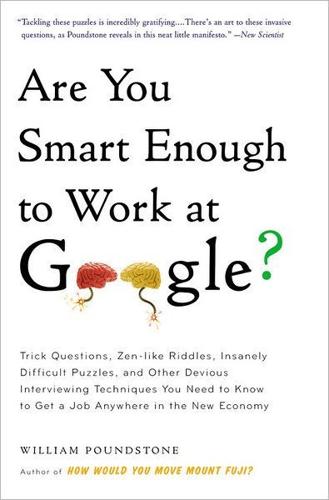
Are You Smart Enough to Work at Google?: Trick Questions, Zen-Like Riddles, Insanely Difficult Puzzles, and Other Devious Interviewing Techniques You ... Know to Get a Job Anywhere in the New Economy
by
William Poundstone
Published 4 Jan 2012
This time he can get out on land if desired. Finally, man and lion return to the far shore. That’s every mammal across in five and a half round-trips. This puzzle is a politically correct update of one that played a role in early artificial intelligence research. In 1957, Allen Newell and J. Clifford Shaw of the Rand Corporation and Herbert Simon of the Carnegie Institute of Technology unveiled the General Problem Solver, one of the first AI problems. Its creators had asked people to solve logic puzzles while narrating their reasoning. The computer scientists then boiled down the techniques and coded them into the General Problem Solver.

Whiplash: How to Survive Our Faster Future
by
Joi Ito
and
Jeff Howe
Published 6 Dec 2016
Marsh et al., “The Power of Positive Deviance,” BMJ 329, no. 7475 (November 11, 2004): 1177–79, doi:10.1136/bmj.329.7475.1177. 12 Tina Rosenberg, “When Deviants Do Good,” New York Times, February 27, 2013, http://opinionator.blogs.nytimes.com/2013/02/27/when-deviants-do-good/. 13 David Dorsey, “Positive Deviant,” Fast Company, November 30, 2000, http://www.fastcompany.com/42075/positive-deviant. 14 “Austin Hill—Venture Partner @ Montreal Start Up,” CrunchBase, accessed May 30, 2016, https://www.crunchbase.com/person/austin-hill#/entity. 15 Mathew Ingram, “Austin Hill, Internet Freedom Fighter,” The Globe and Mail, October 4, 1999. 16 Joseph Czikk, “‘A Straight Out Scam’: Montreal Angel Austin Hill Recounts First Business at FailCampMTL,” Betakit, February 25, 2014, http://www.betakit.com/montreal-angel-austin-hill-failed-spectacularly-before-later-success/ 17 Konrad Yakabuski, “Future Tech: On Guard,” Globe and Mail, August 25, 2000, sec. Metro. 18 David Kalish, “Privacy Software Reason for Concern,” Austin American-Statesman, December 14, 1999. 19 Developed by Merrill Flood and Melvin Dresher at the RAND Corporation in 1950, and formalized by Princeton mathematician Albert W. Tucker, the prisoner’s dilemma describes a situation in which two participants must make a decision without consulting each other, but knowing that the outcome of the scenario depends partially on the other participant’s decision. The classic example is that of two prisoners who have been offered a chance to confess.
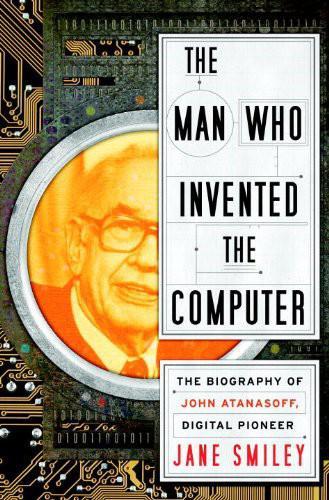
The Man Who Invented the Computer
by
Jane Smiley
Published 18 Oct 2010
The man who invented the computer : the biography of John Atanasoff, digital pioneer / Jane Smiley.—1st ed. p. cm. 1. Atanasoff, John V. (John Vincent) 2. Computer scientists—United States—Biography. 3. Inventors—United States—Biography. 4. Physicists—Iowa—Biography. 5. College teachers—Iowa—Biography. 6. Electronic digital computers—History—20th century. 7. Sperry Rand Corporation—History—20th century. 8. Patients—United States—History—20th century. 9. Intellectual property—United States—History—20th century. I. Title. QA76.2.A75S64 2010 004.092—dc22 [B] 2010018887 eISBN: 978-0-385-53372-0 v3.1 Mathematical reasoning may be regarded rather schematically as the exercise of a combination of two faculties, which we may call intuition and ingenuity.

The Economic Singularity: Artificial Intelligence and the Death of Capitalism
by
Calum Chace
Published 17 Jul 2016
[cccliv] Planning We don’t have sufficient information to draw up detailed plans for the way we would like our economies and societies to evolve. But we can, and probably should, be doing detailed scenario planning. Scenario planning has been practised by military leaders since time immemorial. It was given the name by Herman Kahn, who wrote narratives about possible futures for the US military while working for the RAND Corporation in the 1950s. (His suggestion that a nuclear war might be both winnable and survivable made him one of the inspirations for Dr Strangelove in the classic 1964 movie.[ccclv]) Scenario planning was adopted by Shell Oil after it (along with the rest of the industry) was disastrously wrong-footed by the rise of the oil cartel OPEC in the 1970s.

Start With Why: How Great Leaders Inspire Everyone to Take Action
by
Simon Sinek
Published 29 Oct 2009
From members of Congress to foreign ambassadors, from small businesses to corporations Microsoft and Wal-Mart, from Hollywood to NASA to the Pentagon, those who want to inspire people want to learn about the WHY. His TEDx Talk about WHY is one of the top twenty most viewed talks on TED.com. Sinek is also an adjunct staff member of the RAND Corporation, teaches graduate level strategic communications at Columbia University, and is active in the arts and not-for-profit world. When not living in hotels, he lives in New York City. PORTFOLIO / PENGUIN Published by the Penguin Group Penguin Group (USA) Inc., 375 Hudson Street, New York, New York 10014, U.S.A.
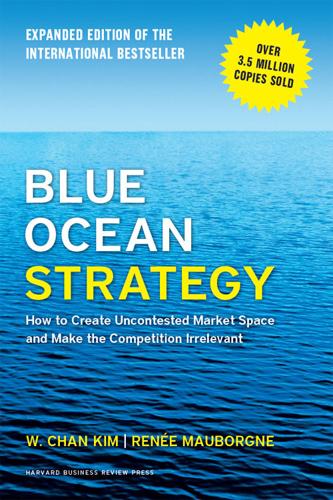
Blue Ocean Strategy, Expanded Edition: How to Create Uncontested Market Space and Make the Competition Irrelevant
by
W. Chan Kim
and
Renée A. Mauborgne
Published 20 Jan 2014
Balmer, J. 2001. “The New Jet Set.” Barron’s, November 19. Bettis, Richard A., and Howard Thomas, eds. 1990. Risk, Strategy, and Management. Greenwich, CT: JAI Press Inc. Birkler, J., et al. 2001. “Assessing Competitive Strategies for the Joint Strike Fighter: Opportunities and Options.” Santa Monica, CA: Rand Corporation. Blau, P. M. 1964. Exchange and Power in Social Life. New York: Wiley. Borzak, L., ed. 1981. Field Study: A Source Book for Experiential Learning. Beverly Hills, CA: Sage Publications. Breen, Bill. 2002. “High Stakes, Big Bets.” Fast Company, April. Chandler, Alfred. 1962. Strategy and Structure: Chapters in the History of the Industrial Enterprise.
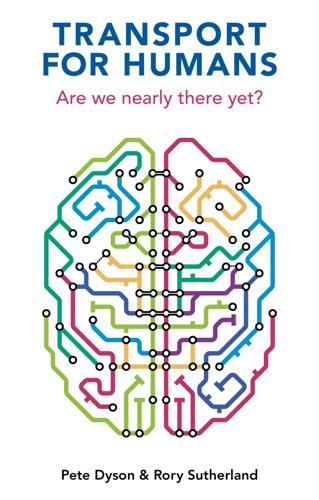
Transport for Humans: Are We Nearly There Yet?
by
Pete Dyson
and
Rory Sutherland
Published 15 Jan 2021
Is groupthink more or less common when we are not physically in a group? Are grievances quashed or more easily aired? Videoconferencing and online interaction means we can apply a group decision-making method with significant power and evidence of success. The Delphi Method, which takes its name from the Greek Oracle of Delphi, was developed by the RAND Corporation in the 1950s.39 It involves treating group members as expert panellists, where each person submits their opinions and reasons anonymously and independently before the discussion is opened up to structured deliberation. Further rounds of submission and debate are hosted by a chair. It is well suited to a process in which we are physically distant.
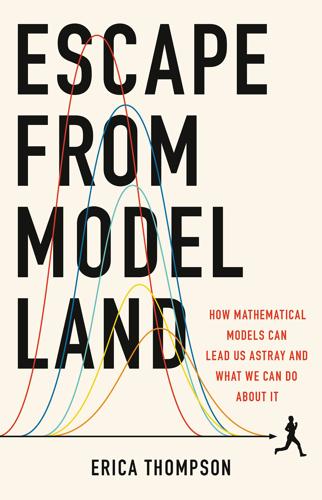
Escape From Model Land: How Mathematical Models Can Lead Us Astray and What We Can Do About It
by
Erica Thompson
Published 6 Dec 2022
The common theme in these cases is taking action to reduce risk which is not optimised to a perfect model prediction of the future (although most strategies do, as you would expect, benefit from having better information). There is a literature on robust decision-making that considers these kinds of trade-offs and alternative strategies in the absence of perfect model information. As RAND Corporation scientist and IPCC author Rob Lempert argues: Rather than relying on improved point forecasts or probabilistic predictions, robust decision making embraces many plausible futures, then helps analysts and decision makers identify near-term actions that are robust across a very wide range of futures – that is, actions that promise to do a reasonable job of achieving the decision makers’ goals compared to the alternative options, no matter what future comes to pass.
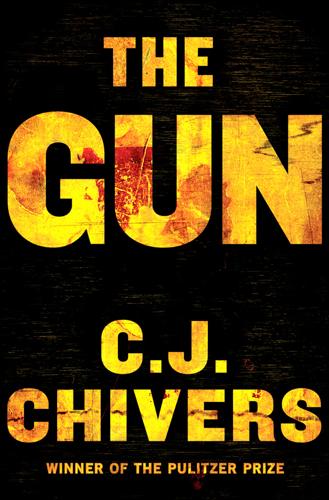
The Gun
by
C. J. Chivers
Published 12 Oct 2010
An account of the M-16’s ascension from California curio to the American military’s standard firearm could begin in many places, but the conditions that gave the process its velocity began with the inauguration of President John F. Kennedy in 1961. Kennedy brought with him Robert S. McNamara as secretary of defense. McNamara was a graduate of Harvard Business School, a former top executive at Ford, and a believer in an approach to decision-making called “systems analysis,” which had been conceived in the 1950s at the Rand Corporation. Systems analysis centered on intensive study of problems and options, with examinations of costs, benefits, and risks of potential decisions. Its introduction to the Pentagon, along with a cadre of McNamara’s disciples, who called themselves the whiz kids, was a frontal challenge to the military establishment.
…
D., 360 Philadelphia Polyclinic Hospital, 230 Philippines, 355, 384 U.S. invasion of, 104, 111, 252 Pinchback, Pinckney, 106 PK (Pulemyot Kalashnikova), 16, 166n, 243–44, 436n PLO, 10 PMKM, 16 Poland, 166, 174, 214–15, 348, 399 and AK and AK-type rifle production and distribution, 12–13, 16, 215, 245, 249–50, 390–91 popular uprisings in, 224, 365 Pol Pot, 11 Polte, 162–63 Popular Mechanics, 330 Port Arthur, battle for, 113–16, 122–23, 252 Poznań, popular uprising in, 223 PPSh, 187, 199 AK-type rifle distribution and, 346 in Hungarian revolution, 219 production and distribution of, 168–69, 182, 185, 217, 219, 346, 357 in World War II, 182, 185 Prague, 220, 348 Prague Spring, 348 Pratt & Whitney, 66 Pravda, 237, 239 Pripyat, 359–60 propellants: ball powder and, 293–94, 297, 301, 303–4, 316, 326 smokeless, 74, 92, 122, 135, 196 Prussians, Prussia: in Franco-Prussian War, 44–46, 53–55, 65, 110 Gatling gun test in, 42–43 Krupp field pieces of, 45 mitrailleurs and, 43–46 Puckle, James, 27–28, 38, 390 Pulemyot Kalashnikova (PK), 16, 166n, 243–44, 436n Purdy, Patrick, 14 Putin, Vladimir V., 403–4 Quaku, Sein, 48 Quang Tri province, 263, 333 racism, 105–6, 425n–27n Radom, 399 Rahim, Muhammed, 48–49 Rákóczi Square murder, 227, 240–41 Rákosi, Mátyás, 221–22 Rand Corporation, 271 Raphael Repeater, 36 rapid-fire flintlocks, 27–28 Ras Alula, 81–82 Rattray, George, 86 Raymond, Henry Jarvis, 32 RDS-1, 1–2, 5, 407 Red Horse, 60 Remington rifles, 79, 293 Remington rounds, 276 Reno, Marcus A., 58–59, 61 Requa gun, 28, 36 Research and Proving Grounds for Fire-arms and Mortars, see NIPSMVO Research in Small Arms in International Security, 363 Revolutionary Armed Force of Colombia (FARC), 384 Revolutionary War, 311 Rheinmetall-Borsig, 246 Rhodes, Boatswain’s Mate, 80 “Rifle, 5.56MM,XM16E1” (Rottmann), 263 Rifle Testing Commission, German, 139 Riga, 220, 365 Ripley, James W., 36, 37 Gatling gun sales and, 32, 91 in standardizing Union Army’s weapons, 32–33, 419n Ripley gun, 28–29 Rivers, L.

The Pot Book: A Complete Guide to Cannabis
by
Julie Holland
Published 22 Sep 2010
THE GATEWAY THEORY*31 The “gateway” theory suggests that marijuana use inevitably leads to the use of harder drugs, such as cocaine and heroin (Kandel 1975; Gabany and Plummer 1990). However, population data compiled by the National Survey on Drug Use and Health et al. demonstrate that the vast majority of marijuana users do not progress to more dangerous drugs (Zimmer and Morgan 1997; Brown and Horowitz 1993; SAMHA 2006; RAND Corporation 2002). The gateway theory was also refuted by the Institute of Medicine and in a study published in the American Journal of Public Health (Joy, Benson, and Watson 1999; Golub and Johnson 2001). The overwhelming majority of marijuana users never try any other illicit substance (Advisory Council on the Misuse of Drugs 2002).
…
Amyotrophic Lateral Sclerosis and Other Motor Neuron Disorders 5 (2004): 33–39. Ramirez, B. G., C. Blázquez, T. Gómez del Pulgar, et al. “Prevention of Alzheimer’s Disease Pathology by Cannabinoids.” Journal of Neuroscience 25 (2005): 1904–13. Ranalli, P., ed. Advances in Hemp Research. Binghamton, NY: Haworth Press, 1999. RAND Corporation. “RAND Study Casts Doubt on Claims that Marijuana Acts as a ‘Gateway’ to the Use of Cocaine and Heroin” (December 2, 2002): www.rand.org/news/press.02/gateway.html. Accessed May 7, 2010. Rätsch, C. Marijuana Medicine. Rochester, VT: Healing Arts Press, 2001. Recht, L. D., R. Salmonsen, R.
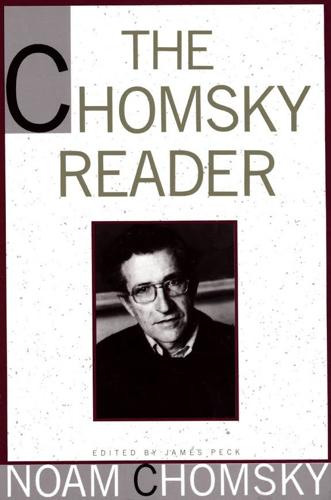
The Chomsky Reader
by
Noam Chomsky
Published 11 Sep 1987
The peace would be kept by peoples who lived in their own way and were not ambitious. Our power placed us above the rest. We were like rich men dwelling at peace within their habitations.” For a translation of Churchill’s biblical rhetoric into the jargon of contemporary social science, one may turn to the testimony of Charles Wolf, senior economist of the RAND Corporation, at the congressional committee hearings cited earlier: I am dubious that China’s fears of encirclement are going to be abated, eased, relaxed in the long-term future. But I would hope that what we do in Southeast Asia would help to develop within the Chinese body politic more of a realism and willingness to live with this fear than to indulge it by support for liberation movements, which admittedly depend on a great deal more than external support … the operational question for American foreign policy is not whether that fear can be eliminated or substantially alleviated, but whether China can be faced with a structure of incentives, of penalties and rewards, of inducements that will make it willing to live with this fear.
…
George Smith, a special forces sergeant captured by the NLF, reports B-52 raids (in Cambodia, he believes), along with constant and heavy bombing with napalm and high explosives in the free-fire zone where his camp was located, the latter from December 1964 (P.O. W.: Two Years with the Viet Cong [Berkeley, Calif.: Ramparts Press, 1971]). Of course, the bombers were no more able to avoid villages than his POW camp. See also Anthony Russo, “Inside the RAND Corporation and Out: My Story,” Ramparts, April 1972, on the effects of B-52 raids, as determined from refugee interviews. 16. Bernard Fall, “Vietcong—the Unseen Enemy in Vietnam,” New Society, April 22, 1965, reprinted in Bernard Fall and Marcus G. Raskin, eds., The Vietnam Reader (New York: Vintage Books, 1965), p. 261. 17.

The Code: Silicon Valley and the Remaking of America
by
Margaret O'Mara
Published 8 Jul 2019
Reporters, desperate to inject some humor into the grim situation, dubbed the pooch “Muttnik.”)2 Then, landing with a thunk on the president’s desk a matter of days later, came the report of a civilian panel commissioned by Eisenhower earlier in the year to assess the nation’s ability to withstand a Soviet nuclear attack. The committee, chaired by San Francisco attorney and RAND Corporation co-founder H. Rowan Gaither, had very bad news. Despite the billions spent by the Americans on ballistic missile development since the start of the 1950s, despite the money poured into Eisenhower’s “New Look” military, they’d been outpaced. Despite having a far smaller economy, the Soviets had spent about as much.
…
Ross, 39, 58, 215, 228, 268–69, 292–93, 336, 387 Personal Computing, 2–3 Personal Computing Expo, 140 Personal Electronic Transactor (PET), 157, 182, 183 Personal Software, 240–41 Pets.com, 360, 361 Polaris, 37 Polese, Kim, 306, 307, 348 Pong, 106–8, 139 Popular Electronics, 113, 115, 135, 136, 144–46 Porat, Dan, 317 Porat, Marc, 317 Porat, Ruth, 317, 393 Portola Institute, 118, 128 Prime Computer, 55 Privacy Act, 124 Processor Technology (Proc Tech), 144–46 Prodigy, 63, 255, 287, 306 Progress & Freedom Foundation (PFF), 323–27 Proposition 13, 170, 217, 332 Proposition 211, 334–37 Putin, Vladimir, 403 Quattrone, Frank, 317 Quist, George, 74, 88 Rabois, Keith, 253–54 Radio-Electronics, 131, 154 Radio Shack, 157, 182, 187–88 Ramo, Simon, 63 Rand, Paul, 267 RAND Corporation, 44, 65, 124 Raymond, Eric, 155 Raytheon, 20, 39, 67, 110, 384 Reagan, Ronald, 3–5, 109, 112, 142, 160, 164, 168, 191, 193–98, 211, 213–15, 217, 219, 222–24, 227, 243, 246–56, 259, 260, 262, 263, 270, 287, 293, 295, 311, 351, 388 Reback, Gary, 342–45 Reddit, 368, 374 Regis McKenna Inc.

A World in Disarray: American Foreign Policy and the Crisis of the Old Order
by
Richard Haass
Published 10 Jan 2017
For background, see Avner Cohen, Israel and the Bomb (New York: Columbia University Press, 1998). 12. For background, see George Perkovich, India’s Nuclear Bomb: The Impact on Global Proliferation (Berkeley: University of California Press, 1999); Ashley J. Tellis, India’s Emerging Nuclear Posture: Between Recessed Deterrent and Ready Arsenal (Santa Monica, CA: Rand Corporation, 2001); and Jasjit Singh, ed., Nuclear India (New Delhi: Knowledge World, 1998). 13. “Report by the Director General on the Implementation of the Resolution Adopted by the Board on 25 February 1993 (GOV/2636) and of the Agreement Between the Agency and the Democratic People’s Republic of Korea for the Application of Safeguards in Connection with the Treaty on the Non-Proliferation of Nuclear Weapons (INFCIRC/403),” April 1, 1993, International Atomic Energy Agency Board of Governors, www.securitycouncilreport.org/atf/cf/%7B65BFCF9B-6D27-4E9C-8CD3-CF6E4FF96FF9%7D/Disarm%20GOV2645.pdf. 14.
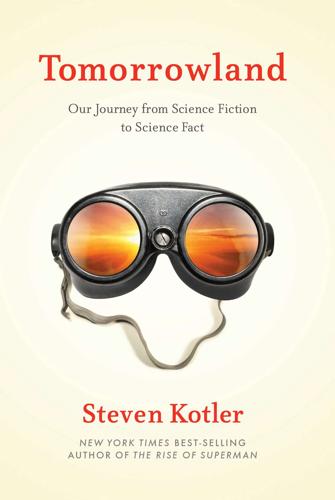
Tomorrowland: Our Journey From Science Fiction to Science Fact
by
Steven Kotler
Published 11 May 2015
While Aum did manage to cause considerable harm, its attempts to unleash mass destruction, thankfully, never came to fruition. “Aum’s failure suggests that it may, in fact, be far more difficult to carry out a deadly bioterrorism attack than has sometimes been portrayed by government officials and the press,” wrote William Rosenau, a Rand Corporation analyst, in a 2001 article for Studies in Conflict and Terrorism. “Despite its significant financial resources, dedicated personnel, motivation, and freedom from the scrutiny of the Japanese authorities, Aum was unable to achieve its objectives.” That was then. Now, two trends have changed the game.
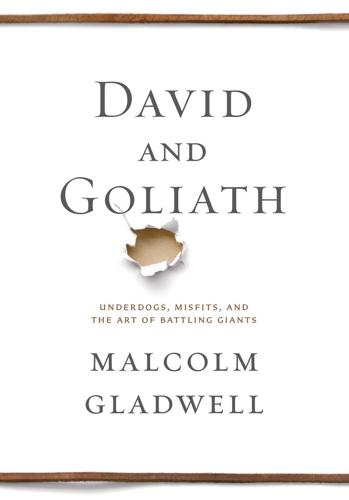
David and Goliath: Underdogs, Misfits, and the Art of Battling Giants
by
Malcolm Gladwell
Published 30 Sep 2013
And he was one hundred percent right. They turned on us. And the curfew was the start of it.” 2. The same year that Northern Ireland descended into chaos, two economists—Nathan Leites and Charles Wolf Jr.—wrote a report about how to deal with insurgencies. Leites and Wolf worked for the RAND Corporation, the prestigious think tank started after the Second World War by the Pentagon. Their report was called Rebellion and Authority. In those years, when the world was exploding in violence, everyone read Leites and Wolf. Rebellion and Authority became the blueprint for the war in Vietnam, and for how police departments dealt with civil unrest, and for how governments coped with terrorism.
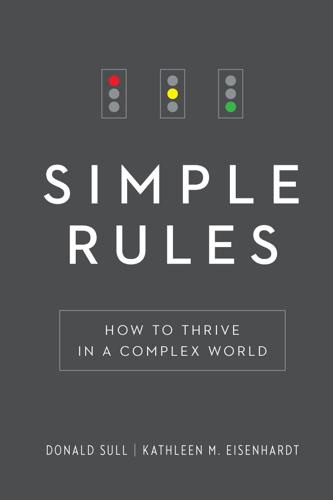
Simple Rules: How to Thrive in a Complex World
by
Donald Sull
and
Kathleen M. Eisenhardt
Published 20 Apr 2015
The returns from the complicated models, unimpressive as they are, still overstate the returns investors could expect in the real world, because they exclude the fees that asset managers might charge for active management. One surprising follower of the 1/N rule is Markowitz himself. While working at the Rand Corporation, Markowitz had to allocate his retirement fund across investment opportunities. According to his own theory, he should have calculated the correlations between different asset classes to draw an efficient frontier and rank the asset classes accordingly. Instead, as he later confessed to a financial journalist, he allocated his retirement funds evenly between stocks and bonds and called it a day.
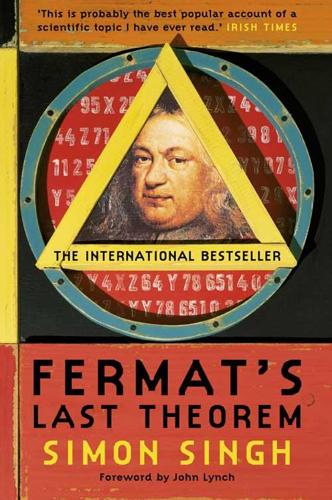
Fermat’s Last Theorem
by
Simon Singh
Published 1 Jan 1997
In 1944 John von Neumann co-wrote the book The Theory of Games and Economic Behavior, in which he coined the term game theory. Game theory was von Neumann’s attempt to use mathematics to describe the structure of games and how humans play them. He began by studying chess and poker, and then went on to try and model more sophisticated games such as economics. After the Second World War the RAND corporation realised the potential of von Neumann’s ideas and hired him to work on developing Cold War strategies. From that point on, mathematical game theory has become a basic tool for generals to test their military-strategies by treating battles as complex games of chess. A simple illustration of the application of game theory in battles is the story of the truel.
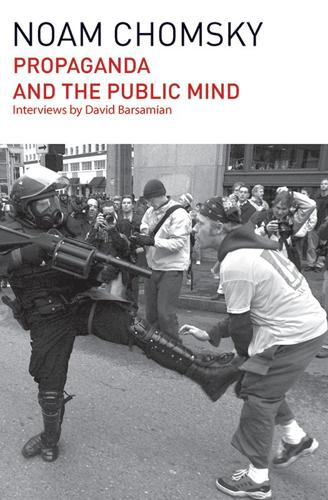
Propaganda and the Public Mind
by
Noam Chomsky
and
David Barsamian
Published 31 Mar 2015
So when this new appropriation was passed, there was an amendment proposed by Nancy Pelosi, a representative from California, that some of the money be used for rehabilitation programs here. It was voted down. The Clinton administration has also rejected any emphasis on such programs, though it is well known that they are much more effective than criminalizing drugs, and far more than source-country control, the U.S. Plan Colombia. A famous Rand Corporation study found that rehabilitation programs are seven times as cost-effective as criminalization, eleven times as effective as border interdiction, and twenty-three times as effective as source-country control.51 But that’s not what’s wanted. Policymakers want harsh punitive measures at home, and military helicopters and crop destruction abroad.
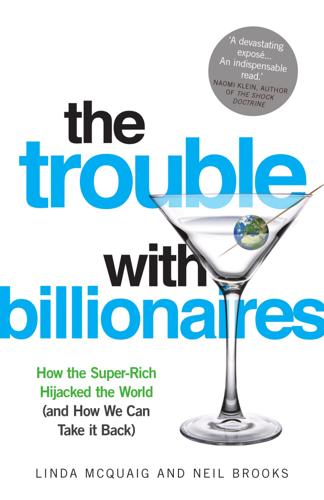
The Trouble With Billionaires
by
Linda McQuaig
Published 1 May 2013
For that matter, virtually all the early research leading to the development of the personal computer was paid for from the public purse – from Engelbart’s Augmenting Human Intellect project, funded by the US Air Force, to a whole range of path-breaking government-sponsored computing projects in the 1940s and ’50s, including those at Harvard, MIT, the University of Illinois, the Rand Corporation, the Los Alamos Laboratories, the Stanford Research Institute and the Office of Naval Research.18 More broadly, of course, massive government funding of public education makes possible the advanced society we live in, in which people are literate enough to be able to use a computer. And without government funding of police and fire departments as well as roads and the whole urban infrastructure, our sophisticated economy in which citizens can afford to buy personal computers would not exist.

The Internet Is Not the Answer
by
Andrew Keen
Published 5 Jan 2015
On August 17, 1961, the Berlin Wall, the Cold War’s most graphic image of the division between East and West, was constructed overnight by the German Democratic Republic’s communist regime. In 1962, the Cuban Missile Crisis sparked a terrifying contest of nuclear brinksmanship between Kennedy and Khrushchev. Nuclear war, once unthinkable, was being reimagined as a logistical challenge by game theorists at military research institutes like the RAND Corporation, the Santa Monica, California–based think tank set up by the US Air Force in 1964 to “provide intellectual muscle”23 for American nuclear planners. By the late 1950s, as the United States developed hair-trigger nuclear arsenals that could be launched in a matter of minutes, it was becoming clear that one of the weakest links in the American military system lay with its long-distance communications network.

CultureShock! Egypt: A Survival Guide to Customs and Etiquette (4th Edition)
by
Susan L. Wilson
Published 20 Dec 2011
These ‘new’ attacks target Egypt’s US$6 billion tourism industry, Egypt’s leading source of hard currency. On 7 October 2004, in a co-ordinated attack, three bombs went off almost simultaneously in the Sinai Peninsula resorts of Taba and Ras al-Shitan killing 34 and wounding upwards of 100 individuals. According to RAND Corporation information reported by MIPT TKB: ‘investigators believe the attacks were motivated by the deterioration of the Palestinian situation, rather than the global jihad. Multiple groups claimed responsibility for the attacks, though none were ever substantiated’. One group that claimed A Tour of Egypt 53 responsibility was the Battalion of the Martyr Abdullah Azzam, which also has other aliases such as Al-Qaeda in the Levant and Egypt, and Al-Qaida in Syria and Egypt.
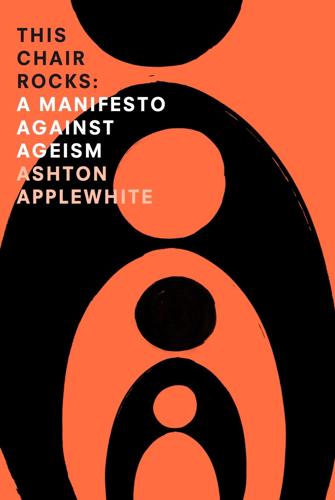
This Chair Rocks: A Manifiesto Against Ageism
by
Ashton Applewhite
Published 10 Feb 2016
Describing “a new stage of human history,” Linda Fried, Dean of Columbia University’s Mailman School of Public Health, referred to “the only natural resource that’s actually increasing: the social capital of millions more healthy, well-educated adults.” A growing body of knowledge from very different schools of thought—including the Rand Corporation and Chicago, Belfast, Harvard, and Yale Universities—now acknowledges that health, along with the longevity it brings, are important economic drivers that generate wealth, by affecting health care costs, labor-force participation rates (given the appropriate incentives), worker productivity, and the financing of pension systems.9 Yet there’s more hand-wringing than back-patting going on A little less worried about the tug of time on your own prospects?

The New Class Conflict
by
Joel Kotkin
Published 31 Aug 2014
Nathan Jurgenson, “Silicon Valley’s Anti-Capitalism-Capitalism,” The Society Pages, May 21, 2013, http://thesocietypages.org/cyborgology/2013/05/21/silicon-valleys-anti-capitalism-capitalism. 50. Bell, The Coming of Post-Industrial Society, p. 427. 51. Matthew Sparkes, “Young Users See Facebook as ‘Dead and Buried,’” Telegraph (UK), December 27, 2013. 52. W. H. Ware, “Future Computer Technology and Its Impact,” paper, Rand Corporation, March 1966; David Colker, “Willis Ware Dies at 93; Pioneer Predicted the Rise of the Computer,” Los Angeles Times, November 29, 2013. 53. Castells, The Information Age, pp. 300–1. 54. Jaron Lanier, Who Owns the Future? (New York: Simon and Shuster, 2013), p. 1. 55. Todd Woody, “Need to Finance a Big Solar Project?

Lab Rats: How Silicon Valley Made Work Miserable for the Rest of Us
by
Dan Lyons
Published 22 Oct 2018
Bullying has become as big a problem for adults at work as it is for kids at school and “is clearly an epidemic,” says Gary Namie, a psychologist who conducted a 2014 survey in which 27 percent of respondents said they had been bullied at work and another 37 percent said they had witnessed it happening to a co-worker. The stress of being bullied can cause a host of physical ailments and even brain damage, Namie says. In 2017, researchers from RAND Corporation and Harvard Medical School surveyed three thousand workers and were taken aback to find that one in five reported facing verbal abuse, threats, humiliation, or unwanted sexual advances—on a monthly basis. “I was not expecting to see numbers that high,” says Nicole Maestas, an associate professor of health-care policy at Harvard Medical School, who worked on the report.
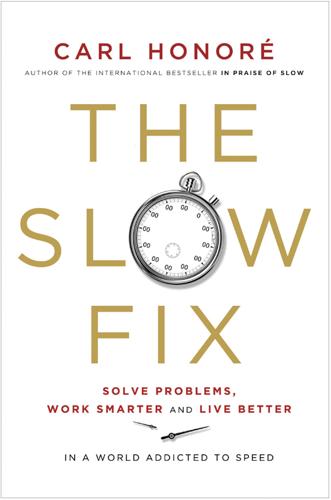
The Slow Fix: Solve Problems, Work Smarter, and Live Better in a World Addicted to Speed
by
Carl Honore
Published 29 Jan 2013
Nearly two million Americans abuse prescription drugs: From the 2010 National Survey on Drug Use and Health from the Office of Applied Studies. More than a million hospitalised every year: From a 2009 report by the National Institute on Drug Abuse (NIDA). New York City linked teacher pay to pupil performance: From A Big Apple for Educators, a 2011 report from Rand Corporation. Downsizing is negative: Franco Gandolfi, “Unravelling Downsizing – What Do We Know about the Phenomenon?” Review of International Comparative Management, Volume 10, Issue 3 (July 2009). Football management as a revolving door: Annual figures compiled in 2012 by Sue Bridgewater of Warwick Business School for the League Managers Association.

The Wisdom of Psychopaths: What Saints, Spies, and Serial Killers Can Teach Us About Success
by
Kevin Dutton
Published 15 Oct 2012
Ponce de León, Bernard Vandermeersch, and François Lévêque, “Evidence for Interpersonal Violence in the St. Césaire Neanderthal,” PNAS 99, no. 9 (2002): 6444–48, doi:10.1073/pnas.082111899. 12 the whole purpose of the Prisoner’s Dilemma … The Prisoner’s Dilemma was originally conceived at the RAND Corporation in 1950 by the mathematicians Merrill Flood and Melvin Dresher. Later that same year, the game was first formulated with prison-sentence payoffs by Albert Tucker and given its official title. 13 Instead, the screen of life is densely populated with millions upon millions of individual pixels … In a world of “repeated interaction” (such as everyday life), a psychopathic strategy does indeed have its shortcomings.
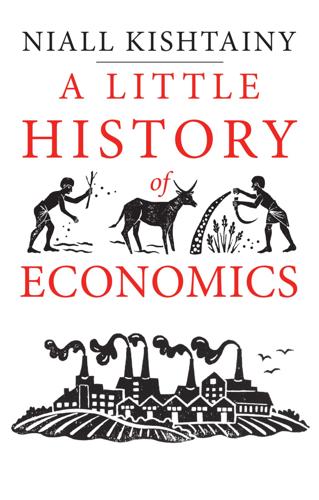
A Little History of Economics
by
Niall Kishtainy
Published 15 Jan 2017
(i), (ii) Kerala (India) (i) Keynes, John Maynard (i), (ii), (iii), (iv), (v), (vi) Keynesian theory (i), (ii), (iii) Klemperer, Paul (i) Krugman, Paul (i), (ii) Kydland, Finn (i), (ii) labour (i) in ancient Greece (i) and market clearing (i) women as unpaid (i) labour theory of value (i), (ii) laissez-faire (i) landowners (i), (ii), (iii) Lange, Oskar (i) law of demand (i), (ii) leakage of spending (i) Lehman Brothers (i) leisure class (i) leisured, women as (i) Lenin, Vladimir Ilyich (i), (ii) Lerner, Abba (i) Lewis, Arthur (i) Lincoln, Abraham (i) List, Friedrich (i) loss aversion (i) Lucas, Robert (i), (ii) MacKay, Charles (i) Macmillan, Harold (i) macro/microeconomics (i) Malaysia, and speculators (i) Malthus, Thomas (i), (ii), (iii) Malynes, Gerard de (i), (ii) manufacturing (i), (ii) division of labour (i) see also Industrial Revolution margin (i) marginal costs (i), (ii) marginal principle (i), (ii), (iii) marginal revenue (i) marginal utility (i), (ii) market, the (i) market clearing (i) market design (i) market failure (i), (ii), (iii), (iv) ‘Market for Lemons, The’ (Akerlof) (i) market power (i) markets, currency (i), (ii) Marshall, Alfred (i), (ii), (iii), (iv), (v) Marx, Karl (i), (ii), (iii), (iv), (v), (vi), (vii) Marxism (i) mathematics (i), (ii), (iii) means of production (i) mercantilism (i), (ii) Mesopotamia (i) Mexico, pegged currency (i) micro/macroeconomics (i) Microsoft (i) Midas fallacy (i) minimum wage (i) Minsky, Hyman (i) Minsky moment (i), (ii) Mirabeau, Marquis de (i), (ii), (iii) Mises, Ludwig von (i), (ii), (iii), (iv) mixed economies (i), (ii) Mobutu Sese Seko (i) model villages (i) models (economic) (i), (ii), (iii), (iv) modern and traditional economies (i), (ii) monetarism (i) monetary policy (i), (ii) money (i), (ii), (iii), (iv), (v), (vi) see also coins; currency money illusion (i) money wages (i) moneylending see usury monopolies (i), (ii) monopolistic competition (i), (ii) monopoly, theory of (i) monopoly capitalism (i), (ii), (iii) monopsony (i) moral hazard (i), (ii) multiplier (i) Mun, Thomas (i), (ii), (iii) Muth, John (i) Nash, John (i), (ii) Nash equilibrium (i) national income (i), (ii), (iii), (iv), (v) National System of Political Economy (List) (i) Nelson, Julie (i) neoclassical economics (i) net product (i) Neumann, John von (i) New Christianity, The (Saint-Simon) (i) new classical economics (i) New Harmony (Indiana) (i) New Lanark (Scotland) (i) Nkrumah, Kwame (i), (ii) non-rival good (i) Nordhaus, William (i), (ii) normative economics (i), (ii) Obstfeld, Maurice (i) Occupy movement (i) oligopolies (i) opportunity cost (i), (ii) organ transplant (i) output per person (i) Owen, Robert (i) paper money (i), (ii) Pareto, Vilfredo (i) pareto efficiency (i), (ii) pareto improvement (i) Park Chung-hee (i) partial equilibrium (i) pegged exchange rate (i) perfect competition (i), (ii), (iii), (iv), (v) perfect information (i) periphery (i) phalansteries (i) Phillips, Bill (i) Phillips curve (i), (ii), (iii), (iv), (v), (vi), (vii) physiocracy (i), (ii) Pigou, Arthur Cecil (i), (ii), (iii) Piketty, Thomas (i), (ii), (iii) Plato (i), (ii), (iii) policy discretion (i) Ponzi, Charles (i) Ponzi finance (i) population and food supply (i), (ii), (iii) of women (i) positive economics (i) poverty (i), (ii), (iii), (iv), (v) in Cuba (i) Sen on (i) and utopian thinkers (i) Prebisch, Raúl (i) predicting (i) Prescott, Edward (i), (ii) price wars (i), (ii) primary products (i) prisoners’ dilemma (i) private costs and benefits (i) privatisation (i) productivity (i), (ii), (iii) profit (i), (ii), (iii), (iv) and capitalism (i), (ii) proletariat (i), (ii) property (private) (i), (ii), (iii), (iv), (v) and communism (i), (ii), (iii), (iv) protection (i), (ii), (iii) provisioning (i) public choice theory (i) public goods (i) quantity theory of money (i) Quesnay, François (i) Quincey, Thomas de (i), (ii) racism (i) Rand, Ayn (i) RAND Corporation (i), (ii) rate of return (i), (ii) rational economic man (i), (ii), (iii), (iv), (v) rational expectations (i), (ii), (iii), (iv), (v) real wages (i), (ii), (iii) recession (i) and governments (i), (ii), (iii) Great Recession (i) Keynes on (i), (ii) Mexican (i) redistribution of wealth (i) reference points (i) relative poverty (i) rent on land (i), (ii), (iii) rents/rent-seeking (i) resources (i), (ii) revolution (i), (ii), (iii), (iv) Cuban (i) French (i), (ii), (iii), (iv) Russian (i), (ii) Ricardo, David (i), (ii), (iii) risk aversion (i) Road to Serfdom, The (Hayek) (i) robber barons (i) Robbins, Lionel (i) Robinson, Joan (i) Roman Empire (i) Romer, Paul (i) Rosenstein-Rodan, Paul (i) Roth, Alvin (i), (ii) rule by nature (i) rules of the game (i) Sachs, Jeffrey (i) Saint-Simon, Henri de (i) Samuelson, Paul (i), (ii) savings (i), (ii) and Say’s Law (i) Say’s Law (i) scarcity (i), (ii), (iii), (iv), (v), (vi) Schumpeter, Joseph (i), (ii) sealed bid auction (i) second price auction (i) Second World War (i) securitisation (i) self-fulfilling crises (i) self-interest (i) Sen, Amartya (i), (ii) missing women (i), (ii), (iii) services (i) shading bids (i), (ii) shares (i), (ii), (iii), (iv), (v), (vi) see also stock market Shiller, Robert (i), (ii) signalling (i) in auctions (i) Smith, Adam (i), (ii), (iii), (iv), (v) social costs and benefits (i) Social Insurance and Allied Services (Beveridge) (i) social security (i), (ii) socialism (i), (ii), (iii), (iv), (v) socialist commonwealth (i) Socrates (i) Solow, Robert (i) Soros, George (i), (ii), (iii) South Africa, war with Britain (i) South Korea, and the big push (i) Soviet Union and America (i) and communism (i), (ii) speculation (i) speculative lending (i) Spence, Michael (i) spending government (fiscal policy) (i), (ii), (iii), (iv), (v), (vi), (vii) and recessions (i), (ii) and Say’s Law (i) see also investment stagflation (i), (ii) Stalin, Joseph (i) standard economics (i), (ii), (iii), (iv) Standard Oil (i) Stiglitz, Joseph (i) stock (i) stock market (i), (ii), (iii), (iv), (v) stockbrokers (i) Strassmann, Diana (i), (ii) strategic interaction (i), (ii) strikes (i) subprime loans (i) subsidies (i), (ii) subsistence (i) sumptuary laws (i) supply curve (i) supply and demand (i), (ii), (iii), (iv) and currencies (i) and equilibrium (i), (ii) in recession (i), (ii), (iii) supply-side economics (i) surplus value (i), (ii) Swan, Trevor (i) tariff (i) taxes/taxation (i) and budget deficit (i) carbon (i) and carbon emissions (i) and France (i) and public goods (i) redistribution of wealth (i) and rent-seeking (i) technology as endogenous/exogenous (i) and growth (i) and living standards (i) terms of trade (i) Thailand (i) Thaler, Richard (i) theory (i) Theory of the Leisure Class, The (Veblen) (i) Theory of Monopolistic Competition (Chamberlain) (i) Thompson, William Hale ‘Big Bill’ (i) threat (i) time inconsistency (i), (ii) time intensity (i) Tocqueville, Alexis de (i) totalitarianism (i) trade (i), (ii), (iii) and dependency theory (i) free (i), (ii), (iii) trading permit, carbon (i) traditional and modern economies (i), (ii) transplant, organ (i) Treatise of the Canker of England’s Common Wealth, A (Malynes) (i) Tversky, Amos (i), (ii) underdeveloped countries (i) unemployment in Britain (i) and the government (i) and the Great Depression (i) and information economics (i) and Keynes (i) and market clearing (i) and recession (i) unions (i), (ii) United States of America and free trade (i) and growth of government (i) industrialisation (i) and Latin America (i) Microsoft (i) recession (i), (ii) and the Soviet Union (i) and Standard Oil (i) stock market (i) wealth in (i) women in the labour force (i) unpaid labour, and women (i) usury (i), (ii), (iii) utility (i), (ii), (iii), (iv) utopian thinkers (i), (ii) Vanderbilt, Cornelius (i), (ii) Veblen, Thorstein (i), (ii), (iii) velocity of circulation (i), (ii) Vickrey, William (i) wage, minimum (i) Walras, Léon (i) Waring, Marilyn (i) wealth (i) and Aristotle (i), (ii) and Christianity (i) Piketty on (i) and Plato (i) Smith on (i) Wealth of Nations, The (Smith) (i), (ii) welfare benefits (i), (ii), (iii), (iv) welfare economics (i) Who Pays for the Kids?
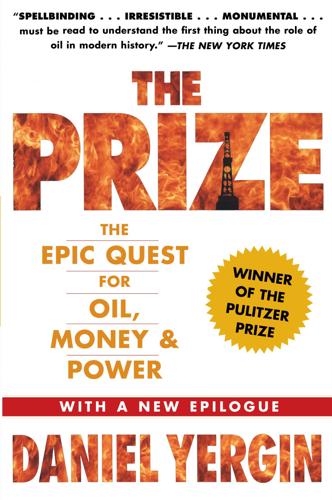
The Prize: The Epic Quest for Oil, Money & Power
by
Daniel Yergin
Published 23 Dec 2008
[7] Nuremberg Tribunals, Trials, vol. 7, pp. 793-803 (Hitler's Four Year Plan); Borkin, /. G. Farben, p. 72; Hayes, /. G. Farben, pp. 196-202, 183. USSBS, Oil Division Final Report, pp. 15-27, figures 22, 23; Krammer, "Fueling the Third Reich," pp. 398-403; USSBS, German War Economy, p. 75; Anne Skogstad, Petroleum Industry of Germany During the War (Santa Monica: Rand Corporation, 1950), p. 34; Homze, Luftwaffe, p. 148; War Cabinet, Committee on Enemy Oil Position, December 1,1941, Appendix 10, POG (L) (41) 11, CAB 77/18, PRO. [8] Norman Stone, Hitler (Boston: Little, Brown, 1980), pp. 107-8 ("life's mission"); Alan Clark, Barbarossa: The Russian-German Conflict, 1941-1945 (London: Macmillan, 1985), p. 25 ("little worms"); Walter Warlimont, Inside Hitler's Headquarters, 1939-1945, trans.
…
Cooper, The Lion's Last Roar (New York: Harper & Row, 1978), pp. 12 ("Great Engineer"), 16,18 ("highway"), 20; Robert Blake, Disraeli (New York: St. Martin's, 1967), pp. 584-85 (Disraeli). [2] Office of Intelligence Research, Department of State, "Traffic and Capacity of the Suez Canal," p. 10, August 10, 1956, National Security Council records; Harold Lubell, "World Petroleum Production and Shipping: A Post-Mortem on Suez," P-1274 (Rand Corporation, 1958), pp. 1718. [3] Selwyn Lloyd, Suez 1956: A Personal Account (New York: Mayflower Books, 1978), pp. 45,69, 24, 2-19; Donald Neff, Warriors at Suez: Eisenhower Takes the United States into the Middle East (New York: Simon and Schuster, 1981), p. 83 (CIA profile); Anthony Nutting, Nasser (New York: E.
…
He would lay out his thinking in a slow, spare, emphatic manner that sometimes seemed to suggest that his auditors, be they generals or senators or even presidents, were first-year graduate students who had failed to understand the most self-evident theorem. Richard Nixon had plucked Schlesinger from the Rand Corporation for the Bureau of the Budget, then to be chairman of the Atomic Energy Commission, then made him director of the Central Intelligence Agency, but soon after switched him to Secretary of Defense. On a fine Saturday or Sunday morning, however, he could be found in the countryside around Washington, binoculars in hand.
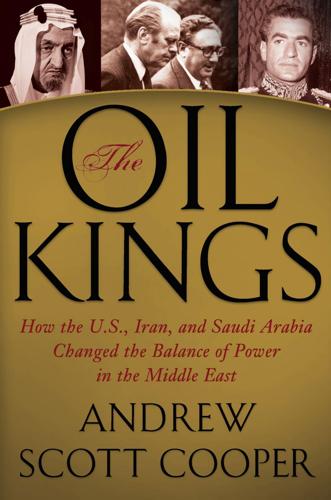
The Oil Kings: How the U.S., Iran, and Saudi Arabia Changed the Balance of Power in the Middle East
by
Andrew Scott Cooper
Published 8 Aug 2011
Several days later the Shah told Tehran’s English-language newspaper Kayhan International that Brown’s comments were “truly hilarious” and that Brown had passed on an apology and regrets. The Defense Department was digesting the results of its own intelligence assessment on U.S.-Iran relations, this one in the form of a survey of arms sales undertaken by David Ronfeldt, an analyst at the RAND Corporation. Ronfeldt set himself the task of answering two very basic questions—questions that no one at CIA or State had so far thought to ask: How did we get here? Where do we go from here? The United States, Ronfeldt concluded, had stumbled into a strategic trap of its own making by surrendering its leverage over its ally.
…
Navy and, 127–28 U.S. oil production and, 112–13 oil shock of 1974–75: and American exodus to Iran, 216–19 bank collapses and, 179–80, 207–8 barter deals and, 160–62 declining demand for oil and, 229–30, 259 Euro-Communism threat and, 194–96, 308–10, 345, 351 European economy and, 179–80, 194–96 and fear of great depression, 204–5 food crisis and, 205 government collapses and, 194–95 government defaults and, 307–8 inflation and, 160, 167–68, 174, 179, 182, 190, 195, 199, 205, 313, 333, 346 international economy and, 194–95, 196, 205–6, 260–61 Japan and, 273–74 Kissinger-Simon feud and, 154, 171–72, 200–201 lending crises and, 189, 331–34 military intervention question and, 233–35 Nixon administration meeting on use of force and, 187–90 oil industry meeting on, 159–61 onset of, 151–52 Portugal coup and, 167–68 Ramsar meeting and, 184–86, 187 recession and, 216, 217–18, 314, 326 Shah’s oil price increases and, 139–41, 144–46, 148–49, 151 Simon’s congressional testimony and, 156–57 stagflation and, 190 unemployment and, 216, 313–14, 326–27, 345, 346, 352 U.S-Saudi relationship and, 174–79 West German rescue packages and, 194–95 Oil War of 1977: Abqaiq pipeline fire and, 371, 383 and Arab hostility toward Saudis, 370–71 Iranian economy and, 364, 366–72, 382–85 oil production and, 369–70, 382–83 OPEC’s Doha meeting and, 358–61 reaction to, 362–63 Saudi Arabia and, 358–63, 366, 370–71, 382 settlement of, 382–83 Okun, Arthur M., 327 Olin Foundation, 392 Oman, 19, 130, 140 Operation Ajax, 22–23, 24, 85, 142, 340 Operation Alkali Canyon, 107–8 Operation Enhance Plus, 75–77 Operation Mudhen, 74 Organisation for Economic Co-operation and Development (OECD), 160, 345 Organization of Petroleum Exporting Countries (OPEC), 1, 4, 5–6, 7, 10, 143, 158, 160, 174, 175, 185, 189–90, 200, 206, 227, 229, 233, 238, 254, 268, 269, 271, 275–77, 293, 295, 301, 302, 327, 328, 330, 331, 332, 334, 340, 348, 366, 384, 440n Bali meeting of, 311 Doha meeting of, 317, 327, 354, 358–61 hardened U.S. policy for, 346–47, 350, 353 and settlement of Oil War, 382–83 at Tehran summit, 145–46, 172 Vienna meeting of, 278 Oriol y Urquijo, Antonio María de, 357 Overseas Aleutian, 88–89 Packard, David, 40 Pahlavi National Library, 186 Pakistan, 19, 42, 46, 59, 62, 67, 93, 102, 134, 163, 215, 221, 281, 317, 385 India’s 1971 war with, see India-Pakistan War of 1971 Kissinger’s 1974 visit to, 219–20 Pakravan, Fatemeh, 100, 385 Pakravan, Hassan, 49, 100, 385 Palestine Liberation Organization (PLO), 122, 312, 370 Panama, 316 Pan American airlines, 204, 217, 254 pan-Islamism, 2 Park Police, U.S., 388–89 Parsa, Nadina, 62 Parti Québécois, Canadian, 346 Patterson, Donald, 455n Peace Corps, 60, 216, 256 peak oil, 139 Peres, Shimon, 225–26, 243 Pérez, Carlos Andrés, 175, 330–31 Perle, Richard, 248 Persian Book of Kings, The (Ferdowsi), 1, 15, 17, 197 Persian Gulf, 59, 90 British pullout from, 19, 21, 44 oil of, 19–20 see also specific countries Peru, 315, 316 Peter I (the Great), Czar of Russia, 63 Peterson, Peter, 81, 89 Petroleum Intelligence Weekly, 383 Philippines, 46 Phillips, Mark, 135 Pickering, Thomas, 320 Plan and Budget Organization, Iranian, 141, 181, 185, 264, 271, 295, 355, 372, 386 Planet Oil and Minerals, 35 Poland, 160 Politburo, Soviet, 103 Pompidou, Georges, 145, 165–66, 280 Porter, William, 328–29 Portugal, 8, 159, 180, 194, 195–96, 243, 310, 357, 361, 363 coup attempts in, 167–68, 246 1976 economic crisis in, 333, 346, 350–51, 356 1976 political crisis in, 309 Powers, Thomas, 88 Pravda, 215 Presidential Succession Act of 1792, 118 Prince, Harold, 63 Project Independence, 144, 353 Propeller Club, 114 Puerto Rico, 310 Qaddafi, Muammar al-, 52, 109–10, 112, 116, 123, 132, 240 Qatar, 124, 189, 275 Quinn, Sally, 254, 413n Rabin, Yitzhak, 196, 225–26, 228–29, 243–44 Radford, Charles, 57–58 Radji, Parviz, 384 Rainier, Prince of Monaco, 53 Ramsbotham, Peter, 149 RAND Corporation, 337 Rappleye, Willard, Jr., 176 Rastakhiz, 360 Razavi, Hossein, 186 Reagan, Ronald, 28, 231, 288, 289, 323–24 Reagan Revolution, 392 Republican Party, U.S., 231, 268, 319, 323–24, 328, 375, 392 Resurgence Party, Iranian, 375, 378 Reza Cyrus Pahlavi, Crown Prince of Iran, 100, 142, 304, 391 Reza Shah Pahlavi, Shah of Iran, 21, 63, 219 reforms of, 63–64 Rhodesia, 159 Richard Nixon Presidential Archives Foundation, 392 Richard R.
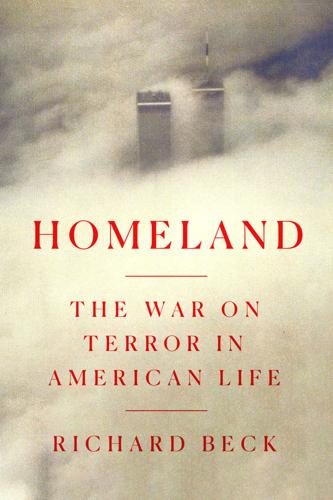
Homeland: The War on Terror in American Life
by
Richard Beck
Published 2 Sep 2024
Despite this code of silence around some of capitalism’s more deeply rooted problems, however, Pentagon strategists were clear-eyed about the kind of world they confronted and open about their desire to manage the surplus populations whose numbers were increasing almost everywhere. Following the 1993 Mogadishu debacle, in which Somali forces shot down three Black Hawk helicopters and killed eighteen American soldiers, Army theoreticians and eggheads working for the RAND Corporation began to churn out all kinds of papers and memoranda on how the military might reorient itself toward prolonged, sporadic, low-intensity urban conflict. Three years after Mogadishu, the house journal of the Army War College, Parameters, published an article on the swiftly emerging era of urban conflict.
…
The report cited “social and demographic trends that threaten to outstrip the ability of many countries to adapt,” including “rapid population growth in regions ill-prepared to absorb it, refugee migration and immigration, chronic unemployment and underemployment, and intensified competition for resources, notably energy and water.”[31] The RAND Corporation warned about the “urbanization of insurgency,”[32] and a theoretical journal run by the U.S. Air Force described the difficulties involved with carrying out combat operations in slums, a kind of battlefield that is “decreasingly knowable because it is increasingly unplanned.”[33] The Bush administration might have tried to convince Americans that the war on terror and especially the invasion of Iraq would go smoothly, conjuring visions in which grateful throngs of the world’s oppressed peoples would toss flowers and garlands at America’s soldiers before embarking on the construction of dynamic market economies.
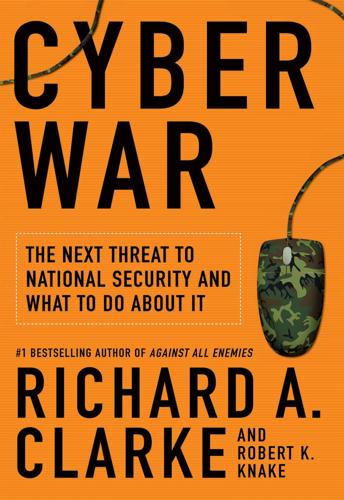
Cyber War: The Next Threat to National Security and What to Do About It
by
Richard A. Clarke
and
Robert Knake
Published 15 Dec 2010
When General Robert Elder was commander of the Air Force Cyberspace Command he told reporters that although his command has a defensive responsibility, it planned to disable an opponent’s computer networks. “We want to go in and knock them out in the first round,” he said. This is reminiscent of another Air Force general, Curtis LeMay, who in the 1950s, as commander of Strategic Air Command, explained to RAND Corporation analysts that his bombers would not be destroyed on the ground by a Soviet attack because “we’re going first.” That kind of thinking is dangerous. If we do not have a credible defense strategy, we will be forced to escalate in a cyber conflict very quickly. We will need to be more aggressive in getting our adversary’s systems so that we can stop their attacks before they reach our undefended systems.
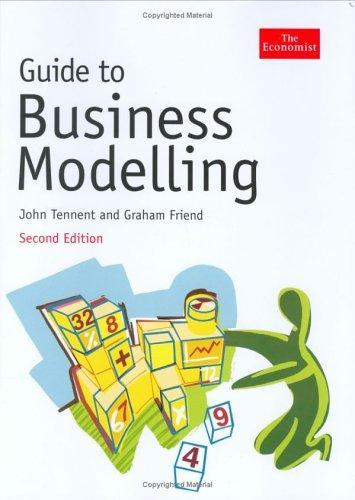
Guide to business modelling
by
John Tennent
,
Graham Friend
and
Economist Group
Published 15 Dec 2005
So an alternative approach to forecasting is required, which must be flexible and able to accommodate drastically different operating environments. 20 4. UNCERTAINTY, SCENARIO PLANNING AND MODEL INPUTS A SCENARIO-BASED FORECASTING APPROACH Scenario-based forecasting provides a structured approach for thinking about uncertainty. The development of scenario planning can be attributed to Herman Kahn, who worked for the rand Corporation in the 1950s. The approach was formalised by Shell during the 1970s, and its use has become increasingly pervasive in recent years in response to the dramatic changes that many industries and businesses must now contend with. For a more detailed understanding of scenario-based forecasting techniques, Learning from the future: Competitive Foresight Scenarios is an excellent reference.1 Scenarios are pictures, painted in words, of vividly different, contrasting and relevant environments in which the business may have to operate.

The New Urban Crisis: How Our Cities Are Increasing Inequality, Deepening Segregation, and Failing the Middle Class?and What We Can Do About It
by
Richard Florida
Published 9 May 2016
Although traditional data of the sort that Brookings used are not available for many other places, it’s possible to put together some rough estimates for a larger number of cities, including the poorest and most rapidly urbanizing. Working with Tim Gulden, a computational geographer now at the Rand Corporation, I developed a proxy measure for economic activity and urban productivity for every city and metro across the world using the nighttime lights that are tracked in satellite images by the National Aeronautics and Space Administration (NASA) and other scientific agencies.16 Combining this light-emissions metric, which we dubbed light-related regional product, with population statistics, we were able to develop urban productivity ratios comparing the productivity of cities and metro areas to national averages (including the metro area in question).
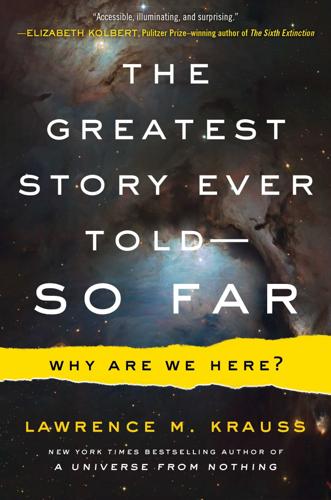
The Greatest Story Ever Told--So Far
by
Lawrence M. Krauss
Published 21 Mar 2017
Marshak was also the originator of the Rochester conferences and probably felt it would show favoritism to allow his own student to speak. In addition, since Sudarshan’s idea required at least some of the experimental data to be wrong, Marshak may have decided it was premature to present it at the meeting. That summer Marshak was working at the RAND Corporation in Los Angeles and invited Sudarshan and another student to join him. The two most renowned particle theorists in the world then, Feynman and Murray Gell-Mann, were at Caltech, and each had become obsessed with unraveling the form of the weak interaction. Feynman had missed out on the discovery of parity violation by not following his own line of questioning, but had since realized that his work on quantum electrodynamics could shed light on the weak interaction.

Food and Fuel: Solutions for the Future
by
Andrew Heintzman
,
Evan Solomon
and
Eric Schlosser
Published 2 Feb 2009
The risk of coronary heart disease increases nearly 60 percent in men and 179 percent in women, and risk for diabetes increases five-fold for men and eight-fold in women as weight increases from normal to very obese. The poor diet and inactivity causing obesity contribute independently to many of the same outcomes. Rand Corporation economist Roland Sturm has shown that obesity’s health effects now surpass those of smoking, and that it carries the same risk as aging two decades.4 Since poor diet and inactivity can affect health, they are likely to have other powerful impacts. Lost productivity, a less alert work force, and declining school grades are some.
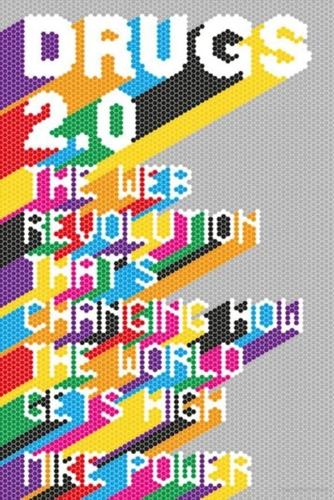
Drugs 2.0: The Web Revolution That's Changing How the World Gets High
by
Mike Power
Published 1 May 2013
The acronymic utopias enabled by internet technologies such as TCP/IP aren’t so different from those offered by LSD: equality, connectedness, awareness of life as a sum greater than its parts. In the early 1960s, American computer scientist Leonard Kleinrock of the Massachusetts Institute of Technology and Paul Baran of the Rand Corporation, and, later, Britain’s Donald Davies, a physician at the UK’s National Physical Library in Teddington, independently conceived of the same way to send data around a telephone network efficiently by splitting it into chunks and routing it through nodes around the network to later arrive, reassembled, in the right place.

Possible Minds: Twenty-Five Ways of Looking at AI
by
John Brockman
Published 19 Feb 2019
Historically, the search for computational models of human cognition is intimately intertwined with the history of artificial intelligence itself. Only a few years after Norbert Wiener published The Human Use of Human Beings, Logic Theorist, the first computational model of human cognition and also the first artificial-intelligence system, was developed by Herbert Simon, of Carnegie Tech, and Allen Newell, of the RAND Corporation. Logic Theorist automatically produced mathematical proofs by emulating the strategies used by human mathematicians. The challenge in developing computational models of human cognition is making models that are both accurate and generalizable. An accurate model, of course, predicts human behavior with a minimum of errors.
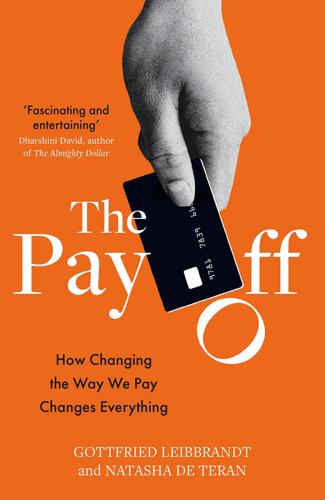
The Pay Off: How Changing the Way We Pay Changes Everything
by
Gottfried Leibbrandt
and
Natasha de Teran
Published 14 Jul 2021
Interview with Dr Johannes Beermann, Member of the Executive Board of the Deutsche Bundesbank, published in Frankfurter Allgemeine Sonntagszeitung. Figures on global financial crime, lower estimate, taken from US Treasury (2018): https://home.treasury.gov/system/files/136/2018NMLRA_12-18.pdf; upper estimate taken from RAND Corporation’s annual survey: www.rand.org/news/press/2019/08/20.html For cocaine on bank notes, see: www.theguardian.com/world/2009/aug/17/cocaine-dollar-bills-currency-us For large denomination bank notes and their use in the underground economy, see: K.S. Rogoff (2016). The Curse of Cash. Princeton, NJ: Princeton University Press.
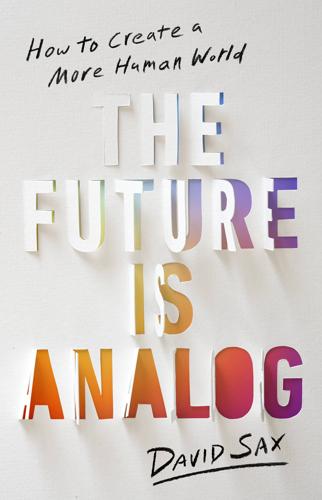
The Future Is Analog: How to Create a More Human World
by
David Sax
Published 15 Jan 2022
If we listen to the proselytizers of ed tech, Silicon Valley, and politicians who openly want to dismantle the public school system, the future is still going to be digital and virtual. The pandemic proved it could work, they say, and next time will be better thanks to improvements in technology and teacher training. In a survey conducted by the RAND Corporation during the pandemic, a fifth of US school districts planned to make remote learning a permanent option. Some were already making it a mandatory component of school. Lower costs, economies of scale, and the veneer of innovation were too attractive for politicians and administrators to dismiss digital school overnight.
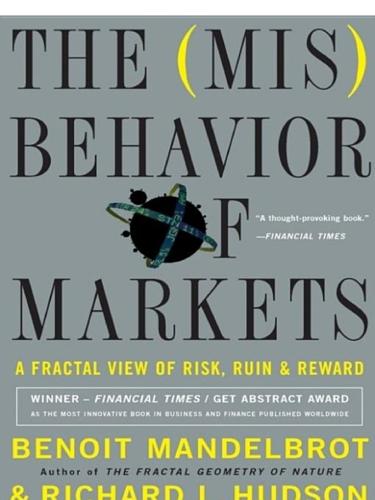
The Misbehavior of Markets: A Fractal View of Financial Turbulence
by
Benoit Mandelbrot
and
Richard L. Hudson
Published 7 Mar 2006
Price changes modeling Bachelier in Mandelbrot with Price/earnings (P/E) ratio Principles of Economics (Marshall) Probability Bachelier on Cauchy law of coin toss conditional crash economics with fat tails of Feller on infinite variance in Kolmogorov on language frequency with Lévy on mild form of radiation of randomness in scaling patterns in stochastic view in tool of Puget Sound currents of Pulitzer Prize R/S. See Rescaled-range statistic Railroad stock scaling patterns in RAND Corporation Random walk model author’s path with Bachelier and contradiction of dependence v. early reference to martingale condition with price chart in stock price movements in three claims of The Random Character of Stock Market Prices (Cootner) Rayleigh, Lord Recursion fractal geometry with Rescaled-range statistic (R/S) Research deterministic v. random systems in economics investment analysis need for options valuation portfolios building risk management Richardson, Lewis Fry Richter scale Risk.
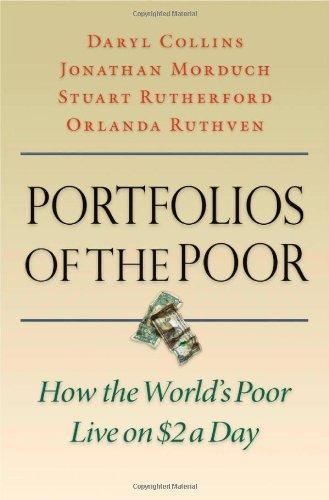
Portfolios of the poor: how the world's poor live on $2 a day
by
Daryl Collins
,
Jonathan Morduch
and
Stuart Rutherford
Published 15 Jan 2009
Morduch (1995, 1999) gives a broad frame on the academic work with an eye to policy interventions. 4. The study, by Abhijit Banerjee and Esther Duflo (2007), pools World Bank household surveys from across the world to present a broad view of the economic lives of the poor. The paper reports on detailed survey data, culled largely from World Bank and Rand Corporation surveys conducted between 1988 and 2005, representing the expenditures of tens of thousands of poor households in 13 developing countries. 5. The general problem is framed in Morduch’s (1999) essay on the strengths and weaknesses of informal risk sharing. He asks: “does informal insurance patch the safety net?”

Garbage Land: On the Secret Trail of Trash
by
Elizabeth Royte
Published 1 Jan 2005
According to a June 1986 federal report entitled “Organized Crime’s Involvement in the Waste Hauling Industry,” “there is a substantial body of evidence that organized crime controls much of the solid waste disposal industry in New York State and elsewhere.” Of the $1.5 billion taken in each year by New York carters, estimated Peter Reuter, author of the 1987 report Racketeering in Legitimate Industries, commissioned by the Rand Corporation, “about 35 percent was excess sucked out of the customers by illegal activities.” Still, Benjamin Miller’s Fat of the Land, a rich history of garbage in New York City, runs for nearly four hundred pages without mention of organized crime. William Rathje and Cullen Murphy, in Rubbish!, also ignore the topic, as did Robin Nagle when she taught a class called “Garbage in Gotham” to her anthropology students at New York University.
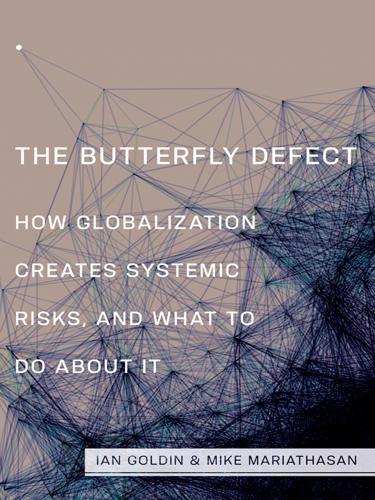
The Butterfly Defect: How Globalization Creates Systemic Risks, and What to Do About It
by
Ian Goldin
and
Mike Mariathasan
Published 15 Mar 2014
Treasury, with Treasury secretaries often recruited following a period at the helm of one of the major U.S. banks and returning afterward to a chairmanship or other lucrative advisory position in the financial services industry. Treasury secretaries since 2001 with links to finance and industry include Paul O’Neill (Alcoa, Rand Corporation), John Snow (CSX Corporation, Cerberus Capital Management Group), and Henry Paulson (Goldman Sachs). In addition, U.S. authorities had substantially deregulated loan products by means of the Depository Institutions and Monetary Control Act of 1980 and the Alternative Mortgage Transaction Parity Act of 1982. 37.
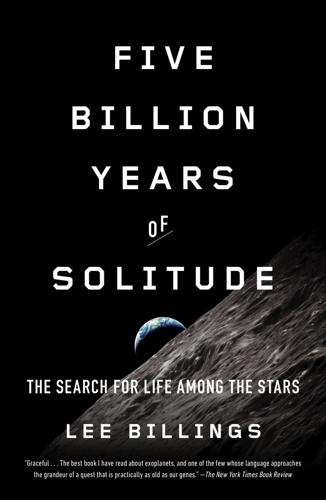
Five Billion Years of Solitude: The Search for Life Among the Stars
by
Lee Billings
Published 2 Oct 2013
Baross et al., The Limits of Organic Life in Planetary Systems (Washington, DC: National Academies Press, 2007). This report is available online at http://www.nap.edu/catalog.php?record_id=11919. Stephen H. Dole and Isaac Asimov, Planets for Man (New York: Random House, 1964). A condensed and popularized version of Dole’s RAND Corporation Research Study, Habitable Planets for Man. L. Kaltenegger, S. Udry, and F. Pepe, “A Habitable Planet around HD 85512?” arXiv preprint (2011). James Kasting, How to Find a Habitable Planet (Princeton: Princeton University Press, 2009). I recommend this excellent book to those readers wishing to seek out the scholarly papers mentioned in Chapter 7, as well as any readers wishing for a readable-yet-rigorous take on planetary habitability.
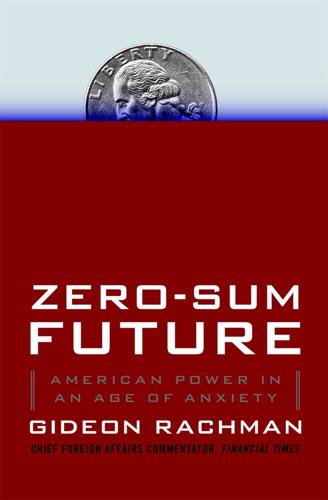
Zero-Sum Future: American Power in an Age of Anxiety
by
Gideon Rachman
Published 1 Feb 2011
A soft-spoken Asian-American, with an academic manner and conservative views, Fukuyama was thirty-six in 1989. He had done his doctorate on Soviet foreign policy. After a period working in the State Department during the Reagan administration, he returned to the study of Soviet politics at the RAND Corporation, a think tank just outside Los Angeles. As he followed the course of Gorbachev’s reforms in 1988, Fukuyama realized that Soviet communism had collapsed as an ideological system. The West had won. So when Professor Bloom contacted him, he pushed back against his mentor’s instinctive pessimism.
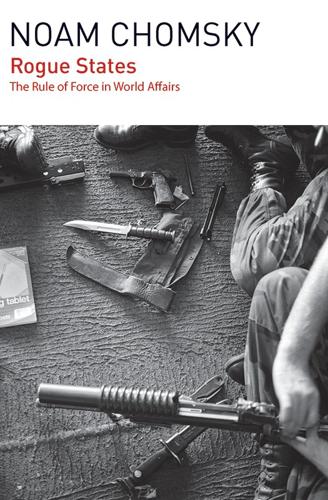
Rogue States
by
Noam Chomsky
Published 9 Jul 2015
The seriousness of concern over use of drugs was illustrated again when a House Committee was considering the Clinton Colombia Plan. It rejected an amendment proposed by California Democrat Nancy Pelosi calling for funding of drug demand-reduction services. It is well known that treatment and prevention are far more effective than forceful measures. A widely cited Rand Corporation study sponsored by the US Army and Office of National Drug Control Policy found that funds spent on domestic drug treatment were 23 times as effective as “source country control” (Clinton’s Colombia Plan), 11 times as effective as interdiction, and 7 times as effective as domestic law enforcement.48 But the inexpensive and effective path will not be followed.
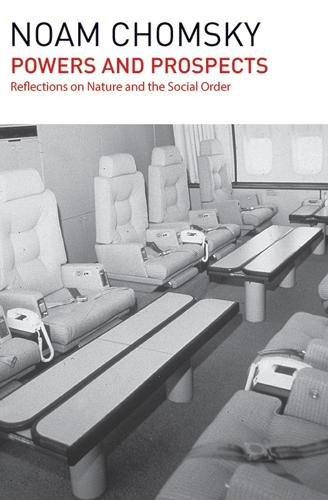
Powers and Prospects
by
Noam Chomsky
Published 16 Sep 2015
The technique is an understandable one; it is not easy to think of an alternative, given the acknowledged inability to ‘appeal directly to the masses’ and ‘get control of mass movements’ as the ‘Communists’ can do, using the unfair advantages they gain from ‘defending the interests of the poor’—‘Communist’ here used in the technical sense that covers also militant anti-Communists with the wrong priorities. The Problem Solved By the early 1960s, US experts were urging their contacts in the Indonesian military to ‘strike, sweep their house clean’ (Guy Pauker of the Pentagon-sponsored RAND Corporation in a study published by Princeton University Press); ‘if the officer corps appreciated its historic role, it could be the nation’s salvation’, he wrote in a University of California study. University of Pennsylvania specialist William Kintner, formerly of the CIA and then at a CIA-subsidised research institute, advised that with Western help, ‘free Asian political leaders—together with the military—must not only hold on and manage, but reform and advance while liquidating the enemy’s political and guerrilla armies’.
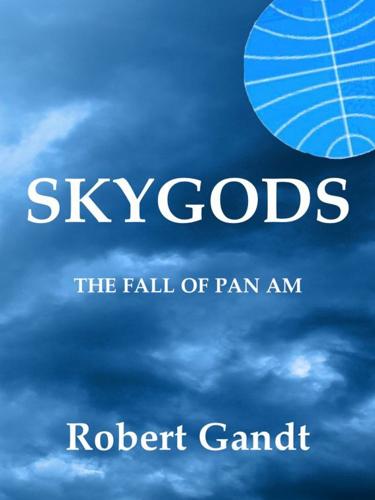
Skygods: The Fall of Pan Am
by
Robert Gandt
Published 1 Mar 1995
Few airline chiefs in the early 1950s believed they could make money with the newly invented, fuel-guzzling, screamingly noisy jet-engined airliner. At a quarter of the cost, nearly half the speed and twice the range, propeller-driven transports like the Douglas DC-6 and DC-7 and the Lockheed Constellation made far more sense than dangerous vehicles like the jet. Several authoritative studies, including one by the Rand Corporation, declared that the jet did not—and for many years would not—possess the range to cross the ocean nonstop. Nor could its seats be sold at reasonable fares to guarantee a profit for the operator. Further, to carry both a payload and the great store of fuel required to fly any distance, the jet would require impossibly long runways both to take off and to land.
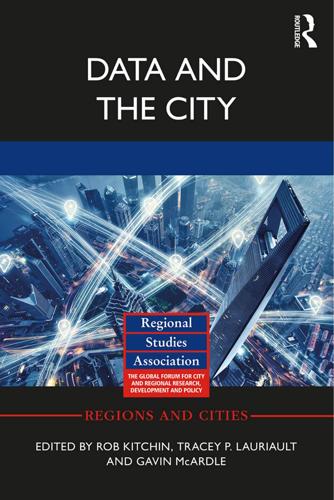
Data and the City
by
Rob Kitchin,Tracey P. Lauriault,Gavin McArdle
Published 2 Aug 2017
Kitchin, R., Lauriault, T.P. and McArdle, G. (2014) ‘Knowing and governing cities through urban indicators, city benchmarking and real-time dashboards’, Regional Studies, Regional Science 2(1): 6–28. Lee, D.B. (1973) ‘Requiem for large-scale models’, Journal of the American Institute of Planners 39: 163–178. Lowry, I.S. (1964) A Model of Metropolis. RM-4035-RC, Santa Monica, CA: The Rand Corporation, available from: https://www.rand.org/pubs/research_memoranda/RM4035. html [accessed 24 November 2016]. O’Brien, O., Batty, M., Gray, S., Cheshire, J. and Hudson-Smith, A. (2014) ‘On city dashboards and data stores’, a paper presented to the Workshop on Big Data and Urban Informatics, 11–12 August, University of Illinois at Chicago, Chicago, IL, available from: http://urbanbigdata.uic.edu/proceedings/ [accessed 24 November 2016].
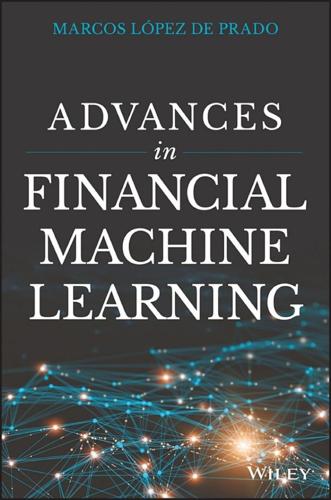
Advances in Financial Machine Learning
by
Marcos Lopez de Prado
Published 2 Feb 2018
One implication is that it is rarely optimal to allocate all assets to the investments with highest expected returns. Instead, we should take into account the correlations across alternative investments in order to build a diversified portfolio. Before earning his PhD in 1954, Markowitz left academia to work for the RAND Corporation, where he developed the Critical Line Algorithm. CLA is a quadratic optimization procedure specifically designed for inequality-constrained portfolio optimization problems. This algorithm is notable in that it guarantees that the exact solution is found after a known number of iterations, and that it ingeniously circumvents the Karush-Kuhn-Tucker conditions (Kuhn and Tucker [1951]).

Artificial Intelligence: A Guide for Thinking Humans
by
Melanie Mitchell
Published 14 Oct 2019
One Hundred Year Study on Artificial Intelligence (AI100), 2016 Report, 13, ai100.stanford.edu/2016-report. 13. Ibid., 12. 14. J. Lehman, J. Clune, and S. Risi, “An Anarchy of Methods: Current Trends in How Intelligence Is Abstracted in AI,” IEEE Intelligent Systems 29, no. 6 (2014): 56–62. 15. A. Newell and H. A. Simon, “GPS: A Program That Simulates Human Thought,” P-2257, Rand Corporation, Santa Monica, Calif. (1961). 16. F. Rosenblatt, “The Perceptron: A Probabilistic Model for Information Storage and Organization in the Brain,” Psychological Review 65, no. 6 (1958): 386–408. 17. Mathematically, the perceptron-learning algorithm is the following. For each weight wj: wj ← wj + η (t − y) xj, where t is the correct output (1 or 0) for the given input, y is the actual output of the perceptron, xj is the input associated with weight wj, and η is the learning rate, a value given by the programmer.

The Coming of Neo-Feudalism: A Warning to the Global Middle Class
by
Joel Kotkin
Published 11 May 2020
Ballotopedia, August 16, 2017, https://ballotpedia.org/Fact_check/Do_97_percent_of_journalist_donations_go_to_Democrat. 32 Guilluy, Twilight of the Elites, 35–37. 33 Kathleen McLaughlin, “The big journalism void: ‘The real crisis is not technological, its geographical’,” Guardian, January 30, 2017, https://www.theguardian.com/media/2017/jan/30/the-big-journalism-void-the-real-crisis-is-not-technological-its-geographic. 34 Jennifer Kavanagh et al., News in a Digital Age (Santa Monica: Rand Corporation, 2019), https://www.rand.org/pubs/research_reports/RR2960. html; Kalev Leetaru, “A Small Number of Fact-Checkers Now Define Our Reality,” Real Clear Politics, August 24, 2019, https://www.realclearpolitics.com/articles/2019/08/24/a_small_number_of_fact-checkers_now_deine_our_reality_141087.html. 35 Jonathan Chait, “The Vast Left-Wing Conspiracy Is on Your Screen,” New York Magazine, August 17, 2012, http://nymag.com/news/features/chait-liberal-movies-tv-2012-8/. 36 Jeremy Barr, “Top Hollywood Execs Give Overwhelmingly to Democrats for Midterms,” Hollywood Reporter, October 12, 2018, https://www.hollywoodreporter.com/news/top-hollywood-execs-give-99-percent-political-donations-democrats-midterms-1151392; Joanna Piacenza, “Putting a Number on Hollywood’s Perceived Liberalism,” Morning Consult, March 1, 2018, https://morningconsult.com/2018/03/01/putting-number-hollywoods-perceived-liberalism/; Tom Jacobs, “Why Is Hollywood So Liberal?”
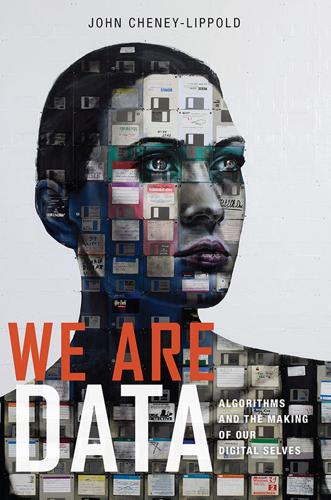
We Are Data: Algorithms and the Making of Our Digital Selves
by
John Cheney-Lippold
Published 1 May 2017
David Lyon, “Surveillance, Snowden, and Big Data: Capacities, Consequences, Critique,” Big Data & Society 1, no. 2 (2014): 1–13. 64. Walter Perry, Brian McInnis, Carter C. Price, Susan Smith, and John Hollywood, “Predictive Policing: The Role of Crime Forecasting in Law Enforcement Operations,” RAND Corporation, 2013, www.rand.org. 65. Jeremy Gorner, “Chicago Police Use Heat List as Strategy to Prevent Violence,” Chicago Tribune, August 21, 2013, http://articles.chicagotribune.com. 66. Anthony Braga, Andrew Papachristos, and David Hureau, “The Effects of Hot Spots Policing on Crime: An Updated Systematic Review and Meta-analysis,” Justice Quarterly 31, no. 4 (2012): 633–663. 67.

Calling Bullshit: The Art of Scepticism in a Data-Driven World
by
Jevin D. West
and
Carl T. Bergstrom
Published 3 Aug 2020
American Economic Review 107 (2017): 2565–99. Nicas, Jack. “How YouTube Drives People into the Internet’s Darkest Corners.” The Wall Street Journal. February 7, 2018. Paul, Christopher, and Miriam Matthews. The Russian “Firehose of Falsehood” Propaganda Model: Why It Might Work and Options to Counter It. Santa Monica, Calif.: RAND Corporation, 2016. https://www.rand.org/pubs/perspectives/PE198.html. Postman, Neil. “Bullshit and the Art of Crap-Detection.” Paper presented at the National Convention for the Teachers of English, Washington, D.C., November 28, 1969. Qin, B., D. Strömberg, and Y. Wu. “Why Does China Allow Freer Social Media?
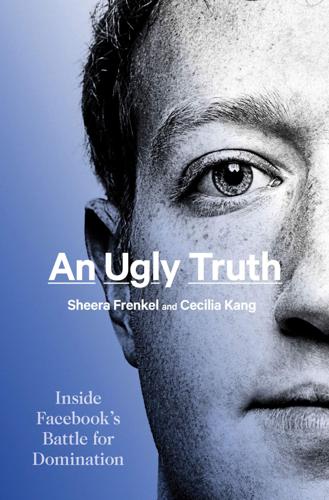
An Ugly Truth: Inside Facebook's Battle for Domination
by
Sheera Frenkel
and
Cecilia Kang
Published 12 Jul 2021
When Sandberg and Couric got onstage, they continued their easy rapport, poking fun at their promotional cartoon avatars beamed onto a large screen high up behind their chairs. But once the interview began, the tenor changed. Wouldn’t Zuckerberg’s new policy on political ads directly undermine efforts to counter election interference? Couric asked. “The Rand Corporation actually has a term for this, which is ‘truth decay.’ And Mark himself has defended this decision even as he expressed concern about the erosion of truth online,” she added. “What is the rationale for that?” For nearly fifty minutes, the former news anchor pressed Sandberg with a wide range of tough and intense questions.
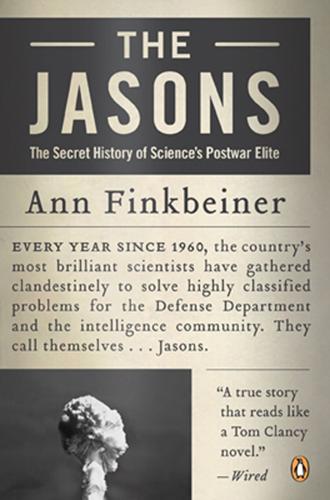
The Jasons: The Secret History of Science's Postwar Elite
by
Ann Finkbeiner
Published 26 Mar 2007
The Pentagon Papers were drawn from forty-seven volumes’ worth of classified history, commissioned by Robert McNamara, and called “U.S. Decision Making in Vietnam, 1945–1968.” It was based on the primary documents—memos, letters, speeches, minutes—that all good histories are, and it was written by a team, one of whom was a Pentagon consultant and an analyst at RAND Corporation, a federal research center like IDA. The RAND analyst, Daniel Ellsberg, was one of the few people who had read all forty-seven volumes and who could therefore, he said, “learn the lessons of the entire sweep of that period.” What he learned, he said, was that five presidents in a row had been given realistic advice about the undesirability of an “indefinitely prolonged guerrilla war” in Vietnam and that all five had ignored the advice.
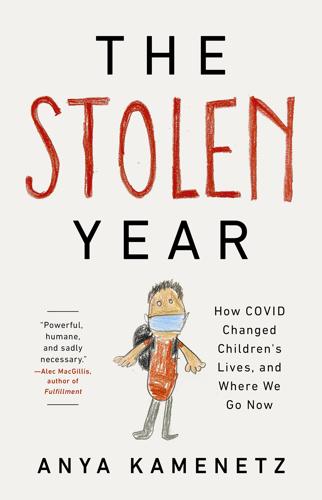
The Stolen Year
by
Anya Kamenetz
Published 23 Aug 2022
The women’s movement and the civil rights movement could have united behind a simplified program that actually eradicated poverty among children, the way expanded Social Security and the new Medicare program were beginning to do for the elderly. But in the 1970s, something else was on the rise. What the feminist economist Claudia Goldin called in a famous 2006 paper of the same title: “The Quiet Revolution.” Kathryn Anne Edwards, an economist at the RAND Corporation, is the one who filled me in on this, so I’m going to let her take over for a bit: “Her thesis of a quiet revolution is that with very little outward change to policy, women completely revolutionized the way that they approached [paid] work. And they did so on three levels, in how they viewed career as part of their identity, in the time horizons for making decisions about their job, and how they saw their earnings fitting into the household.”
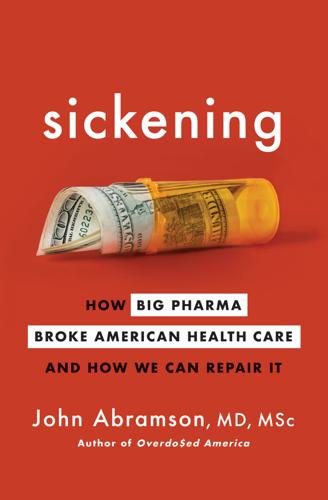
Sickening: How Big Pharma Broke American Health Care and How We Can Repair It
by
John Abramson
Published 15 Dec 2022
,” Commonwealth Fund, May 24, 2018, https://www.commonwealthfund.org/blog/2018/its-monopolies-stupid. the other OECD countries: Andrew W. Mulcahy, Christopher M. Whaley, Mahlet Gizaw et al., “International Prescription Drug Price Comparisons: Current Empirical Estimates and Comparisons with Previous Studies,” Rand Corporation, 2021. “It’s the prices, stupid”: Blumenthal, “It’s the Monopolies.” ten times as much: Joel Lexchin, “Affordable Biologics for All,” JAMA Network Open 3, no. 4 (2020): e204753. unavailable to peer reviewers: Roni Caryn Rabin, “The Pandemic Claims New Victims: Prestigious Medical Journals,” New York Times, June 14, 2020, https://www.nytimes.com/2020/06/14/health/virus-journals.html.

The Quiet Damage: QAnon and the Destruction of the American Family
by
Jesselyn Cook
Published 22 Jul 2024
Roozenbeek, “Psychological Inoculation Against Fake News,” in The Psychology of Fake News (New York: Routledge, 2020), 9, 147–69. GO TO NOTE REFERENCE IN TEXT media literacy training: A. Huguet et al., “Exploring Media Literacy Education as a Tool for Mitigating Truth Decay,” report, RAND Corporation, July 11, 2019, https://www.rand.org/pubs/research_reports/RR3050.html. GO TO NOTE REFERENCE IN TEXT CHAPTER 16 “harmful medical treatments”: J. Rottenberg, “Meet the Ojai Dad Who Made the Most Notorious Piece of Coronavirus Disinformation Yet,” Los Angeles Times, May 13, 2020, https://www.latimes.com/entertainment-arts/movies/story/2020-05-13/plandemic-coronavirus-documentary-director-mikki-willis-mikovits.
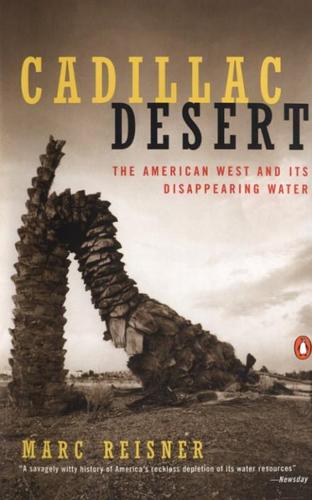
Cadillac Desert
by
Marc Reisner
Published 1 Jan 1986
Two of the world’s biggest dams; the world’s longest aqueduct; the world’s highest pump lift, surmounted by the world’s most powerful pumps—five full batteries of pumps; a chain of smaller dams and reservoirs strung out to receive the water—all of this would be incredibly expensive. The Department of Water Resource’s feasibility report, known as Bulletin 78, offered an estimate of $1,807,000,000, but an economist for the RAND Corporation, Jack Hirschleifer, immediately tore it to shreds. Reading between the lines, Hirschleifer noticed that though the report mentioned Oroville Dam at length, it failed to include the expense of building it. It was an extraordinary omission, to say the least. The DWR explained that the dam wouldn’t be needed right away and might be built later.
…
Instead of trying to justify the project by weighing costs against benefits—which is what the Bureau of Reclamation did, or went through the motions of doing—it compared the cost of the project to the most expensive alternative: desalinating seawater. On that basis, it concluded that the project made sense. But as Jack Hirschleifer disdainfully commented in his RAND Corporation report, you can justify anything if you compare it to a more expensive alternative. The critics were too few and too late. On Friday, November 4, 1960, just four days before the referendum was scheduled, the Metropolitan Water District capitulated and signed the contracts that indicated its support.
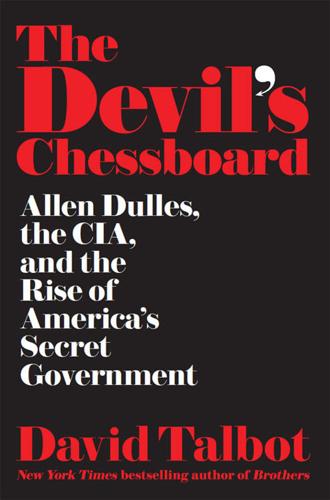
The Devil's Chessboard: Allen Dulles, the CIA, and the Rise of America's Secret Government
by
David Talbot
Published 5 Sep 2016
De Gaulle was particularly determined to shut down the secret “stay-behind army” that Dulles had organized in France—a network of anti-Communist militants with access to buried arms caches who were originally recruited to resist a potential Soviet invasion but were now aligned with the rebellious generals and other groups plotting to overthrow French democracy. De Gaulle ordered his young security adviser, Constantin Melnik, to shut down the murky, stay-behind network of fascists, spooks, and criminals, which Melnik agreed was “very dangerous for the security of France.” But Melnik, who was trained at the RAND Corporation, a leading think tank for the U.S. national security complex, was another admirer of Dulles, and the stay-behind underground continued to operate in France. Melnik—who was the son of a White Russian general and the grandson of Czar Nicolas II’s personal physician, who was executed along with the imperial family—was as passionately anti-Soviet as his U.S. security colleagues.
…
Fletcher, 251, 366, 408 Puhl, Emil, 26 Pullach, Germany, 269–73, 276–79, 281, 283 Pumpkin Papers, 172–73 QJ-WIN, 380, 502 Quemoy, 244 Quiet American, The (Greene), 517 Rackets Committee, 564–65 Radford, Arthur, 243 Radio Free Europe, 148 Radio Liberty Committee, 522 Raikin, Spas, 519 RAND Corporation, 416 Rankin, J. Lee, 513, 576–81, 594 Rascher, Sigmund, 84–85 Rasenberger, Jim, 399 Rauah, Joe, 491 Rauff, Walter, 103, 106–7, 109 Rayburn, Sam, 491 Reagan, Ronald, 265, 603, 617 Red Army, 29–30, 57, 76–80, 82, 282, 521 Red Book (Jung), 10–11 reduction in force (701) program, 411 Registration Act, 329 Reichsbank, 18, 26 Reichsreferat (German neofascist party), 92 Republican Party, 23, 145–46, 159, 161, 164–65, 170, 179, 181–82, 185–86, 200, 208, 214, 352–53, 431, 446, 450, 552–53, 557, 576 Reston, James “Scotty,” 407, 415, 491 Reuther, Victor, 466 Reuther, Walter, 466 Reynolds, Don, 492 Reynolds Tobacco, 199 Ribbentrop, Joachim von, 59–60, 103 Ricardo, Bienvenida, 317–18 Richardson, Sid, 524, 573 Riefenstahl, Leni, 58 Riegner, Gerhart, 51 Rimini POW camp, 105 Roberts, John, 194 Rocca, Raymond, 111, 578–80, 594, 615 Rocca, Renzo, 475 Rockefeller, David, 551–58, 560 Rockefeller, John D., 528, 552 Rockefeller, Laurance, 554 Rockefeller, Nelson, 551–59, 585 Rockefeller Commission, 296, 585 Rockefeller family, 131, 199, 459 Rockefeller Foundation, 330, 374, 553, 574 Rolling Stone, 497, 499 Roman, Howard, 450, 486, 613, 615–16 Roman, Jane, 450 Roman Catholic Confederation, 420 Romania, 18, 144, 188–89 Romanian refugees, 186, 187, 190, 192 Rome, 94, 96–99, 102–4, 106, 109, 103, 335, 619 CIA station, 468–69, 473–78, 502–4, 508 U.S. embassy, 236–37 Rome, Open City (film), 103 Rommel, Erwin, 79 Roosevelt, Eleanor, 25, 43, 208, 350 Roosevelt, Franklin D., 4–5, 15, 17–18, 20–30, 35, 42–47, 51–52, 54, 56, 68, 106, 108, 145, 149, 353, 431, 435, 440–41, 484, 552, 555 AWD and, 20, 25–29, 77, 90, 98, 146 Chambers on, 174 coup attempts vs., 25 death of, 66, 183 JFD and, 146 Hiss and, 167, 171 Holocaust and, 42–47, 51–52, 54, 56 Nuremberg trials and, 57, 62, 66–67 power elite and, 23–25, 29, 163, 197–98 Soviets and, 175, 178 unconditional surrender and, 29–30, 33, 35, 77 World Bank and, 177–78 Roosevelt, Kermit “Kim,” Jr., 144, 233–36, 238–40 Roosevelt, Theodore “Teddy,” 63, 233, 352 Root, Elihu, Jr., 352 Rosalba, Duchess, 99–100 Rosenberg, Julius and Ethel, 511 Rosselli, Johnny, 347, 471, 476, 534 Rossellini, Roberto, 103 Rothko, Mark, 331 Rovere, Richard, 438 Rowe, Jim, 493 Rubirosa, Porfirio “Rubi,” 318–19 Ruby, Jack, 564–65, 574 Rumsfeld, Donald, 450, 617 Rush to Judgment (Lane), 593 Rusk, Dean, 374, 427, 437–38, 574 Russell, Bertrand, 588 Russell, Richard, 576–78, 585 Russian Review, 522 Sacco and Vanzetti trial, 151 Sachsenhausen, Wolff and, 82 Safehaven, Project, 27–28 Salandria, Vincent, 589, 591 Salinger, Pierre, 419 Salter, Michael, 102 Salvemini, Gaetano, 465 Sander, Fritz, 48 Sanford, Terry, 492 Sartre, Jean-Paul, 218, 345 Saturday Evening Post, 430, 569, 593 Saudi royal family, 325 Saunders, Frances Stonor, 331 SAVAK, 240 Schact, Hjalmar, 59–61, 68–70, 113–14 Schine, David, 217–18, 224–25 Schlesinger, Alexandra, 603–4 Schlesinger, Andrew, 604 Schlesinger, Arthur, Jr., 6, 153, 170, 196, 331, 363, 371–72, 399, 407–8, 412, 429–46, 452, 465–67, 476, 481–82, 484, 490, 598–604, 610 Schlesinger, Arthur, Sr., 432 Schlesinger, Marian, 433 Schmeling, Max, 342 Schmitz, Hermann, 26 Schroder, J.
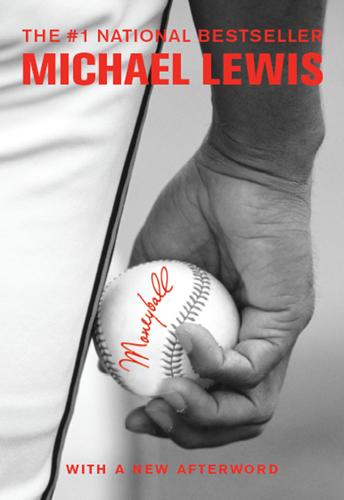
Moneyball
by
Michael Lewis
Published 1 Jan 2003
“The fact that the formulas work with the accuracy that they do is a way of saying there are essentially stable relationships between batting average, home runs, walks, other offensive elements—and runs,” wrote James. This kind of talk was catnip to people whose lives were devoted to discovering stable relationships in a seemingly unstable world: physicists, biologists, economists. There was a young statistician at the RAND Corporation, a future chair of the Harvard statistics department, named Carl Morris. “I’d been thinking about advanced ideas in baseball analysis,” said Morris, “and was impressed that someone else was, too, who wrote about it in a very interesting way.” Morris counted the days until the next Baseball Abstract appeared.
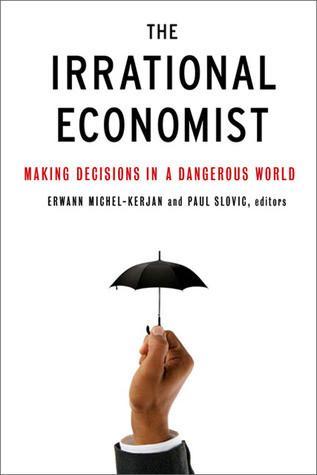
The Irrational Economist: Making Decisions in a Dangerous World
by
Erwann Michel-Kerjan
and
Paul Slovic
Published 5 Jan 2010
He was the recipient of the National Academy of Sciences award for Behavioral Research Relevant to the Prevention of Nuclear War. He served in the Economic Cooperation Administration in Europe, and has held positions in the White House and Executive Office of the President, Yale University; the RAND Corporation; and the Department of Economics and Center for International Affairs, Harvard University. He has published on military strategy and arms control, energy and environmental policy, climate change, nuclear proliferation, terrorism, organized crime, foreign aid and international trade, conflict and bargaining theory, racial segregation and integration, health policy, tobacco and drugs policy, and ethical issues in public policy and in business.
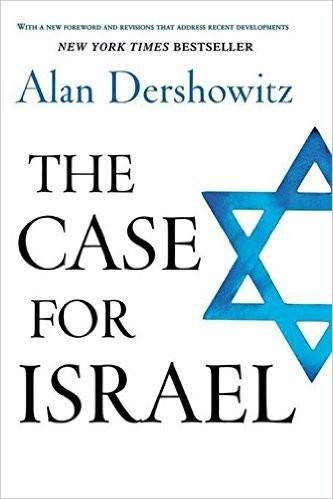
The Case for Israel
by
Alan Dershowitz
Published 31 Jul 2003
Compared with casualty figures from urban combat in recent years—such as the fighting in Chechnya, where Russia’s army lost at least 1,500 soldiers during its first assault on Grozny—these numbers are astonishingly low.8 A cover story in the June 2003 issue of Atlantic Monthly by a leading terrorist expert for the Rand Corporation also focused on the “lessons” America must learn from how Israel deals with terrorism. A lead story in the “Ideas” section of the Boston Globe analyzed the ethical training received by Israeli soldiers and concluded, “The IDF army offers a model for us and other coalition forces.”9 It described the Israeli concept of “purity of arms,” which “requires that soldiers put their own lives at stake in order to avoid harming non-combatants.”
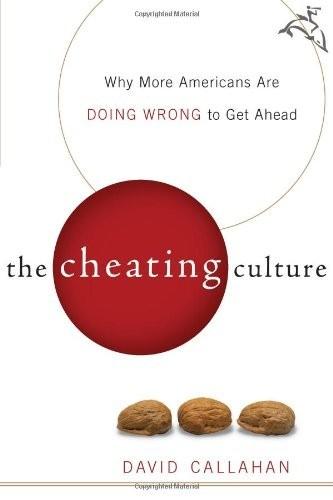
The Cheating Culture: Why More Americans Are Doing Wrong to Get Ahead
by
David Callahan
Published 1 Jan 2004
The real problem, though, was the rise of a new kind of radical individualism. Even "Be all that you can be" was too authoritarian for the times. Young people perceived the army as a place where they'd have to follow a lot of rules and would lose their individual identity, so they didn't join. The army commissioned dense studies of young people by the Rand Corporation, the California think tank best known for its work in the 1960s about how the U.S. could "prevail" in a thermonuclear exchange. The army also hired Dan Yankelovich's polling firm, as well as pricey consultants from McKinsey & Company. The findings from all this research convinced the army that it needed to dispense with "Be all that you can be" and develop a much more hard-edged appeal to individualism.

The Industries of the Future
by
Alec Ross
Published 2 Feb 2016
Apple Is NOT the World’s Most Valuable Company,” LondonlovesBusiness, August 21, 2012, http://www.londonlovesbusiness.com/business-news/finance/stop-the-press-apple-is-not-the-worlds-most-valuable-company/3250.article. If a cyberattack could happen: Bronk and Tikk-Ringas, “Hack or Attack?” It is perhaps ironic that: “Paul Baran and the Origins of the Internet,” Rand Corporation, http://www.rand.org/about/history/baran.list.html. Whether motivated by politics: “Net Losses: Estimating the Global Cost of Cybercrime: Economic Impact of Cybercrime II,” Center for Strategic and International Studies, June 2014, http://www.mcafee.com/us/resources/reports/rp-economic-impact-cybercrime2.pdf.
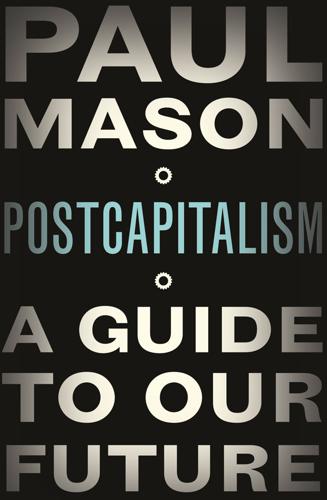
Postcapitalism: A Guide to Our Future
by
Paul Mason
Published 29 Jul 2015
But by 1977 its GDP per head was 57 per cent of the USA’s – which put it on a par with Italy. From 1928 until the early 1980s, the average growth in the USSR, according to a CIA-commissioned survey, was 4.2 per cent. ‘This clearly qualifies as a sustained growth record,’ concluded analysts at the RAND Corporation.10 But Soviet growth was never driven by productivity. The RAND study found only a quarter of the USSR’s growth was driven by better technology, with the rest by rising inputs – of machinery, raw materials and energy. After 1970, there was no growth at all in productivity: if you needed double the number of nails produced, you built a new nail factory alongside the old one – productivity was off the agenda.
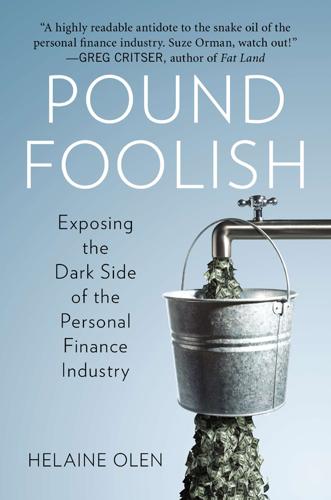
Pound Foolish: Exposing the Dark Side of the Personal Finance Industry
by
Helaine Olen
Published 27 Dec 2012
Financial literacy has also morphed into an academic powerhouse, an excellent field for ambitious professors seeking accolades, research grants, and tenure. For example, Annamaria Lusardi and Olivia Mitchell, the two academics who have done the most in recent years to promote the concept, with multiple books, surveys, papers, speeches, and media quotes, head up efforts such as the Financial Literacy Center, a joint effort of the RAND Corporation with Dartmouth College and the Wharton School of the University of Pennsylvania. For-profit companies have also moved into the space, including EverFi, a Washington, DC–based education technology company that has raised $11 million in venture funding. EverFi gives its financial literacy materials to schools for free—provided, that is, they can find a corporation or nonprofit to sponsor the offering.
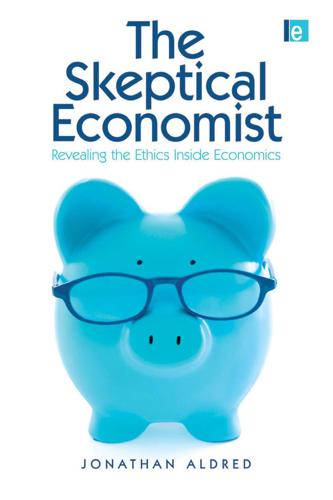
The Skeptical Economist: Revealing the Ethics Inside Economics
by
Jonathan Aldred
Published 1 Jan 2009
Of course the problems are not limited to publicly funded services. Elderly people in the US have recently had that sinking feeling when trying to choose between various extremely complex drug plans offered through Medicare ‘Part D’, provided by private insurance companies.9 And a classic US study by the Rand Corporation found that if people pay medical expenses directly (rather than having insurance) they spend less overall, but this is not the result of setting sensible priorities — people simply cut back across the board.10 Lack of training to understand, sift and interpret information is one reason; another is our emotional response to important but difficult decisions.
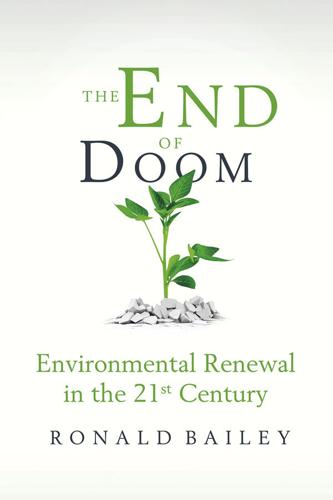
The End of Doom: Environmental Renewal in the Twenty-First Century
by
Ronald Bailey
Published 20 Jul 2015
, 7. www.worldenergyoutlook.org/media/weowebsite/2011/WEO2011_GoldenAgeofGasReport.pdf. 2.6 million oil and gas wells: Wilderness Society, “Oil and Gas Drilling: Some Key Facts,” April 2011. beyondoil.files.wordpress.com/2011/04/drilling-in-america-february-2011.pdf. (OPEC) wells total: OPEC, Annual Statistical Bulletin 2012, 27. www.opec.org/opec_web/static_files_Project/media/downloads/publications/ASB2010_2011.pdf. 27 and 30 billion barrels of reserves: Richard Nehring, Linking U.S. Oil and Gas Reserve Estimates. RAND Corporation, September 1984, 3. www.rand.org/content/dam/rand/pubs/notes/2009/N2049.pdf. US proven oil reserves at 29 billion barrels: US Energy Information Administration, “U.S. Field Production of Crude Oil,” 2014. www.eia.gov/dnav/pet/hist/LeafHandler.ashx?n=PET&s=MCRFPUS1&f=A. 45–46 “an implied cost”: ExxonMobil, The Outlook for Energy: A View to 2040, 2014, 32.usaans1.usaa.com/en/energy/energy-outlook.
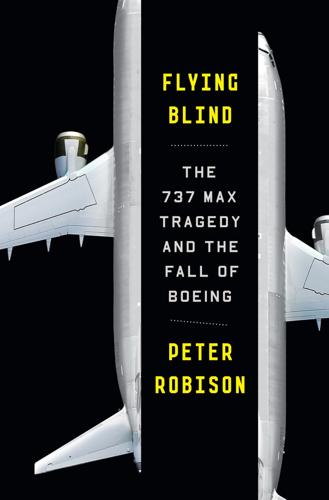
Flying Blind: The 737 MAX Tragedy and the Fall of Boeing
by
Peter Robison
Published 29 Nov 2021
The Seattle plane maker surprised: Richard Witkin, “Boeing Says Repairs on Japanese 747 Were Faulty,” New York Times, September 8, 1985. “the most honest, reputable”: Author interview with Gordon Bethune, December 2019. “We are fighting”: Quoted in Mark A. Lorell, “Multinational Development of Large Aircraft: The European Experience,” Rand Corporation, July 1980. “the biggest foreign penetration”: Richard Witkin, “Eastern Accepts $778 Million Deal to Get 23 Airbuses,” New York Times, April 7, 1978. When a McDonnell Douglas: John Newhouse, The Sporty Game, 206. “went to the White House”: Author interview with C. Fred Bergsten, December 2017.
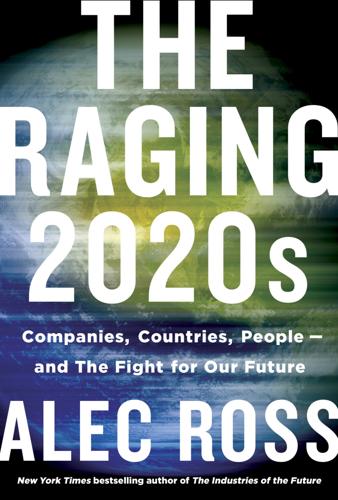
The Raging 2020s: Companies, Countries, People - and the Fight for Our Future
by
Alec Ross
Published 13 Sep 2021
Bottom 50% down $900 Billion,” People’s Policy Project, June 14, 2019, https://www.peoplespolicyproject.org/2019/06/14/top-1-up-21-trillion-bottom-50-down-900-billion/. If the level of inequality: Carter C. Price and Kathryn A. Edwards, “Trends in Income from 1975 to 2018” (Working Paper WR-A516-1, RAND Corporation, Santa Monica, CA, 2020), https://doi.org/10.7249/WRA516-1. 1: SHAREHOLDER AND STAKEHOLDER CAPITALISM Like 1.6 million Americans: “Statistics about Diabetes,” American Diabetes Association, accessed June 4, 2020, https://www.diabetes.org/resources/statistics/statistics-about-diabetes. Nearly a century earlier: “The History of a Wonderful Thing We Call Insulin,” American Diabetes Association, July 1, 2019, https://www.diabetes.org/blog/history-wonderful-thing-we-call-insulin.

Human Compatible: Artificial Intelligence and the Problem of Control
by
Stuart Russell
Published 7 Oct 2019
The payoff to Alice is UA = 0.25pq + 0.70 p(1 − q) + 0.65 (1 − p)q + 0.10(1 − p) (1 − q), while Bob’s payoff is UB = −UA. At equilibrium, ∂UA/∂p = 0 and ∂UB/∂q = 0, giving p = 0.55 and q = 0.60. 25. The original game-theoretic problem was introduced by Merrill Flood and Melvin Dresher at the RAND Corporation; Tucker saw the payoff matrix on a visit to their offices and proposed a “story” to go along with it. 26. Game theorists typically say that Alice and Bob could cooperate with each other (refuse to talk) or defect and rat on their accomplice. I find this language confusing, because “cooperate with each other” is not a choice that each agent can make separately, and because in common parlance one often talks about cooperating with the police, receiving a lighter sentence in return for cooperating, and so on. 27.

The Human City: Urbanism for the Rest of Us
by
Joel Kotkin
Published 11 Apr 2016
“Mathematics Achievement Gaps Between Suburban Students and Their Rural and Urban Peers Increase Over Time,” The Carey Institute, University of New Hampshire, http://scholars.unh.edu/cgi/viewcontent.cgi?article=1171&context=carsey. GRANT, Jonathan. (2005). “Population Implosion? Low Fertility Rates and Policy Responses in the European Union,” Rand Corporation, http://www.rand.org/pubs/research_briefs/RB9126.html. GRANT, Michael. (1969). The Ancient Mediterranean, New York: Scribner. GRATZ, Roberta Brandes. (1995, November). “Americans Want What Czechs Have,” Association for Thrifty Transport, http://doprava.ecn.cz/en/Amerika.php. GREEN, Emma. (2015, March 27).
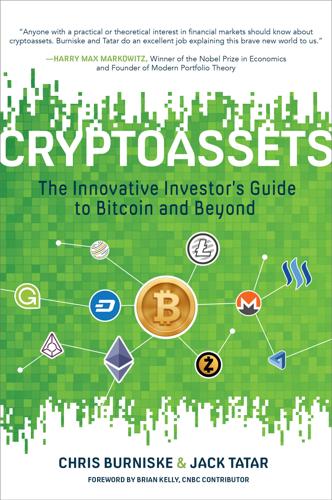
Cryptoassets: The Innovative Investor's Guide to Bitcoin and Beyond: The Innovative Investor's Guide to Bitcoin and Beyond
by
Chris Burniske
and
Jack Tatar
Published 19 Oct 2017
Our Twitter accounts are: @cburniske @JackTatar For more resources, please visit: http://www.BitcoinandBeyond.com. Notes Introduction 1. http://www.worldwidewebsize.com/. 2. Paul Baran, On Distributed Communications: I. Introduction to Distributed Communications Networks (Santa Monica, CA: RAND Corporation, 1964), http://www.rand.org/pubs/research_memoranda/RM3420.html. 3. http://www.Internetsociety.org/Internet/what-Internet/history-Internet/brief-history-Internet. 4. http://www.Internetlivestats.com/google-search-statistics/. 5. https://www.textrequest.com/blog/texting-statistics-answer-questions/. 6. https://www.lifewire.com/how-many-emails-are-sent-every-day-1171210. 7. https://hbr.org/2016/05/the-impact-of-the-blockchain-goes-beyond-financial-services. 8. https://dailyfintech.com/2014/08/28/hey-banks-your-fat-margin-is-my-opportunity/. 9. http://www.coindesk.com/microsoft-blockchain-azure-marley-gray/. 10. http://fortune.com/2016/08/19/10-stocks-beaten-googles-1780-gain/. 11. https://en.wikipedia.org/wiki/Dot-com_bubble#cite_note-40. 12. https://coinmarketcap.com/historical/20161225/. 13. https://www.fool.com/investing/general/2013/12/25/buffettbooks.aspx.

The AI Economy: Work, Wealth and Welfare in the Robot Age
by
Roger Bootle
Published 4 Sep 2019
Toward the end of the eighteenth century, Benjamin Franklin, one of America’s Founding Fathers, predicted that eventually four hours work per day would be enough. The remaining hours would be for “leisure and pleasure.” Later, the playwright George Bernard Shaw outdid this prediction. In 1900 he suggested that by the year 2000 workers would be putting in just two hours a day. Decades later, the influential think tank, the RAND Corporation, forecast that in the future 2 percent of the population would be able to produce everything that society needed. The work/life balance And yet, as we shall see in a moment, a good deal of modern work does not fit into the drudgery model at all. Indeed, many people seem actively to like their jobs.
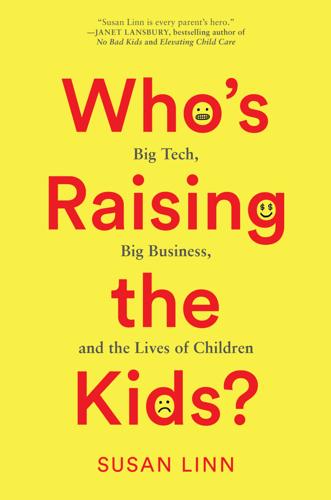
Who’s Raising the Kids?: Big Tech, Big Business, and the Lives of Children
by
Susan Linn
Published 12 Sep 2022
Jacquelyn Ottman, “The Four E’s Make Going Green Your Competitive Edge,” Marketing News 26, no. 3 (February 3, 1992): 7. 41. Bruce Watson, “The Troubling Evolution of Corporate Greenwashing,” The Guardian, August 20, 2016. 42. See John F. Pane, “Strategies for Implementing Personalized Learning While Evidence and Resources Are Underdeveloped,” Perspective (Santa Monica, CA: Rand Corporation, October 2018), 7, doi.org/10.7249/PE314. 43. Alfie Kohn, “Four Reasons to Worry About ‘Personalized Learning,’” Psychology Today, February 24, 2015, www.psychologytoday.com/us/blog/the-homework-myth/201502/four-reasons-worry-about-personalized-learning. 44. See Howard Gardner, The Unschooled Mind: How Children Learn and Schools Should Teach (New York: Basic Books, 1991). 45.
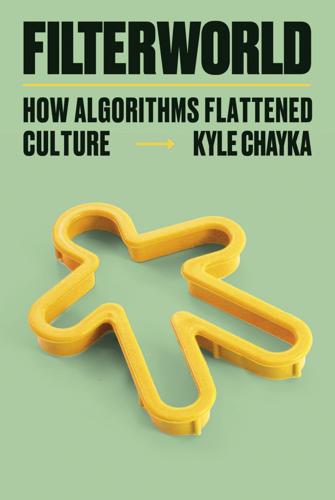
Filterworld: How Algorithms Flattened Culture
by
Kyle Chayka
Published 15 Jan 2024
Beer described cybernetics as “the science of control.” It involves analyzing complex systems, whether corporations or biology, and determining how they work to better model or create such intelligent, self-correcting systems. (In the United States, a similar practice of systems analysis was pioneered by the RAND Corporation in the 1950s.) Project Cybersyn was meant to provide an ideal model, aiding the Chilean government’s decision-makers in real time as they sat in the room and smoked their cigarettes and drank their whiskey—another meeting of the coldly technological and the messily human. From the room, the men watched the algorithms that oversaw the nation.

The Measure of Progress: Counting What Really Matters
by
Diane Coyle
Published 15 Apr 2025
National Bureau of Economic Research. https://doi.org/10.3386/ w25655 Albanesi, S., da Silva, A. D., Jimeno, J. F., Lamo, A., and Wabitsch, A. (2023). New technologies and jobs in E urope (CEPR Discussion Paper DP18220). Centre for Economic Policy Research, London. Alchian, A. A. (1958). Costs and outputs. RAND Corporation. https://www.rand.org/pubs /papers/P1449.html Alexandrova, A., Agarwala, M., Coyle, D., Fabian, M., and Felici, M. (2021). Wellbeing public policy needs more theory (Bennett Institute Working Paper). Bennett Institute for Public Policy, University of Cambridge. https://www.bennettinstitute.cam.ac.uk/w p-content /uploads/2020/12/WPP_needs_more_theory_working_paper.pdf Alexandrova, A., and Fabian, M. (2022).
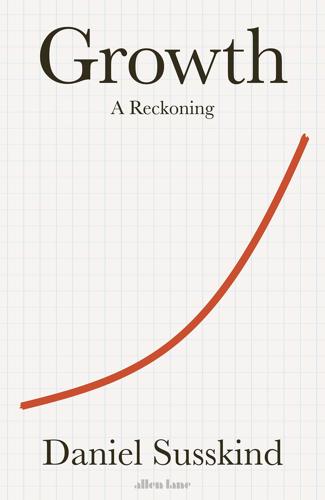
Growth: A Reckoning
by
Daniel Susskind
Published 16 Apr 2024
Quoted by Arndt, The Rise and Fall of Economic Growth, p. 30. 54 www.pbs.org/kenburns/the-war/war-production. 55 President Kennedy, The Third Kennedy–Nixon Presidential Debate, 13 October 1960. 56 Quoted in Heller, Perspectives, p. 130. See also Nikita Khrushchev’s report on the Seven Year Plan for 1959–65, quoted in Oleg Hoeffding, ‘The Soviet Seven Year Plan’, RAND Corporation, 2 February 1959. 57 See Schmeltzer, The Hegemony, p. 163. 58 Peter Wiles, ‘The Soviet Economy Outpaces the West’, Foreign Affairs, 1 July 1953. 59 President Kennedy, The Third Kennedy–Nixon Presidential Debate, 13 October 1960. 60 Quoted from Daniel Susskind, A World Without Work: Technology, Automation, and How We Should Respond (London: Allen Lane, 2020), p. 169. 61 Susskind, A World Without Work, p. 170. 62 Levy and Peart, ‘Soviet Growth & American Textbooks’.

Markets, State, and People: Economics for Public Policy
by
Diane Coyle
Published 14 Jan 2020
See efficiency Paris Metro, 308 partial equilibrium, 13, 47 patent box, 129–30 patents, 51, 61, 80 patent trolls, 151 paternalism, 172, 173, 195, 196–97 payday loans, 189 peak loading problem, 84 peer-to-peer lending, 81 Peltzman effect (risk compensation), 274, 275 pensions, 21, 186–87, 194, 202, 233, 251, 252 PepsiCo, 56 pharmaceuticals, 129–30, 247, 263 photovoltaics (PV), 126, 127 Pigou, Arthur, 19, 25 Piketty, Thomas, 216, 223, 226, 231 policing, 157 policy appraisal, 302–4; elements of, 303; evaluation distinguished from, 299; tools of, 297 policy evaluation: appraisal distinguished from, 299; econometric, 300–301; rarity of, 297; research on, 298, 300 political parties, 160 pollution, 13, 25, 32, 140, 147, 320 positional goods, 138, 161–62, 165, 167, 169 postal services, 21–22, 101, 104, 105 poverty, 203, 206; absolute vs. relative, 212, 213, 214 poverty gap, 213 poverty trap (welfare trap), 234, 236 power, in statistics, 301–2 PowerGen, 87 present bias (hyperbolic discounting), 183–85, 190, 316 present value, 183–84 price controls, 67, 112 price elasticity of demand, 19, 47, 79, 152 price fixing, 55 principal-agent problems, 284–86, 289 private roads, 29, 30 privatization, 69, 72, 280; of airlines, 106; defined, 108; impetus for, 109–11; mixed success of, 116–25; regulation following, 111–16; reversals of, 100–101, 103; in Turkey, 117; in United Kingdom, 87–88, 98, 100, 102–3, 114–22, 124–25, 258, 290 process innovation, 51 producer surplus, 47–49 product innovation, 51 production possibilities frontier, 10, 40 productivity: competition linked to, 46–47, 53, 110–11, 122; health linked to, 211; privatization and, 116–17, 121; of state-owned enterprises, 109 product mix efficiency (output efficiency), 10, 40 progressive taxation, 2, 7–8, 206, 208, 213, 225, 228–29, 232 Prohibition, 269 projection bias, 184 property rights, 33–34, 226, 291, 341; ambiguous, 148, 149; digital, 149, 150; over commons, 141, 145, 147, 165, 168; socially constructed, 152, 166 prospect theory, 178 PSA Peugeot Citroën, 63 public choice theory, 22–23, 256, 259–62, 271, 280, 289, 293 public goods, 1, 8, 159, 174, 243–45; examples of, 25–26, 27; features of, 28; financing of, 27–28; private goods vs., 27; pure vs. excludable, 25–26; research as, 128–29, 134 public-private partnerships, 29, 30, 100, 108, 257 public transport, 22, 80, 105, 119, 243, 245, 251, 276, 318; in London, 278, 308 public value, 327–29 Putnam, Robert, 155 quasi-hyperbolic discounting, 183–84 queuing, 140, 167 radio spectrum, 25, 31, 61, 140 railroads, 278; employment declines in, 116; fares of, 119; nationalization of, 100, 104, 125; as natural monopoly, 45, 46, 55, 61, 91, 98, 123; safety compromised in, 118 rainforest, 141 Ramsey, Frank, 312 Ramsey rule, 312, 313 RAND Corporation, 108 randomized control trials (RCTs), 298, 329–32 rationing, 142, 166–67, 168, 247 Reagan, Ronald, 22, 23, 70, 100, 256, 258 recessions, 209, 251 redistribution, 6, 227; through education, 8, 243, 251; efficiency and, 11, 225, 251; lump-sum, 14; Pareto efficiency distinguished from, 11–12, 14; through public services, 8, 243–45, 247; rationale for, 202; through taxation, 2, 7–8, 206, 208, 213, 225, 228–29, 232.
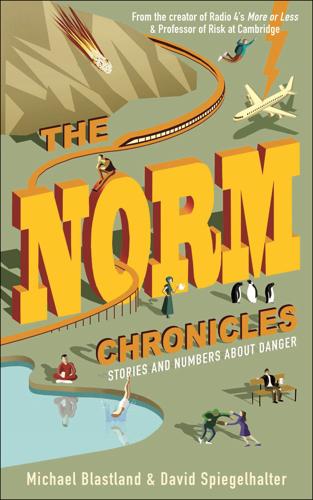
The Norm Chronicles
by
Michael Blastland
Published 14 Oct 2013
Available from: http://www.informationphilosopher.com/solutions/philosophers/chrysippus/. 3. Oppenheimer, J.R. Science and the Common Understanding (New York: Simon and Schuster, 1954). 4. Adams, D. The Hitchhiker’s Guide to the Galaxy (New York: Random House, 1997). 5. Rich, M.D. A Million Random Digits with 100,000 Normal Deviates (Santa Monica, Rand Corporation, 2001). 6. See Extreme Fire Behavior, Atlantic Magazine (September 2012). Chapter 15: Transport 1. The Guardian. Life Sentence for Train Murder of Student. 10 Nov 2006. Available from: http://www.guardian.co.uk/uk/2006/nov/10/ukcrime. 2. Currie, G., Delbosc, A., Mahmoud, S. Perceptions and Realities of Personal Safety on Public Transport for Young People in Melbourne.
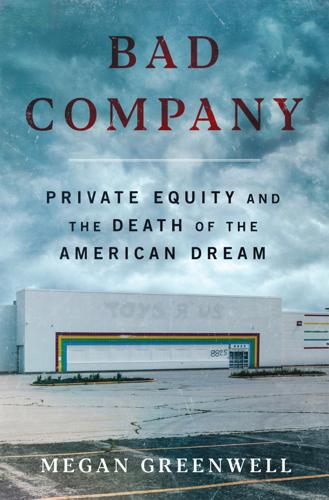
Bad Company
by
Megan Greenwell
Published 18 Apr 2025
Now the new company: Jonathan Schwarzberg, “Apollo Extends Olive Branch to Investors on LifePoint Loan,” Reuters, November 16, 2018, https://www.reuters.com/article/lifepoint-loan-idUSL2N1XR0R9. They found that on average: Chapin White and Christopher M. Whaley, “Prices Paid to Hospitals by Private Health Plans Are High Relative to Medicare and Vary Widely: Findings from an Employer-Led Transparency Initiative,” RAND Corporation, May 9, 2019, https://www.rand.org/pubs/research_reports/RR3033.html. When the researchers: Seth Klamann, “Hospitals in Wyoming Charging Significantly More than Medicare, National Study Finds,” Casper Star-Tribune, June 10, 2019, https://trib.com/news/state-and-regional/govt-and-politics/health/hospitals-in-wyoming-charging-significantly-more-than-medicare-national-study/article_0ee7ea88-0964-596c-8cfd-6581e726367a.html.
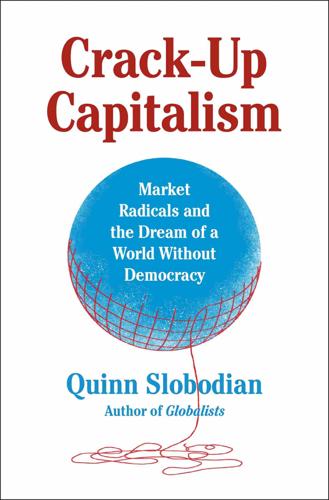
Crack-Up Capitalism: Market Radicals and the Dream of a World Without Democracy
by
Quinn Slobodian
Published 4 Apr 2023
In November 2021, he unveiled plans for a Bitcoin City, with power generated by a volcano, and a giant central square in the shape of the Bitcoin logo.89 Proponents of the start-up city spoke at the gathering about how Bitcoin could contribute to the dream of “opting out on every layer.”90 They were in talks with Bukele about turning it into a “free private city” even as they pursued opportunities farther south in Jair Bolsonaro’s Brazil, through the University of Chicago–educated minister of the economy Paulo Guedes.91 History shows there is always another fantasy island on the horizon. 11 A Cloud Country in the Metaverse Network types REPRODUCED WITH PERMISSION FROM PAUL BARAN, “ON DISTRIBUTED COMMUNICATIONS” (SANTA MONICA, CA: THE RAND CORPORATION, 1964), RAND REPORT: RM-3420-PR While much of the action in Neal Stephenson’s 1992 novel Snow Crash takes place in a fractured geography of gated communities, private prisons, racist enclaves, and jerry-rigged refugee ships, the heart of the plot is in a place that is a non-place: the Metaverse.
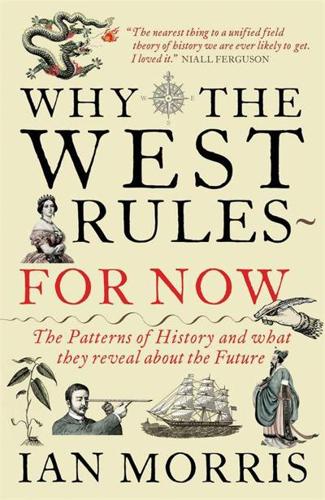
Why the West Rules--For Now: The Patterns of History, and What They Reveal About the Future
by
Ian Morris
Published 11 Oct 2010
According to Steven Metz, a professor at the United States Army War College, “We will see if not identical technologies, then parallel technologies being developed [outside the United States], particularly because of the off-the-shelf nature of it all. We’ve reached the point where the bad guys don’t need to develop it; instead they can just buy it.” A RAND Corporation report even suggested in 2001 that “the U.S. and its military must include in its planning for possible military conflict the possibility that China may be more advanced technologically and militarily by 2020.” The United States will probably be the first nation to develop a functional antimissile shield, as well as robots and nanoweapons that render human combatants obsolete, cybertechnology that can neutralize or seize control of enemy computers and robots, and satellites that militarize space.
…
I., 15, 530, 543 Leninists, 15–16 Lenovo, 597 Leo III, Pope, 362 Leonardo da Vinci, 419, 420, 589 Leopold, King, 519 Levant, 189, 248 Levellers, 452–53 Levitra, 594 Li, King, 233 Liang dynasty, 333 Libya, 218, 235, 605n Liezi, 258 Li Jianping, 546 Lincoln, Abraham, 594 Ling, Duke, 252–53 Lingdi, Emperor, 301, 302 Linnaeus, Carolus, 474 Lin Xin, King, 213 Lin Zexu, 8, 12 Linzi (China), 251 Li Ruzhen, 514 Lithuania, 455 Little Ice Age, 398 Liu Bang, 283 Liu Daxia, 417 Liujiang (China), 68 Liverpool–Manchester railroad, 509 Locke, John, 471, 481 London, 39, 92, 436, 451, 482, 501, 502, 528, 529 plague in, 455 population of, 152, 482n Longmen (China), 340, 341 Longwangcan (China), 97 Lord of the Rings, The (Tolkien), films based on, 53 Los Alamos National Laboratory, 613 Lost Tribes of Israel, 391 Louis XVI, King, 488 Lu (China), 251–52, 262 Lü Buwei, 204 Lucky Latitudes, 85, 114, 561 Lu Gwei-djen, 475–76 Luoyang (China), 273, 299–302, 305, 336, 338 Luoyi (China), 243 Luther, Martin, 447, 453, 573 Lydia (Anatolia), 250 Maastricht Treaty, 533n Macao, 435, 477, 548 Macartney, Lord, 484, 515, 572–73 Macedon, 186, 268, 269, 292, 524 Machiavelli, Niccolò, 404, 418–20 MacNeish, Richard, 120–21 Maddison, Angus, 582–83, 587 Madeira Islands, 414 Mafia, 231 Magadha (India), 254n Magnificent Seven, The (film), 440n Magyars, 363 Mahavira, 254n Majapahit (Java), 393, 406 Majors, Lee, 594 Malacca, 431–32 Malaya, 535 Malaya Síya (Siberia), 79 Malaysia, 534, 567 Malcolm X, 351 Malinowski, Bronislaw, 133–34, 136 Malta, 189, 193 Ma’mun, Caliph al-, 357, 358, 370 Manchuria, 290, 335, 386, 531 Manchus, 458, 473, 478 Manhattan, 465 Mann, James, 588 Man peoples, 245 Maodun, 293 Mao Zedong, 16, 62n, 149, 423, 425n, 522, 534–35, 543–48, 552, 553, 567, 579, 589 Marcus Aurelius Antoninus, Emperor, 273, 308–10 Marines, U.S., 52 Marshall Plan, 533 Marx, Karl, 15, 21, 503–506, 512–14, 544, 549, 566 Massachusetts, colonial, 470 Massagetae, 277, 278 Mauryan Empire, 284 Mecca, 349, 351, 408 Medes, 248, 278 Medieval Warm Period, 363, 366, 367, 371, 373, 376, 397, 599 Medina, 349 Meditations, The (Marcus Aurelius), 308n Mehrgarh, 105 Melbourne, Lord, 8, 12, 148 Memphis (Egypt), 187 Mencius, 230 Menes, 185 Menzies, Gavin, 408, 410, 420n, 421 Merneptah, Pharaoh, 218 Merton, Robert, 568 Mesopotamia, 33, 34, 179–84, 203, 205, 221, 235, 271, 358n Akkadian Empire in, 189, 192–94, 209 Arabs in, 352, 353 Arameans in, 218 archaeological sites in, 188–89 cities of, 181, 184, 186, 191, 197, 200, 201, 562 (see also Uruk) collapse of, 206, 210, 215 farming in, 177, 179, 184, 196, 250, 499, 561–62 impact of climate change on, 180–81 metallurgy in, 181 redistributive economy of, 196, 225 Roman Empire and, 294–95 trade of, 181 Turks in, 348, 349, 354n writing in, 123, 124; see also Assyria metallurgy, 222, 233, 420; see also specific metals Metz, Steven, 615 Mexico, 8, 17, 19, 32, 139, 159, 213, 410, 464, 601 prehistoric, 114, 117, 120 Miao, 450 Michelangelo, 418–19, 439 Michigan, University of, 106 Microsoft, 542 Midas, King, 277 Middle Ages, 14, 83, 144, 418 migration, 28, 33, 298, 317, 500, 560, 598, 601, 604, 610, 611 in ancient world, 218, 223–25 in China, 334, 359, 392, 553 mass, 577 prehistoric, 49, 60, 75 steppe, 457, 459, 564, 601 of Turkic tribes, 366 Mikado, The (Gilbert and Sullivan), 522–23 Milan, 404 Milankovich cycles, 65 Military Balance (annual), 151 Mill, John Stuart, 513 Milton, John, 32 Ming dynasty, 404–410, 413, 429, 441, 443, 444, 453, 458, 462, 473, 543, 575 mining, 155, 320, 459, 460, 473, 474, 523 Mithras, 323 Mittani, 197, 198 Mogadishu (Somalia), 408 Mongolia, 276, 295, 388, 397 Mongols, 393, 400, 401, 407, 416, 427, 441, 457, 458 in China, 388–89, 396, 398, 404–406, 576 in Europe, 391, 397, 455, 567, 574 in Muslim core, 391–92 Monte Circeo (Italy), 59 Monte Polizzo (Sicily), 240–41, 365–6 Monte San Giovanni (Italy), 404 Montesquieu, Baron de, 474 Monte Testaccio (Italy), 289 Monte Verde (Chile), 97 Montezuma, 17, 430 Monty Python’s Life of Brian (film), 286 Moore, Gordon, 592–93 Moore’s Law, 592, 596 Morgan, Captain Henry, 485 Mosaic Law, 391 Moscow, 455, 457, 465, 541 Moses, 218, 261, 391 Mountain, Armine, 143 Movius, Hallam, 47–48, 59 Movius Line, 48, 48–51, 60, 75 Mozi, 257–59, 261 Mu, King, 233 Muhammad, 349–53, 356, 357, 364, 366, 367, 452, 566, 567 Mumbai (India), 149, 274 Mumbwa Cave (Zambia), 64 Mureybet (Syria), 94, 97 Muslims, 363–68, 382, 389, 408, 447, 564, 605 in China, 407, 478 internecine conflicts of, 357–58, 360–61 (see also Shiites; Sunnis) in Italy, 365, 371 militarism of, 351–54, 566–67 Mongols and, 389, 391–93, 401 in Spain, 360, 362, 370, 371, 396 trade of, 365, 395, 429; see also Islam Mussi, Gabriele de’, 397n Mutual Assured Destruction, 580 Mycenaeans, 197, 198 Nagasaki (Japan), 435, 483, 515, 532, 610, 614, 617 Nanjing, 407, 410, 413, 416, 422, 423, 442, 475; see also Jiankang Napoleon, Emperor, 403n, 486, 488–89, 532, 551, 572 Naram-Sin, King, 189, 192 Nariokotome (Kenya), 45 Narmer, King, 185–87 Naroll, Raoul, 139, 140, 144, 151 National Geographic (magazine), 125 National Intelligence Council, U.S., 582, 601, 602 Nationalists, Chinese, 51, 534 National Science Foundation, 595 Native Americans, 19, 109, 119, 430, 450, 464, 522 Neanderthals, 54–61, 64, 69–70, 72, 75, 80, 88, 89, 150 Needham, Joseph, 475–76, 479 Nefertiti, Queen of Egypt, 261 Nemesis (ship), 9, 517 Neo-Confucians, 376, 422 Nero, Emperor, 307 Nerchinsk (Siberia), 455, 457, 458 Nesbit, Edith, 182 Netherlands, 160, 446, 448, 450 English wars with, 500, 573, 574 trade of, 465–67, 483, 485, 486 New Age, 261n Newfoundland, 416 New Guinea, 116, 117, 119, 133 New Policies, 376, 422 Newton, Isaac, 113, 470, 474, 481, 500, 573, 574 New York City, 152, 509, 541 railroad from San Francisco to, 507 New Yorker magazine, 613 New York Times, The, 551, 610 New York Tribune, 15 New Zealand, 519 Nicaragua, 421 Nicholas II, Tsar, 524, 525, 528 “Nightfall” (Asimov), 92–93, 580 Nineveh, 247, 248, 278 Niuheliang (China), 126 Nixon, Richard M., 541, 546–48, 552 Noah’s Flood (Ryan and Pitman), 81n Nobel Prize, 55, 571, 583, 593 Normans, 364, 371–72 Norsemen, 371, 398 North Atlantic Treaty Organization (NATO), 605 Northern Wei kingdom, 329, 333, 335–36, 362 North Korea, 12, 16, 194, 534 Norway, 146, 147, 398 Novum Organum (Bacon), 468 Nubians, 247 nuclear weapons, 12, 182, 532, 534, 580, 591, 605, 607, 608, 610, 614, 616 “Nylon Wars, The” (Riesman), 540 Octavian, see Augustus Odoacer, King, 316–17 Ögödei, Khan, 389, 391, 393 oil, 510–11, 528, 531, 537, 551, 601, 604, 611, 630, 633 Arab states’ embargo on, 535, 548 world demand for, 612 Olduvai Gorge (Tanzania), 43, 47 Old World Exchange, 296–98, 301, 307, 308, 316, 321, 327–29, 347, 393, 395, 396, 401, 563 Second, 393–97, 399–401, 564 Oliver Twist (Dickens), 506 Olympic Games, 12, 594 On Christian Theology (Aquinas), 371 On the Origin of Species (Darwin), 73, 136 Opium War, 7–9, 18, 143, 517 Organization for Economic Cooperation and Development, 583 Organization for European Economic Cooperation, 533n Orwell, George, 530 Osman II, Sultan, 452 Ottomans, 401–403, 431, 438, 442–49, 462, 489, 526, 528, 574, 605; see also Turkey Ouyang Xiu, 376 Oxenham, John, 462–63 Oxford University, 110, 353, 396, 574 Pachomius, 325 Pakistan, 32, 114, 115, 186, 249, 353, 605 ancient archaeological sites in, 105, 106 Palermo (Sicily), 365, 371 Palestine, 323, 349, 352 Palmerston, Henry, 518 Palmyra (Syria), 311 Paludan, Anne, 283n Panlongcheng (China), 210 Paradise Lost (Milton), 32 Paris, 438, 469–72, 483, 489, 528 Academy of Sciences, 479 Paris, Matthew, 391 Paris, University of, 105–106, 112 Parliament, British, 8, 496, 506, 511, 518, 534 Parmenides, 261 Parthenon (Athens), 241 Parthia, 292, 294, 296, 308, 310, 335 Paul, St., 324 Pazyryk (Siberia), 276 Pearl Harbor, Japanese bombing of, 52, 533n Pearsall, Deborah, 121 Pekah, King, 246–47 Peking Man, 50–54, 56, 57, 60, 64, 70, 72, 120n, 211 Peking Opera, 303–304 Peking University, 120 Peloponnesian War, 268 Pengtoushan (China), 120 Penido Velho (Spain), 287, 288, 309 Peony Pavilion, The (Tang Xianzu), 436 Pepy II, King, 193 Perestrello, Rafael, 385 Perry, Commodore Matthew, 10, 14, 517 Persia, 246, 248–50, 267–70, 292, 342, 343, 377, 444, 457, 478, 524, 528, 566 Alexander’s conquest of, 187, 268–69 Arabs and, 349, 352, 356–57, 360 Byzantium and, 345–48, 616 language of, 138 nomad problem of, 278, 294 oil fields in, 511 Ottoman Turks and, 445, 449, 574 Roman Empire and, 308, 310–14, 328 social development of, 253 Peru, 19, 32, 410, 421n, 450, 460, 462–63 prehistoric, 86, 114, 116, 117, 119 Peter, St., 362 Philip II, King of Macedon, 268 Philip II, King of Spain, 447–49 Philippines, 127, 421, 462, 535 Philistines, 217, 218 Phoenicia, 234, 239–42, 244, 250, 365 Phrygia, 277 Picasso, Pablo, 74 Pillow Book, The, 360 Ping, King, 243 Pinker, Steven, 85 Pinnacle Point (South Africa), 63, 64 pirates, 363, 408, 431, 442, 443, 445, 462–63, 485 Pires, Tomé, 431–33, 435 Pisa, 371 Pistorius, Oscar, 594 Pitman, Walter, 81n Pitt, William, 486, 488 Pizarro, Francisco, 460 plagues, 217, 296–97, 301, 309, 399–400, 412; see also bubonic plague; epidemics Plato, 148, 256, 260, 325, 589 Pliny the Elder, 273 Plotinus, 324 Poitiers (France), 352 Poland, 112, 353, 368, 419, 455, 458, 549 Politics (Aristotle), 260 Polo, Marco, 384–85, 387, 392, 427 Pol Pot, 16 Polybius, 263–64, 270 Polynesia, 421n Pomeranz, Kenneth, 18, 20–21, 40, 158, 159, 168, 169 Pope, Alexander, 470 Popper, Karl, 157 population, 19, 20, 139, 150n, 237–39, 365, 467, 528, 538–40, 561, 565–66, 577–79, 612 aging, 551, 586, 617 of Britain, 505, 509 of Byzantium 347 of China, 17, 19, 201, 206, 237, 238, 242, 243, 286, 289, 298, 307, 355, 377, 392, 440, 484, 544, 547, 585 of Egypt, 185, 200, 296 epidemics and, 217, 295–96, 305, 308, 310, 347, 396, 437, 438, 455 farming and, 100, 103, 108, 319, 320, 600–601 global warming and, 601, 603 Greek, 219, 239 indigenous, American, 430, 464, 529 of Japan, 406, 440, 483 of Mesopotamia, 188 Muslim, 363 prehistoric, 66, 72, 76 of Roman Empire, 286, 291, 298, 312, 328, 335 urban, 149, 151, 338 Porphyry, 324 Portugal, 33, 414, 416, 419, 427, 430–32, 435, 440, 442, 460 Potosí (Bolivia), 460 Prester John, 414, 416 PricewaterhouseCoopers, 582 Priestley, Joseph, 568 Prince, The (Machiavelli), 419 Princess Taiping (ship), 413 Principia Mathematica (Newton), 470 privateers, 462 Procopius, 345 “Progress: Its Law and Cause” (Spencer), 135 Project Kittyhawk, 596 Protagoras, 261 Protestantism, 20, 448 Prozac, 594 Puabi, Queen, 189 Punjab (India), 271 “Pure Land School,” 322 Puritans, 574 Puyi, Emperor, 528 Pylos (Greece), 216, 217 Qermez Dere (Iraq), 94, 96, 97, 102 Qi (China), 233, 244, 251, 253, 262, 265n Qiang people, 213, 221, 299–305, 307 Qianlong, Emperor, 484, 515 Qicunzhen (China), 382 Qi Jiguang, 442–43 Qin (China), 244, 251, 253, 259, 262–70, 275, 277, 279, 281–85, 292, 528, 610 First Emperor, 279, 282, 284–85, 289, 292, 293, 421n, 567 Qing dynasty, 458–59, 473, 476, 484, 499–500, 518, 520, 523, 528, 573, 574, 587 Qiying, 517 Qiying (ship), 6, 7 Quaid, Dennis, 92 Quanzhou (China), 379 Quebec, 463, 465 railroads, 12, 507, 509, 515, 523–24 Railway Children, The (Nesbit), 182 Raleigh, Walter, 463 Ramses II, Pharaoh, 199, 214, 215, 218, 220 Ramses III, Pharaoh, 216–18 Ramses XI, Pharaoh, 219 RAND Corporation, 615 Ranters, 452–53 Ravenna (Italy), 344 Red Cliffs, battle of, 304 Red Guards, 546 Red-Head Shiites, 444 Red Turbans, 404, 405 Reindeer Cave (France), 69 Rembrandt, 148 Renaissance, 417–22, 426, 433, 469, 474, 476, 569, 575, 589 Renfrew, Colin, 110, 112 Republic, The (Plato), 256, 260 Revivification of the Sciences of Religion (al-Ghazali), 367 Richardson, Lewis Fry, 608 Richardson, Samuel, 503 Riesman, David, 540 Rifkin, Jeremy, 591 Rise and Fall of the Great Powers, The (Kennedy), 248 Rites of Zhou (Confucian handbook), 204 Roanoke Colony, 463–64 Roberts, Richard, 496 Robinson Crusoe (Defoe), 486 Rollo, King, 371 Romance of the Three Kingdoms, The, 303, 304 Roman Empire, 136, 149, 159, 267, 280, 284–93, 320, 325, 341, 354, 370, 373, 403, 457, 482 China and, 273, 276 Christianity in, 263, 323, 326–28 collapse of, 14, 312–17, 533, 576, 611, 621, 569, 574 democracy made redundant in, 260 economy of, 288–91, 311–12, 335, 393, 499, 500, 564 Egypt and, 273, 283–84, 287, 311 energy use in, 157, 287, 380–81 environmental impacts of, 287–90 founding of, 284, 285 frontier wars of, 308–11, 323, 349 Greeks in, 280, 286 Han dynasty compared with, 285, 289, 291, 298, 307 Justinian and, 343, 345–48 literacy in, 379 Persia and, 308, 310–14, 328, 360, 361 plagues in, 296, 297, 307 Renaissance fascination with, 418–20 social development in, 168, 169, 307, 332, 382, 455, 469, 481, 607 Romania, 290, 312 Romanovs, 459, 499–500, 528, 551 Romans, ancient, 228, 263–64, 269–71, 376, 444 armies of, 265, 277, 289, 292 civil wars of, 281, 283 mythology of, 244, 263 Parthians and, 292–94 Spanish mines of, 155 trade of, 273–76 waterways of, 334–35, 337, 563; see also Roman Empire Roman Warm Period, 290, 297, 299, 599 Rome, city of, 320 medieval, 363, 369 papacy in, 398, 404 population of, 148–49 Silk Road linking China to, 125 Rome (television series), 148 Rong people, 242–44, 263, 278 Royal Astronomical Society, 145n Ruan Ji, 320–21 Russia, 368, 445, 455–60, 482, 488–89, 511, 518, 530, 550, 574, 601, 604–606, 608 Communist, see Soviet Union Russian Revolution, 528 Russo-Japanese War, 17, 525–26, 528 Ryan, William, 81n Sacrifice to Heaven, 340 Sagan, Carl, 613–14, 617 Sahara Desert, 116, 117, 119 Sahlins, Marshall, 106–107, 109, 140 Sakya (India), 262 Salem witch trials, 470 Sandy Creek (Australia), 77 San Francisco–New York railroad, 507 Sanxingdui (China), 214 Saracens, 353, 363 Sardinia, 198, 200, 220, 240 Sargon, 189, 192 Sassanid dynasty, 310 Saudi Arabia, 605n Sautuola, Don Marcelino Sanz de, 73–74 Sautuola, Maria Sanz de, 74–75 Scandinavia, 363, 371 Schechter, Solomon, 365 Schmandt-Besserat, Denise, 124 Schöningen (Germany), 57 Schularick, Moritz, 585 Science Fiction Writers of America, 93 Scientific American (magazine), 125, 154 Scorpion King, 185, 187 Scotland, 353, 451, 472n Scythians, 278, 279, 292, 294 Secret History, The (Procopius), 345 Segestans, 241, 244 Self-Help (Samuels), 503 Seljuk Turks, 363, 366, 367, 372, 374 Sennacherib, King, 247–48 September 11, 2001, terrorist attacks, 551 Serbia, 605 Seven Sages of the Bamboo Grove, 320–21 Seven Samurai, The (film), 440n Severe Acute Respiratory Syndrome (SARS), 603 Severin, Tim, 421n Sexual Politics (Millett), 540 Shakespeare, William, 436 Shalmaneser, King, 247 Shamshi-Adad V, King, 239 Shandong (China), 202, 203, 206, 207, 215 Shang, Lord, 259, 260, 265 Shang dynasty, 123, 124, 209–15, 220–22, 229–31, 235, 285, 610 Shanghai (China), 501n, 503, 524, 548 Shanghai Cooperation Organization, 606 Shangshan (China), 105 Shanidar Cave (Iraq), 57, 59, 60 Shanks, Michael, 141 Sharkalisharri, King, 192, 193 Sheba, Queen of, 234 Sheklesh (Sicilians), 217, 218 Shen, 243 Shen Fu, 514 Shen Kuo, 419–20, 589 Sherden (Sardinians), 217, 218 Sheshonq I, King, 235 Shihuangdi, 267 Shiites, 358, 364, 367, 444–45, 449, 574 Shklovskii, Iosif, 613–14, 617 Shulgi, King, 193–94 Shunzhi, Emperor, 478 Siberia, 79, 125, 455–58, 460 Sicily, 198, 200, 220, 268, 277, 345, 360, 365, 368, 371 archaeological sites in, 95, 240–41, 365–66 Sic et Non (Abelard), 371 Sidonius, 314, 319 Sierra Leone, 146, 147 Silk Roads, 125, 275, 297, 396, 427, 429 silver, 7, 188, 275, 348, 405, 411, 454, 463, 515–16 mining and processing of, 19, 155, 268, 287, 460–62 Sima Qian, 211, 214, 242–43, 250, 282 Singapore, 534, 588 Singularity, the, 592–96 Sistine Chapel, 493 Six Million Dollar Man, The (television show), 594, 597 Six Records of a Floating Life (Shen Fu), 514 “Sixteen Kingdoms of the Five Barbarians,” 306 slaves, 286, 290, 310, 372, 439, 474 in ancient world, 191, 194, 197, 199–200 in colonial Americas, 19, 461–66, 468 in China, 264, 273, 299, 342 Christian, 403, 444 of Portuguese, 414, 416 of Romans, 263–64, 269, 273, 283, 312 Turkic, armies of, 358, 361, 366 in United States, 497 Smalley, Richard, 593 Smerdis, 249 Smil, Vaclav, 608 Smiles, Samuel, 503, 514 Smith, Adam, 39–40, 490, 501, 511 Smith, Grafton Elliot, 222 Socrates, 14, 255, 256, 260, 262 Solomon, King, 234, 235 Solzhenitsyn, Aleksandr, 457 Somalia, 604 Song dynasty, 373–83, 389, 421, 482, 543, 575, 576, 590 collapse of, 386–87, 392, 611, 621 Confucianism in, 423 economy of, 378n, 377–80, 386, 499, 500, 564 social development in, 167, 168, 455, 473, 481, 607 Song Jian, 201 Sons of Heaven, 236, 239, 245 Sophists, 261 South Africa, 47, 61, 63, 519 South Korea, 534, 543, 588, 597 Soviet Union, 526, 530–35, 540–44, 546–51, 553, 578–80, 587, 604, 616 Spain, 287, 309, 311, 347, 353, 365, 404, 466, 472 American colonies of, 413, 460–64, 467, 485 ancient, 33, 159, 189, 193, 215 archaeological sites in, 55, 73 Germanic tribes in, 314–15 Habsburg, 446, 448–49, 460, 462 Muslim, 360, 362, 370, 371, 396 prehistoric, 54, 55, 69, 73, 74, 77 Romans and, 155, 270, 289 Spanish Armada, 316, 573–74 Spanish Inquisition, 574 Sparta, 268, 524 Special Economic Zones, 548 Speer, Albert, 579 Spencer, Herbert, 135, 138, 139, 142, 148, 544 Spice Islands, 379, 431, 575 Springs and Autumns of Mr.
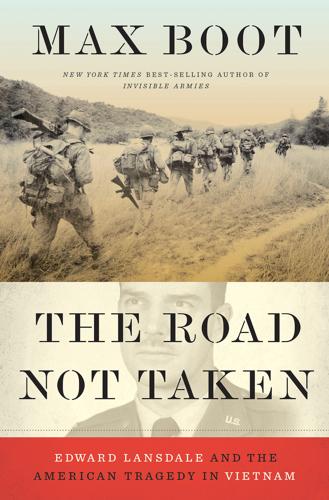
The Road Not Taken: Edward Lansdale and the American Tragedy in Vietnam
by
Max Boot
Published 9 Jan 2018
He later called his years in the Corps “the happiest time in my life.”34 Ellsberg left the Marines in 1957 to assume a prestigious fellowship at Harvard and continue his graduate studies. Eventually, in 1962, he would complete his PhD. By then, he had already been working for three years at the RAND Corporation in Santa Monica, California, the nation’s leading defense think tank, where intellectual heavyweights such as Albert Wohlstetter, Herman Kahn, Bernard Brodie, and Harry Rowen were becoming famous for applying social science methods to the study of nuclear deterrence. Even at RAND, where genius was common, Ellsberg stood out as a “supergenius,” possibly a future Nobel Prize winner.35 He was also a super-womanizer who openly bragged to colleagues about his conquests—and even passed around the RAND office nude photos of women he had slept with.36 His family, including two young children, did not command the same level of attention.
…
Fletcher, xlii, 421–22 psychological warfare, 11, 33, 126–28, 132–33 in Vietnam, 182, 205, 216, 218, 225, 249–50, 296, 369–70, 437 Public Works Administration, 21 Puccini, Giacomo, 68–69 Pueblo, 533 Pyrard, François, 68 Quakers, 506 Quang Ngai Province, Vietnam, 251 Queens–Midtown Tunnel, 22 Quezon, Aurora, 106 Quezon y Molina, Manuel, 51, 54, 157 Quiet American, The (film), 292, 293–94, 296 Quiet American, The (Greene), xli, xliii, 172, 254–55, 290–92, 462 Qui Nhon, Vietnam, 169, 251, 252 Quirino, Elpidio, 105, 108, 114, 125, 135, 138, 143, 146–47, 154, 158, 178 dependent on U.S., 113 desire to kick out EGL, 147–48 in election of 1953, 159, 161 as ineffective leader, 107 Magsaysay’s authority clarified by, 123 at Magsaysay’s inauguration, 165 Quirino, Tony, 155, 161 Quirino Gonzalez, Vicky, 141–42 racism, 5, 14 Radford, Arthur W., 190, 241, 603 Radio Free Europe, 127 Radio Liberty, 127 Ramparts, 576 RAND Corporation, 467, 468, 544 Rasputin, Grigori, 145, 159, 284 Reader’s Digest, 224, 323 Reagan, Ronald, 472, 589 Recto, Claro, 142, 285 Redford, Robert, 164 Redgrave, Michael, 292 Redick, Joseph P., 219, 240, 247, 261, 343, 357, 358, 465, 466, 494, 605 and Battle of Saigon, 265–66 at EGL’s funeral, 595 on Hong Kong trip, 496, 497 in meeting with Thé, 256–57 in return to Saigon, 339 and uprising against Diem, 262 Vietcong investigated by, 345 Red Scare, 301 Red Star over China (Starr), 76 re-education camps, 571 Regional Force, 566 Reilly, John, 451 Reinhardt, G.
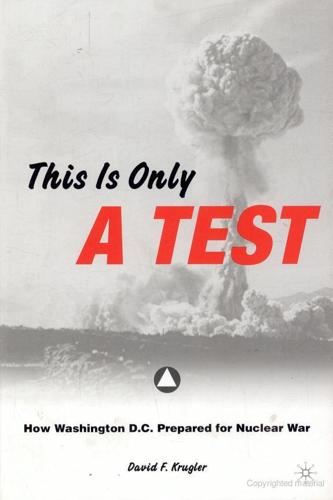
This Is Only a Test: How Washington D.C. Prepared for Nuclear War
by
David F. Krugler
Published 2 Jan 2006
The NSC study Consideration of Policy on Continental Defense (NSC 5606), finished in the summer of 1956, called for shelters.15 In January 1957, Holifield introduced a bill to establish a Department of Civil Defense and to require it to construct “group shelters” in every target zone. A panel organized at the President’s behest, the Gaither Committee, proposed in November 1957 a fallout shelter program costing approximately $25 billion. In early 1958, both the RAND Corporation and a panel headed by Nelson Rockefeller published reports calling for national shelter programs. Shelter advocates shared two assumptions: one, Americans had nowhere to go if Soviet nuclear weapons found their targets; and two, shelters had considerable deterrence value. As the Gaither report put it, shelters would discourage “the enemy from attempting an attack on what might otherwise seem to him a temptingly unprepared target.”16 Eisenhower didn’t agree.
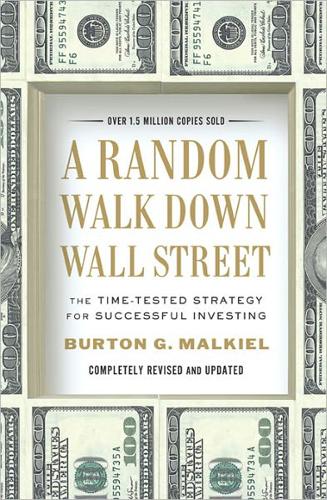
A Random Walk Down Wall Street: The Time-Tested Strategy for Successful Investing
by
Burton G. Malkiel
Published 10 Jan 2011
The theory was invented in the 1950s by Harry Markowitz, and for his contribution he was awarded the Nobel Prize in Economics in 1990. His book Portfolio Selection was an outgrowth of his PhD dissertation at the University of Chicago. His experience has ranged from teaching at UCLA to designing a computer language at RAND Corporation. He even ran a hedge fund, serving as president of Arbitrage Management Company. What Markowitz discovered was that portfolios of risky (volatile) stocks might be put together in such a way that the portfolio as a whole could be less risky than the individual stocks in it. The mathematics of modern portfolio theory (also known as MPT) is recondite and forbidding; it fills the journals and, incidentally, keeps a lot of academics busy.
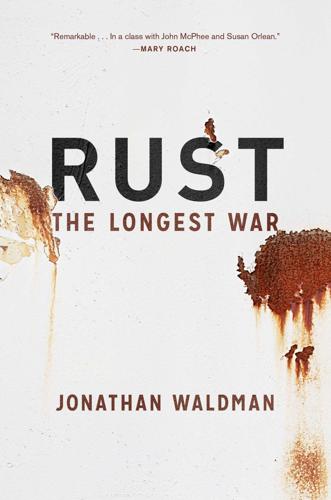
Rust: The Longest War
by
Jonathan Waldman
Published 10 Mar 2015
At the US Senate Armed Services Committee, Johnson was directed to the staffers on the Subcommittee on Readiness and Management. There were two staffers. One covered military construction. The other, who covered everything else, had just arrived on Capitol Hill. Her name was Maren Leed, and though she was only thirty years old, she was a former fellow at RAND Corporation, the defense-oriented think-tank, with a doctorate in quantitative policy analysis. As it happened, she’d also worked as an analyst in the Office of the Secretary of Defense (OSD) and was hunting for a signature issue for the new ranking member on the committee. That was Senator Daniel Akaka of Hawaii—a state very much victimized by military corrosion.
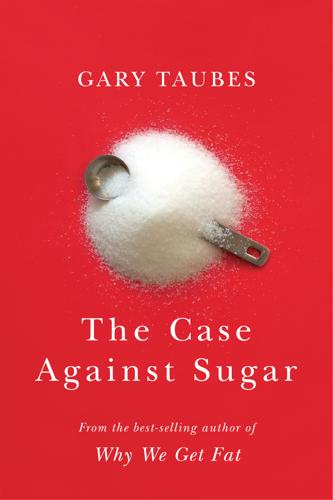
The Case Against Sugar
by
Gary Taubes
Published 27 Dec 2016
“not about demonizing”: PBS NewsHour 2010. One in four Americans: NIDDK 2014b. A conservative estimate: The CDC estimates the direct and indirect costs for heart disease and stroke at $315 billion each year, cancer at $157 billion, diabetes at $245 billion, and obesity (in 2008) at $147 billion (CDC 2016a). The Rand Corporation has estimated the total monetary cost of dementia, including Alzheimer’s, at between $157 and $215 billion (Hurd et al. 2013). Alzheimer’s as type 3 diabetes: See, for instance, Guthrie 2007. “We are to admit”: See https://en.wikiquote.org/wiki/Isaac_Newton. “Everything should be”: See https://en.wikiquote.org/wiki/Albert_Einstein.
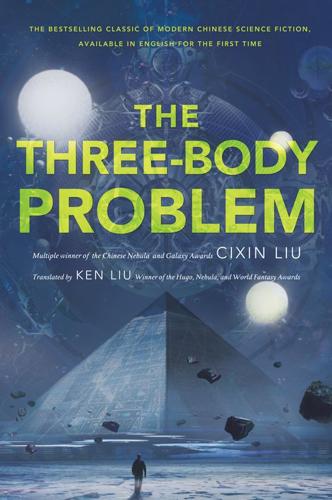
The Three-Body Problem (Remembrance of Earth's Past)
by
Cixin Liu
Published 11 Nov 2014
The most shocking conclusion of all was that the impact would have nothing at all to do with the degree and type of contact (unidirectional or bidirectional), or the form and degree of advancement of the alien civilization. This was the theory of “contact as symbol” proposed by sociologist Bill Mathers of RAND Corporation in his book, The 100,000-Light-Year Iron Curtain: SETI Sociology. Mathers believed that contact with an alien civilization is only a symbol or a switch. Regardless of the content of the encounter, the results would be the same. Suppose that the nature of the contact is such that only the existence of extraterrestrial intelligence is confirmed, with no other substantive information—what Mathers called elementary contact.
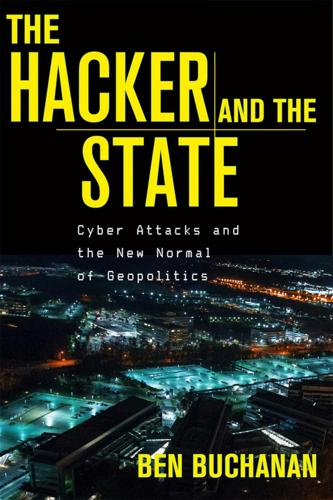
The Hacker and the State: Cyber Attacks and the New Normal of Geopolitics
by
Ben Buchanan
Published 25 Feb 2020
Mark Seal, “An Exclusive Look at Sony’s Hacking Saga,” Vanity Fair, February 4, 2015. 3. “DPRK FM Spokesman Blasts U.S. Moves to Hurt Dignity of Supreme Leadership of DPRK,” Korean Central News Agency, June 25, 2014. 4. Sony Pictures executives sought advice from a North Korea expert at RAND Corporation. As part of his response, that analyst referenced a conversation with the State Department’s special envoy for North Korean human rights issues, saying the envoy was not particularly worried about the threat because it sounded like “typical North Korean bullying.” Seal, “An Exclusive Look at Sony’s Hacking Saga.” 5.

Mbs: The Rise to Power of Mohammed Bin Salman
by
Ben Hubbard
Published 10 Mar 2020
Many of the Wikileaks documents cited here were first reported in “Cables Released by Wikileaks Reveal Saudis’ Checkbook Diplomacy,” NYT, June 20, 2015, and “Wikileaks Shows a Saudi Obsession With Iran,” NYT, July 16, 2015. For background on the Houthis, I consulted “Regime and Periphery in Northern Yemen: the Huthi Phenomenon,” RAND Corporation, 2010. pilgrimage to Mecca: Saudi Foreign Ministry document, Wikileaks, Jan. 22, 2012. https://wikileaks.org/saudi-cables/pics/5357859a-e321-4088-9137-4b69e0a87f30.jpg hand out as he saw fit: Saudi Foreign Ministry document, Wikileaks document: #80451. Undated. https://wikileaks.org/saudi-cables/doc80451.html “the kingdom asks of him”: Saudi diplomatic cable, Wikileaks document #53032.

Habeas Data: Privacy vs. The Rise of Surveillance Tech
by
Cyrus Farivar
Published 7 May 2018
He’s a rare legal mind that knows how to write perl and python code, and continues to do so regularly. Ohm came to legal scholarship in something of a roundabout way. He did his undergraduate work at Yale University, earning dual degrees in computer science and electrical engineering, before going on to be a programmer and network administrator at the RAND Corporation for several years. Then, he decided to go to law school, and was accepted at nearby UCLA. Upon graduating from law school in 1999, Ohm had two clerkships with two different federal judges in California, and finally, by 2001, he served as a DOJ trial attorney, specializing in computer crime and intellectual property.
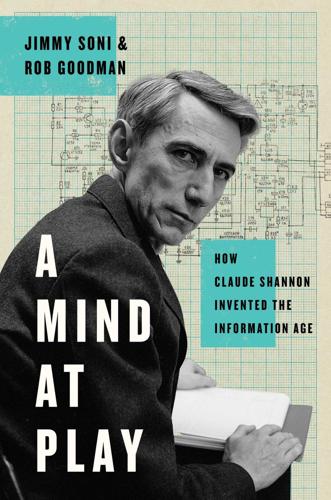
A Mind at Play: How Claude Shannon Invented the Information Age
by
Jimmy Soni
and
Rob Goodman
Published 17 Jul 2017
B., 74, 75 Pickup on Noon Street (Chandler), 152–53 pictures: Nyquist’s prototype for transmitting, 126–27 quantification of, 135 Pierce, John, 112–13, 123, 137, 182, 259 Piper Cub, 47 Pitts, Walter, 177–78 pixels, 135 Plato, 172 Platt, John R., 178 playfulness, as central to CS’s nature, xi, xv, 46, 266, 267, 270, 277, 278–81 Poe, Edgar Allan, 4, 149–50, 151, 211 Poincaré, Henri, 180 Poincaré conjecture, 69 Poland, 14 Pollak, Henry, 70, 199, 205, 226, 235–36 Pollen, Arthur, 294n Polster, Burkard, 250 “Poor Boy, A” (Shannon), 9 Pope, Alexander, 25, 27 Popular Science, 205 “Portfolio Problem, The” (Shannon lecture), 224–25 potentiometers, 87–88 Poundstone, William, 48, 187, 201, 242 Price, Robert, 197–98, 242 Princeton, N.J., 77–78 Princeton University, 79, 141 Prisoner’s Dilemma, 75–76 probability, in information theory, 141–44 problems, CS on strategies for solving, 218–20 Proceedings of the National Academy of Sciences, 244 Profile Tracer, 21–22, 25, 27–28, 31 “Programming a Computer for Playing Chess” (Shannon), 212–16 “Project Cyclops,” 112 “Project X,” see SIGSALY system PTA, 7 Pythian Sisters, 7 Qualcomm, 233 quantum mechanics, 76, 131, 186, 187 Quhi, Abu Sahl al-, 250 radar, 167 Radcliffe College, 62, 63 radio, 265 RAND Corporation, 93 Rastelli, Enrico, 254 Red Cross, 7 redundancy, 132, 151–56, 310n adding, coding for, 159–60 elimination of, coding for, 154–56 in languages, 158–59 noise and, 158–59 transmission speed and, 154–56 relativity, theory of, 76, 186, 187 relay switches, 203–4, 215 CS’s study of, xiii, xv, 34–35, 37–42, 46, 72–73, 160, 203 “Reliable Machines from Unreliable Components” (Shannon lecture), 224 Republicans, 14 Reserve Officers Training Corps (ROTC), 17 restating, in problem solving, 219 Ridenour, Louis, 167, 168, 169 Riemann hypothesis, 69, 209 Roberts, Larry, 232 Rockefeller Foundation, 34, 166, 167 Division of Natural Sciences at, 166 Roosevelt, Franklin D., xiii, 14, 67, 80, 81, 97–98, 150, 182 Rosser, J.
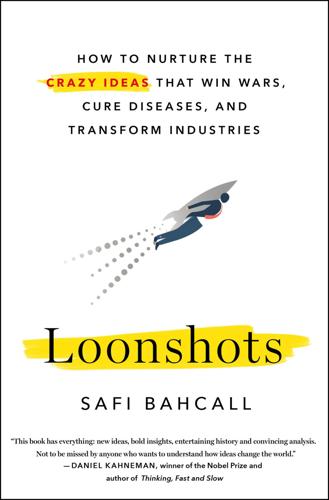
Loonshots: How to Nurture the Crazy Ideas That Win Wars, Cure Diseases, and Transform Industries
by
Safi Bahcall
Published 19 Mar 2019
The celebration lasted less than two years. In 1953 and 1954, three unexplained midair explosions of Comets killed all passengers on board. The government grounded the entire fleet. The Comet explosions scared most of the industry off jets. In case there were any more doubts, a report by the Rand Corporation, the premier national policy and security consulting firm, said that jet travel could never be made economically feasible (BOAC jets flew at a loss). The presidents of American Airlines and Trans World Airlines (TWA) announced they would not pursue jet aircraft. People say, “There’s no way that could ever work.”
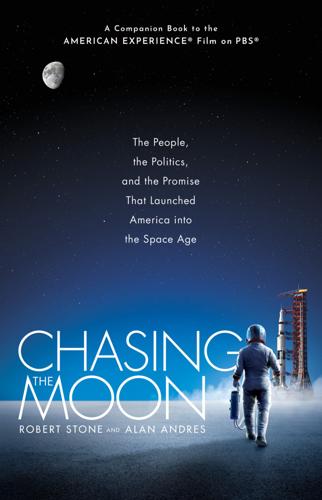
Chasing the Moon: The People, the Politics, and the Promise That Launched America Into the Space Age
by
Robert Stone
and
Alan Andres
Published 3 Jun 2019
Since the beginning of the escalating nuclear-arms race, the two superpowers had been seeking a method to monitor the progress of their opponent’s weapons programs and their compliance with international agreements. Rather than using a high-altitude spy aircraft, which ran the risk of being shot down, the influential global-policy think tank, the RAND Corporation, proposed a space-age alternative: an unpiloted orbiting observational satellite that would either transmit video images or return exposed film reels via automated reentry capsules. President Eisenhower believed that if a scientific research satellite was placed in an orbit that passed over the airspace of a Soviet Eastern Bloc country, this action would establish a precedent for orbital overflight, thus opening up space for observational reconnaissance.
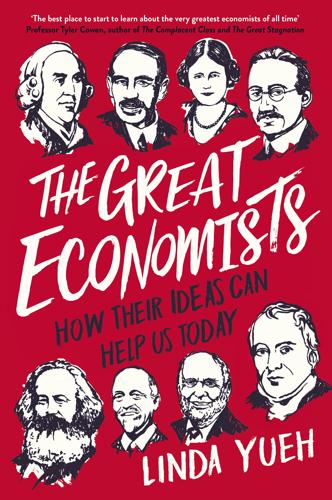
The Great Economists: How Their Ideas Can Help Us Today
by
Linda Yueh
Published 15 Mar 2018
After he received his PhD in economics that year, he joined the Massachusetts Institute of Technology, where he became a professor in 1958. Solow spent his academic career at this leading economics faculty, though he was also visiting professor at Cambridge and Oxford universities in the 1960s. Solow was active in public policy from the start. After obtaining his PhD, he took on consulting assignments for the RAND Corporation in 1952. During his time working with the President’s Council of Economic Advisers from 1962–68, Solow helped draft the Keynesian-influenced economic policies that were the hallmark of the John F. Kennedy and Lyndon B. Johnson administrations. In 1965–69, he served on President Johnson’s Committee on Technology, Automation and Economic Progress, and then on President Richard Nixon’s Commission on Income Maintenance from 1969–70.

New Laws of Robotics: Defending Human Expertise in the Age of AI
by
Frank Pasquale
Published 14 May 2020
David Castlevecchi, “Can We Open the Black Box of AI?,” Scientific American, October 5, 2016, https://www.scientificamerican.com/article/can-we-open-the-black-box-of-ai/. 52. Jennifer Kavanagh and Michael D. Rich, Truth Decay: An Initial Exploration of the Diminishing Role of Facts and Analysis in American Public Life, Santa Monica, CA: RAND Corporation, 2018, https://www.rand.org/pubs/research_reports/RR2314.html; Alice Marwick and Rebecca Lewis, Media Manipulation and Disinformation Online (New York: Data and Society, 2017), https://datasociety.net/pubs/oh/DataAndSociety_MediaManipulationAndDisinformationOnline.pdf. 53. On the distinction between speech and conduct, see, for example, Claudia Haupt, “Professional Speech,” Yale Law Journal 125, no. 5 (2016): 1238–1303. 54.
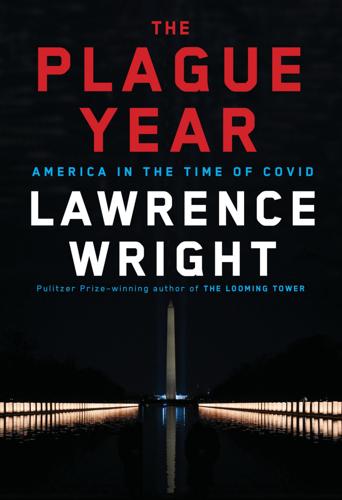
The Plague Year: America in the Time of Covid
by
Lawrence Wright
Published 7 Jun 2021
When he arrived, on January 20, he saw about ten people in the city wearing face masks; a week later, as he departed, nearly everyone was wearing one. Had he waited one more day to return to the U.S., he would have been quarantined. Then he traveled to Europe, and Covid was there to greet him. In February, he taught a course at the RAND Corporation in Los Angeles, and by early March the restaurants were empty and it was getting hard to find a place to eat. He flew back to New York on March 14, six days before the city shut down. All along he was one step behind the virus, “a lagging indicator,” he said. Strongin was sixty-two, thin, tousled, with rimless glasses that gave him a kind of nineteenth-century European intellectual look—Henrik Ibsen without the sideburns.

The Iron Cage: The Story of the Palestinian Struggle for Statehood
by
Rashid Khalidi
Published 31 Aug 2006
Henry Kissinger, organized a brief peace conference meeting in Geneva in 1973, after which he shuttled through the region, negotiating disengagement accords between Israel and Syria and Egypt. The Carter administration tried to return to multilateral diplomacy with the 1977 joint communiqué. 52. Such a rail link was proposed by researchers for the Rand Corporation, in Doug Suisman, Steven Simon, Glenn Robinson, C. Ross Anthony, and Michael Schoenbaum, The Arc: A Formal Structure for a Palestinian State (Santa Monica, Calif.: Rand, 2005). 53. In an interview with Ari Shavit in Haaretz magazine, October, 8, 2004, Weisglass stated: “The disengagement is actually formaldehyde.
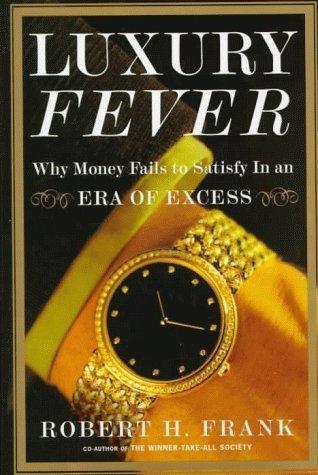
Luxury Fever: Why Money Fails to Satisfy in an Era of Excess
by
Robert H. Frank
Published 15 Jan 1999
In Little Rock, Arkansas, for example, a comprehensive drug prevention program reduced drug-related low-birthweight births by more than 80 percent, and the number of drug-related crimes by 37 percent.100 Project DREAM in Hattiesburg, Mississippi, which focused on teen drinking, resulted in a 45 percent decrease in the number of people under 21 arrested for drunk driving.101 Drug-prevention programs not only work but are also cheap, especially in relation to the enormous costs they prevent. A Rand Corporation study, for example, estimated that every $1 spent on cocaine prevention and treatment programs results in a $7 savings in law-enforcement and health-care expenses.102 Yet consistently we say we cannot afford these programs. The patterns we see in the United States are different in degree but not in kind from those that have begun to emerge in Europe and elsewhere.
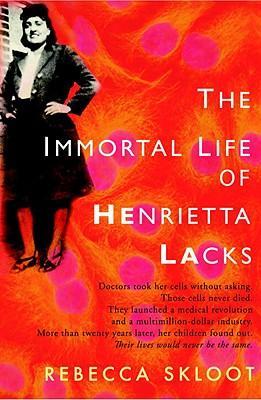
The Immortal Life of Henrietta Lacks
by
Rebecca Skloot
Published 2 Feb 2010
Today most Americans have their tissue on file somewhere. When you go to the doctor for a routine blood test or to have a mole removed, when you have an appendectomy, tonsillectomy, or any other kind of ectomy, the stuff you leave behind doesn’t always get thrown out. Doctors, hospitals, and laboratories keep it. Often indefinitely. In 1999 the RAND Corporation published a report (the first and, so far, last of its kind) with a “conservative estimate” that more than 307 million tissue samples from more than 178 million people were stored in the United States alone. This number, the report said, was increasing by more than 20 million samples each year.
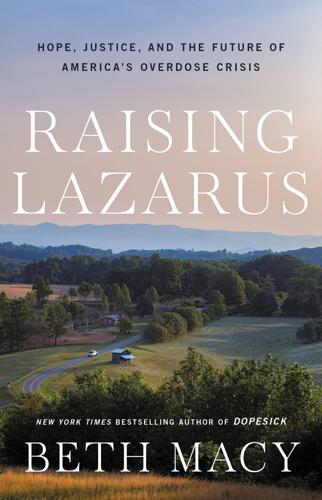
Raising Lazarus: Hope, Justice, and the Future of America’s Overdose Crisis
by
Beth Macy
Published 15 Aug 2022
and reporting fifty-two days of sobriety, according to Nolan via e-mail on November 8, 2021. Three months later, Brenda had another job with decent benefits and was sober, and Mary Jo was hosting hep C–testing gatherings for Tim again and trying to win back custody of her daughter, as Tim was proud to report in an e-mail to the author, November 29, 2021. $1 trillion per year: RAND Corporation, “Commission on Combating Synthetic Opioid Trafficking,” RAND.org, February 7, 2022. In 2018, that figure was $696 billion. The new trillion-dollar cost estimate is equivalent to nearly half of America’s economic growth in 2021. teenage overdose deaths: Joseph Friedman, “Trends in Drug Overdose Deaths Among U.S.
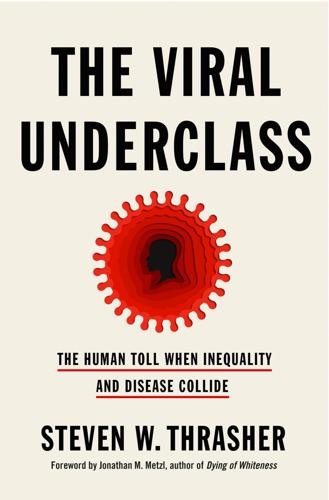
The Viral Underclass: The Human Toll When Inequality and Disease Collide
by
Steven W. Thrasher
Published 1 Aug 2022
a staggering 42 percent: Alexander, “Why Hillary Clinton Doesn’t Deserve the Black Vote.” programs sharply reduce recidivism: Alexander, “Why Hillary Clinton Doesn’t Deserve the Black Vote.” and save governments money: Lois Davis et al., “Evaluating the Effectiveness of Correctional Education,” Rand Corporation, 2013, https://bit.ly/2O2HbL2. “allocated to food stamps”: Alexander, “Why Hillary Clinton Doesn’t Deserve the Black Vote.” “8 to 10 times higher”: Nicholas Freudenberg, “Jails, Prisons, and the Health of Urban Populations: A Review of the Impact of the Correctional System on Community Health,” Journal of Urban Health: Bulletin of the New York Academy of Medicine 78, no. 2 (June 2001): 316–34.

Artificial Intelligence: A Modern Approach
by
Stuart Russell
and
Peter Norvig
Published 14 Jul 2019
See Exercise 15.VPIX for another example. 9The general problem of generating sequential behavior in a partially observable environment falls under the heading of partially observable Markov decision processes, which are described in Chapter 16. 10Ellsberg later became a military analyst at the RAND Corporation and leaked documents known as the Pentagon Papers, thereby contributing to the end of the Vietnam war. CHAPTER 16 MAKING COMPLEX DECISIONS In which we examine methods for deciding what to do today, given that we may face another decision tomorrow. In this chapter, we address the computational issues involved in making decisions in a stochastic environment.
…
We shall return MDPs and POMDPs in Chapter 23, which covers reinforcement learning methods that allow an agent to improve its behavior from experience. Bibliographical and Historical Notes Richard Bellman developed the ideas underlying the modern approach to sequential decision problems while working at the RAND Corporation beginning in 1949. According to his autobiography (Bellman, 1984), he coined the term “dynamic programming” to hide from a research-phobic Secretary of Defense, Charles Wilson, the fact that his group was doing mathematics. (This cannot be strictly true, because his first paper using the term (Bellman, 1952) appeared before Wilson became Secretary of Defense in 1953.)
…
R., De Kleer, J., and Usher, J. M. (2010). FIRE: Infrastructure for experience-based systems with common sense. In AAAI Fall Symposium: Commonsense Knowledge. Ford, K. M. and Hayes, P. J. (1995). Turing Test considered harmful. In IJCAI-95. Ford, L. R. (1956). Network flow theory. Tech. rep., RAND Corporation. Ford, M. (2015). Rise of the Robots: Technology and the Threat of a Jobless Future. Basic Books. Ford, M. (2018). Architects of Intelligence. Packt. Forestier, J.-P. and Varaiya, P. (1978). Multilayer control of large Markov chains. IEEE Transactions on Automatic Control, 23, 298–304. Forgy, C. (1981).
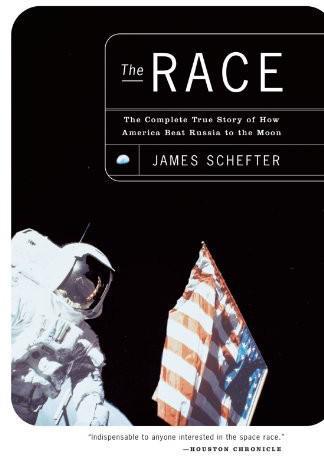
The Race: The Complete True Story of How America Beat Russia to the Moon
by
James Schefter
Published 2 Jan 2000
A word, a wink, a nod from the president of the United States on the subject of quickly putting a satellite, any satellite, into orbit around Earth would have changed the course of mid-twentieth-century history and avoided the worst crisis of his presidency. But still, Ike was warned. Even Harry Truman had been warned. Way back in 1946, when German rocket parts and Wernher von Braun’s rocket team were in exile-residence at the Army’s Fort Bliss, by El Paso, Texas, a RAND Corporation report called it right: “The achievement of a satellite craft by the United States would inflame the imagination of mankind, and would probably produce repercussions in the world comparable to the explosion of the atomic bomb.” World War II had just ended and nobody in power cared. Von Braun, of course, cared, but he was still a captured German scientist yet to prove himself to his new American masters.

Dreaming in Code: Two Dozen Programmers, Three Years, 4,732 Bugs, and One Quest for Transcendent Software
by
Scott Rosenberg
Published 2 Jan 2006
But the Next system lives on as the foundation for today’s Macintosh OSX operating system. Remember that little content management system my colleagues at Salon built in 2000, the one whose disastrous deployment haunted me and launched me on this book’s inquiry? It turned into an open source project named Bricolage and has been used by the World Health Organization, the RAND Corporation, and the Howard Dean presidential campaign. And all the research for the book you’re reading was organized, compiled, outlined, cross-referenced, and endlessly tweaked in an old Windows program called Ecco Pro that was first released in 1993. In 1997, Ecco was “orphaned” by its owners, who felt they couldn’t compete with Microsoft Outlook (though it makes Outlook’s rigid PIM design look like a—Oh, never mind!)
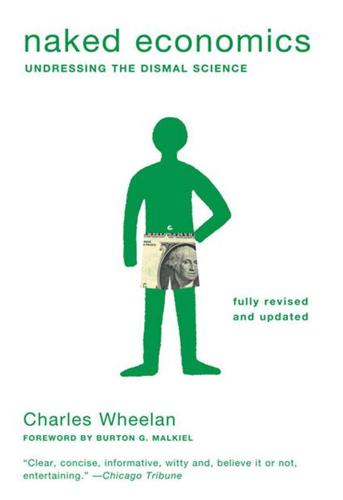
Naked Economics: Undressing the Dismal Science (Fully Revised and Updated)
by
Charles Wheelan
Published 18 Apr 2010
Doing nothing essentially costs nothing (more or less); shooting protons from an accelerator costs somewhere in the range of $100,000. The cost difference is not surprising; the shocking thing is that proton therapy has not been proven any more effective than watchful waiting. An analysis by the RAND Corporation concluded, “No therapy has been shown superior to another.”3 Health maintenance organizations were designed to control costs by changing the incentives. Under many HMO plans, general practitioners are paid a fixed fee per patient per year, regardless of what services they provide. Doctors may be restricted in the kinds of tests and services they can prescribe and may even be paid a bonus if they refrain from sending their patients to see specialists.
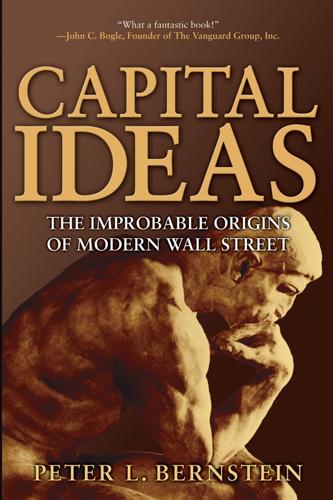
Capital Ideas: The Improbable Origins of Modern Wall Street
by
Peter L. Bernstein
Published 19 Jun 2005
He supervised himself.”17 Sharpe, on the other hand, is always generous when the talk turns to Markowitz. He told me he considers Markowitz “the most truly gentle man I know.”18 In his article in Management Science Sharpe begins with a note acknowledging computer assistance at UCLA and the University of Washington and goes on: [The author’s] greatest debt is to Dr. Harry Markowitz of the RAND Corporation. . . . It is no longer possible to segregate the ideas in this paper into those which were his, those which were the author’s, and those which were developed jointly. Suffice it to say that the only accomplishments which are unquestionably the property of the author are those of authorship—first of the computer program and then of this article.19 Nineteen sixty-one, the year in which Sharpe wrote “A Simplified Model for Portfolio Analysis,” was also the year in which an American astronaut, Alan Shepard, first rode a missile in space, for a thrilling fifteen minutes.

The Innovation Illusion: How So Little Is Created by So Many Working So Hard
by
Fredrik Erixon
and
Bjorn Weigel
Published 3 Oct 2016
Forbes, Jan. 8, 2015. At http://www.forbes.com/sites/georgeanders/2015/01/08/whatsapps-growth-exceeds-christianitys-first-19-centuries/. Anderson, James M., Nidhi Kalra, Karlyn D. Stanley, Paul Sorensen, Constantine Samaras, and Oluwatobi A. Oluwatola, Autonomous Vehicle Technology: A Guide for Policymakers. Rand Corporation, 2014. Andrews, Dan, Chiara Criscuolo, and Peter N. Gal, “Frontier Firms, Technology Diffusion and Public Policy: Micro Evidence from OECD Countries.” OECD Productivity Working Paper. Organisation for Economic Co-operation and Development, Nov. 2015. Antràs, Pol, and Stephen R Yeaple, “Multinational Firms and the Structure of International Trade.”
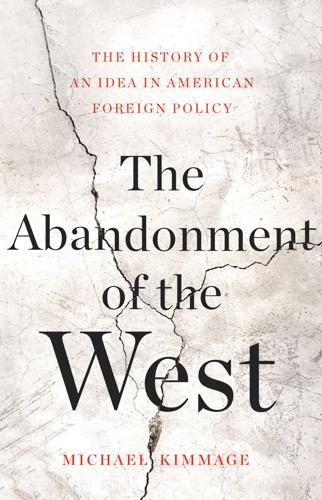
The Abandonment of the West
by
Michael Kimmage
Published 21 Apr 2020
The gravity of our given task is great, and it is very much in doubt how the future will judge our stewardship.31 IN 1981 AND 1982, Francis Fukuyama, a thirty-year-old holder of a bachelor’s degree in classics and a former student of Allan Bloom at Cornell (class of ’74), held a position at the State Department’s Office of Policy Planning. He spent the following six years at the Rand Corporation working on Cold War strategy while the Cold War was rushing through its final phases. In 1989, after Reagan’s vice president George H. W. Bush had become president, Fukuyama went back to Policy Planning as its deputy director. Around this time, he was invited by the University of Chicago’s Olin Center for Inquiry into the Theory and Practice of Democracy to lecture on politics and history.
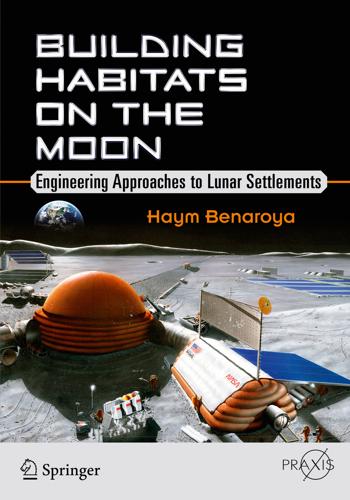
Building Habitats on the Moon: Engineering Approaches to Lunar Settlements
by
Haym Benaroya
Published 12 Jan 2018
He served as Mission Control Surgeon, Deputy Crew Surgeon or Crew Surgeon for numerous Space Shuttle missions and as Project Manager for the Space Station Medical Facility, developing the initial design for the first in-flight medical delivery system for long-duration missions. A founding board member of the American Telemedicine Association, Dr. Logan has served as a consultant to the RAND Corporation, a variety of professional organizations, international and domestic hospital-based health care systems, and the Department of Defense. He was the first Provost for the International Space University in Strasbourg, France. Board certified in Aerospace Medicine, he completed a medical fellowship in Undersea & Hyperbaric Medicine at Duke University Medical Center in 2013.
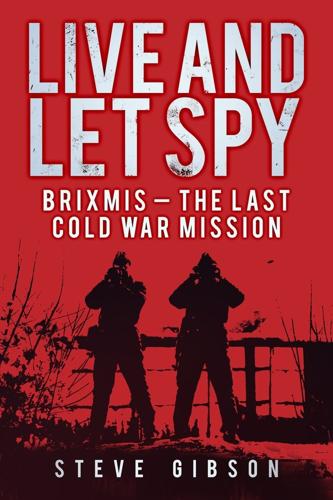
Live and Let Spy: BRIXMIS - the Last Cold War Mission
by
Steve Gibson
Published 2 Mar 2012
Governments began to intervene in the public interest through the ethos of public service – politicians and civil servants acting altruistically for others. Yet, ironically, it was intelligence’s success in managing the Soviet nuclear threat, masterminded by the US Research and Development (RAND) Corporation, that convinced political elites and business alike that Hayek’s self-interest theory might have been right all along. The constant feed of multiple intelligence surveillance data into powerful American computers revealed minute-by-minute warnings and indicators of Soviet nuclear intention. Thus, through computerised mathematical modelling, the uncertain intentions of two nuclear opponents suddenly became clear.
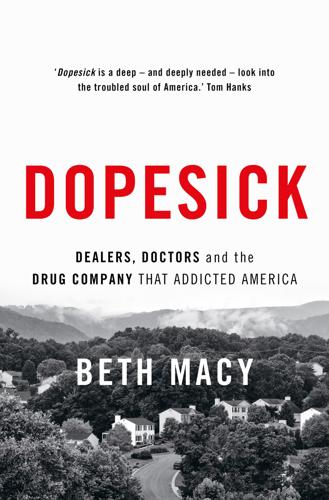
Dopesick: Dealers, Doctors and the Drug Company That Addicted America
by
Beth Macy
Published 4 Mar 2019
“you don’t have people shooting at you”: Author interview, Coffman, May 31, 2016. Coffman also described the regular weight of the Harlem heroin haul. important subset of the drug trade in Baltimore: Jean Marbella and Catherine Rentz, “Heroin Creates Crowded Illicit Economy in Baltimore,” Baltimore Sun, Dec. 19, 2015, quoting a RAND Corporation study and Baltimore’s heroin task force. With the highest per capita rate of heroin use: Baltimore has the worst heroin problem in the country, according to incoming Maryland governor Larry Hogan: Jenna Johnson, “Hogan Says He Will Declare Heroin ‘Emergency’ Once Sworn in as Md. Governor,” Washington Post, Dec. 6, 2014.
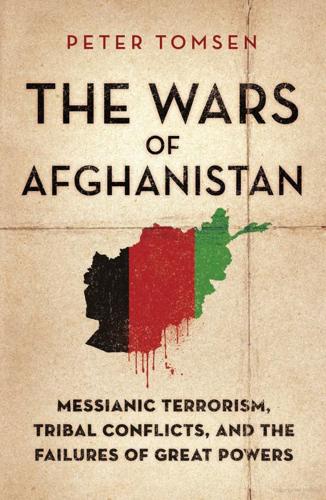
The Wars of Afghanistan
by
Peter Tomsen
Published 30 May 2011
In 1999, parliamentary leader Raja Mohammad Zafarat Haq claimed that Pakistan “would not allow anyone from its soil to interference [sic] in Afghanistan.”5 In 2006, while NATO forces fought back Taliban incursions into Afghanistan from Pakistan, Pakistani Army spokesman Major General Shaukat Sultan Khan called allegations that Pakistan was harboring training camps for cross-border networks “absurd.” In 2008, Pakistani military spokesman Major General Athar Abbas was asked to respond to a well-documented Rand Corporation study that found “active and former officials in Pakistan’s intelligence service and the Frontier Corps” providing the Taliban “with training at camps in Pakistan, as well as intelligence, financial assistance and help crossing the border.” Abbas responded, “We reject this claim of sanctuaries being aided by Pakistan’s army or intelligence agencies.”6 The ISI-created and -sustained Pakistani paramilitary militias tied to JI and JUI and their offshoots were a vital part of the unholy alliance (Appendix VI).
…
See Muhammad (the Prophet) Protestants Provincial Reconstruction Teams (PRTs) Proxy war See also specific Afghan proxies Pugo, Boris Pul-i-Charkhi prison Puzanov, Alexander Qaddafi, Muammar Qadir, Abdul Qadir, Haji Abdul Qadiriya Order Qais(chart) Qajar Dynasty Qanuni, Yunis Qazi, Javed Ashraf Qizilbash bodyguard force Quayle, Dan Quetta home base Quetta Shura (map) Quirke, Dan Qureshi, Shah Mahmood Qutb, Mohammad Qutb, Sayyid Qutbism Rabbani, Burhanuddin (table), and the Afghan Interim Government (AIG) government-in-exile as interim president and the ISI and the Jamaat-i Islami Party and Masood meeting with and the Muslim Brotherhood named as successor interim president and the National Commander’s Shura and the Peshawar Accords and Saddam Hussein shift to a moderate stance and shifts in Mujahidin alliances (chart) and the Taliban and the UN proposal Rabbani, Mohammad Rafi, Mohammad Rafsanjani, Akbar Hashemi Rahman, Fazlur Rahman, Jamil ur- Rahman, Mujibur Rahman, Omar Abdel (fig.), Rana, Nasim Rand Corporation study Rang, Gul Raphel, Arnold L. Raphel, Robin Rashid, Ahmed Rasoul, Zalmay Rasouli, Haidar Rawalpindi Shura Rawalpindi Treaty Razak, Abdul Reagan administration Reagan Doctrine Reagan, Ronald Reconstruction efforts Red Crescent(fig.) Refugees (map) Religious leaders, influence of Religious legitimacy Renaissance, the Reza Shah Reza, Shah Mohammad (son of Reza Shah) Rice, Condoleezza Riedel, Bruce Ritchie, James Ritchie, Joe Ritter, Don Roberts, Frederick Rocca, Christina Rogachev, Igor Rohinga Solidarity Group Rohrabacher, Dana Roman Republic Roosevelt, Franklin D.

Gorbachev: His Life and Times
by
William Taubman
Two days later, Yeltsin boasted publicly about how he denied Gorbachev’s “exorbitant” request (which Gorbachev denied ever making) to extend his presidential immunity from prosecution: “If he is guilty of something, he should acknowledge it now while he is still president.”55 Gorbachev wanted to establish a think tank on the model of the RAND Corporation, and for that he would receive the large building complex of the Central Committee’s Social Science Institute on Len-gradskii Prospekt (complete with classrooms, cafeterias, gyms, and a hotel), which had previously hosted activists from other Communist parties. According to Yeltsin’s chief bodyguard, his boss had “no idea of the actual dimensions of the complex,” but he was worried, according to Gorbachev, that it would become “a nest of opposition” to the new regime.
…
P., 86 Pavlov, Valentin, xxi, 575, 577, 582–86, 591, 592, 593, 600, 600, 601, 605, 617, 622 Pavlovsk (Massie), 283 Peace and Friendship Treaty, 566 peaceful coexistence, 257, 263–64, 414 “peace offensives,” 263–64 Pell, Claiborne, 560 Peloponnesian War, 156 Peres, Shimon, 683 Perestroika: New Thinking for Our Country and the World (Gorbachev), 319–20, 382, 413 Pérez de Cuéllar, Javier, 421 “permanent mobilization,” 100–101 Perot, Ross, 405 Pershing II missiles, 170, 394, 716n “personality cult,” 58, 96–97, 126, 327, 329 Pertini, Sandro, 195 Peter I (“the Great”), Emperor of Russia, 50, 261, 342 Peterhof, 342, 344 Petrakov, Nikolai, xxi, 238, 239, 311, 313, 364, 364, 451, 519, 522–24, 526–28, 531, 533, 534–35, 536 Petrov, Stanislav, 171 Petrov, Yuri, 355, 356 Petrozavodsk State University, 141 Petukhov, Vasily, 77 Piatigorsk (city), 30, 81, 104–5 Pitsunda (resort), 230–31, 310, 440, 453, 603 Plekhanov, Georgy, 100, 340 Plekhanov, Yuri, 423–24, 607, 608, 609, 613, 614 Poindexter, John, 304–5 Poland, 170, 173, 195, 267–68, 270, 344, 369, 378, 427, 465, 472, 477, 480–84, 485, 494, 506, 548, 564, 640, 641, 682 Polish Communist Party, 173 Political Publishing House, 92 Pollack, Richard, 392 Polozkov, Ivan, 309, 514, 515, 516, 533 Poltoranin, Mikhail, xxi, 649, 655–56 Ponomarev, Boris, xxi, 197, 210, 221, 256, 257, 259, 269 Popov, Gavriil, xxi, 245, 430, 444, 452, 454, 532, 532, 578, 585, 598, 680 Porgorny, Nikolai, 174 Porotov, Nikolai, xxi, 77, 78, 135 “Portrait of Gorbachev,” 454 Portugalov, Nikolai, xxi, 492 Potemkin, Grigory, 10 “Potemkin villages,” 10, 113, 235 Powell, Charles, xxi, 198, 199, 200, 390, 391 Powell, Colin, xxi, 402, 408, 409, 412, 682 Pozgay, Imre, xxi, 483 Prague, 45, 54, 58, 91, 92, 93, 116, 119, 122–24, 143, 172, 180, 218, 267, 379–81, 387, 486, 504, 689, 693 Prague Spring (1968), 45, 54, 54, 91, 92, 93, 119, 122–24, 143, 172, 180, 218, 267, 379–81, 504, 689, 693 Pravda, 21, 91–92, 132, 178, 193, 247, 270, 272, 324, 332, 339, 346, 349, 350, 355, 434, 459–60 President Hotel, 648 Primakov, Yevgeny, 207, 253, 451, 501, 511, 525, 536, 559, 567, 570, 589, 592, 593, 614, 654 Pristavkin, Anatoly, 317 Problems of Peace and Socialism, 92 Progress, Coexistence, and Intellectual Freedom (Sakharov), 122–23 Progress Publishing House, 127, 253 Prokofiev, Yuri, xxi, 533 Public Advisory Council, 677 Public Opinion, 350 publitsistika (essays), 339 Pugachev, Yemiliyan, 10 Pugo, Boris, xxii, 578, 584, 600, 600, 621 Pushkin, Alexander, 30, 33, 261, 340, 642–43 Putin, Vladimir, xxii, 2, 143, 652, 653, 659, 676–81, 676, 682, 684–87, 691–93 “quantitative indicators,” 311 Radio Liberty, 397 Raisa Gorbachev Foundation, 682–83 Raisa Maksimovna’s Club, 664–65 Rakhmanin, Oleg, xxii, 269, 270 Rakowski, Mieczyslaw, xxii, 482–83, 485 RAND Corporation, 639 Rappoport, Yakov, 45 Rasputin, Valentin, 511 Razin, Stepan, 10 Razumovskaya, Ludmila, 190 READD-RADD collection, xii Reagan, Nancy, xxii, 4, 225, 283, 289–91, 302–3, 304, 403, 407, 409, 414, 416, 417–18, 421, 556, 563, 656 Reagan, Ron, 303 Reagan, Ronald, xxii, 4, 170, 197, 201, 225, 252, 255, 263, 274–305, 284, 285, 297, 377, 385, 392, 393, 394, 396, 398, 400–419, 417, 421, 423–25, 424, 462, 465, 468, 469, 470, 472, 473, 475, 496, 556, 560, 563, 596, 656, 685, 686, 693 realpolitik, 473, 558 Red Army, 20–27, 55, 122, 170, 234, 540–41, 572 “Red Hundred,” 429, 433 Red Labor Banner, 8 “Red October” collective farm, 13 Red Square, 43, 98, 123, 140, 206, 220, 228, 321, 396–97, 416, 417, 518, 532, 581 refugees, 22, 35, 368, 369, 426 refuseniks, 415 Regan, Donald, xxii, 286, 288–90, 301, 303 Reid, Thomas Mayne, 29 Remnick, David, xxii, 442, 456, 457, 518, 559, 658, 659 Repentance, 248, 249, 250, 429 Repubblica, 459 Republican Party, 279, 304, 393, 396, 410, 412, 490 Revenko, Grigory, xxii, 511, 623, 654 revolution of 1905, 429, 576 rheumatoid arthritis, 78 Rice, Condoleezza, xxii, 458, 553 Ridgeway, Rozanne, 396 Rimashevskaya, Natalia, xxii, 51, 53 Road of Ilich, 35–36 Rocard, Michel, 683 Rockefeller, David, 459 Rodin Museum, 280 Rodionov, Ivan, 437 Roh Tae Woo, 562–63 Romania, 269, 378, 384–85, 427, 465, 483, 498–99, 506, 693 Romanov, Grigory, xxii, 181, 205, 210, 212, 219, 227 Rome, 150, 195, 495, 666 Romero, Carmen, 656–57 Roosevelt, Franklin D., 183, 422, 469, 495, 552, 602, 654 Ross, Dennis, 563, 566–67, 570 Rossini, Gioachino, 593 Rossiya Hotel, 158, 159, 364 Rostov (city), 10, 22, 41, 43, 450 Rostov-on-Don (city), 21, 661 ruble (currency), 28, 68, 81, 96, 111, 214, 232, 239, 310, 378, 393, 434, 546, 549, 575, 591, 594, 639 Rublevskoe Shosse, 653 Rubtsovsk (village), 63 Rural Life, 116 Rusakov, Konstantin, xxii, 210, 270 Rusalka (Pushkin), 33 Russia: constitution of, 658, 659 Duma (parliament) of, 513, 627–28, 635, 657–58, 659, 661, 680, 684, 685 oligarchy in, 483, 663, 679, 693 parliamentary elections of (1993), 658 presidential elections of (1996), 660–63, 666 presidential elections of (2000), 676–77 presidential elections of (2003), 679–80 privatization in, 181, 524, 527, 591, 653, 693 as Soviet republic, 193, 353, 371–72, 445, 500, 590–91, 610, 622–23 steppes in, 11, 13, 21, 41, 55, 78, 81, 130, 163, 164, 314 tsarist, 3, 17, 29, 31, 55, 80, 164, 206, 231, 243, 260, 352, 355, 365, 372, 476, 500, 506, 517, 518, 531, 576, 602, 603, 606, 693 Russian Children’s Hospital, 663–64 Russian Communist Party (RCP), 501, 514, 515, 622–23 “Russian freedom,” 314–15 Russian Independence Day (2012), 684–85 Russian Orthodox Church, 11, 340, 560 Russian Republic Supreme Soviets, 321, 521 Russian Soviet Federative Socialist Republic (RSFSR), 500 Russian United Social Democratic Party, 678 Rust, Mathias, xxii, 397 Rutskoi, Aleksandr, xxii, 612–14, 654 Ryabov, Yakov, xxii, 322, 328 Rybakov, Anatoly, xxii, 249, 250, 317, 339 Ryzhkov, Nikolai, xxii, 3, 188, 189, 193, 206, 208–10, 220, 220, 221, 222, 233, 236, 244, 308, 310–13, 320, 322, 328, 349, 353, 391, 420, 424, 434, 435, 437, 450–52, 464, 503, 506, 509, 511, 512, 514, 515, 521–32, 532, 540, 543, 575 S-80 tractors, 35 Sadykov, Fagim B., 124–26 Sagdeyev, Roald, xxii, 253, 282, 296, 430 St.
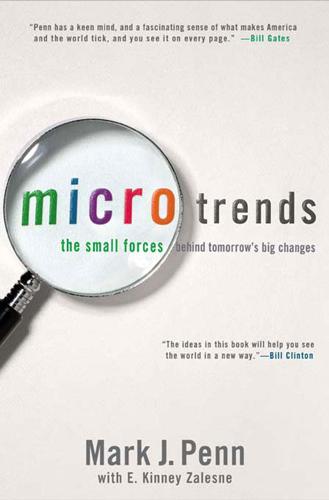
Microtrends: The Small Forces Behind Tomorrow's Big Changes
by
Mark Penn
and
E. Kinney Zalesne
Published 5 Sep 2007
But in China, India, and Japan—countries known for their competitive educational environments—solid majorities of parents say parents put too much pressure on their kids. And of course, Asian students do score higher on certain international exams than Americans. The United States placed 24th out of 29 OECD countries on a global mathematics literacy test in 2003, far below Japan and China. Could this be linked to the fact that, as the RAND Corporation and the Brookings Institution have found, the typical American student spends less than an hour a day on homework? Maybe we should spare the rod and spoil the teachers—and just make kids sit down and do their homework. Late-Breaking Gays In August 2004, Governor James McGreevey of New Jersey stood before local reporters, the national press corps, and 300 million television viewers to announce that he would be resigning because he had had an affair with a man that had left him vulnerable to “false allegations and threats of disclosure.”
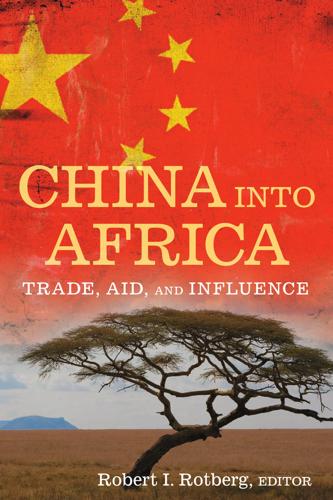
China into Africa: trade, aid, and influence
by
Robert I. Rotberg
Published 15 Nov 2008
He served as director of policy planning at the Department of State, a senior staff 11-7561-4 ch11.qxd 9/16/08 4:21 PM Page 246 246 joshua eisenman member of the National Security Council, professor of political science at the University of Michigan, and head of the political science department at the RAND Corporation. 37. Ibid. 38. Interview between the author and Phillip Idro, former Ugandan ambassador to China, in Johannesburg, South Africa (11 September 2007). 39. Shambaugh, “China’s ‘Quiet Diplomacy,’” 45. Parentheses in original text. 40. In 2006, a Japanese diplomat in Shanghai committed suicide after he was black-mailed by Chinese intelligence about an affair he had with an operative working at a karaoke bar.
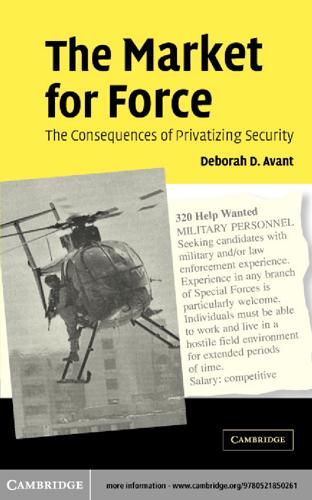
The Market for Force: The Consequences of Privatizing Security
by
Deborah D. Avant
Published 17 Oct 2010
There have been no complaints from the Army about the quality of staff MPRI has provided. As is often the case, however, the cost of garnering the exact same service from the private sector was higher.184 Indeed, from the start, the privatization of ROTC was expected to cost more than the alternative of using active duty personnel. The RAND Corporation estimates suggested that each year it cost about $10,000 more per instructor for 181 182 183 184 http://www.mpri.com/subchannels/nat_ROTC.html. The majority of positions that have been contracted out are assistant professors of military science. Trainers and logistics positions have also been outsourced, but not to such a degree, and administrative positions have been outsourced the least.

Culture and Prosperity: The Truth About Markets - Why Some Nations Are Rich but Most Remain Poor
by
John Kay
Published 24 May 2004
Groves and Ledyard (1977, 1980). 5. Bathurst (1999). 6. Buchanan and Tulloch (1962), Downs (1957), Buchanan and Tollison (1972, 1984). 7. See the discussion in Zakaria (2003). 8. Langford (1996), Kennedy (1956). 9. The Prisoner's Dilemma was one of the problems devised in early exploration of game theory at the Rand Corporation after World War II. Supposedly devised by Merrill Glood and Melvin Dresher, the problem was posed in story form by Albert Tucker to explain his research to Stanford psychologists. 10. Marwell and Ames (1981). 11. The "folk theorem" of game theory (see, for example, Fudenberg and Tirole [1991], chapter 5), so called because its attribution is unclear, claims that all such strategies are Nash equilibrium in an indefinitely repeated game.
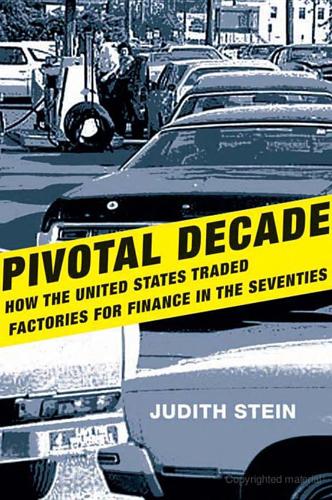
Pivotal Decade: How the United States Traded Factories for Finance in the Seventies
by
Judith Stein
Published 30 Apr 2010
The president said that energy was a moral issue and that the nation needed to husband American and world resources. His new revelation was not accompanied by specific policy preferences. Carter left the details to James R. Schlesinger. Schlesinger, who had a PhD in economics from Harvard, was director of strategic studies at the Rand Corporation when he joined President Nixon’s Bureau of the Budget. The president made him head of the Atomic Energy Commission in 1971, director of the CIA in 1973, and finally Secretary of Defense. He opposed Kissinger and détente, and was not shy about making his views known, and President Ford fired him in November 1975.
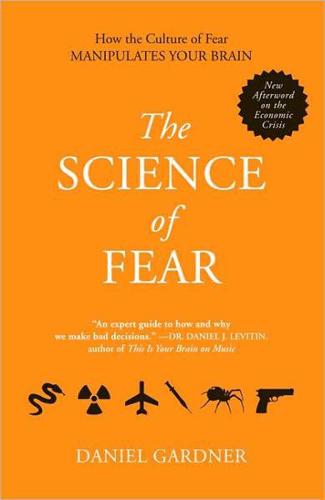
The Science of Fear: How the Culture of Fear Manipulates Your Brain
by
Daniel Gardner
Published 23 Jun 2009
Glassner, Barry, The Culture of Fear, Basic Books, New York, 1999. Goklany, Indur M., The Improving State of the World, Cato Institute, Washington, DC, 2007. Herman, Arthur, The Idea of Decline in Western History, Free Press, New York, 1997. Jenkins, Brian Michael, Unconquerable Nation: Knowing Our Enemy, Strengthening Ourselves, RAND Corporation, Santa Monica, CA, 2006. Keeley, Lawrence H., War Before Civilization: The Myth of the Peaceful Savage, Oxford University Press, New York, 1996. Kida, Thomas, Don’t Believe Everything You Think: The Six Basic Mistakes We Make in Thinking, Prometheus Books, Amherst, NY, 2006. Lichter, S.
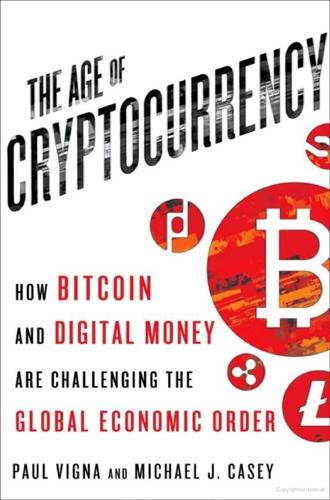
The Age of Cryptocurrency: How Bitcoin and Digital Money Are Challenging the Global Economic Order
by
Paul Vigna
and
Michael J. Casey
Published 27 Jan 2015
“Probably ten thousand of the best developers”: Chris Dixon, phone interview with Michael J. Casey, June 25, 2014. In their 2006 book: Ori Brafman and Rod Beckstrom, The Starfish and the Spider: The Unstoppable Power of Leaderless Organizations (Portfolio, 2006). as per a schema on network structure: Paul Baran, “On Distributed Communication,” The Rand Corporation, August 1964, http://www.rand.org/content/dam/rand/pubs/research_memoranda/2006/RM3420.pdf. In June 2013, the California Division of Financial Institutions: Jon Matonis, “Bitcoin Foundation Receives Cease and Desist Order from California,” Forbes, June 23, 2013, http://www.forbes.com/sites/jonmatonis/2013/06/23/bitcoin-foundation-receives-cease-and-desist-order-from-california/.
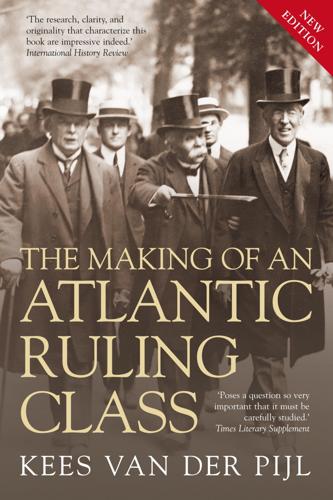
The Making of an Atlantic Ruling Class
by
Kees Van der Pijl
Published 2 Jun 2014
PS (Parti Socialiste), 8.1, 8.2 PSDI (Partito Socialista Democratico Italiano), 6.1, 6.2, 8.1 PSI (Partito Socialista Italiano) PSU (Parti Socialiste Unifie) PVDA (Partij van de Arbeid), 6.1, 8.1 PVDV (Partij van de Vrijheid) PVV/PLP (Partij van de Vrijheid en Vooruitgang/Parti de la Liberté et Progrès) Quay, J.E. Queuille, H., 6.1, 6.2 Quigley, C., 2.1, 4.1 Radford, Admiral A.W. Radical Party (Fr.), 6.1, 6.2, 7.1, 8.1 Radkau, J. Ralston Purina Ramadier, P. RAND Corporation Rank, J.A. Rank Organization Rathenau, W., 2.1, 3.1, 3.2, 3.3, 3.4, 3.5, 4.1 Reagan, R. Rebattet, F.X. Redressement Français Réformateurs Renault Republican Party, 4.1, 6.1, 7.1 Républicains Independents (RI), 8.1, 8.2 Republic Steel, 4.1, 4.2 Retinger, J., 5.1, 7.1 Reusch, P. Reuther, Victor Reuther, Walter, 7.1, 8.1, 8.2 Reynaud, P.
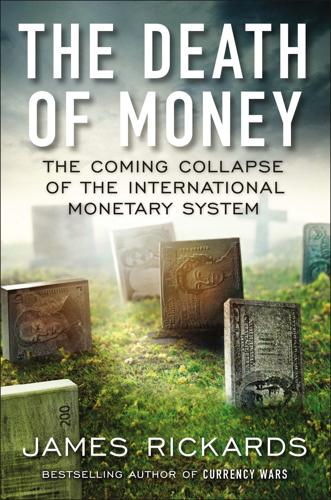
The Death of Money: The Coming Collapse of the International Monetary System
by
James Rickards
Published 7 Apr 2014
Unofficially he is the Pentagon’s chief futurist, the man responsible for looking over the horizon and assessing threats to U.S. national security long before others even know they exist. Marshall has held this position since 1973, through eight presidential administrations. His involvement in national security strategy goes back even further, to 1949, when he joined the RAND Corporation, the original think tank. The list of his former associates and protégés includes Herman Kahn, James Schlesinger, Don Rumsfeld, Dick Cheney, Paul Wolfowitz, and other giants of national security policy over eight decades. Only the late Paul Nitze is comparable to Marshall in terms of the depth and breadth of his influence on strategic affairs in the period since World War II.
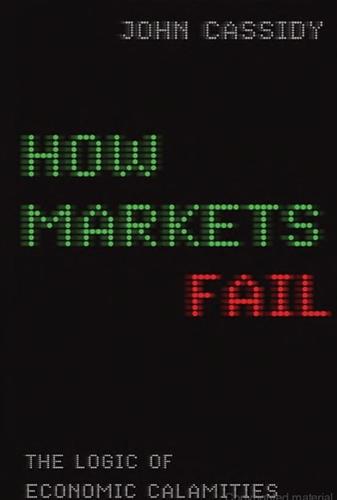
How Markets Fail: The Logic of Economic Calamities
by
John Cassidy
Published 10 Nov 2009
During the late 1940s, some progress was made in tackling this broader category of problems when John Nash, a Princeton mathematician, introduced a general method for solving non-zero-sum games, but much remained unclear. Merrill Flood and Melvin Dresher were two mathematicians working at the RAND Corporation, which the Pentagon had founded in the aftermath of World War II to engage in scientific research “for the public welfare and security of the United States of America.” Much of the work undertaken at RAND had military implications, but it was also an important center of operations research and other applications of mathematics.
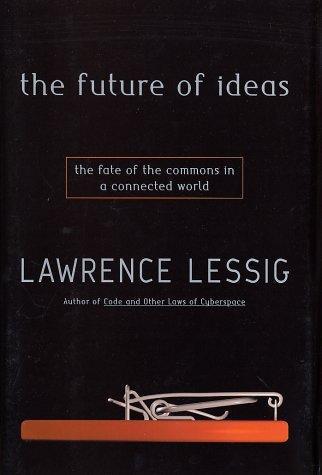
The Future of Ideas: The Fate of the Commons in a Connected World
by
Lawrence Lessig
Published 14 Jul 2001
Built on a platform that is controlled, the protocols of the Internet have erected a free space of innovation. These private networks have created an open resource that any can draw upon and that many have. Understanding how, and in what sense, is the aim of this chapter. PAUL BARAN was a researcher at the Rand Corporation from 1959 to 1968. His project in the early 1960s was communications reliability. The fear slowly dawning upon the leaders of the world's largest nuclear arsenal was that the communications system controlling that arsenal was vulnerable to the smallest of attacks. An accident, or a single nuclear explosion, could disable the ability of the commander in chief to command.
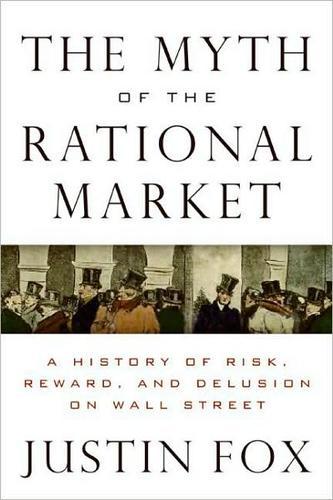
The Myth of the Rational Market: A History of Risk, Reward, and Delusion on Wall Street
by
Justin Fox
Published 29 May 2009
See also game theory politics, 20, 269, 319 Ponzi finance, 312–15 portfolio insurance, 150–51, 227–28, 229–31, 236–39 Portfolio Selection, 55 portfolio theory, xiv, 48–52, 55–59, 65, 85, 104, 137, 169 power laws, 133, 134 Prais, Sig, 64, 65 Predictability of Stock Prices (Granger), 192–93 Prediction Company, 304 The Predictors (Bass), 304 price-to-book ratio, 208–9, 224 price-to-earnings (P/E) ratio, 204, 206, 257, 260 Princeton University, 50 Princeton-Newport Partners, 218–19, 220, 242 Principles of Corporate Finance (Brealey and Myers), 355n. 38 Principles of Economics (Marshall), 30, 33, 189, 301 probability, 7–8, 13–15, 50–51, 62, 135, 177 “Proof that Properly Anticipated Prices Fluctuate Randomly” (Samuelson), 73, 144 prospect theory, 184, 186, 191, 291, 298 “Prudent Man” rule, 137 psychology, 176–78, 183–88, 201, 232–33, 266, 293–95. See also behavioral finance Purchasing Agents Association, 24 Putnam Investors, 112 Quantitative Finance, 305 Quarterly Journal of Economics, 63 Rand, Ayn, 91, 258 RAND Corporation, 55, 59, 86 A Random Walk Down Wall Street (Malkiel), 129–30 random walk hypothesis and the business cycle, 26–28 and computing, 99–101 and Cowles, 35–39 and Fama, 96–97 and ideological debate, 29–35 and Malkiel, 129–30 and market uncertainty, 13 modeling, 28–29 and options, 146 and the public consciousness, 99 and Samuelson, 60–66, 67–70, 70–74 and social value of markets, 39–44 Rappaport, Alfred, 164, 271, 280 rational market hypothesis, xiii–xv, 35, 82–83, 107, 179–80, 197, 251, 287–88.

The Ones We've Been Waiting For: How a New Generation of Leaders Will Transform America
by
Charlotte Alter
Published 18 Feb 2020
built to withstand buried IEDs: Robert Haddick, “This Week at War: Why Don’t Stryker Brigades Work in Afghanistan,” Foreign Policy, November 6, 2009, foreignpolicy.com/2009/11/06/this-week-at-war-why-dont-stryker-brigades-work-in-afghanistan/. make combat vehicles safer: Terrence K. Kelly, et al., “The U.S. Combat and Tactical Wheeled Vehicle Fleets,” Rand Corporation, National Defense Research Institute, rand.org/content/dam/rand/pubs/monographs/2011/RAND_MG1093.pdf. half of boomers agreed: Pew Research Group, “The Generation Gap and the 2012 Election: Section 8,” November 3, 2011, people-press.org/2011/11/03/section-8-domestic-and-foreign-policy-views./ misunderstood by the American public: Pew Research Group, “War and Sacrifice in the Post-9/11 Era,” Pew Social Trends, October 5, 2011, pewsocialtrends.org/2011/10/05/war-and-sacrifice-in-the-post-911-era/.
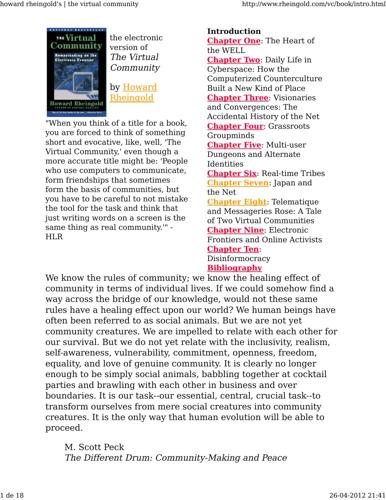
Howard Rheingold
by
The Virtual Community Homesteading on the Electronic Frontier-Perseus Books (1993)
Published 26 Apr 2012
The ARPA planners adopted a particular way of sending chunks of computer information over a network, a scheme known as packet-switching. IP Packet-switching is yet another case of a technology invented for one purpose evolving into purposes beyond the intentions of the inventors. It started in the 1950s, when the RAND Corporation performed top-secret studies on thermonuclear war scenarios. 26-04-2012 21:43 howard rheingold's | the virtual community 11 de 43 http://www.rheingold.com/vc/book/3.html They focused on the survivability of the communications system that made command and control possible on local and national levels.
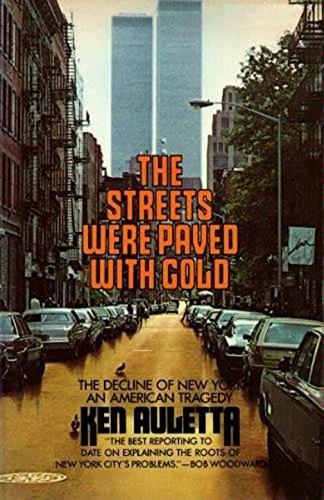
The Streets Were Paved With Gold
by
Ken Auletta
Published 14 Jul 1980
Still, ten years after the national Commission on Civil Disorders warned that America was moving toward “two societies, one black, one white—separate and unequal,” the average median income of a black family ($9,252) is about 60 percent that of the average white family ($15,537). A more recent Rand Corporation study said it was 75 percent. Teenage black unemployment is almost three times greater than for whites—double the gap that existed in the mid-1950’s. Nationally, over 50 percent of all black births were illegitimate in 1976; one of every three black youths is supported by welfare. Public schools are more segregated, and the education levels achieved by blacks—central to competing for the growing number of white-collar jobs—is far behind that of white Americans.

The Future Is Asian
by
Parag Khanna
Published 5 Feb 2019
Bell, Daniel. The China Model: Political Meritocracy and the Limits of Democracy. Princeton, NJ: Princeton University Press, 2015. Benedict, Ruth. The Chrysanthemum and the Sword. New York: Houghton, Mifflin, 1946. Bennett, Bruce W. “Preparing North Korean Elites for Unification.” Santa Monica, CA: RAND Corporation, 2017. Berger, Mark. The Battle for Asia: From Decolonization to Globalization. New York: Routledge, 2004. Bestor, Theodore C. Tsukiji: The Fish Market at the Center of the World. Berkeley: University of California Press, 2004. Bhabha, Homi K. The Location of Culture. New York: Routledge, 1994.
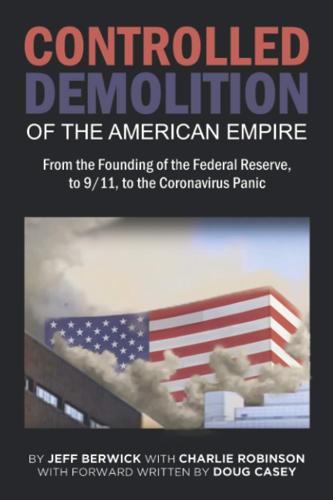
The Controlled Demolition of the American Empire
by
Jeff Berwick
and
Charlie Robinson
Published 14 Apr 2020
The Department of Defense has their own version of the Bilderberg Conference called The Highlands Forum, and it aims to provide the Pentagon with a network of social media and big business connections that can help to further their spying efforts and provide them with a talent pool to draw from. Representatives from a variety of companies are a part of this forum, including private spy agencies like Booz Allen Hamilton, SAIC, and RAND Corporation, as well as tech giants like AT&T, Microsoft, Google, IBM, Cisco, eBay, PayPal, General Electric, British Broadcasting Corporation, and even Disney, to name a few. They form small workshops where they discuss how the companies can integrate their services with the large government spy agencies and the military, for a price, of course.

A City on Mars: Can We Settle Space, Should We Settle Space, and Have We Really Thought This Through?
by
Kelly Weinersmith
and
Zach Weinersmith
Published 6 Nov 2023
NASA, May 2, 2018. http://www.nasa.gov/press-release/demonstration-proves-nuclear-fission-system-can-provide-space-exploration-power. Poynter, Jane. The Human Experiment: Two Years and Twenty Minutes Inside Biosphere 2. New York: Basic Books, 2006. Preston, Robert, Dana J. Johnson, Sean J. A. Edwards, Michael D. Miller, and Calvin Shipbaugh. “Space Weapons Earth Wars.” RAND Corporation, January 1, 2002. https://www.rand.org/pubs/monograph_reports/MR1209.html. Proshchina, Alexandra, Victoria Gulimova, Anastasia Kharlamova, Yuliya Krivova, Nadezhda Besova, Rustam Berdiev, and Sergey Saveliev. “Reproduction and the Early Development of Vertebrates in Space: Problems, Results, Opportunities.”
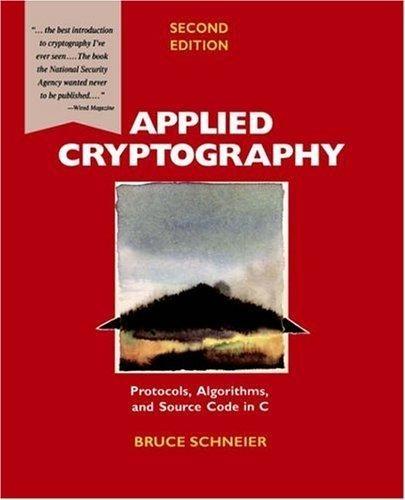
Applied Cryptography: Protocols, Algorithms, and Source Code in C
by
Bruce Schneier
Published 10 Nov 1993
It doesn’t sound like much, but it’s harder than you think. I can’t prove that any of these techniques generates random bits. These techniques produce a sequence of bits that cannot be easily reproduced. For some details, see [1375,1376,511]. RAND Tables Back in 1955, when computers were still new, the Rand Corporation published a book that contained a million random digits [1289]. Their method is described in the book: The random digits in the book were produced by rerandomization of a basic table generated by an electronic roulette wheel. Briefly, a random frequency pulse source, providing on the average about 100,000 pulses per second, was gated about once per second by a constant frequency pulse.
…
Rabin, “Fingerprinting by Random Polynomials,” Technical Report TR–15–81, Center for Research in Computing Technology, Harvard University, 1981. 1288. T. Rabin and M. Ben–Or, “Verifiable Secret Sharing and Multiparty Protocols with Honest Majority,” Proceedings of the 21st ACM Symposium on the Theory of Computing, 1989, pp. 73–85. 1289. RAND Corporation, A Million Random Digits with 100,000 Normal Deviates, Glencoe, IL: Free Press Publishers, 1955. 1290. T.R.N. Rao, “Cryposystems Using Algebraic Codes,” International Conference on Computer Systems and Signal Processing, Bangalore, India, Dec 1984. 1291. T.R.N. Rao, “On Struit–Tilburg Cryptanalysis of Rao–Nam Scheme,” Advances in Cryptology—CRYPTO ’87 Proceedings, Springer–Verlag, 1988, pp. 458–460. 1292.
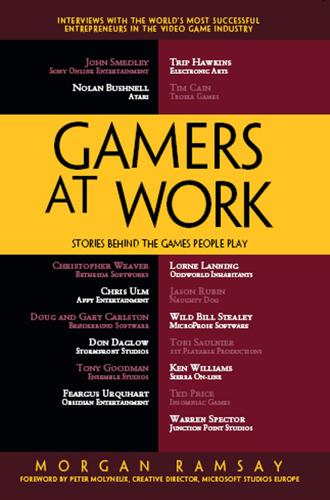
Gamers at Work: Stories Behind the Games People Play
by
Morgan Ramsay
and
Peter Molyneux
Published 28 Jul 2011
In 1973, I purposefully spent two years convincing Harvard to let me have my own special field of endeavor called “Strategy and Applied Game Theory,” in which I applied computer simulation to relevant social problems, like organizational decision-making and nuclear-war prevention. During the summer of 1975, I got a job at a Santa Monica think tank, Software Development Corporation, that was the computer spin-off of the RAND Corporation. A colleague returned from lunch one day and said he was at a retail store where you could rent KSR-33 teletype terminals for only $10 an hour. I said, “That’s great! This is the birth of home computing. I am going to make games that people can play at home on these computers.” My colleague, who had been at Dick Heiser’s The Computer Store, which turned out to be the world’s first computer retail store, then told me that another company called Intel had introduced the first CPU chip.

An Empire of Wealth: Rise of American Economy Power 1607-2000
by
John Steele Gordon
Published 12 Oct 2009
Once again, it was war, or rather the possibility of war, that brought it into being. After the launching of Sputnik in 1957, the Defense Department formed the Advanced Research Projects Agency (ARPA) to organize and coordinate science and technology projects with military applications. In 1962 Paul Baran of the RAND Corporation was asked to propose means whereby command and control could be maintained after a nuclear strike. Communications networks had always been either centralized, with all communication through a central hub, or decentralized, with a number of hubs, with subnetworks. Telegraph and telephone networks were structured this way, with switchboards serving as the hubs.
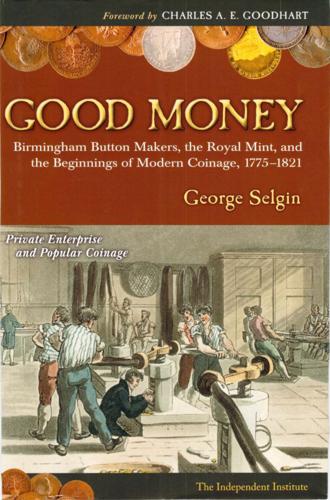
Good Money: Birmingham Button Makers, the Royal Mint, and the Beginnings of Modern Coinage, 1775-1821
by
George Anthony Selgin
Published 13 Jul 2008
Trebach AMERICAN UNIVERSITY Gordon Tullock GEORGE MASON UNIVERSITY Richard E. Wagner GEORGE MASON UNIVERSITY June E. O'Neill Sir Alan A. Walters BARUCH COLLEGE AIG TRADING CORPORATION Charles E. Phelps Walter E. Williams UNIVERSITY OF ROCHESTER GEORGE MASON UNIVERSITY Paul Craig Roberts Charles Wolf INSTITUTE FOR POLITICAL ECONOMY RAND CORPORATION THE INDEPENDENT INSTITUTE 100 Swan Way, Oakland, California 94621-1428, U.S.A. Telephone: 510-632-1366 • Facsimile: 510-568-6040 Email: info@independent.org • Website: www.independent.org Good Money BIRMINGHAM BUTTON MAKERS, THE ROYAL MINT, THE BEGINNINGS AND OF MODERN COINAGE, Private Enterprise and Popular Coinage George Selgin MI.···,.·.··.·· Ludwig von Mises Institute ~ Auburn, Alabama THE UNIVERSITY OF MICHIGAN PRESS ANN ARBOR Copyright © by The Independent Institute 2008 All rights reserved Published in the United States of America by The University of Michigan Press Manufactured in the United States of America @ Printed on acid-free paper 2011 2010 2009 2008 43 2 No part of this publication may be reproduced, stored in a retrieval system, or transmitted in any form or by any Ineans, electronic, mechanical, or otherwise, without the written permission of the publisher.
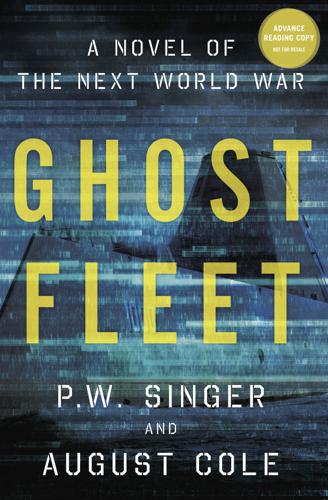
Ghost Fleet: A Novel of the Next World War
by
P. W. Singer
and
August Cole
Published 28 Jun 2015
q=node/135. 257 the lobster made a final sprint: Joseph Ayers, “Biomimetic Underwater Robot Program,” Northeastern Marine Science Center, accessed August 23, 2014, http://www.neurotechnology.neu.edu/. 258 suppressed HK 416 rifles: “HK416 A5,” Heckler and Koch, accessed August 17, 2014, http://www.heckler-koch.com/en/products/military/assault-rifles/hk416-a5/hk416-a5-11/overview.html. 258 swim to shore without oxygen tanks: “110 Predictions for the Next 110 Years,” Popular Mechanics, December 10, 2012, accessed August 23, 2014, http://www.popularmechanics.com/technology/engineering/news/110-predictions-for-the-next-110-years. 259 the Tallyho had originally been: “Spaceships: Virgin Galactic’s Vehicles,” Virgin Galactic, accessed August 23, 2014, http://www.virgingalactic.com/overview/spaceships; fictional spaceship. 260 Harry Winston in London’s Mayfair: “Harry Winston,” Bond Street Association, accessed August 23, 2014, http://www.bondstreet.co.uk/shop/harry-winston/. 260 the image had stuck with Sir Aeric: Thom Patterson, “Overheard on CNN: New Shuttle Needs Space Plane ‘Coolness,’ ” CNN.com, June 8, 2012, accessed March 18, 2014, http://www.cnn.com/2012/06/08/us/space-shuttle-overheard-on-cnn/index.html?hpt=hp_c2. 261 a love that would never come: Christopher Paul et al., “Paths to Victory: Detailed Insurgency Case Studies,” RAND Corporation, 2013, accessed August 23, 2014, http://www.rand.org/pubs/research_reports/RR291z2.html. 261 civilian-style Great Wall pickups: “Wingle 5,” Great Wall Motors, accessed August 23, 2014, http://www.gwm-global.com/wingle5.html. 265 the two metallic hands: Francie Diep, “A Mind-Controlled Robotic Hand with a Sense of Touch,” Popular Science, February 5, 2014, accessed August 23, 2014, http://www.popsci.com/article/science/mind-controlled-robotic-hand-sense-touch. 266 “lenses of the wrong prescription”: Emily Gold Boutilier, “Thinking the World into Motion,” Brown Alumni Magazine, January 2005, accessed August 23, 2014, http://archive.today/hf0P9. 266 “William Gibson’s 1984 novel Neuromancer”: Ed Cumming, “The Man Who Saw Tomorrow,” Guardian, July 27, 2014, accessed August 23, 2014, http://www.theguardian.com/books/2014/jul/28/william-gibson-neuromancer-cyberpunk-books.
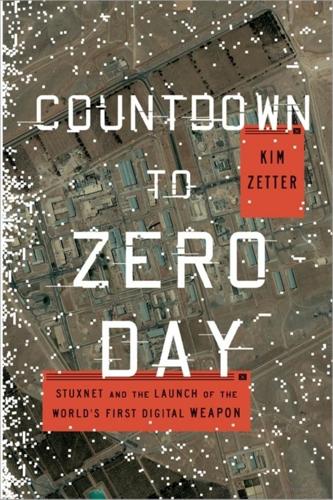
Countdown to Zero Day: Stuxnet and the Launch of the World's First Digital Weapon
by
Kim Zetter
Published 11 Nov 2014
It also means, though, that if someone were to use a weapon like Stuxnet against the United States, the US government would consider it an armed attack, something Lotrionte says concerns her.59 There have been conflicting reactions to some of the Tallinn Manual’s conclusions. Martin Libicki, an expert on cyberwarfare with the RAND corporation, questions the wisdom of allowing cyber conflicts to be resolved with kinetic attacks. He wonders if it wouldn’t be wiser to apply “Las Vegas rules” to cyberwarfare so that what happens in cyberspace stays in cyberspace. “Your escalation potential, if you go to the kinetic realm than if you stay in the cyber realm, is much greater,” he says.

Goddess of the Market: Ayn Rand and the American Right
by
Jennifer Burns
Published 18 Oct 2009
Anderson included an excerpt from Rand in Martin Anderson and Barbara Honegger, eds., The Military Draft: Selected Readings on Conscription (Stanford, CA: Hoover Institution Press, 1982). For more on the Gates Commission, see Bernard D. Rostker, I Want You! The Evolution of the All-Volunteer Force (Washington, DC: RAND Corporation, 2006). 65. The Austrians remained a tiny minority within the economics profession but established durable clusters at George Mason University, Auburn University, and the University of Nevada, Las Vegas. Karen Iversen Vaughn, Austrian Economics in America: The Migration of a Tradition (Cambridge: Cambridge University Press, 1994).
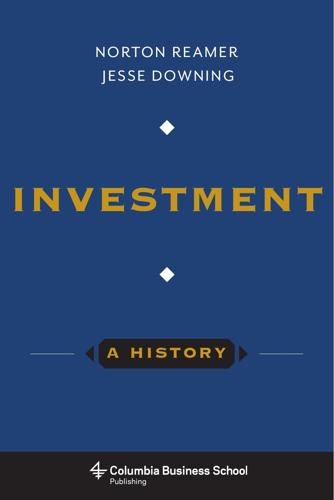
Investment: A History
by
Norton Reamer
and
Jesse Downing
Published 19 Feb 2016
The stockbroker seemed to suggest that Markowitz think about the portfolio selection problem in the context of linear optimization, and Marschak later agreed to his doing just that.27 Markowitz was the man for the job; he knew the linear optimization methods, having studied with George Dantzig at the RAND Corporation.28 Philosophically, Markowitz realized that the theory of asset pricing was incomplete without a corresponding theory of risk. Markowitz reasoned that one can indeed perform a calculation of dividends (in truth, proxies for discounted cash flows), but those future dividends themselves are uncertain.

The Precipice: Existential Risk and the Future of Humanity
by
Toby Ord
Published 24 Mar 2020
The Underwater Cuban Missile Crisis: Soviet Submarines and the Risk of Nuclear War. National Security Archive, Electronic Briefing Book No. 399. National Security Archive. Boberg, J. (2005). “Freshwater Availability,” in J. Boberg (ed.), How Demographic Changes and Water Management Policies Affect Freshwater Resources (pp. 15–28). RAND Corporation. Bolton, J., and Azar, A. (2018). Press Briefing on the National Biodefense Strategy. https://www.whitehouse.gov/briefings-statements/press-briefing-national-biodefense-strategy-091818/. Bonnell, J. T., and Klebesadel, R. W. (1996). “A Brief History of the Discovery of Cosmic Gamma-Ray Bursts.”

Track Changes
by
Matthew G. Kirschenbaum
Published 1 May 2016
Finseth, The Craft of Text Editing (Berlin, DE: Springer-Verlag, 1991; Cambridge, MA: MIT Press, 1999). E-book, chap. 4, http://www.mit.edu/~yandros/doc/craft-text-editing/. 57. R. Stockton Gaines, quoted in Willis H. Ware, RAND and the Information Revolution: A History in Essays and Vignettes (Santa Monica, CA: RAND Corporation, 2008), 122. 58. Edgar T. Irons and Frans M. Djorup, “A CRT Editing System,” Communications of the ACM 15, no. 1 (January 1972): 17. 59. Weiner, interview with the author. 60. Unless otherwise noted, details of what likely constituted a typical writing session with the Yale Editor on the PDP-10 in this paragraph and those that follow have been reconstructed from various sources in the John Hersey Papers in the Beinecke Rare Book and Manuscript Library, Yale University.
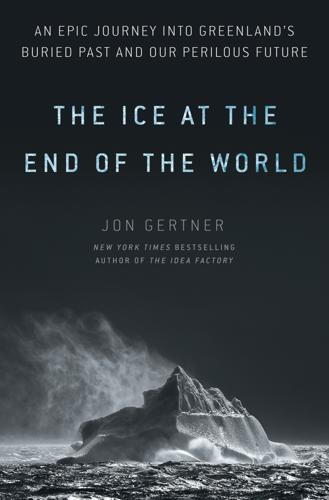
The Ice at the End of the World: An Epic Journey Into Greenland's Buried Past and Our Perilous Future
by
Jon Gertner
Published 10 Jun 2019
The building of the base, moreover, was hastened by a new pact signed in 1951 between the United States and Denmark that replaced the 1941 treaty between the two countries. The new treaty allowed the United States generous leeway to establish and enlarge its defense installations. 2. Albert Wohlstetter, “Economic and Strategic Considerations in Air Base Location,” Rand Corporation, 1951. Some estimates put the actual cost of building Thule significantly higher. 3. “The Big Picture: Operation Blue Jay,” twenty-seven-minute video, Department of Defense, National Archives and Records Administration, ARC Identifier 2569497, Department of Defense. See also “Birth of a Base,” p. 132.

Capitalism in America: A History
by
Adrian Wooldridge
and
Alan Greenspan
Published 15 Oct 2018
At the same time, America avoided the mistake of turning higher education into a nationalized industry, allowing public and private universities to flourish side by side and encouraging the creation of new sorts of institutions. Universities were the suns in a constellation of knowledge-related organizations that included think tanks such as the Brookings Institution in Washington, D.C., and the RAND Corporation in Los Angeles, and national institutes such as the National Institutes of Health. America also awarded research grants on the basis of competitive bids rather than bureaucratic influence. The United States led the rest of the world in its investment in “big science.” The man who did more than anybody else to convert the political establishment to the idea that science was a vital economic input rather than an expensive luxury was Vannevar Bush.

Mastering Blockchain, Second Edition
by
Imran Bashir
Published 28 Mar 2018
It can either be run autonomously or by requiring some human intervention, depending on the type and model of governance used in the decentralized application running on blockchain. The following diagram shows the different types of systems that currently exist: central, decentralized, and distributed. This concept was first published by Paul Baran in On Distributed Communications: I. Introduction to Distributed Communications Networks (Rand Corporation, 1964): Different types of networks/systems Centralized systems are conventional (client-server) IT systems in which there is a single authority that controls the system, and who is solely in charge of all operations on the system. All users of a centralized system are dependent on a single source of service.
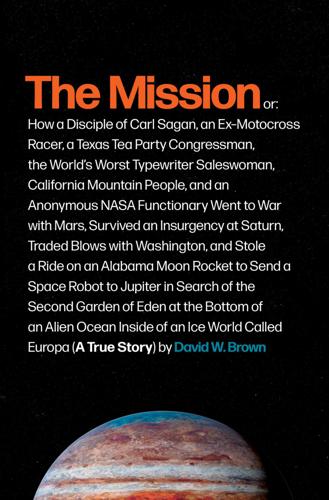
The Mission: A True Story
by
David W. Brown
Published 26 Jan 2021
Hale is an excellent place to start if you want to understand funding trends for SDI. 120.National Research Council, Lessons Learned from the Clementine Mission (Washington, DC: National Academies Press, 1997), https://doi.org/10.17226/5815. 121.Hale, Statement of Robert F. Hale. This is the source of SDI funding figures for the years 1984, 1985, 1986, and 1987. See also B. S. Lambeth and K. N. Lewis, The Strategic Defense Initiative in Soviet Planning and Policy (R-3550-AF) (Santa Monica, CA: Rand Corporation, January 1988), 101, https://www.rand.org/pubs/reports/R3550.html.Thisisthesourceofthe1988figure. See also CQ Almanac 1989: 101st Congress, 1st Session (Thousand Oaks, CA: Sage Publications, 2013). The 1989 CQ Almanac is the source of the four-point-one-billion-dollar figure for 1989. See also L.
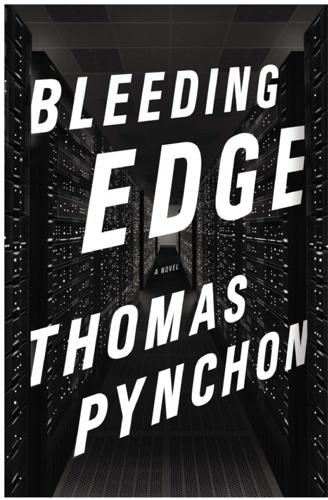
Bleeding Edge: A Novel
by
Thomas Pynchon
Published 16 Sep 2013
Now it’s always too close, part of the deal. “Were you ever in on that Cold War stuff, Pop?” “For me? Too technical. But people at Bronx Science I ran with . . . Crazy Yale Jacobian, nice kid, we used to go downtown, make a little change playing Ping-Pong. He went off to MIT, got a job with the RAND Corporation, moved to California, We lost touch.” “Maybe he didn’t work in the blowing–up-the-world department.” “I know, I’m a judgmental person, sue me. You had to been there, kid. Everybody thinks now the Eisenhower years were so quaint and cute and boring, but all that had a price, just underneath was the pure terror.

Spies, Lies, and Algorithms: The History and Future of American Intelligence
by
Amy B. Zegart
Published 6 Nov 2021
Good unclassified technical intelligence also gives policymakers the ability to bring evidence to international debates more quickly because they don’t need to request declassification. Cortney Weinbaum, John V. Parachini, Richard S. Girven, Michael H. Decker, and Richard C. Baffa, “Perspectives and Opportunities in Intelligence for U.S. Leaders,” RAND Corporation, 2018. 74. Center for Strategic & International Studies, “CSIS Korea Chair Announces Research Partnership with National Geospatial-Intelligence Agency (NGA),” May 22, 2018, https://www.csis.org/news/csis-korea-chair-announces-research-partnership-national-geospatial-intelligence-agency-nga. 75.

Grand Transitions: How the Modern World Was Made
by
Vaclav Smil
Published 2 Mar 2021
Risk of deficiency in multiple concurrent micronutrients in children and adults in the United States. Nutrients 9(7):655. doi:10.3390/nu9070655 Bloch, M. 1931. Les caractères originaux de l’histoire rurale française. Paris: Librairie Armand Colin. Bloom, D.E. et al. 2003. The Demographic Dividend: A New Perspective on the Economic Consequences of Population Change. Santa Monica, CA: Rand Corporation. BLS (Bureau of Labor Statistics). 2006. 100 Years of U.S. Consumer Spending: Data for the Nation, New York City, and Boston. https://www.bls.gov/opub/uscs/ BLS. 2014. Agriculture: occupational employment and wages. https://www.bls.gov/opub/mlr/2014/article/agriculture-occupational-employment-and-wages.htm BLS. 2018.

In the Shadow of the Moon: A Challenging Journey to Tranquility, 1965-1969
by
Francis French
,
Colin Burgess
and
Walter Cunningham
Published 1 Jun 2010
“I realized that in the Marine Corps, without a college education I was not going to go very far,” Cunningham told nasa historian Ron Stone. “I didn’t expect them to send me to test pilot school; I didn’t have the qualifications they were looking for at the time.” One of the jobs Cunningham held to pay his way through college was at the rand Corporation, a nonprofit think tank researching innovative solutions for U.S. military challenges. He worked on possible defenses against submarine-launched ballistic missiles and studied the Earth’s magnetosphere. His thesis project at ucla was an experiment carried on the first orbiting geophysical observatory.
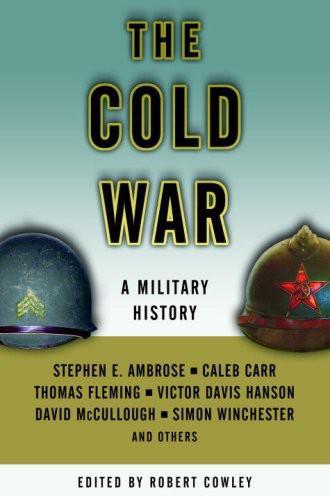
The Cold War
by
Robert Cowley
Published 5 May 1992
Even more concrete, in 1984 the CIA commissioned a special national intelligence estimate (SNIE) on whether American intelligence had been missing the point. The paper was drafted by National Intelligence Council chairman Fritz W. Ermarth, a Russian specialist who had been brought back to the CIA from the RAND Corporation, and was a veteran of the National Security Council staff. The paper, SNIE 11-10-84/JX, titled “Implications of Recent Soviet Military Political Activities,” held that each of the unusual Russian actions (for example, the bomber alert) could have had an innocent explanation, short of Moscow's succumbing to a war scare.
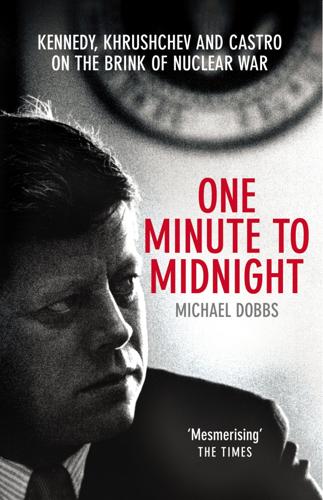
One Minute to Midnight: Kennedy, Khrushchev and Castro on the Brink of Nuclear War
by
Michael Dobbs
Published 3 Sep 2008
The defense intellectuals in the Pentagon gamed out a series of moves and countermoves that demonstrated the futility of Hanoi's continued defiance of the vastly superior might of the United States. A bombing campaign known as Rolling Thunder got under way in March 1965. But the North Vietnamese leaders were unfamiliar with game theory as taught at Harvard and promoted by RAND Corporation. They failed to behave in a "logical" manner and ignored the signals from Washington. Instead of backing down, they matched the United States escalation for escalation. According to Clark Clifford, McNamara's successor as secretary of defense, the architects of the Vietnam War were "deeply influenced by the lessons of the Cuban missile crisis."
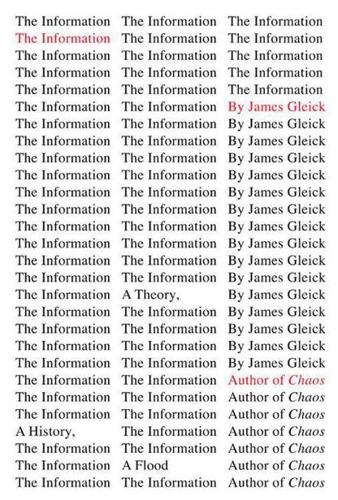
The Information: A History, a Theory, a Flood
by
James Gleick
Published 1 Mar 2011
The notion of a random number is full of difficulties. Can there be such thing as a particular random number; a certain random number? This number is arguably random: 10097325337652013586346735487680959091173929274945…♦ Then again, it is special. It begins a book published in 1955 with the title A Million Random Digits. The RAND Corporation generated the digits by means of what it described as an electronic roulette wheel: a pulse generator, emitting 100,000 pulses per second, gated through a five-place binary counter, then passed through a binary-to-decimal converter, fed into an IBM punch, and printed by an IBM model 856 Cardatype.♦ The process took years.

After the Cataclysm
by
Noam Chomsky
Published 17 Dec 2014
Called Misleading by Senate Panel,” New York Times (16 July 1978), on how Kissinger and Colby “misled Congress about the extent of the Central Intelligence Agency’s activities in the 1975 civil war in Angola, according to sources with first-hand knowledge”—to put it more bluntly, lied to Congress, the least significant but most discussed element of this sordid affair. 39. Cited by Clayton Fritchey, “Encore for Pax Americana,” Washington Post (25 March 1978). Fritchey is critical of the renewal of interventionist ideology. 40. Stephen S. Rosenfeld, “The case for using force against the third world,” Washington Post (5 May 1978), citing a Rand Corporation study by Guy J. Pauker. See also C. Cooper et al., The American Experience with Pacification in Vietnam: an Overview of Pacification, NTIS, U.S. Department of Commerce, March 1972, a study of pacification commissioned by the Pentagon and undertaken by the Institute for Defense Analysis, a university-based consortium, which “derives doctrinal and operational lessons from the US experience with pacification in South Vietnam to guide US policy-makers in providing technical assistance and advice in the future to a friendly government facing an internal security problem.”

A Generation of Sociopaths: How the Baby Boomers Betrayed America
by
Bruce Cannon Gibney
Published 7 Mar 2017
Pew Research Center, 8 June 2015, p. 3. 27. Crabtree, Steve. “Gallup Brain: Strom Thurmond and the 1948 Election.” Gallup, 17 Dec. 2002, www.gallup.com/poll/7444/gallup-brain-strom-thurmond-1948-election.aspx; National Defense Research Institute. “Sexual Orientation and U.S. Military Personnel Policy: Options and Assessment.” Rand Corporation, 1993, p. 191 et seq. 28. Public Law 103-160, subtitle G, §654(a).15 (1993). 29. Goldwater, Barry M. “Ban on Gays Is Senseless Attempt to Stall the Inevitable.” Carnegie Mellon University, www.cs.cmu.edu/afs/cs/usr/scotts/bulgarians/barry-goldwater.html (selections from Goldwater’s commentary in the New York Times and the Washington Post); “Goldwater Backs Gay Troops.”
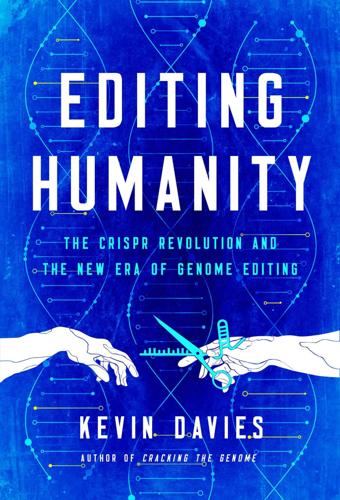
Editing Humanity: The CRISPR Revolution and the New Era of Genome Editing
by
Kevin Davies
Published 5 Oct 2020
Gates’ worry is not frivolous: CRISPR can be used easily without expensive lab equipment or specialized training. CRISPR-based kits available from outfits like the Odin, launched by biohacker Josiah Zayner, sell for less than $500 in some cases. Pathogen-specific kits are “offered up like so many choices at a grocery store,” according to a RAND Corporation report.55 These are legitimate concerns, but have been overshadowed by recent events. As the world saw in 2020, we don’t need DNA-designing despots or basement biohackers playing with CRISPR to cause a pandemic—nature is quite capable on her own. I. Most people pronounced the company “gnome” but Church insisted on calling it “know-me.”

The Alignment Problem: Machine Learning and Human Values
by
Brian Christian
Published 5 Oct 2020
What do you do, then, with that predictive information? What kind of intervention for a thousand people would help the seven that will actually go on to be victims? “By leveraging advanced analytics, police departments may be able to more effectively identify future crime targets for preemptive intervention,” noted a 2016 RAND Corporation report on predictive policing in Chicago.83 However, “improvements in the accuracy of predictions alone may not result in a reduction in crime . . . perhaps more importantly, law enforcement needs better information about what to do with the predictions” (emphasis mine).84 Predictions are not an end in themselves.
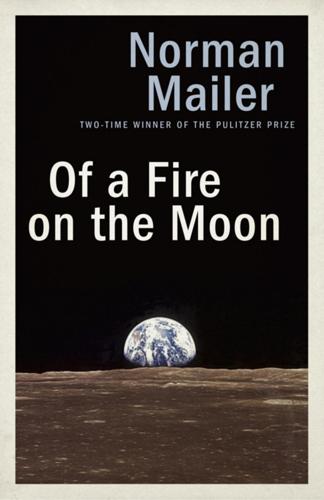
Of a Fire on the Moon
by
Norman Mailer
Published 2 Jun 2014
If one were, however, to condemn the computer for this nightmare of a future, condemn it today for its automation, its new methods in banking, condemn its use by the Bar Association and the Stock Exchange and Boeing and the Bureau of Mines, the Cancer Society for research, condemn Control Data Corporation and General Dynamics, General Motors and General Electric, condemn computer analysis of the Dead Sea Scrolls, condemn its employment in the Department of Commerce and the Department of Defense, condemn Douglas Aircraft and Dow Chemical, du Pont and the election forecasts, condemn the FAA and freight trains shunted by program in and out of freight yards, condemn General Precision and Goodrich, Goodyear and Charles Goren, Hoffman Electronics and Hughes Aircraft, IBM 704 and IBM 1401, condemn the Industrial Advertising Research Institute and the Internal Revenue, International Air Transport and Johnson’s Wax, Kresge Eye Institute and Lincoln Laboratory, the Public Library and Lockheed Aircraft, McGraw Hill and Merrill Lynch Pierce Fenner and Smith, Minneapolis Honeywell, Monsanto, NATO and the National Cash Register—the names go by like sounds in a coffee-house poem—the U.S. Navy and the National Bureau of Standards, Ohio State, Patent Office, Philco, Phillips Petroleum, Radcliffe, the Rand Corporation, Rockefeller Institute and the Sara Lee Bakeries, the Signal Corps and Social Security, Southern Methodist and Sun Oil, TWA and UNESCO, Union Carbide, USC, the Upjohn Company, Wall Street, Westinghouse—does one condemn them for using ADAM and BINAC and BRAINIAC, CALCULO and CLASS, ENIAC, ERMA, ILLIAC, JOHNNIAC, LARC and MANIAC?

The Survival of the City: Human Flourishing in an Age of Isolation
by
Edward Glaeser
and
David Cutler
Published 14 Sep 2021
“The Mask Slackers of 1918.” The New York Times, August 3, 2020. www.nytimes.com/2020/08/03/us/mask-protests-1918.html. Haviland, Amelia, Roland McDevitt, M. Susan Marquis, Neeraj Sood, and Melinda Beeuwkes Buntin. “Consumer-Directed Plans Could Cut Health Costs Sharply, but Also Discourage Preventive Care.” RAND Corporation, June 28, 2012. www.rand.org/pubs/research_briefs/RB9672.html. Hawks, Howard, dir. Red River. Monterey Productions, 1948. He, Xi, Eric H. Y. Lau, Peng Wu, Xilong Deng, Jian Wang, Xinxin Hao, Yiu Chung Lau, et al. “Temporal Dynamics in Viral Shedding and Transmissibility of COVID-19.” Nature Medicine 26, no. 5 (May 2020): 672–75. https://doi.org/10.1038/s41591-020-0869-5.

The Library: A Fragile History
by
Arthur Der Weduwen
and
Andrew Pettegree
Published 14 Oct 2021
New York recovered from the abandonment of the Foster redesign for the New York Public Library with a spectacular new branch library on 53rd street.20 Technology moves with lightning speed. The distance in time between the beginning and domestication of innovation shortens exponentially with each era. But the death of the book, predicted with great confidence with each new communication invention, just refuses to happen. In 1979, the head of the RAND corporation announced that libraries would soon be obsolete.21 A good-natured wall chart of technological extinction predicted 2019 as the year the last library would close its doors.22 Yet these tattered, battered heritage technologies refuse to expire, and sometimes, for those who have attempted to get ahead of technology, the future turns out to be very temporary: witness the rise, and discreet departure, of the CD-ROM, very much yesterday’s future of books.
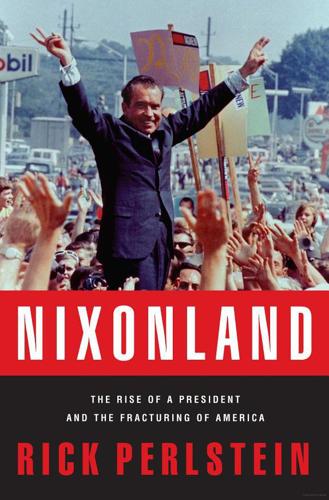
Nixonland: The Rise of a President and the Fracturing of America
by
Rick Perlstein
Published 1 Jan 2008
And, if everything goes according to the evolving plans, the combination of scheduled events could well turn into the broadest and most spectacular antiwar protest in American history.” Everything was going better than planned. As Weathermen tore up Chicago, the New York Times reported on a letter from six of the top Vietnam experts from the Rand Corporation, the top defense think tank. America should withdraw, they said, unilaterally and immediately—not “conditioned upon agreement or performance by Hanoi or Saigon.” They went on, “Short of destroying the entire country and its people, we cannot eliminate the enemy force in Vietnam by military means.”
…
The announcement of his second marriage in 1970 (to, Nixon noted, a millionaire’s daughter) added more ornaments to his résumé: “The bridegroom was graduated summa cum laude from Harvard College, where he was a member of the Society of Fellows and where he received a doctorate in economics. He served as a lieutenant in the Marine Corps and worked as a strategic analyst with the Rand Corporation in Santa Monica, Calif.” In between, the Times mentioned his argument in a 1969 anthology of essays on Vietnam that the war was so unmitigatedly horrifying because “to paraphrase H. Rap Brown, bombing is as American as cherry pie.” Then, on October 9, 1969, the Times ran “Six Rand Experts Support Pullout; Back Unilateral Steps Within One Year in Vietnam”; he was one of the experts—and the lead signatory of a November 1970 letter to the editor of the Times from MIT faculty accusing Nixon of “vastly expanding this immoral, illegal, and unconstitutional war…and the moral degradation of our country.”
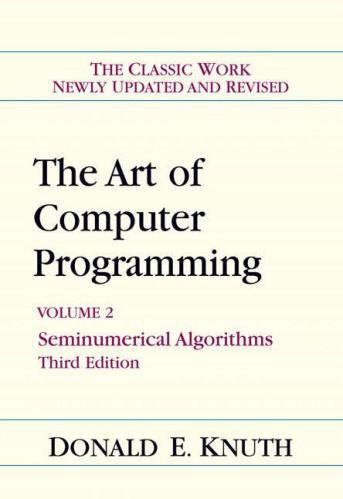
The Art of Computer Programming
by
Donald Ervin Knuth
Published 15 Jan 2001
Kendall and B. Babington-Smith to produce a table of 100,000 random digits. The Ferranti Mark I computer, first installed in 1951, had a built-in instruction that put 20 random bits into the accumulator using a resistance noise generator; this feature had been recommended by A. M. Turing. In 1955, the RAND Corporation published a widely used table of a million random digits obtained with the help of another special device. A famous random-number machine called ERNIE has been used for many years to pick the winning numbers in the British Premium Savings Bonds lottery. [See the articles by Kendall and Babington-Smith in J.
…
Radix point, 10, 185, 195, 204, 209, 214, 319. Raimi, Ralph Alexis, 257, 262. Raleigh, Walter, 199. Rail, Louis Baker, 240, 242. Ramage, John Gerow, 135. Ramanujan Iyengar, Srinivasa (t/rfssflay/rsn) ijm-DrrsgyeDm ggajiEJsnTrr), 662. Ramaswami, Vammi (guldlSI rrmD&mB), 383. Ramshaw, Lyle Harold, 164, 181. ran.array, 186-188, 193. RAND Corporation, 3. Randell, Brian, 202, 225. Random bits, 12, 30-32, 35-36, 38, 48, 119-120, 170-176. Random combinations, 142-148. Random directions, 135-136. Random fractions, 10, see Uniform deviates. Random functions, 4-9, 385. Random integers, among all positive integers, 257, 264, 342, 354. in a bounded set, 119-121, 138, 185-186.
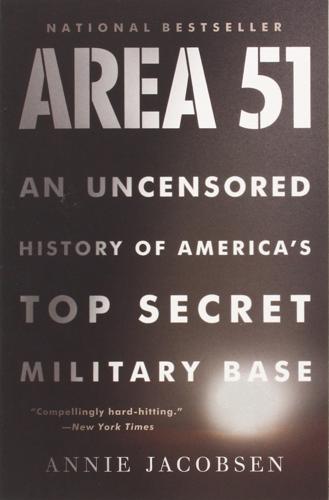
Area 51: An Uncensored History of America's Top Secret Military Base
by
Annie Jacobsen
Published 16 May 2011
Michael Schratt, who writes books and travels around the country giving lectures about government cover-ups at Area 51, says that the secret facility is “directly connected to Edwards [Air Force Base] North Base Complex and Air Force Plant 42 at Palmdale by an underground tube-shuttle tunnel system developed by the Rand Corporation and others [circa] 1960.” Schratt also says that Area 51 is “very likely connected to Wright-Patterson Air Force Base in Ohio” this same way. “The tunnels were dug by a nuclear-powered drill that can dig three miles of tunnel a day,” Schratt says. “These tunnels also connect, by underground train, to other military facilities where leaders of government will go and live after a nuclear event” such as World War III.
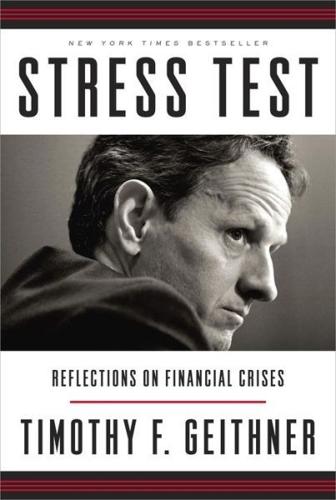
Stress Test: Reflections on Financial Crises
by
Timothy F. Geithner
Published 11 May 2014
“The very substantial improvements in risk management since the last crisis did not capture some risks that inevitably look more obvious in retrospect than they did left of the boom,” I said. Left of the boom was a phrase I had picked up from analysts studying improvised explosive devices at the RAND Corporation think tank, where I served on the advisory board. The phrase referred to the time before an IED explodes. In October 2007, I thought we had survived a major financial explosion. In fact, we were still left of the boom. A WEEK later, the investment bank Merrill Lynch announced $7.9 billion in mortgage-related losses, the largest write-down in Wall Street history.
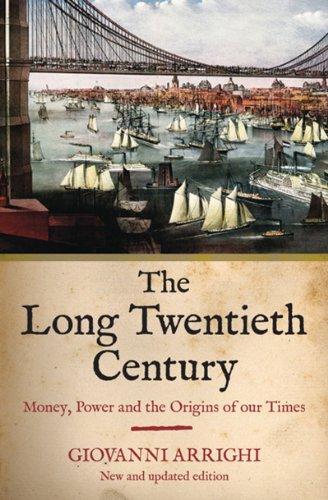
The Long Twentieth Century: Money, Power, and the Origins of Our Times
by
Giovanni Arrighi
Published 15 Mar 2010
Jackson, Robert, Quasi—States: Sovereignty, International Relations and the 77Jird W/orld, Cambridge: Cambridge University Press 1990. 396 THE LONG TWENTIETH CENTURY Jameson, Fredric, “Postmodernism, or the Cultural Logic of Late Capitalism,” New Lefi‘ Review, 146, 1984, pp. 53-92. Jenkins, Brian, New Modes of Conflict, Santa Monica, CA: RAND Corporation 1983. Jenks, Leland H., 77Je Migration of Britis/7 Capital to 1875, New York and London: Knopf 1938. Jeremy, David J., “Damming the Flood: British Government Efforts to Check the Outflow of Technicians and Machinery, 1780-1843,” Business History Review, 51, 1, 1977, pp. 1-34. Jessop, Bob, “Regulation Theories in Retrospect and Prospect,” Economy and Society, 19, 2, 1990, pp. 153-216.
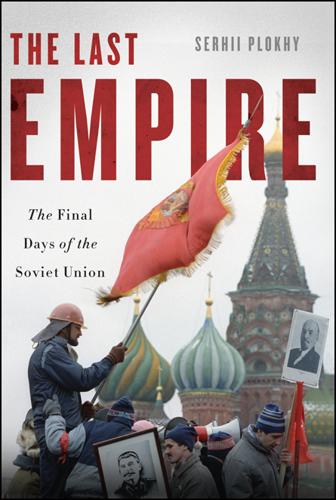
The Last Empire: The Final Days of the Soviet Union
by
Serhii Plokhy
Published 12 May 2014
Gorbachev would not criticize Yeltsin during the most difficult months of the coming economic reform. Yeltsin would allow Gorbachev to create and run his own foundation, which was supposed to support research on social, political, and economic matters but stay out of politics per se. For days before the meeting, Gorbachev had fantasized about a “RAND Corporation” of his own, funded by Western foundations, which would cooperate with think tanks in the West. He invited Cherniaev and his other aides and allies, including Yakovlev, to work for the new foundation. They had their doubts, but Yakovlev helped Gorbachev negotiate a deal with Yeltsin according to which the latter turned over to the future foundation a complex of buildings administered before the coup by the Central Committee of the Communist Party and used as training grounds for foreign communist cadres.
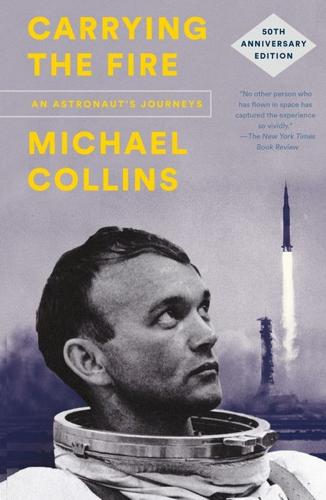
Carrying the Fire: An Astronaut's Journeys: 50th Anniversary Edition
by
Michael Collins
and
Charles A. Lindbergh
Published 15 Apr 2019
Bill Anders Intense, energetic, dedicated, no drink, no smoke, no nonsense—used to be inflexible and a bit immature until he became executive secretary of the National Aeronautics and Space Council in Washington, a job that would teach anyone humility and flexibility. Bill is now one of the Atomic Energy commissioners. Walt Cunningham Outspoken, blunt, small chip on shoulder; strange mixture of Marine fighter pilot and Rand Corporation research scientist; a complex man alternating between genuine warmth and outright hostility. * * * I have drawn the line at the living, and exclude from the list of thirty Grissom, White, Chaffee (Apollo launch pad fire, Cape Kennedy, January 27, 1967); and Freeman, See, Bassett, and Williams (T-38 accidents).
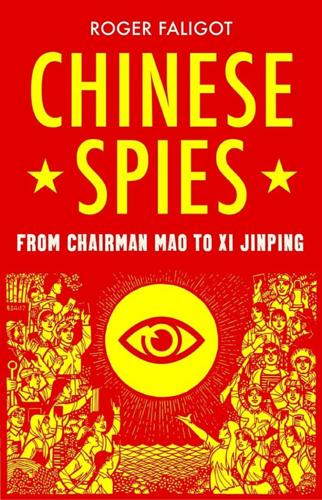
Chinese Spies: From Chairman Mao to Xi Jinping
by
Roger Faligot
Published 30 Jun 2019
A certain number of American specialists on China suggest that the document is fake, because of the positive image it lends to Zhao Ziyang, but the broad thrust of the leadership conversations at this critical time have been ratified by many other documents and testimonies. 14. Xiaobing Li, A History of the Modern Chinese Army, Lexington KY, University Press of Kentucky, 2007. 15. Michael D. Swaine, The Military & Political Succession in China: Leadership, Institutions, Beliefs, Santa Monica CA, Rand Corporation, 1992. According to Nicholas Eftimiades (Chinese Intelligence Operations, Annapolis MD, Naval Institute Press, 1994), Deng Xiaoping did succeed in establishing a liaison with the regional centres of PLA2, military intelligence. 16. Transcript available at http://folk.ntnu.no/tronda/kk-f/fra081100/0444.html. 17.

The Long Game: China's Grand Strategy to Displace American Order
by
Rush Doshi
Published 24 Jun 2021
Daniel Coates, “Annual Threat Assessment,” § Senate Select Committee on Intelligence (2019), https://www.dni.gov/files/documents/Newsroom/Testimonies/2019-01-29-ATA-Opening-Statement_Final.pdf. 18Alastair Iain Johnston, “Shaky Foundations: The ‘Intellectual Architecture’ of Trump’s China Policy,” Survival 61, no. 2 (2019): 189–202; Jude Blanchette, “The Devil Is in the Footnotes: On Reading Michael Pillsbury’s The Hundred-Year Marathon” (La Jolla, CA: UC San Diego 21st Century China Program, 2018), https://china.ucsd.edu/_files/The-Hundred-Year-Marathon.pdf. 19Jonathan Ward, China’s Vision of Victory (Washington, DC: Atlas Publishing and Media Company, 2019); Martin Jacques, When China Rules the World: The Rise of the Middle Kingdom and the End of the Western World (New York: Penguin, 2012). 20Sulmaan Wasif Khan, Haunted by Chaos: China’s Grand Strategy from Mao Zedong to Xi Jinping (Cambridge, MA: Harvard University Press, 2018); Andrew Scobell et al., China’s Grand Strategy Trends, Trajectories, and Long-Term Competition (Arlington, VA: RAND Corporation, 2020). 21See Avery Goldstein, Rising to the Challenge China’s Grand Strategy and International Security (Stanford, CA: Stanford University Press, 2005); Aaron L. Friedberg, A Contest for Supremacy: China, America, and the Struggle for Mastery in Asia (New York: W. W. Norton, 2012); David Shambaugh, China Goes Global: The Partial Power (Oxford: Oxford University Press, 2013); Ashley J.

The Secret World: A History of Intelligence
by
Christopher Andrew
Published 27 Jun 2018
In 2005 ‘Deep Throat’ finally identified himself as the former Associate Director (number two) of the FBI, Mark Felt, the most senior whistleblower in the history of the US intelligence community.78† A memorial plaque above an underground garage in Rosslyn, Virginia, marks the location where Felt briefed Woodward.‡ Apart from Felt, the most celebrated American whistleblower of the Cold War era was Daniel Ellsberg, a strategic analyst at the RAND Corporation who had also worked at the Pentagon and White House. In 1971 Ellsberg secretly gave The New York Times a copy of a top-secret 7, 000-page study of US decision-making in Vietnam from 1945 to 1968 which became known as the ‘Pentagon Papers’. Unlike Mark Felt, Ellsberg’s identity quickly became public knowledge.
…
A., The War in the Air: Being the Story of the Part Played in the Great War by the Royal Air Force, vols. 2–6 (Oxford: Oxford University Press, 1922–37) Jones, Peter, ‘Antoine de Guiscard, “Abbé de la Bourlie”, “Marquis de Guiscard ”’, British Library Journal, vol.8 (1982), no. 1 Jones, Peter, and Keith Sidwell (eds.), The World of Rome: An Introduction to Roman Culture (Cambridge: Cambridge University Press, 1997) Jones, Seth G., and Martin C. Libicki, How Terrorist Groups End: Lessons for Countering al Qa’ida, (Santa Monica, Calif.: RAND Corporation, 2008) Jordan, Don, and Michael Walsh, The King’s Revenge: Charles II and the Greatest Manhunt in British History (London: Little, Brown, 2012) Josephus, Flavius, Antiquitates Judaicae; http://www.documentacatholicaomnia.eu/04z/z_0037-0103__Flavius_Josephus__Antiquitates_Judaicae__GR.pdf.html Jourquin, Jacques, ‘Bibliothèques particulières de Napoléon’, in Jean Tulard (ed.), Dictionnaire Napoléon (Paris: Fayard, 1989) Jukes, Geoff, ‘The Soviets and “Ultra”’, Intelligence and National Security, vol. 3 (1988), no. 2 Juurvee, Ivo, ‘Birth of Russian SIGINT during WWI on the Baltic Sea’, Intelligence and National Security, vol. 32 (2017), no. 3 Kahn, David, The Codebreakers: The Story of Secret Writing (New York: Macmillan, 1967) —, Hitler’s Spies: German Military Intelligence in World War II (London: Hodder & Stoughton, 1978) —, ‘Codebreaking in World Wars I and II: The Major Successes and Failures, Their Causes and Their Effects’, in Christopher Andrew and David Dilks (eds.), The Missing Dimension: Governments and Intelligence Communities in the Twentieth Century (London: Macmillan, 1984) —, ‘Pearl Harbor and the Inadequacy of Cryptanalysis’, Cryptologia, vol. 15 (1991) —, ‘The Intelligence Failure at Pearl Harbor’, Foreign Affairs, Winter 1991–92 —, ‘Roosevelt, MAGIC and ULTRA’, Cryptologia, vol. 14 (1992) —, The Reader of Gentlemen’s Mail: Herbert O.

The Making of Global Capitalism
by
Leo Panitch
and
Sam Gindin
Published 8 Oct 2012
Available at unctadstat.unctad.org. 4 Charles T. Kelley, Jr., Mark Y. D. Wang, Gordon Bitko, Michael S. Chase, Aaron Kofner, Julia F. Lowell, James C. Mulvenon, David S. Ortiz, and Kevin L. Pollpeter, “High-Technology Manufacturing and US Competitiveness,” Technical Report prepared for the Office of Science and Technology Policy, Rand Corporation, March 2004, p. 130. 5 National Science Board, Science and Engineering Indicators, 2004, Appendix, Table 6–5. Available at nsf.gov. 6 Martin Hart-Landsberg and Paul Burkett, “China and the Dynamics of International Accumulation: Causes and Consequences of Global Restructuring,” Historical Materialism 14: 3 (2006), p. 4. 7 Asian Development Bank, Emerging Asian Regionalism: A Partnership for Shared Prosperity, Manila: ADB, 2008, pp. 8, 16, 23. 8 Francisco H.
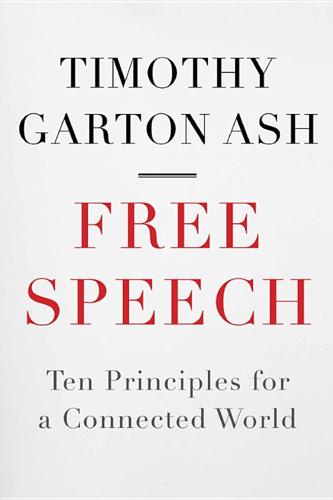
Free Speech: Ten Principles for a Connected World
by
Timothy Garton Ash
Published 23 May 2016
David Clark, quoted in Paulina Borsook, ‘How Anarchy Works’, Wired, http://perma.cc/9XXM-PKKX 51. Mueller 2004, 74–75 52. the British scientist was Donald Davies; see Hafner et al. 2006, 67. For TCP/IP see the discussion in Mueller 2004, 5–7 53. this was certainly the case with Paul Baran at the Rand Corporation; see Hafner et al. 2006, 54–64 54. see Zittrain 2008, 31–33, and Wu 2010, 201–2. The cyberlaw expert Tim Wu is credited with coining the term; see Wu 2003. Listen to his discussion of it on ‘Wu on His Phrase “Net Neutrality”’, Free Speech Debate, http://freespeechdebate.com/en/media/net-neutrality-by-the-man-who-coined-the-phrase/, and see the introduction on his website at http://perma.cc/4Z5P-RP4C 55. dated 8 February 1996; John Perry Barlow, ‘A Declaration of the Independence of Cyberspace’, http://perma.cc/V8VS-XHZD 56. full detail in Mueller 2004 and Mueller 2012 57. a useful account of the history is given on Wikipedia: http://perma.cc/Q36Q-366E 58. see several contributions to Levmore et al., eds. 2010 and Sunstein 2009, 83 59.
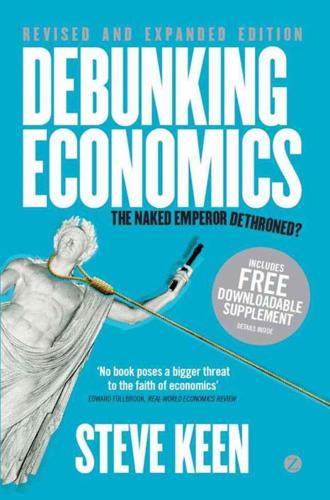
Debunking Economics - Revised, Expanded and Integrated Edition: The Naked Emperor Dethroned?
by
Steve Keen
Published 21 Sep 2011
Kindleberger. 7 Of course, many of the high-flying companies of 1929 were no longer in the index in 1955, so that anyone who held on to their 1929 share portfolio took far more than twenty-five years to get their money back, and most of the shares they held were worthless. 8 Barber notes that after Fisher came into great wealth when his filing invention was taken over by the Remington Rand Corporation, he was ‘eager to add to his portfolio of common stocks and placed himself in some exposed positions in order to do so. At this time, his confidence in the soundness of the American economy was complete’ (Barber 1997). 9 Barber observed that among the other reasons was the fact that ‘In the 1930s, his insistence on the urgency of “quick fix” solutions generated frictions between Fisher and other professional economists’ (ibid.). 10 Almost 90 percent of the over 1,200 citations of Fisher in academic journals from 1956 were references to his pre-Great Depression works (Feher 1999). 11 Strictly speaking, this was supposed to be anything in which one could invest, but practically the theory was applied as if the investments were restricted to shares. 12 Since diversification reduces risk, all investments along this edge must be portfolios rather than individual shares.

Seeking SRE: Conversations About Running Production Systems at Scale
by
David N. Blank-Edelman
Published 16 Sep 2018
Each group is a little different, but they all contain fine people that often run into one another at the scene of a big-old tire fire. Further Reading Let me be the first to say that I might not have written a single original idea in this chapter. If you would like to read more, and in the original English, please consider the following: Inside Bureaucracy by Anthony Downs, published by the RAND Corporation in 1967. It’s out of print, but you can usually find it on Amazon (where I have personally driven up the price by 300%; sorry). Do not confuse this with the 36-page paper published with the same title in 1964. The paper is also good, and you can download it from RAND for free, but it is a tiny fraction of the book.
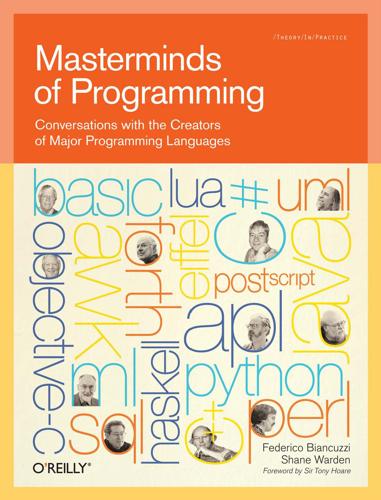
Masterminds of Programming: Conversations With the Creators of Major Programming Languages
by
Federico Biancuzzi
and
Shane Warden
Published 21 Mar 2009
They were at places like Caltech, UCLA, Stanford, Berkley, Utah, Michigan, and, of course, a bunch of East Coast places like MIT, Carnegie Tech, and a few others. He decided to take a few tens of millions of dollars and distribute it in small packages to about a dozen of these universities and a couple of research labs like Bolt Beranek and Newman, and the RAND Corporation. He said “I’m not going to micromanage you. I’m going to give you this money and you can depend on it for a few years to get you up and started and what I want you to do is to do research so that if Congress ever does come and ask us questions, we can point to how the money was being used. But more importantly, especially for the academic institutions, I want you to train a whole new cadre of people who are experts in this field.”
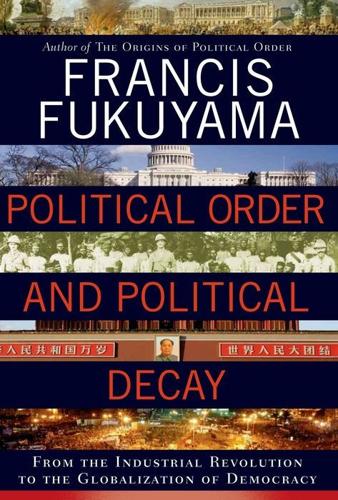
Political Order and Political Decay: From the Industrial Revolution to the Globalization of Democracy
by
Francis Fukuyama
Published 29 Sep 2014
Wilson, Woodrow “winner-take-all” society Wolfenson, James Woolcock, Michael workers working class; conversion into middle class; voting by World Bank; Worldwide Governance Indicators World Bank Institute World Values Survey World War I World War II; Japan’s defeat in Wrong, Michela Wu Zhao Xi Jinping Yamagata Aritomo Yang, Dali Yang, Hongxing Yanukovich, Viktor Yar’Adua, Umaru Musa Yemen Yrigoyen, Hipólito Yugoslavia Zaire Zakaria, Fareed Zambia Zanzibar Zenawi, Meles Zhao, Dingxin Zhou Enlai Zhu Yuangzhang Zimbabwe ALSO BY FRANCIS FUKUYAMA The Origins of Political Order: From Prehuman Times to the French Revolution America at the Crossroads: Democracy, Power, and the Neoconservative Legacy State-Building: Governance and World Order in the Twenty-first Century Our Posthuman Future: Consequences of the Biotechnology Revolution The Great Disruption: Human Nature and the Reconstitution of Social Order Trust: The Social Virtues and the Creation of Prosperity The End of History and the Last Man About the Author Francis Fukuyama is the Olivier Nomellini Senior Fellow at Stanford University’s Freeman Spogli Institute for International Studies. He has previously taught at the Paul H. Nitze School of Advanced International Studies of the Johns Hopkins University and at the George Mason University School of Public Policy. Fukuyama was a researcher at the RAND Corporation and served on the State Department’s Policy Planning Staff. He is the author of The Origins of Political Order, The End of History and the Last Man, Trust, and America at the Crossroads. He lives with his wife in California. Farrar, Straus and Giroux 18 West 18th Street, New York 10011 Copyright © 2014 by Francis Fukuyama All rights reserved First edition, 2014 eBooks may be purchased for business or promotional use.
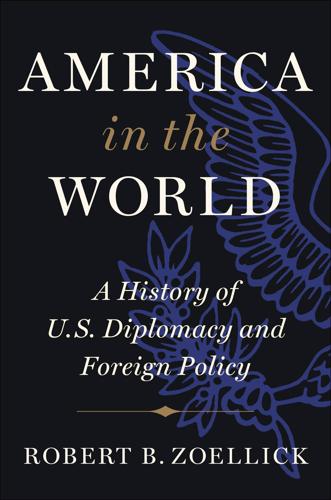
America in the World: A History of U.S. Diplomacy and Foreign Policy
by
Robert B. Zoellick
Published 3 Aug 2020
For example, the Washington Post deemed the report a “thorough, careful plan for putting the needed push of the Federal Government behind our scientific progress and yet keeping our science independent of Government control.” See Marquis Childs, “Washington Calling: ‘Science, the Endless Frontier,’” Washington Post, July 20, 1945, 8. 54. “Preliminary Design of an Experimental World-Circling Spaceship” (May 2, 1946), 2, RAND Corporation, https://www.rand.org/content/dam/rand/pubs/special_memoranda/2006/SM11827part1.pdf. 55. Zachary, Endless Frontier, 231. 56. Zachary, Endless Frontier, 315. See National Security Agency, “Scientific and Technological Resources as Military Assets,” memorandum from General Eisenhower, April 30, 1946, https://www.nsa.gov/Portals/70/documents/news-features/declassified-documents/friedman-documents/reports-research/FOLDER_065/41701309074063.pdf (emphasis in original). 57.

On the Edge: The Art of Risking Everything
by
Nate Silver
Published 12 Aug 2024
GO TO NOTE REFERENCE IN TEXT Stanislav Petrov: Dylan Matthews, “40 Years Ago Today, One Man Saved Us from World-Ending Nuclear War,” Vox, September 26, 2018, vox.com/2018/9/26/17905796/nuclear-war-1983-stanislav-petrov-soviet-union. GO TO NOTE REFERENCE IN TEXT “bomb is shit”: Rhodes, The Making of the Atomic Bomb, 938. GO TO NOTE REFERENCE IN TEXT “just announce to the enemy”: T. C. Schelling, “The Threat That Leaves Something to Chance,” RAND Corporation, 1959, doi.org/10.7249/HDA1631-1. GO TO NOTE REFERENCE IN TEXT about 90 percent of you: At twenty-eight minutes in this video: “Tick, Tick, Boom? Presidential Decision-Making in a Nuclear Attack,” 2022, youtube.com/watch?v=S6r3A2mSNlU. GO TO NOTE REFERENCE IN TEXT in evolutionary psychology: McDermott has an MA in experimental social psychology in addition to her PhD in political science.
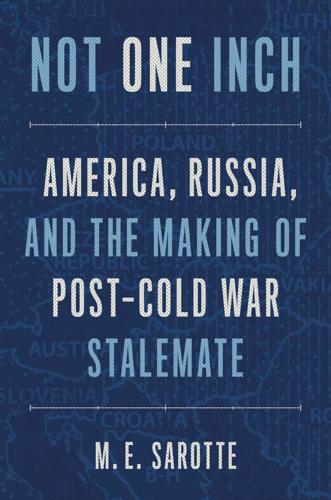
Not One Inch: America, Russia, and the Making of Post-Cold War Stalemate
by
M. E. Sarotte
Published 29 Nov 2021
Clinton told this to the writer helping him to record an audio diary of his time in the White House: see Branch, Clinton Tapes, 168–69. 112. “Memorandum for the President,” from Anthony Lake, “Subject: Your Trip to Germany, July 10–12,” plus attachments (preparatory papers), July 2, 1994, CL. 113. Asmus, Kugler, and Larrabee, “Building a New NATO,” 28. For background on the Foreign Affairs article and Asmus’s work at the RAND Corporation, see Asmus, Opening, 32–34; for Asmus’s obituary, see Emma Brown, “Ronald D. Asmus, Who Pushed for NATO Expansion, Dies at 53,” Washington Post, May 3, 2011. 114. Anthony Lake, “From Containment to Enlargement,” remarks at the School of Advanced International Studies, Johns Hopkins University, Washington, DC, September 21, 1993, https://www.mtholyoke.edu/acad/intrel/lakedoc.html. 115.

The Stack: On Software and Sovereignty
by
Benjamin H. Bratton
Published 19 Feb 2016
To speak of the Angeleno condition, its precipice, in the dystopian vernacular is not a critical stance; it is the party line (or more precisely, the oscillation between the utopian and the dystopian, back again, over again, in and out, one through the other, both occupying the same place and plot). The Tyrell Corporation and Rand Corporation, Reyner Banham and Darby Crash, Squeaky Fromme and Ryan Seacrest. Joan Didion's self-driving Google car and Gregory Ain's gated community project in Calabasas. Philip K. Dick's spec screenplay for the Farmville movie, and Rene Daalder and Rem Koolhaas's 1974 screenplay about computer-generated actors and digital films taking over Hollywood.
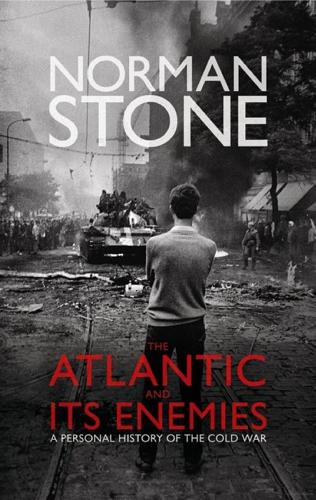
The Atlantic and Its Enemies: A History of the Cold War
by
Norman Stone
Published 15 Feb 2010
Peking PEN club Peng Pai Penguin (publishers) penicillin Penn Central railway ‘Pentagon Papers’ People’s Liberation Army see Red Army (Chinese) perestroyka Perkins, Thomas Perle, Richard Persepolis Peter the Great Petőfi, Sandor petrochemicals industries Pflimlin, Pierre Philadelphia Philby, Kim Philipe, Gérard Philippines Phillips, Alban William Phillips Curve Phillips, Melanie Phnom Penh Phoenix, Arizona Piaf, Édith Picasso, Pablo Pieck, Walter pieds noirs Pill, contraceptive Pinay, Antoine Piñera, José Pinochet, Augusto ‘Pinochet solution’ Pinter, Harold Pipes, Richard Piscator, Erwin Pitsunda PKK (Kurdistan Workers’ Party) Platts-Mills, John Playboy (magazine) Plaza Agreement (1985) Pleiku Pleven, René PLO (Palestine Liberation Organization) Plojhar, Mgr Josef Plumb, Sir John plutonium Plyushch, Leonid Podolia Poindexter, John Poitiers Pol Pot Poland: agricultural collectivization anti-semitism anti-Soviet demonstrations aristocracy Catholic Church coal industry collapse of communism Communist Party communist takeover Convention of Targowice (1792) emigrants to Germany ethnic German population and France under Gierek under Gomułka inflation intelligentsia Jews in and Khrushchev’s relaxation attempts and Marshall Plan martial law (1981-2) ‘modernization’ oil money invested in peasantry relations with USSR relations with West Germany Second World War Solidarność (‘Solidarity’) Stalinization steel industry territorial losses trade unions UB (secret police) Ukrainians in universities Warsaw Uprising (1944) WRON (national security council) Polaris (missile) Poll Tax (Britain) Pollitt, Brian Pomerania Pompidou, Georges Ponomarev, Boris Ponzi schemes Poos, Jacques population growth collapse of Porsche, Ferdinand Port Said Port Talbot Port-au-Prince Portugal Potsdam Potsdam conference (1945) POUM (Spanish anarchist organization) Powell, Charles, Baron Poznan Pozsgay, Imre Prague: architecture Communists’ organized discontent Czernin Palace Kinsky Palace museum of security police revolution of 1989 Smichov Stalinization undamaged by war working class ‘Prague Spring’ Prats, Carlos Pravda (newspaper) Prebisch, Raúl Presley, Elvis Preuves (magazine) Primakov, Yevgeney Prisender, Edgar privatization of industry and services: Britain Chile West Germany prostitution Protestant churches: and economic development in Germany in Hungary missionaries in China Thirty Years War see also Calvinist Church; Lutheran Church Prussia PUK (Patriotic Union of Kurdistan) Punjab ‘pursuit of happiness’ Pusan Pushkin, Alexander ‘Pushtunistan’ Putin, Vladimir Quang Tri (US combat base) Queen Elizabeth, RMS Quemoy islands Quennell, Peter Raab, Julius radar Radio Urumchi Rákosi, Mátyás Rakowski, Mieczysław Rambouillet summit (1975) Ramsay, Douglas Rangel, Charles Rangoon Rapallo, Treaty of (1922) Rasputin, Valentin rationing: Britain East Germany France Ravenscraig steel works Reader’s Digest (magazine) Reagan, Nancy Reagan, Ronald: background and character and Ceauşescu and collapse of communism core beliefs defence policy economic policy election as President (1980); (1984) enemies of on failure of Johnson’s Great Society and Goldwater campaign Governor of California Iran-Contra affair marriages oratory skills and Poland popularity relationship with Margaret Thatcher retirement Savings and Loans crisis ‘The Speech’ (1980) Strategic Defense Initiative (‘Star Wars’) and universities visits Britain work regimen and leadership style Récsk Red Army (Chinese; ‘People’s Liberation Army’) Red Army (Soviet): atrocities committed by conquering of eastern and central Europe Second World War casualties Red Army Faction Red Brigades Redford, Robert Reece, Sir Gordon Rees-Mogg, William, Baron ‘Reg Q’ (American interest rate regulation) Regan, Donald Reich, Robert Reider, Jonathan Reinhardt, Max Remington Rand (corporation) Rémond, René Renault (automobile manufacturer) reparations, First World War reparations, Second World War: German Japanese Soviet demands Republican Party (United States) Rerum Novarum (papal enyclical) Reuter, Ernst Reuther, Walter revolutions of 1848 Rez, Adam Rhee, Syngman Rhineland Rhodesia Richter, Horst-Eberhard Richter, Svyatoslav Ridley, Nicholas, Baron Ridley of Liddesdale Riesman, David, The Lonely Crowd Rimbaud, Arthur Robbins, Lionel, Baron Robespierre, Maximilien Robinson, Joan Rocard, Michel Rochet, Waldeck Rockefeller, Nelson Rodriguez, Carlos Roe.
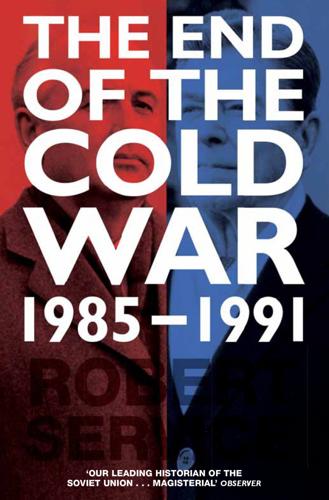
The End of the Cold War: 1985-1991
by
Robert Service
Published 7 Oct 2015
CIA researchers had been quick to recognize the consequences of falling prices of oil on the world market; but their settled opinion was that the USSR remained in a ‘healthy financial position’.42 Ambassador Hartman too judged that Gorbachëv’s early economic measures were achieving a degree of success.43 If this was the reality, it strengthened the case for America’s need to keep up its financial allocations for military research and development. But how reliable was the CIA’s analysis? Harry Rowen, a former president of the RAND Corporation and recent chairman of the National Intelligence Council, challenged the idea that the economy in the USSR was achieving any growth at all. He circulated a paper to interested officials – Shultz, Weinberger, McFarlane and Casey – and got it published in the National Interest.44 In April 1986 Rowen and four Soviet experts of like mind secured the opportunity through presidential aide Charles Fortier to brief Reagan and Shultz.
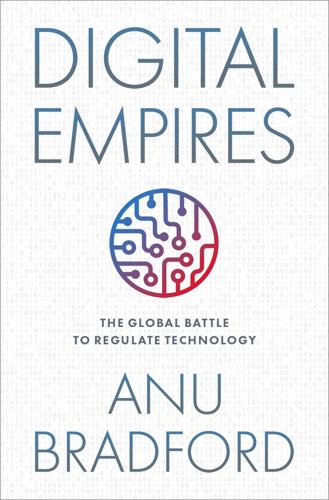
Digital Empires: The Global Battle to Regulate Technology
by
Anu Bradford
Published 25 Sep 2023
. & Econ. 110 (Jan. 2010), https://www.usitc.gov/publications/332/journals/05_andersonmohs_itagreement.pdf. 76.WTO Document WT/MIN(98)/DEC/2 of 25 May 1998, “The Geneva Ministerial Declaration on Global Electronic Commerce.” 77.Kal Raustiala, An Internet Whole and Free: Why Washington Was Right to Give Up Control, Foreign Affs. (March 2017), https://www.foreignaffairs.com/articles/world/2017-02-13/internet-whole-and-free. 78.RFE/RL Language Services, RadioFreeEurope, https://pressroom.rferl.org/rferl-language-services. 79.RAND Corporation, Internet Freedom and Political Space 155, 173 (2013), https://www.rand.org/pubs/research_reports/RR295.html#download. 80.S. 3093, 107th Cong. § 2 (2002), https://www.govinfo.gov/content/pkg/BILLS-107s3093is/html/BILLS-107s3093is.htm. 81.Id. 82.Id. 83.Thomas Lum, Patricia Moloney Figiola, & Matthew C.
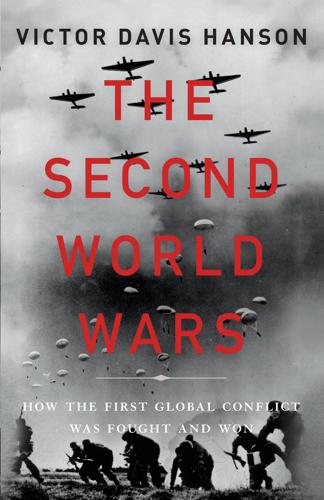
The Second World Wars: How the First Global Conflict Was Fought and Won
by
Victor Davis Hanson
Published 16 Oct 2017
Power at Sea, Vol. 2: The Breaking Storm, 1919–1945 (Columbia and London: University of Missouri Press, 2007). Rosen, William. The Third Horseman: Climate Change and the Great Famine of the 14th Century (New York: Viking, 2014). Rosenau, William. Special Operations Forces and Elusive Enemy Ground Targets: Lessons from Vietnam and the Persian Gulf War (Rand Corporation, 2001). Rothwell, Victor. War Aims in the Second World War: The War Aims of the Major Belligerents, 1939–45 (Edinburgh: Edinburgh University Press, 2005). Rotundo, Louis C. Battle for Stalingrad: The 1943 Soviet General Staff Study (Washington, DC: Pergamon-Brassey’s, 1989). Ruge, Friedrich.

Palo Alto: A History of California, Capitalism, and the World
by
Malcolm Harris
Published 14 Feb 2023
After Stalin’s death, in 1953, an armistice reset the border.44 A draw between the great powers in military terms, the war was a disaster for the Korean and Chinese peoples. American strategic bombing had proved itself in Japan under Shockley’s team of actuaries, and MacArthur began the war with a massive attack on North Korean cities and infrastructure. A RAND Corporation report describes the bombing campaign as “leisurely” because of the lack of enemy air defenses, and in less than two months American forces destroyed almost all their strategic targets. One crew was apparently so well armed that they chased a single enemy soldier on his motorcycle, dropping bombs until they hit him.45 U.S. air forces dropped 635,000 tons of explosives during the three years of the war, more than the total used in the World War II Pacific theater, including over 30,000 tons of napalm.46 An estimated 400,000 to one million Chinese soldiers died, and according to the head of the U.S.
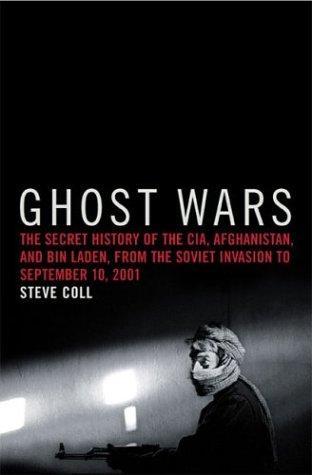
Ghost Wars: The Secret History of the CIA, Afghanistan, and Bin Laden, from the Soviet Invasion to September 10, 2011
by
Steve Coll
Published 23 Feb 2004
Khalilzad was an old acquaintance of Hamid Karzai. They had run into each other in Pakistan and elsewhere over the years, and they stayed in touch. After the murder of Karzai’s father by the Taliban, Khalilzad had turned against the Taliban in the articles he published from his consulting office at the RAND Corporation in Washington. He urged Clinton to openly seek the movement’s overthrow. Among other things, Khalilzad feared the spread of Taliban ideology to Pakistan. “The prospect of a nuclear-armed Pakistan adopting the credo of the Taliban, while unlikely, is simply too risky to ignore,” he had written a year before joining the National Security Council.

Behave: The Biology of Humans at Our Best and Worst
by
Robert M. Sapolsky
Published 1 May 2017
See also: I. Pichon et al., “Nonconscious Influences of Religion on Prosociality: A Priming Study,” Eur J Soc Psych 37 (2007): 1032; M. Bateson et al., “Cues of Being Watched Enhance Cooperation in Real-World Setting,” Biol Lett 2 (2006): 412. 15. S. Jones, “Defeating Terrorist Groups,” RAND Corporation, CT-314 (testimony presented before the House Armed Services Committee, Subcommittee on Terrorism and Unconventional Threats and Capabilities), September 18, 2008; P. Shadbolt, “Karma Chameleons: What Happens When Buddhists Go to War,” CNN.com, April 22, 2013. 16. J. LaBouff et al., “Differences in Attitudes Toward Outgroups in Religious and Nonreligious Contexts in a Multinational Sample: A Situational Context Priming Study,” Int J for the Psych of Religion 22 (2011): 1; B.
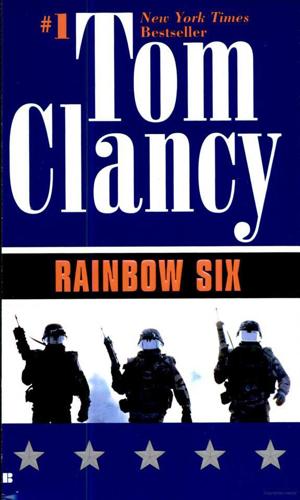
Rainbow Six
by
Tom Clancy
Published 2 Jan 1998
The hostages, too, but in this case the hostages were computer-generated children, all girls in red-and-white striped dresses or jumpers-Ding couldn't decide which. It was clearly a psychological effect programmed into the system by whoever had set up the parameters for the program, called SWAT 6.3.2. Some California-based outfit had first produced this for Delta Force under a DOD contract overseen by RAND Corporation. It was expensive to use, mainly because of the electronic suit he wore. It was the same weight as the usual black mission suit - lead sheets sewn into the fabric had seen to that - and everything down to the gloves was filled with copper wires and sensors that told the computer - an old Cray YMP - exactly what his body was doing, and in turn projected a computer-generated image into the goggles he wore.
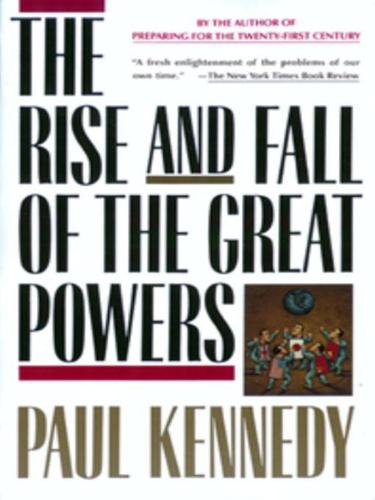
The Rise and Fall of the Great Powers: Economic Change and Military Conflict From 1500 to 2000
by
Paul Kennedy
Published 15 Jan 1989
Potichny (ed.), The Ukraine in the Seventies (Oakville, Ont., 1982); Hosking, History of the Soviet Union, pp. 432ff. 170. Apart from Kazokins, “Nationality in the Soviet Army,” passim, see the eye-opening details in Cockburn, Threat, pp. 74ff; E. Jones, “Minorities in the Soviet Armed Forces,” Comparative Strategy, vol. 3, no. 4 (1982), pp. 285–318; and the Rand Corporation studies S. Curran and D. Ponomoreff, Managing the Ethnic Factor in the Russian and Soviet Armed Forces: An Historical Overview (Santa Monica, Calif., 1982); and E. Brunner, Jr., Soviet Demographic Trends and the Ethnic Composition of Draft Age Males, 1980–1985 (Santa Monica, Calif., 1981). 171.
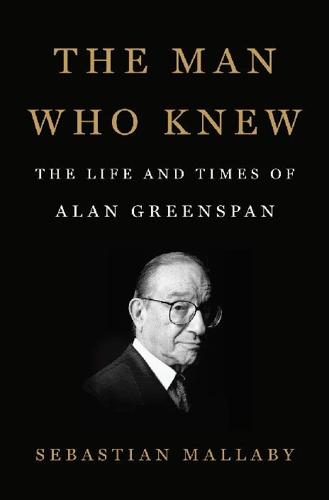
The Man Who Knew: The Life and Times of Alan Greenspan
by
Sebastian Mallaby
Published 10 Oct 2016
Com. on All-Volunteer Armed Force [1969-1970] [2 of 4],” n.d., box 38, White House Central Files, Staff Member and Office Files: Martin Anderson, Richard Nixon Presidential Library and Museum. 13. Alan Greenspan, interview by the author, November 15, 2010. 14. Descriptions of scene taken from photograph of Cabinet Room, reproduced in Bernard Rostker, I Want You! The Evolution of the All-Volunteer Force (Santa Monica, CA: RAND Corporation, 2006), 88. 15. Presidential Daily Diary Entry, September 28, 1971, Richard Nixon Presidential Library and Museum. 16. The three-page memo resulting from this meeting is in the Richard Nixon Presidential Library and Museum. Paul W. McCracken, “Handwritten Notes,” August 30, 1969, Friedman, Tonsor, Greenspan 8-30-1969, box 17, White House Central Files, Staff Member and Office Files: Paul W.

Ashes to Ashes: America's Hundred-Year Cigarette War, the Public Health, and the Unabashed Triumph of Philip Morris
by
Richard Kluger
Published 1 Jan 1996
But the tobacco industry now drew attention to evidence gathered by econometricians, biostatisticians, and other analysts that the net figure for health costs attributable to smoking-caused diseases was being much exaggerated by tobacco control advocates. The most highly regarded work on the true health-cost burden smokers were imposing on the rest of society was a 1991 study sponsored by the Rand Corporation and published by Harvard University Press—The Cost of Poor Health Habits by Willard G. Manning et al. The Manning study added up the higher lifetime medical costs for smokers, the deficit in life insurance premiums they paid in as compared with the total payout to their beneficiaries, the property damage from cigarette-ignited fires, and the tax revenues that prematurely dying smokers did not pay to finance health and retirement programs—but out of fairness the study also calculated the savings that smokers provided by being fated to die younger than nonsmokers.
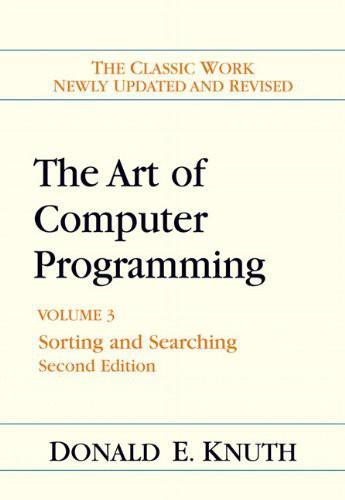
The Art of Computer Programming: Sorting and Searching
by
Donald Ervin Knuth
Published 15 Jan 1998
Red-black trees, 477. Redundant comparisons, 182, 240, 242, 245-246, 391. Reed, Bruce Alan, 643, 713. Reference counts, 534. Reflection networks, 670. Regnier, Mireille, 565, 632. Regular polygons, 289. Reiner, Victor Schorr, 719. Reingold, Edward Martin, 207, 476, 480, 715. Relaxed heaps, 152. Remington Rand Corporation, 385, 387. Removal, see Deletion. Reorganizing a binary tree, 458, 480. Replacement selection, 212, 253-266, 325, 329, 331-332, 336, 347, 348, 360, 364-365, 378. Replicated blocks, 489. Replicated instructions, 398, 418, 429, 625, 648, 677. Reservoir, 259-261, 265. Restructuring, 480. Reversal of data, 65, 72, 310, 670, 701.
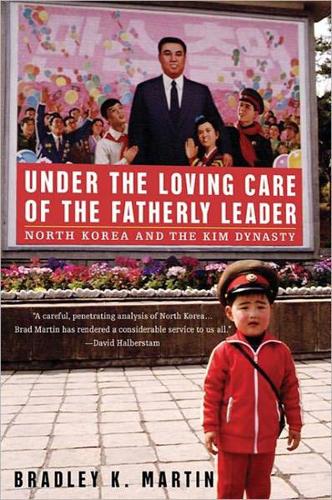
Under the Loving Care of the Fatherly Leader: North Korea and the Kim Dynasty
by
Bradley K. Martin
Published 14 Oct 2004
In September 1971, Mao’s handpicked successor, .Marshal Lin Biao, revolted against him and allegedly was killed in a plane crash while seeking to defect to the Soviet Union. These incidents convinced Kim Il-sung that he should carefully prepare a smooth political transition” (Kong Dan Oh, Leadership Change in North Korean Politics: The Succession to Kim Il Sung [Santa Monica, Calif: RAND Corporation, 1988]). 33. Hwang Jang-yop, Problems of Human Rights (2). 34. Ibid. 35. Hwang Jang-yop, Problems of Human Rights (1) (see chap. 2, n. 1). Hwang does not address the question of whether Kim’s modesty in those remarks had been merely feigned, as so often seems to be the case with some other self-deprecating portions of Kim’s memoirs—an invitation to others to pile on more praise. 36.
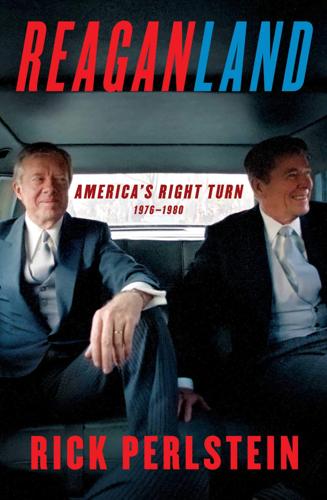
Reaganland: America's Right Turn 1976-1980
by
Rick Perlstein
Published 17 Aug 2020
Take a peek behind the curtain. One of the campaign-in-formation’s strategic initiatives went by the acronym PTWWT. That stood for “People to Whom We Talk”: a continually updated list of distinguished foreign policy personages like Henry Kissinger, NATO commander General Alexander Haig, and Harry Rowan of the RAND Corporation. A related effort was called the “SP Program”: a formal process for staffers to draft letters to molders of establishment opinion for the governor to “Sign Personally.” These missives frequently praised books and articles the recipient had written, establishing their signatory—despite what you might have heard—as a cosmopolitan intellectual, well within the mainstream of respectable opinion.